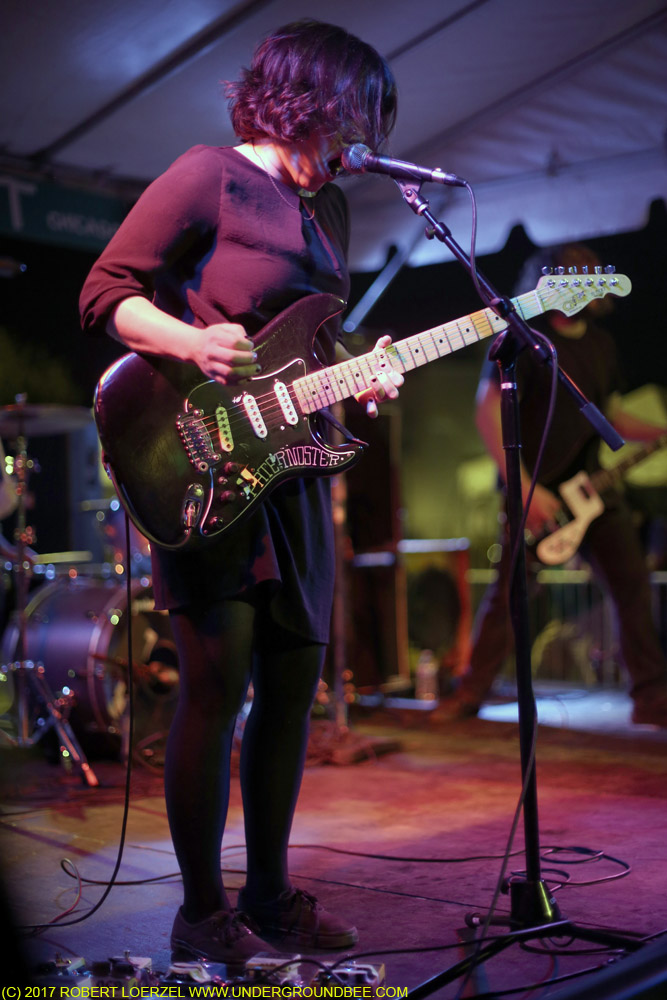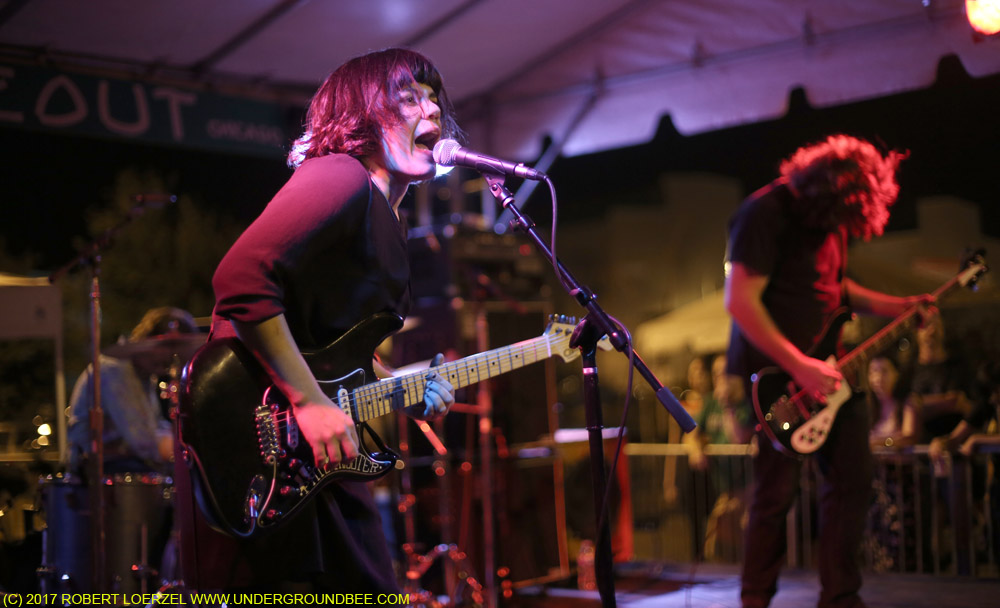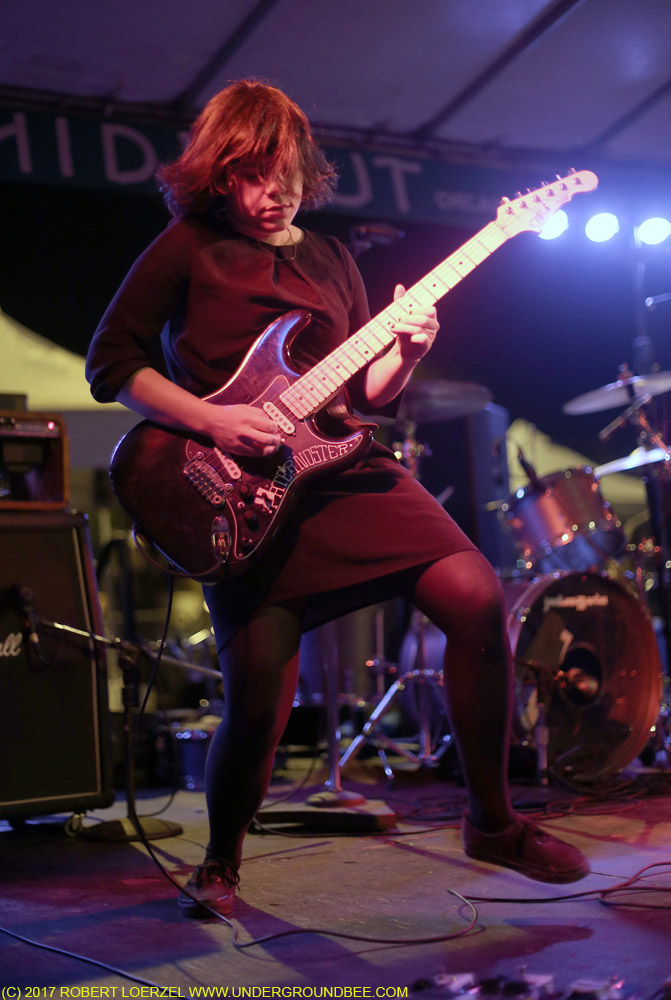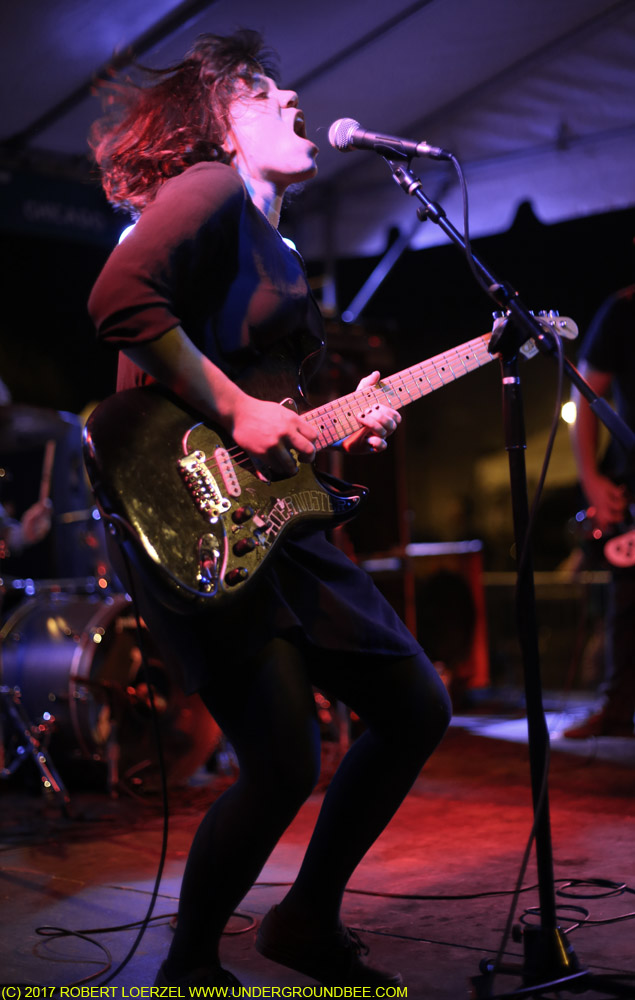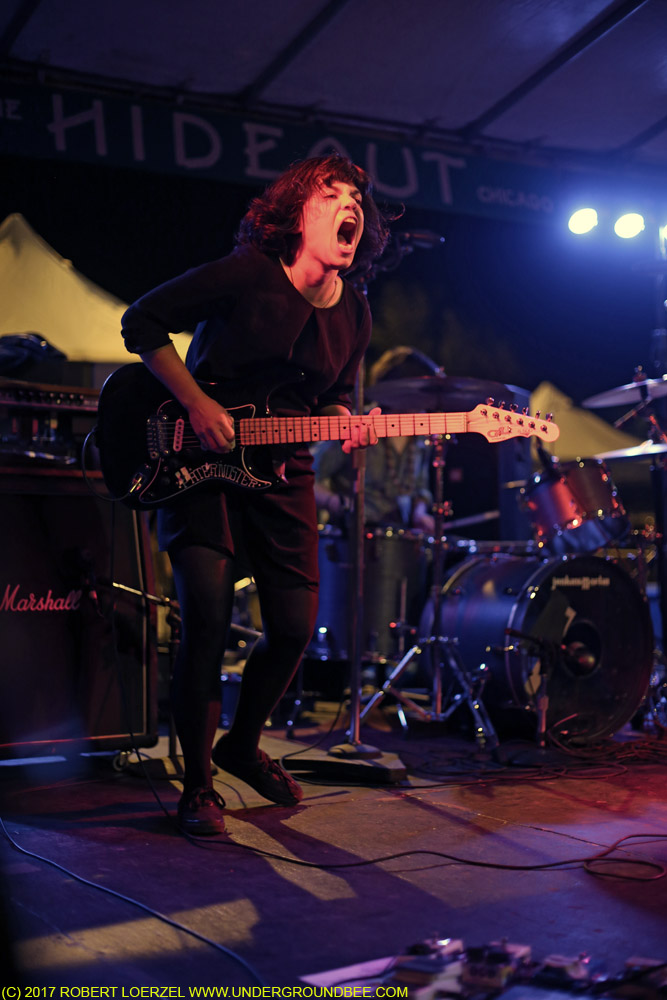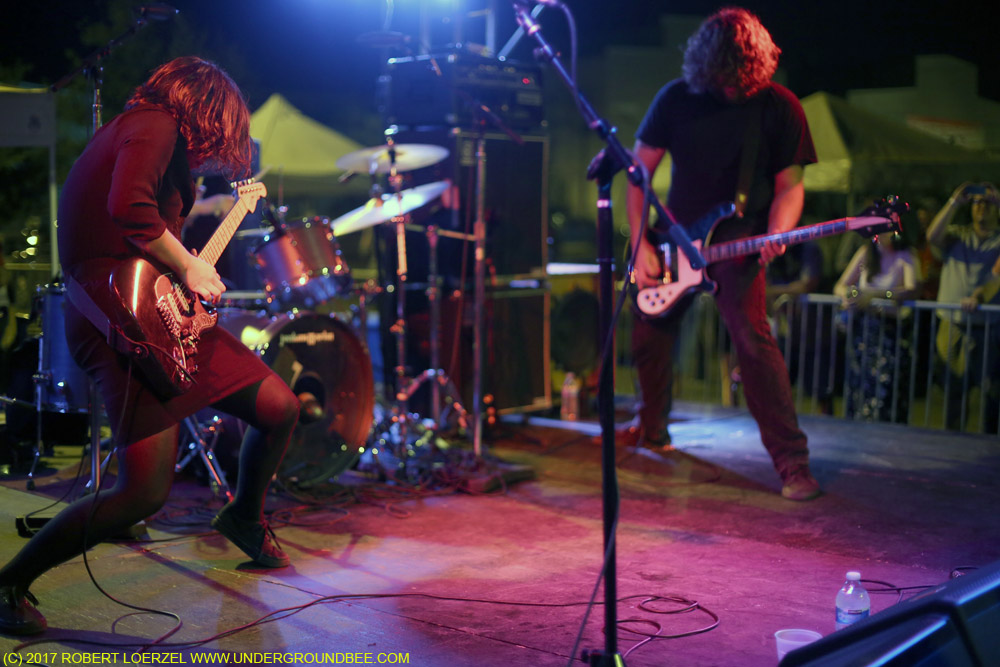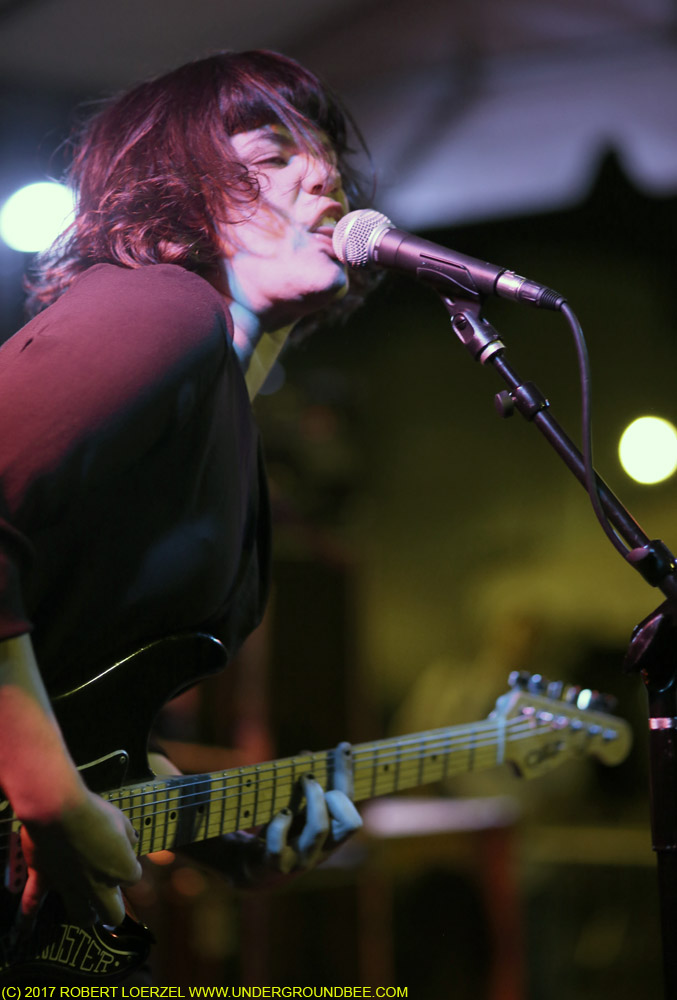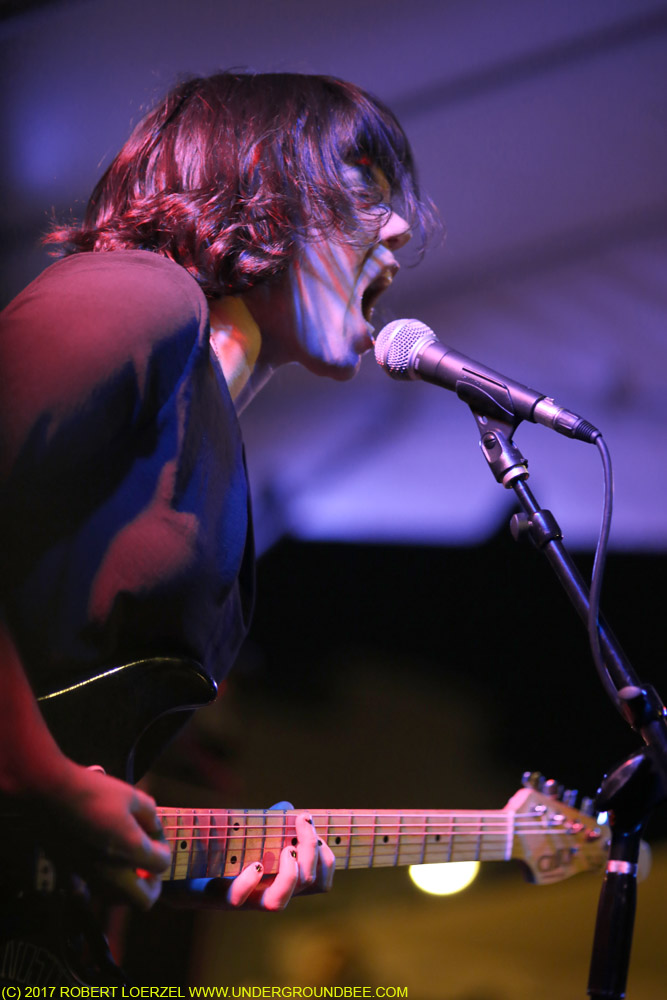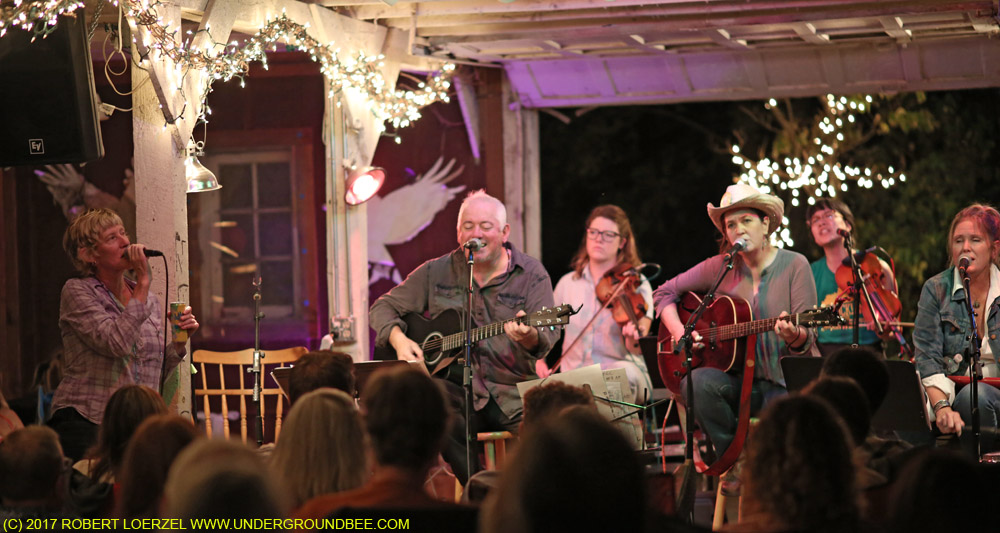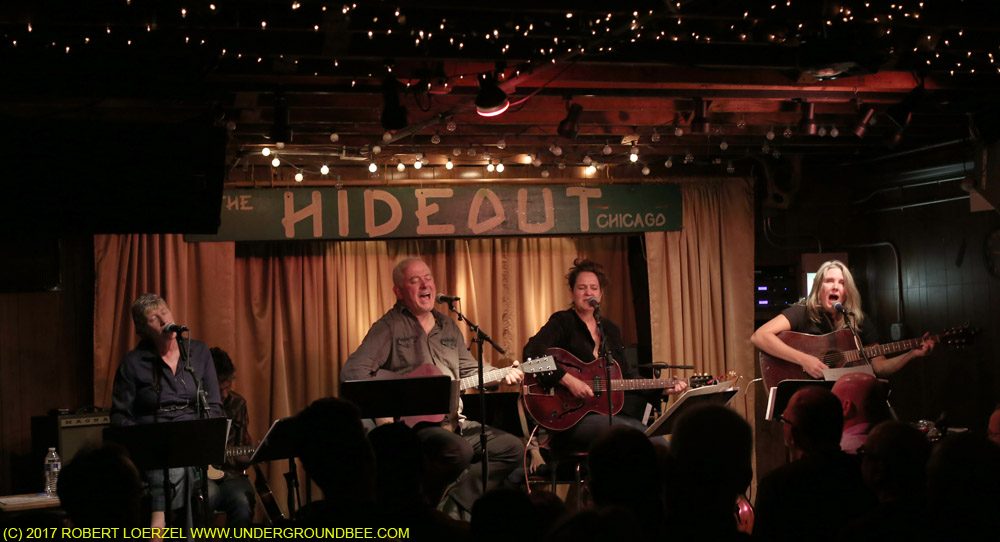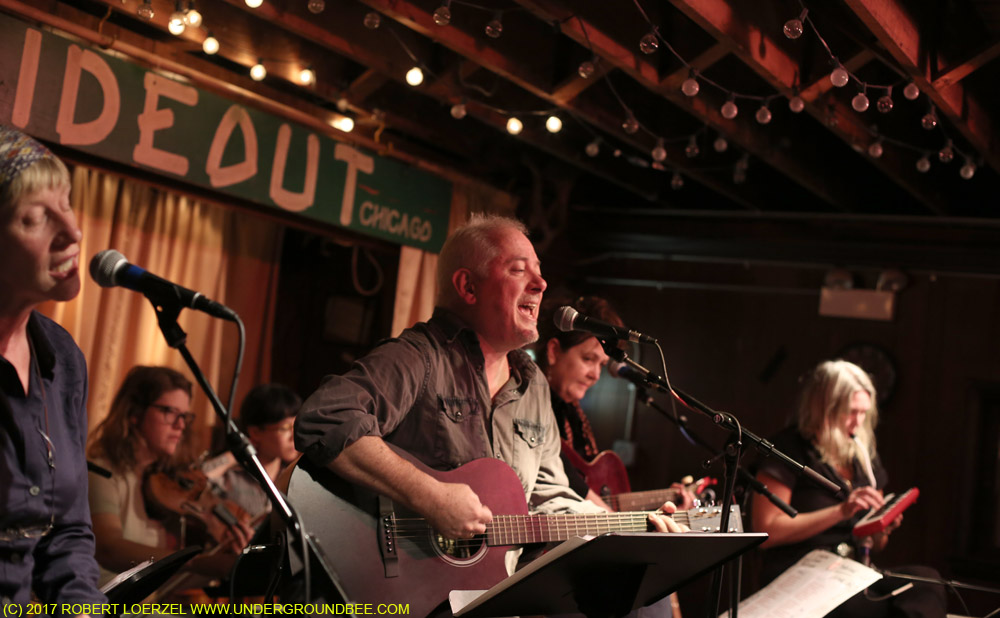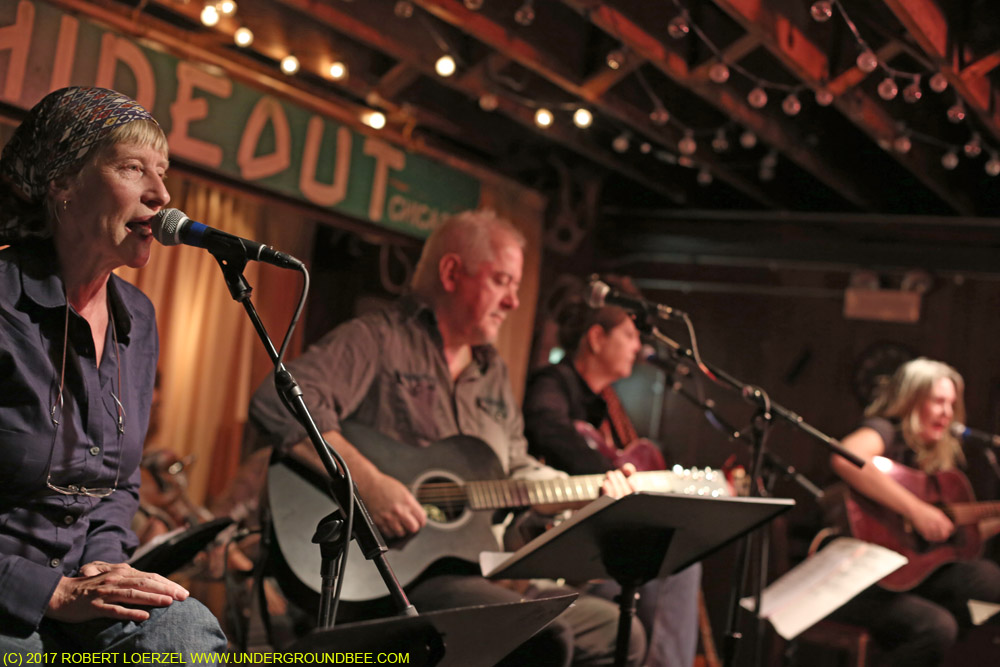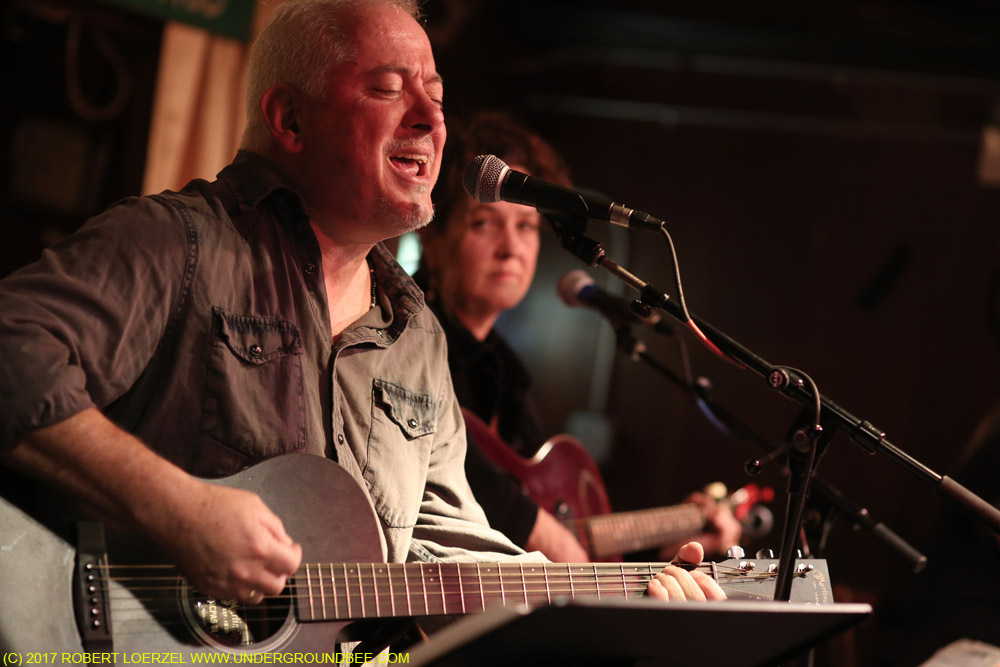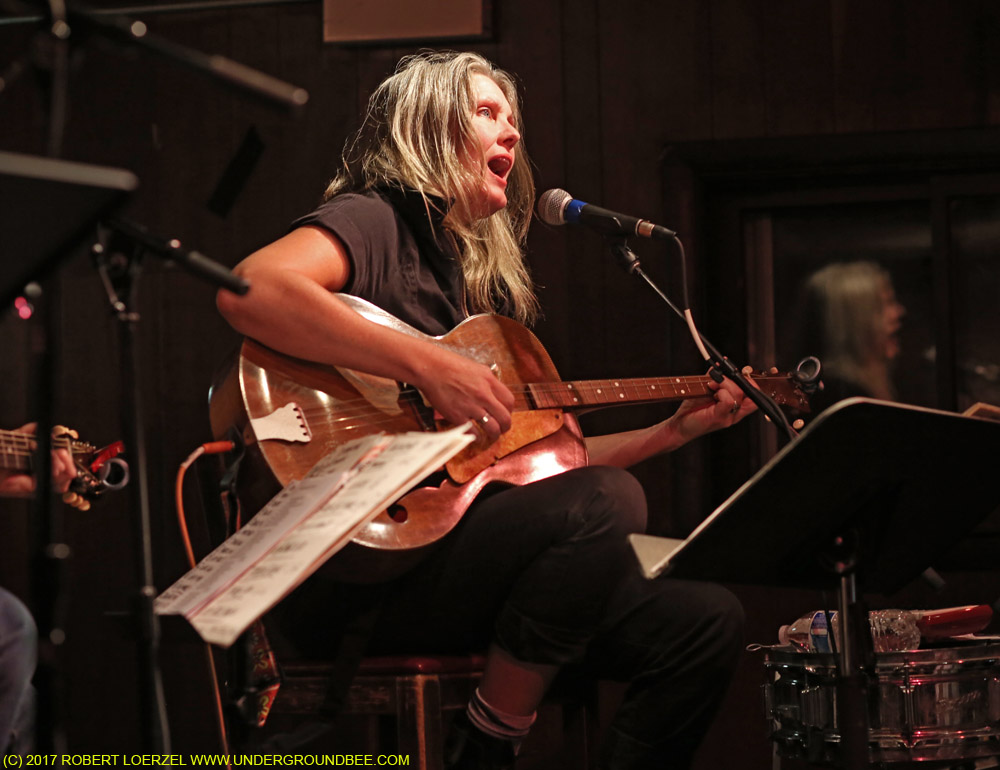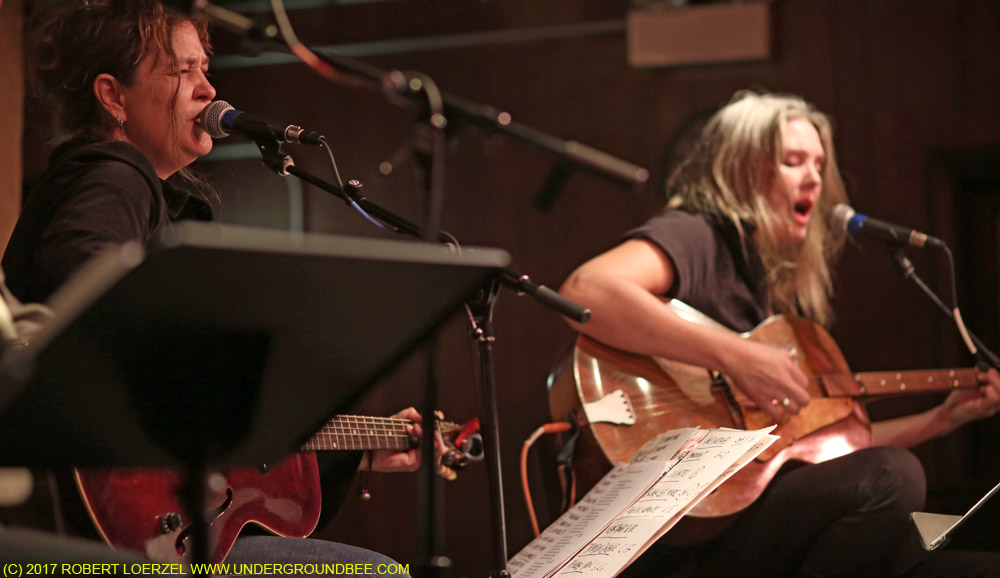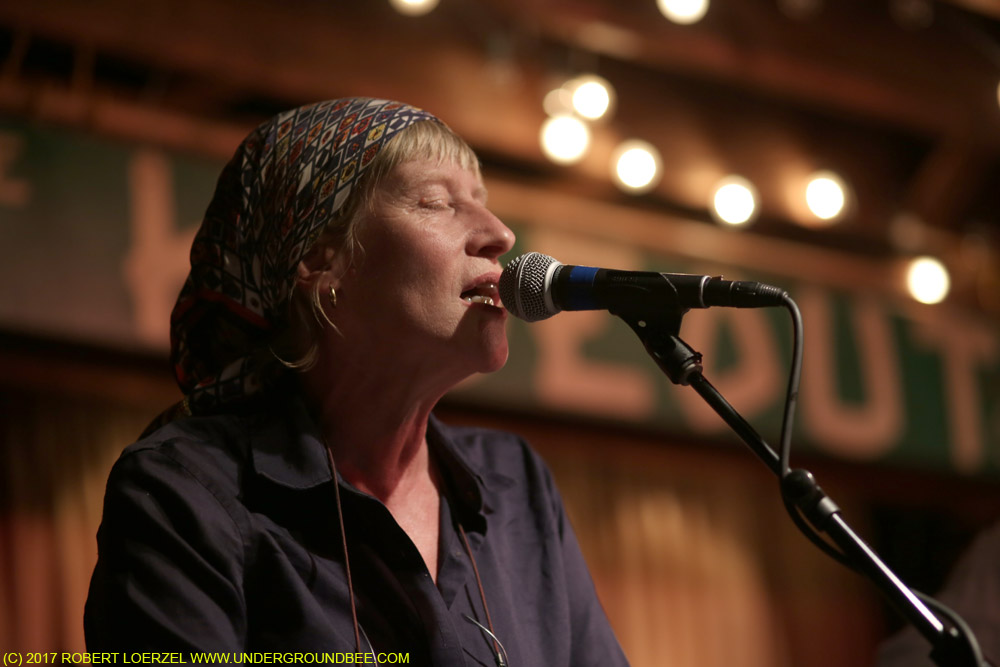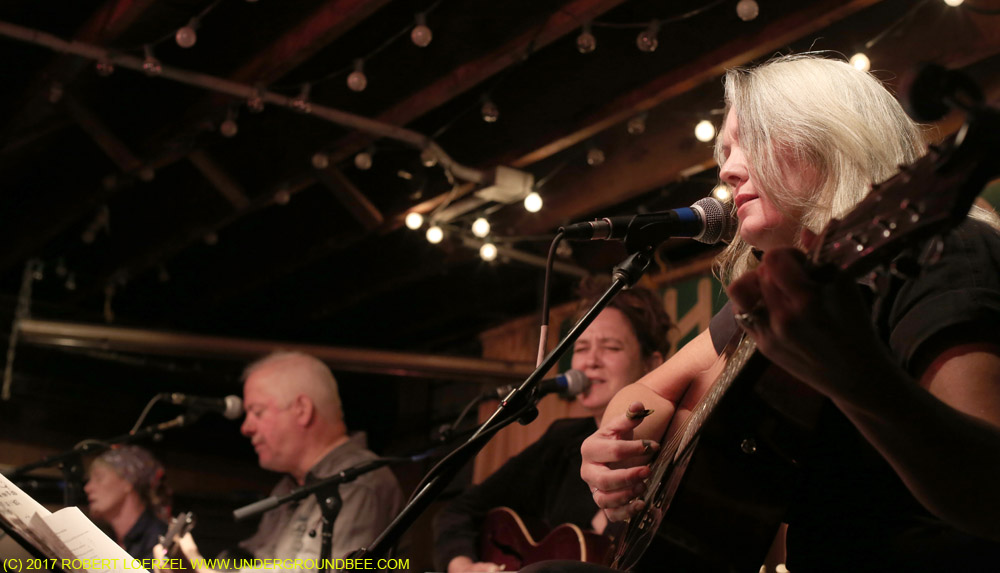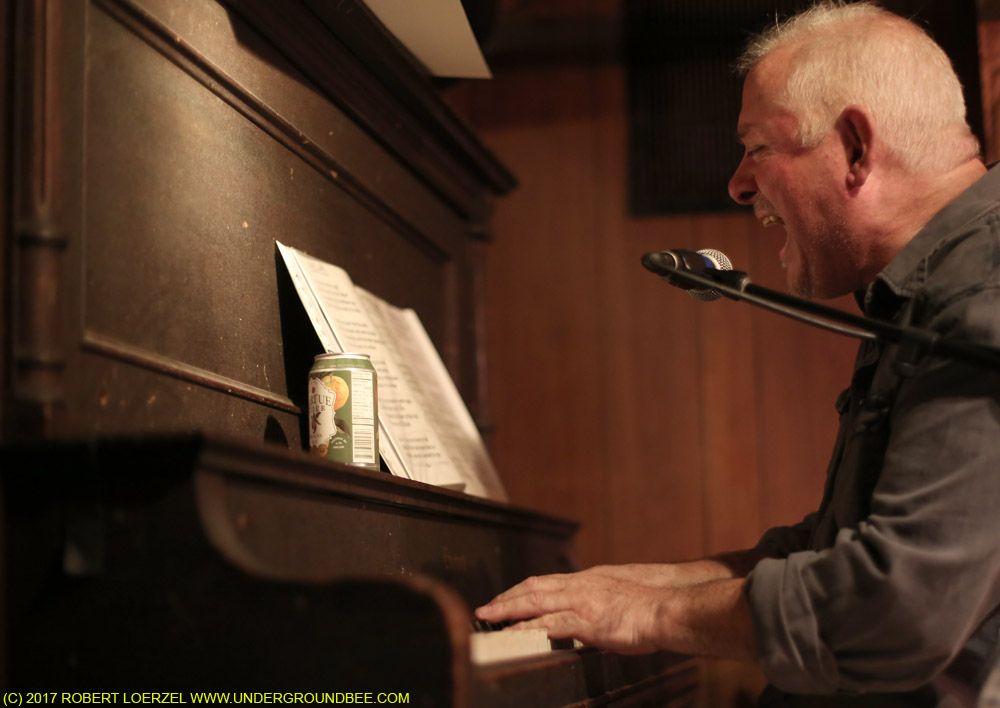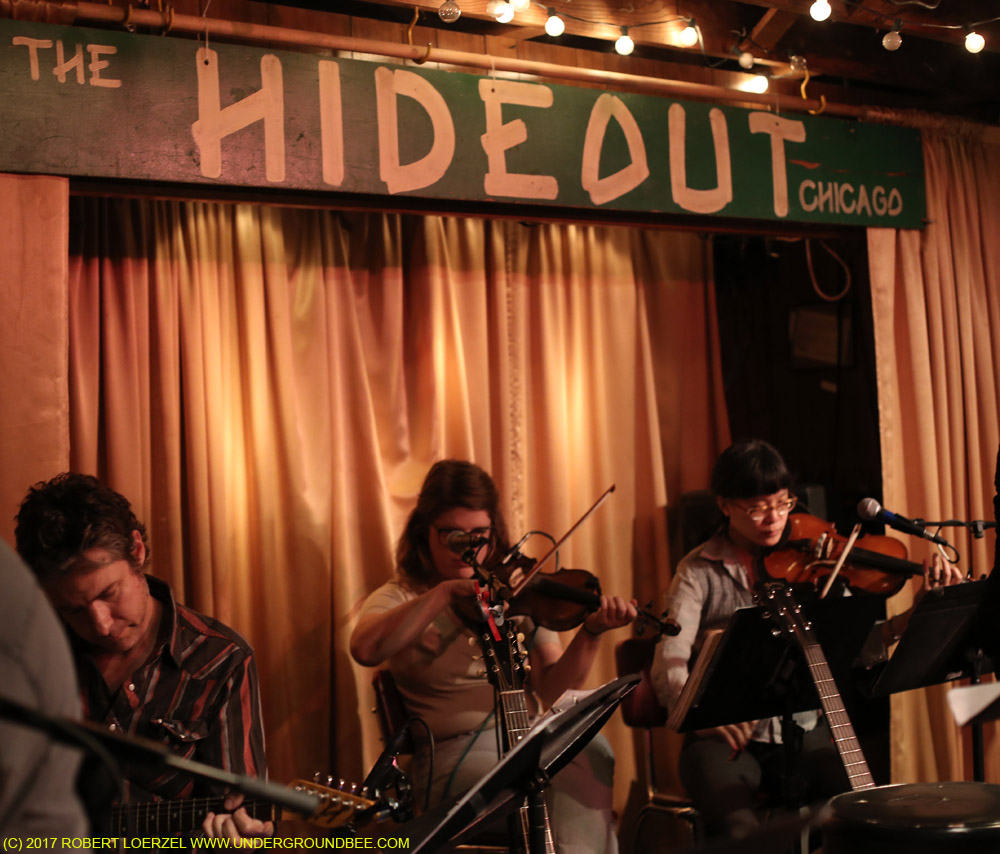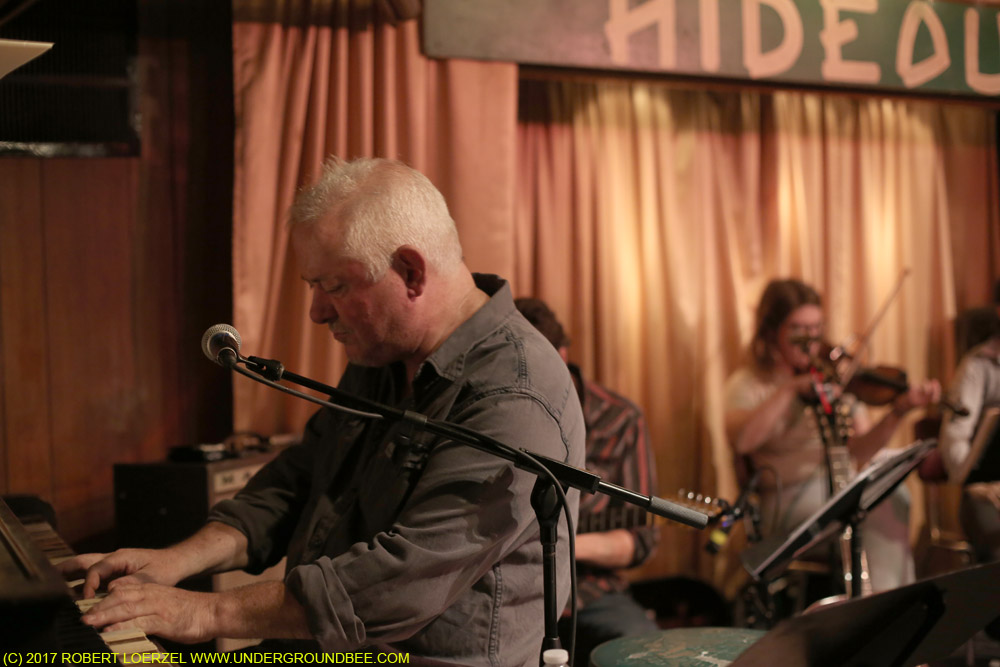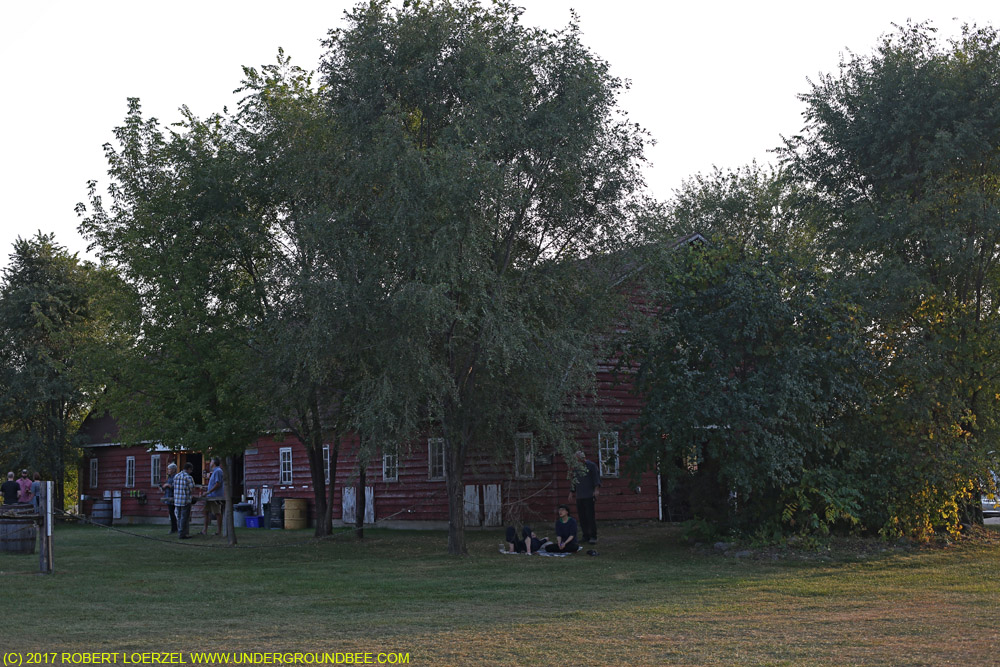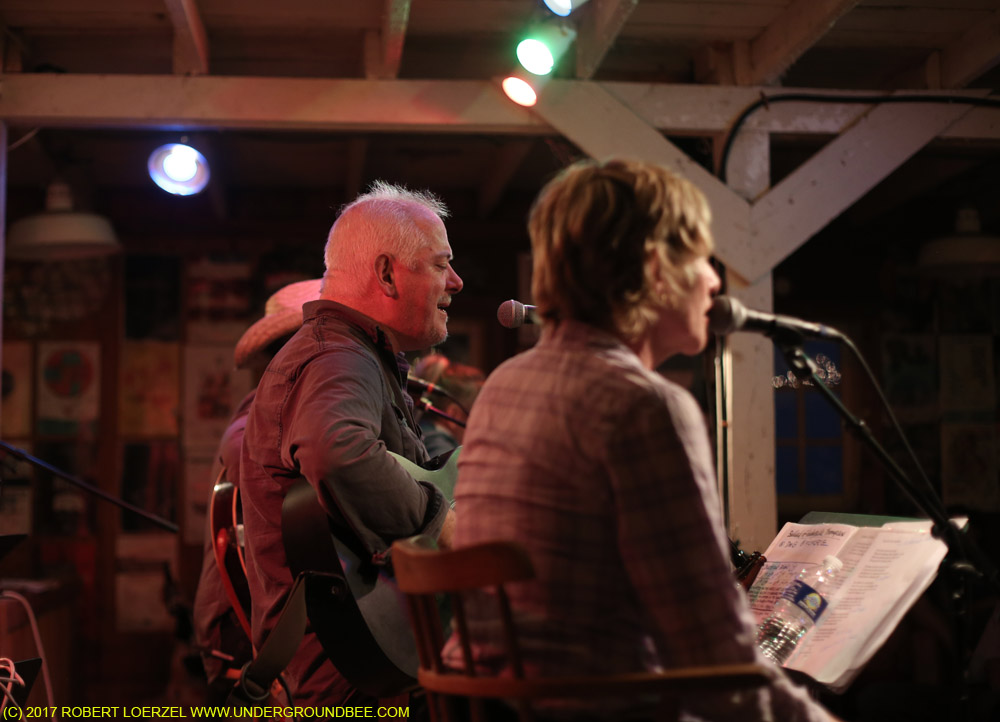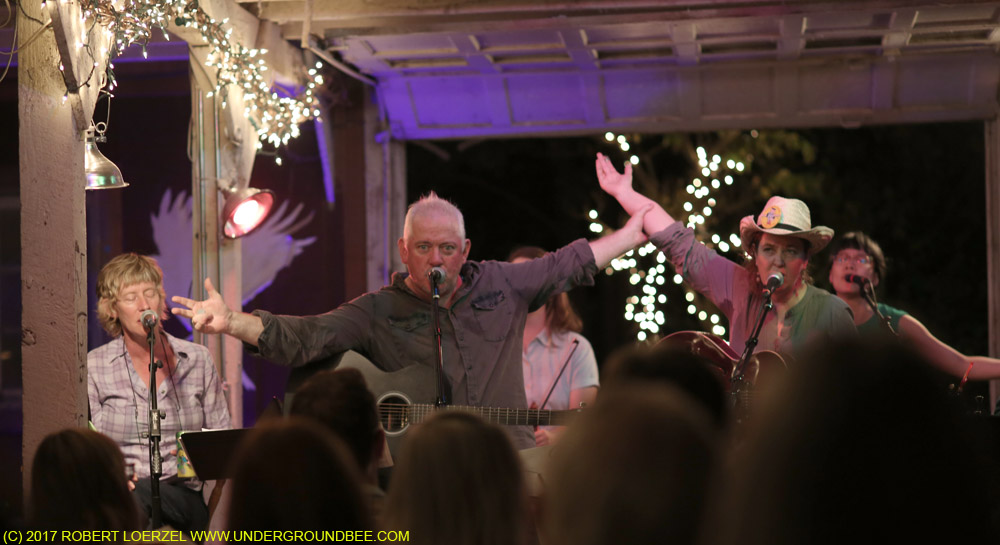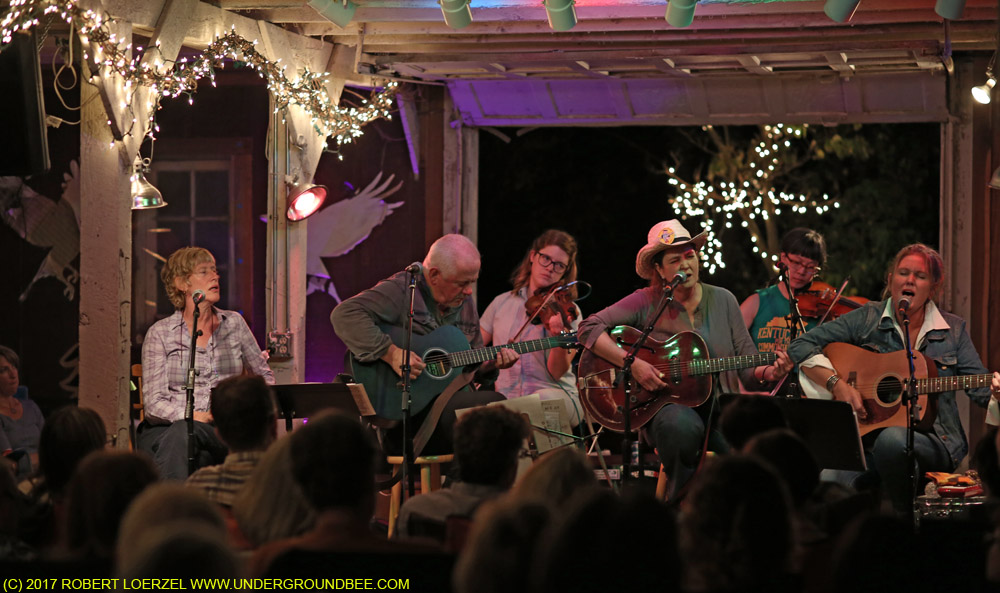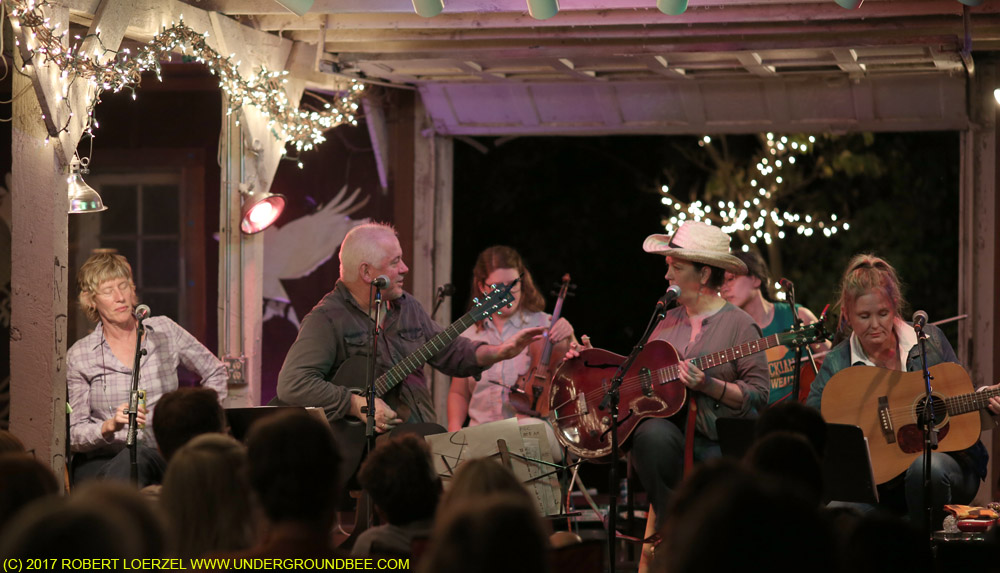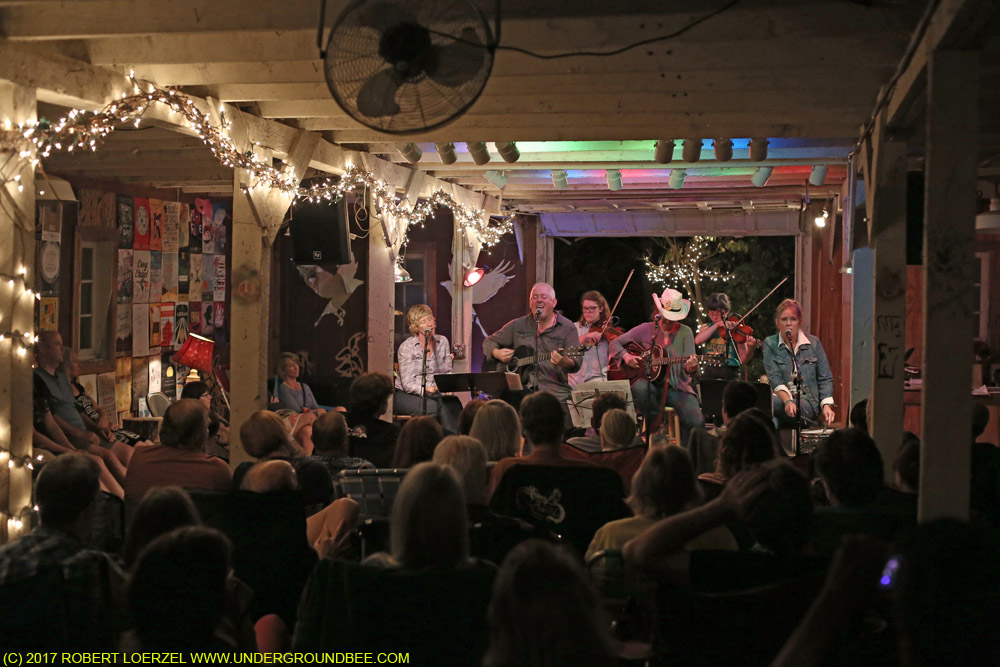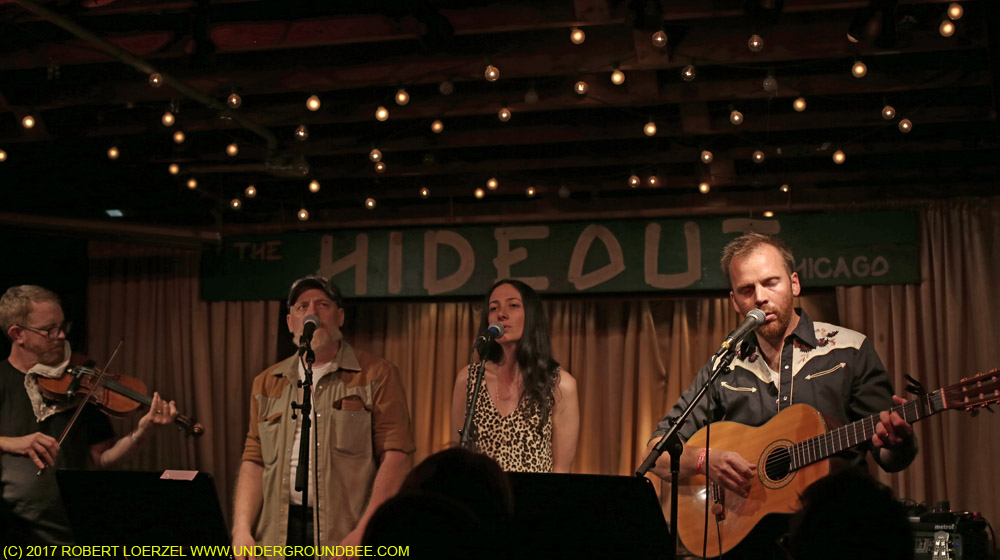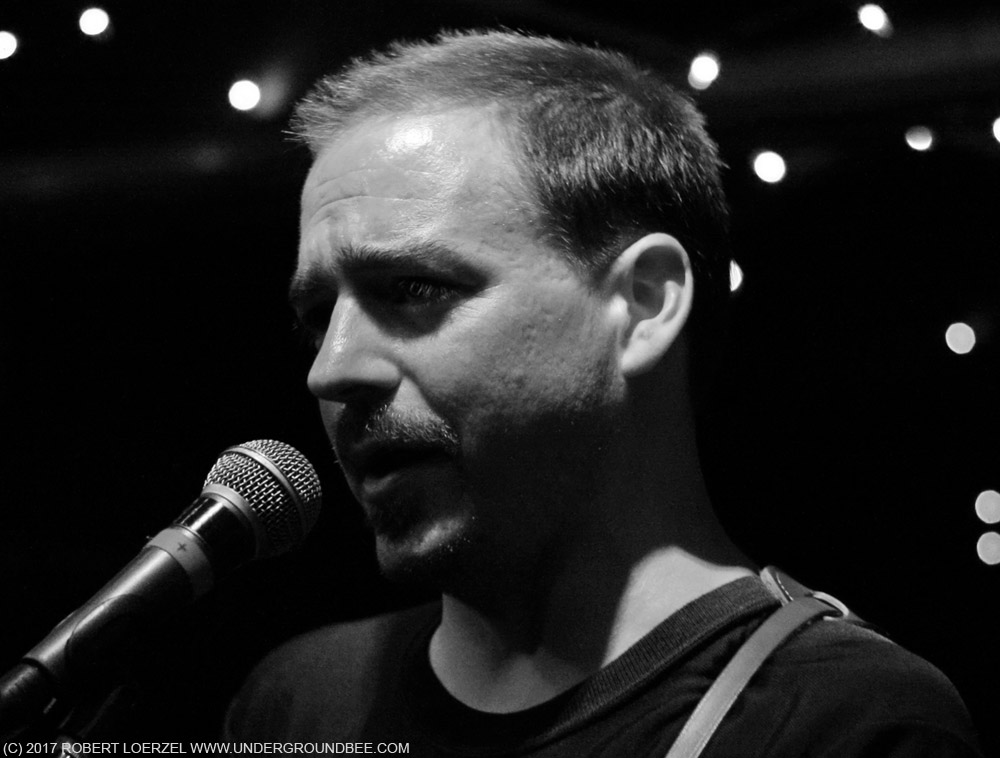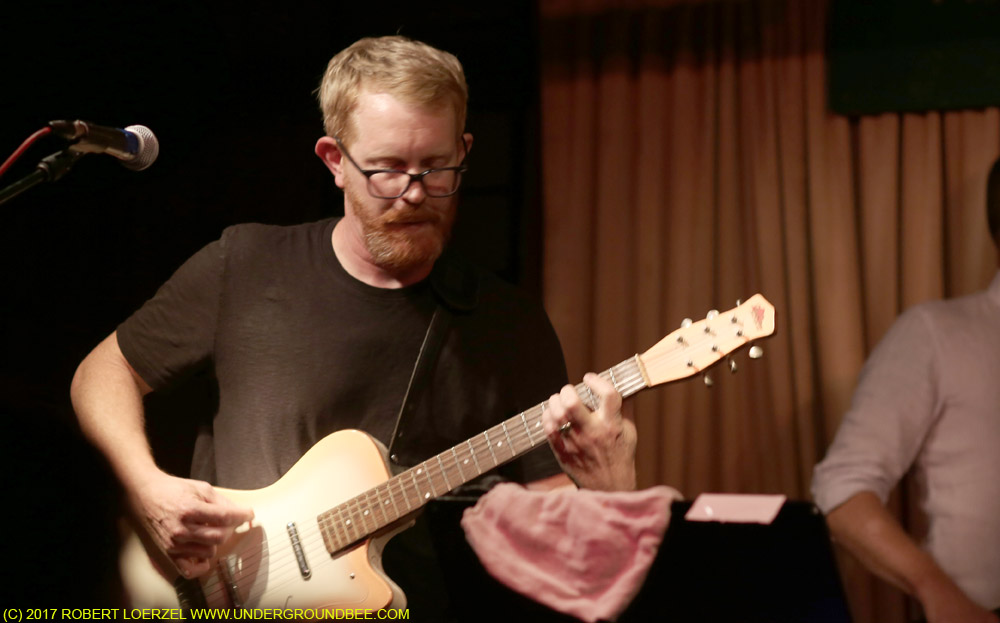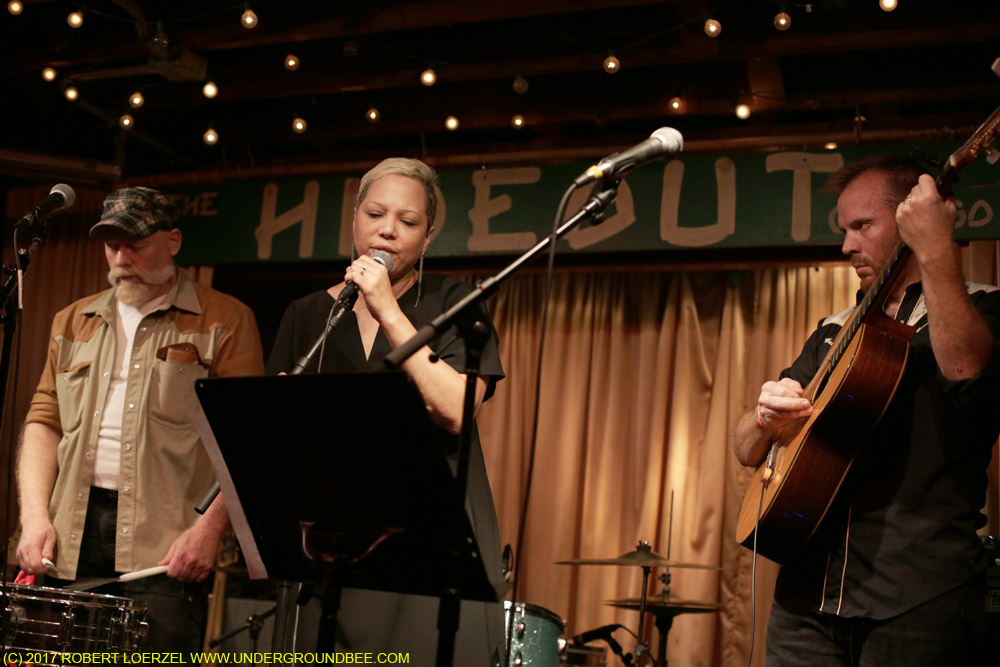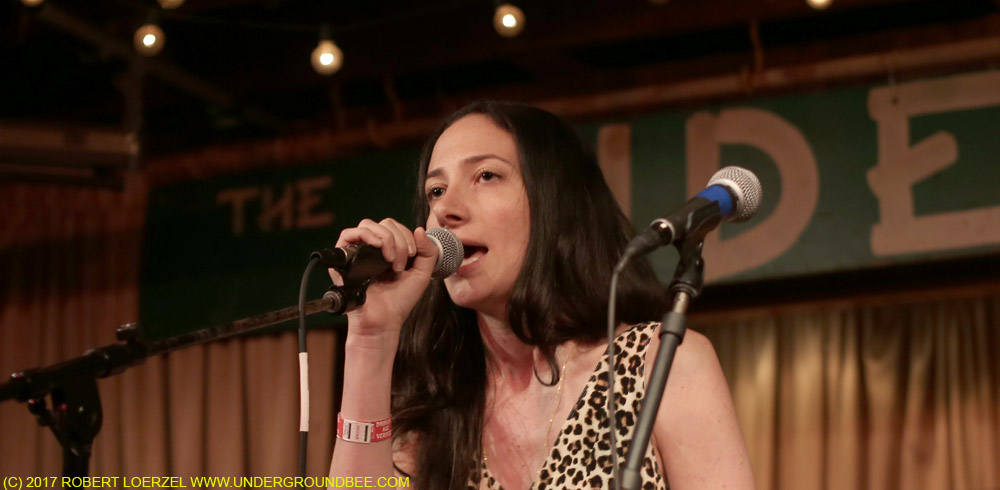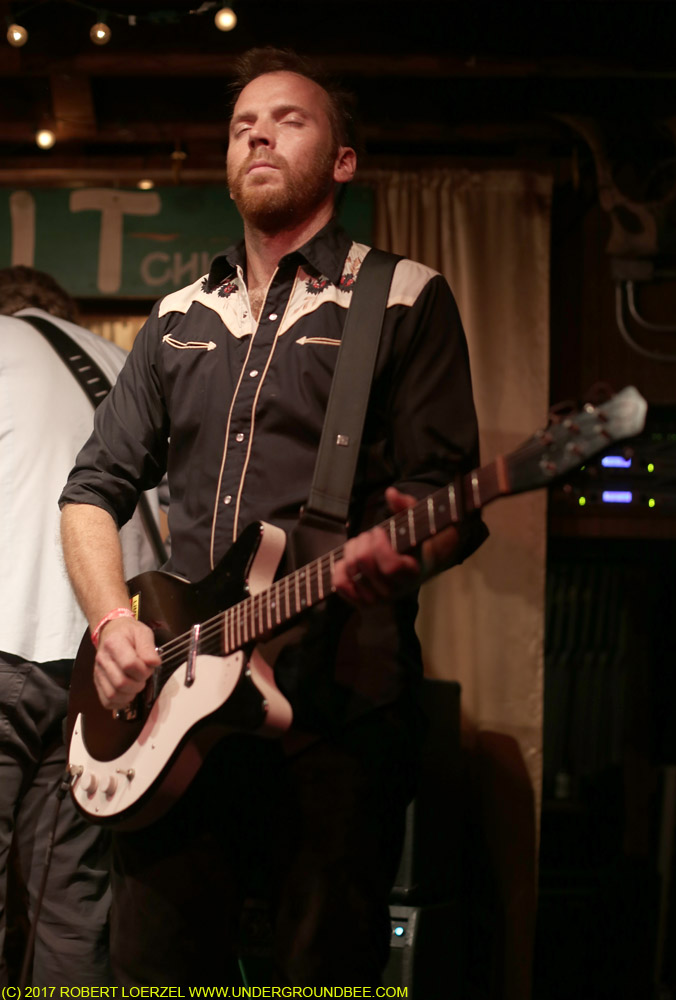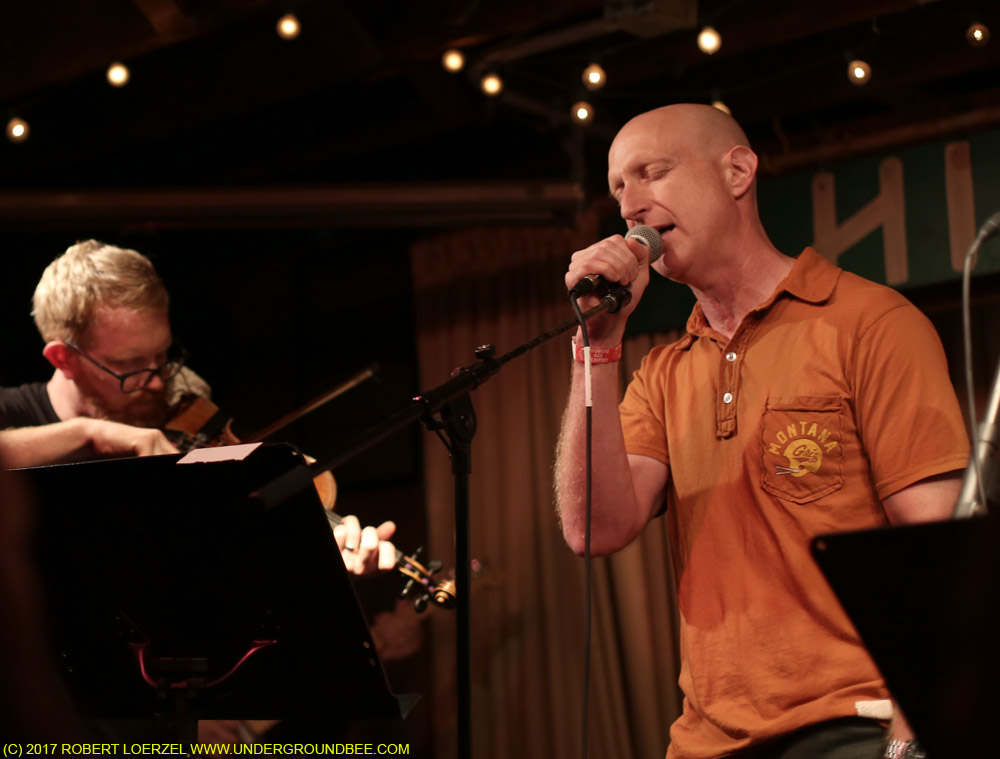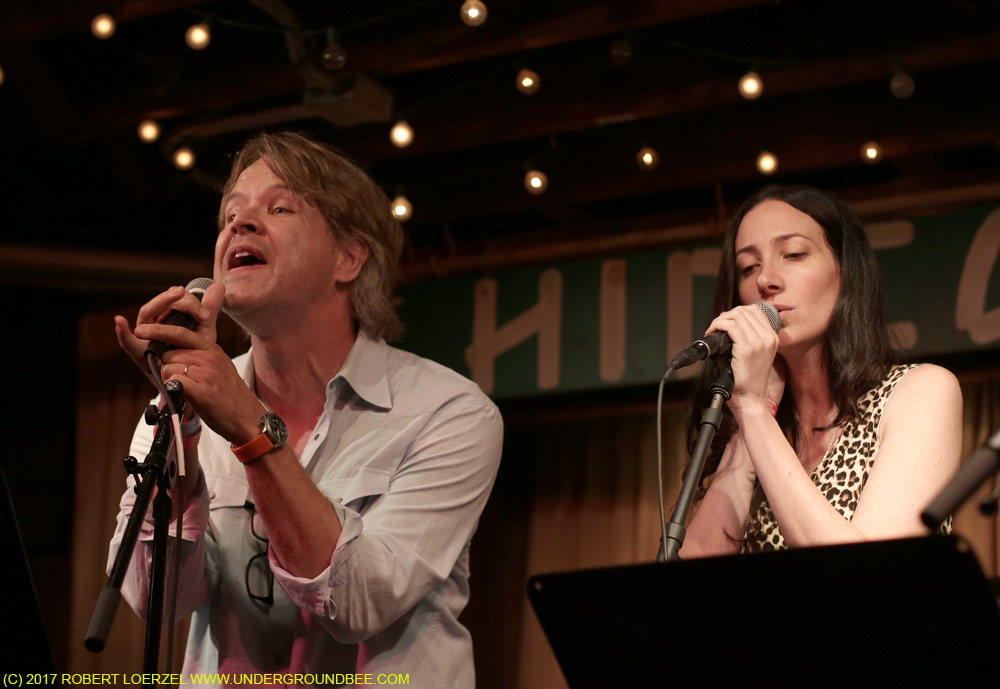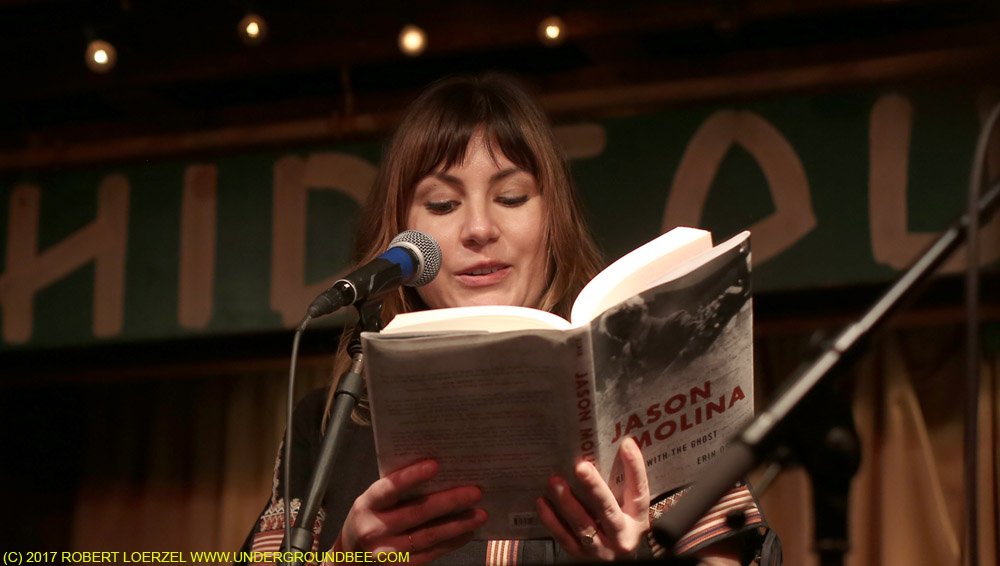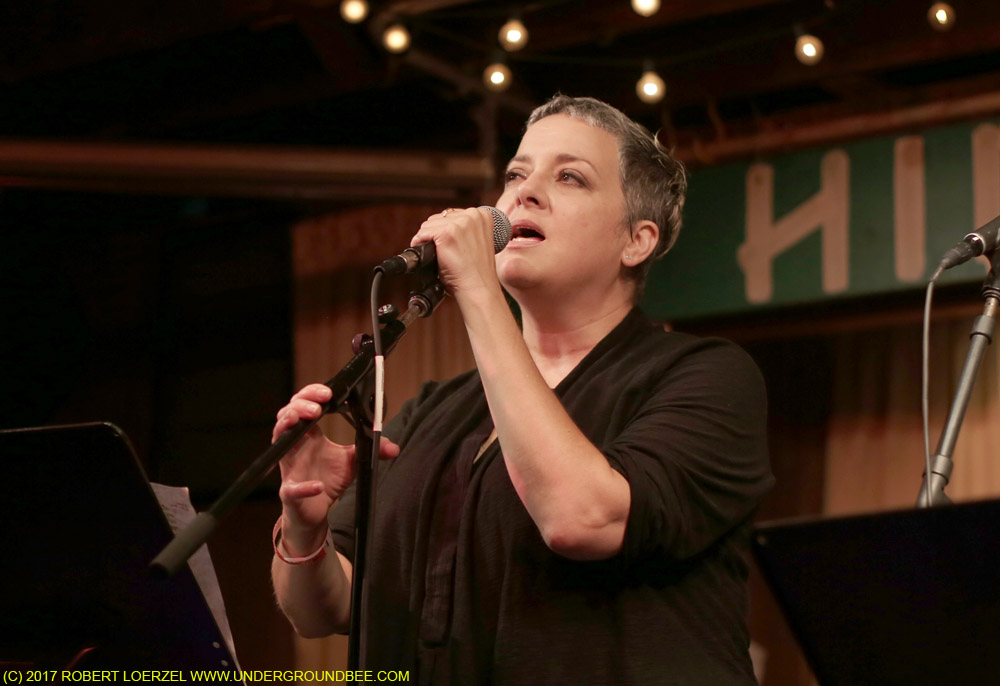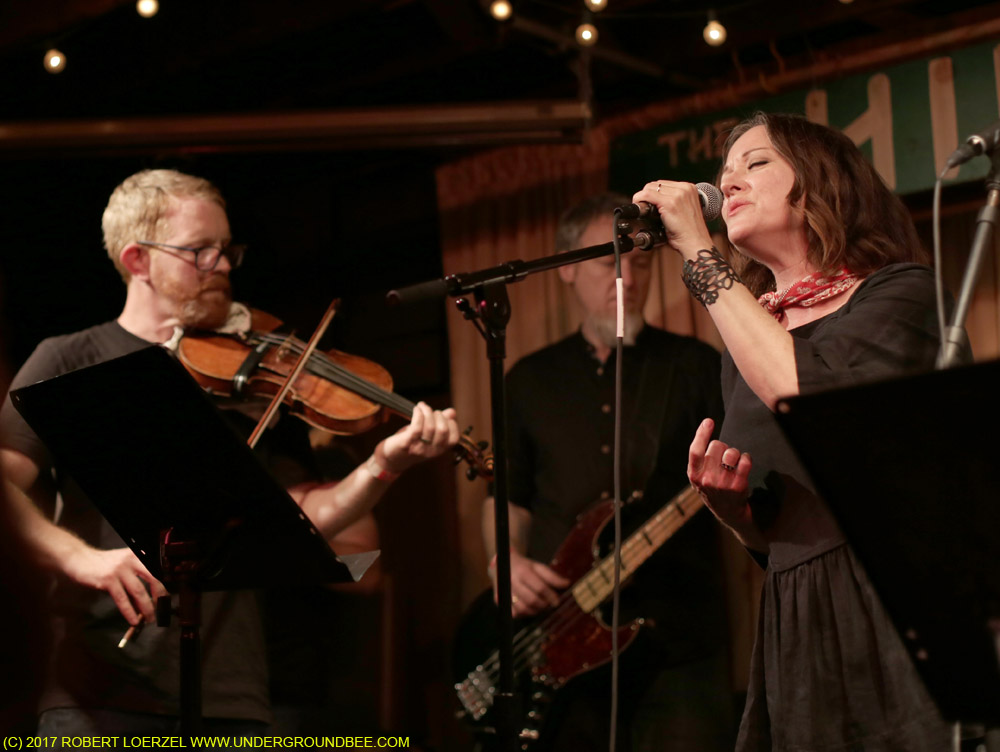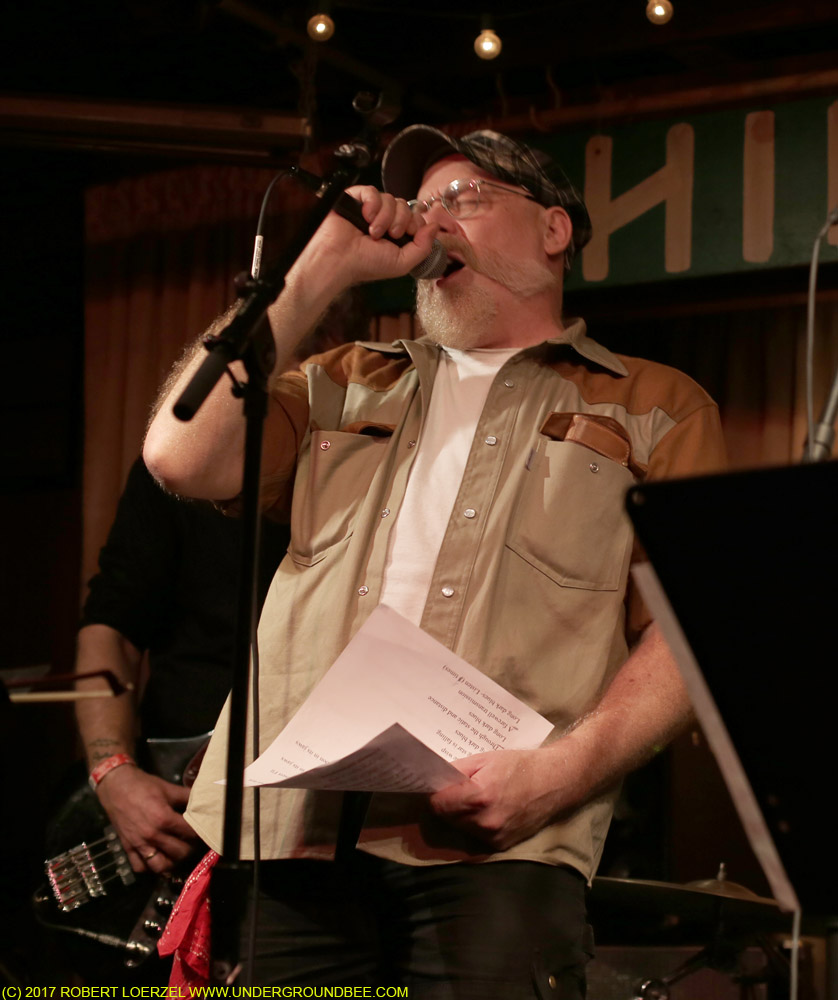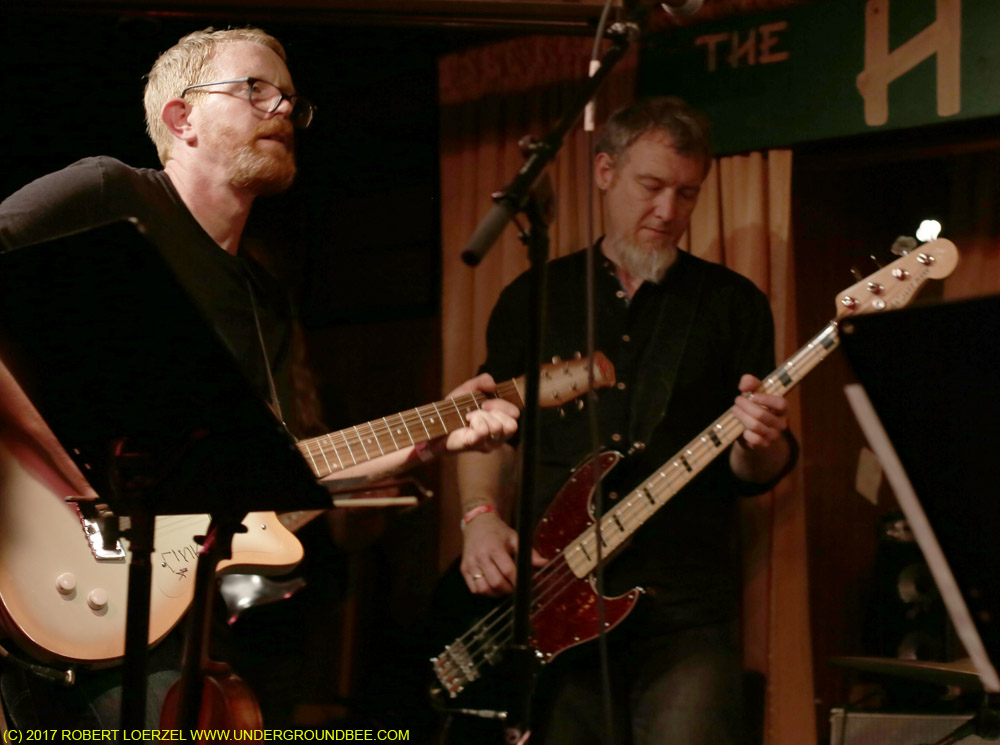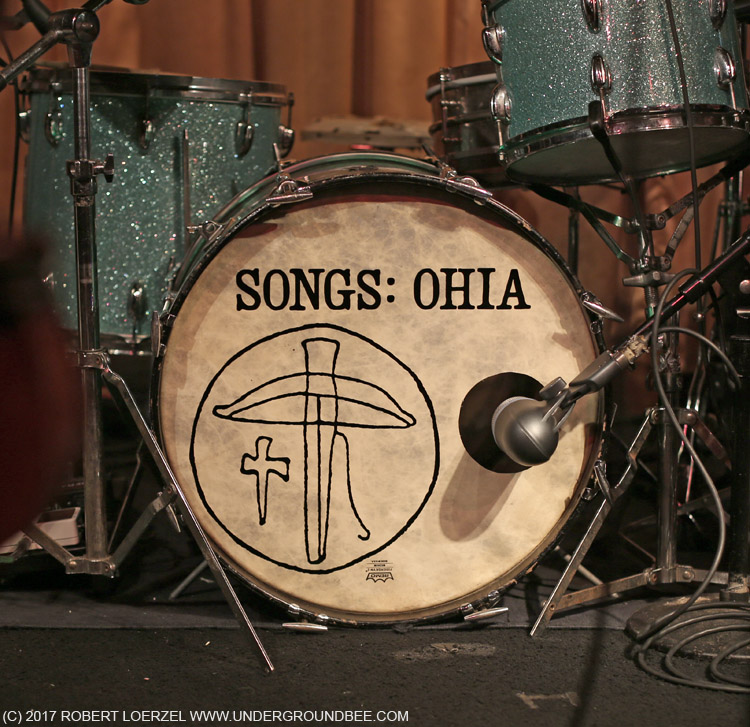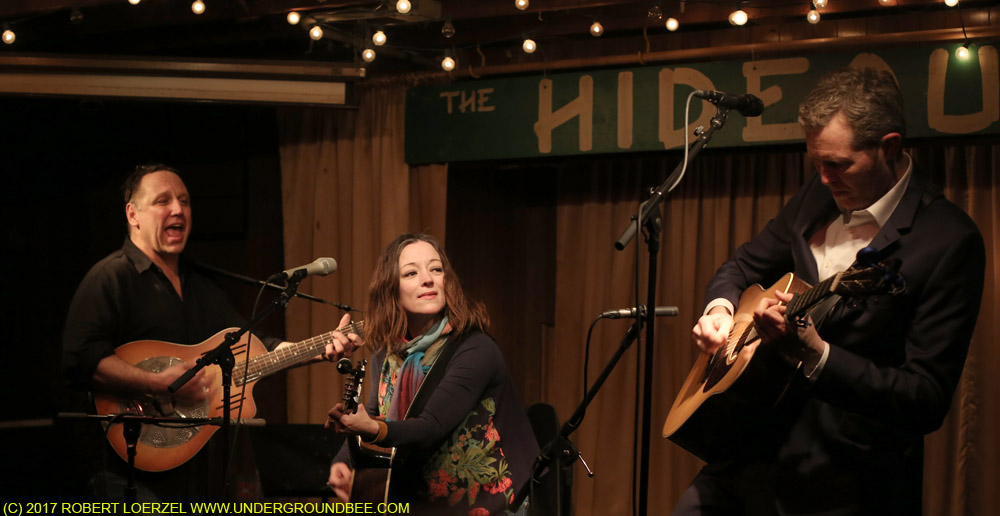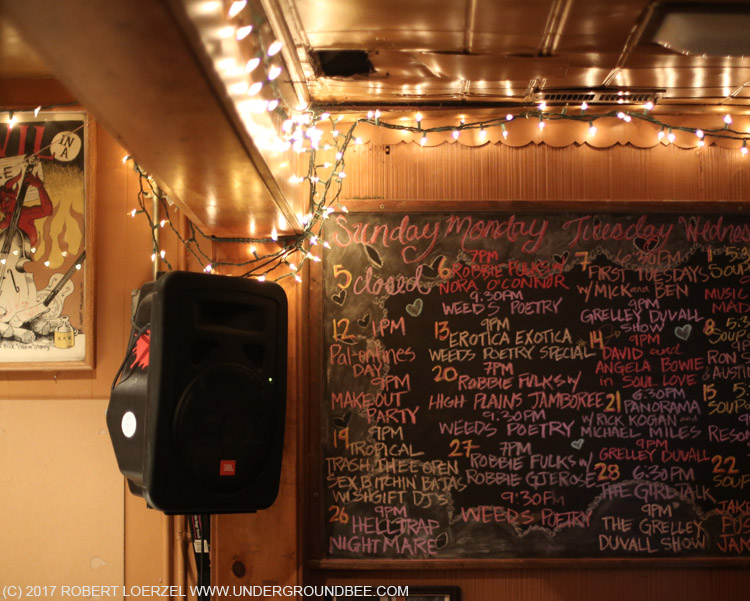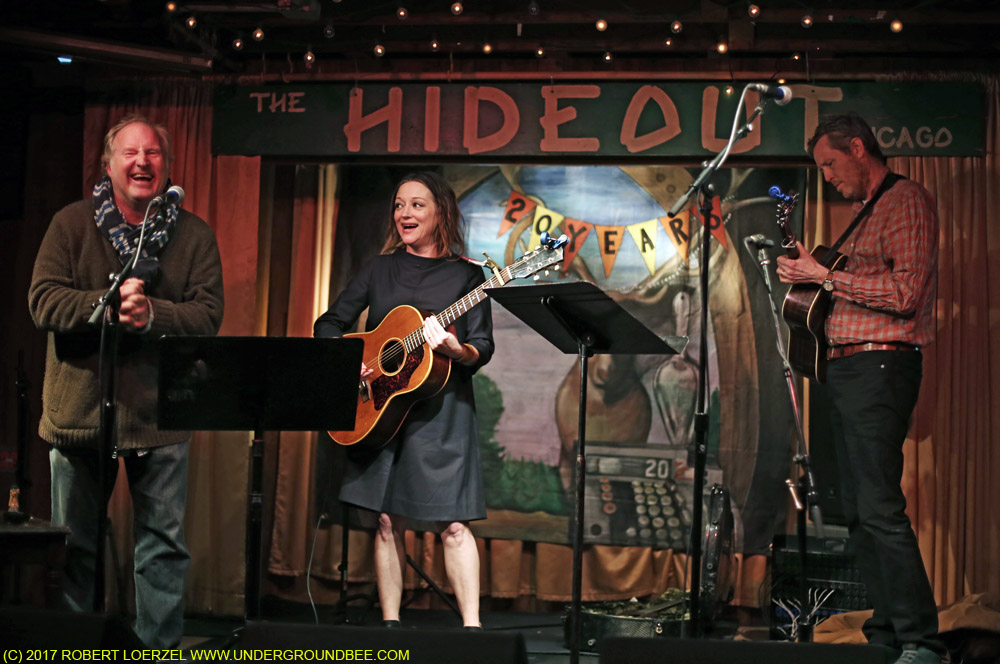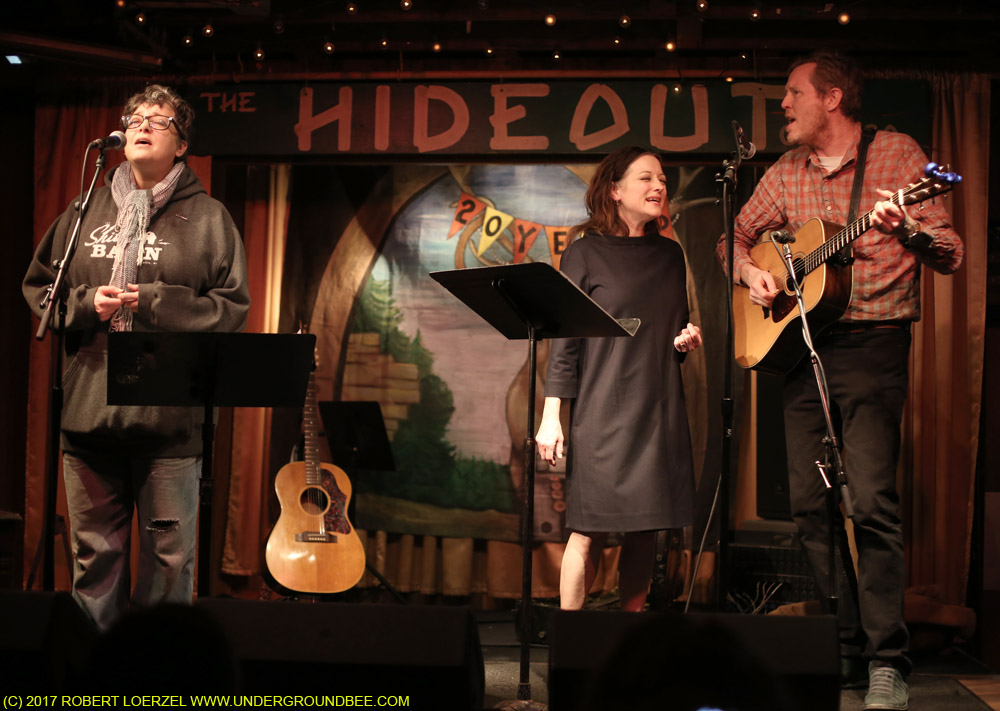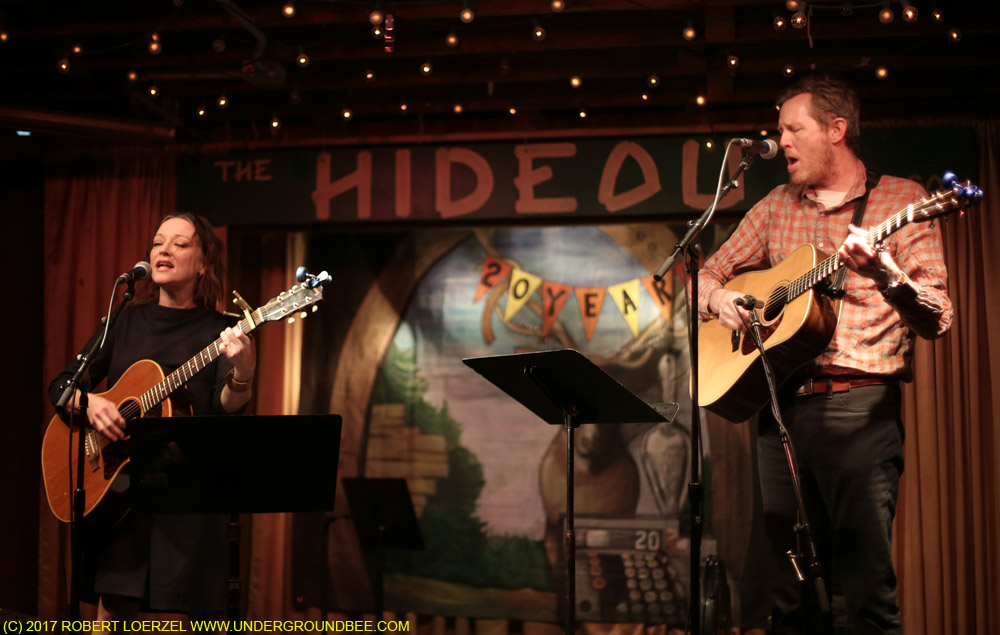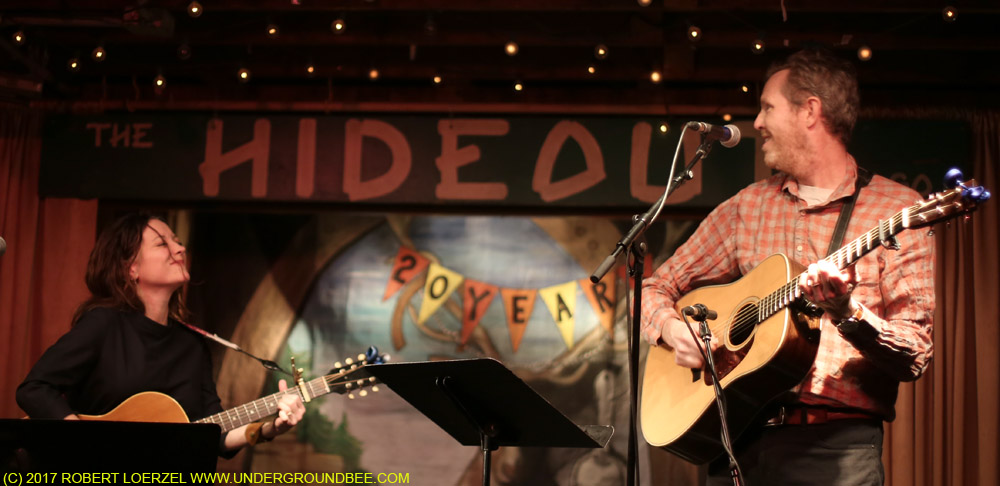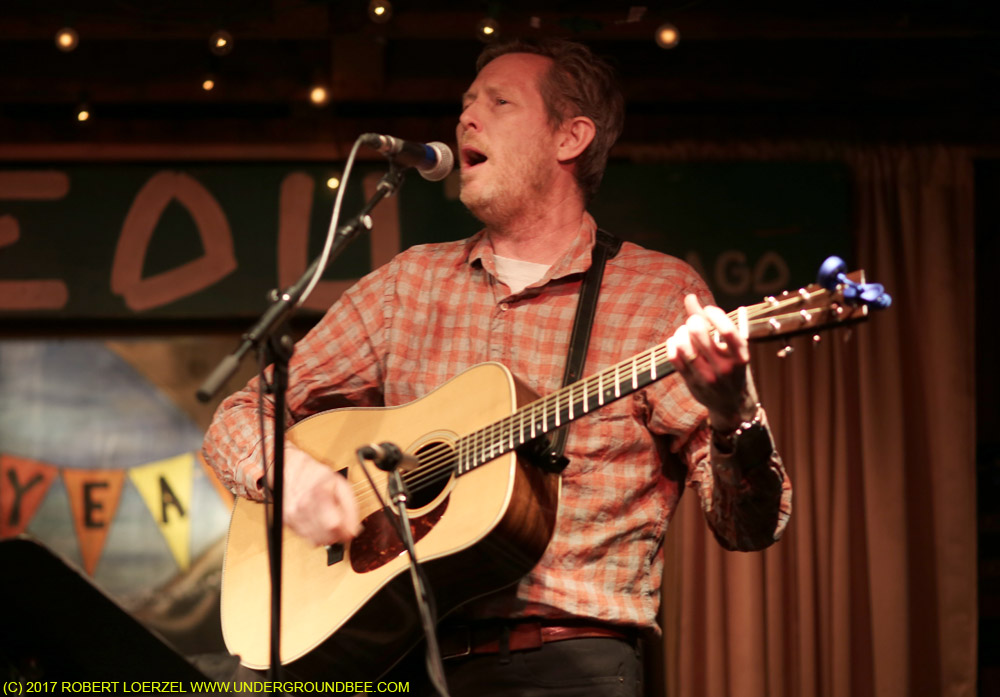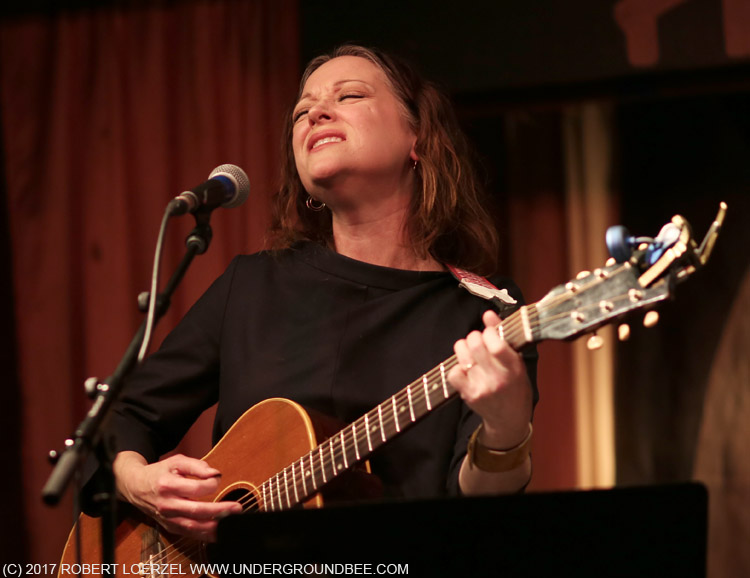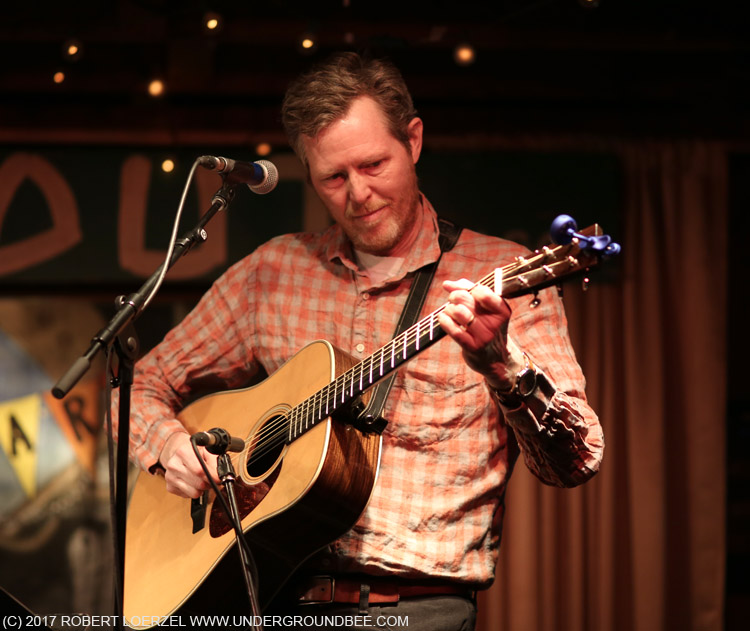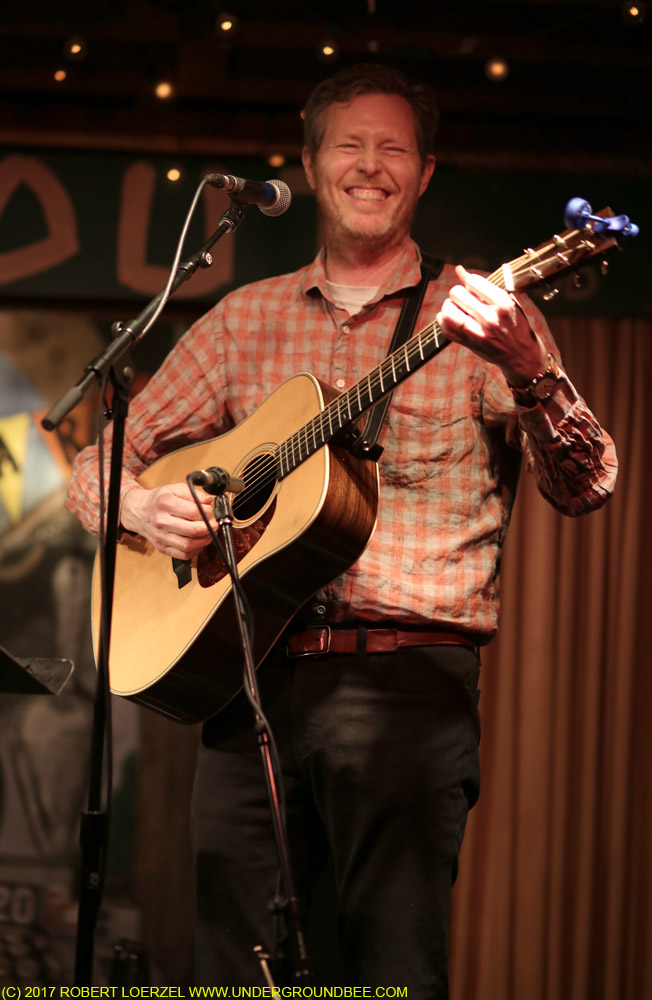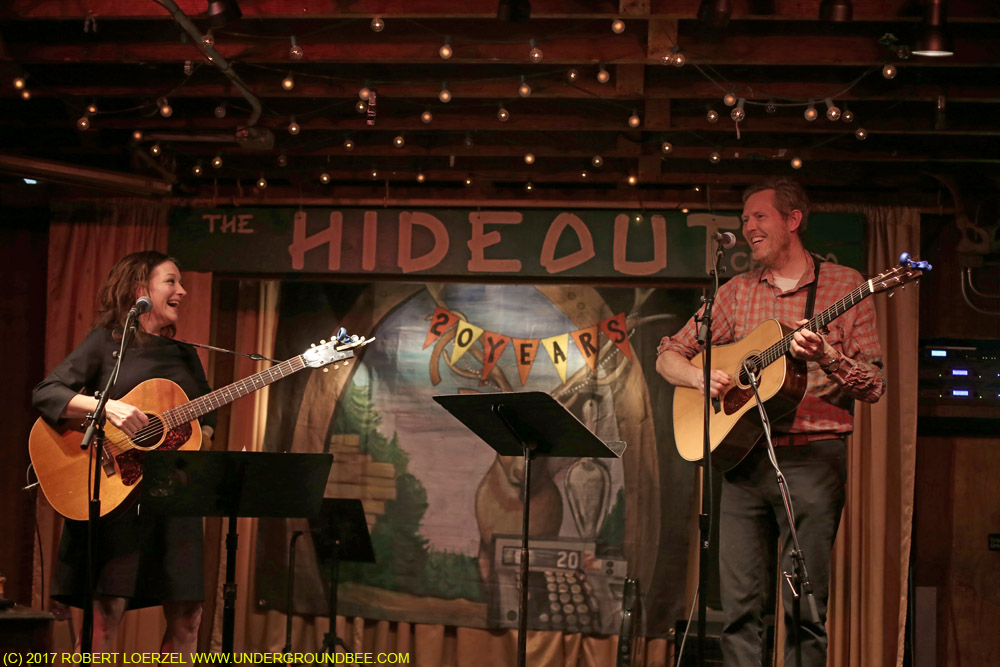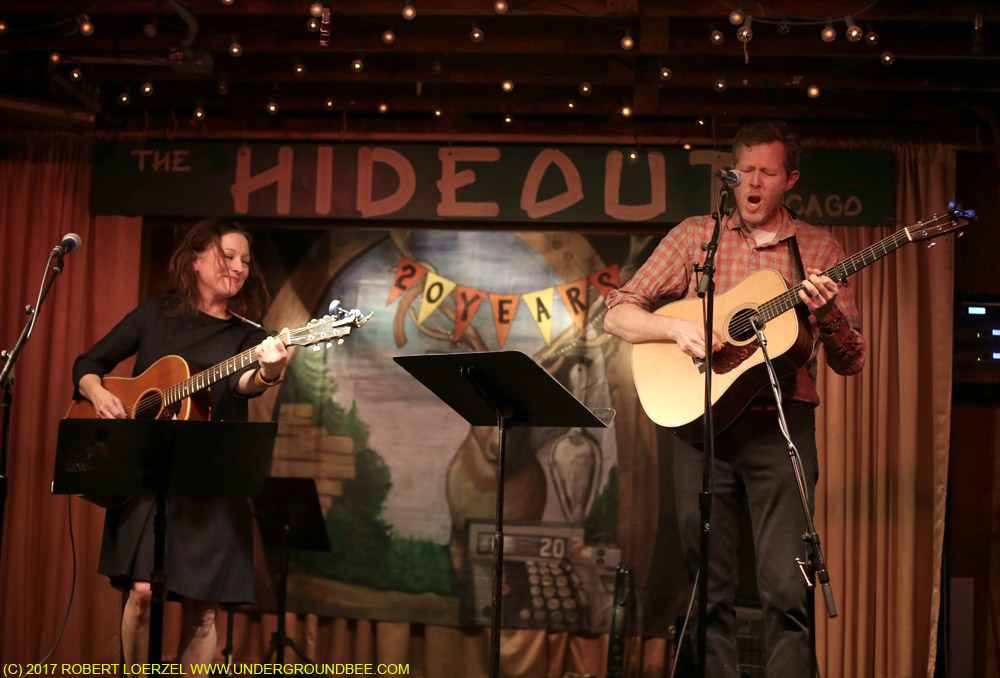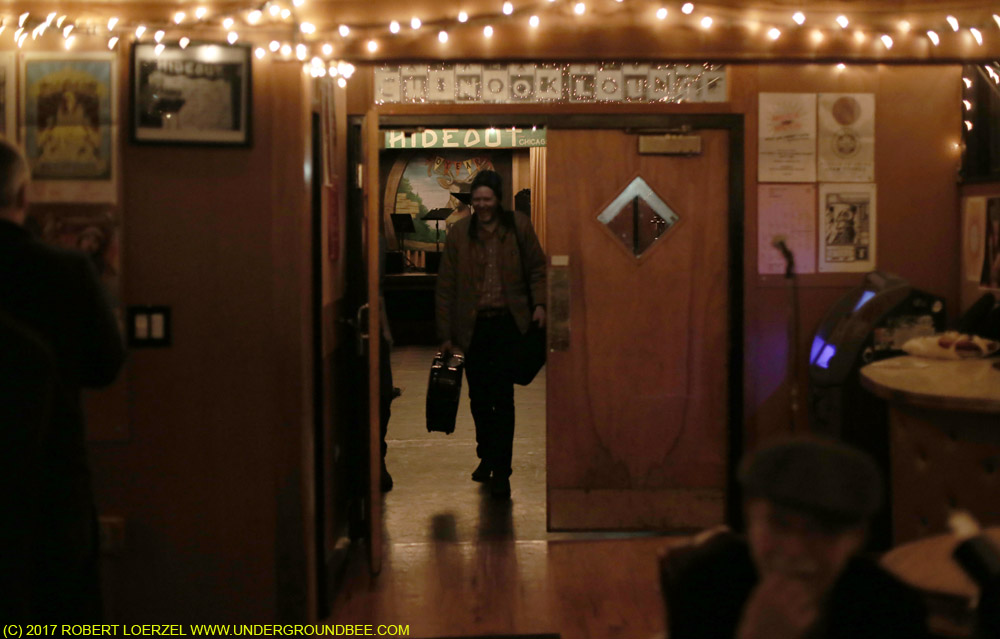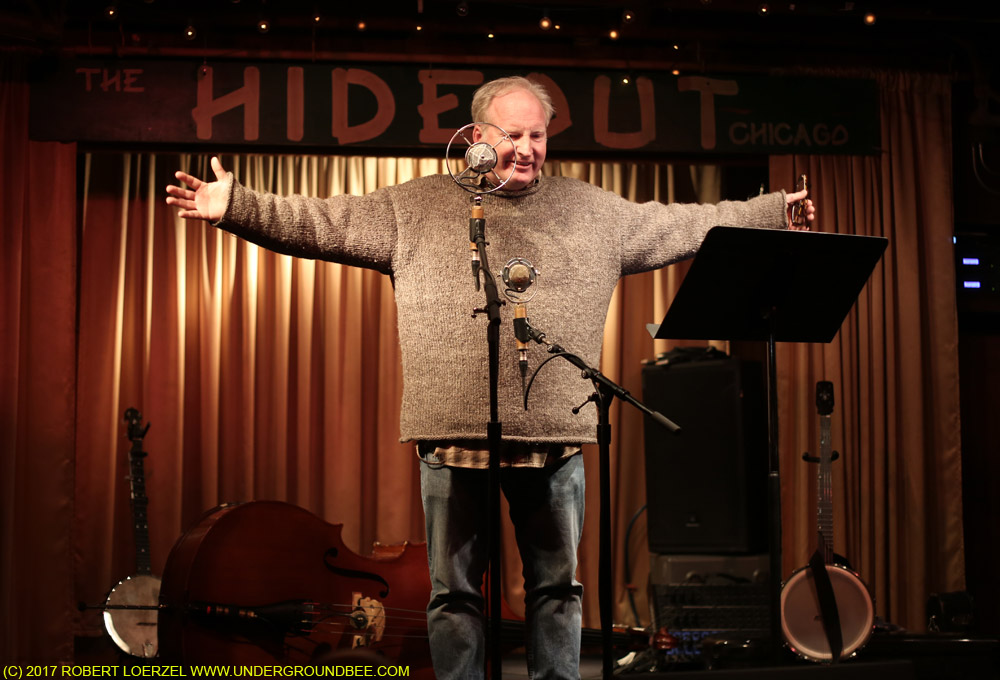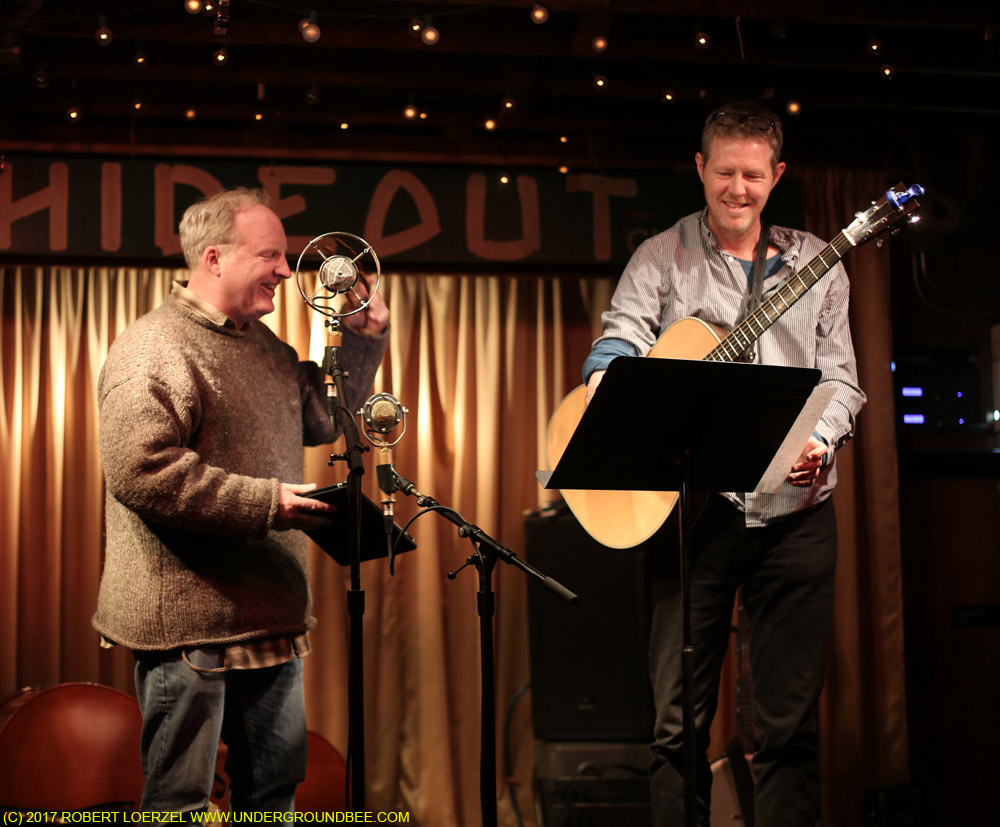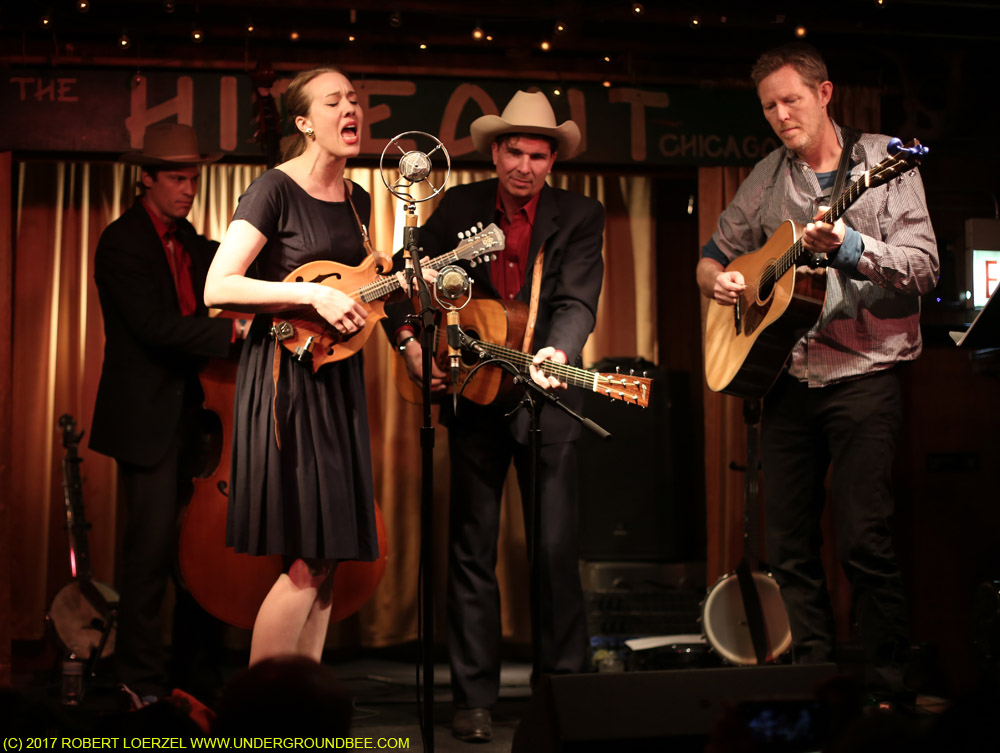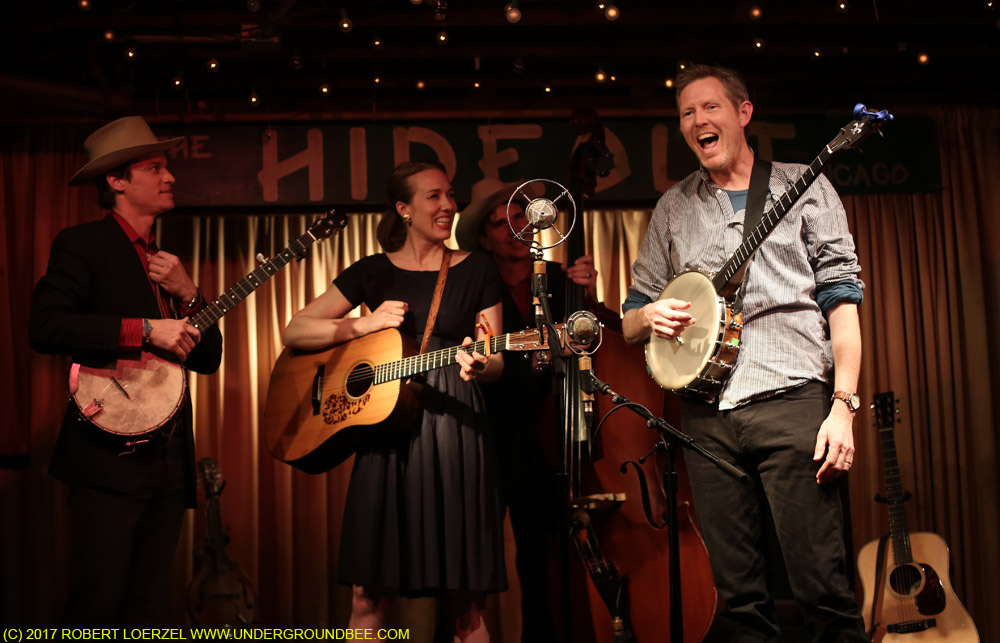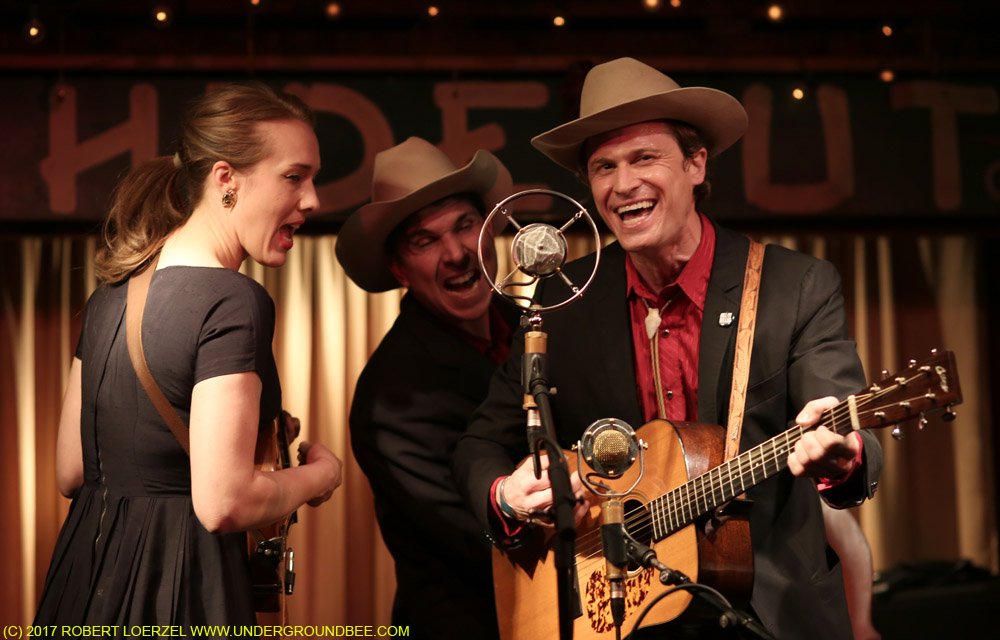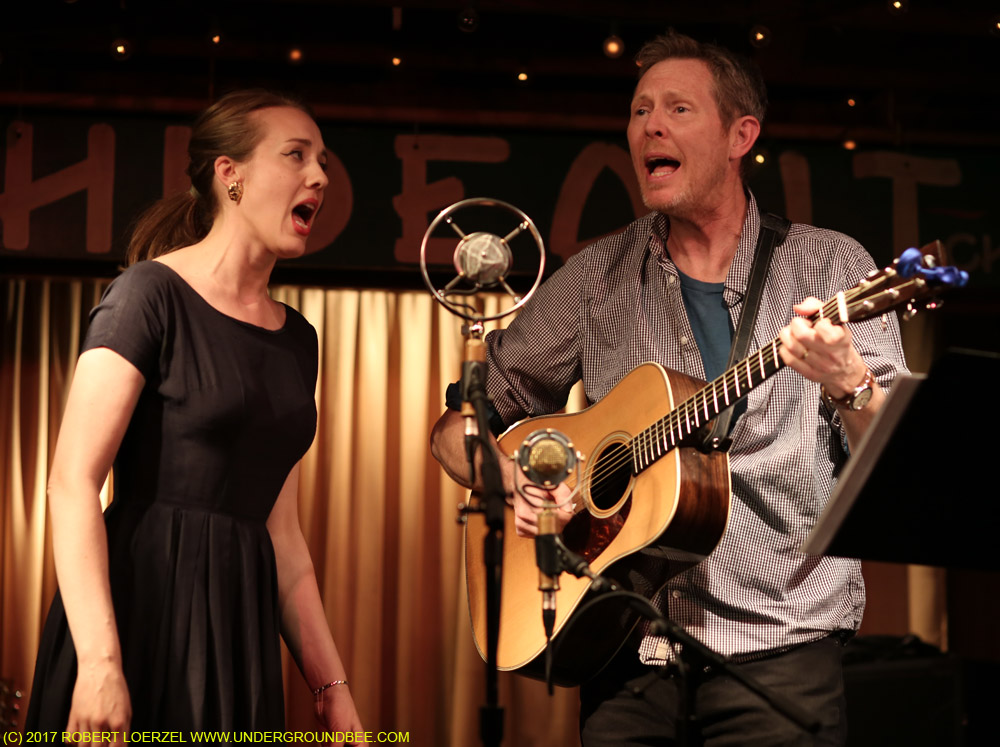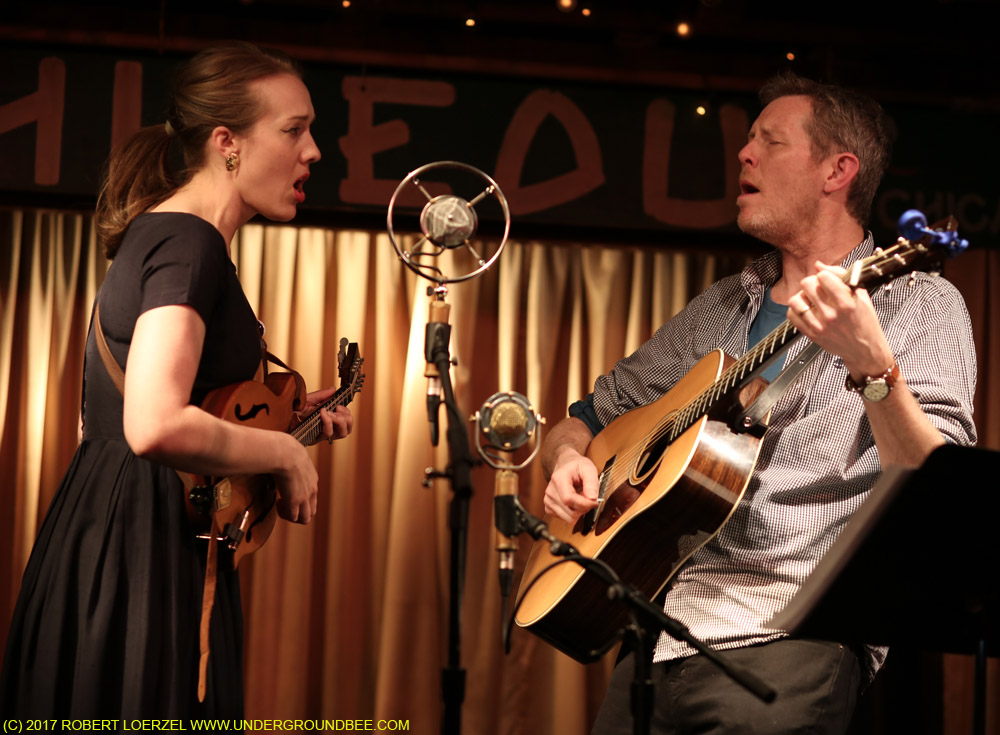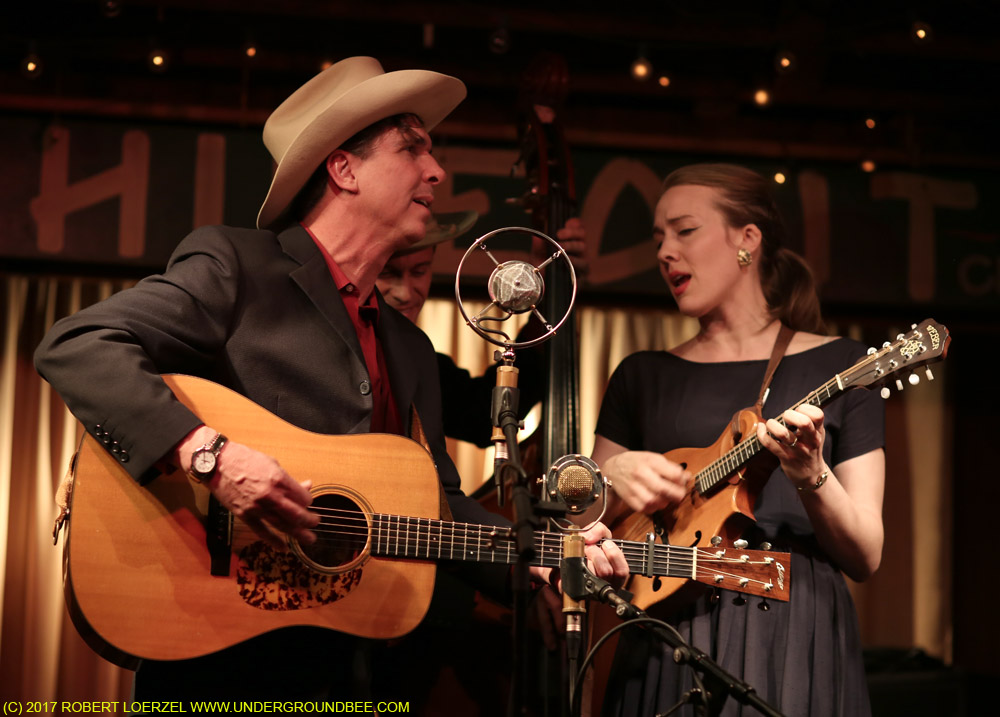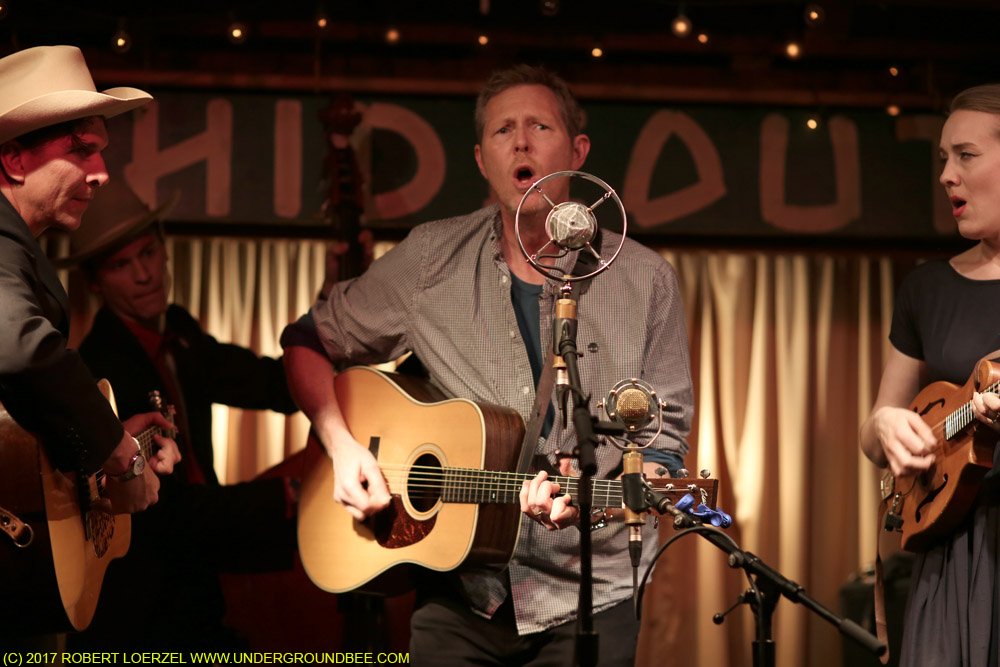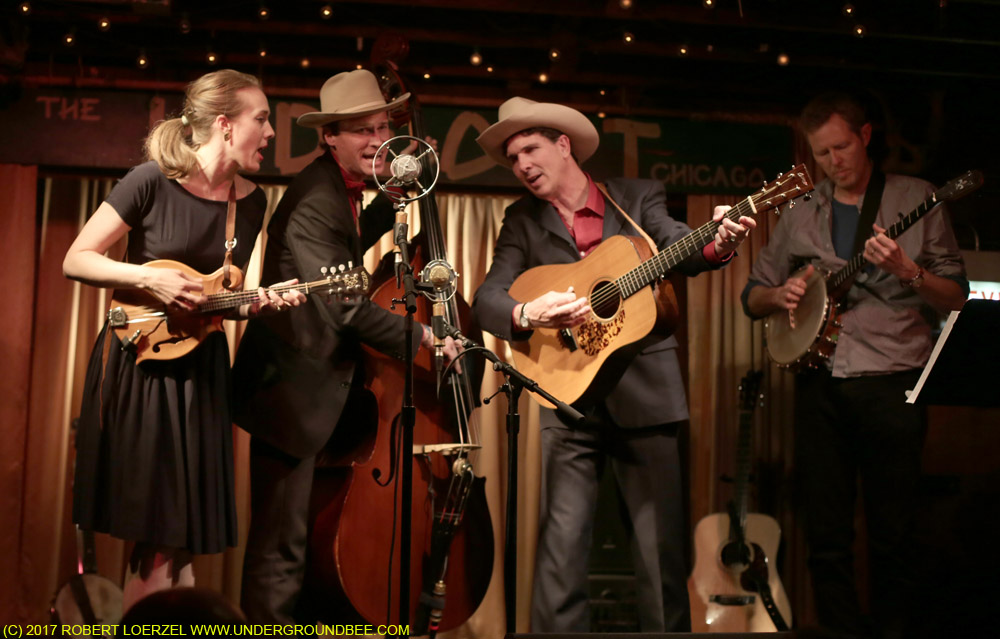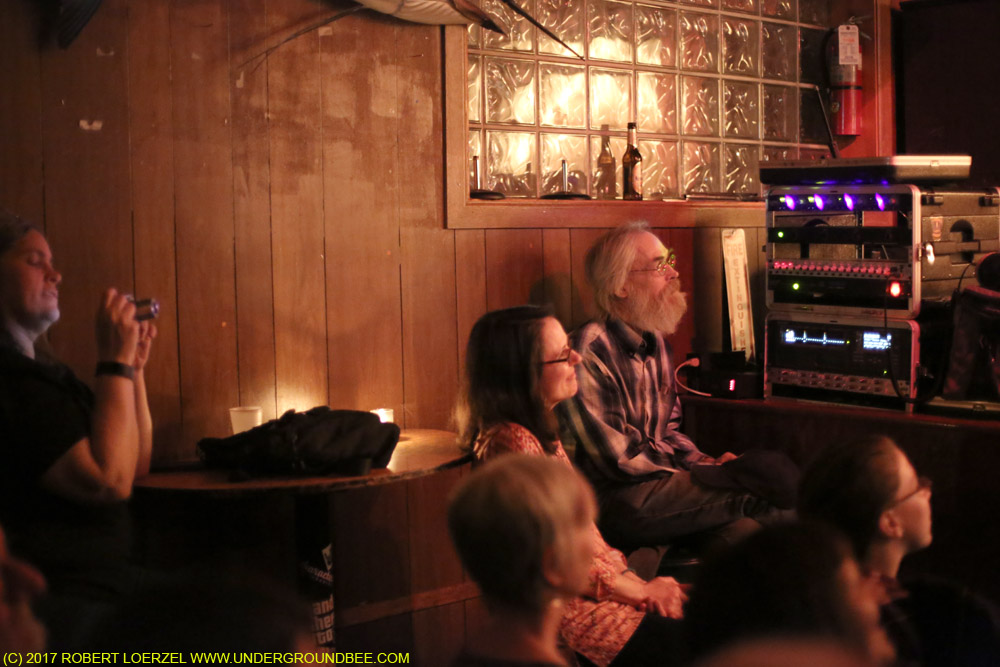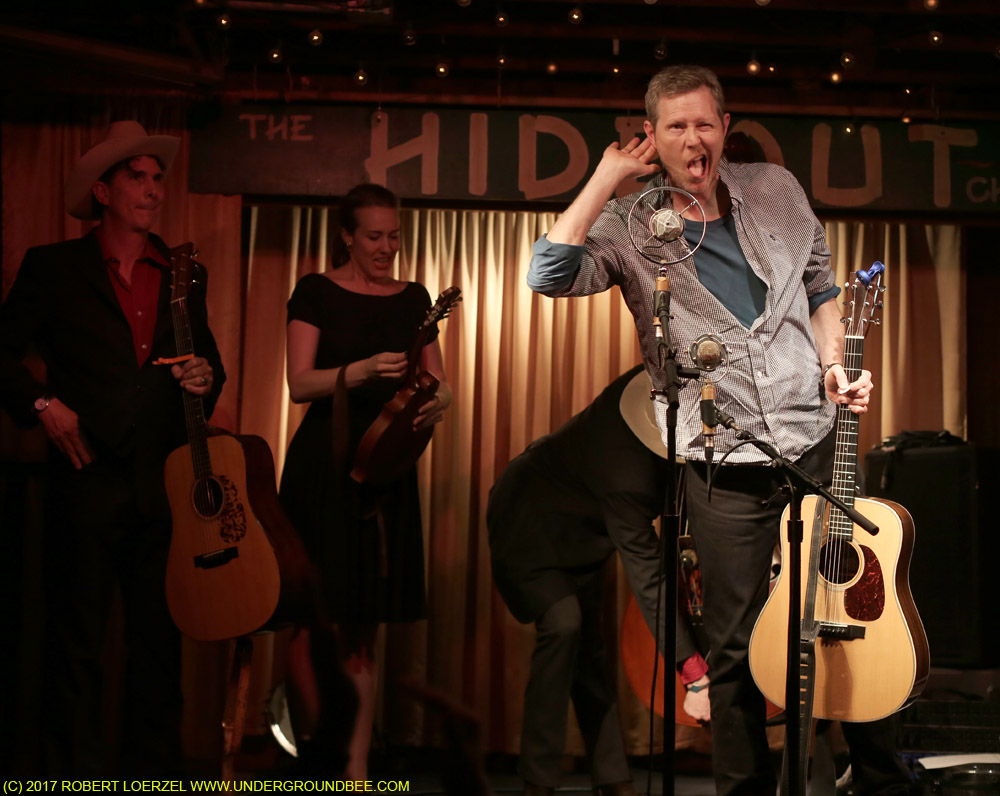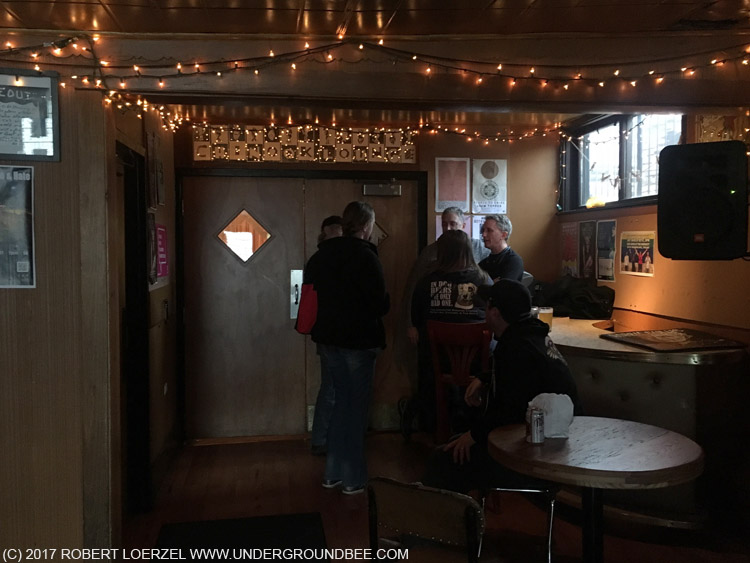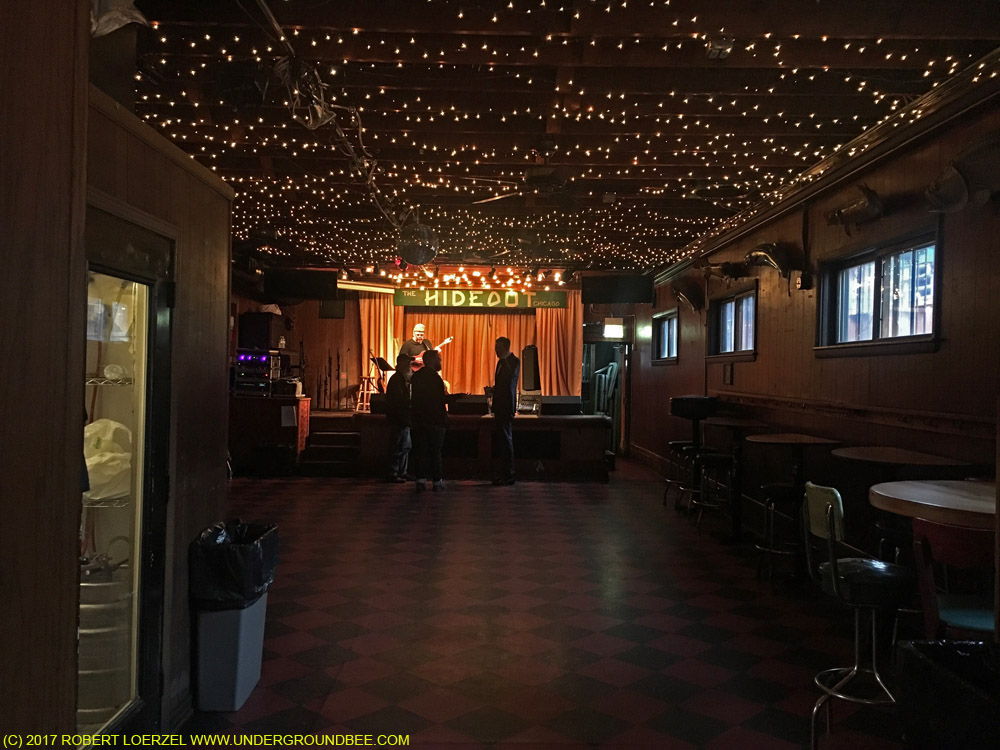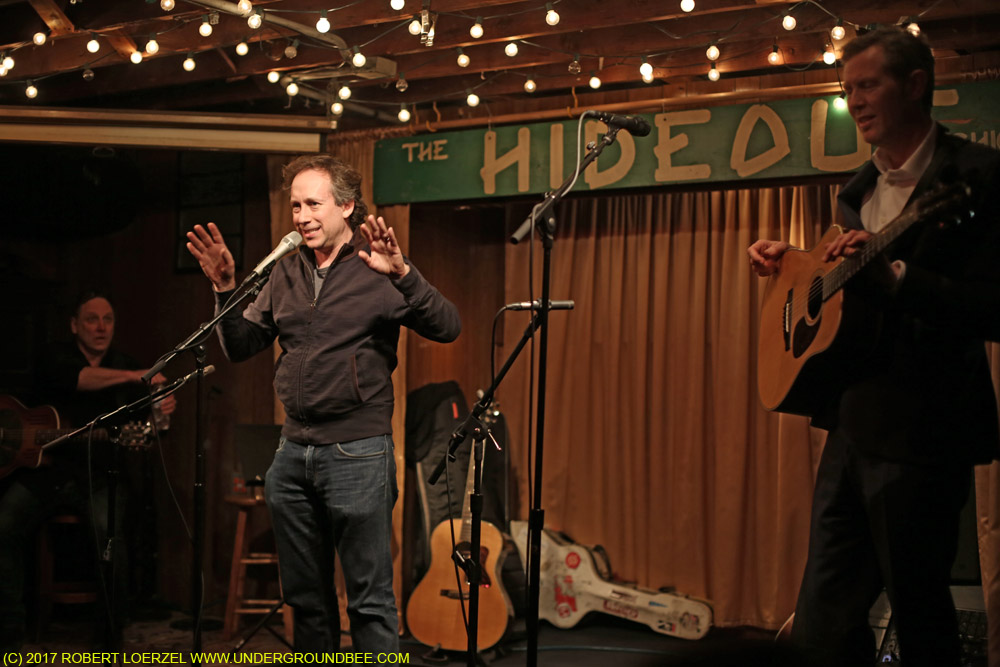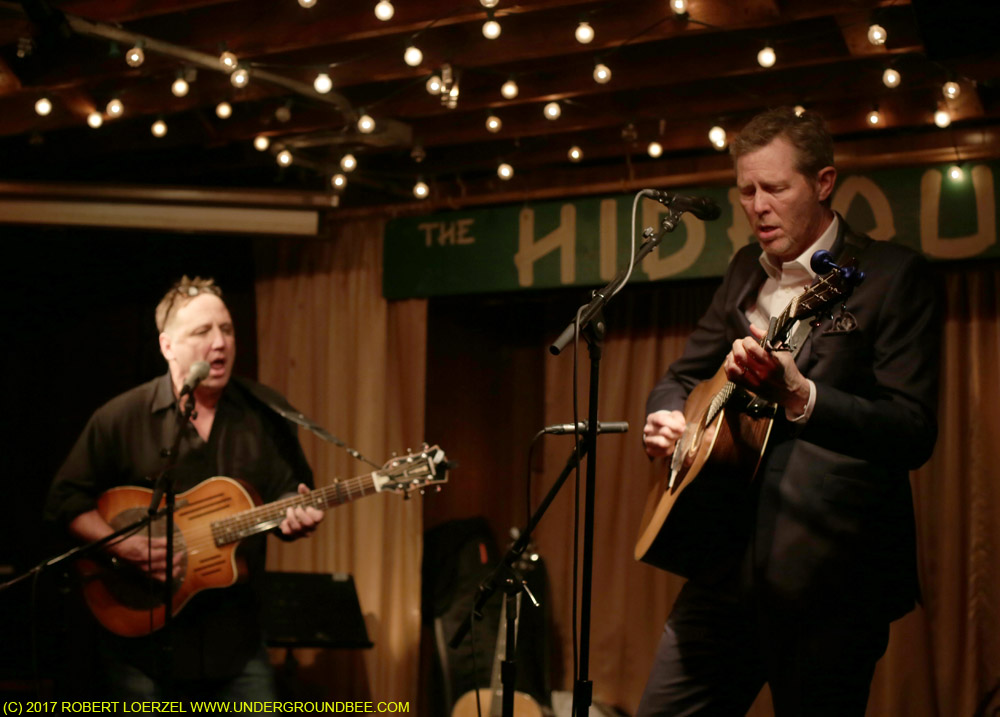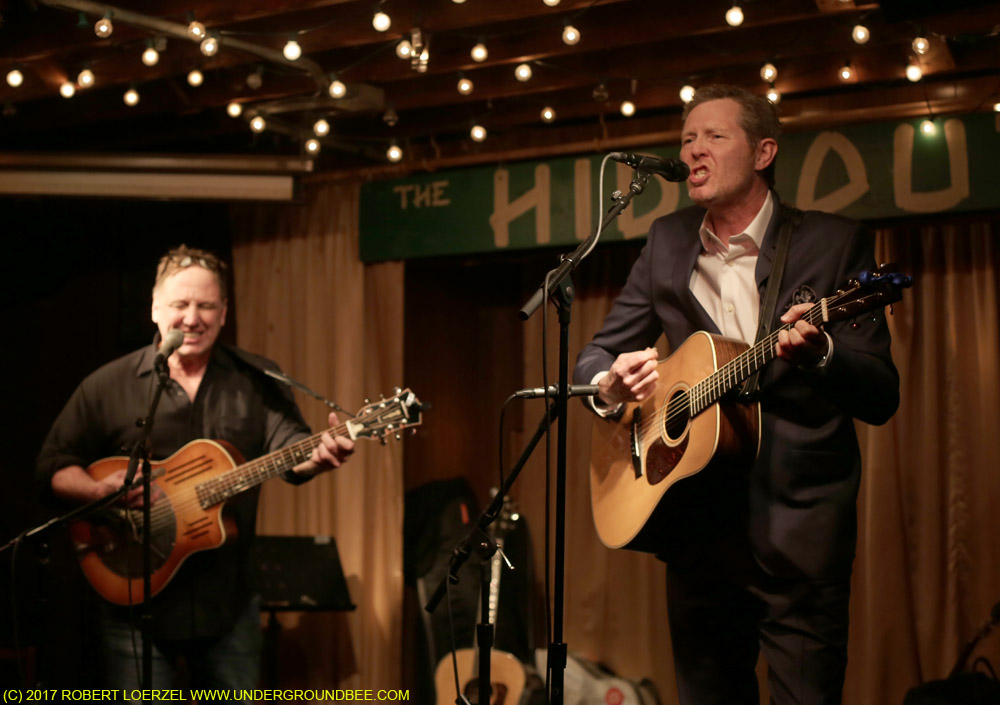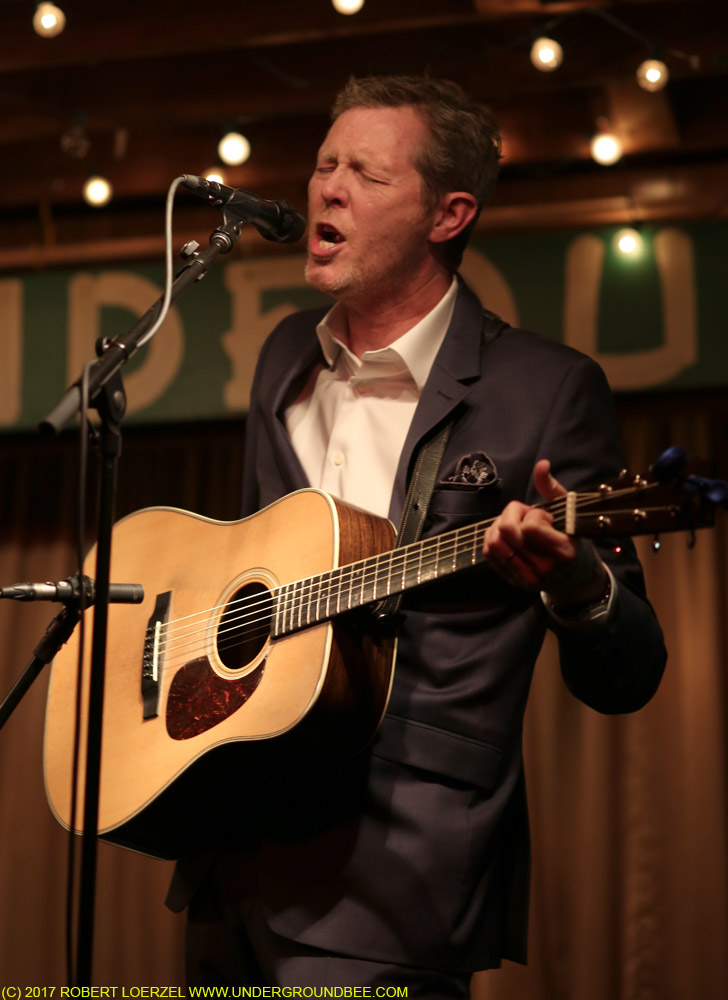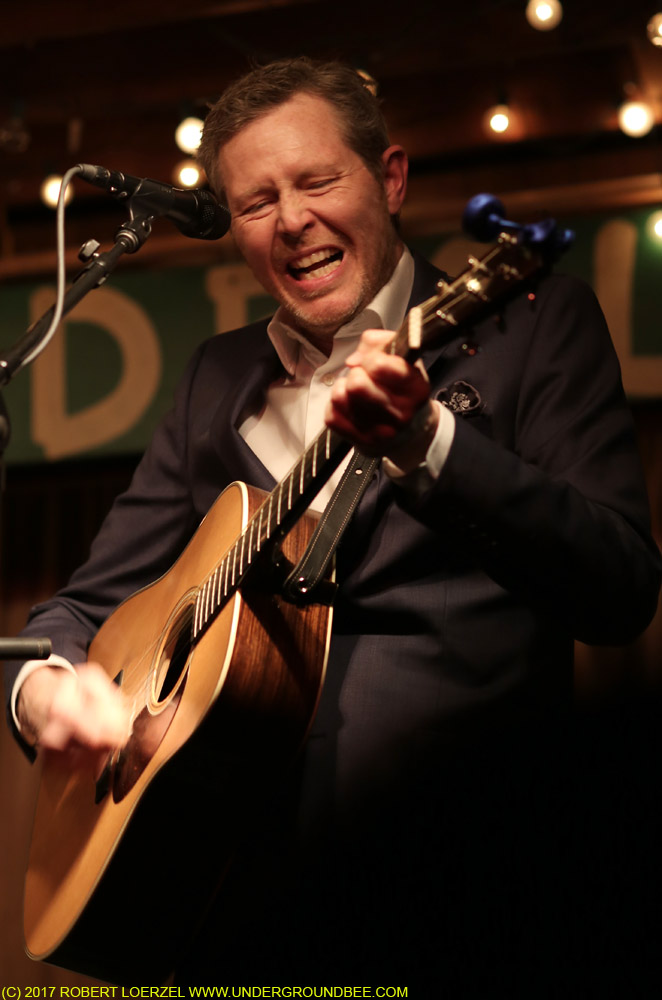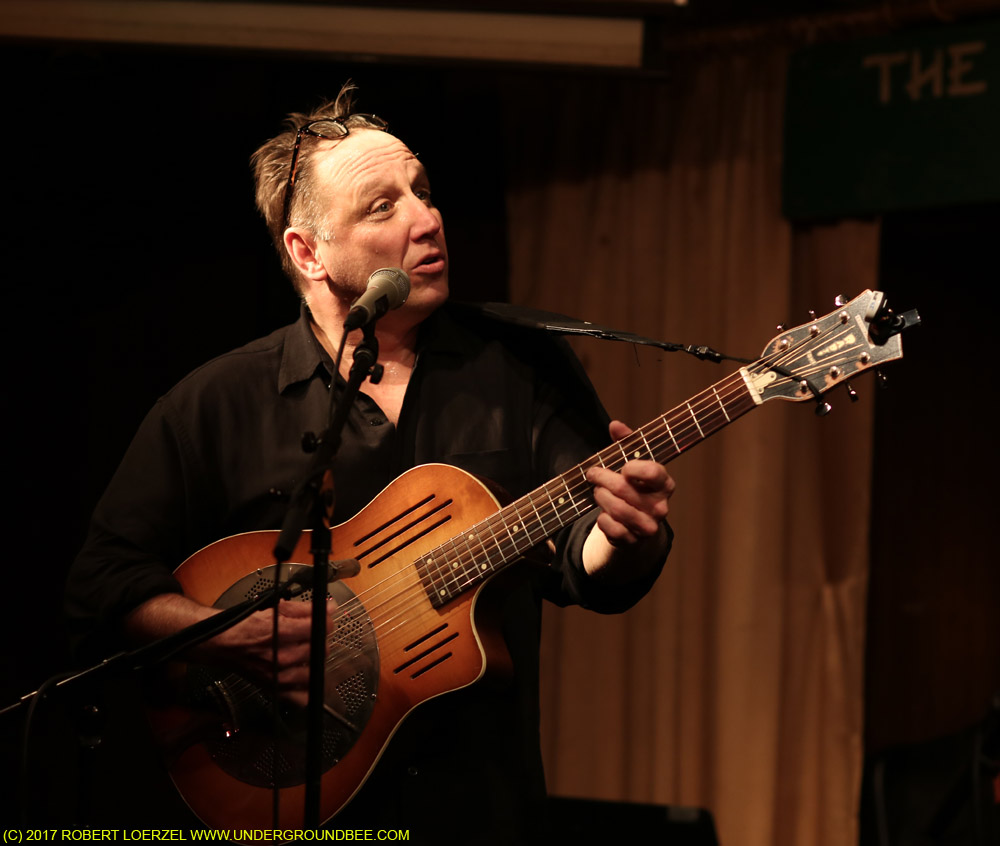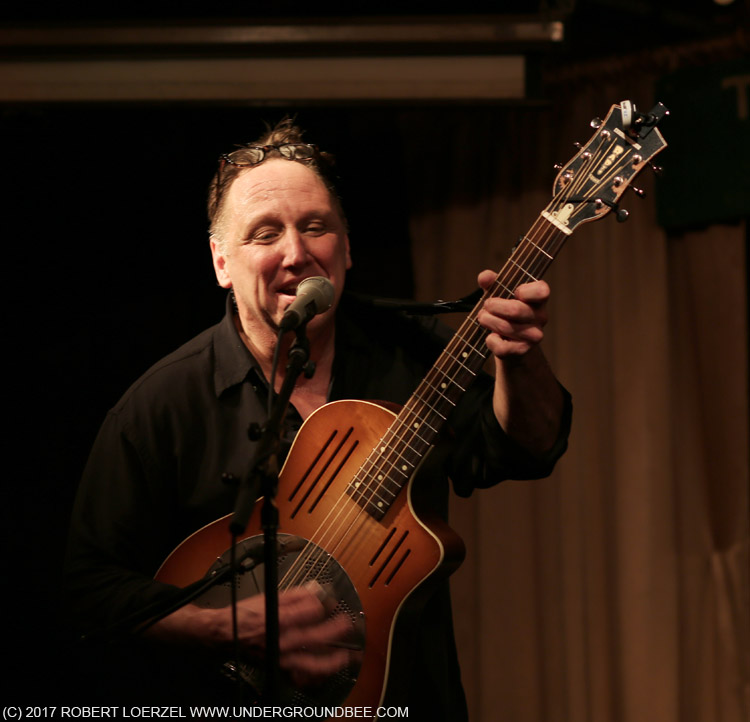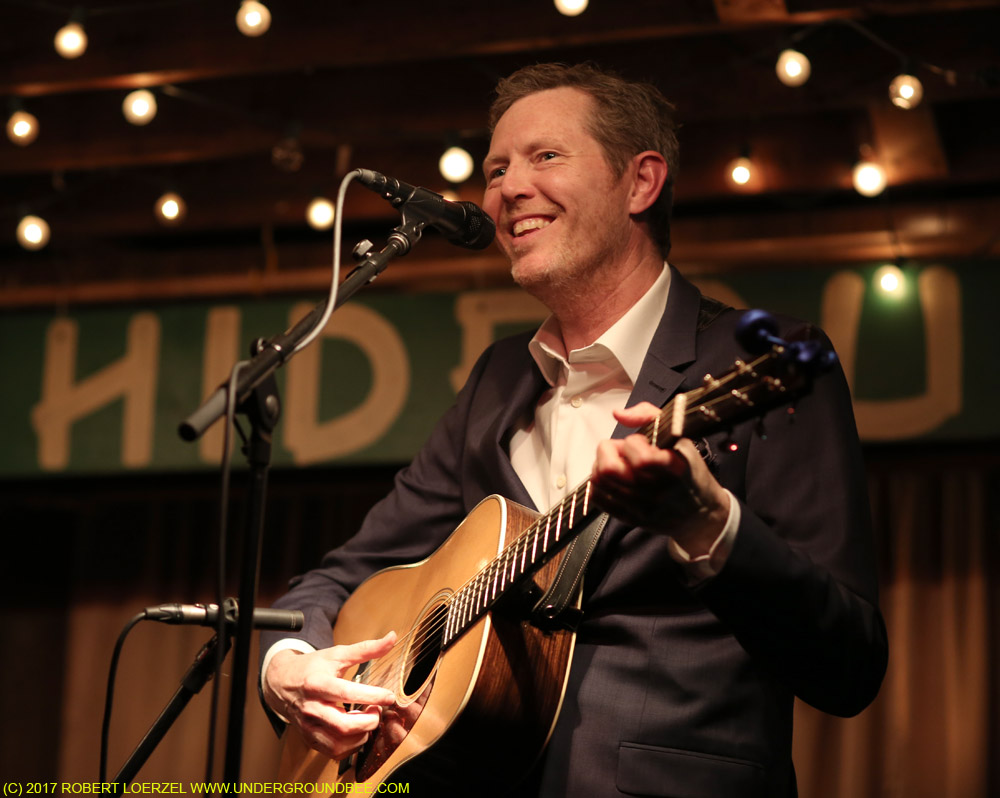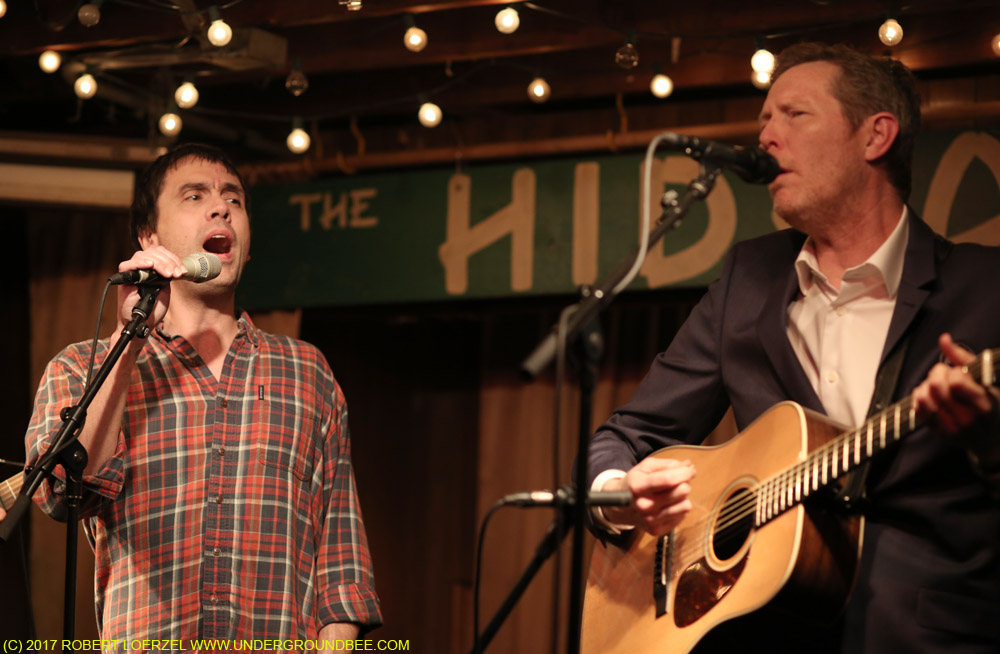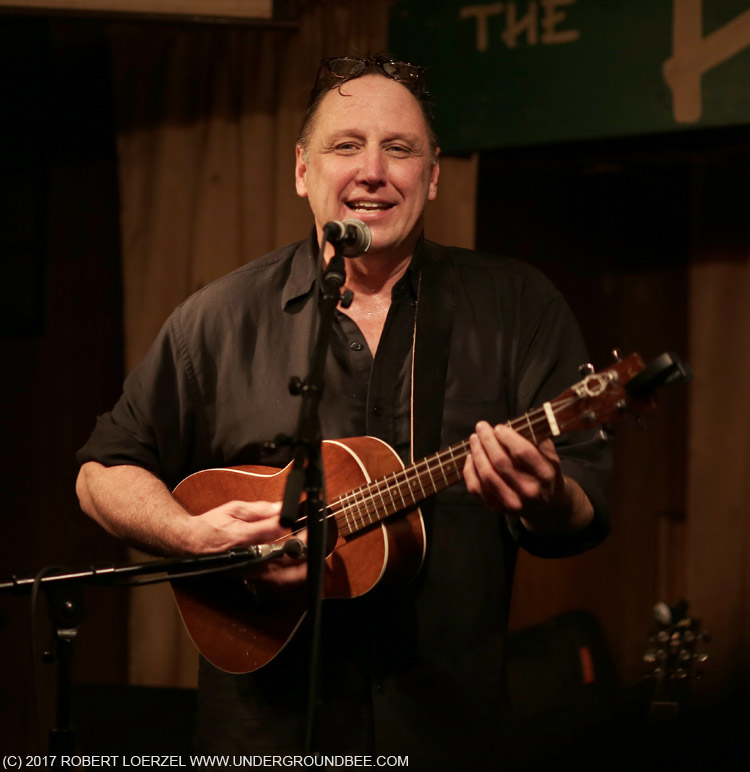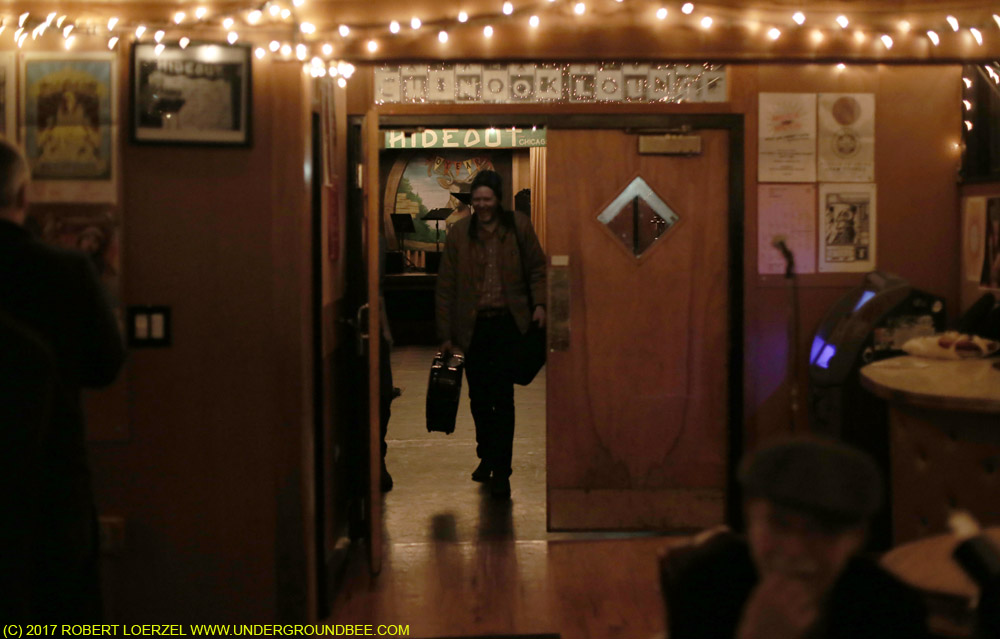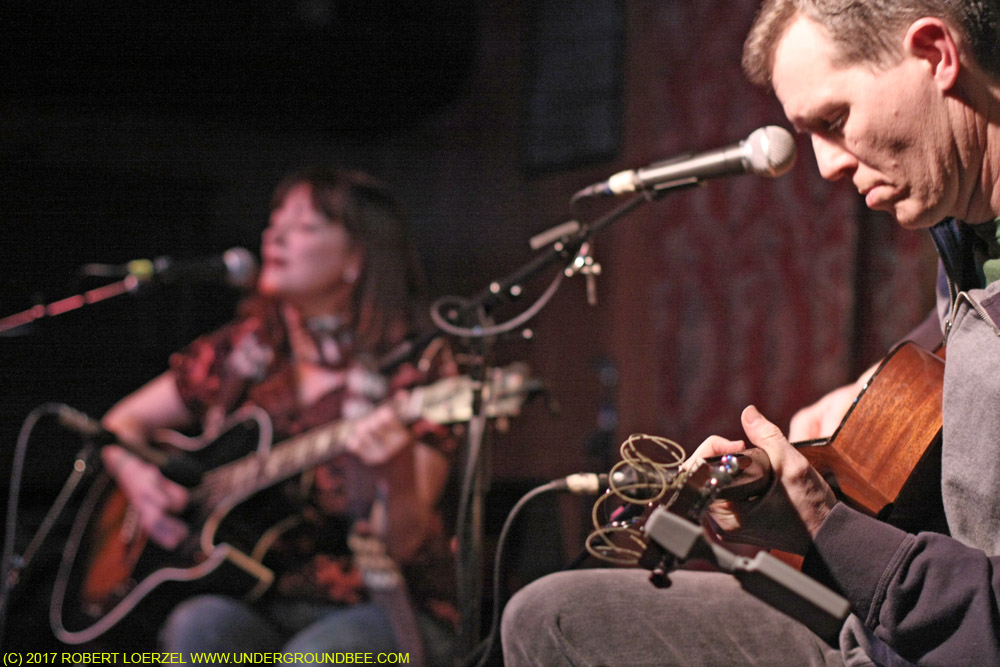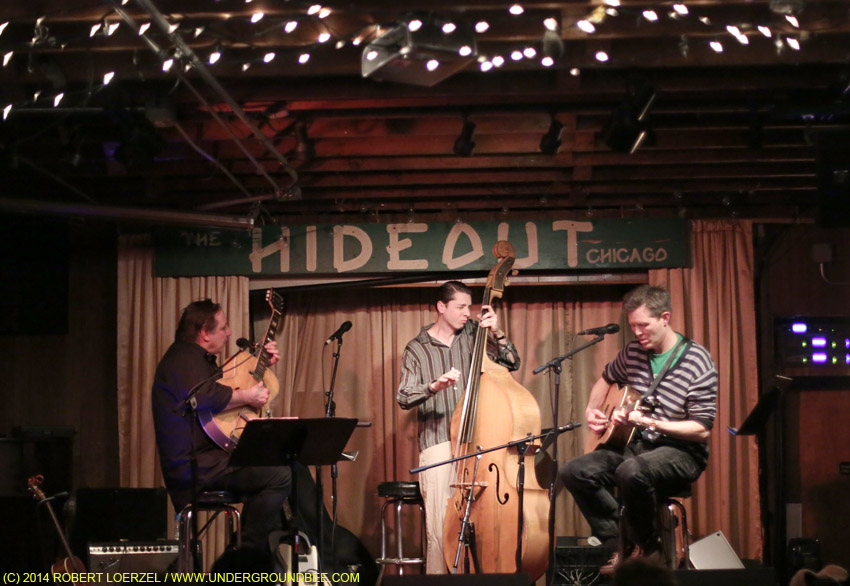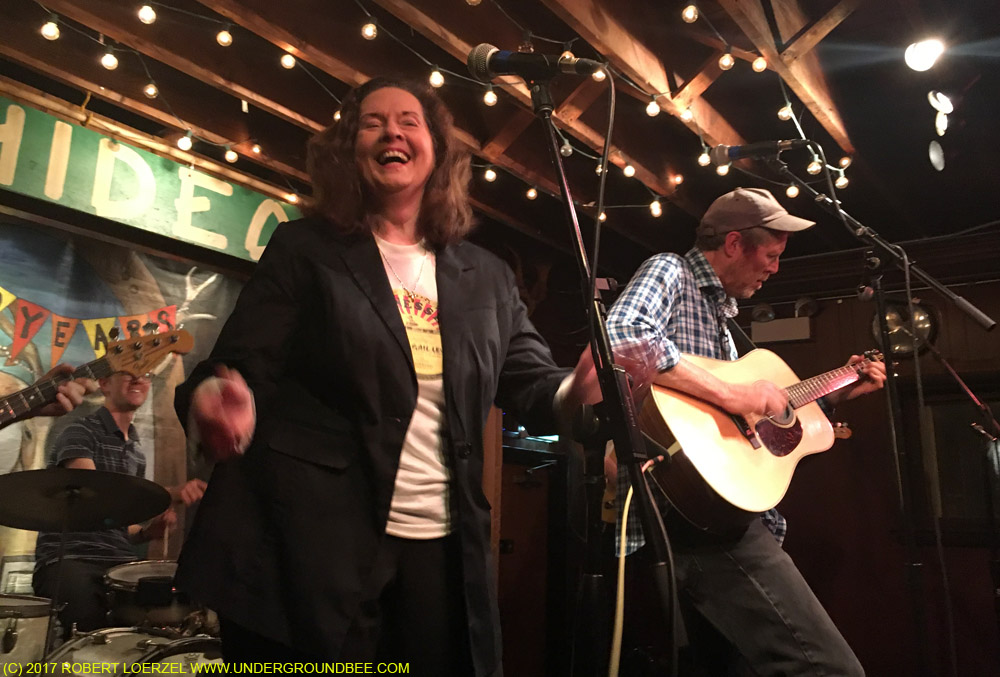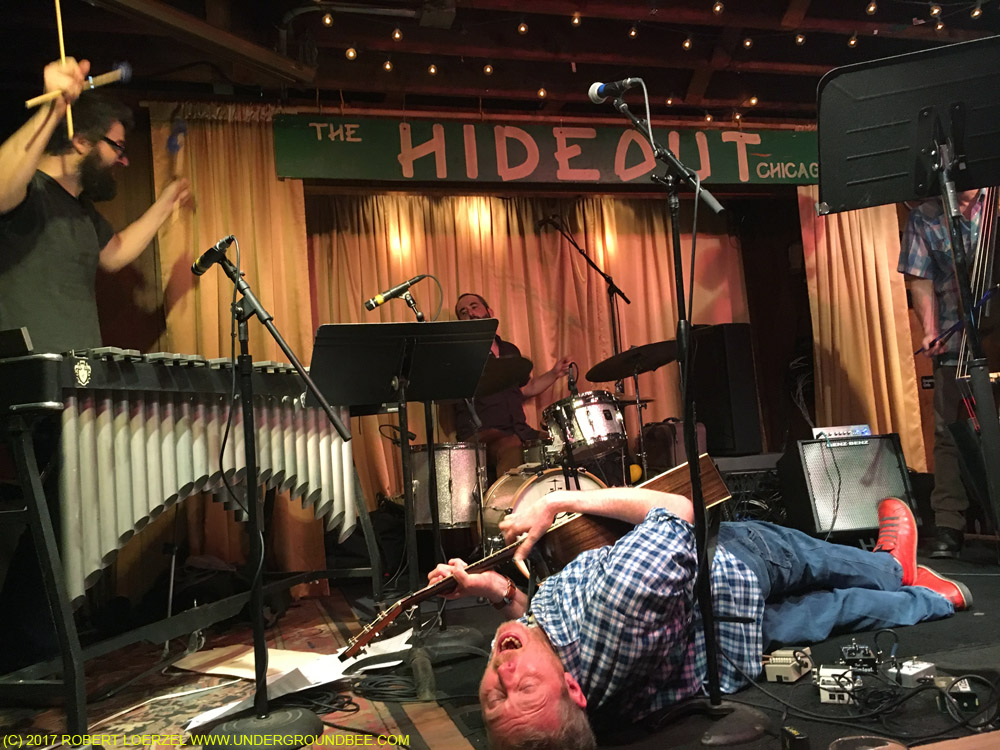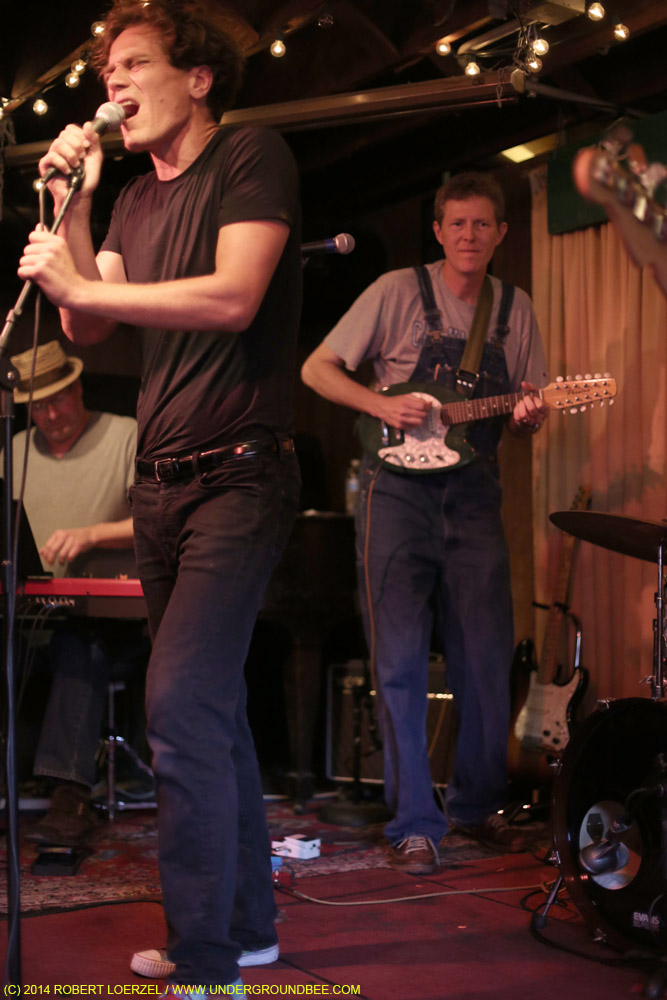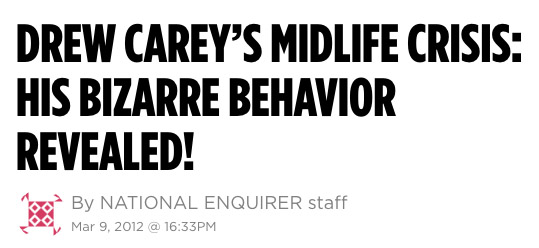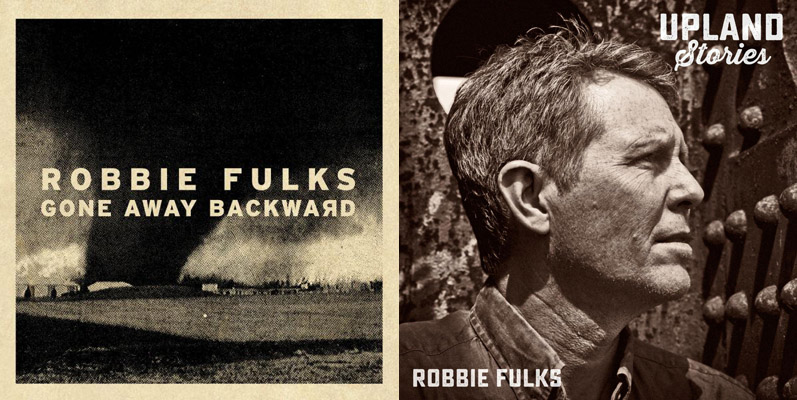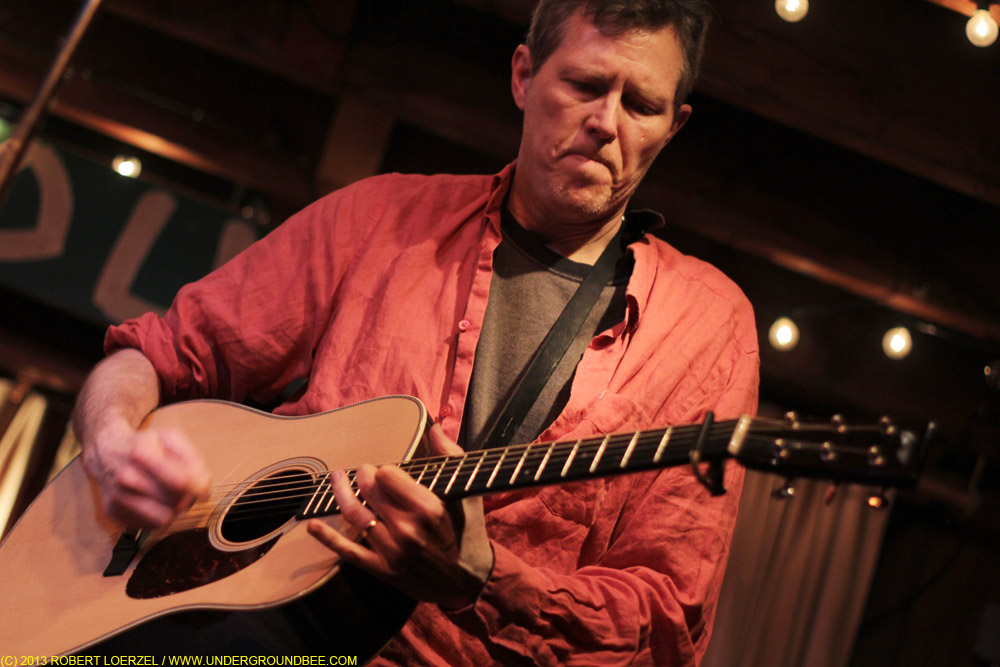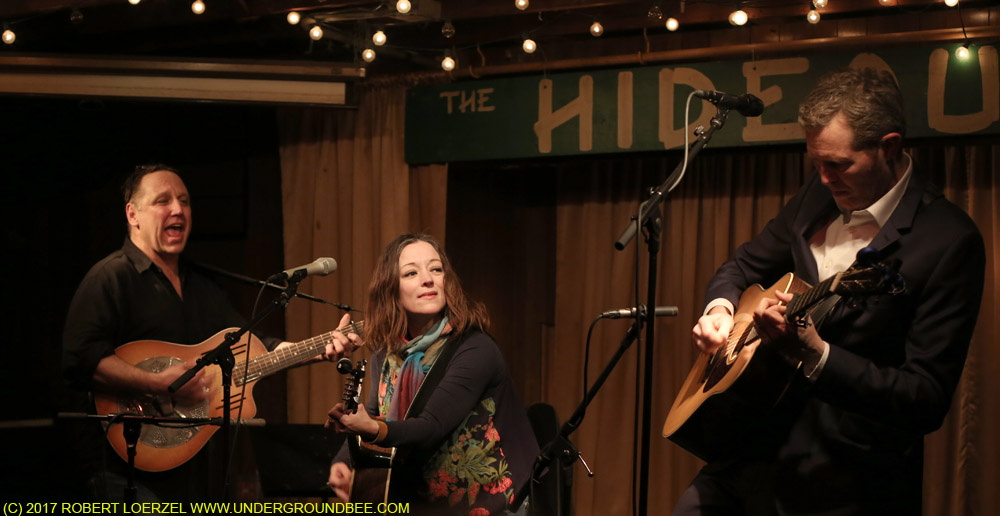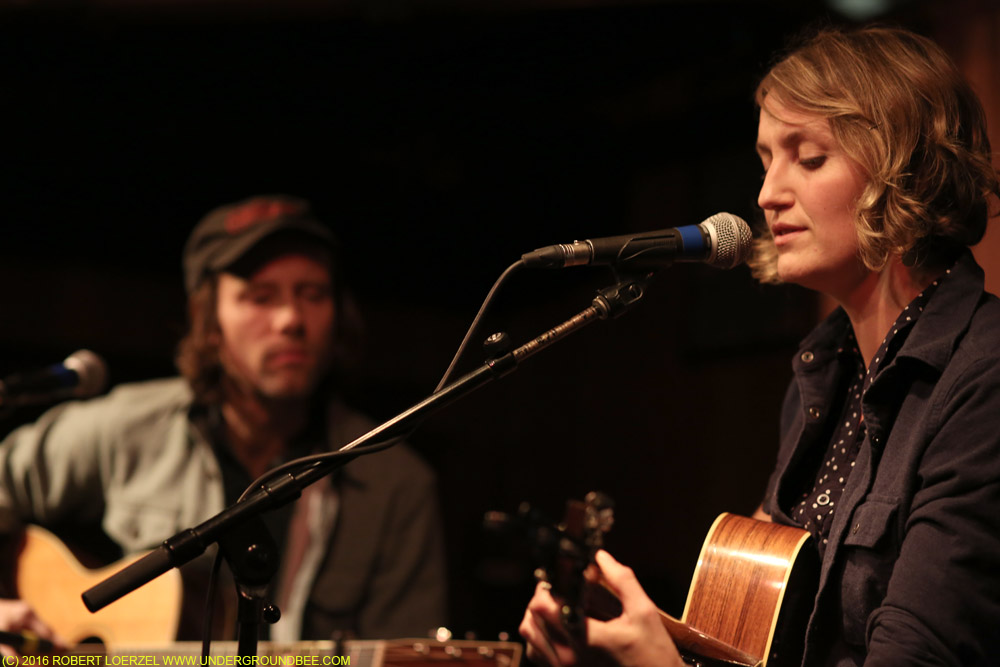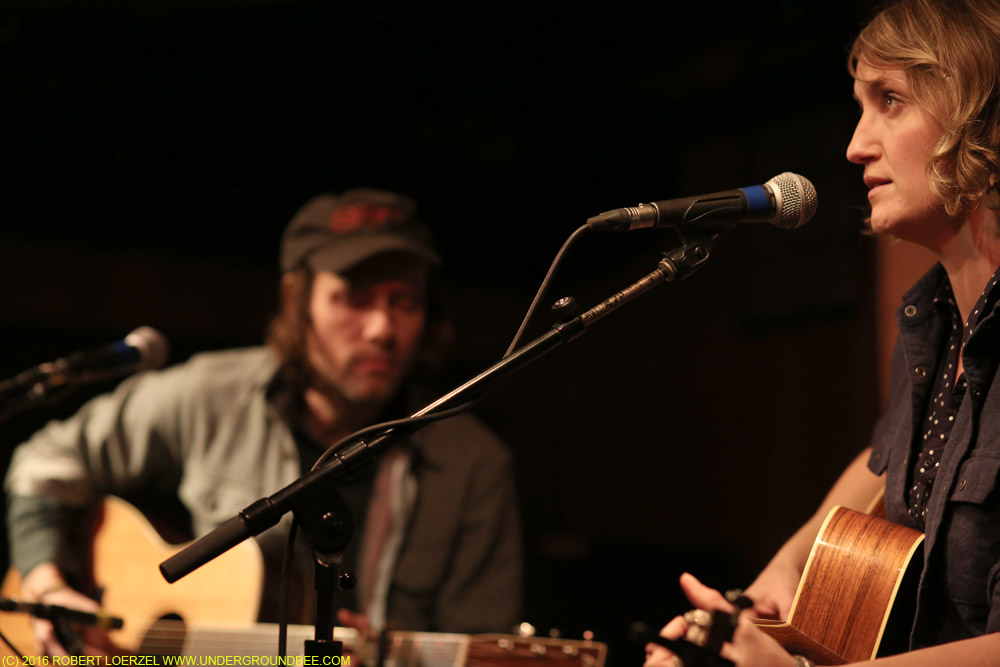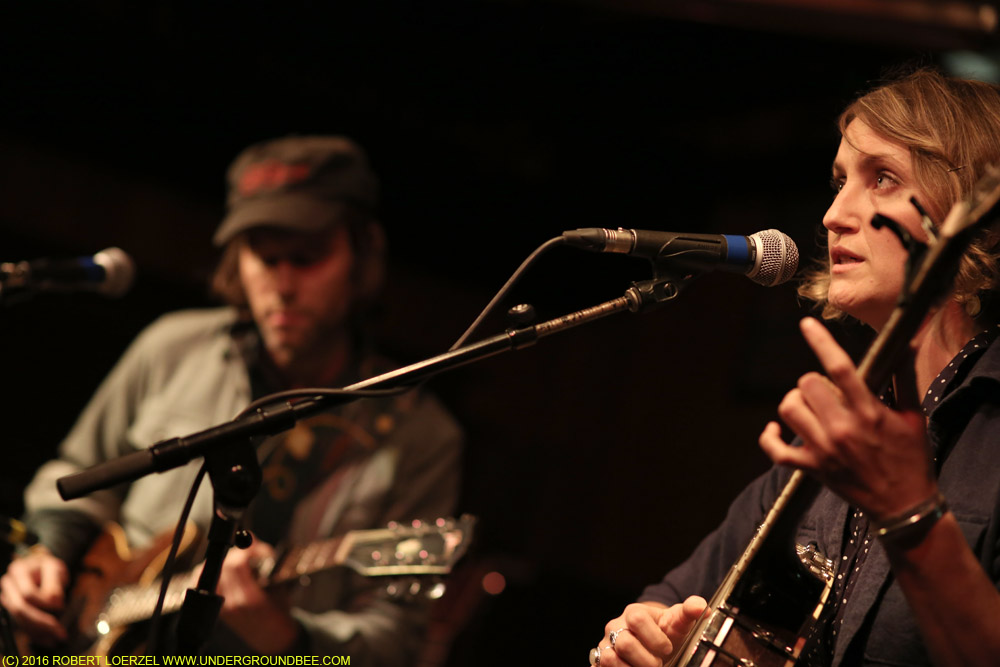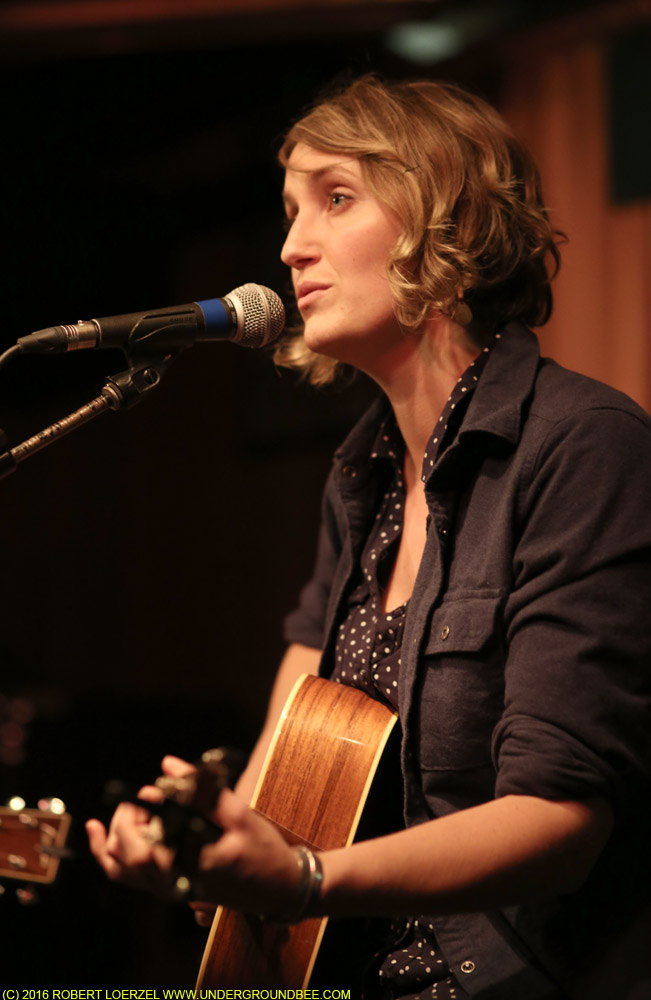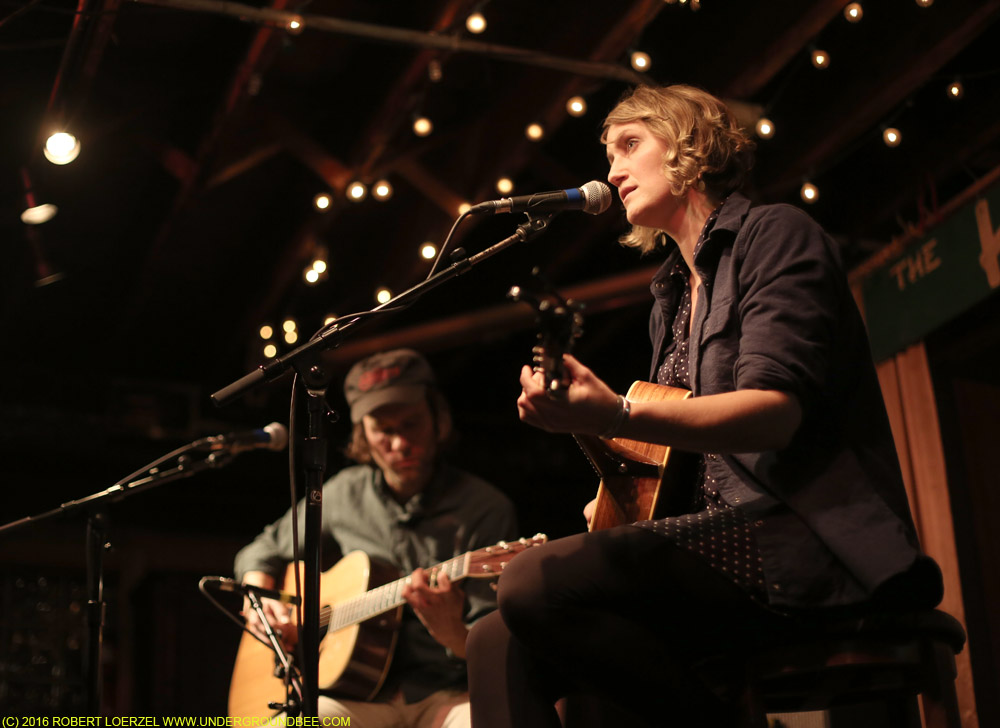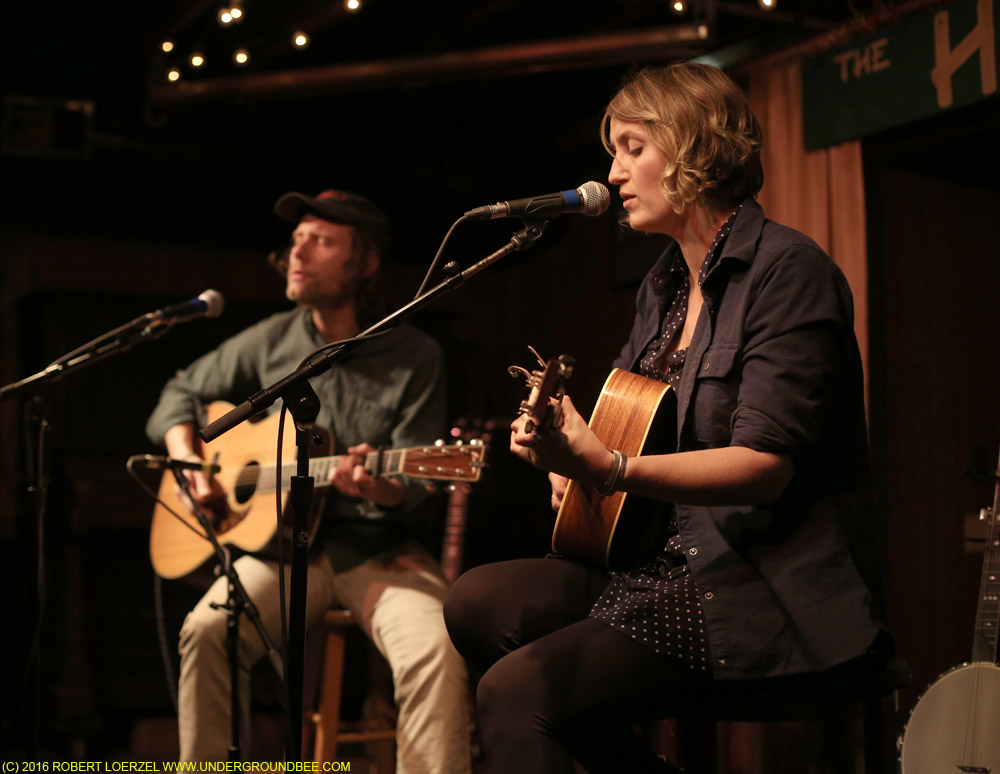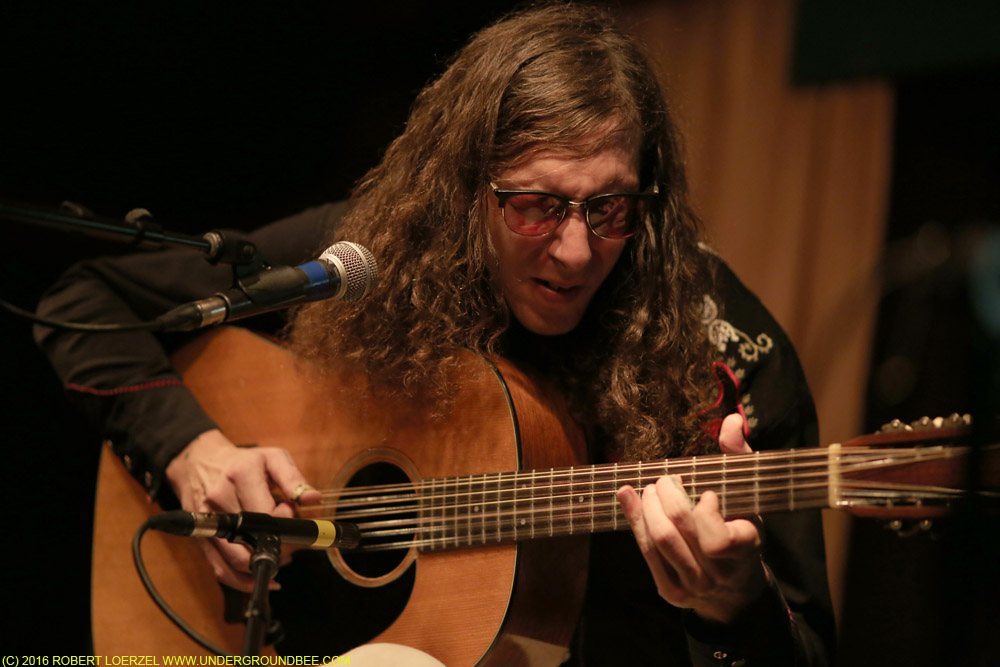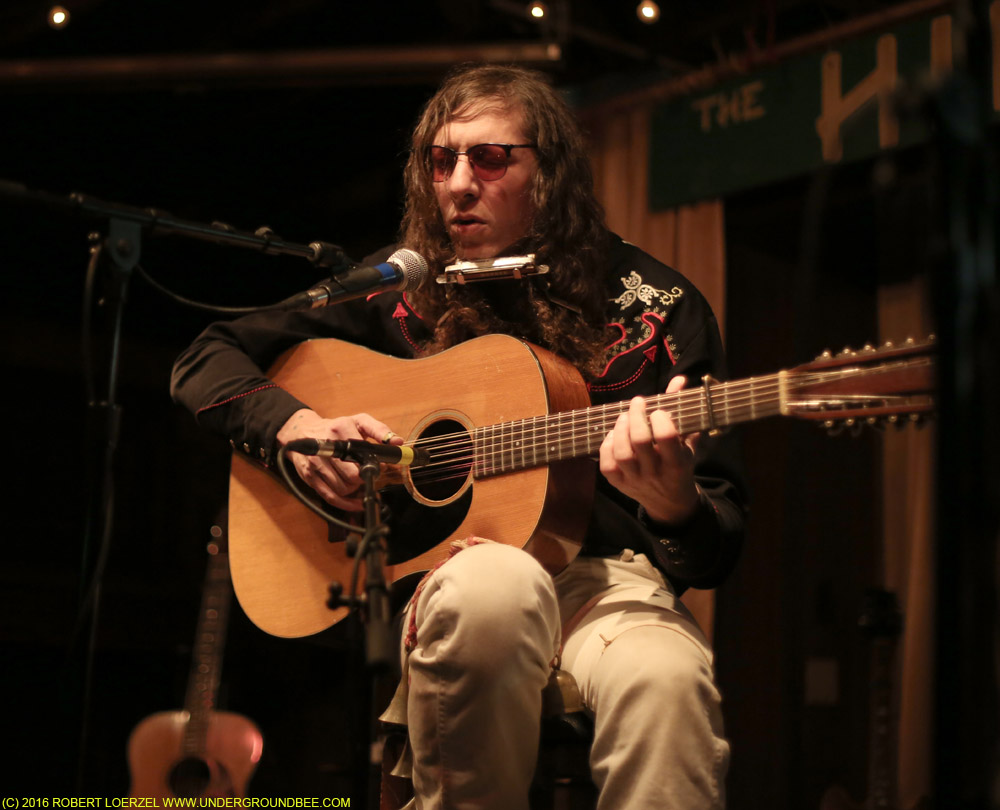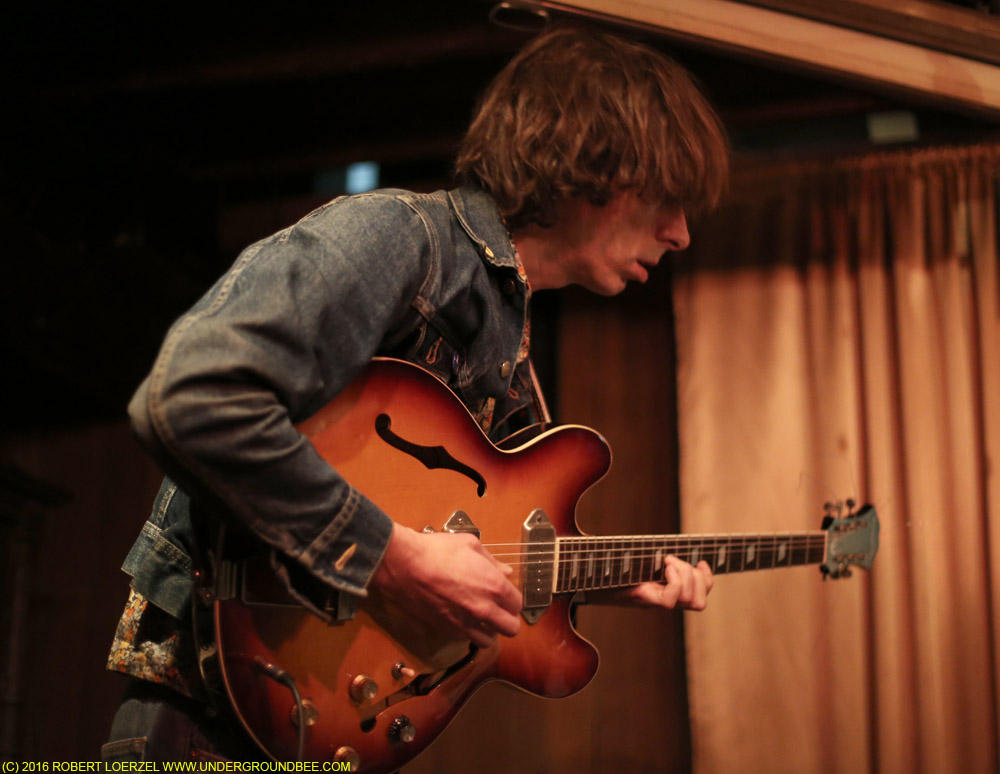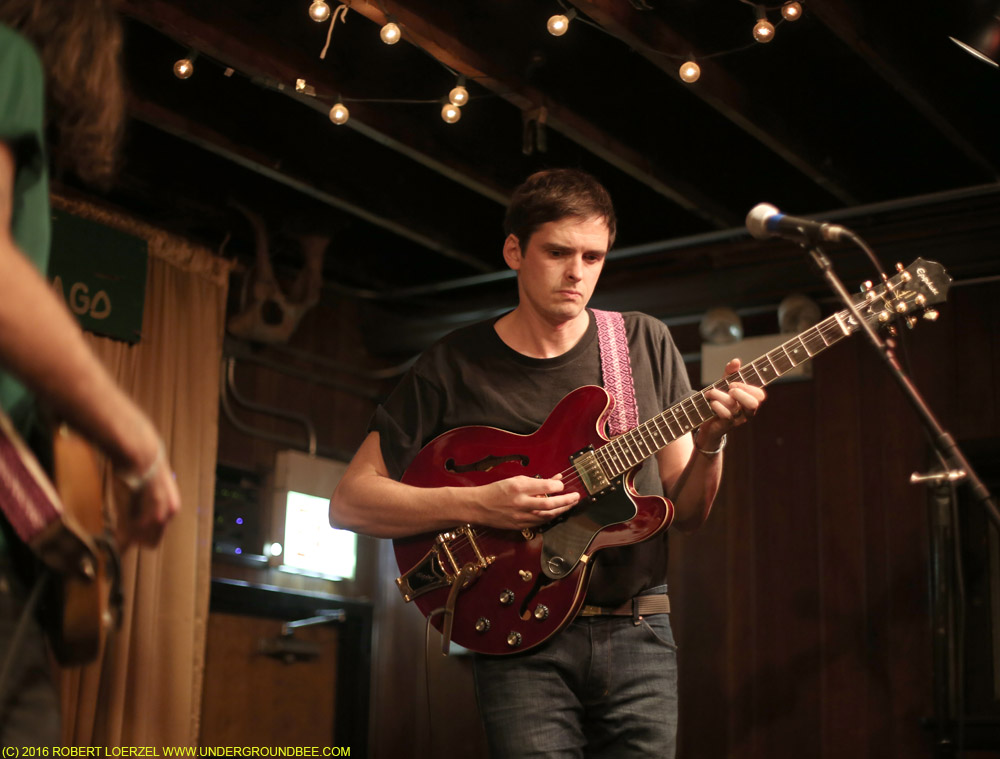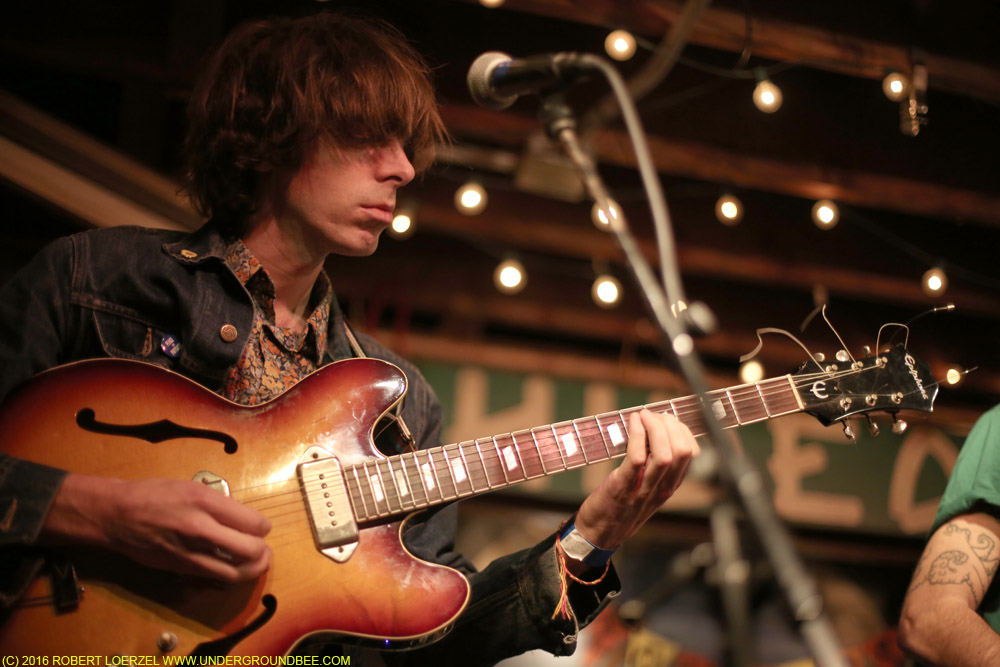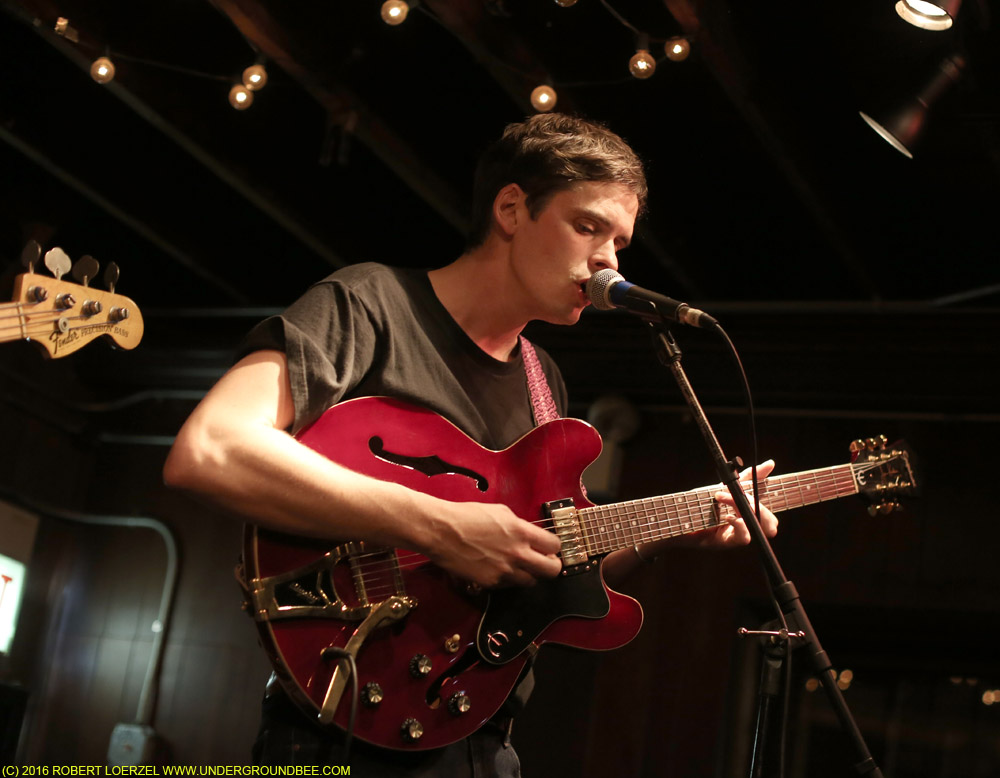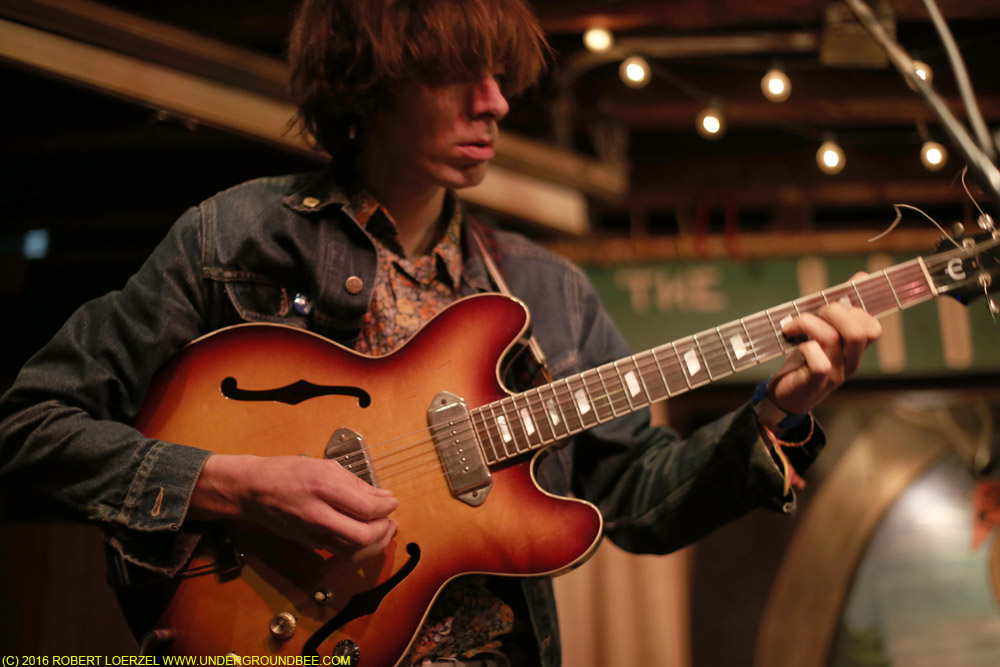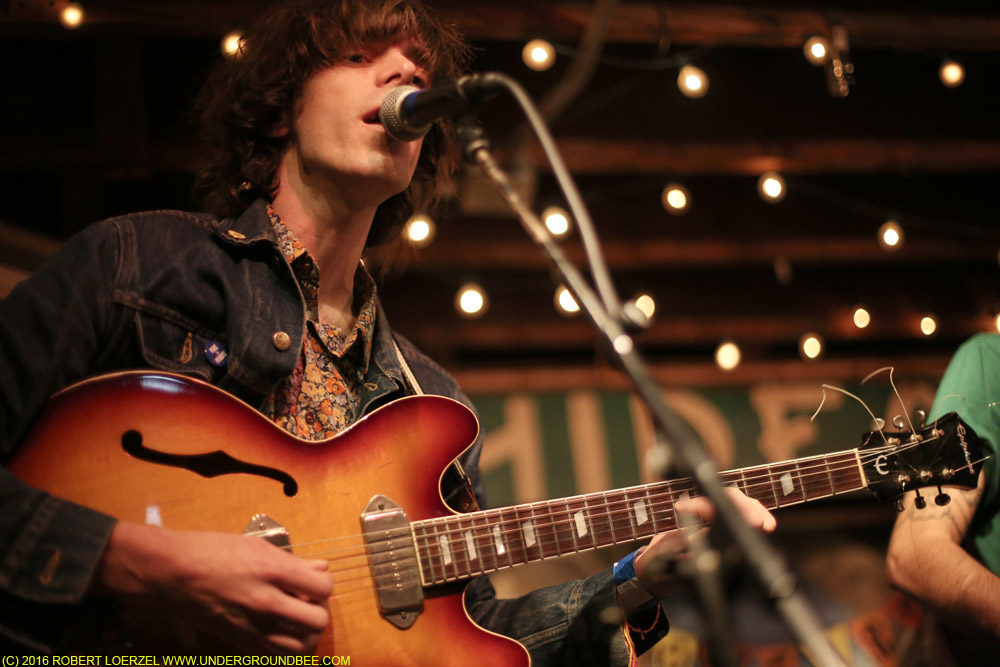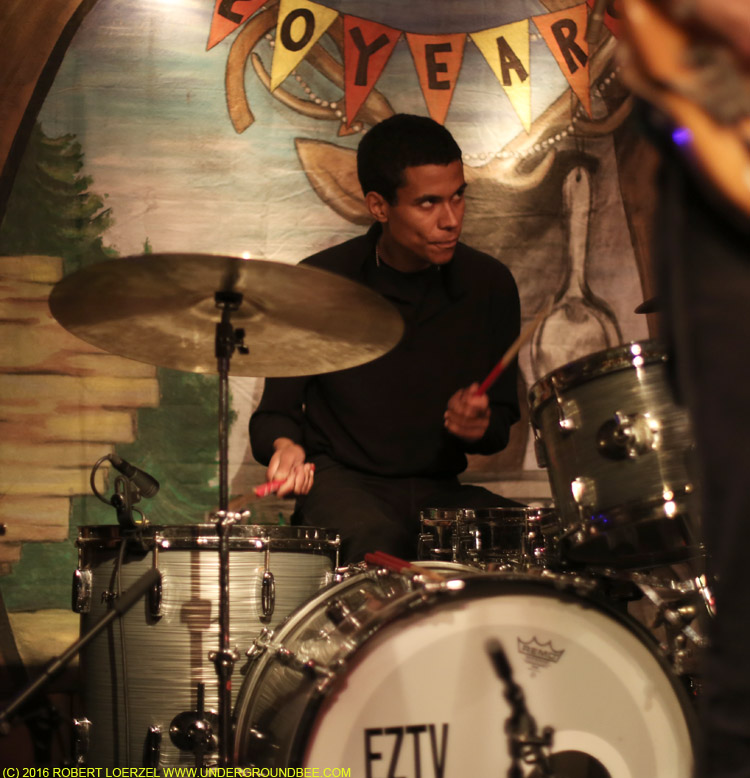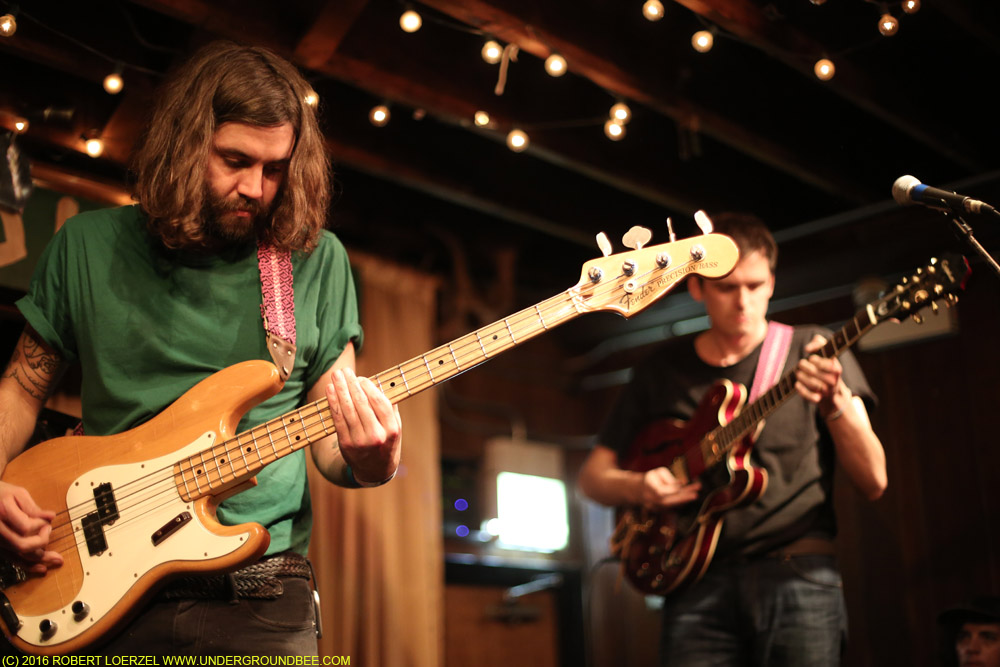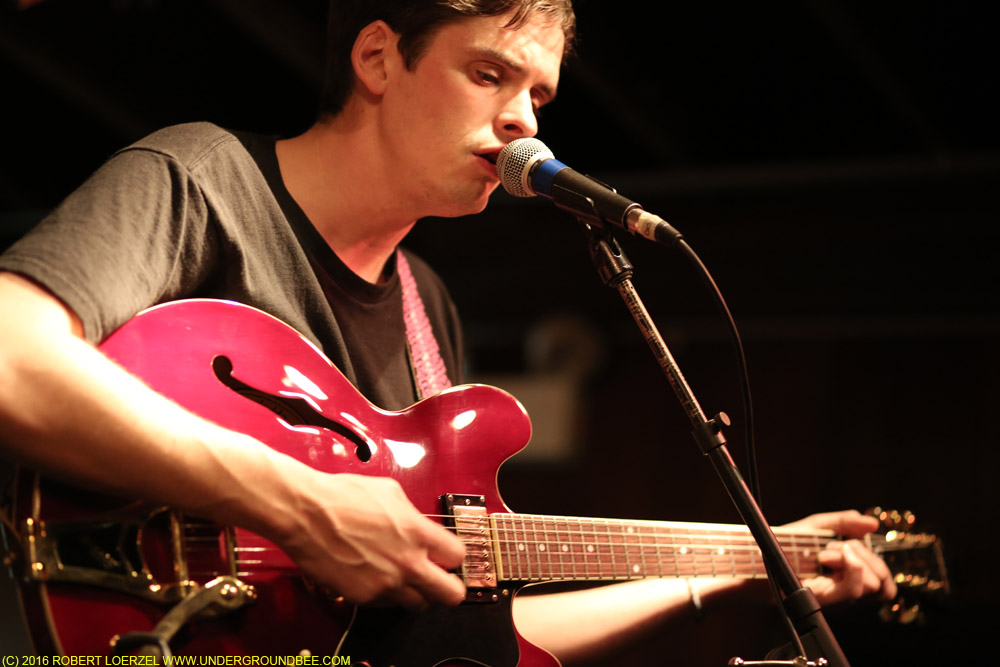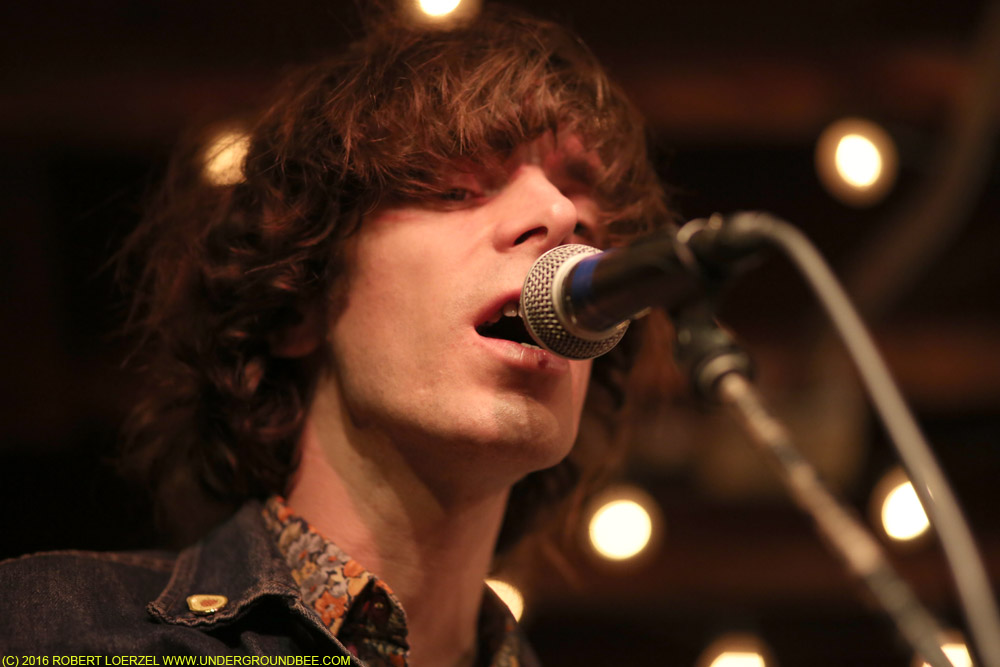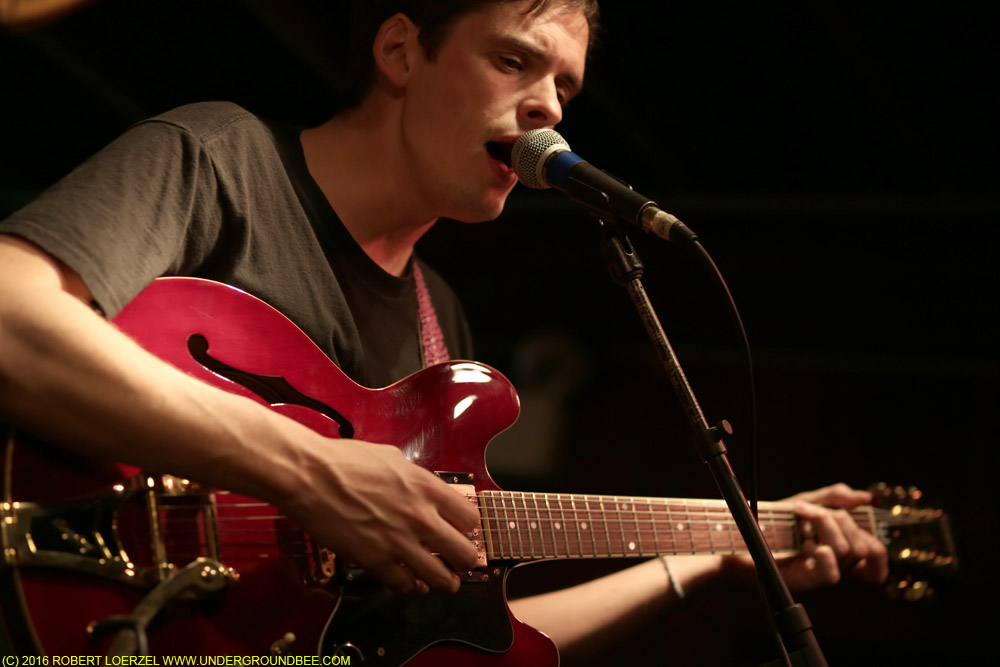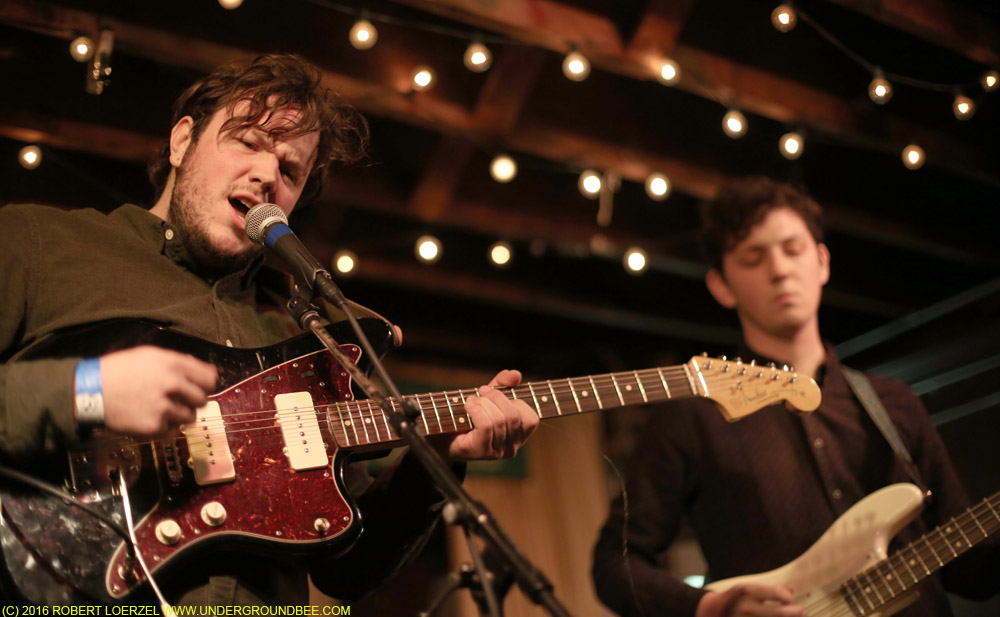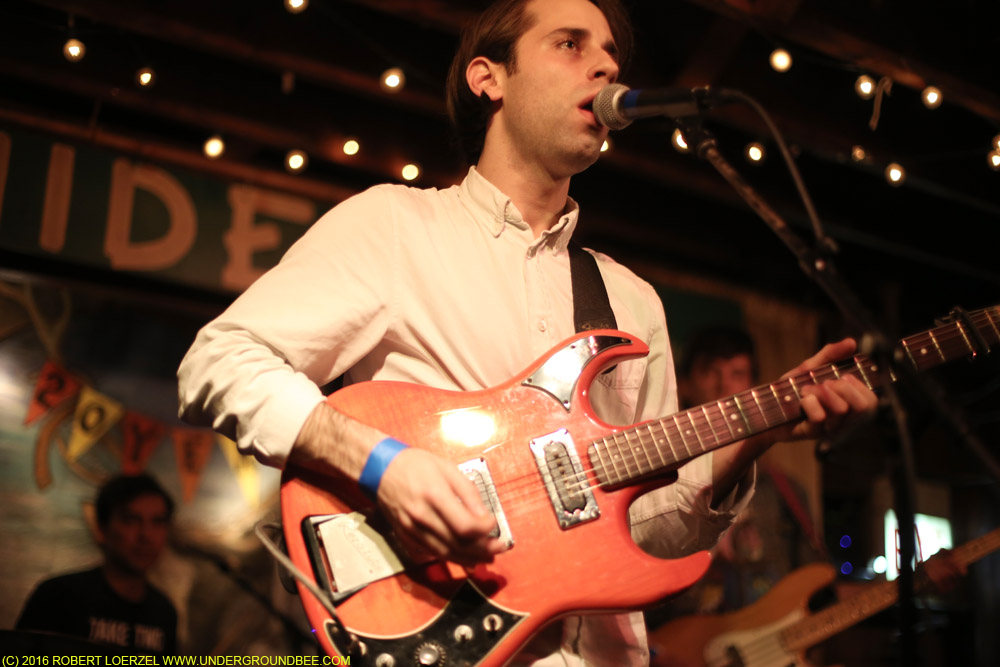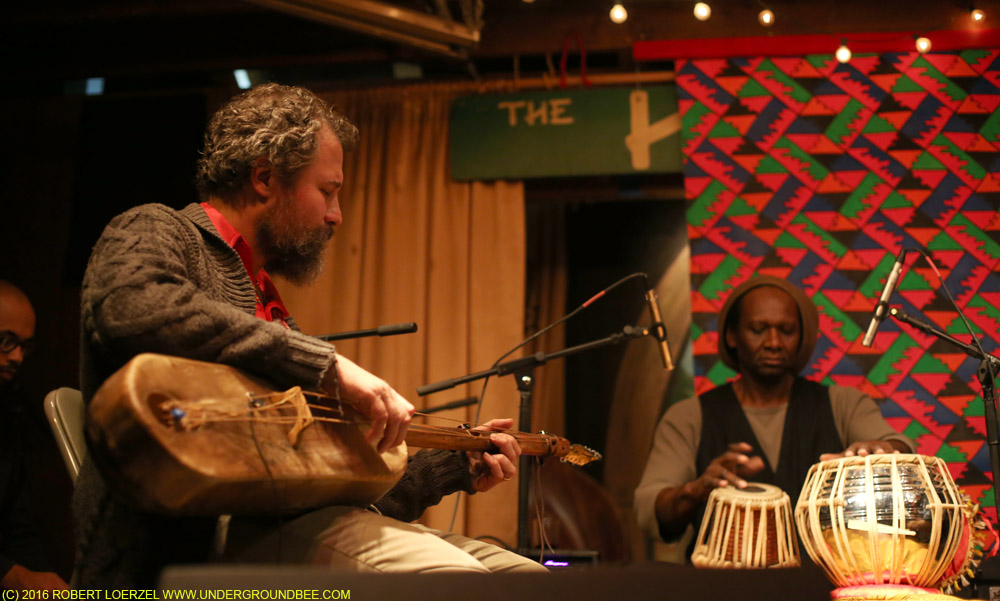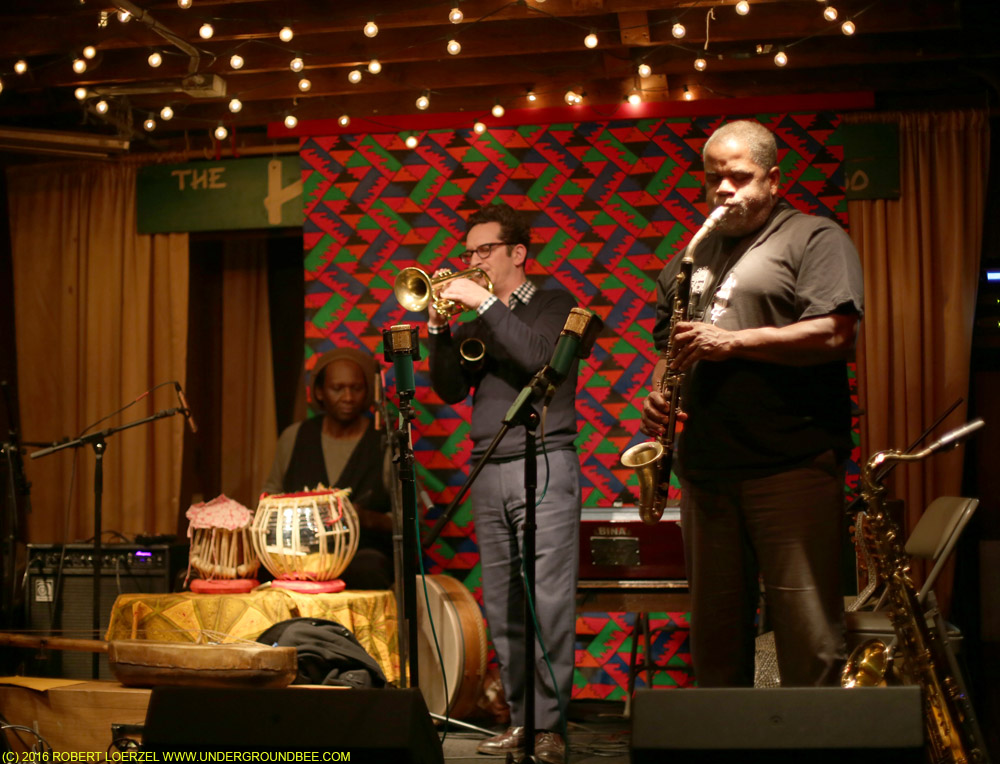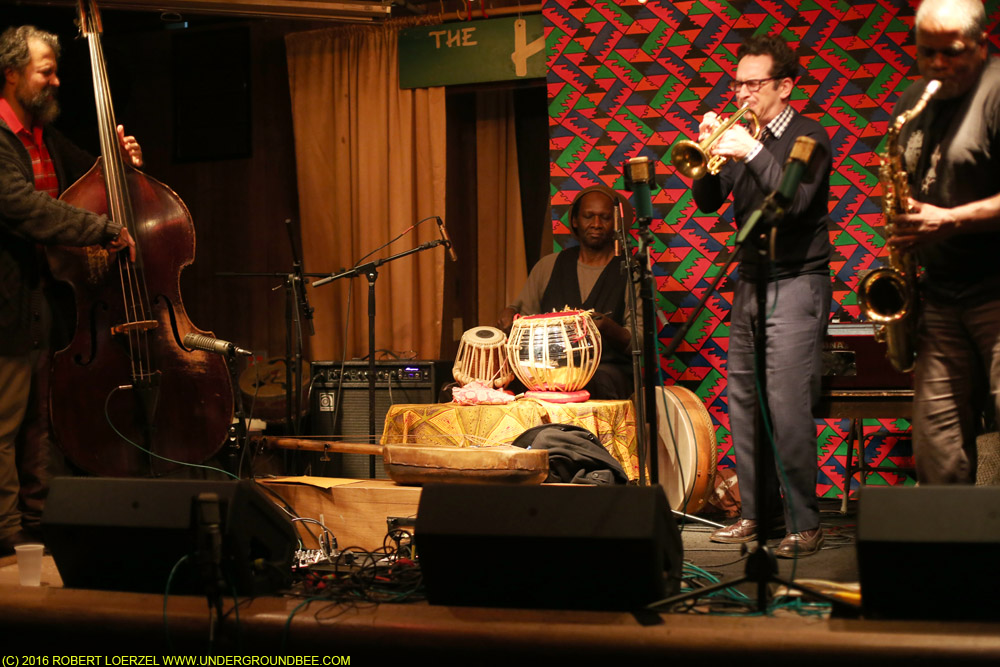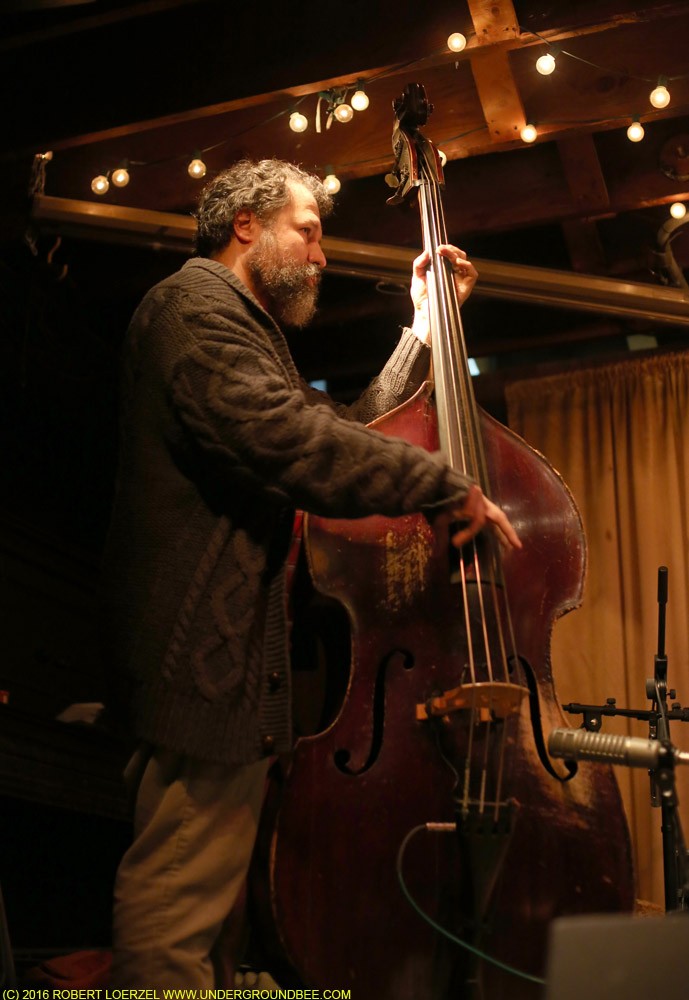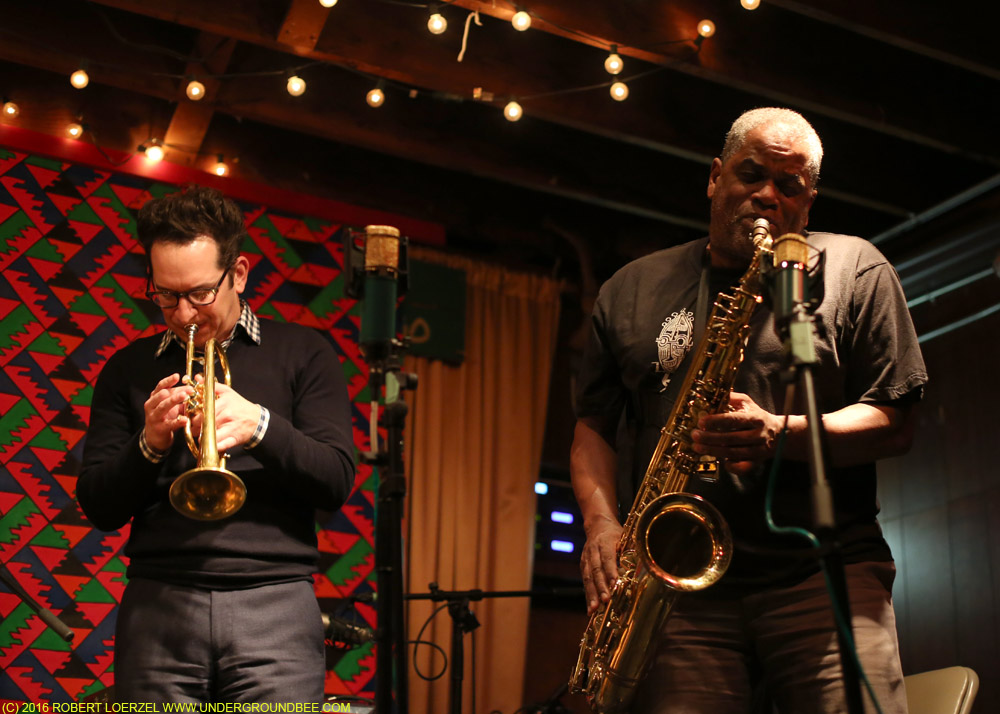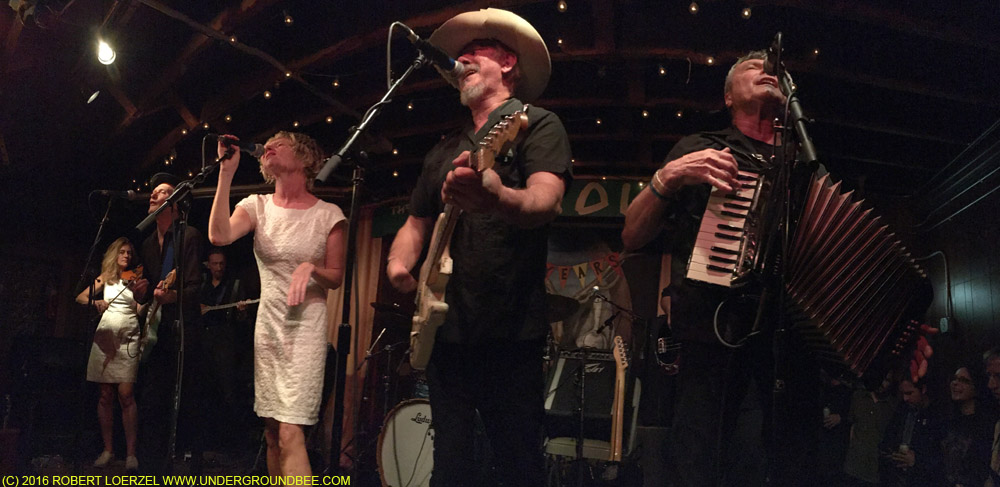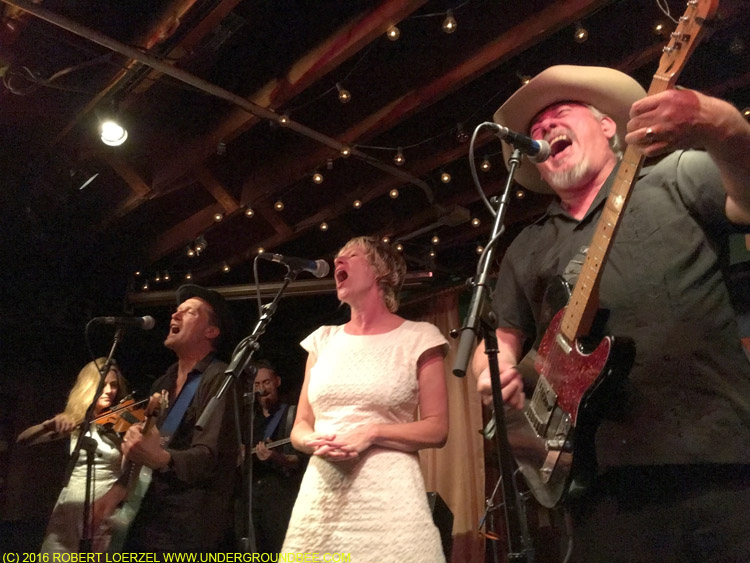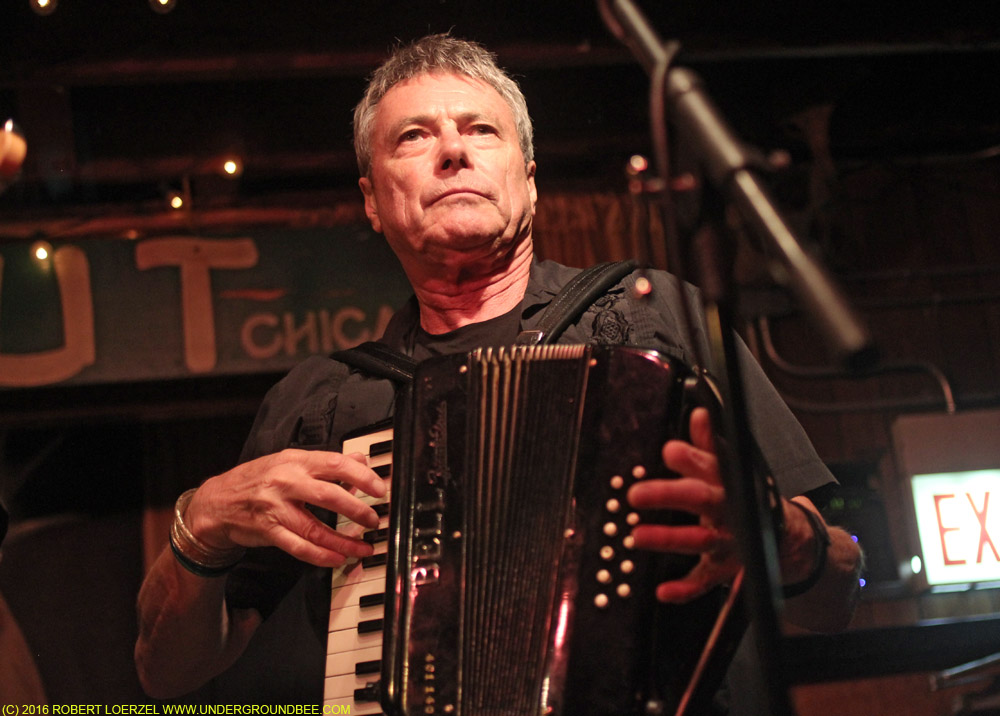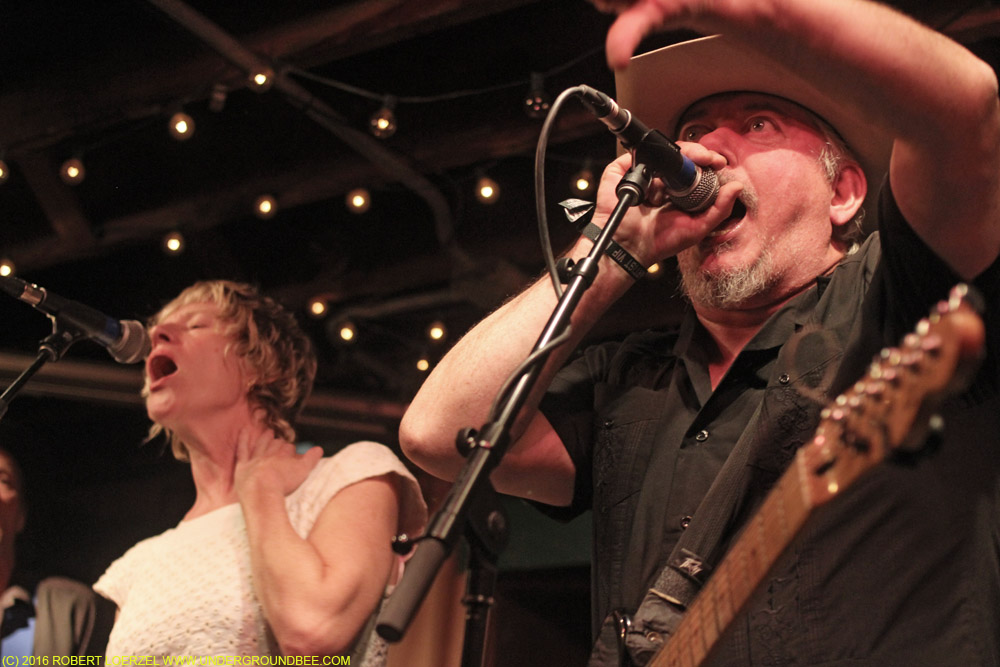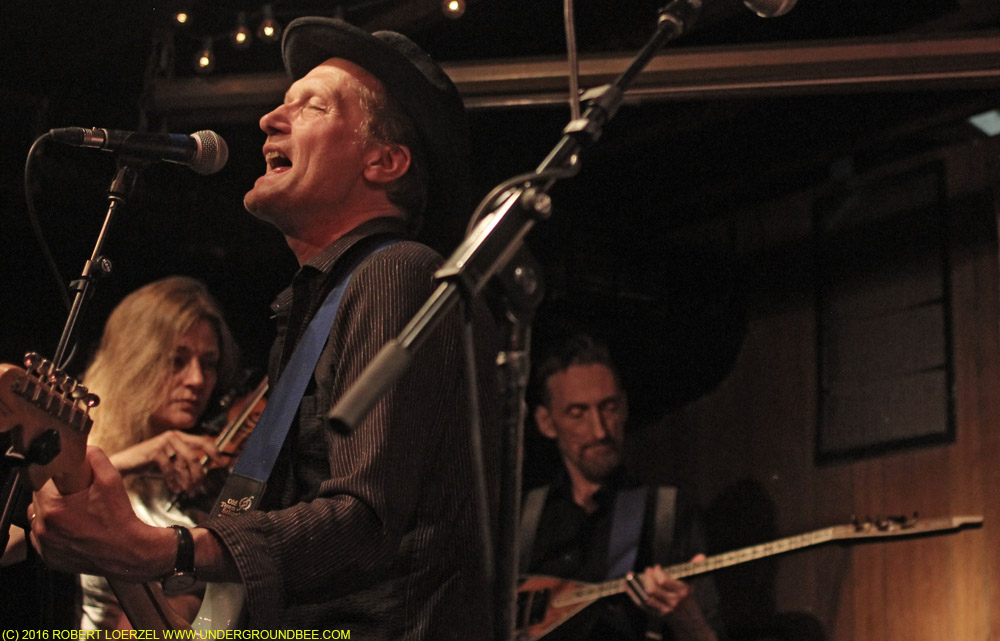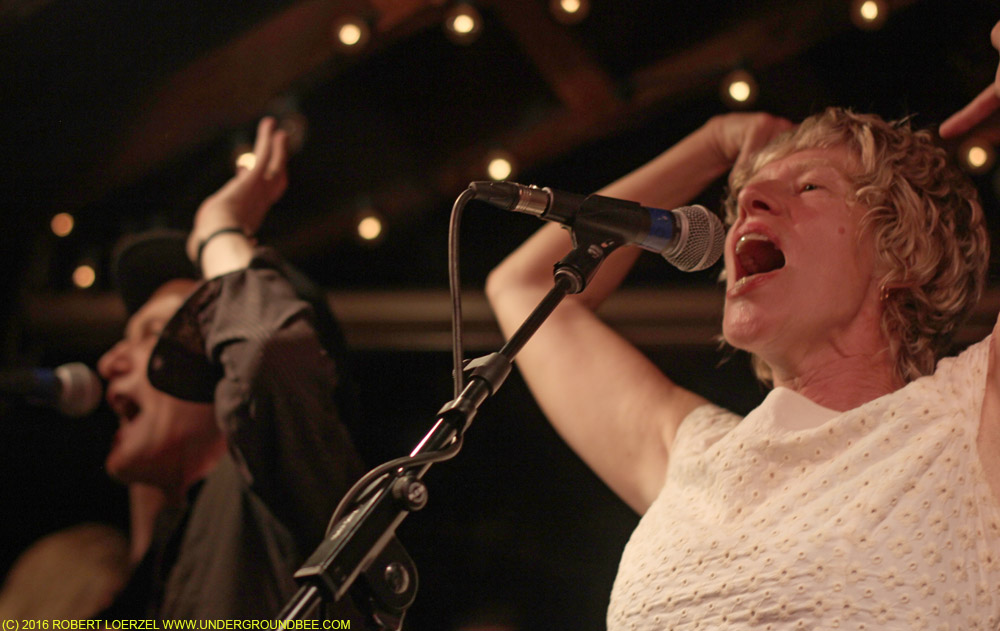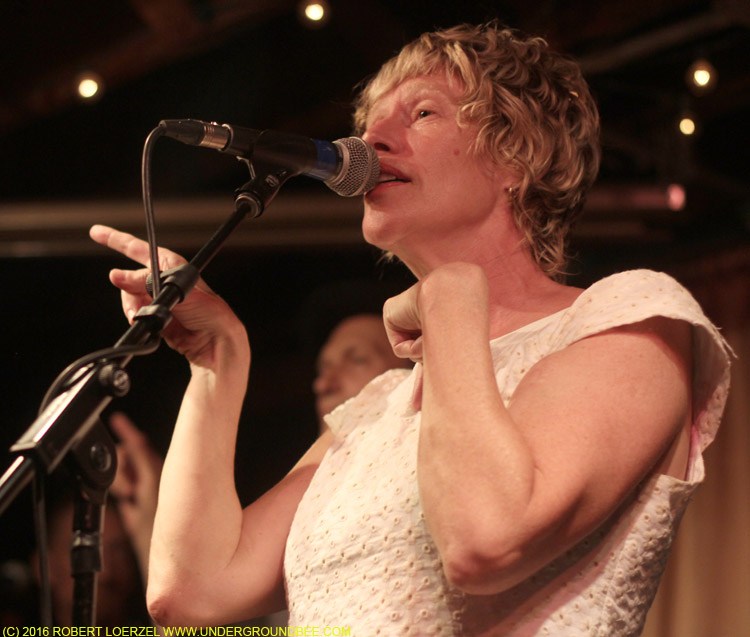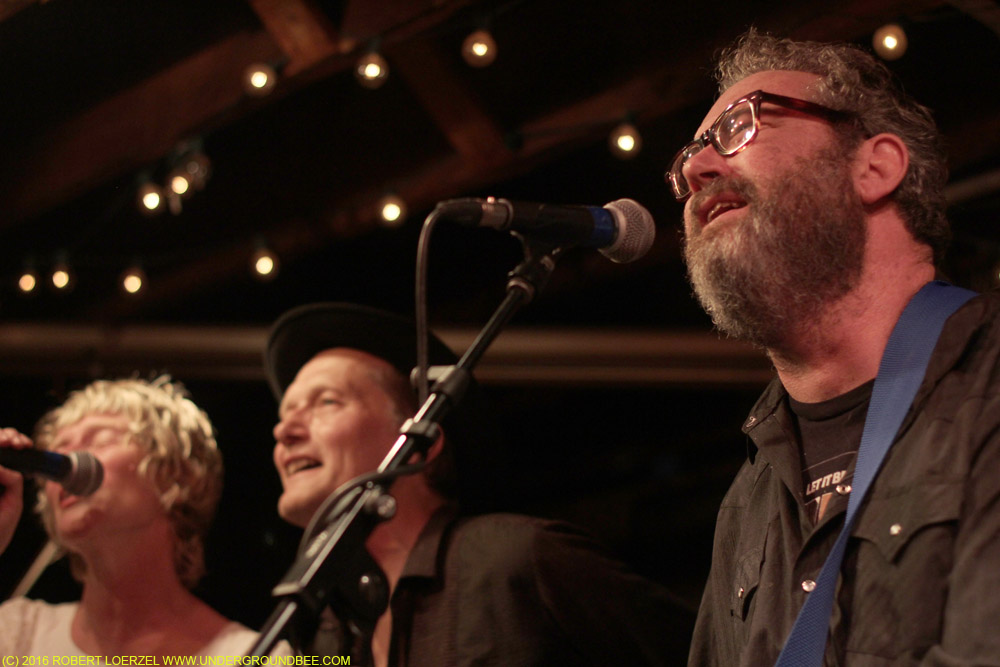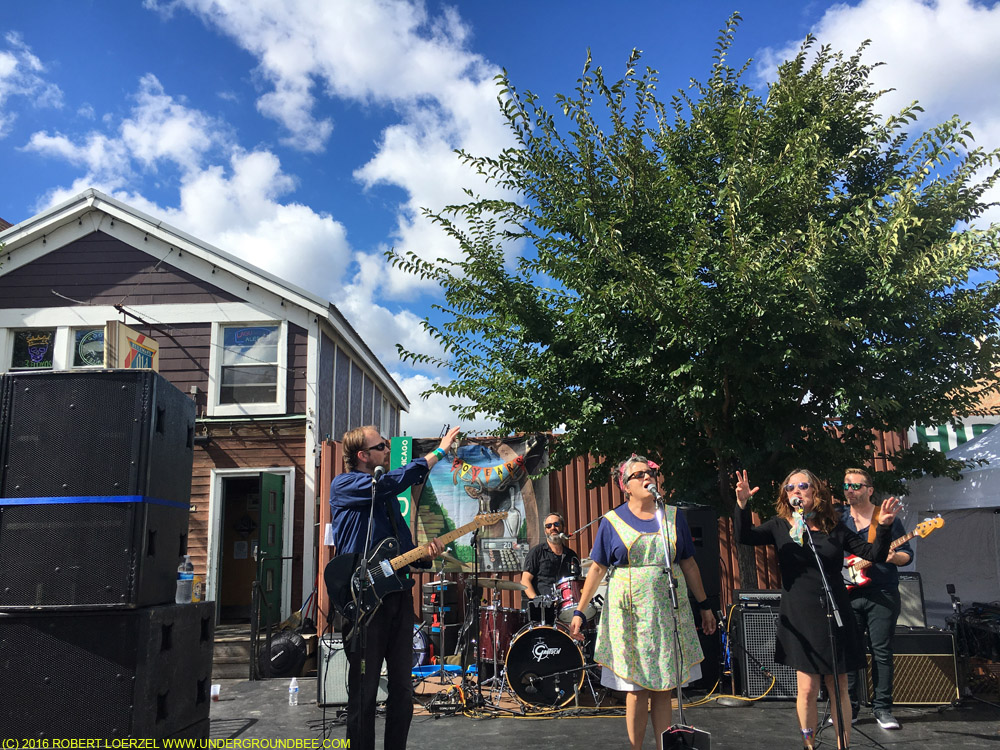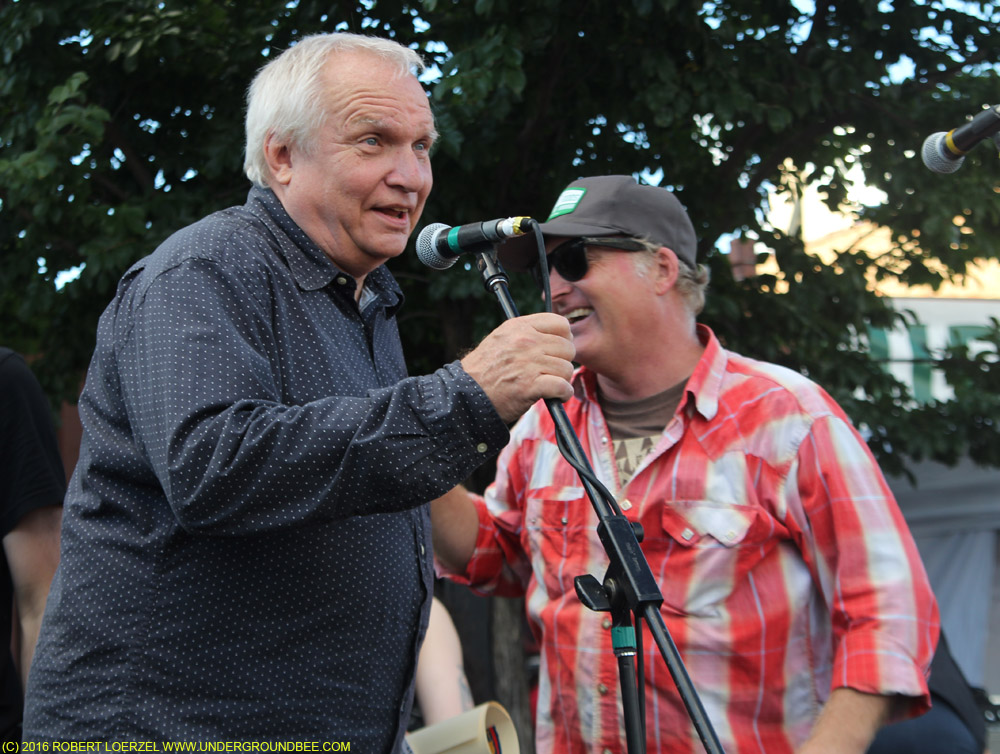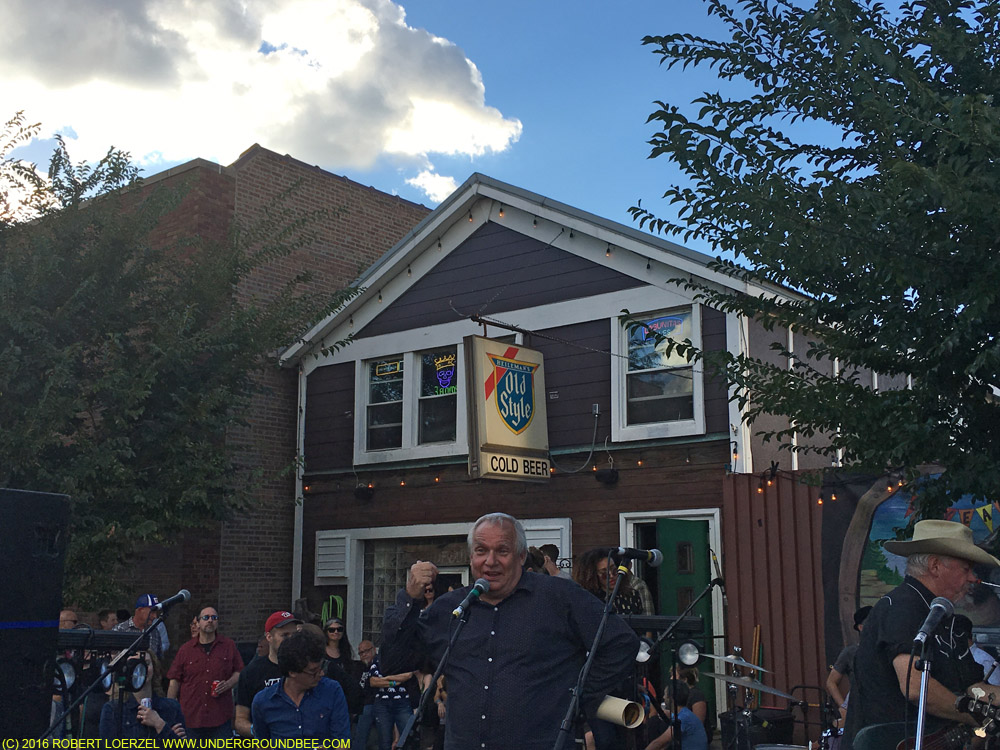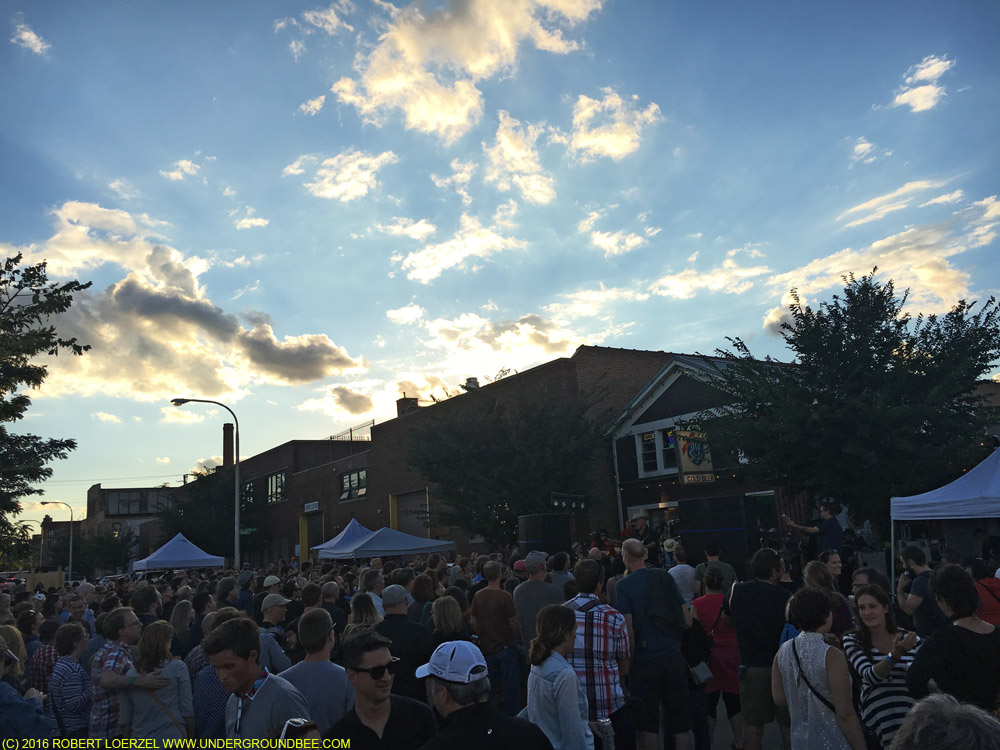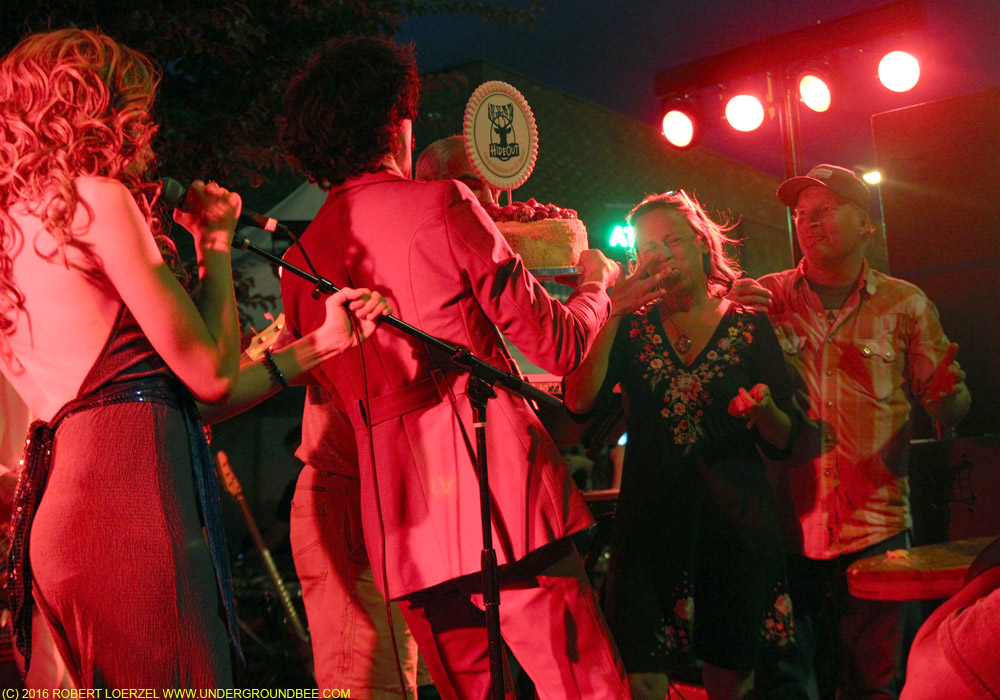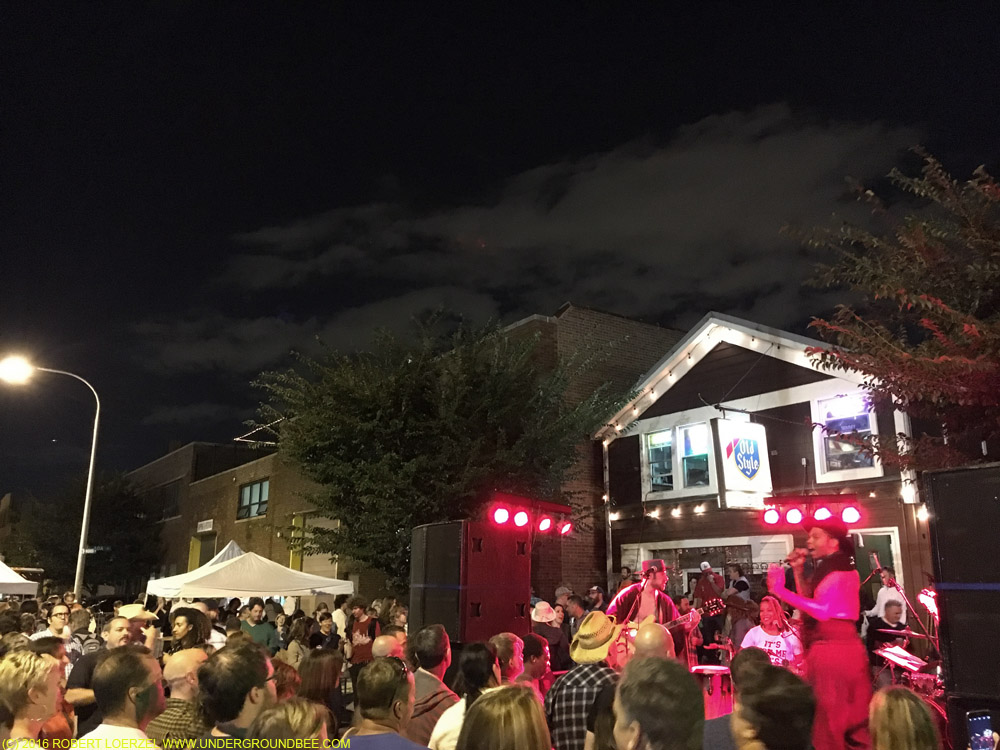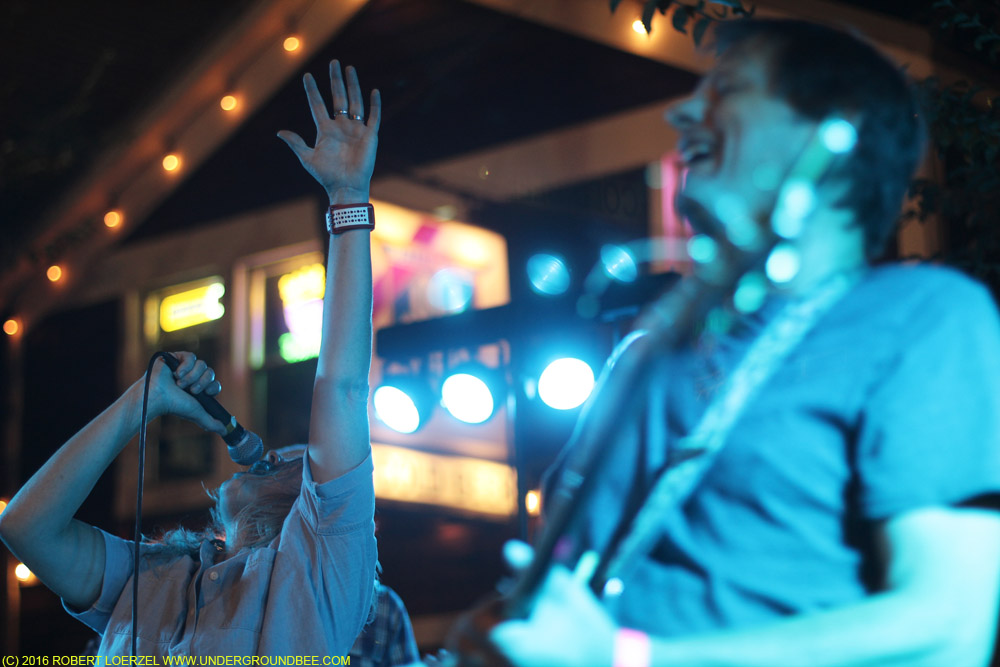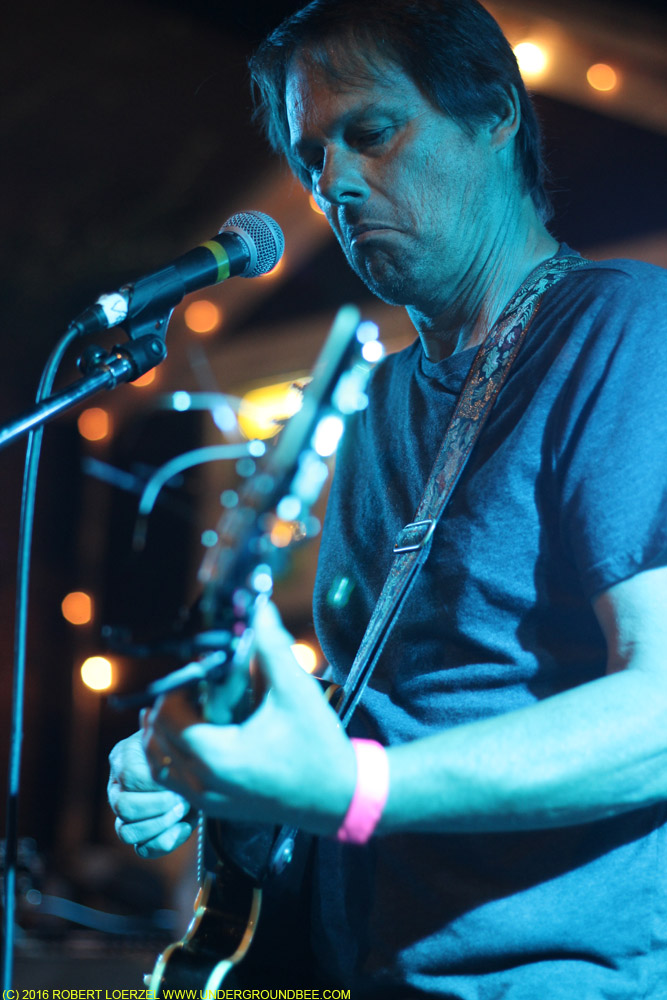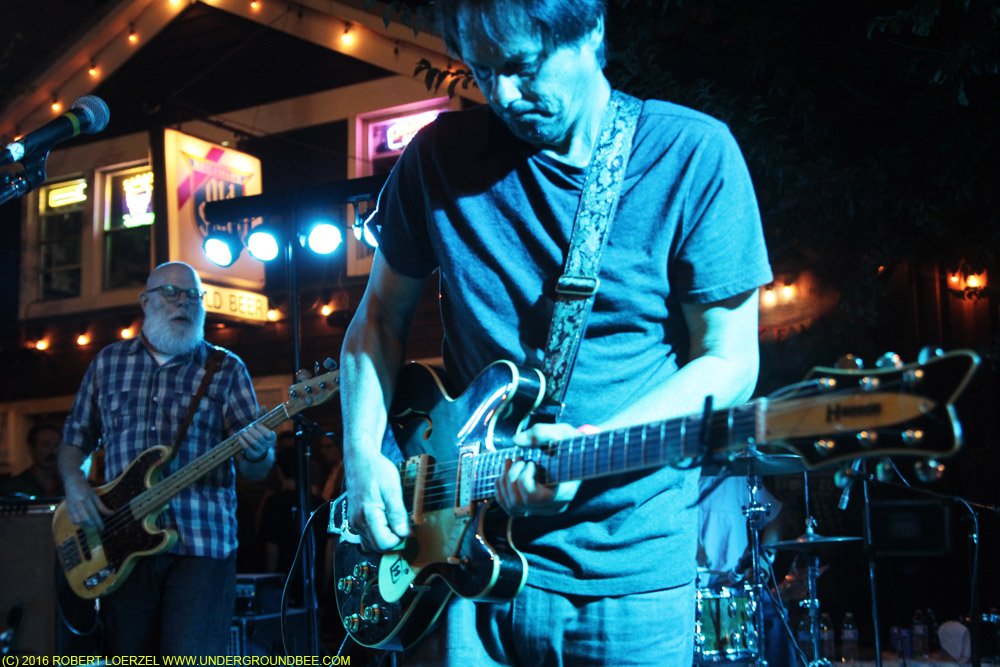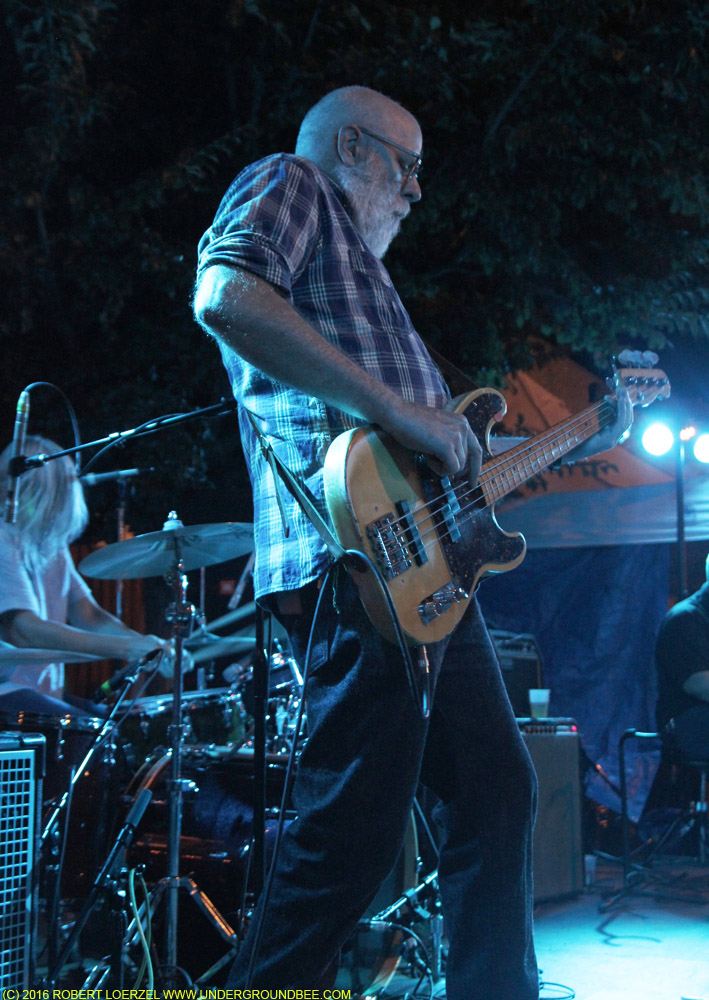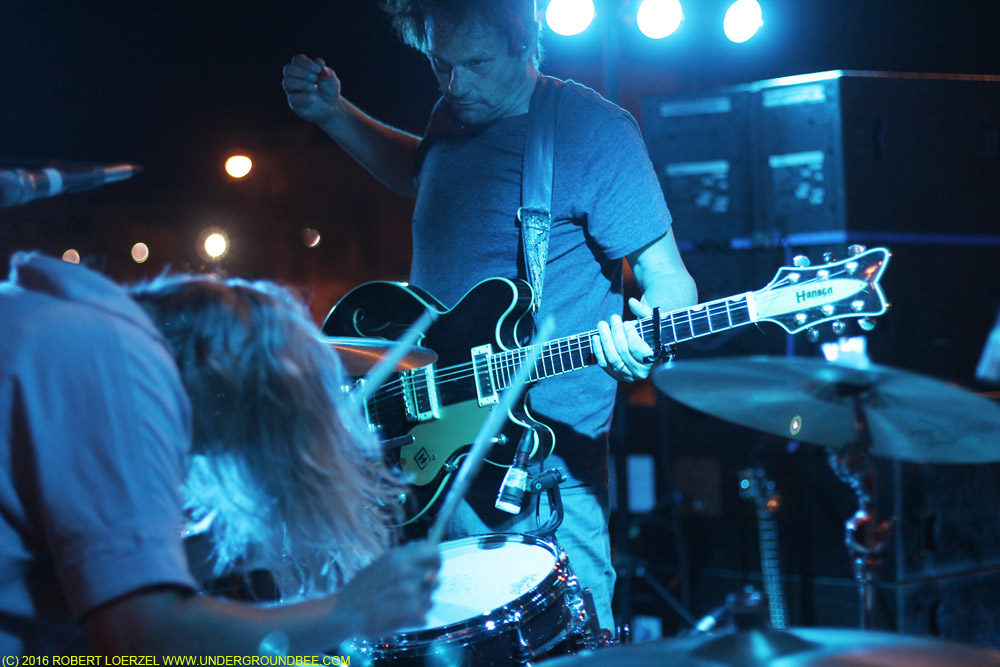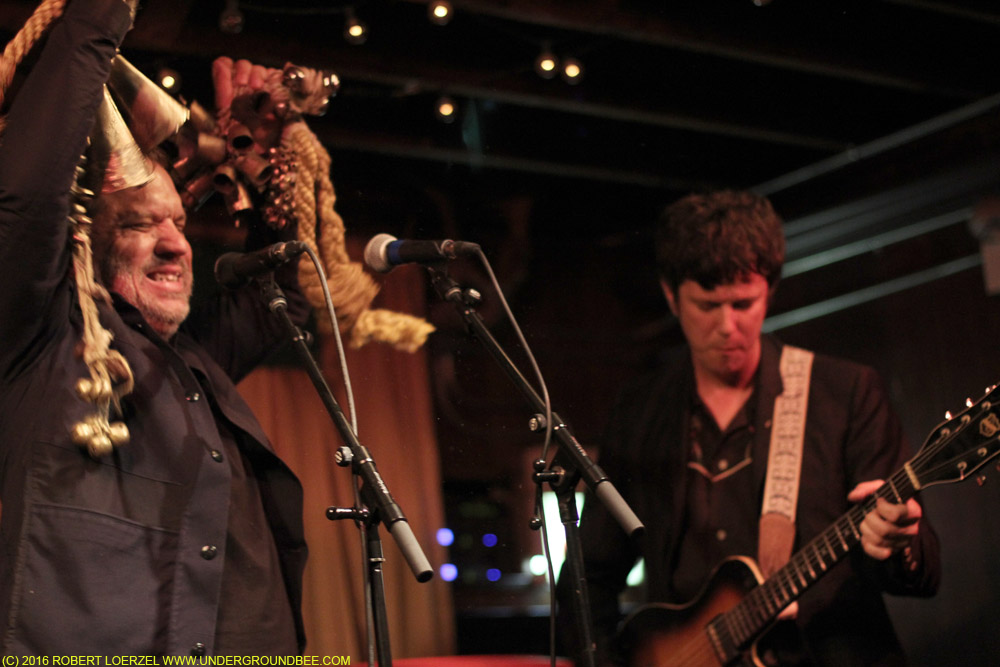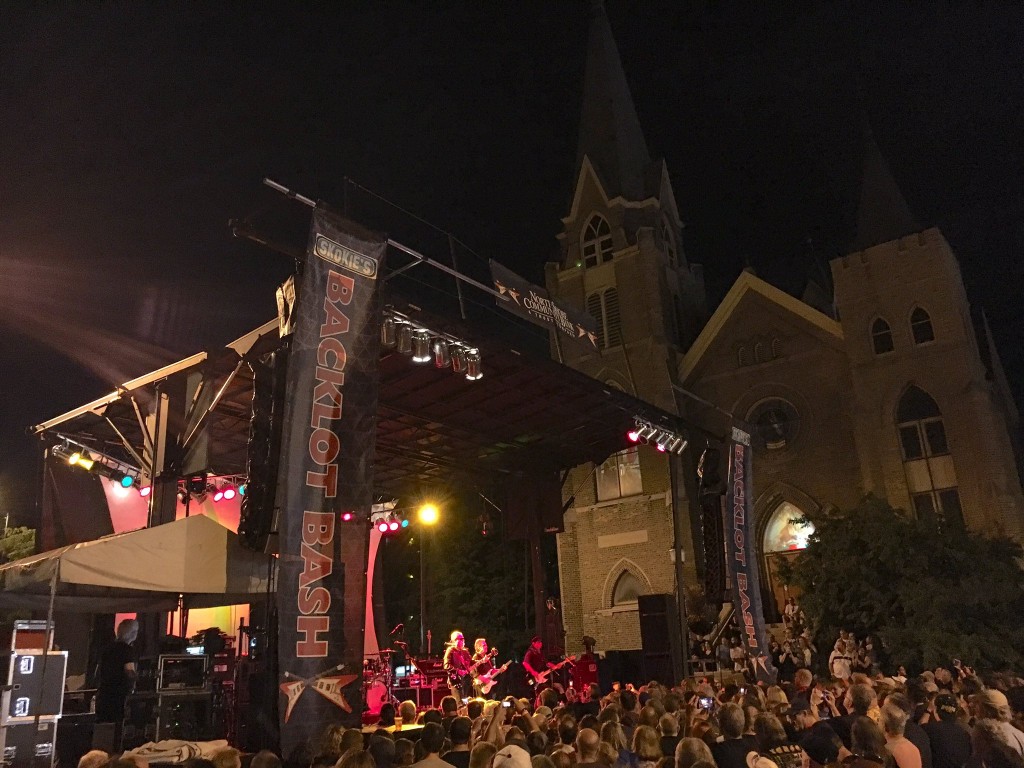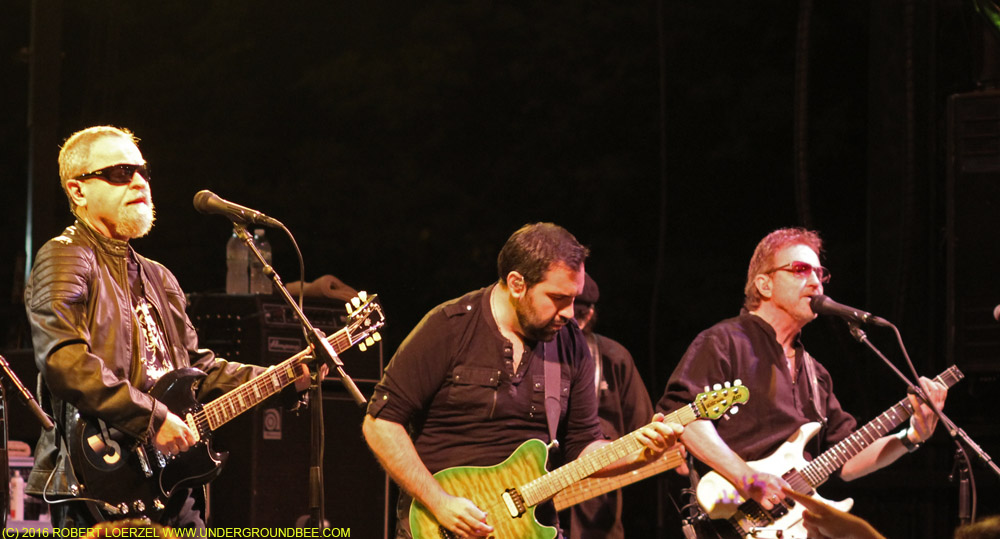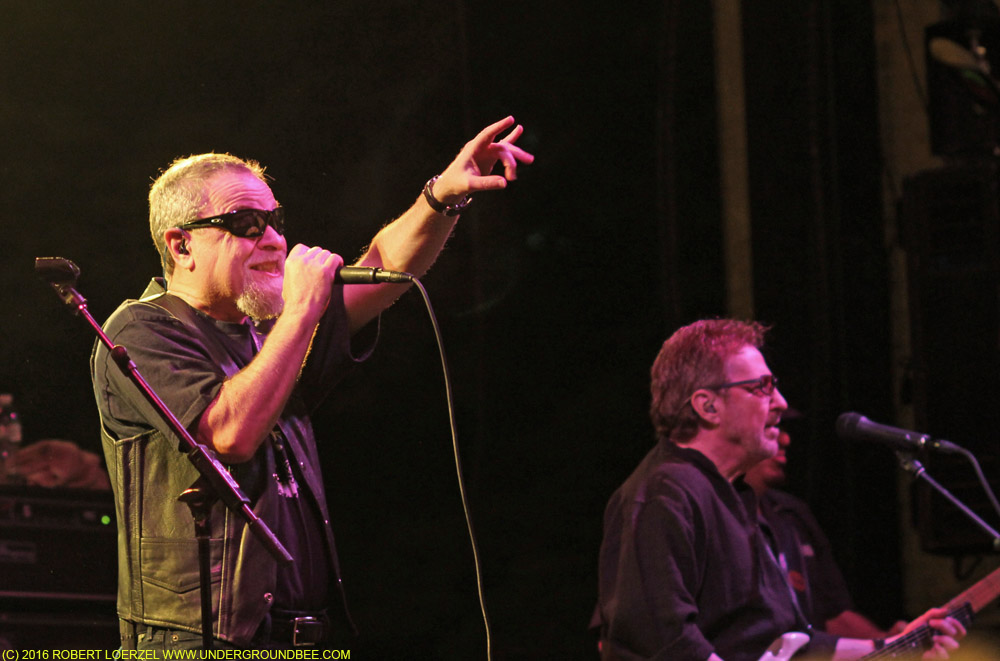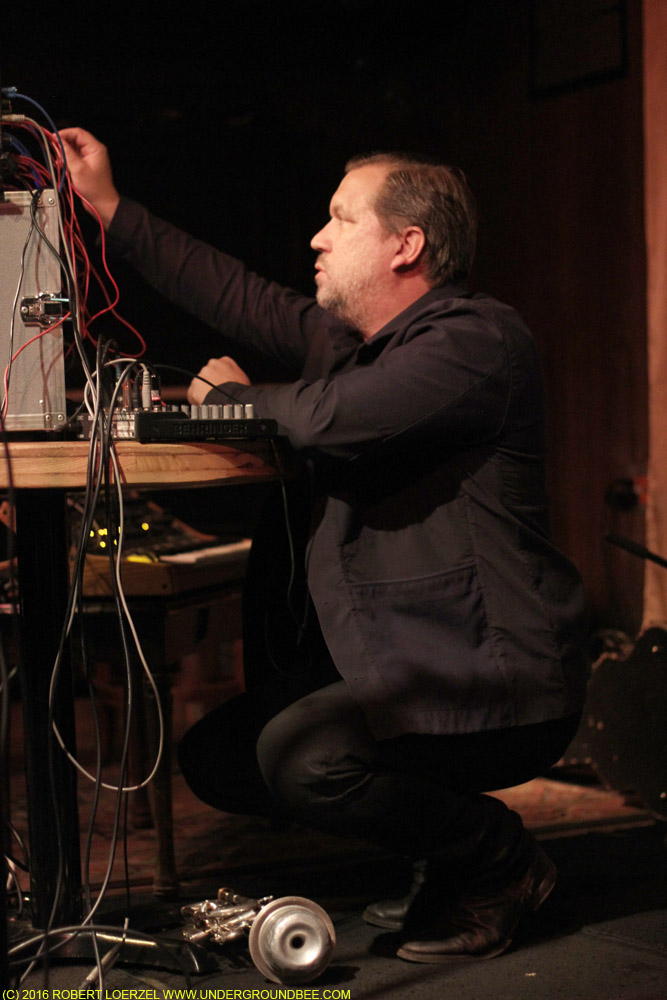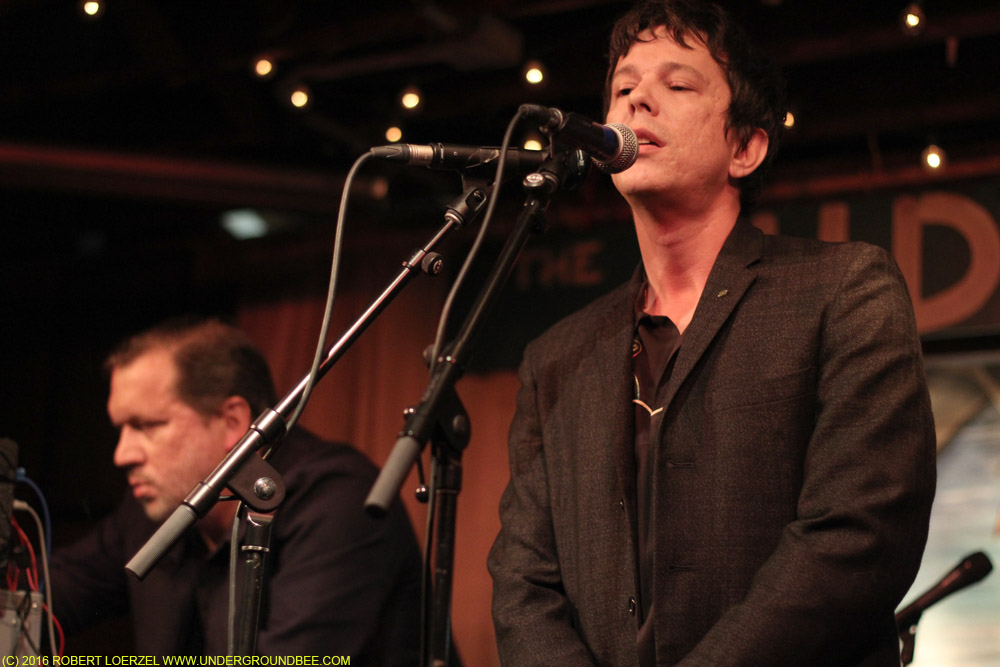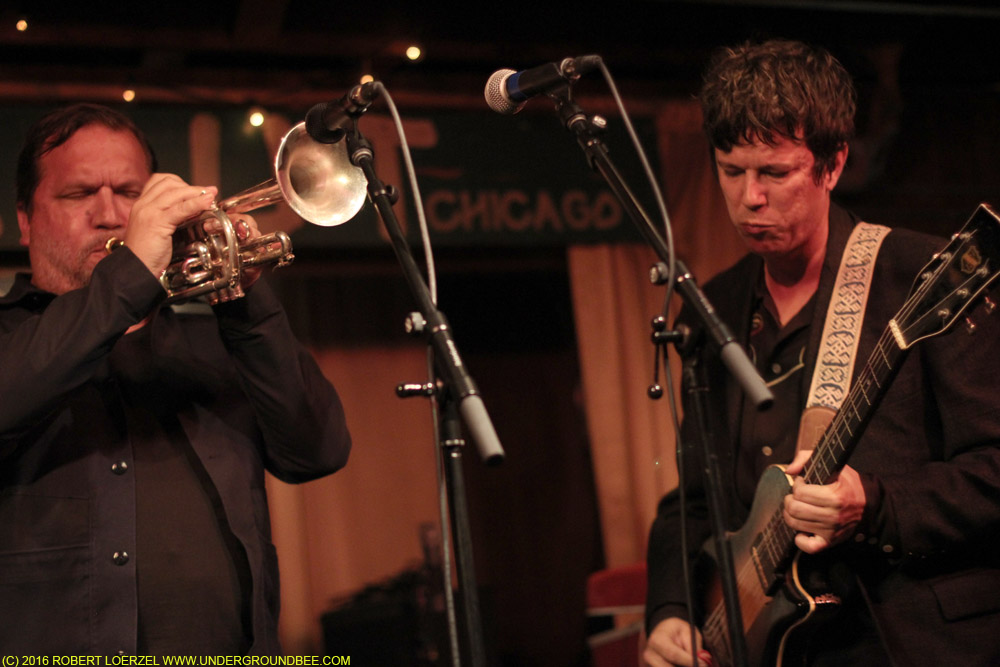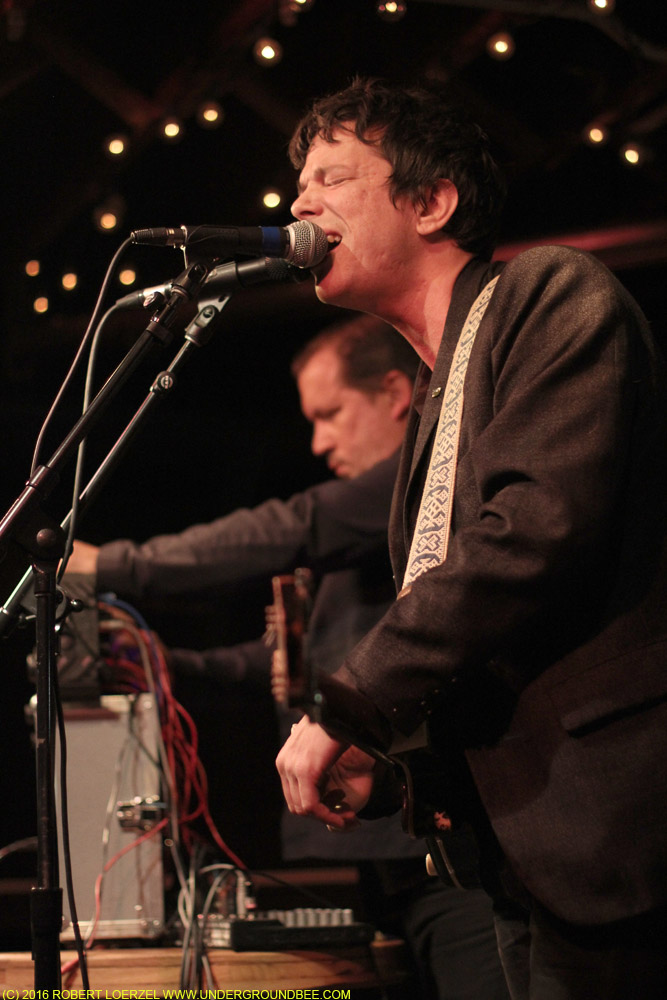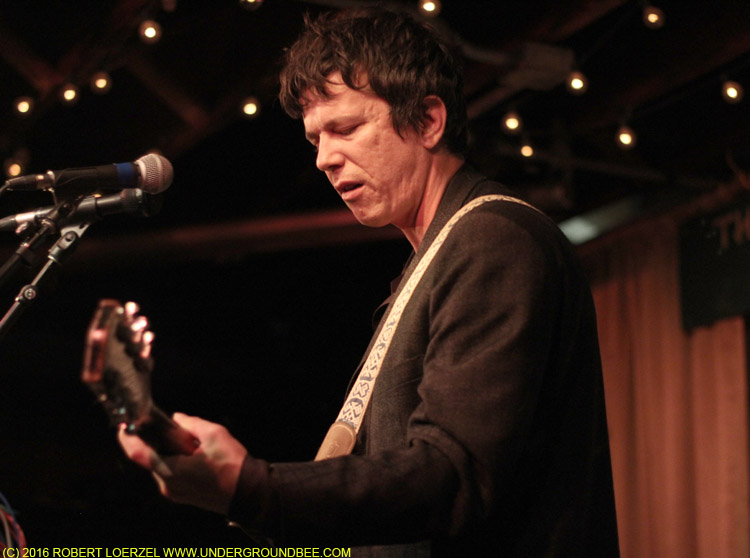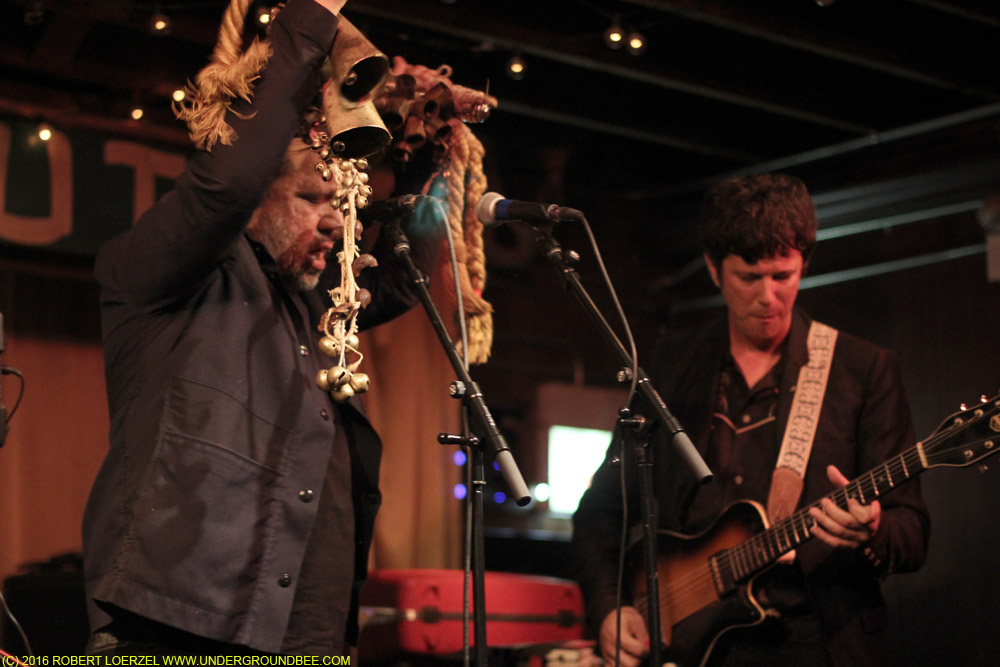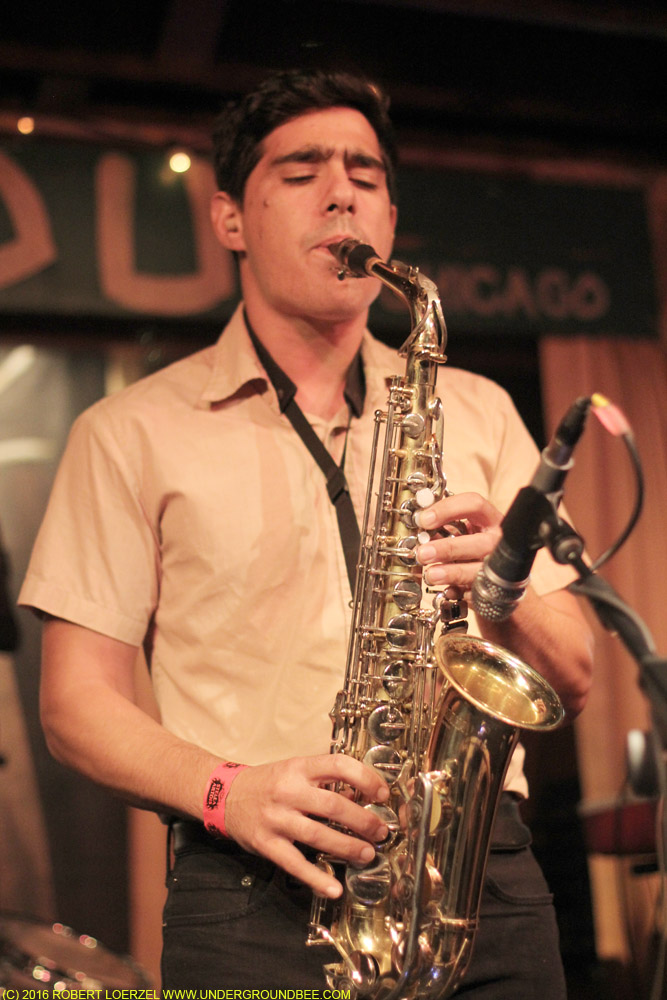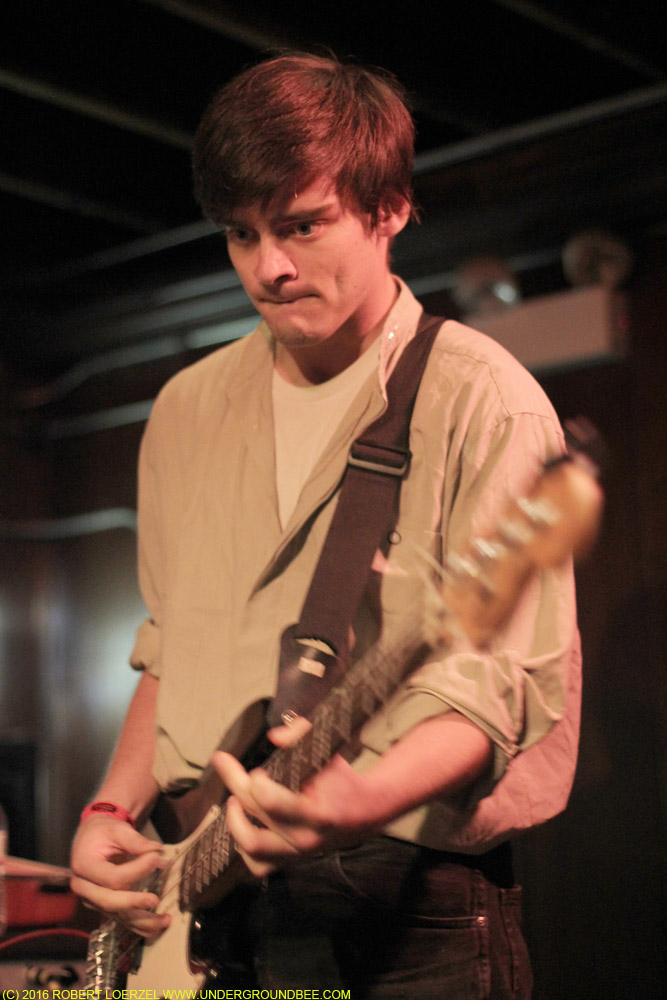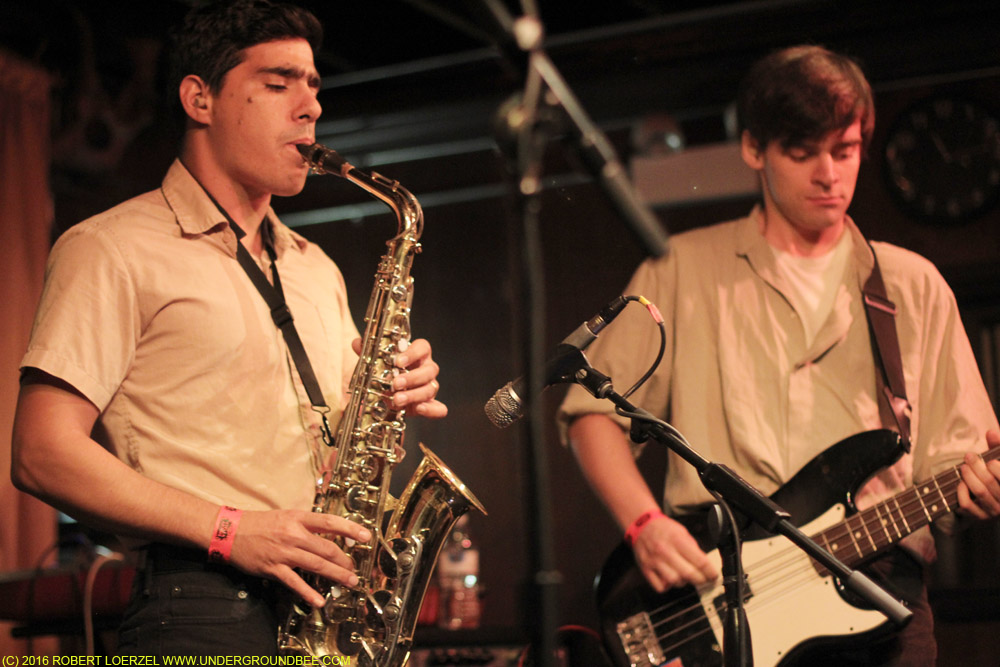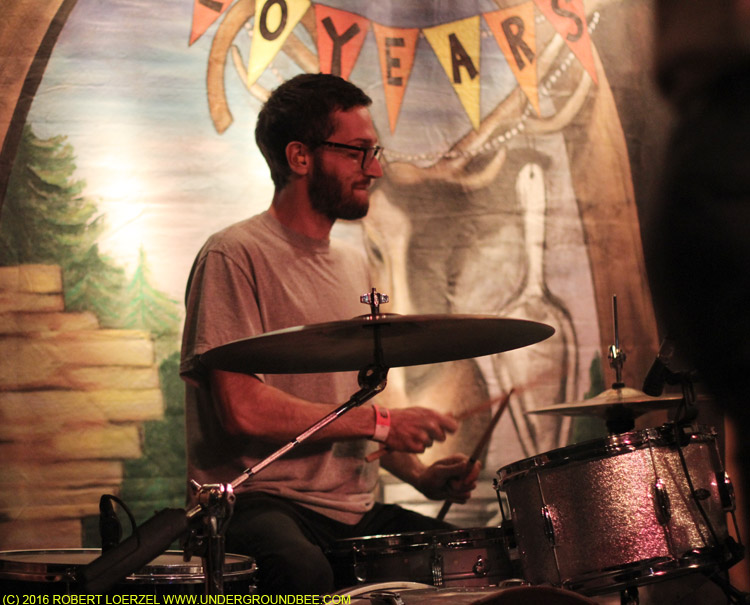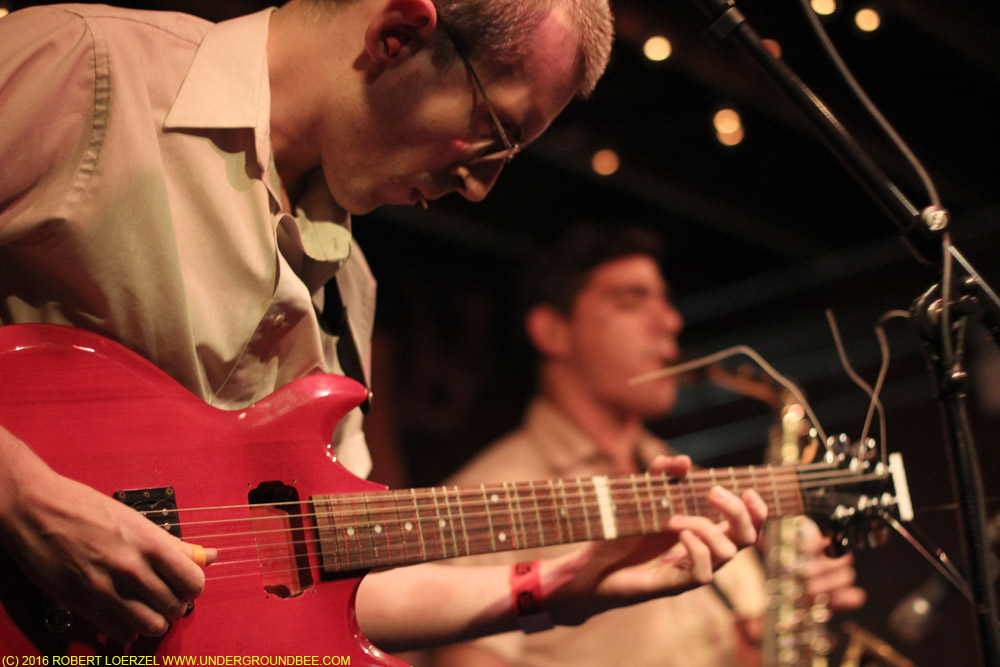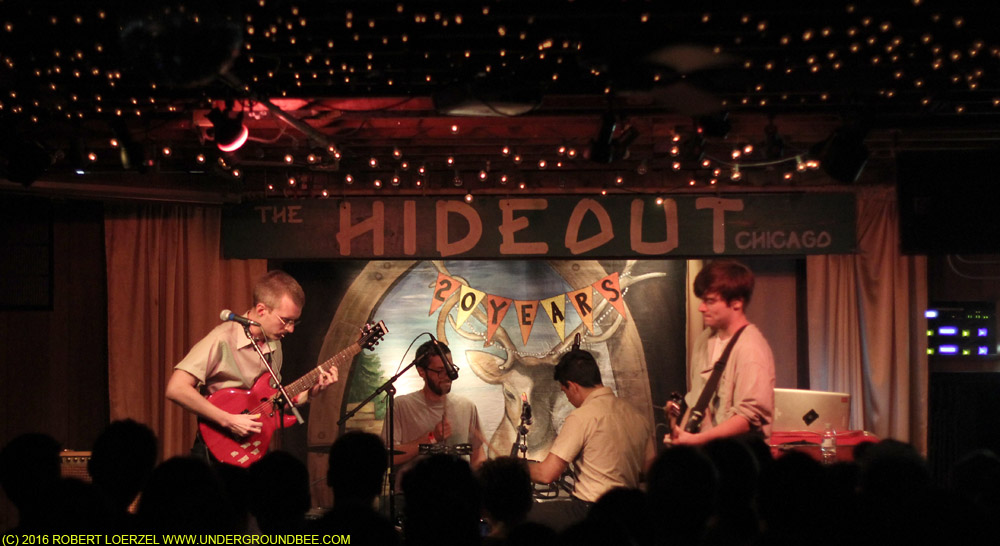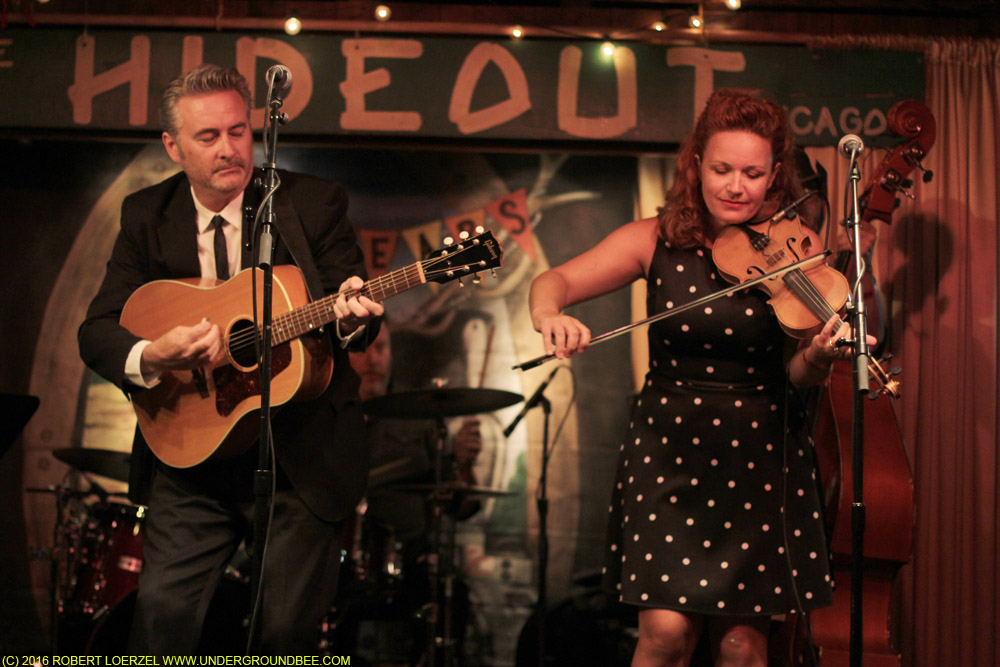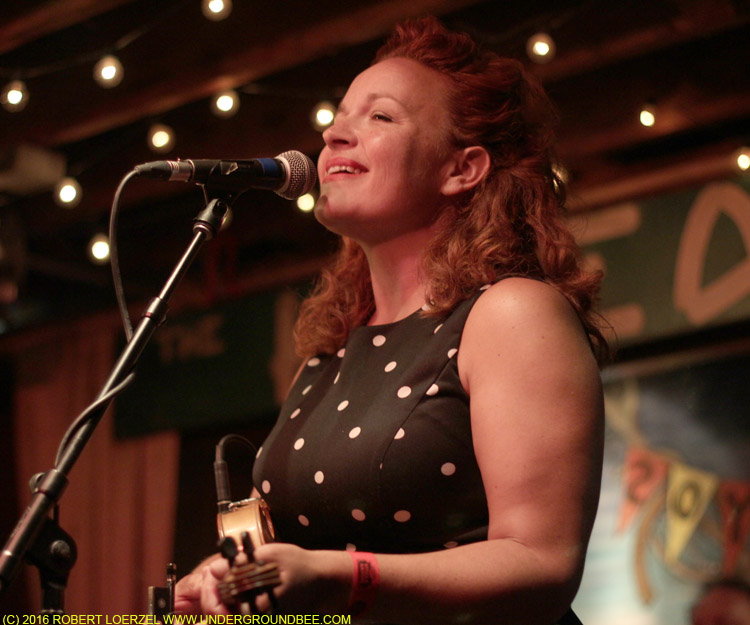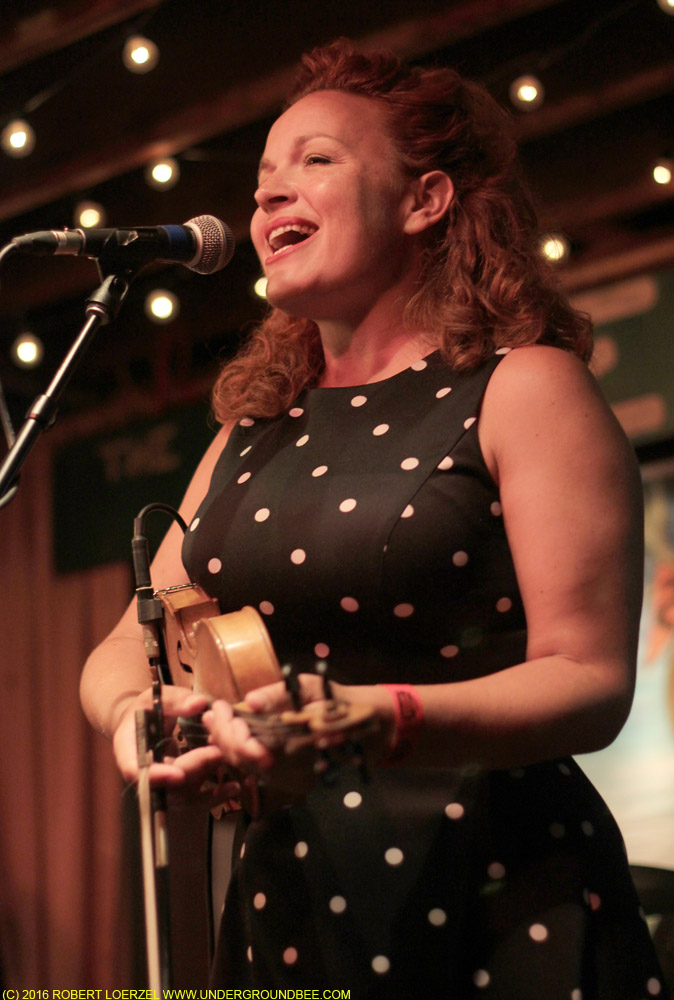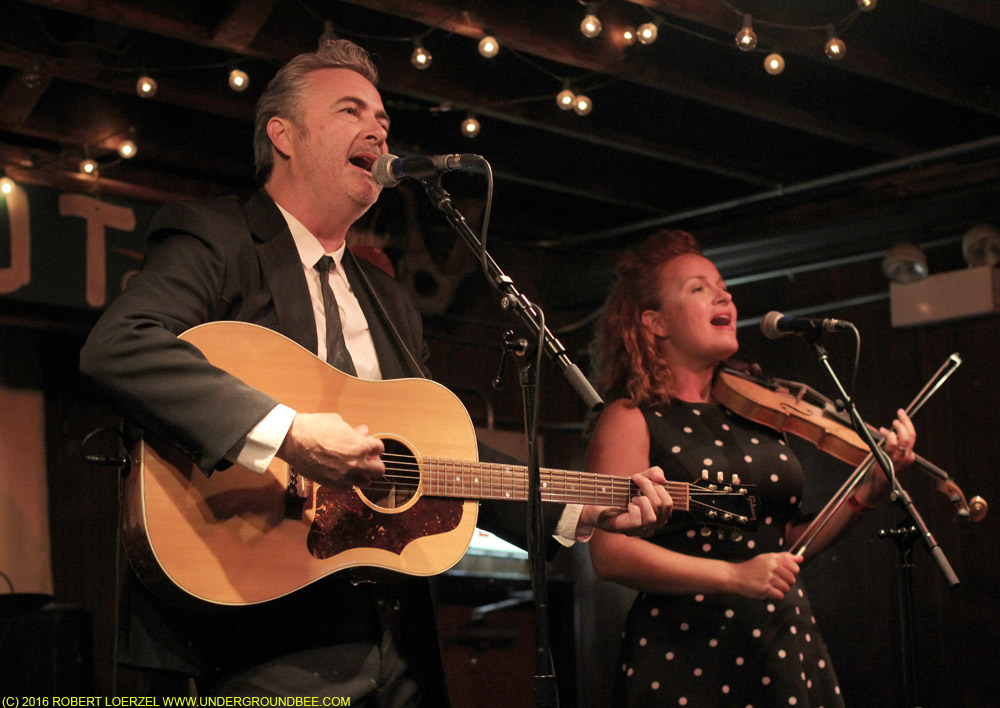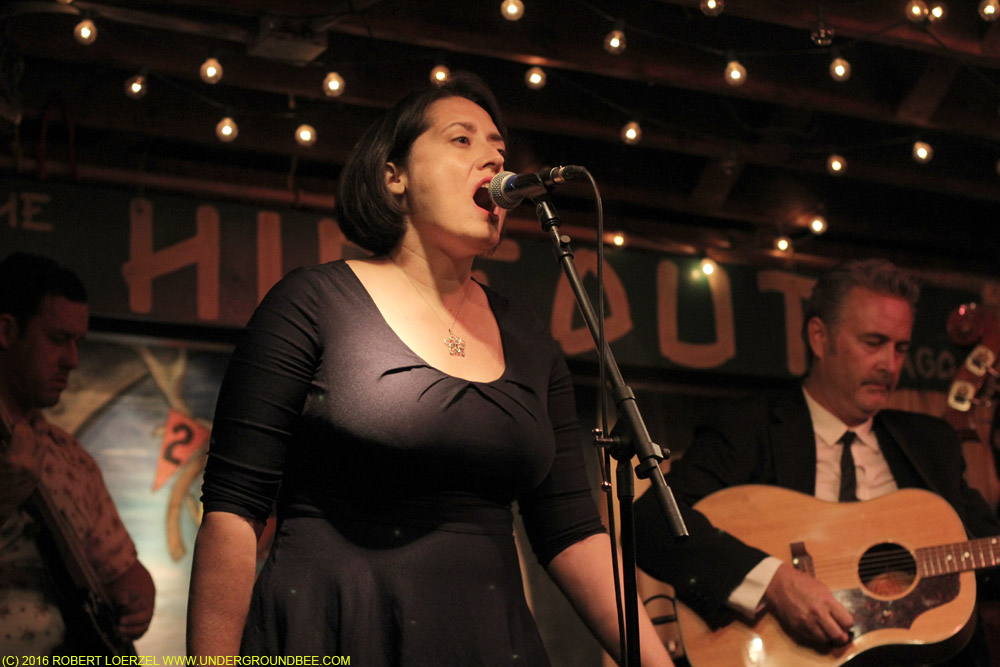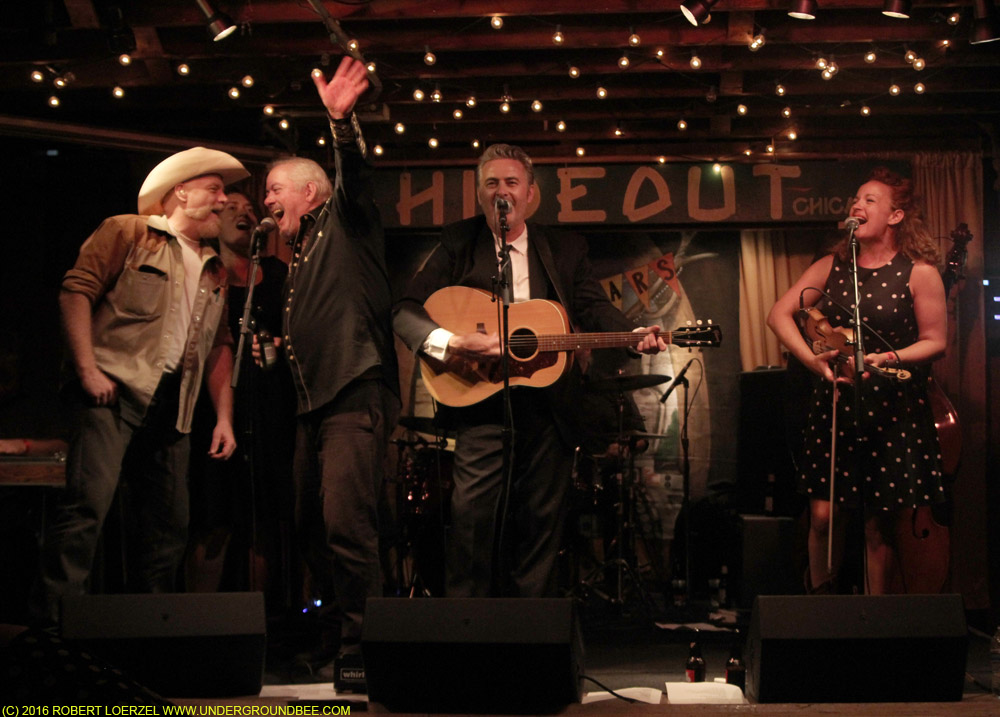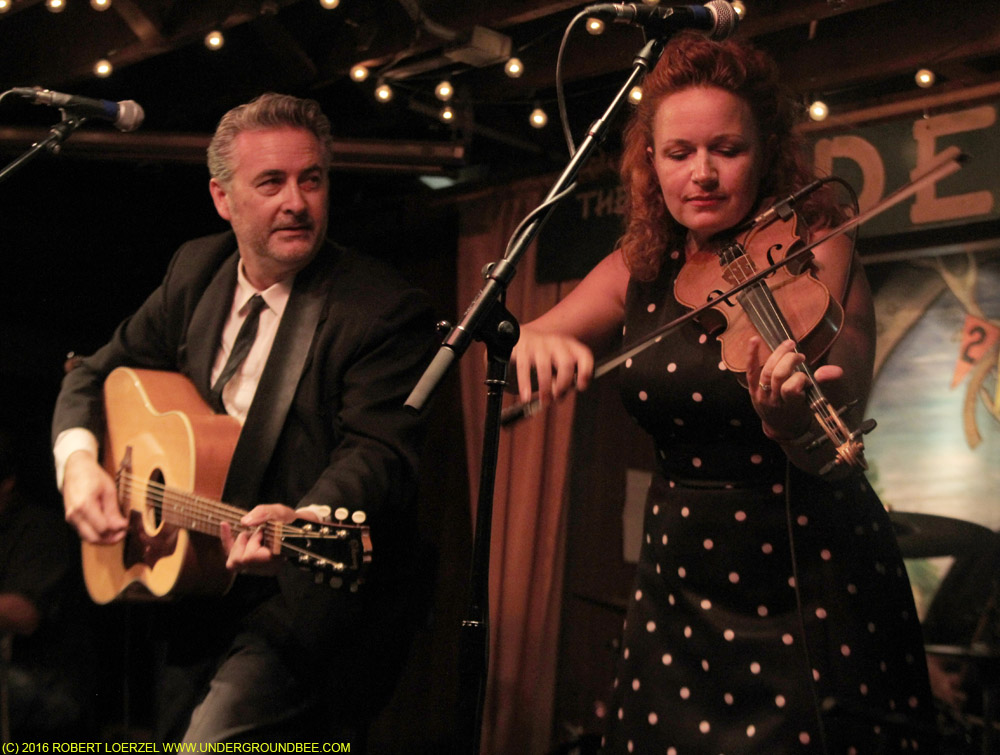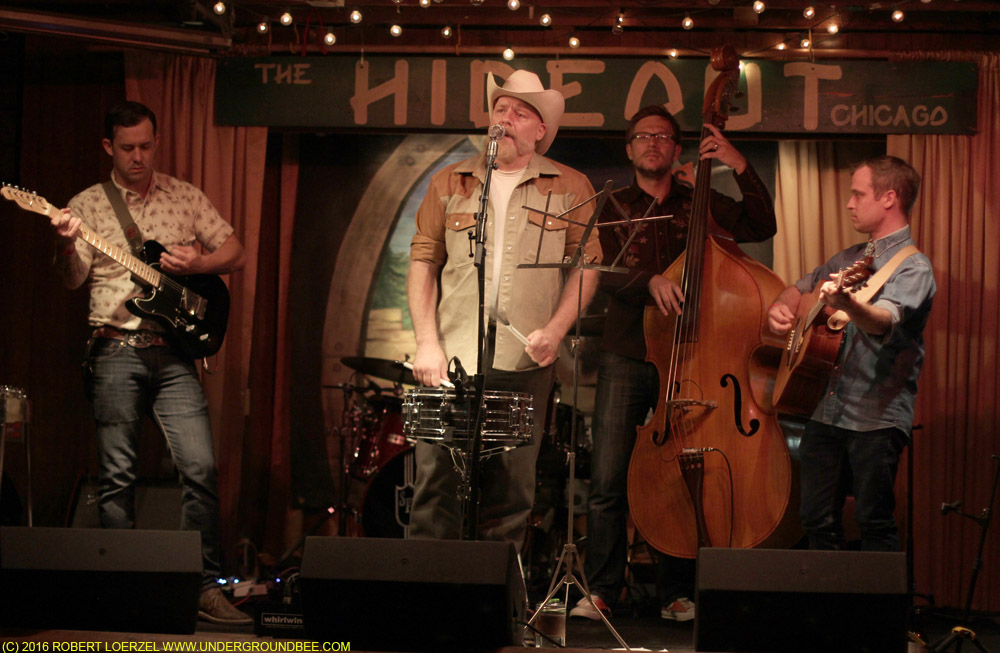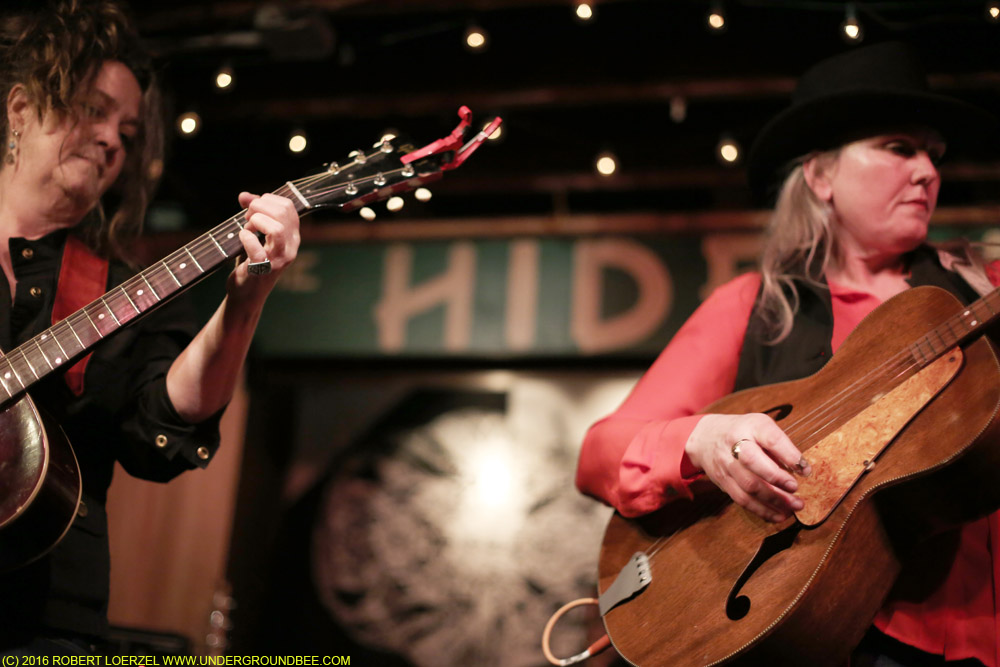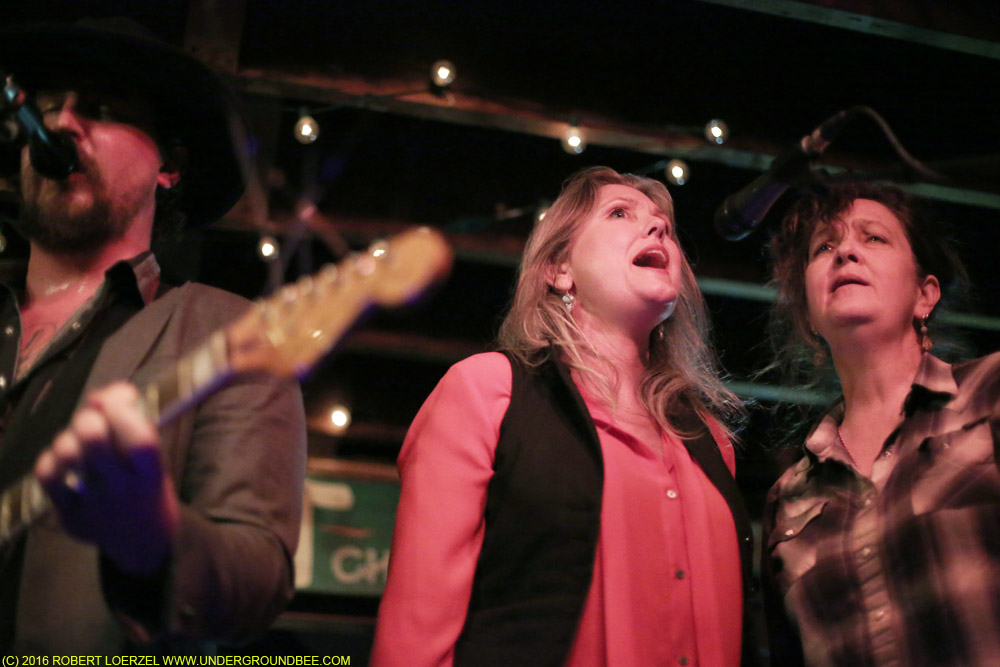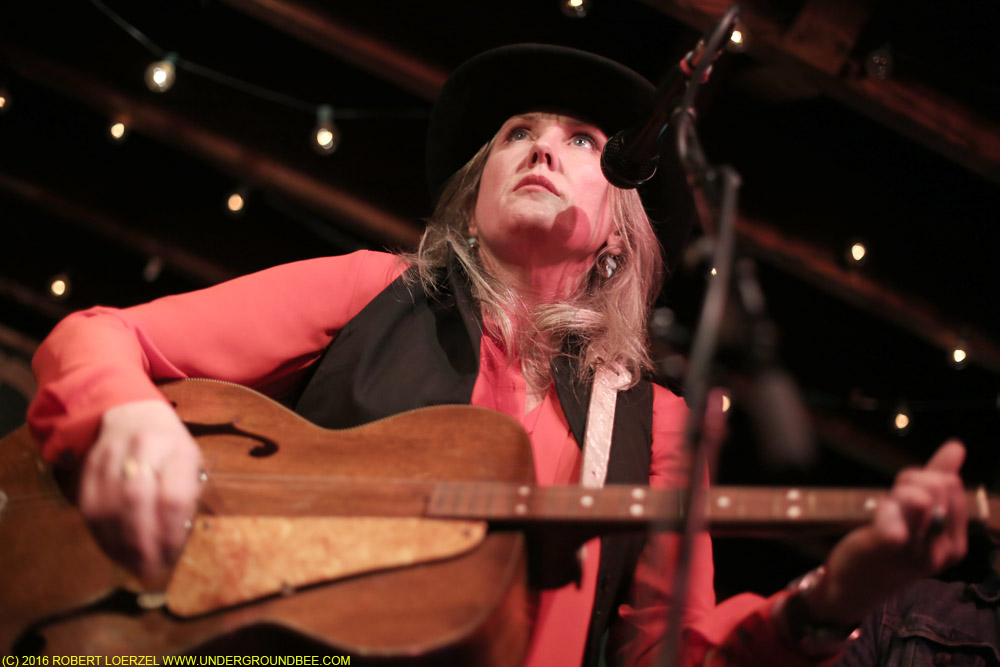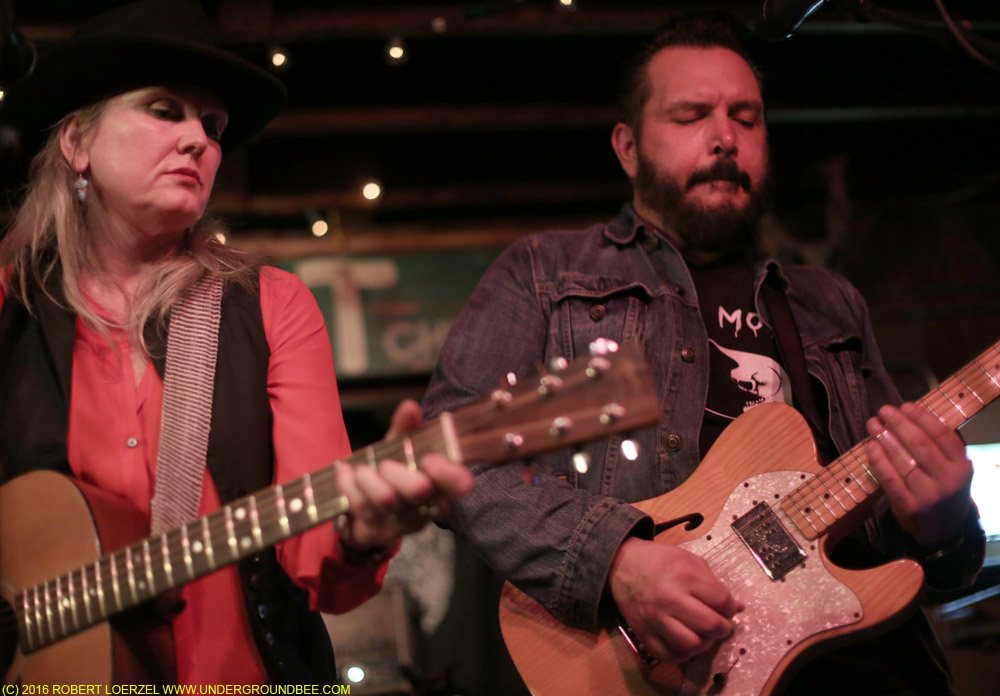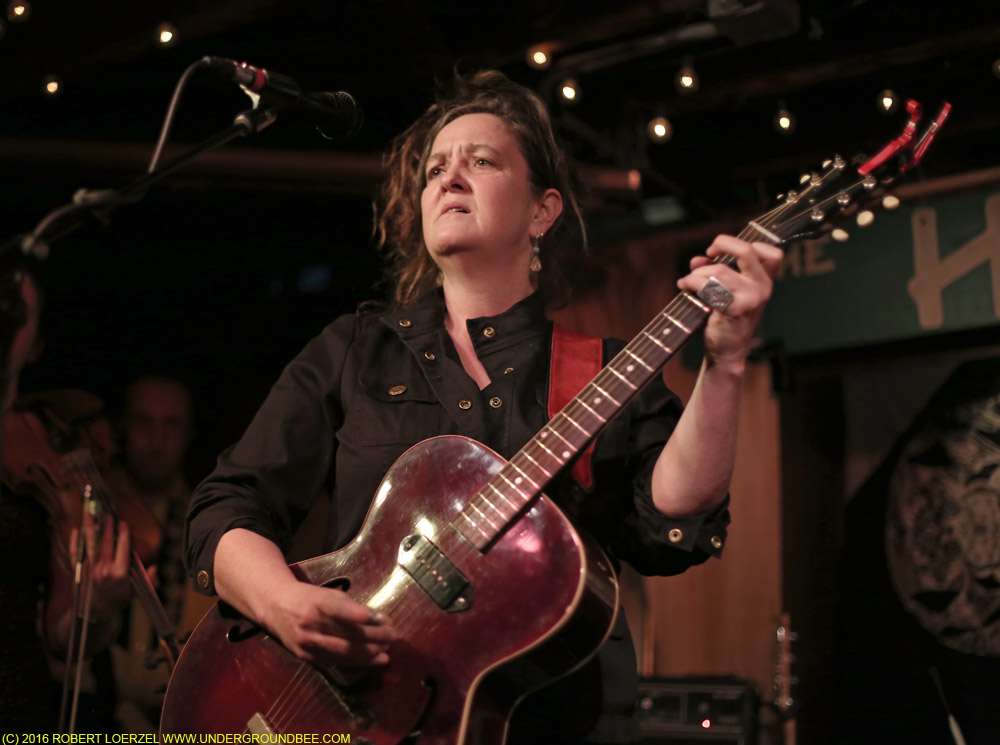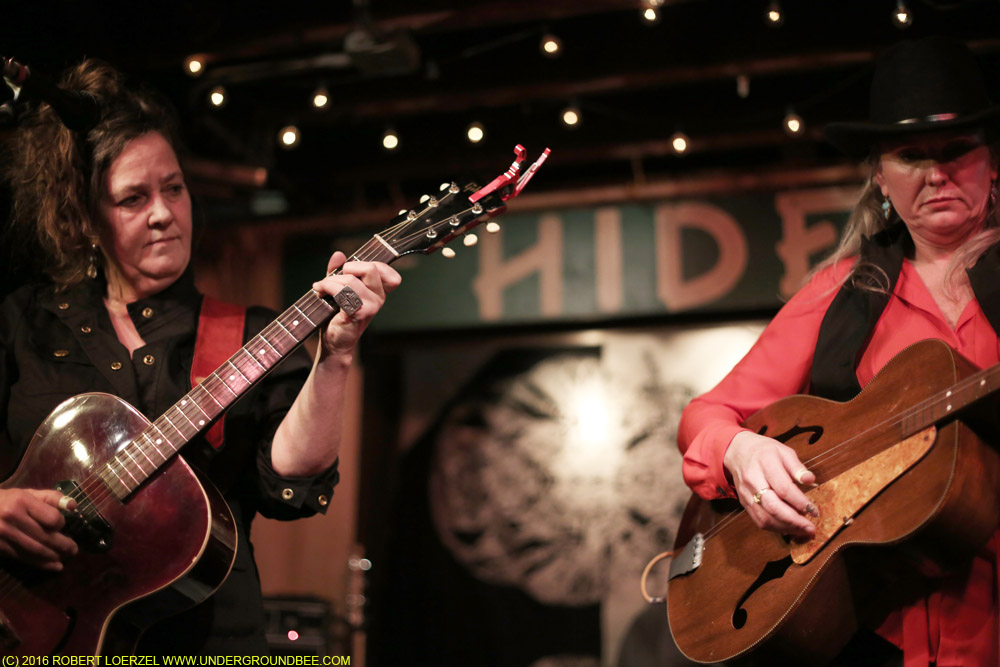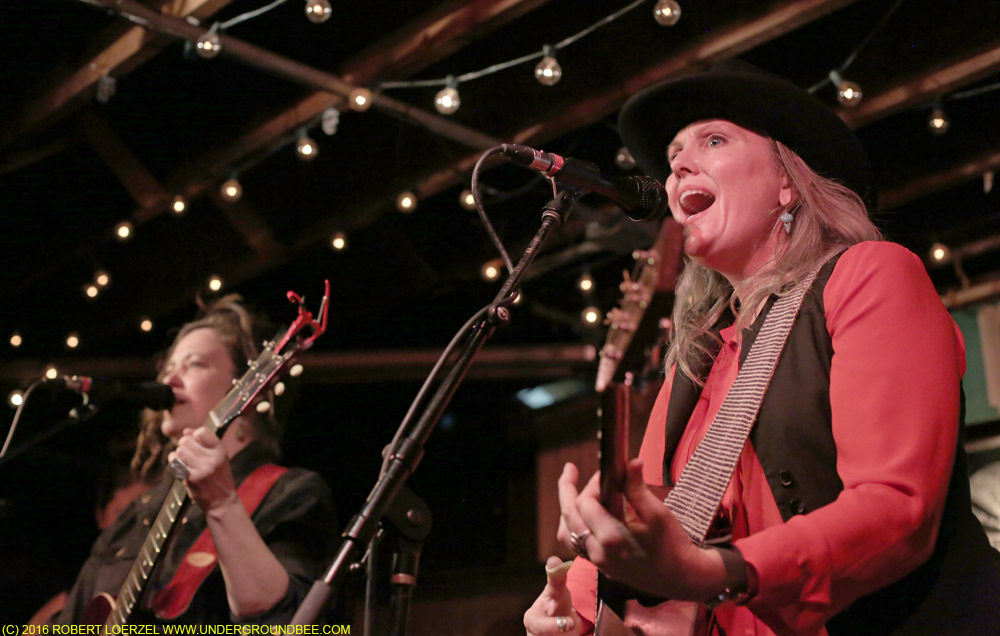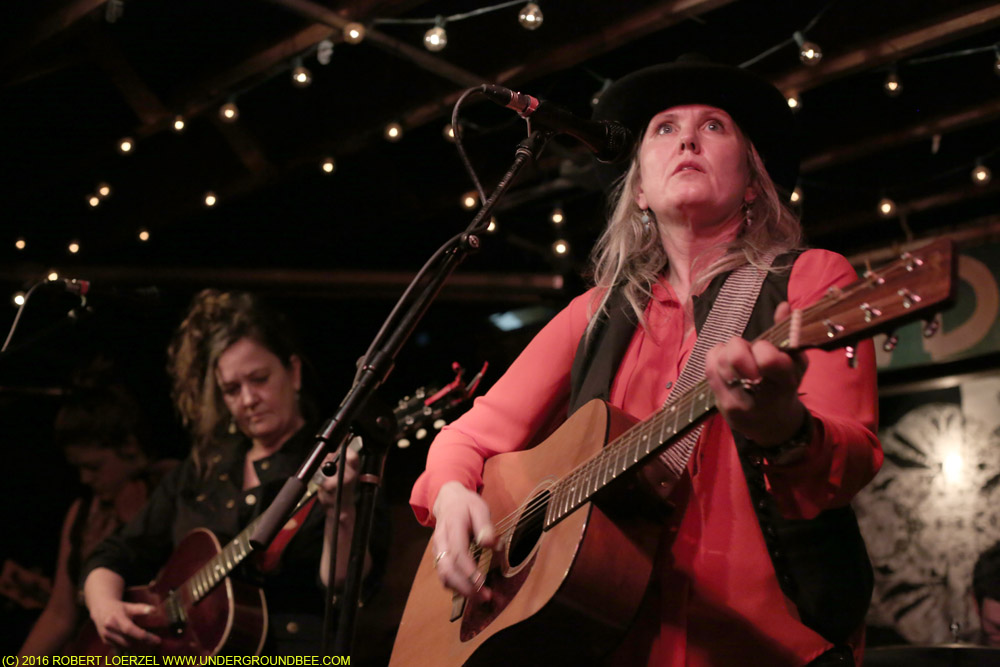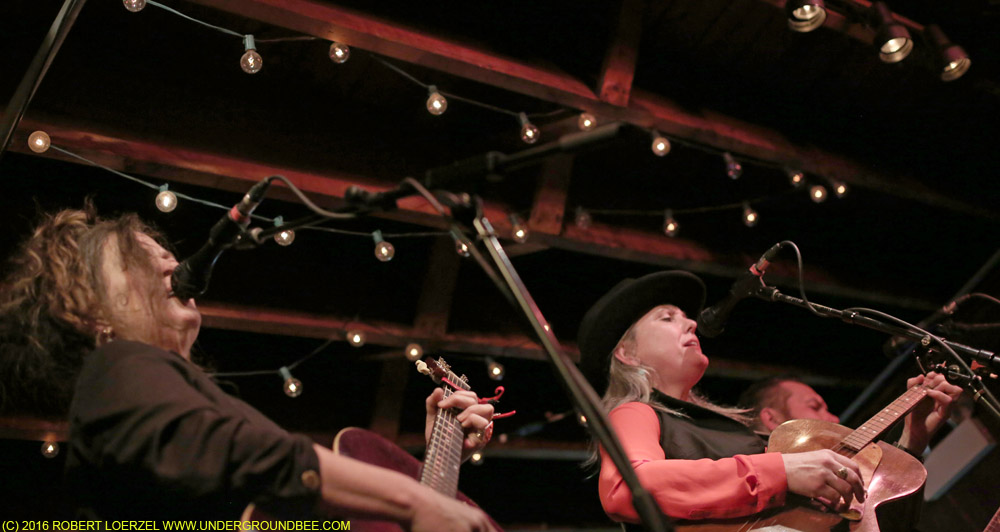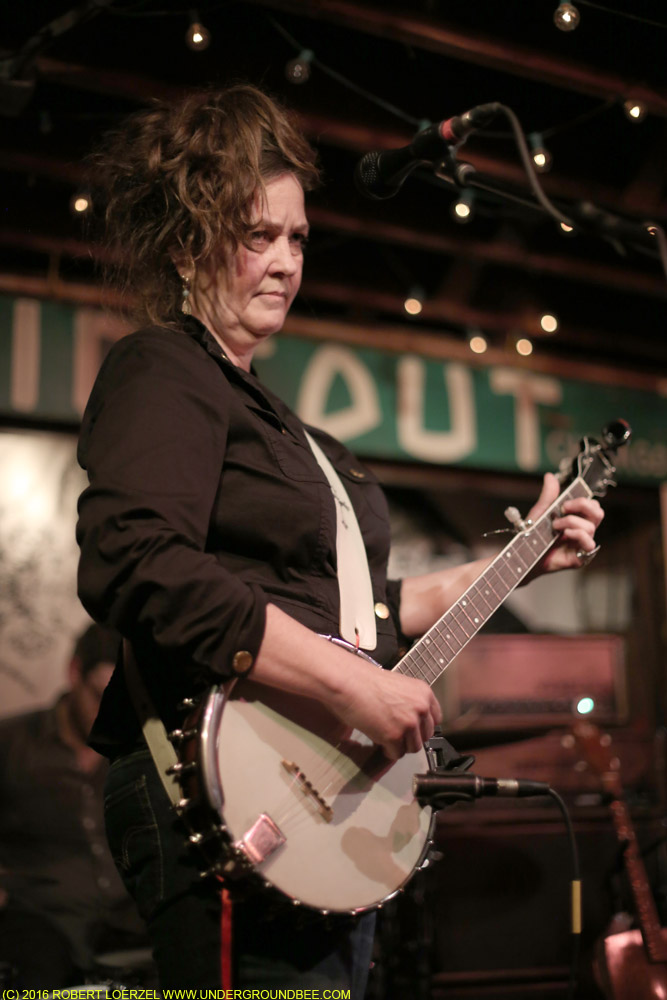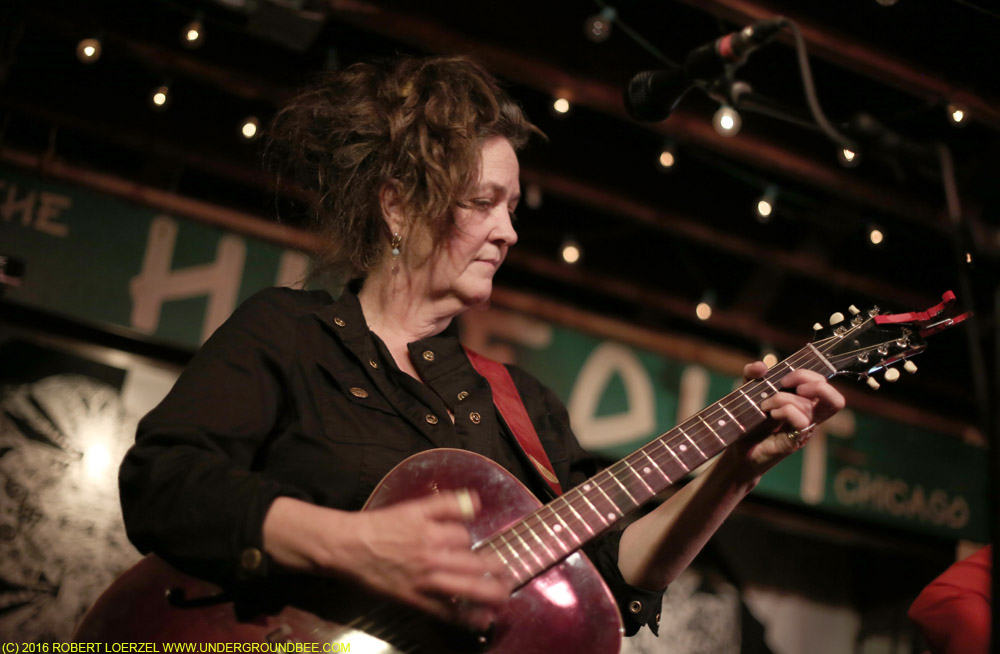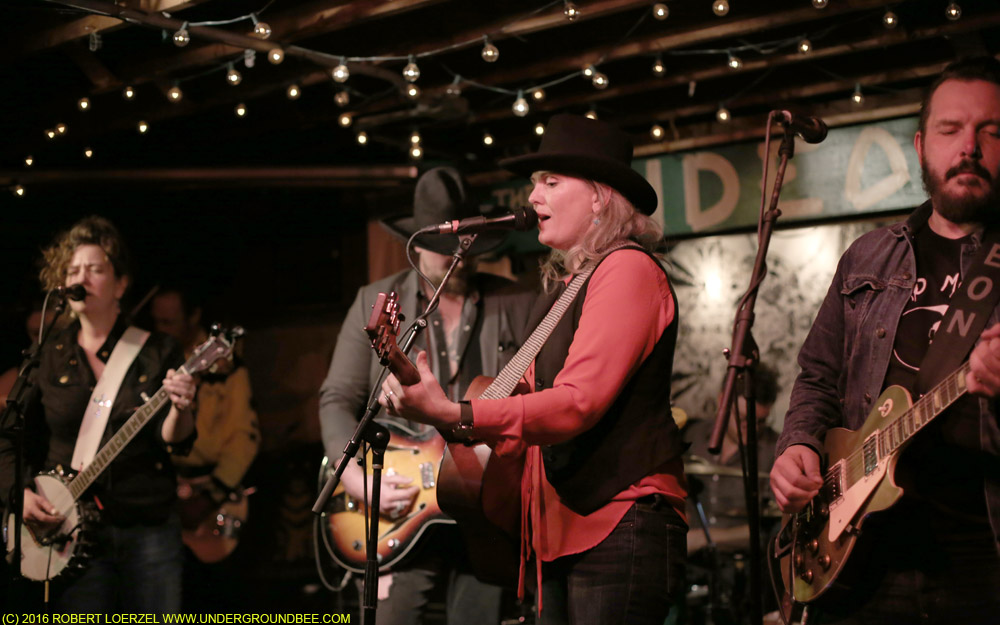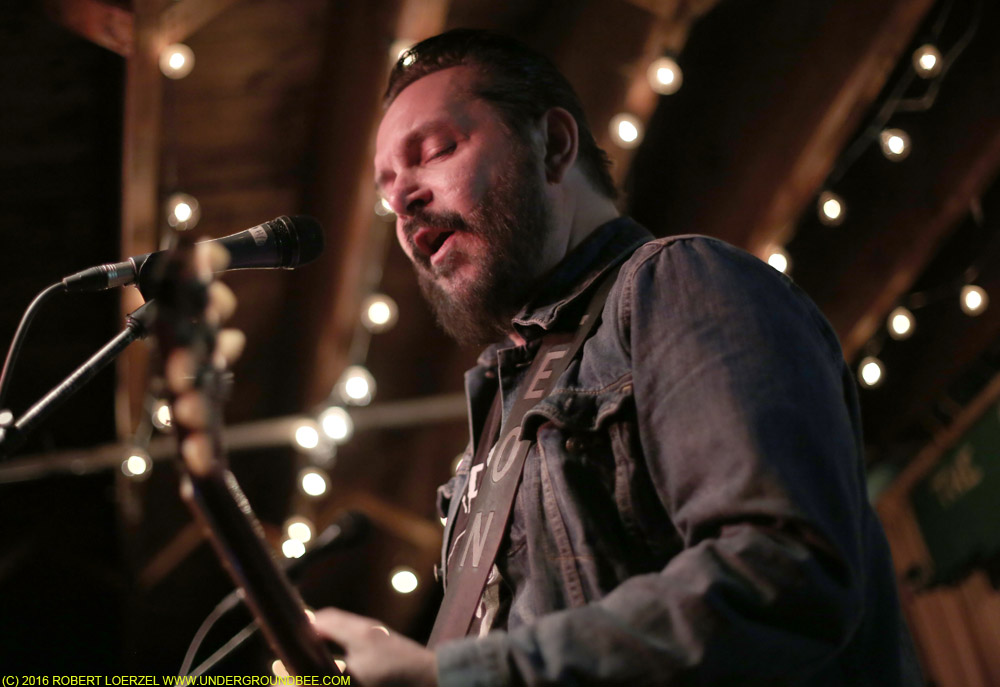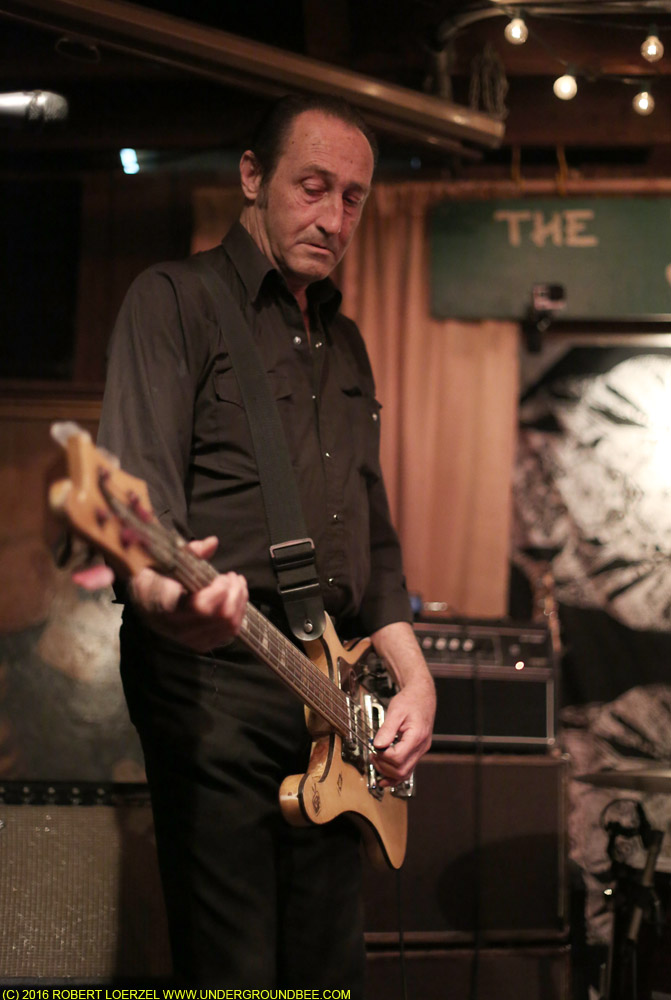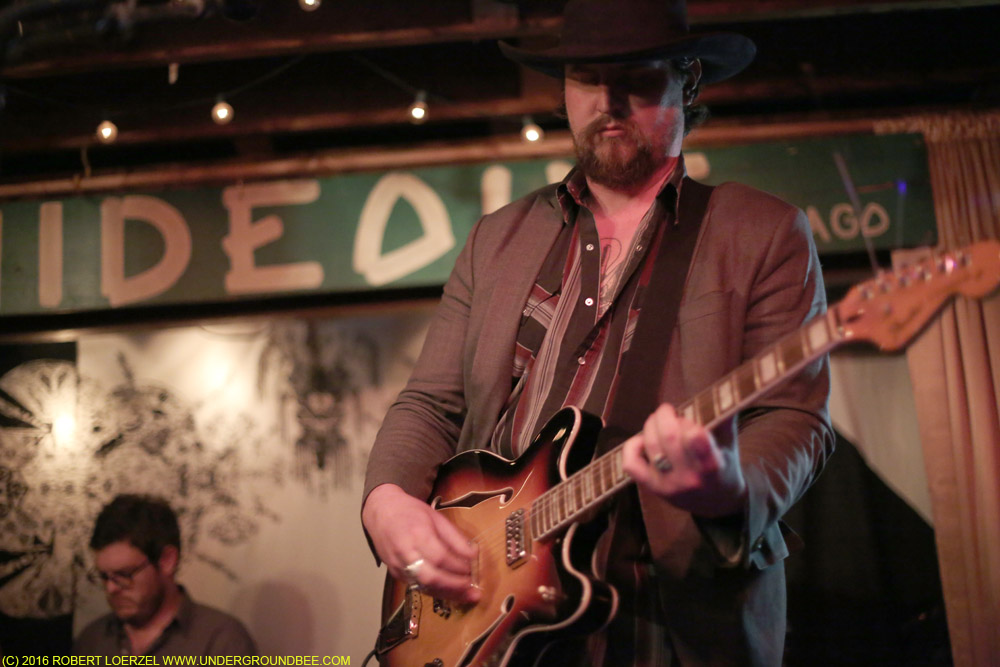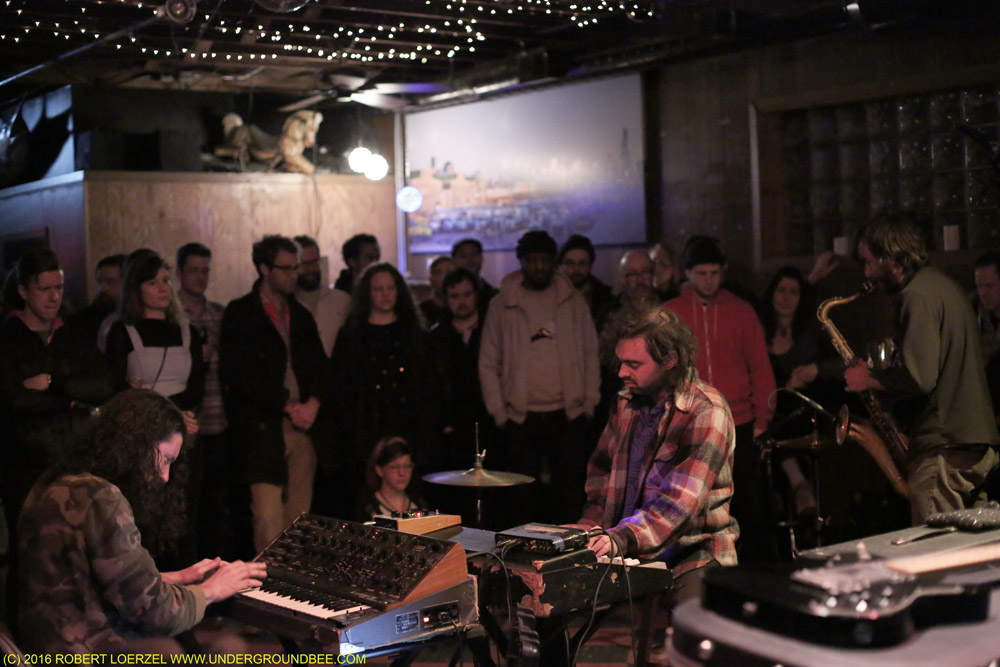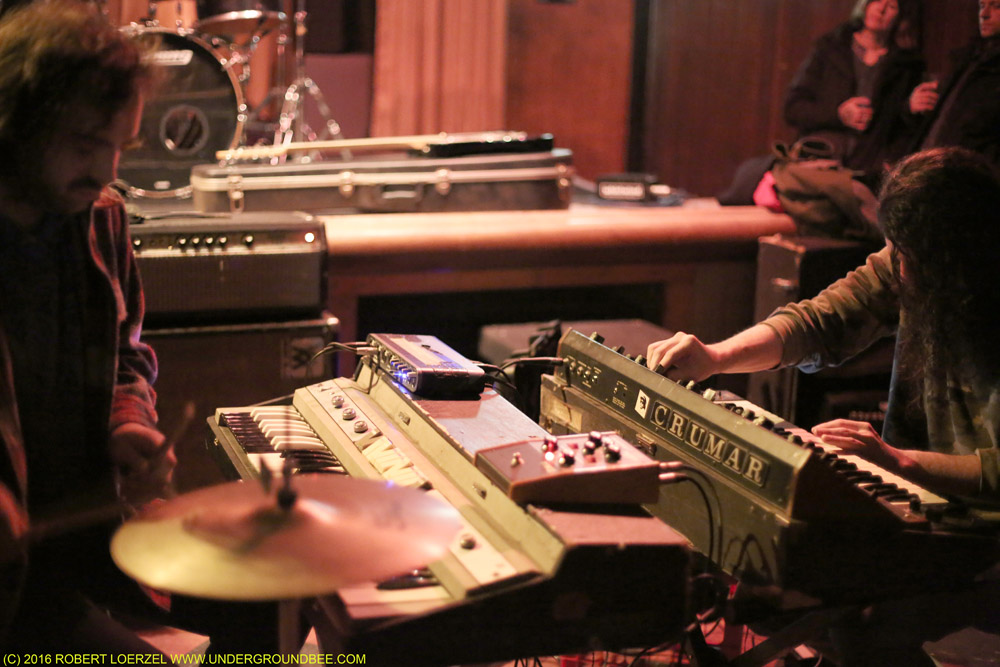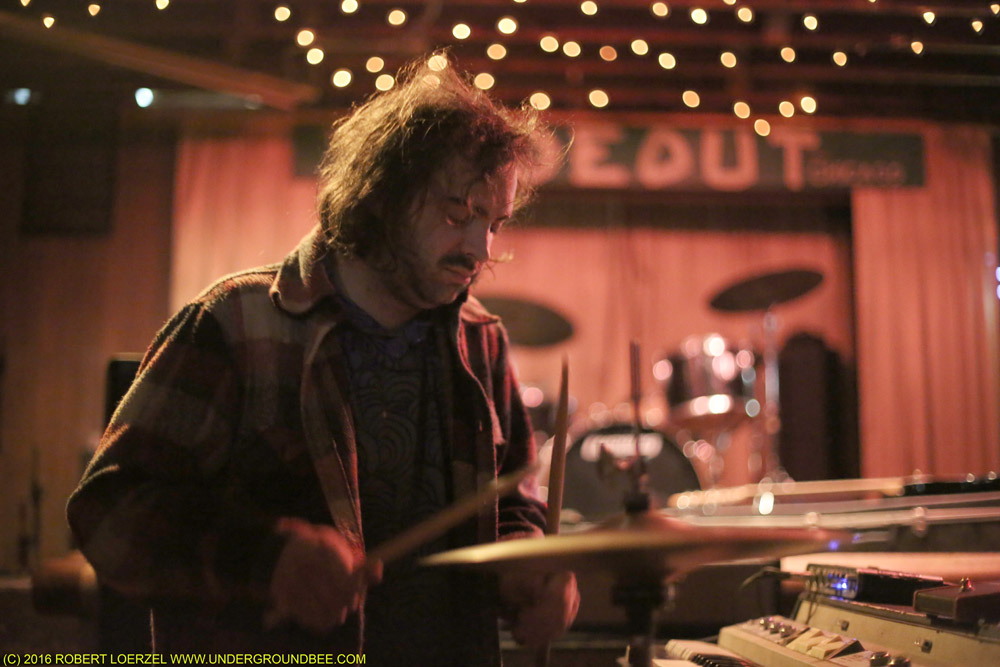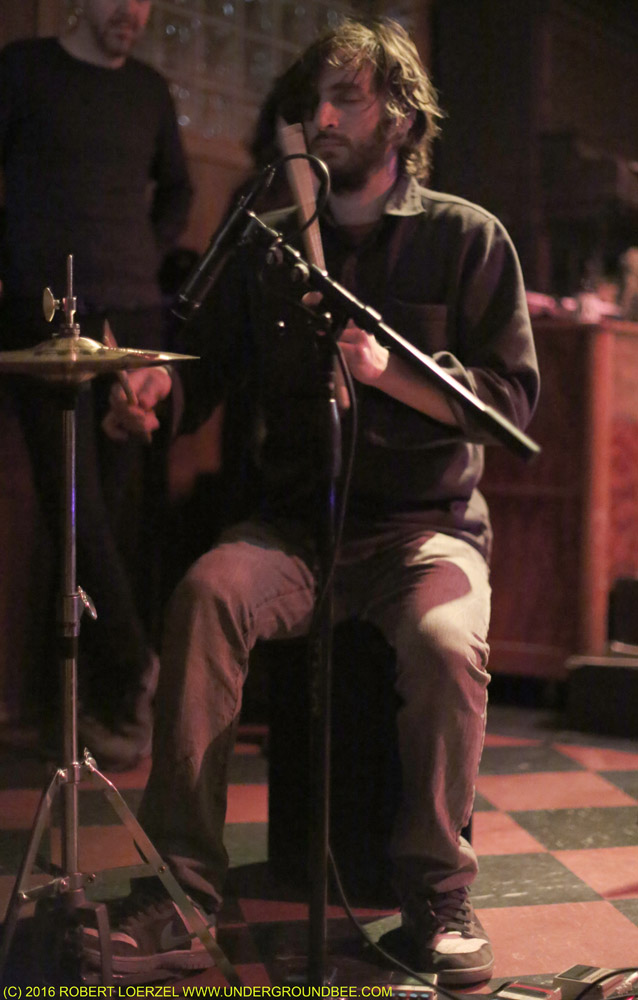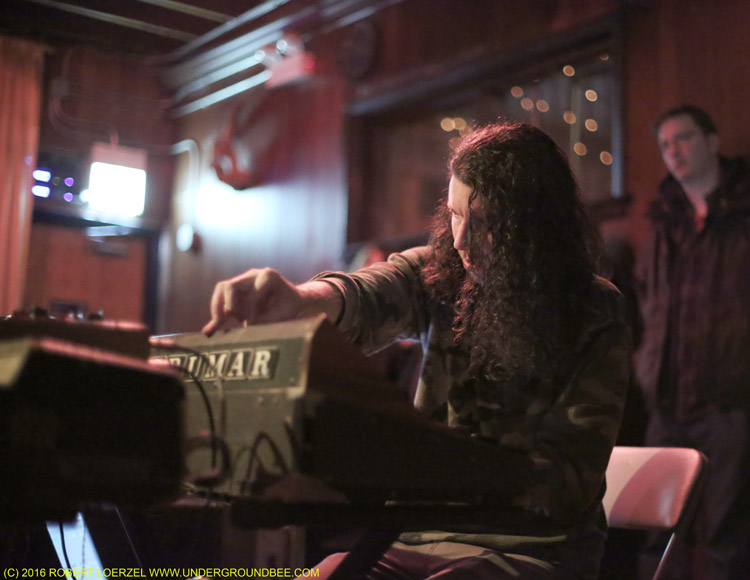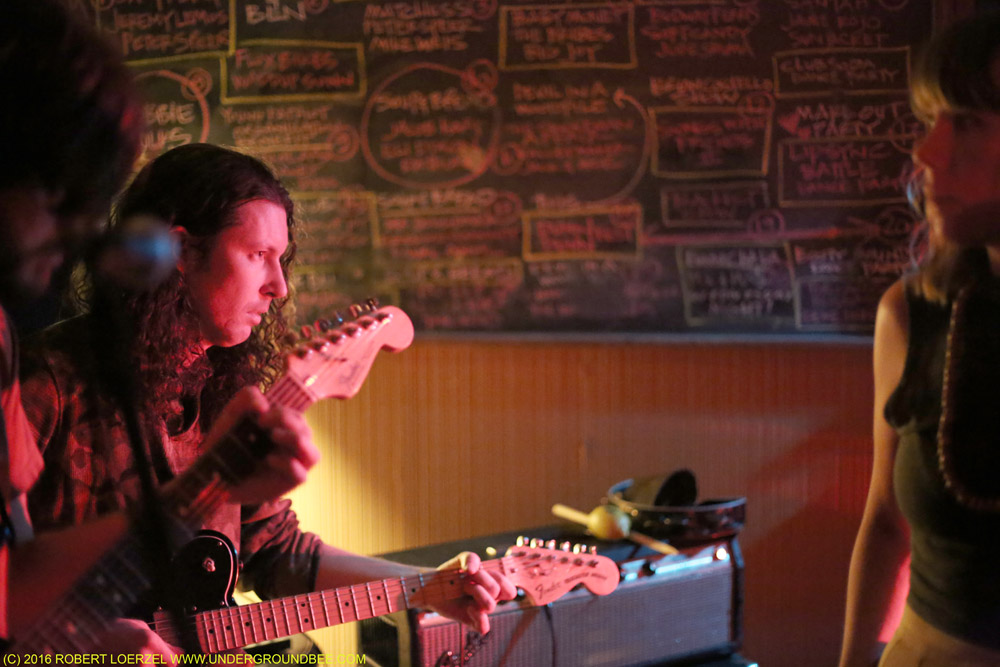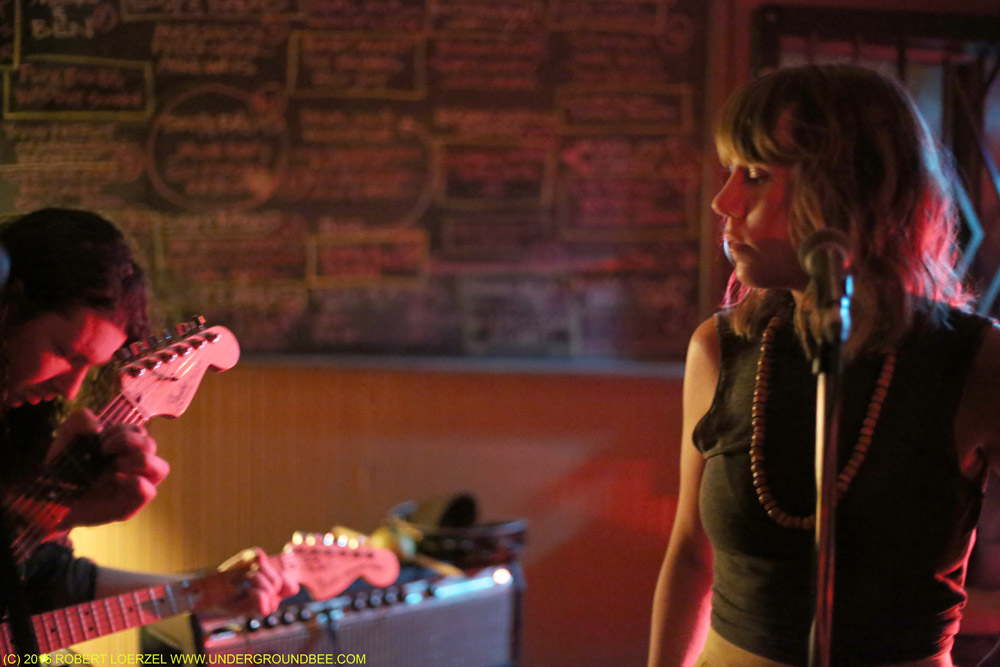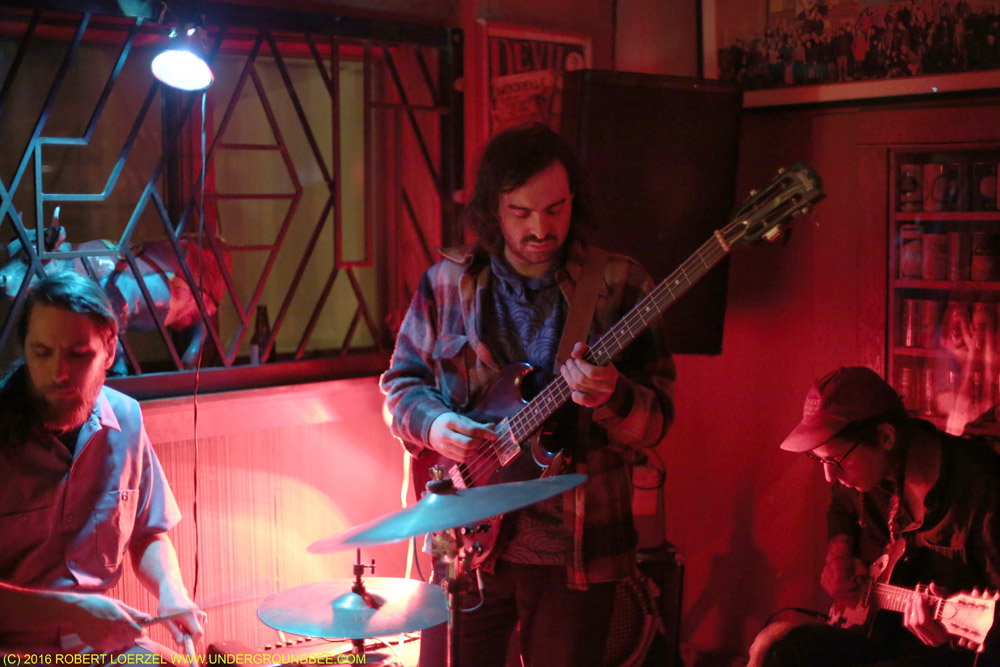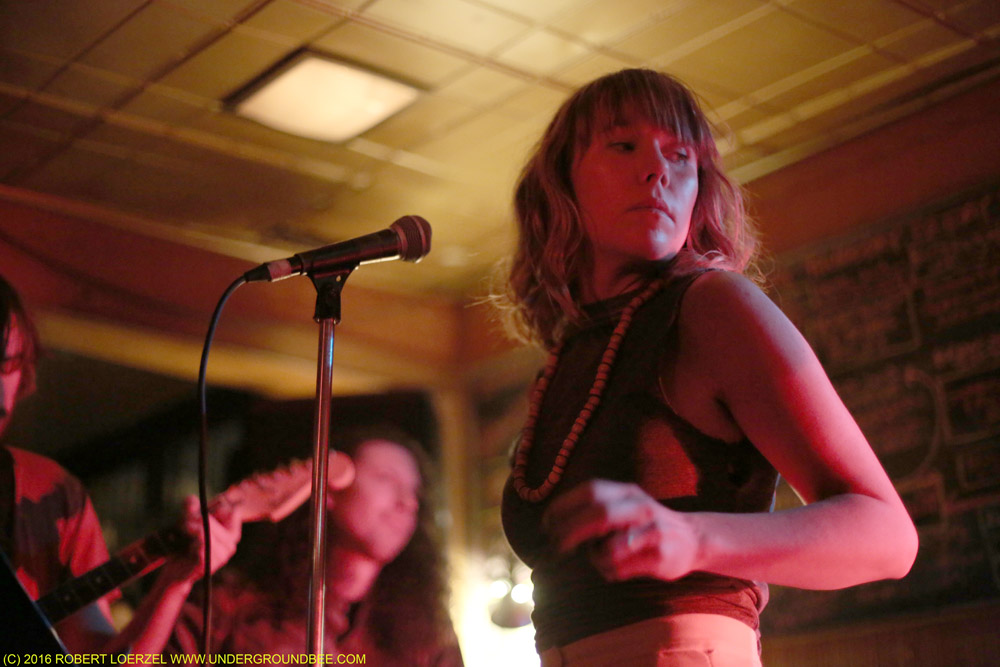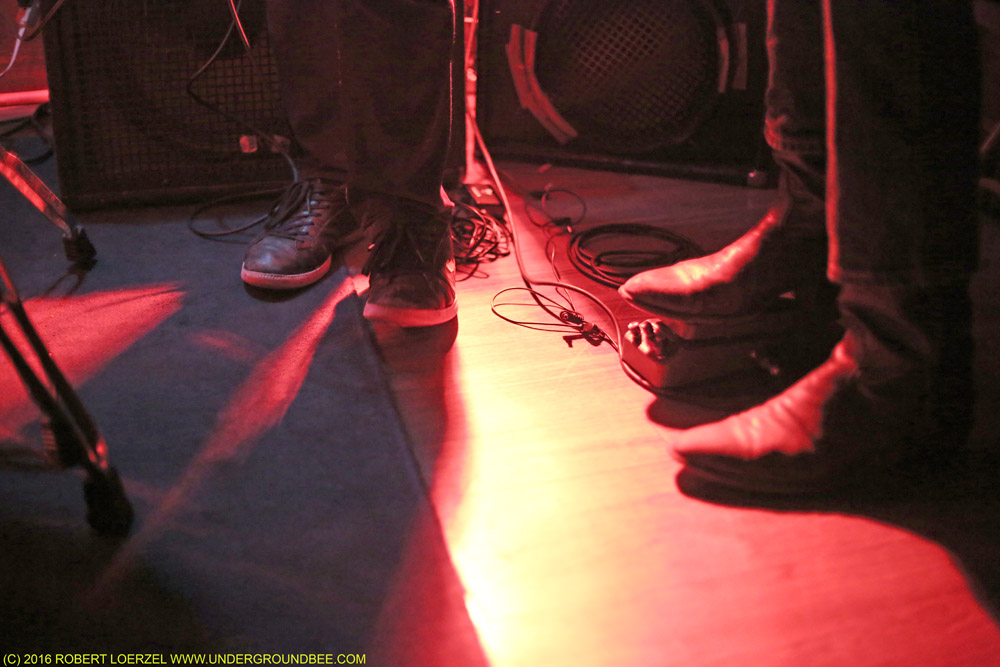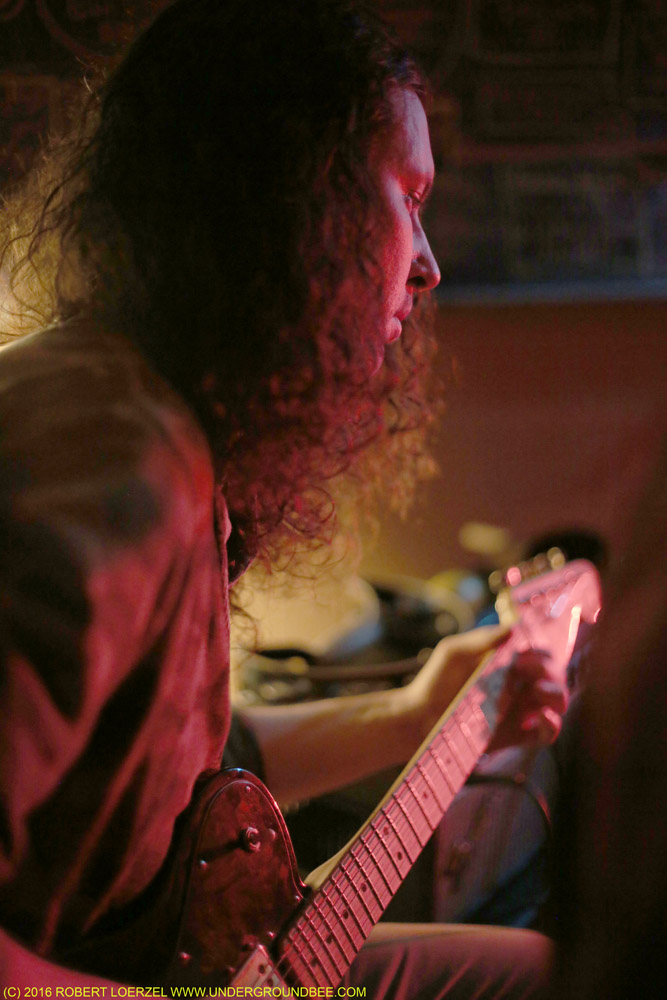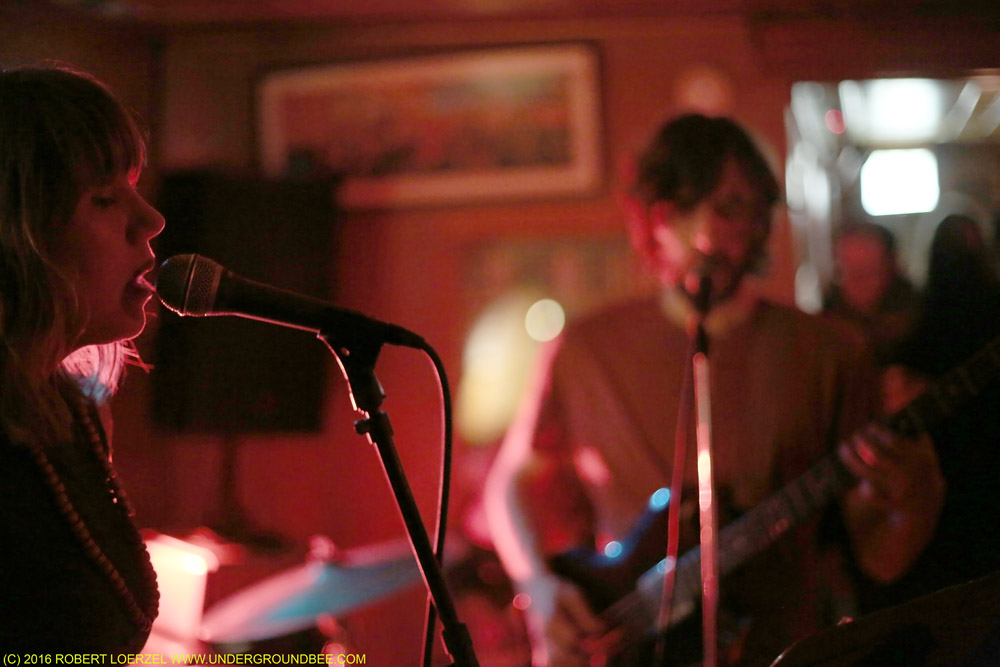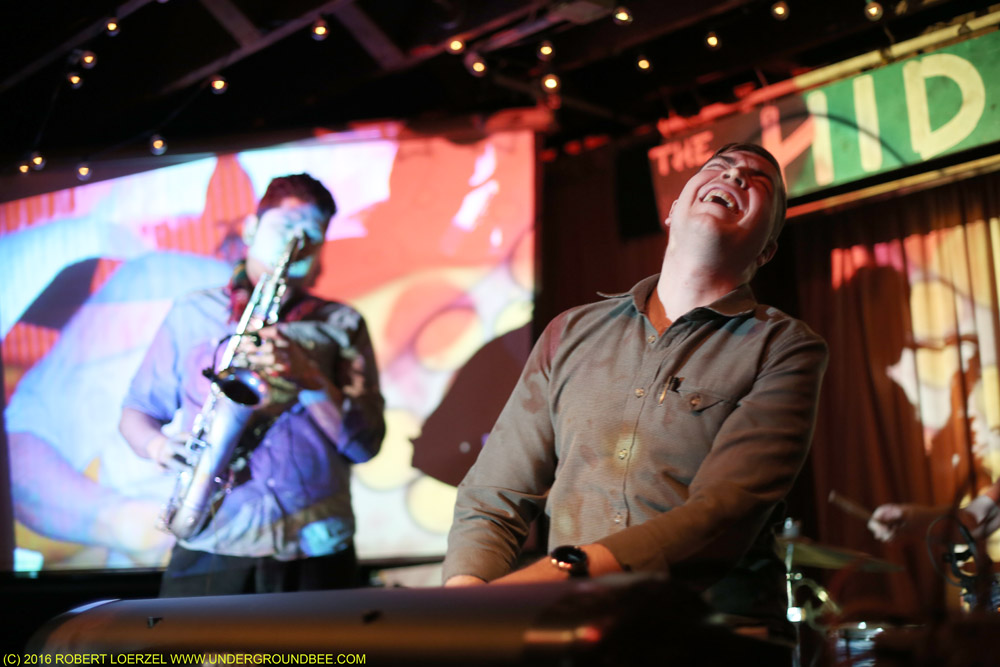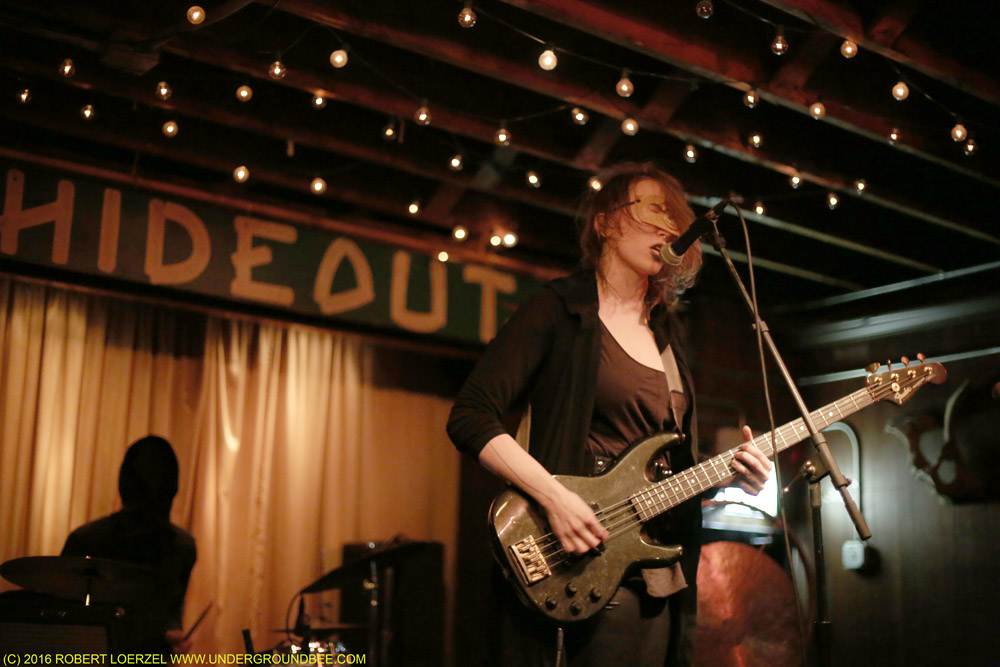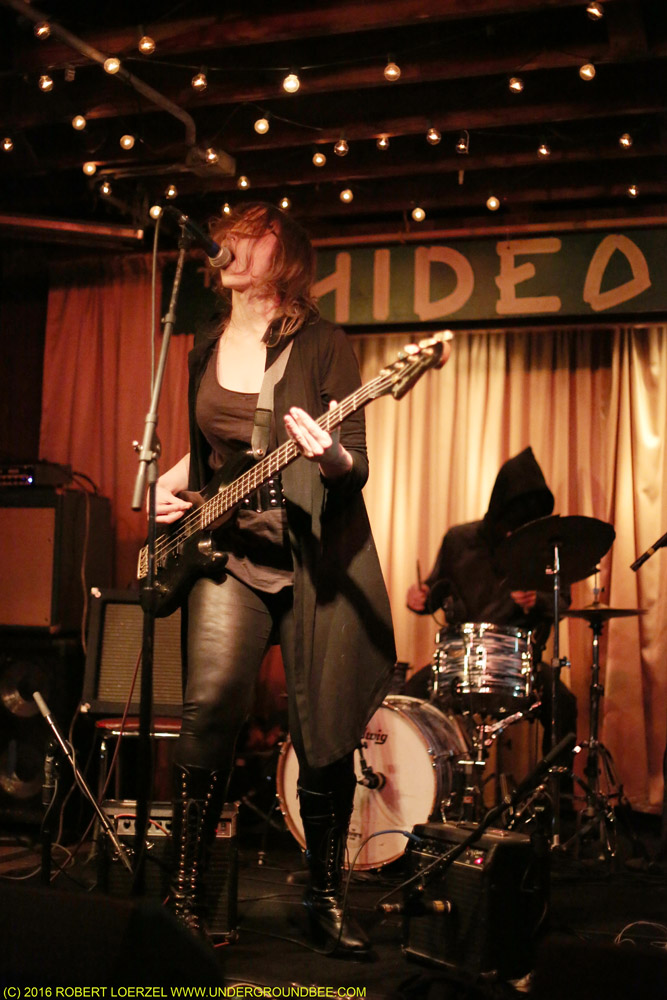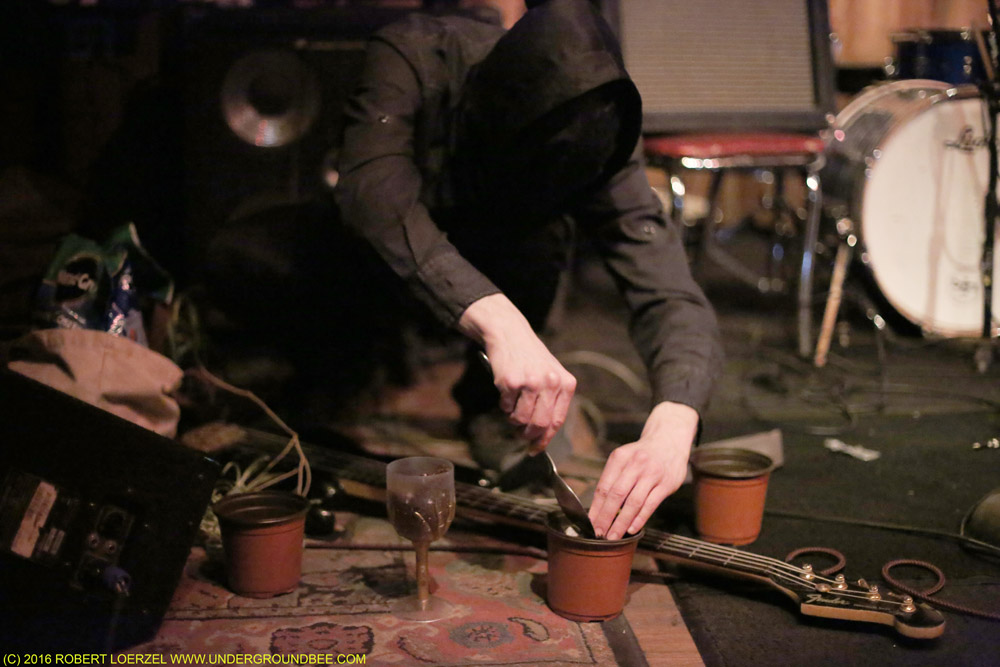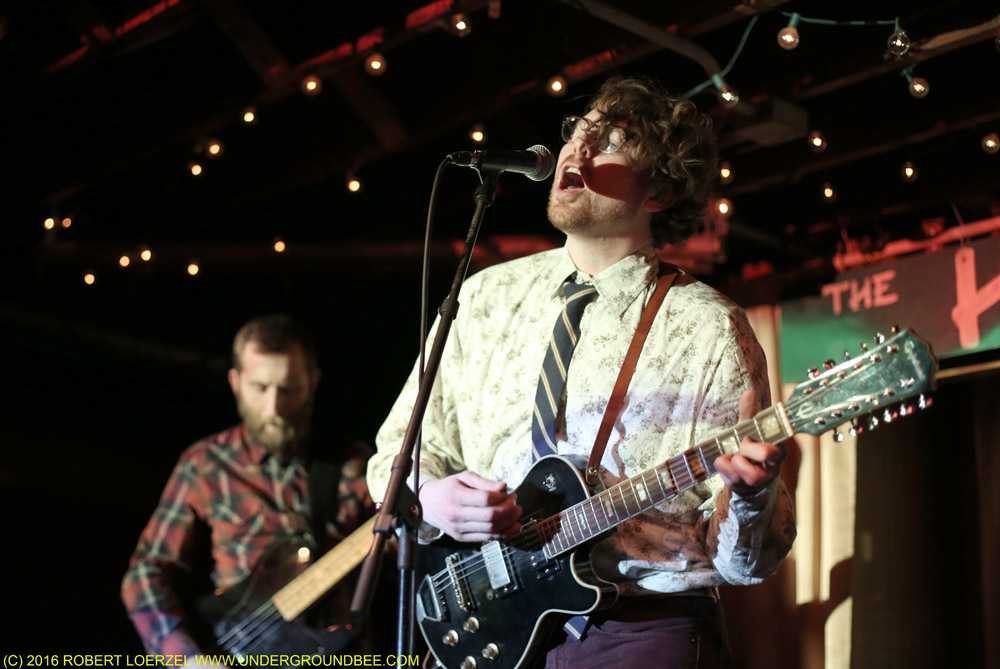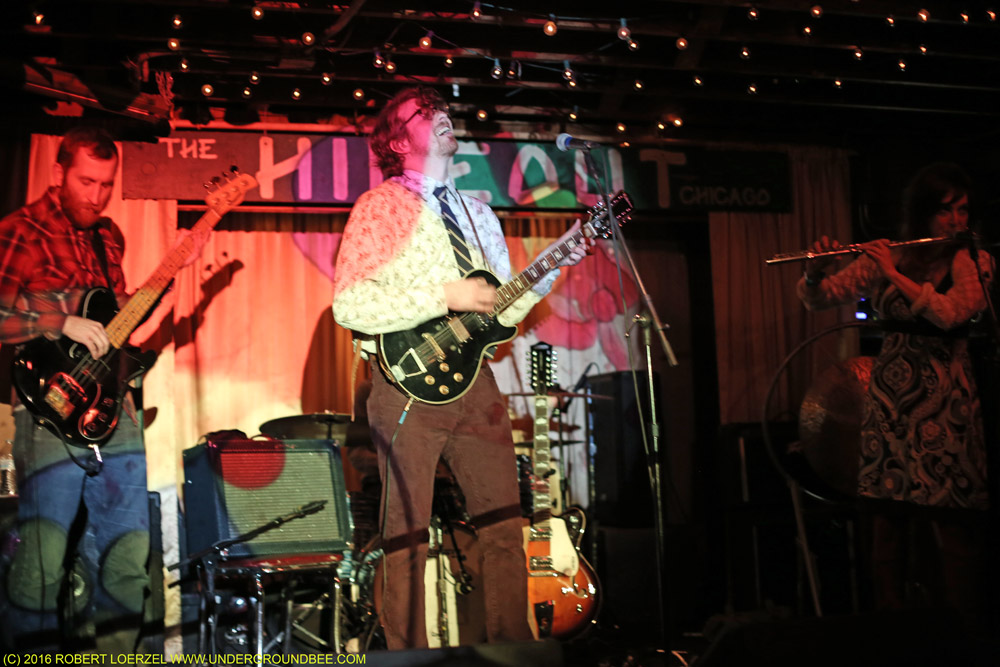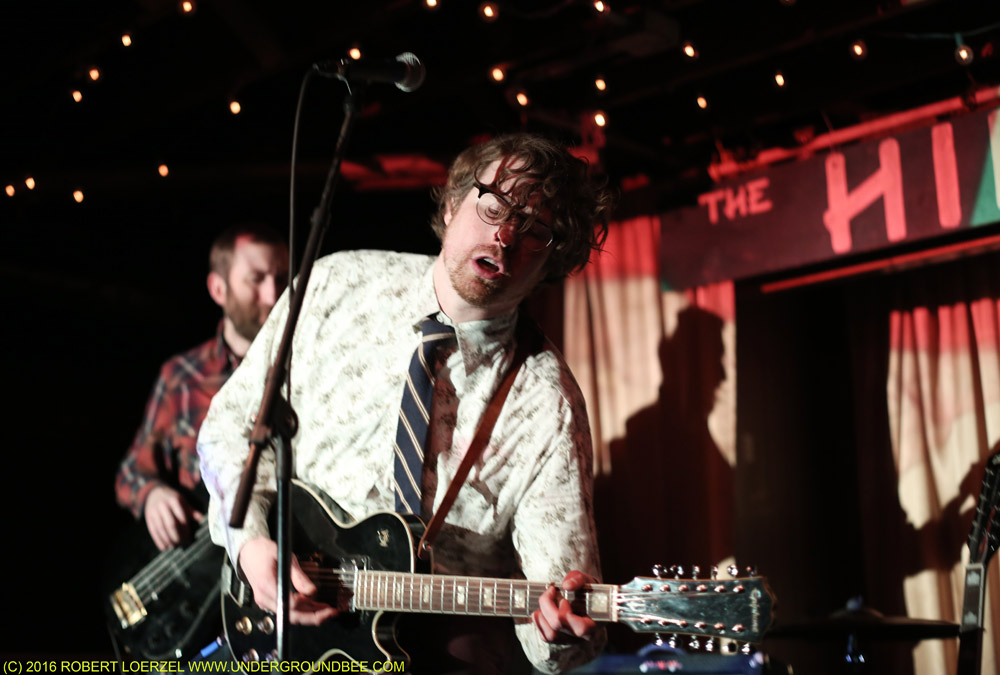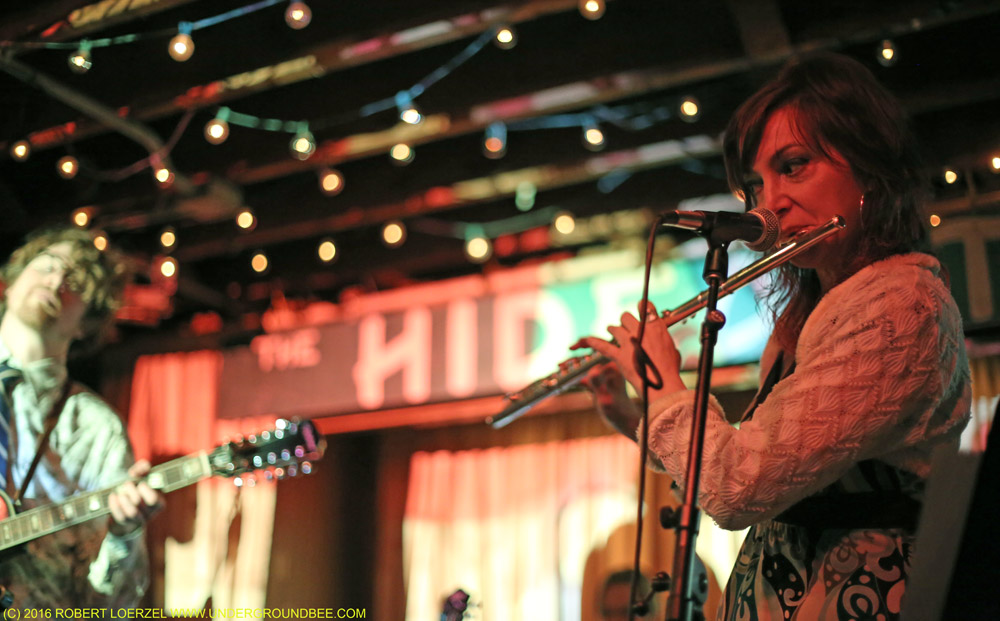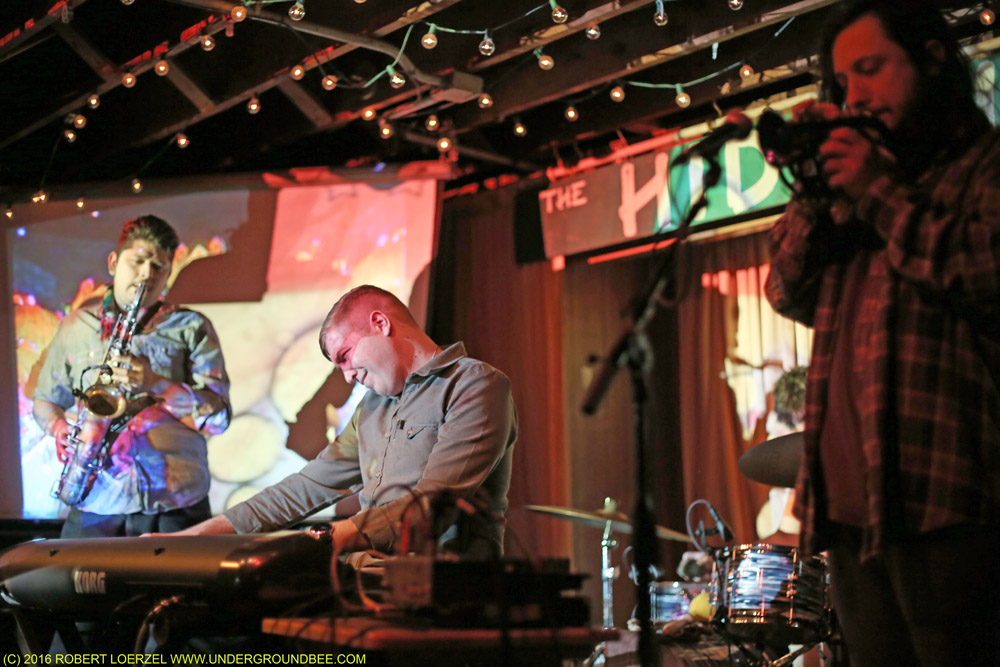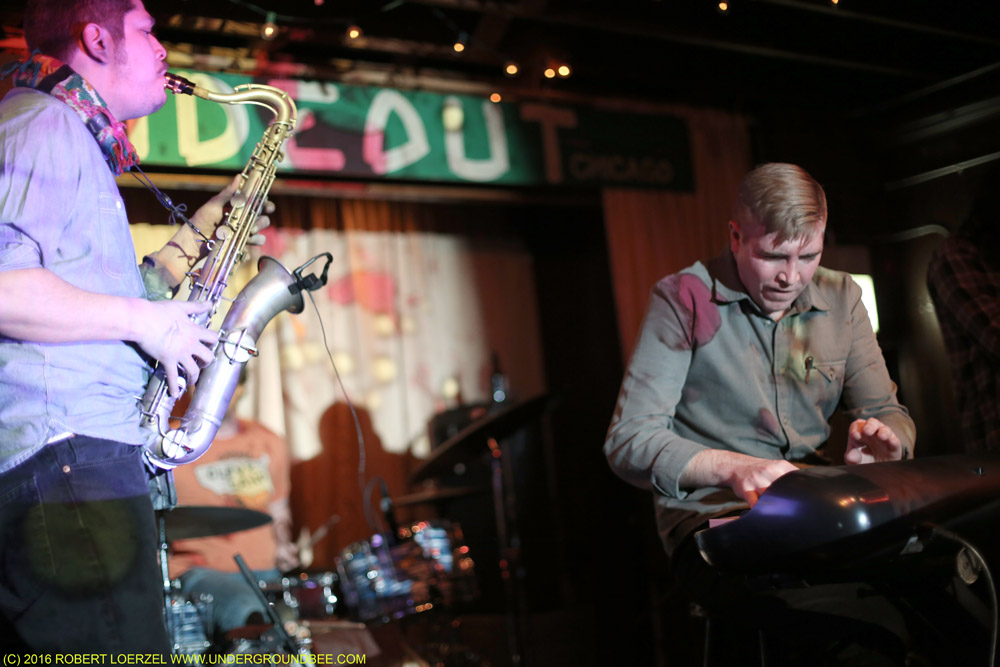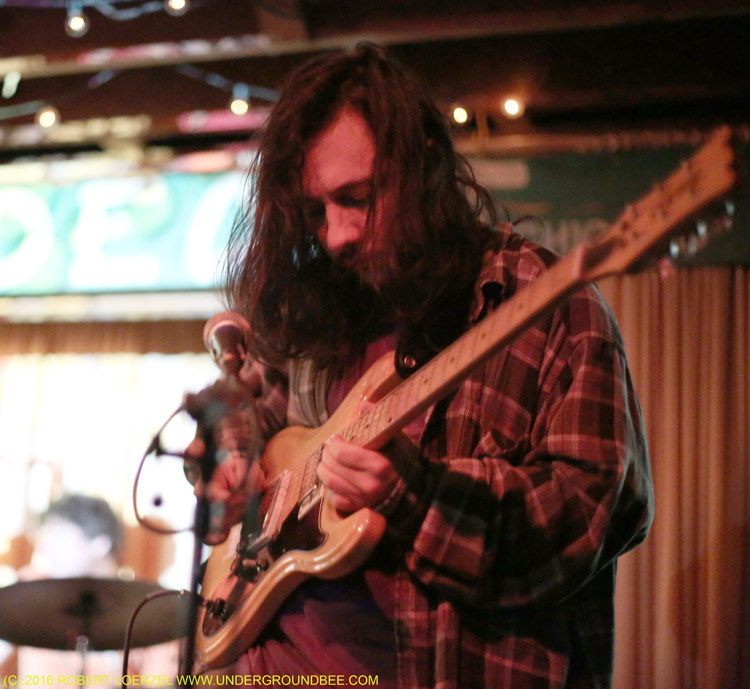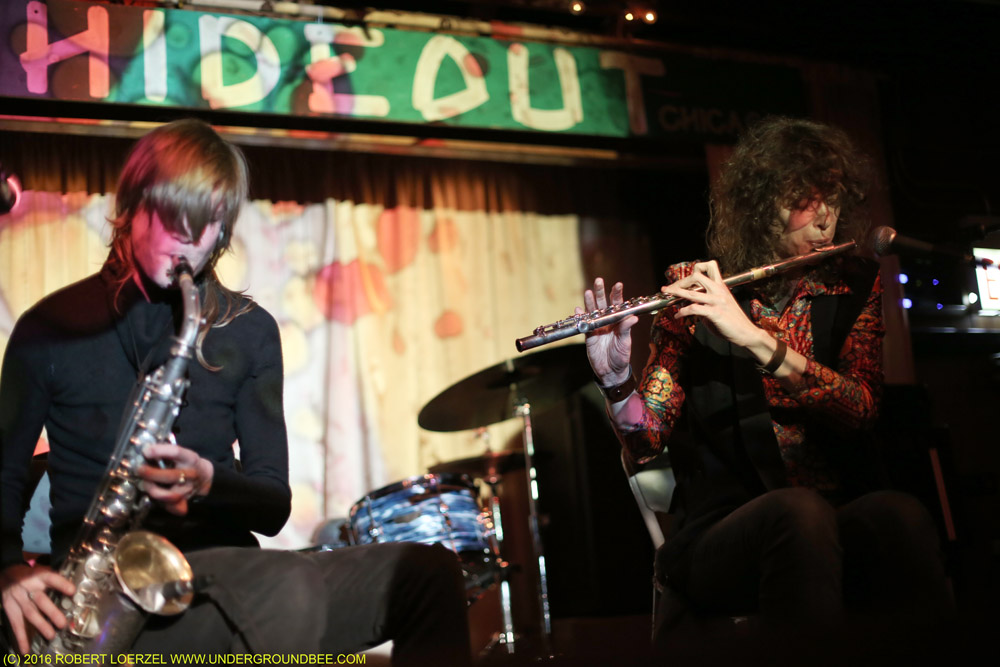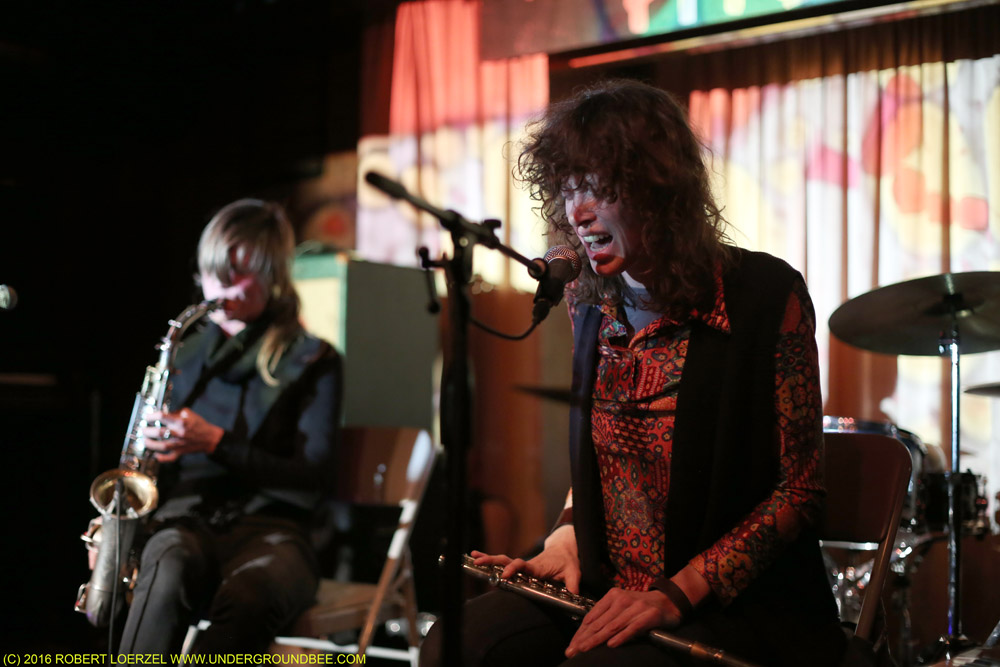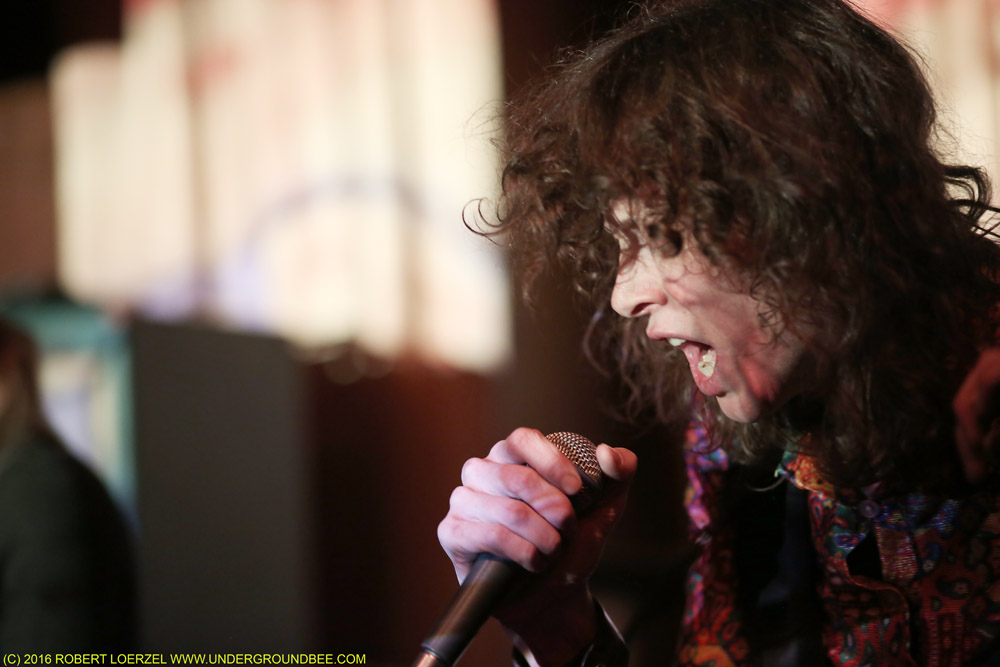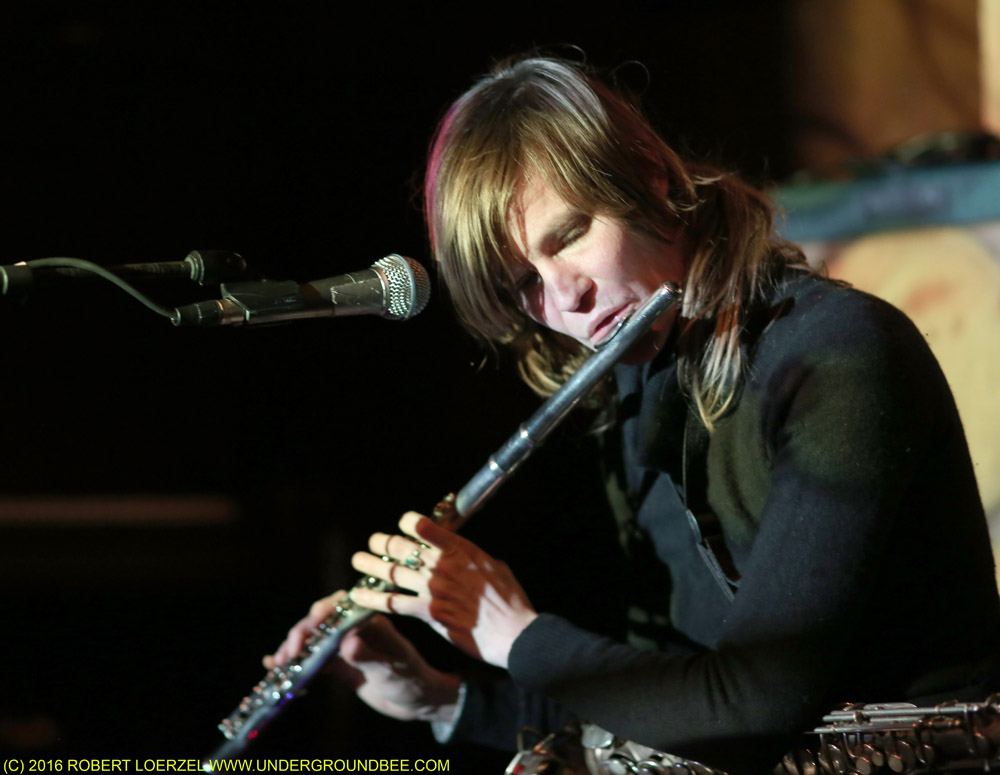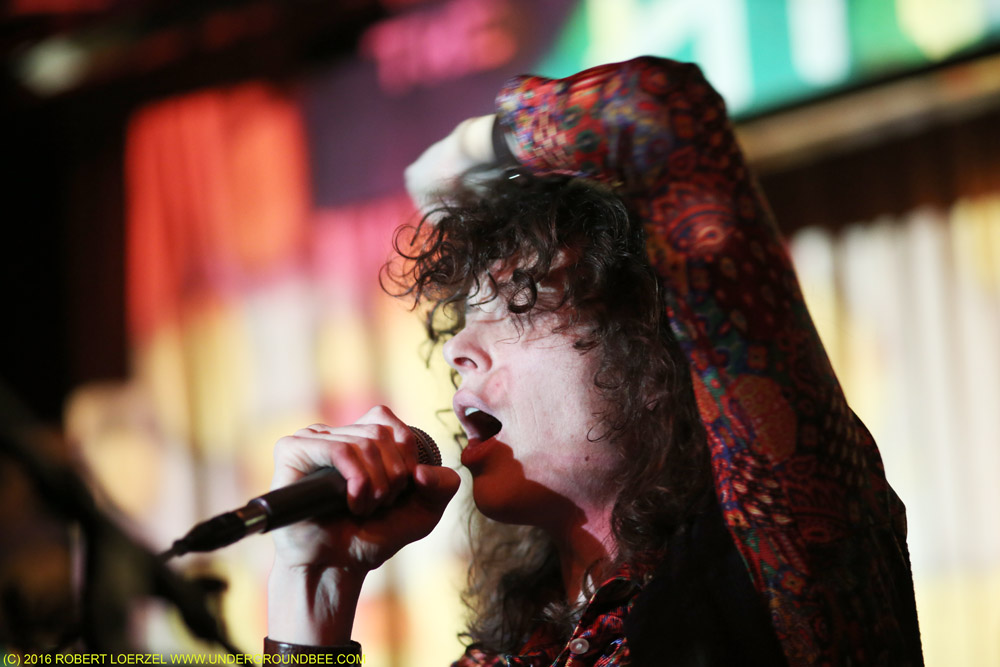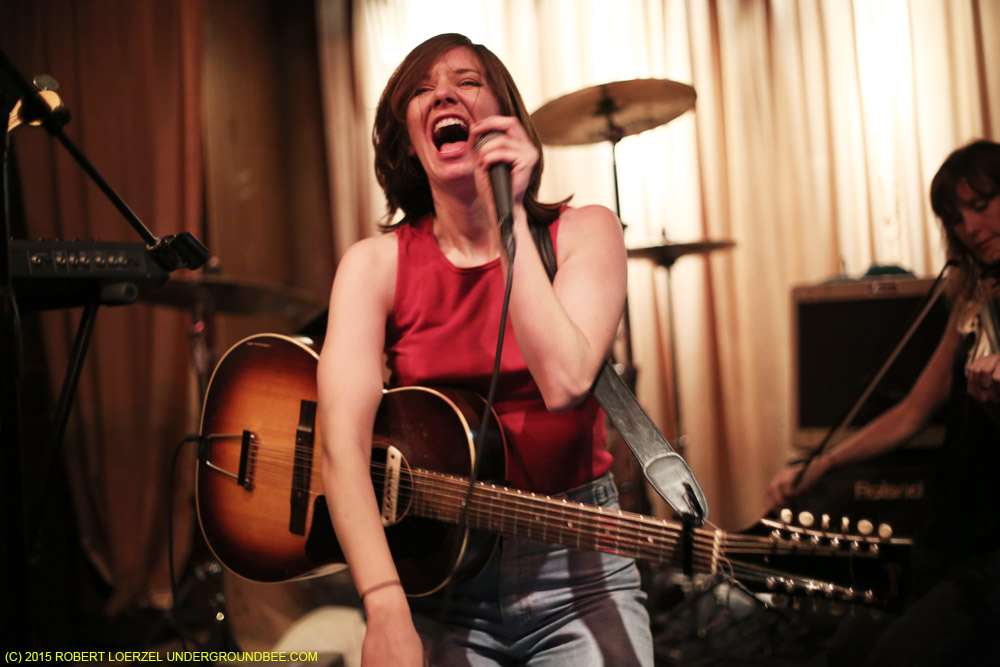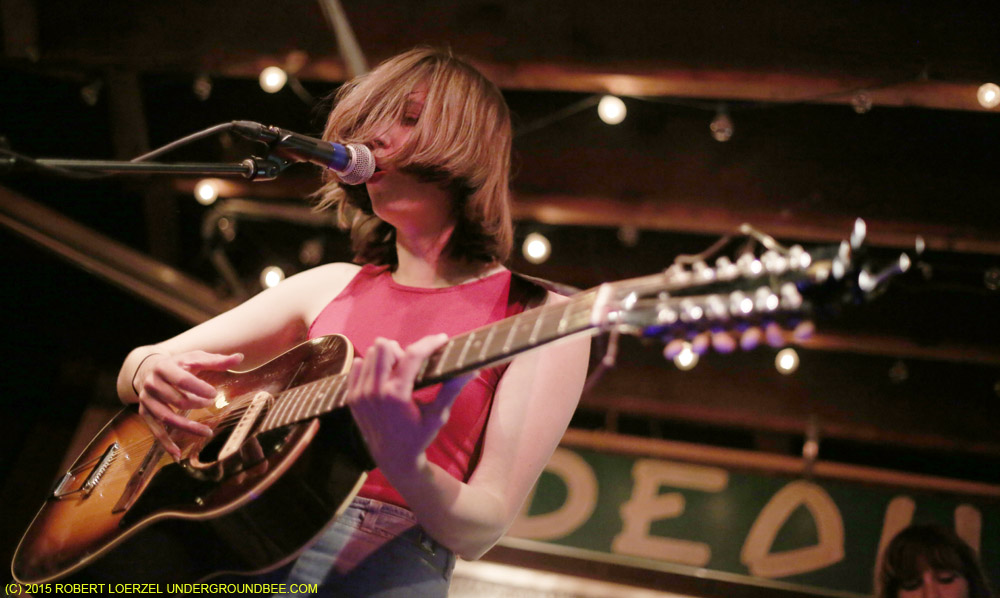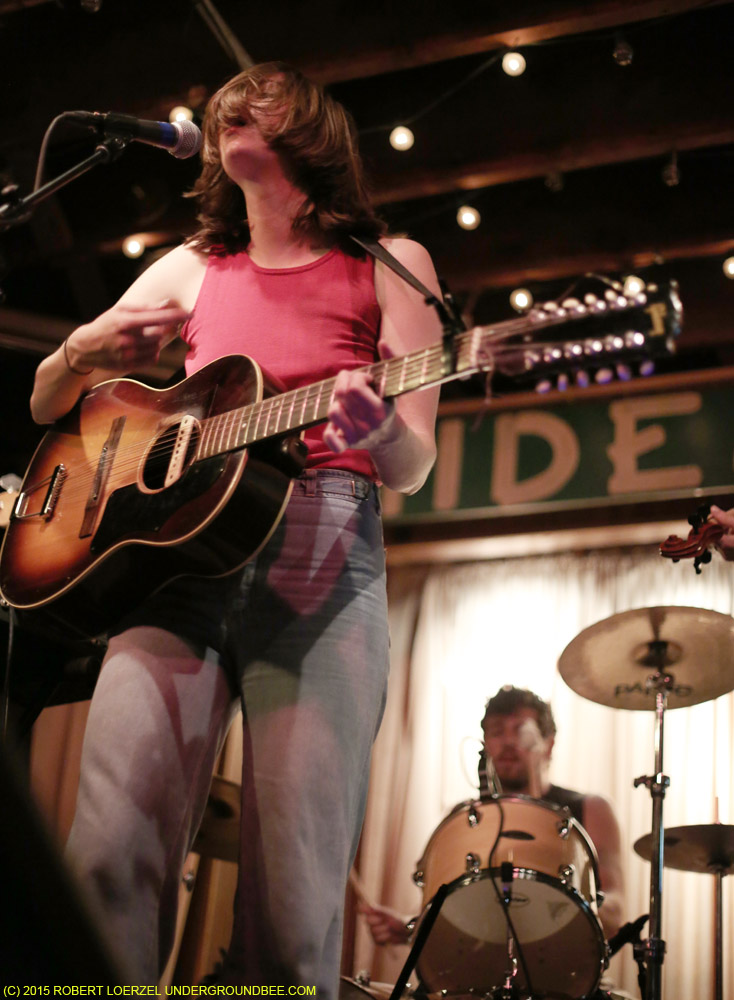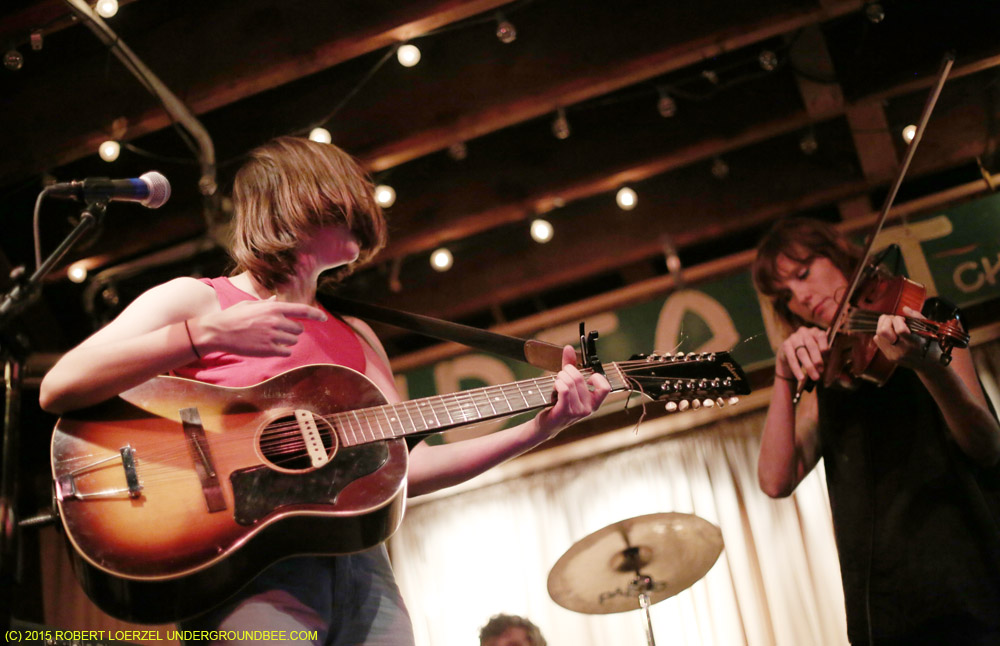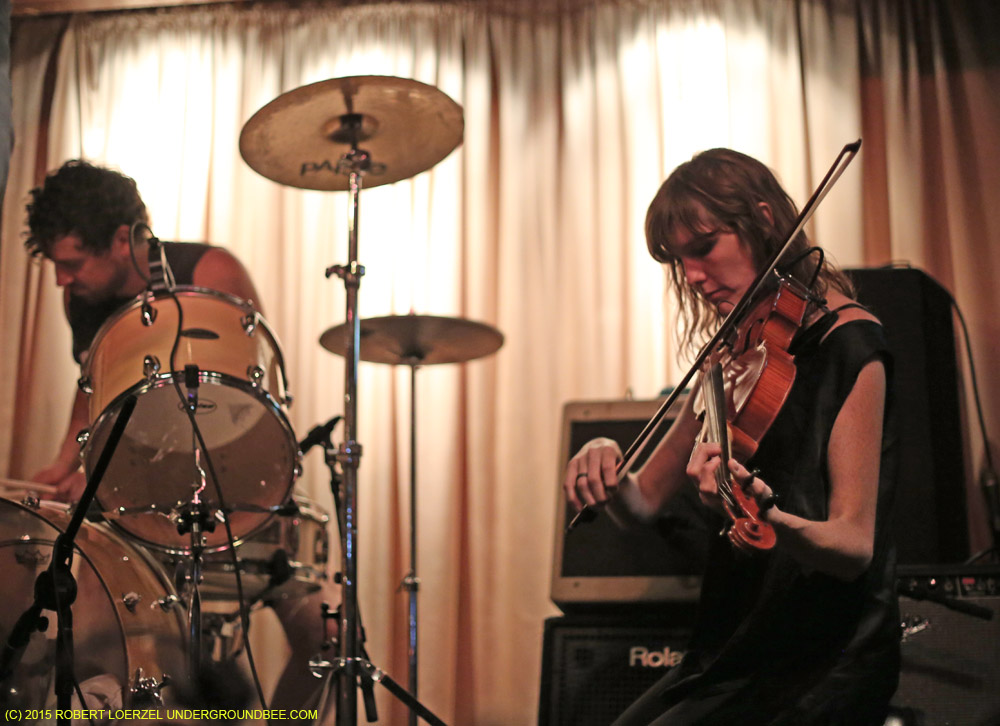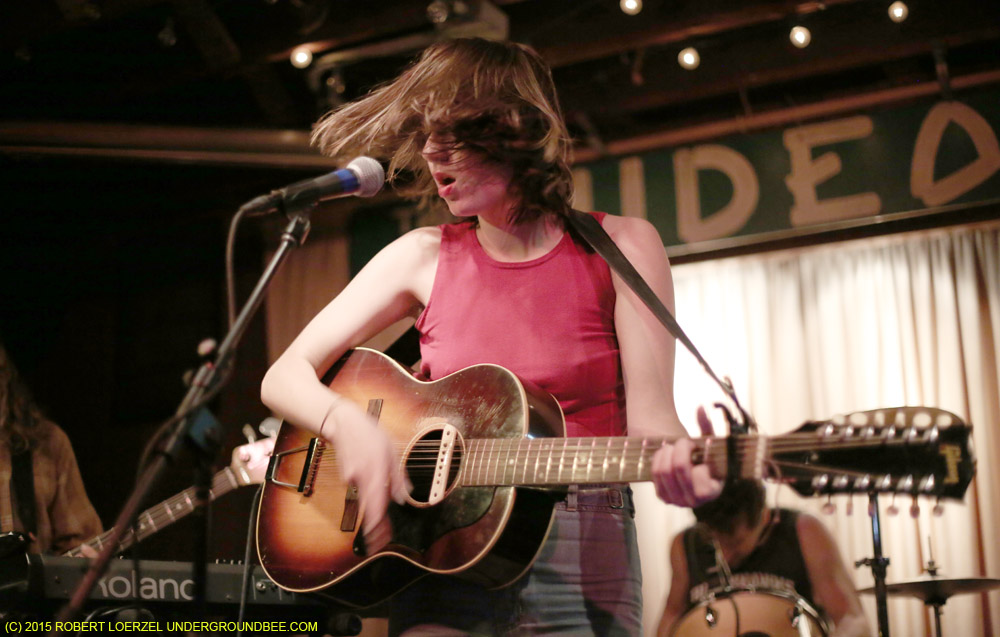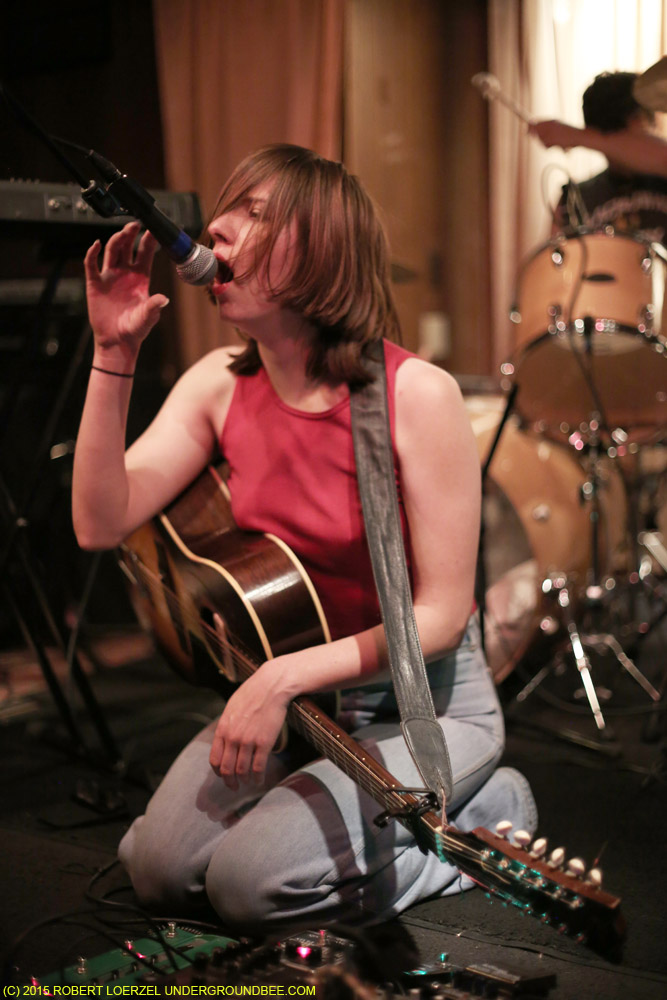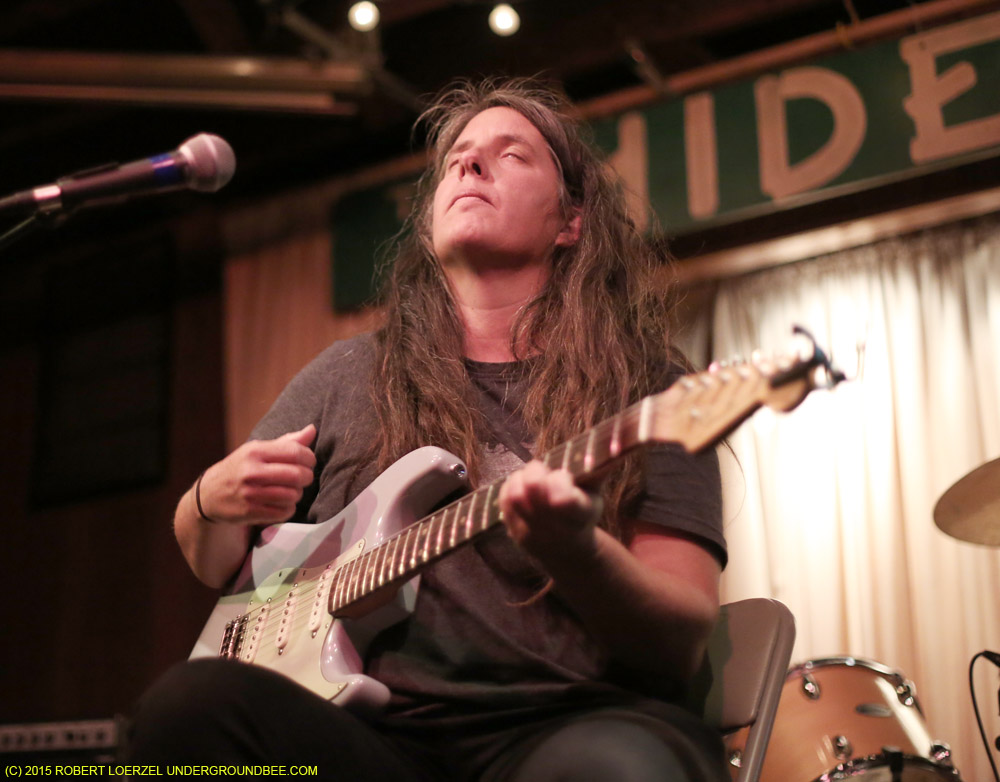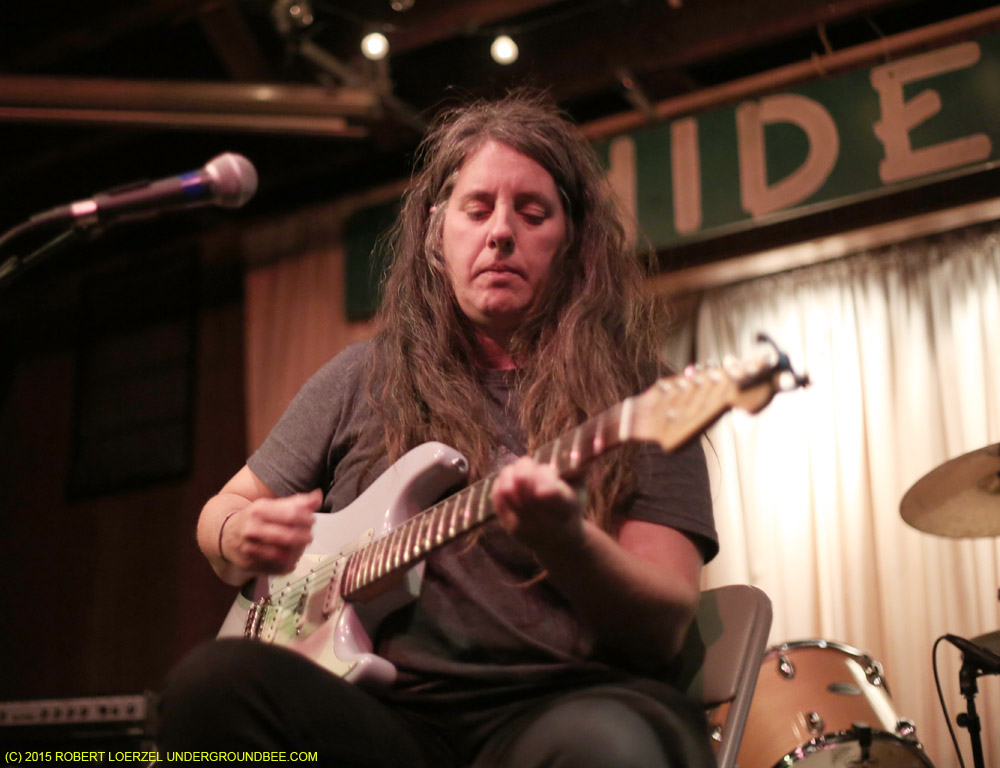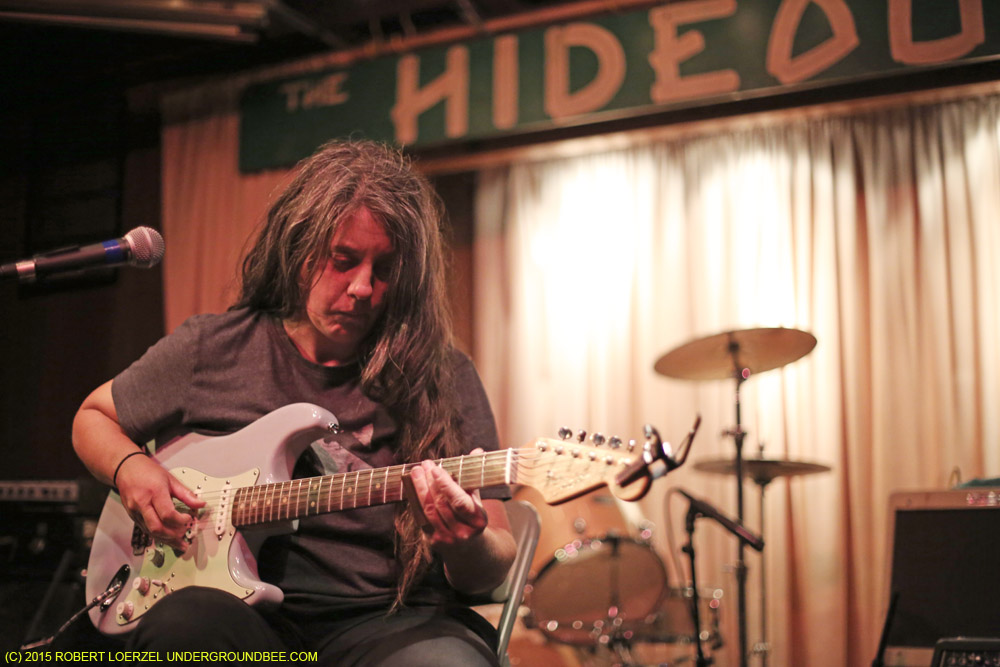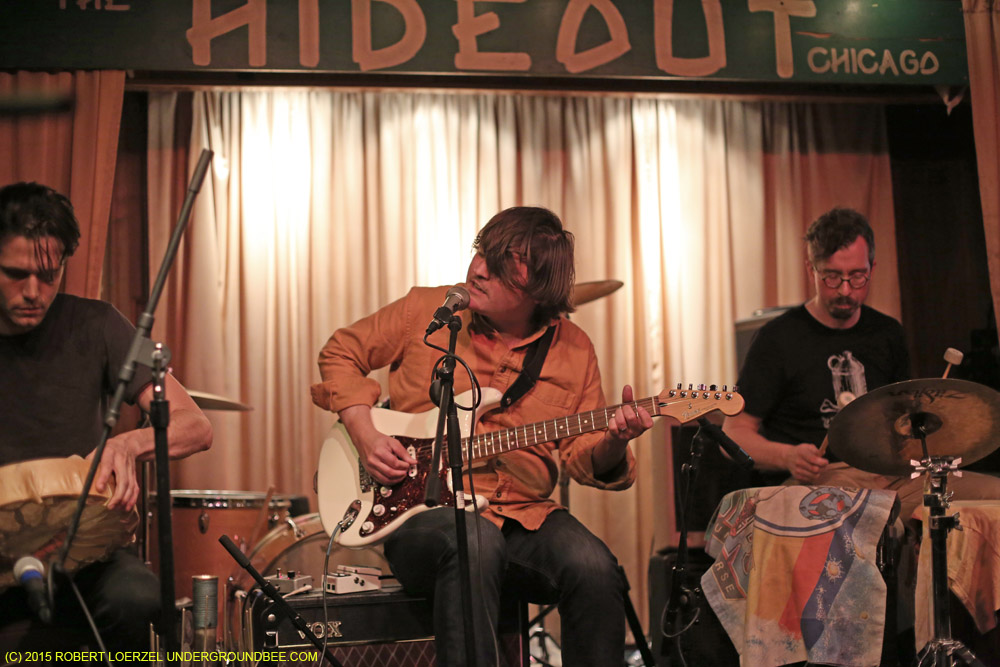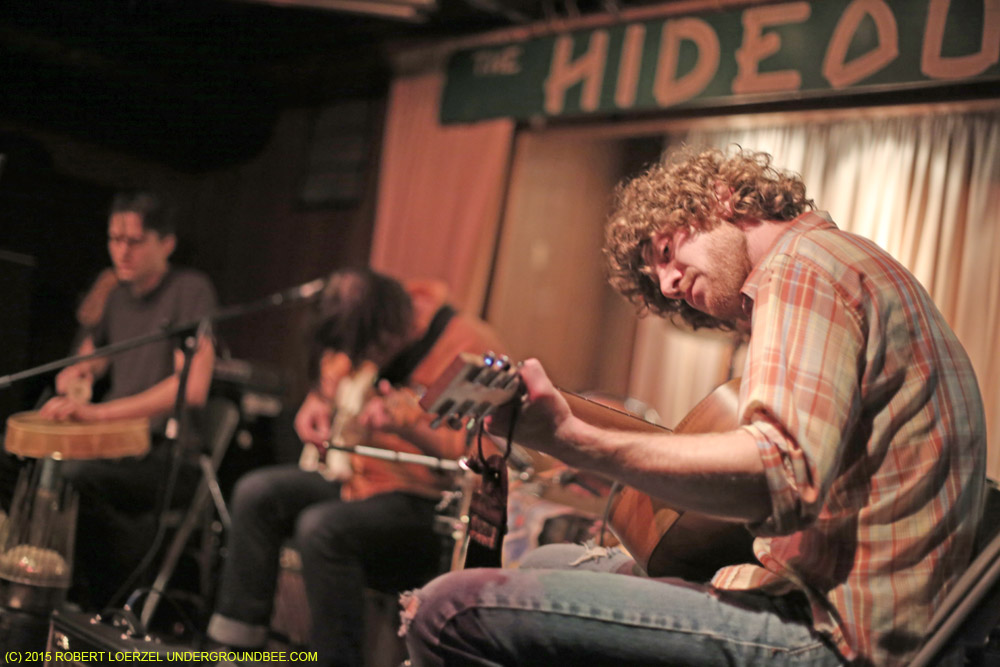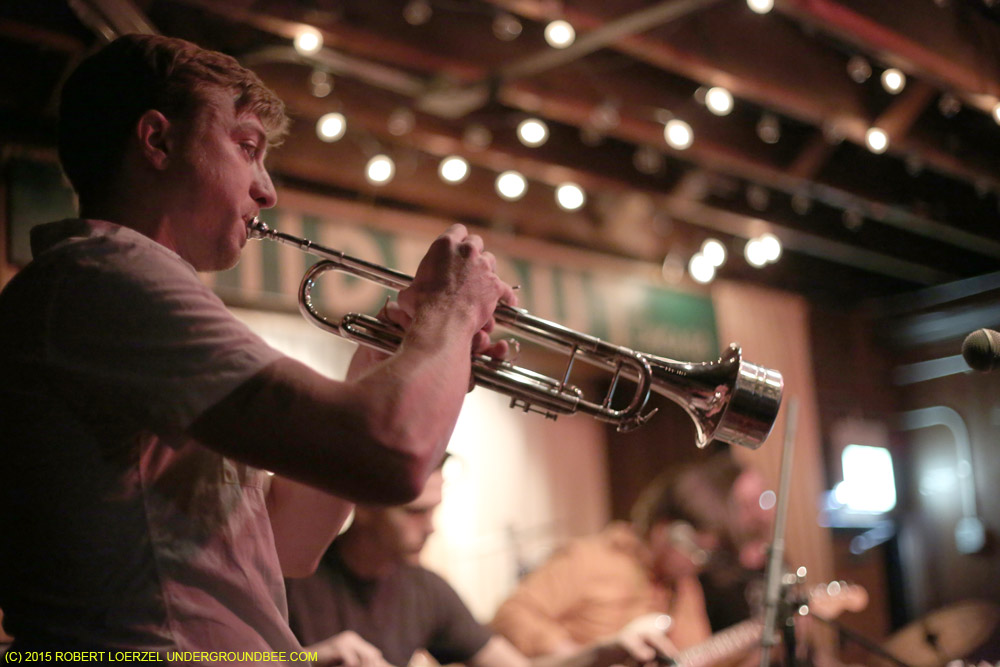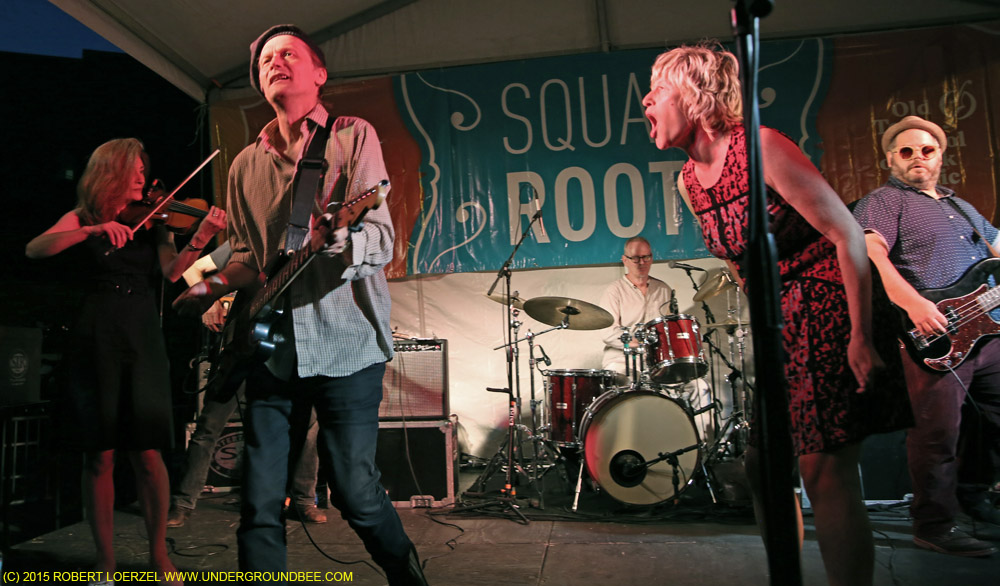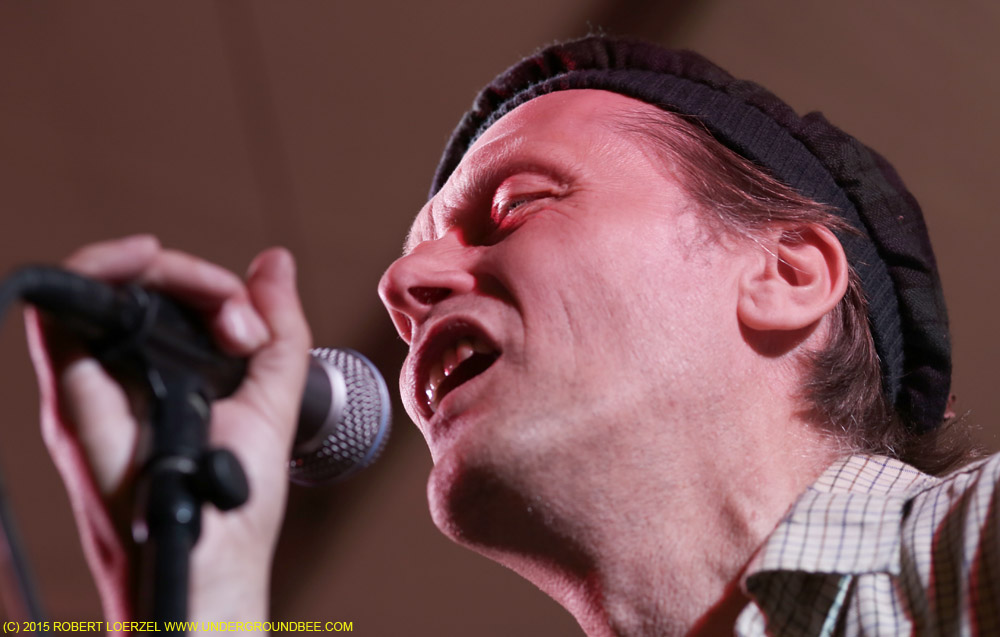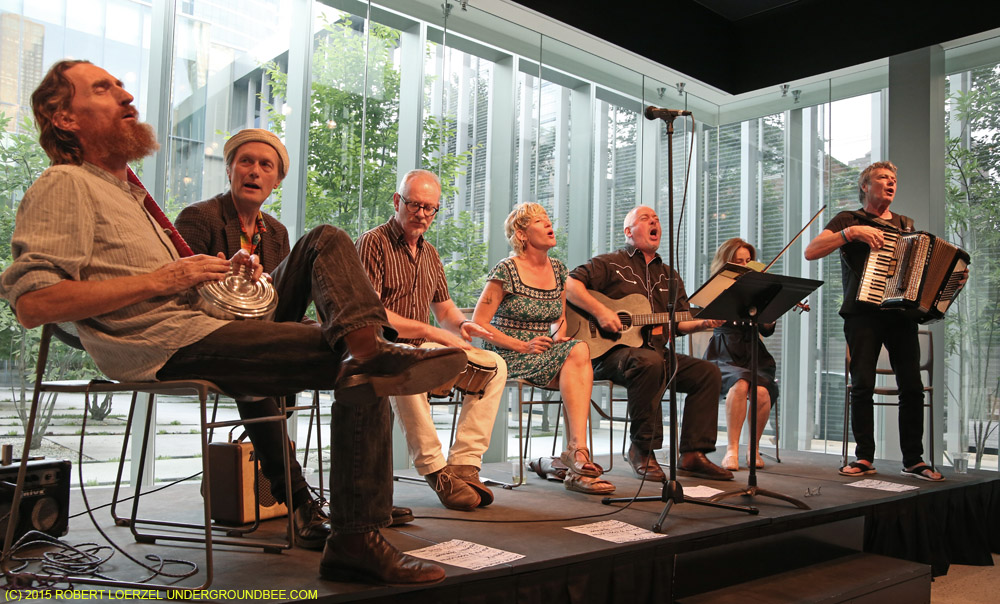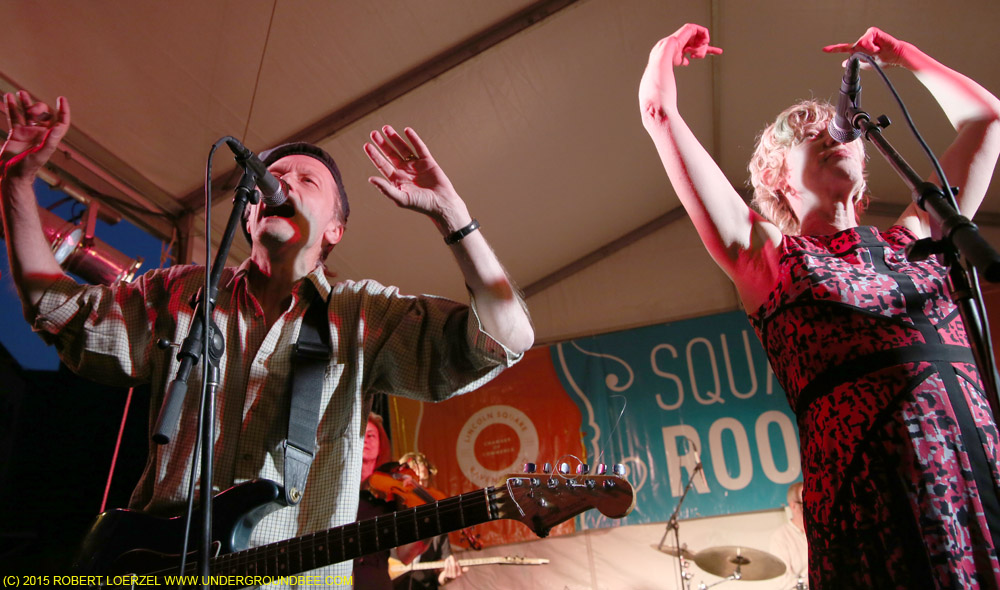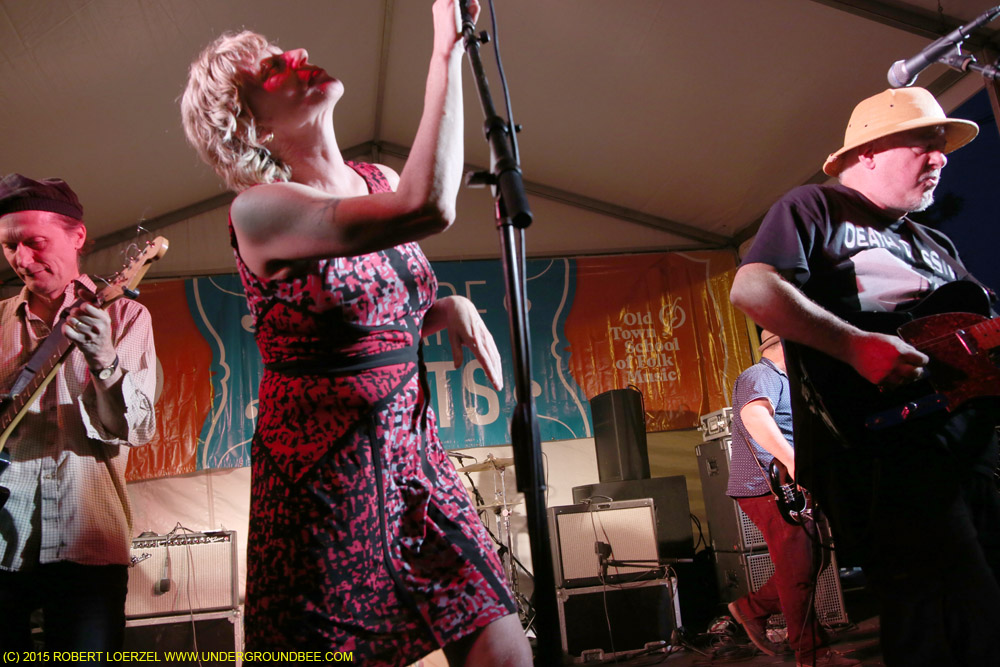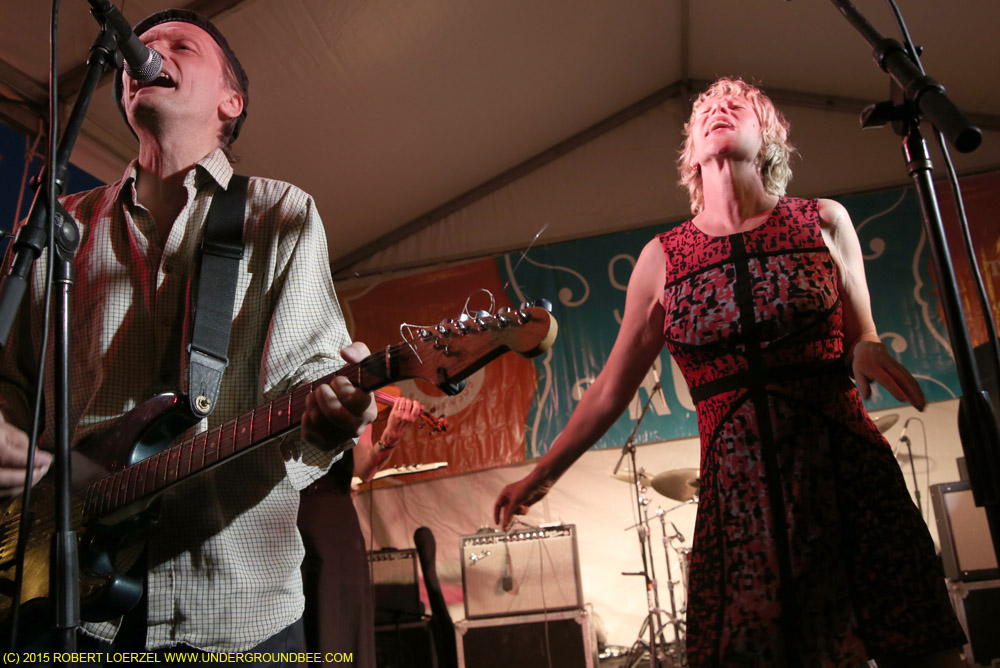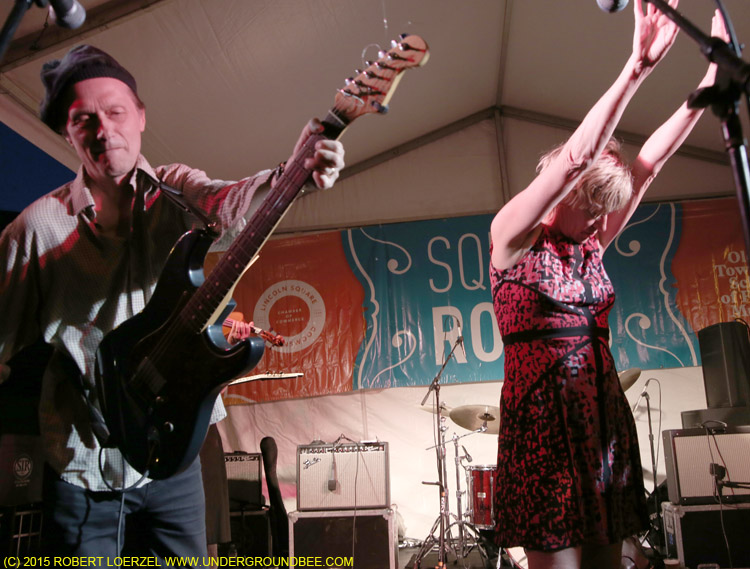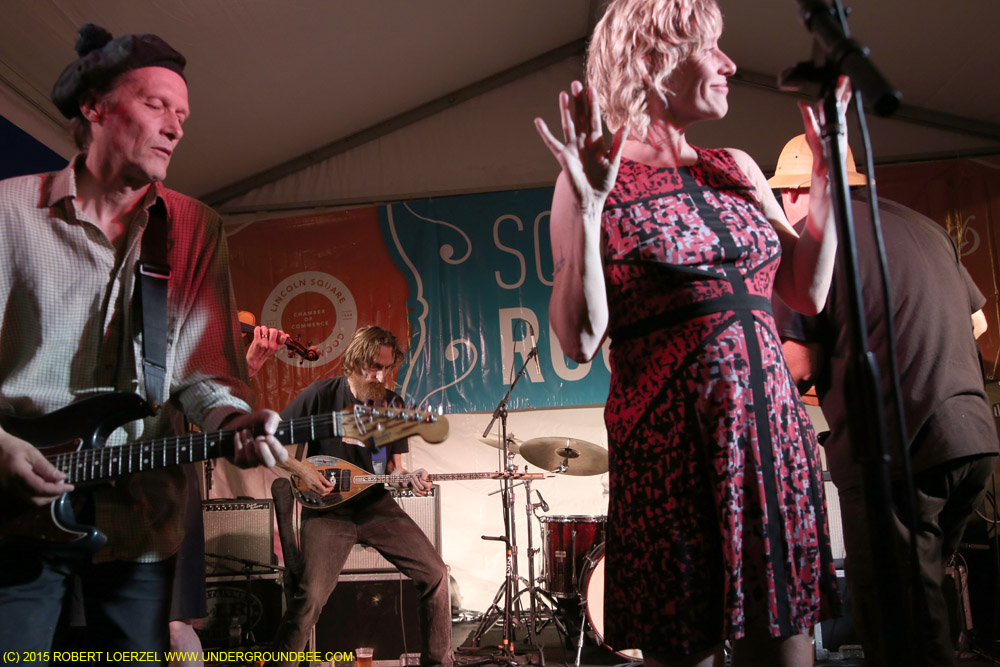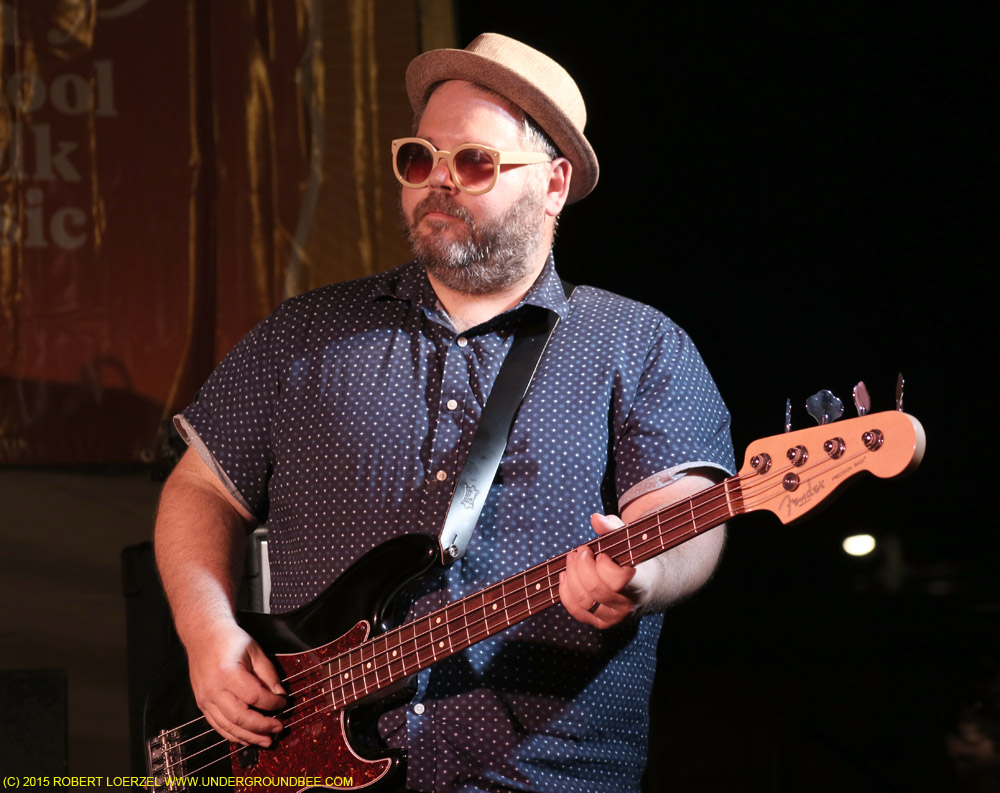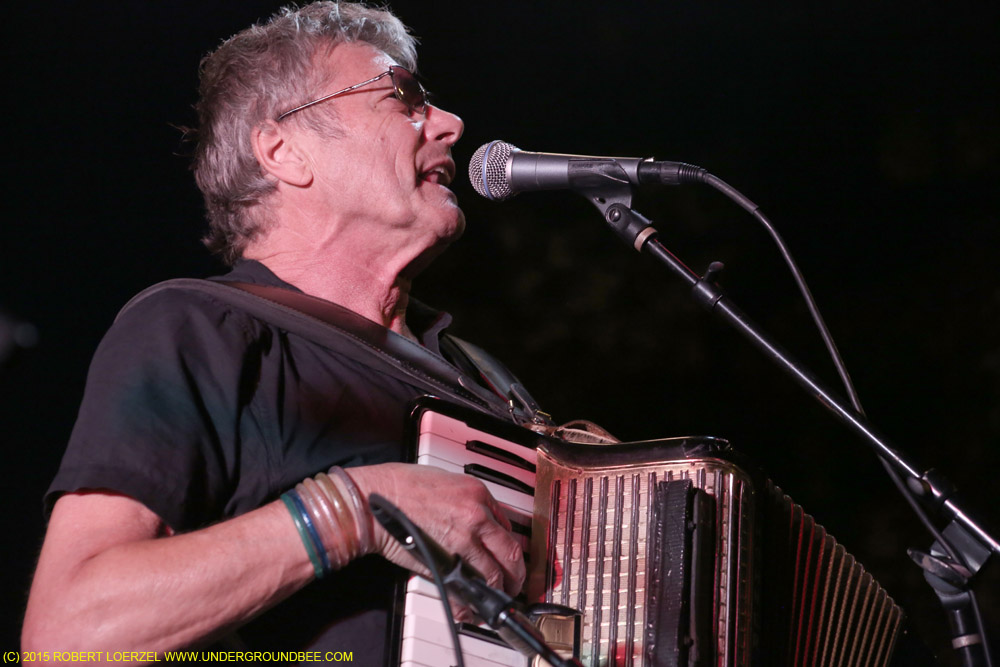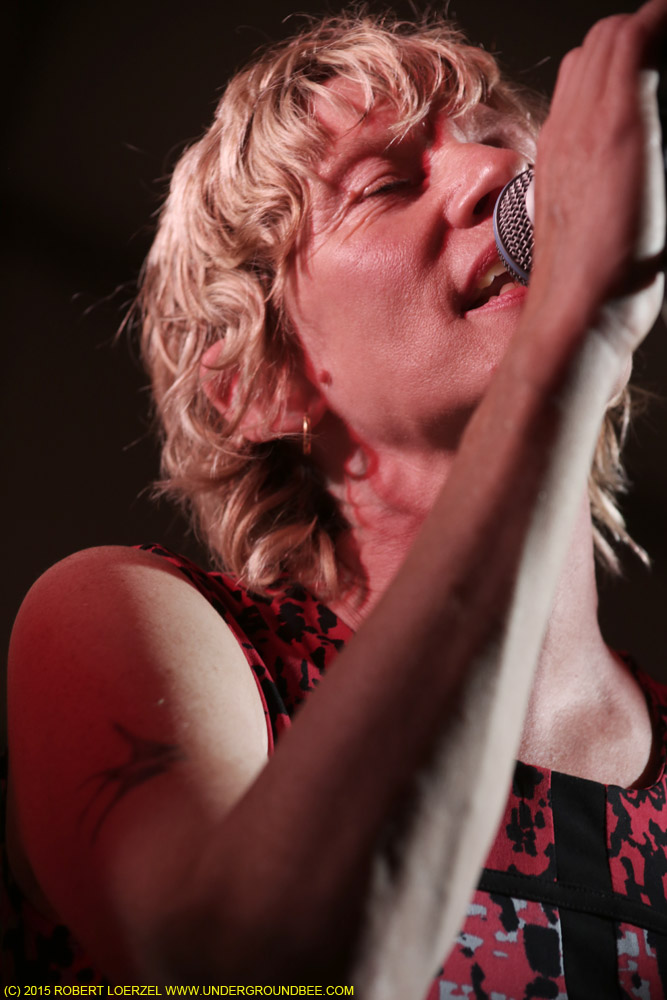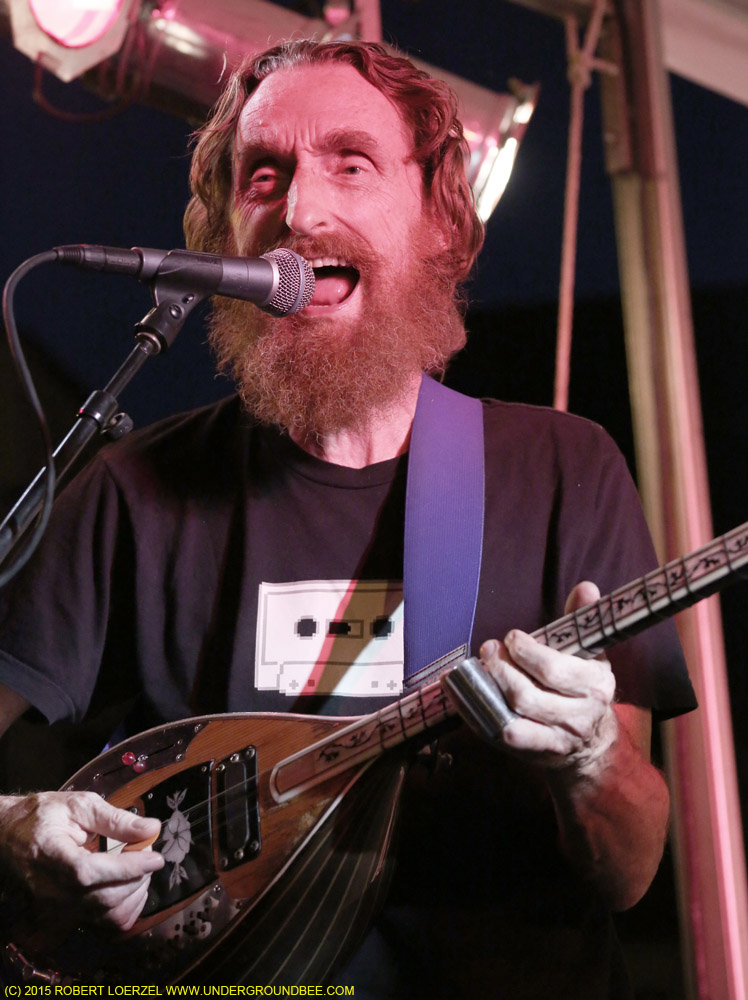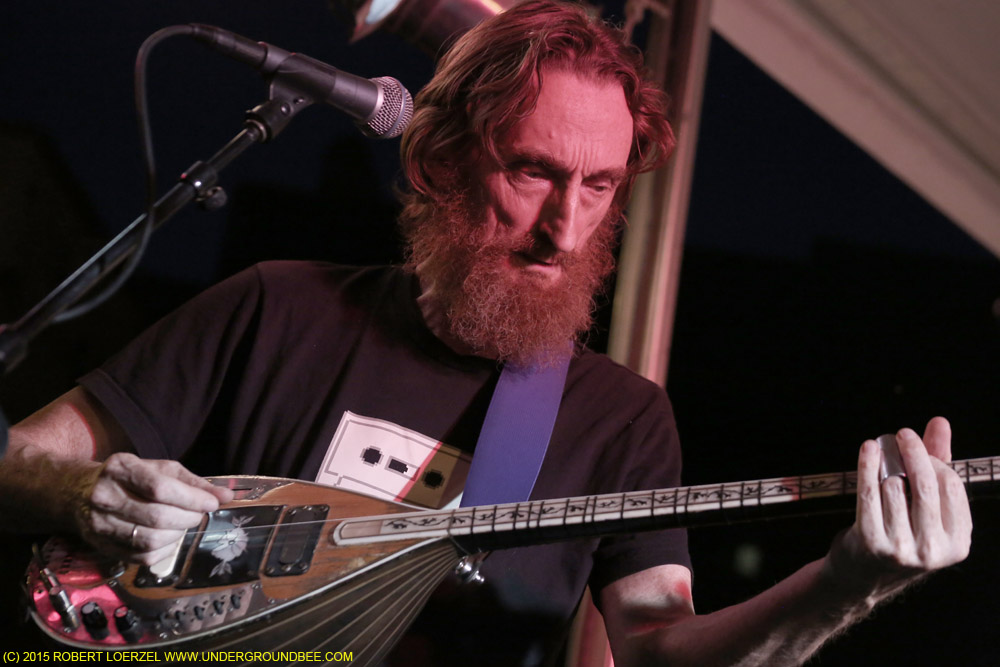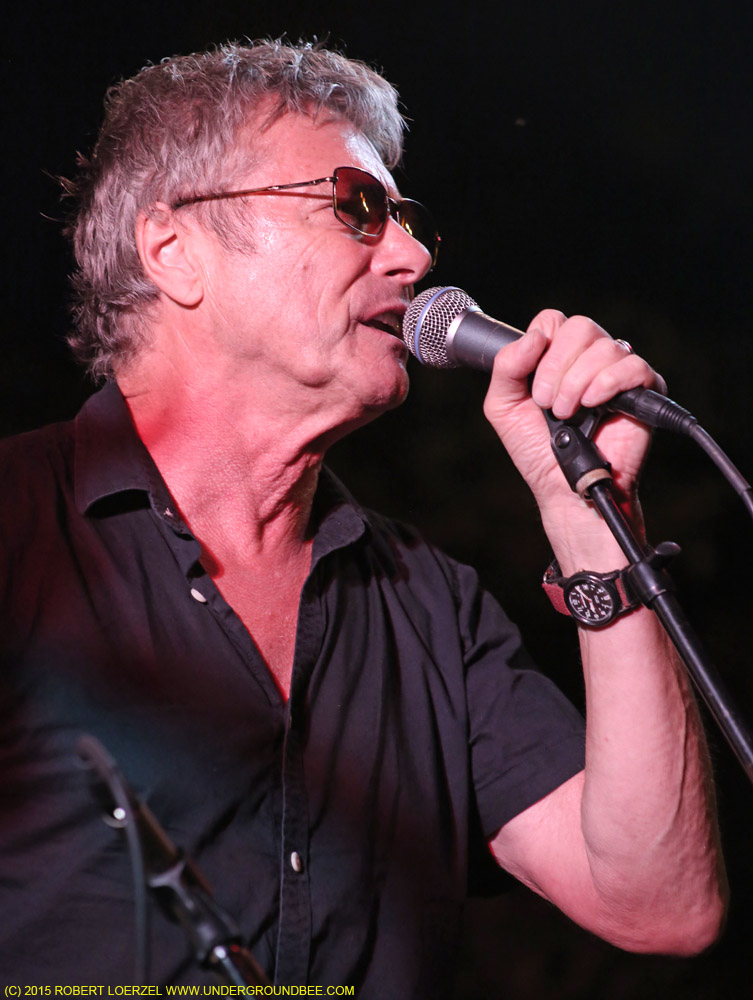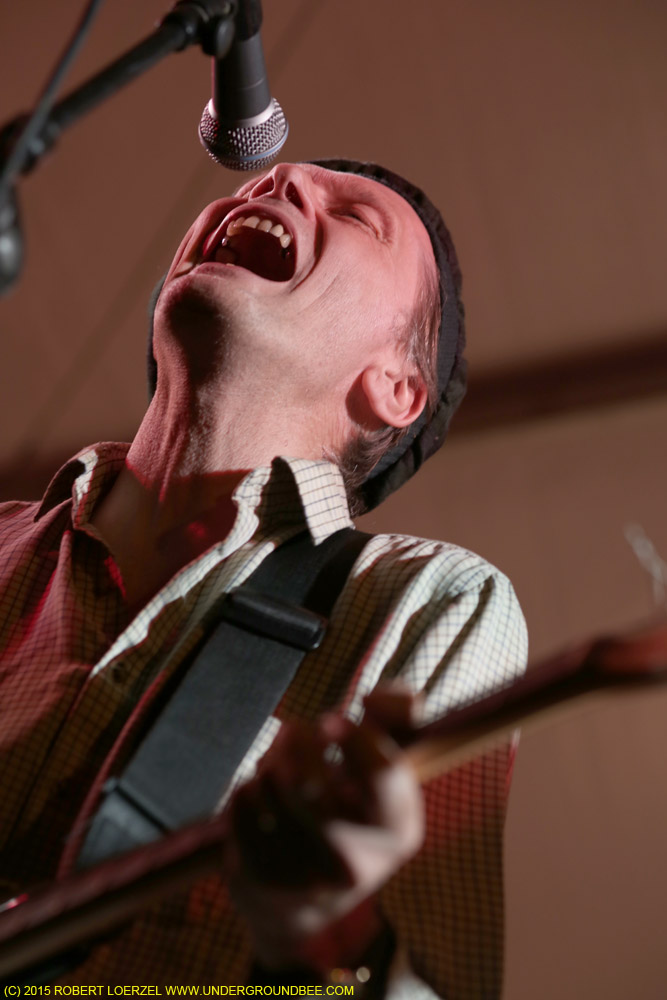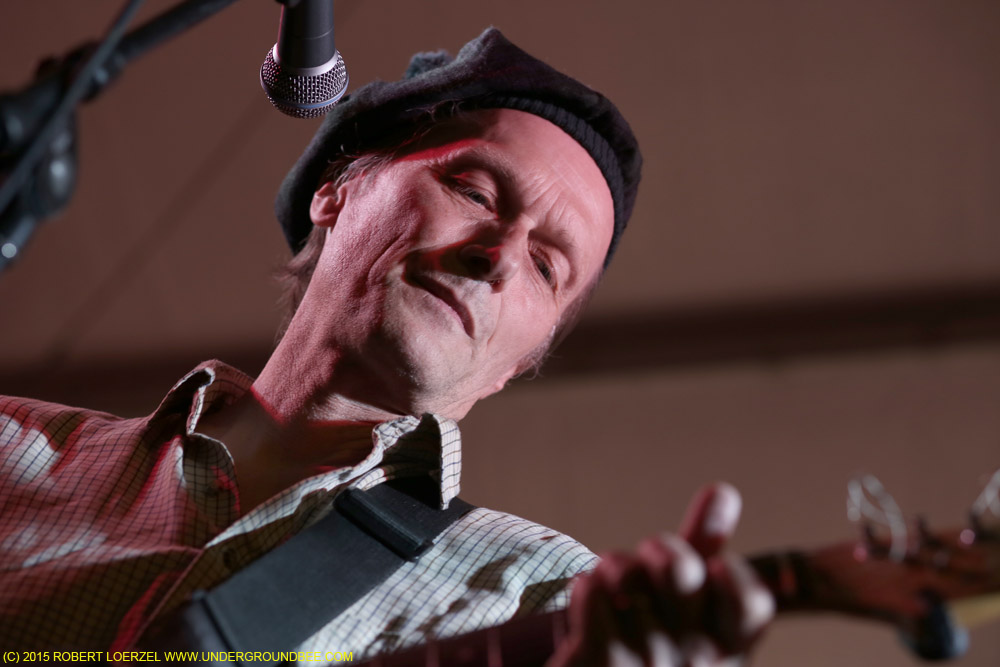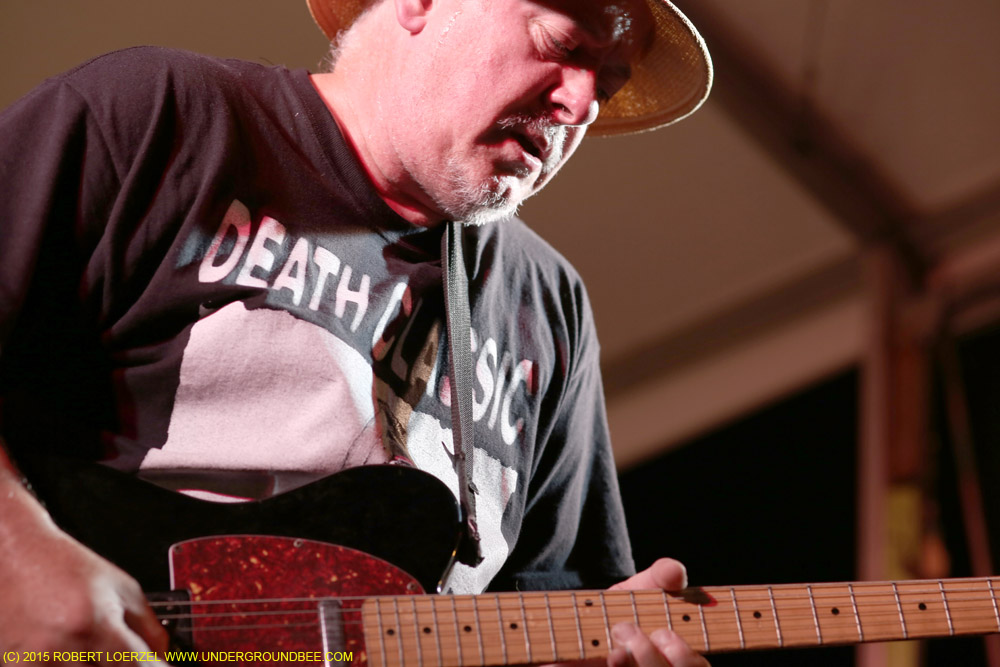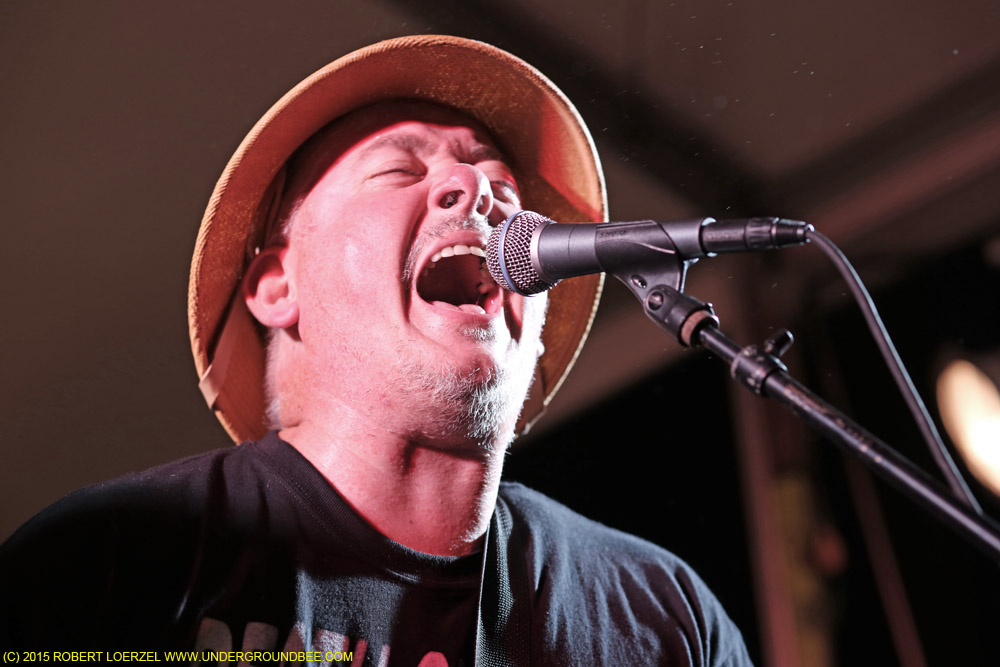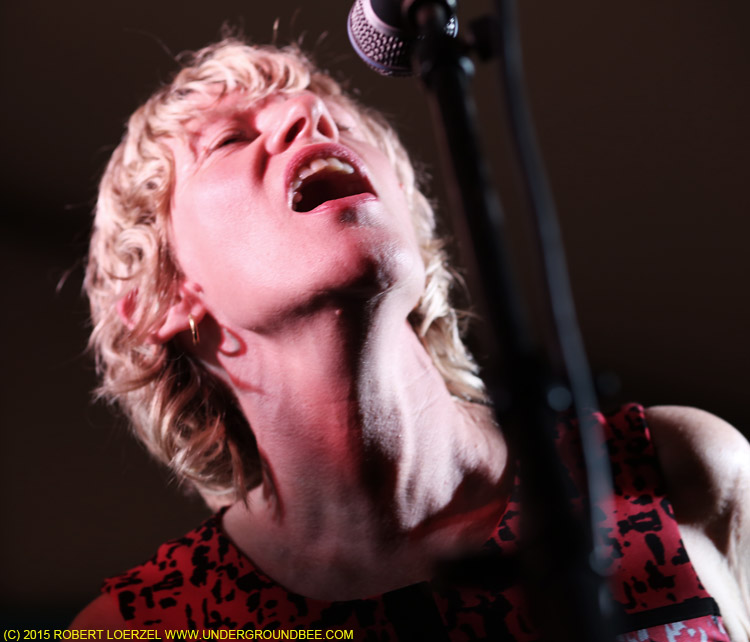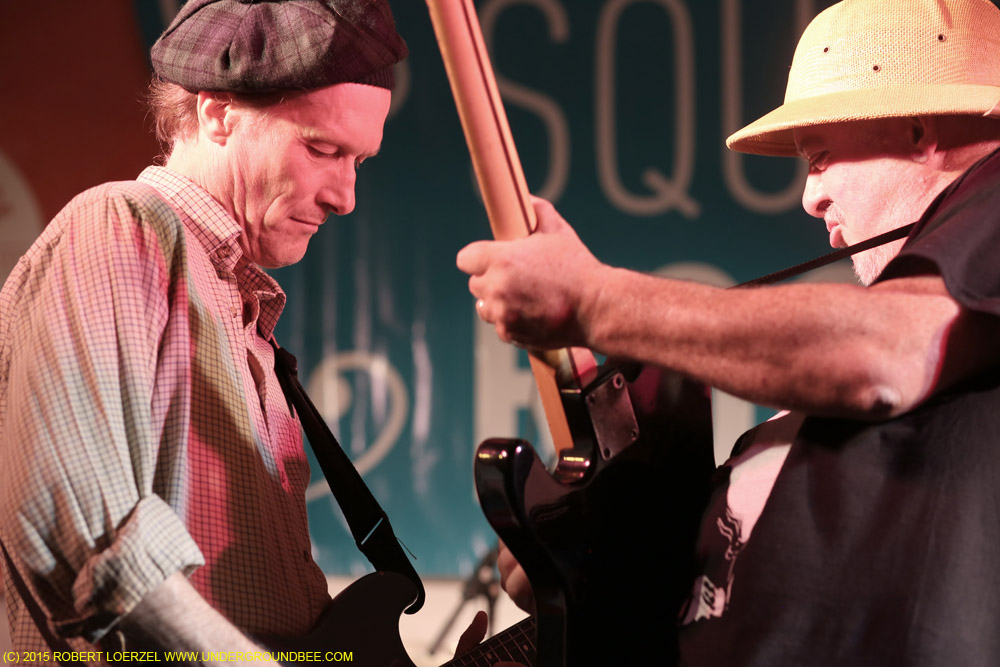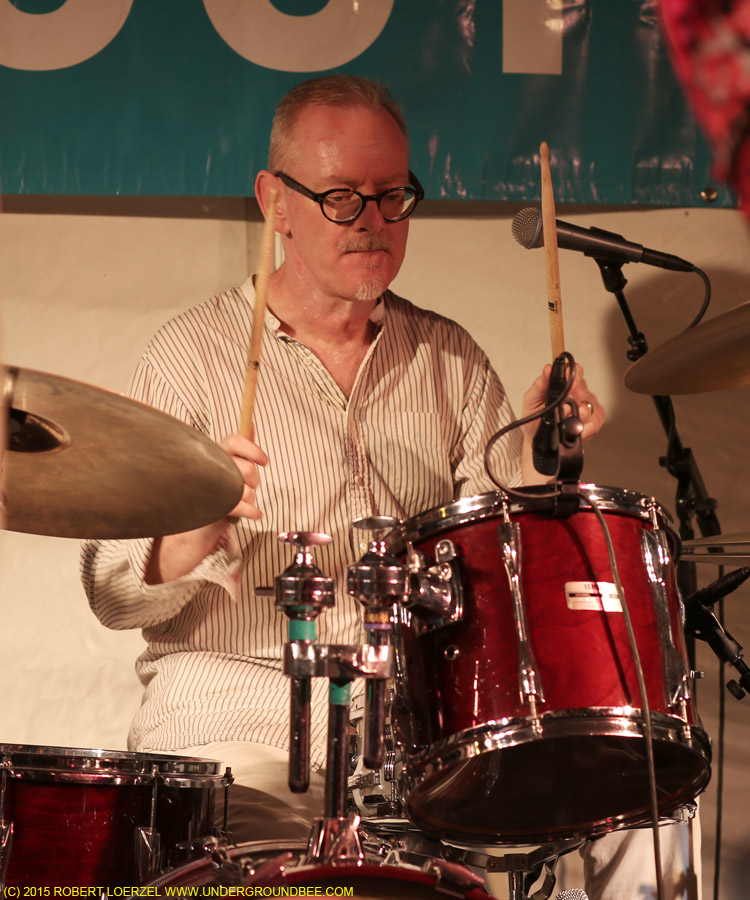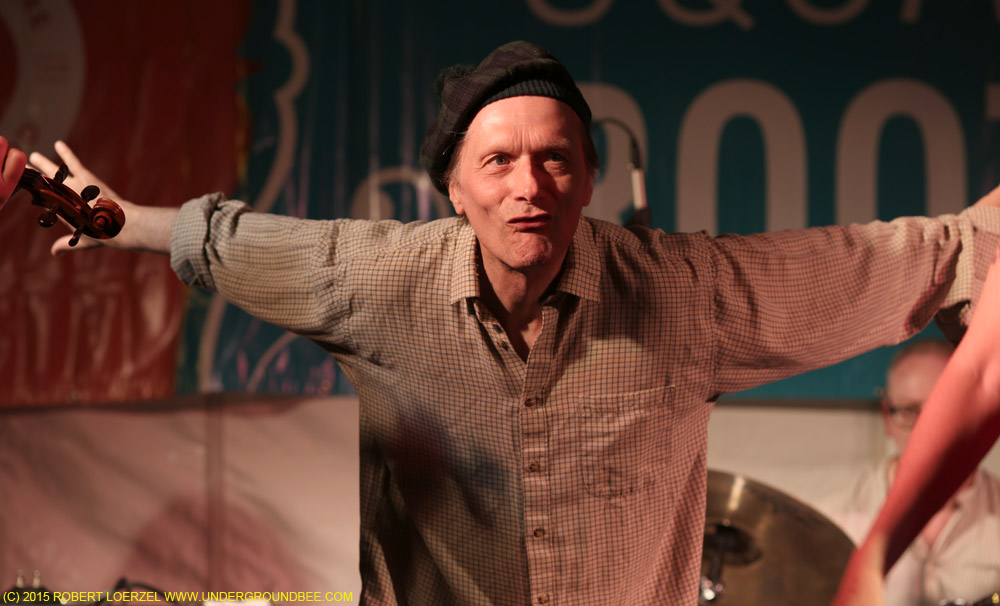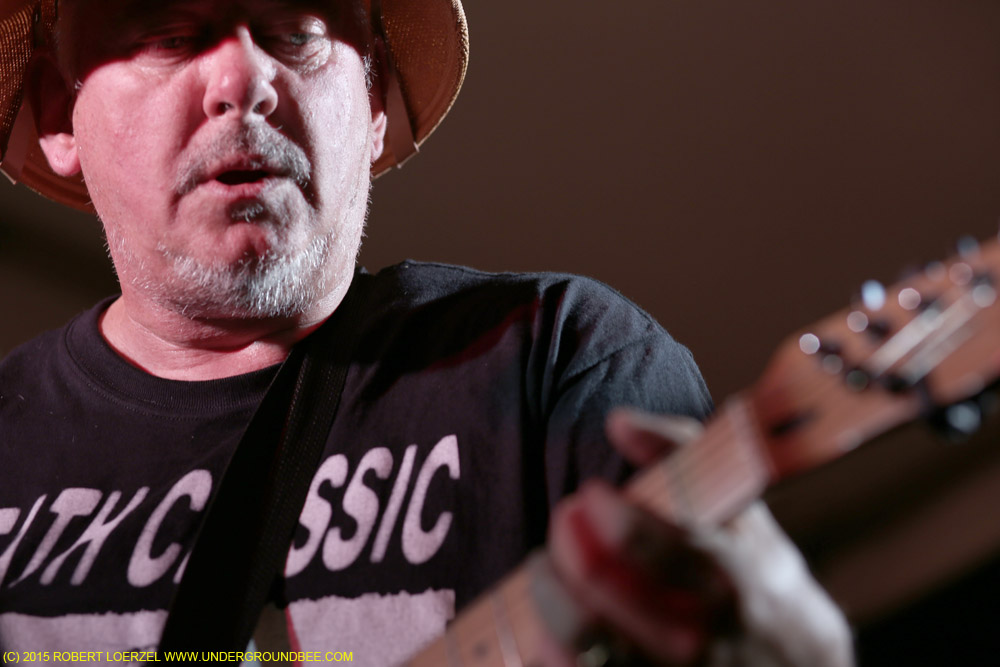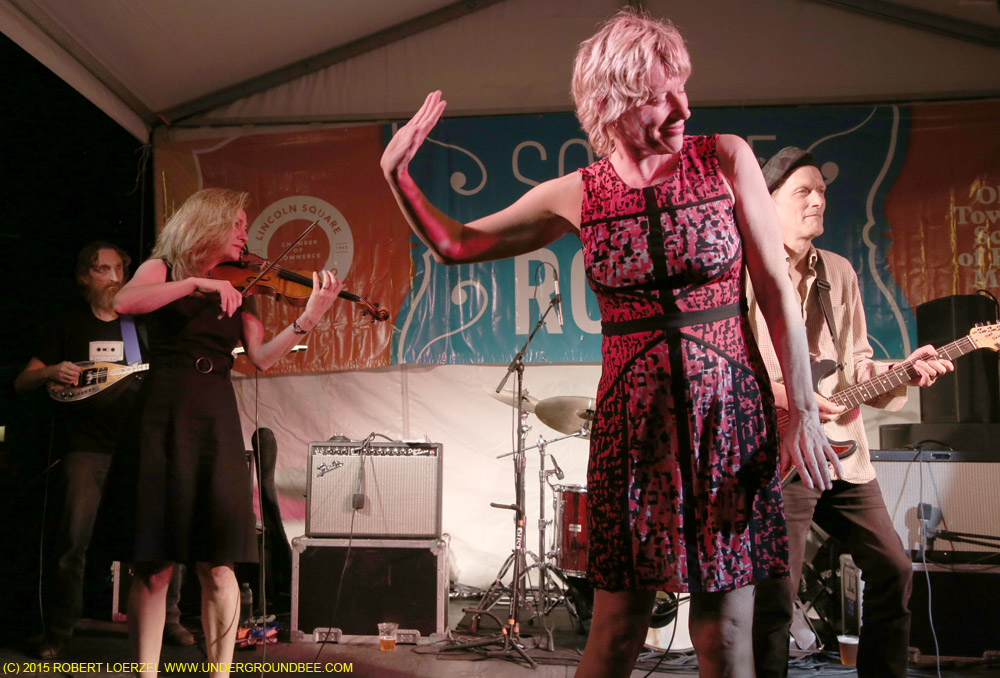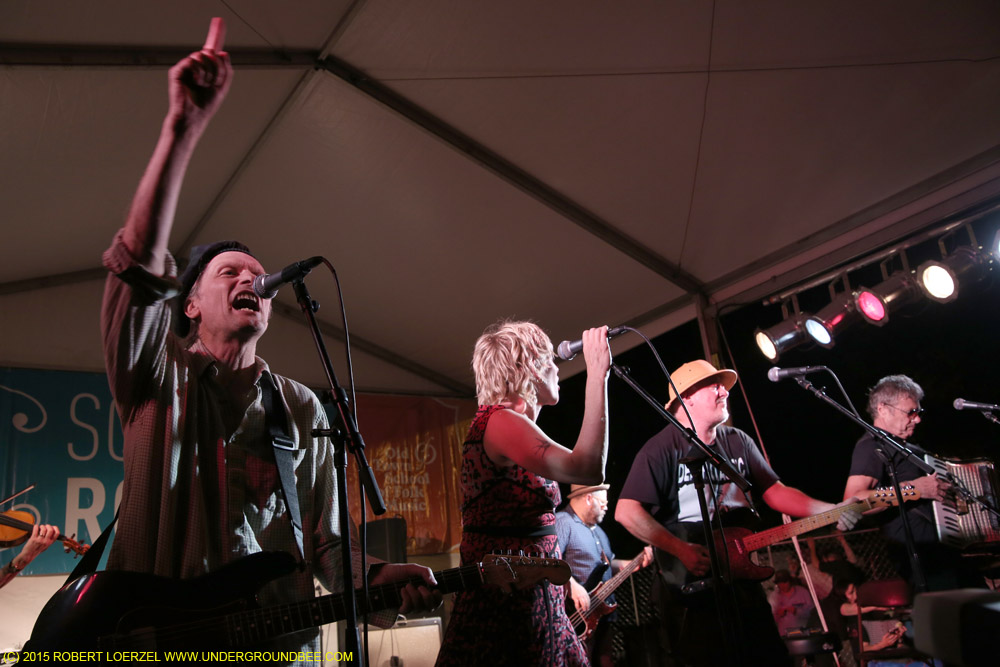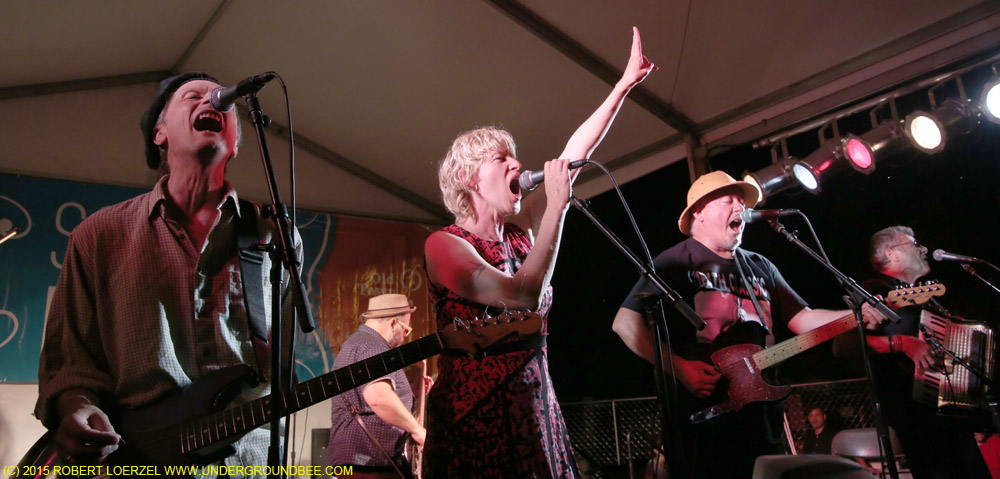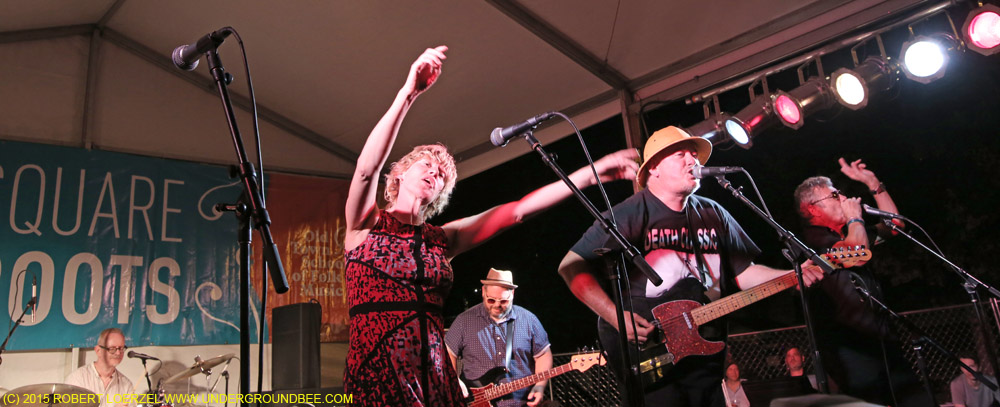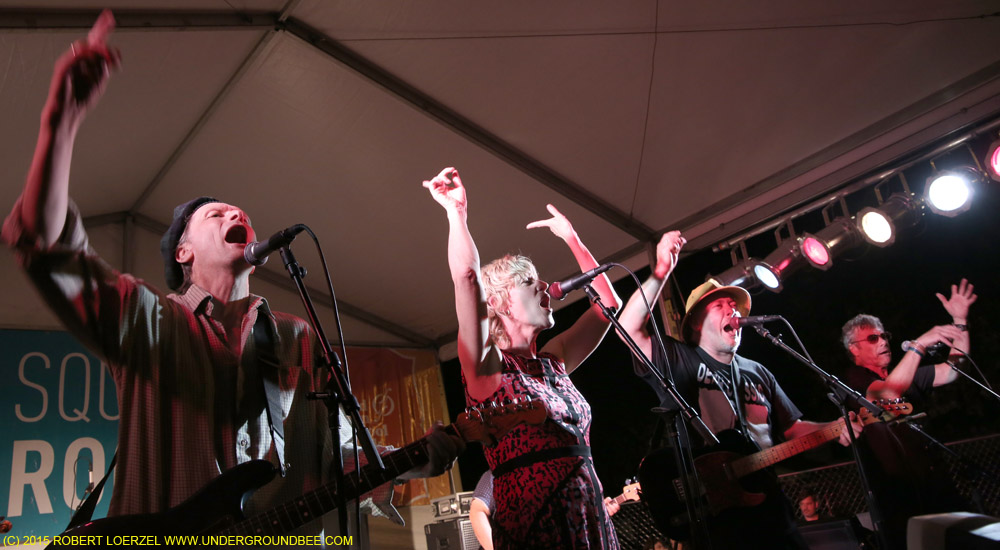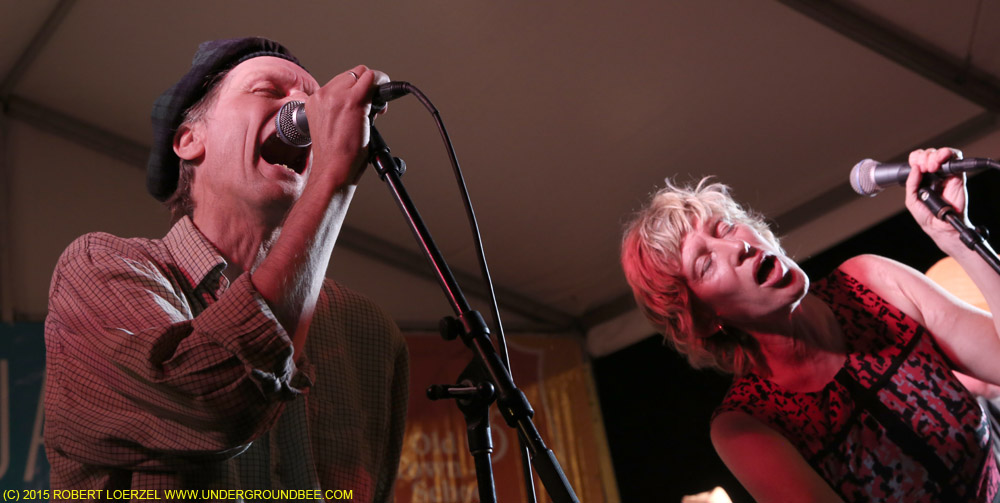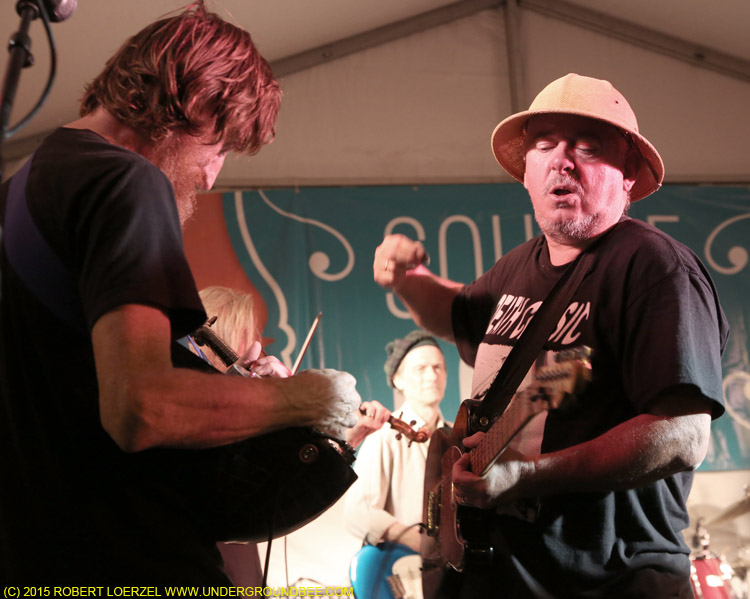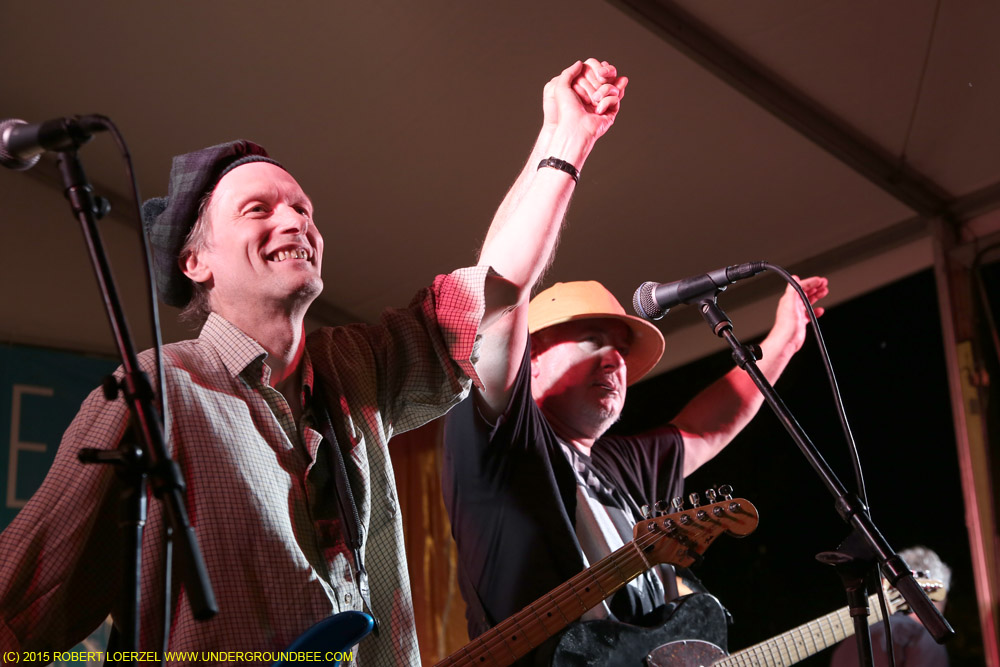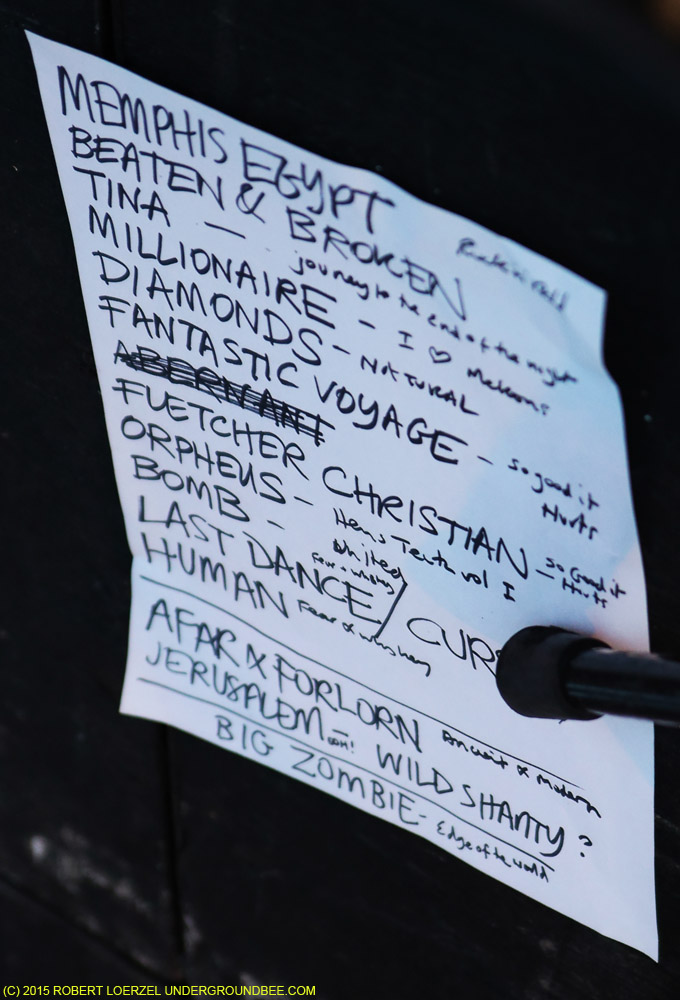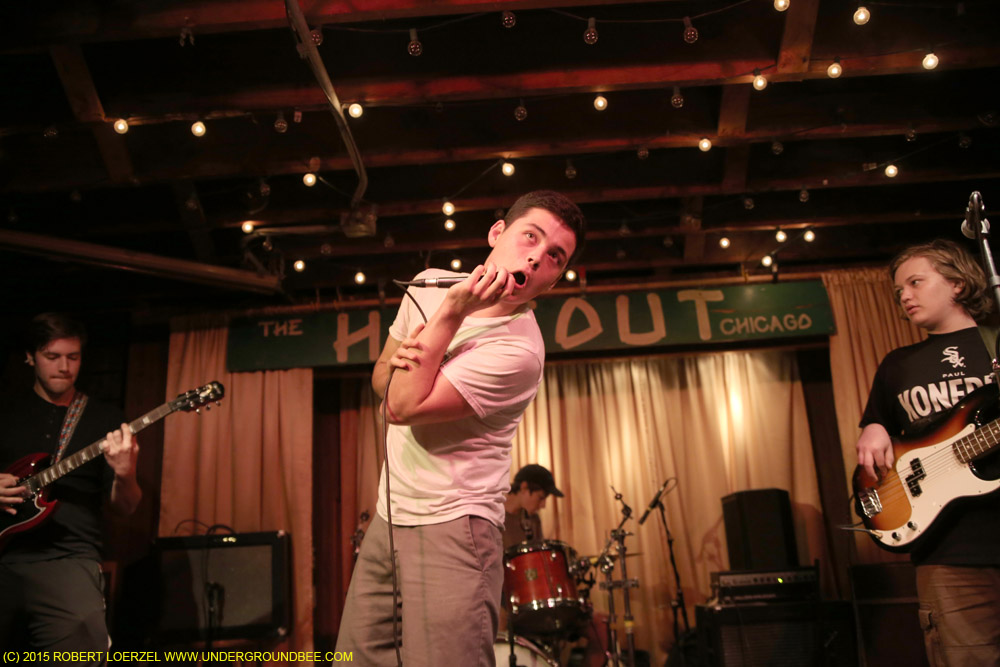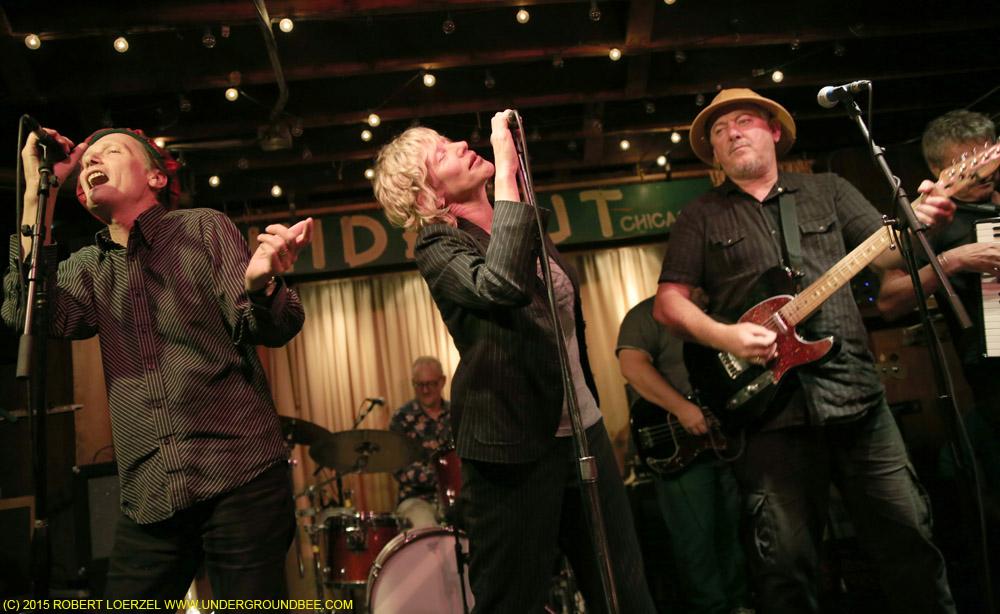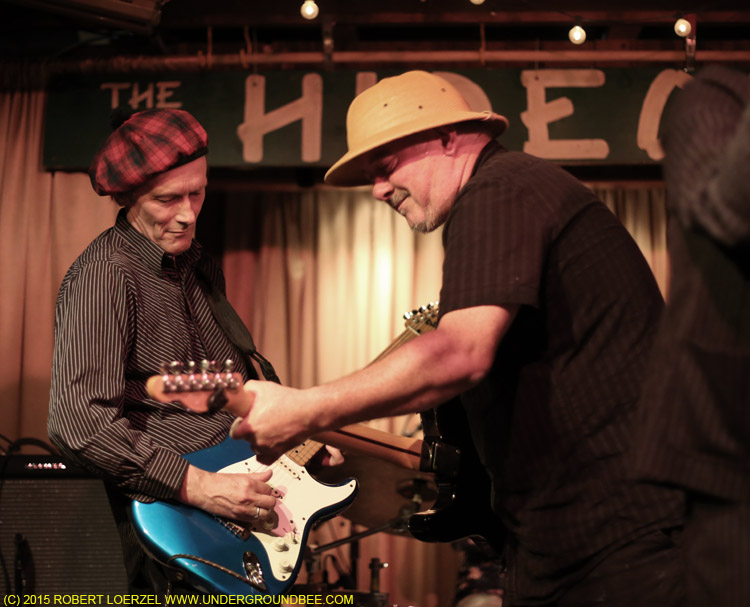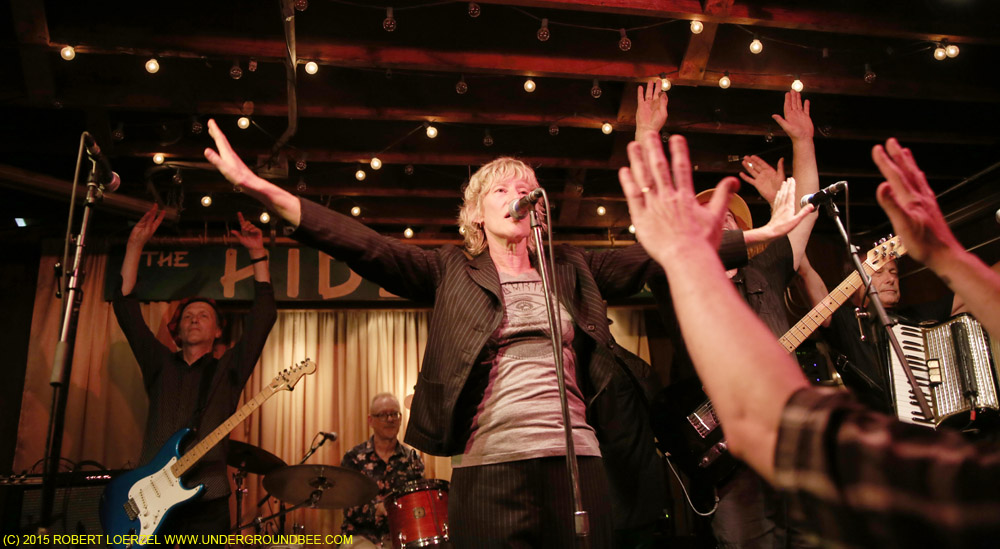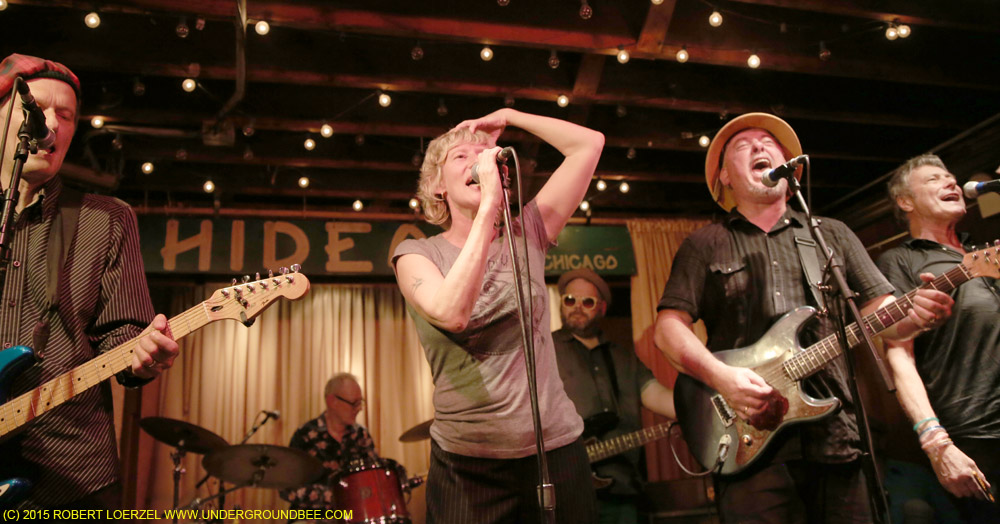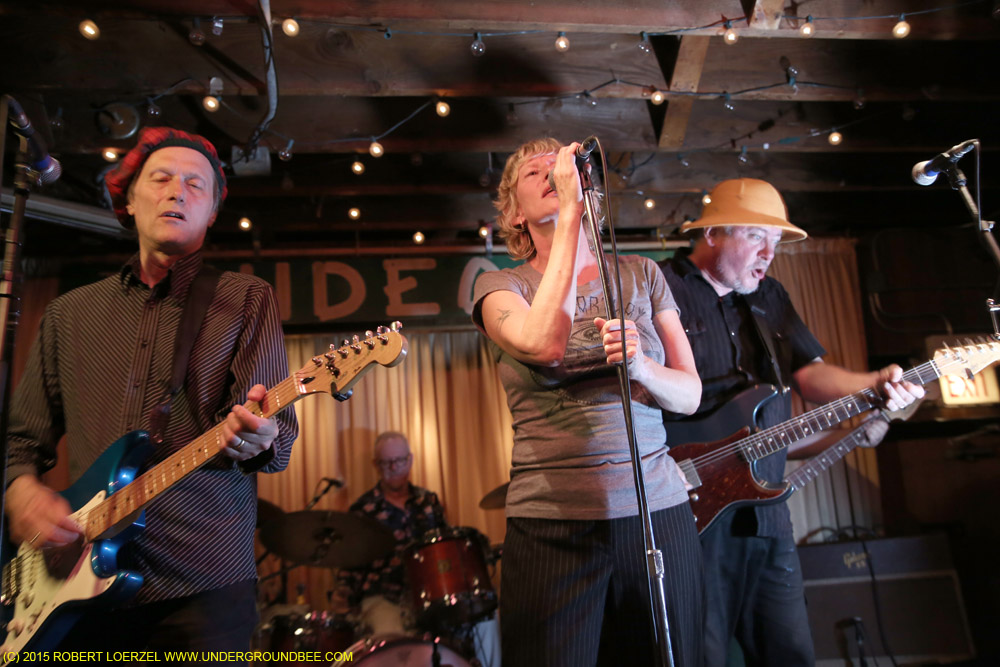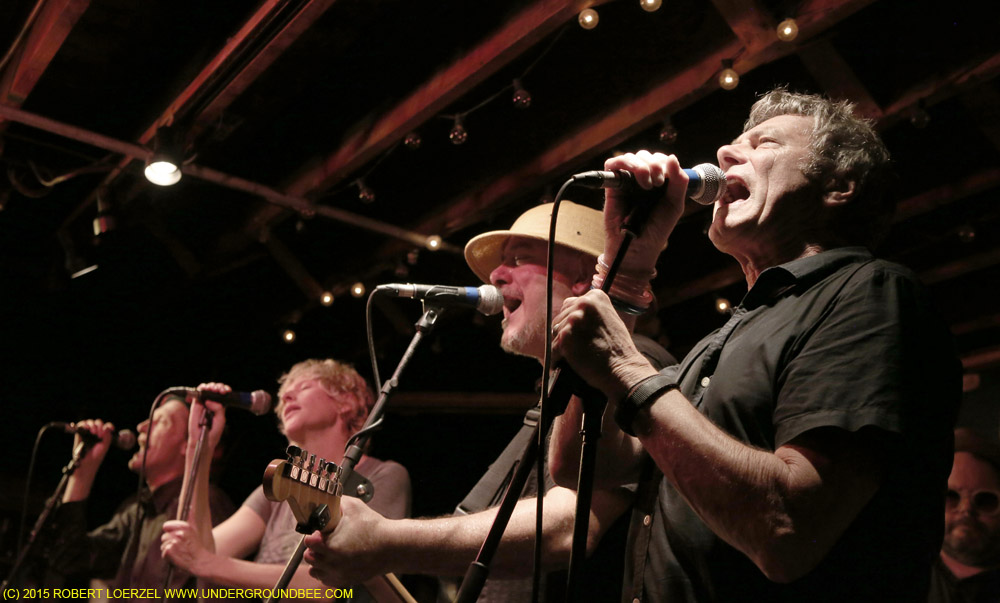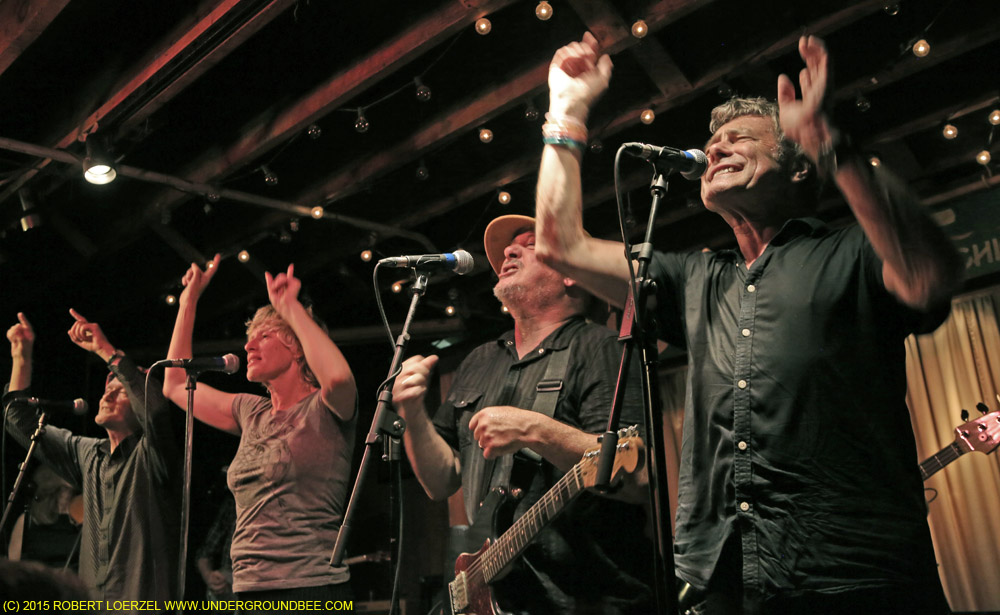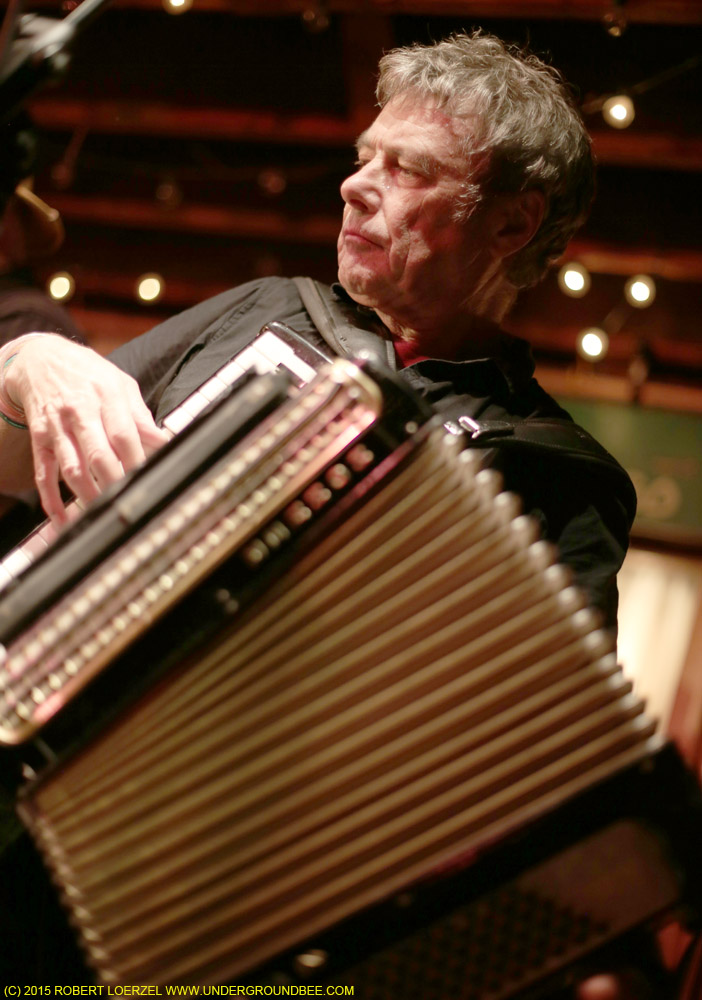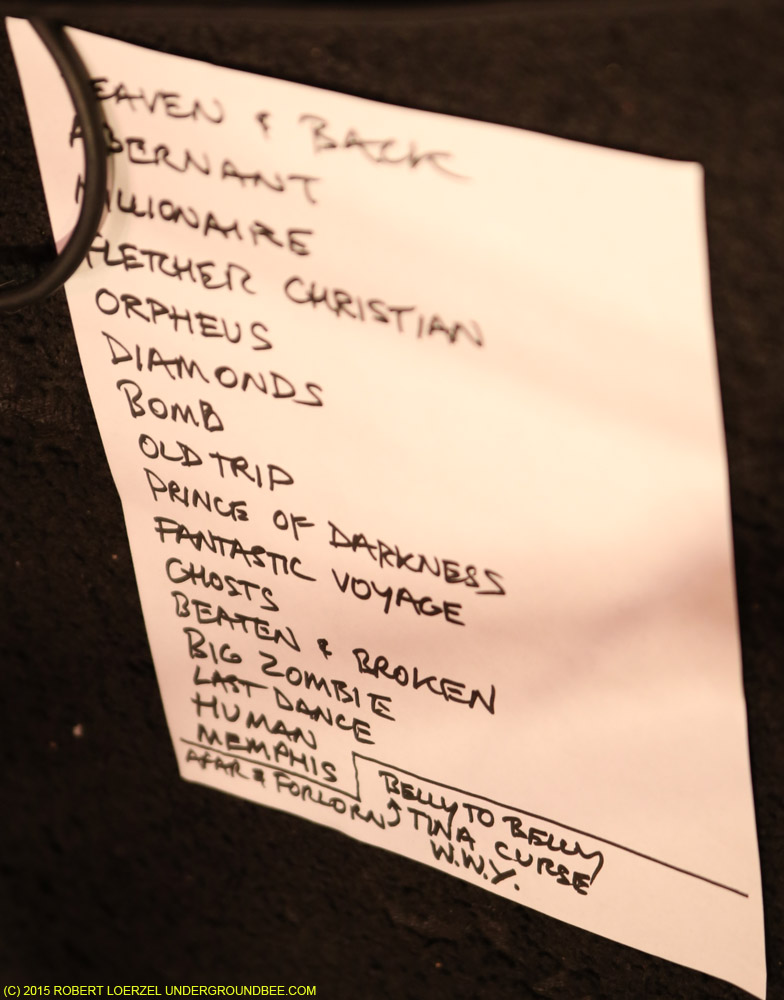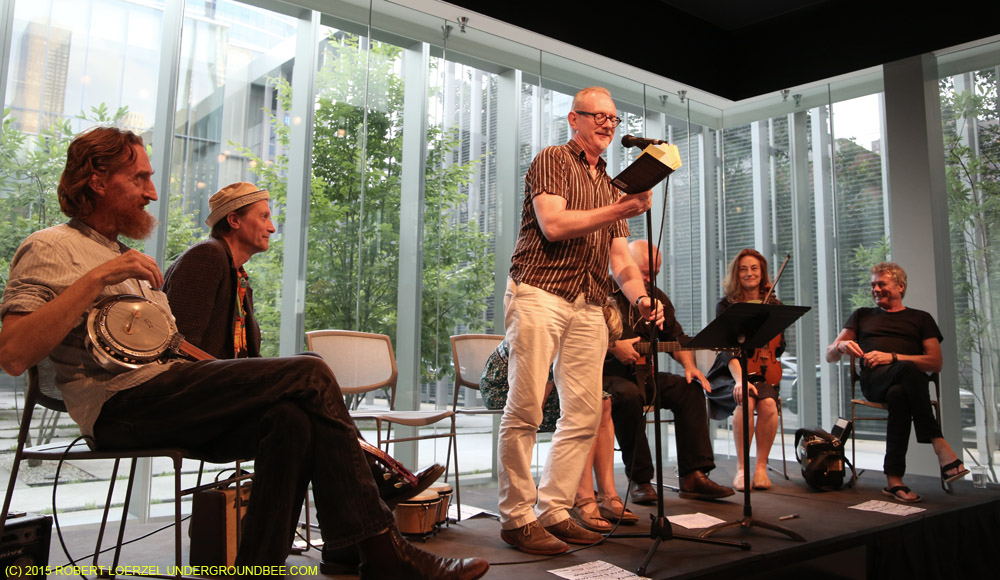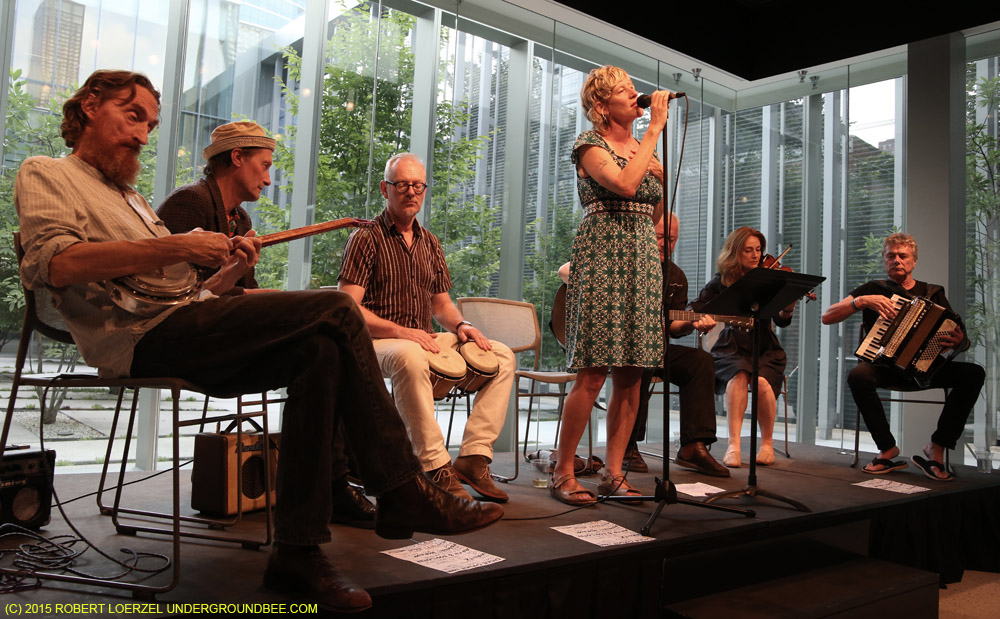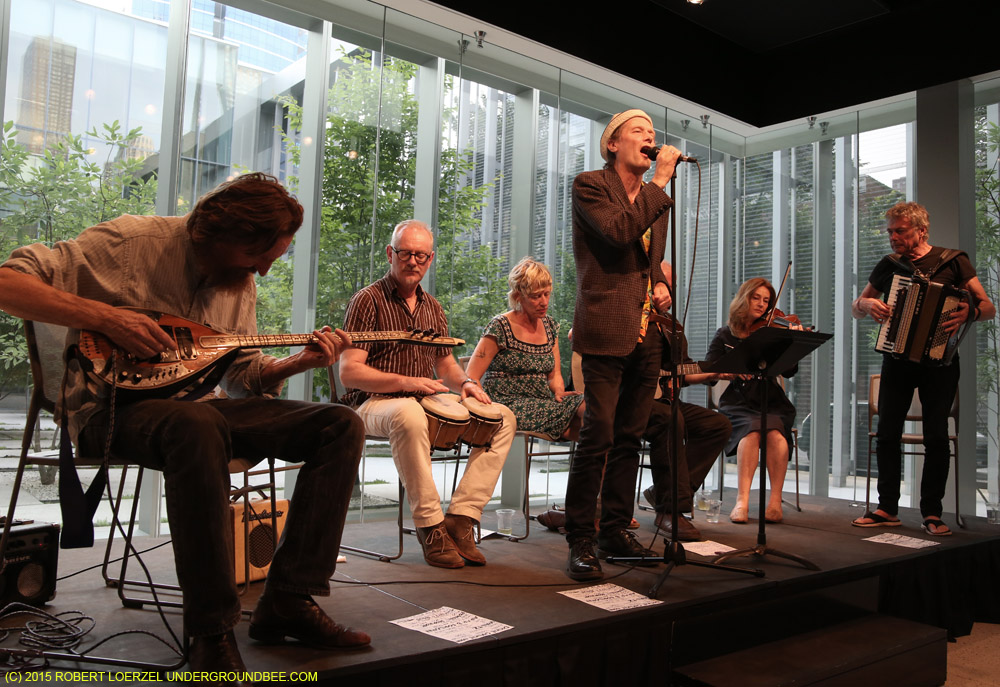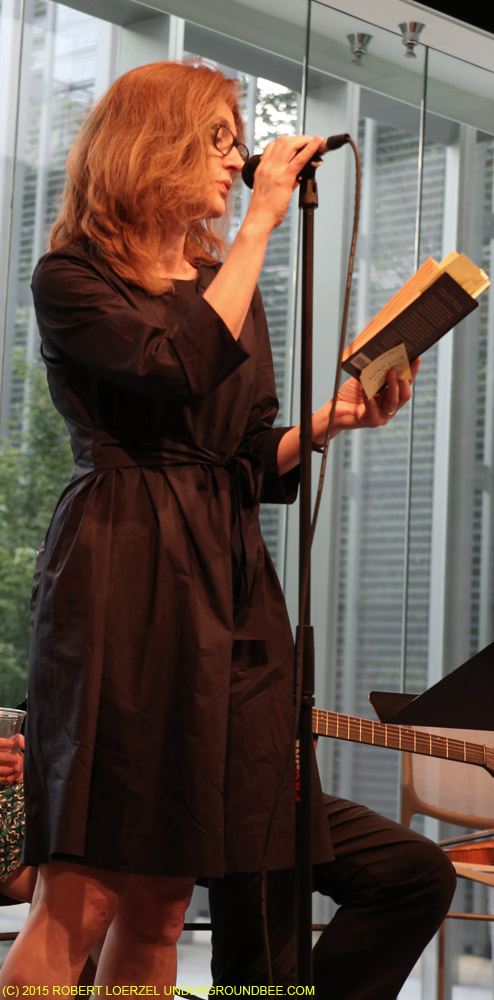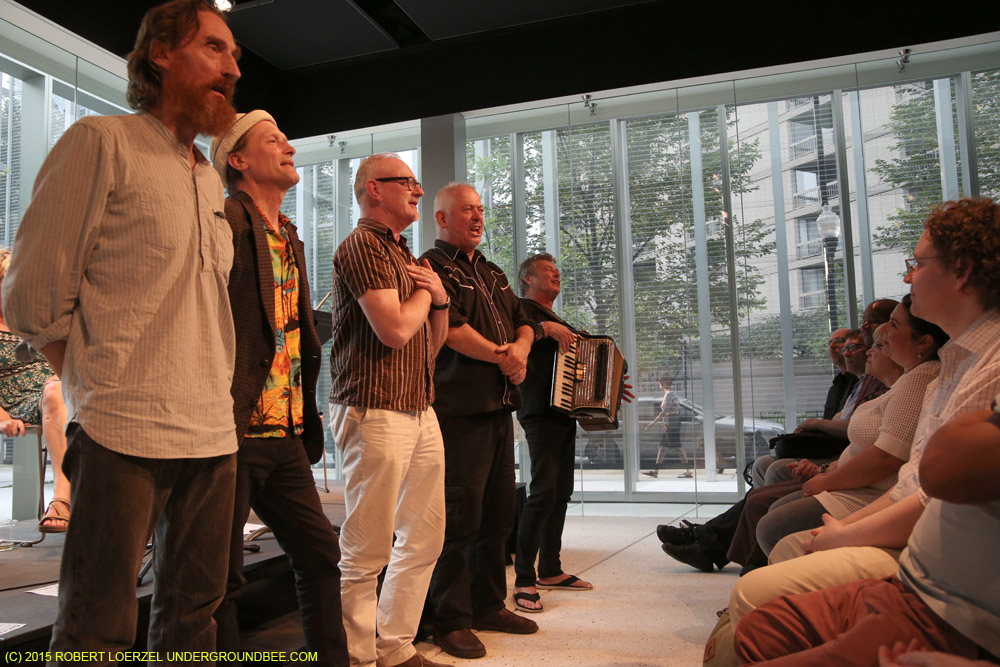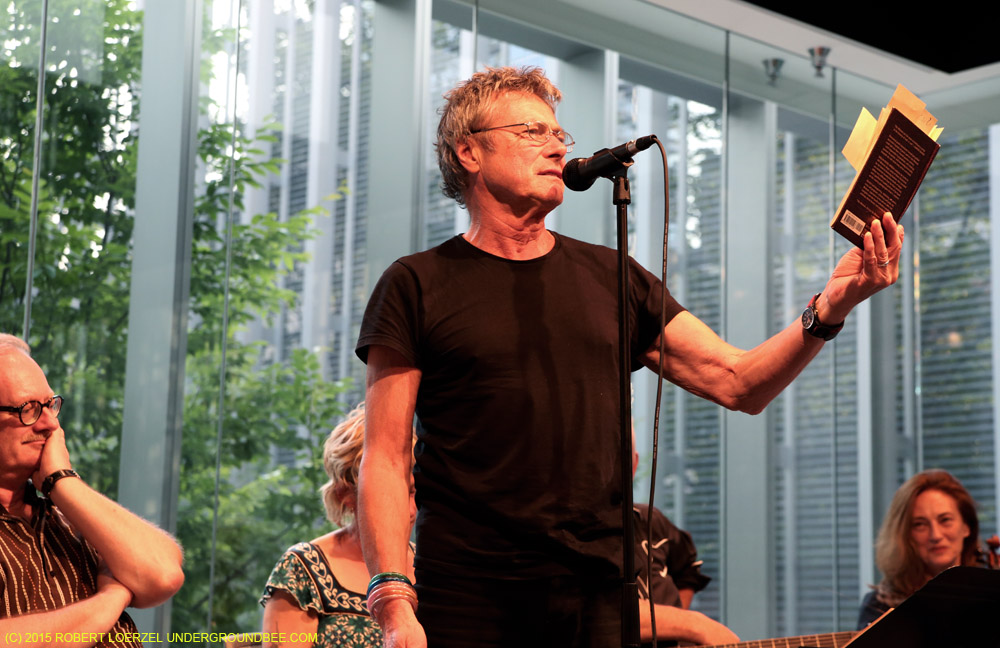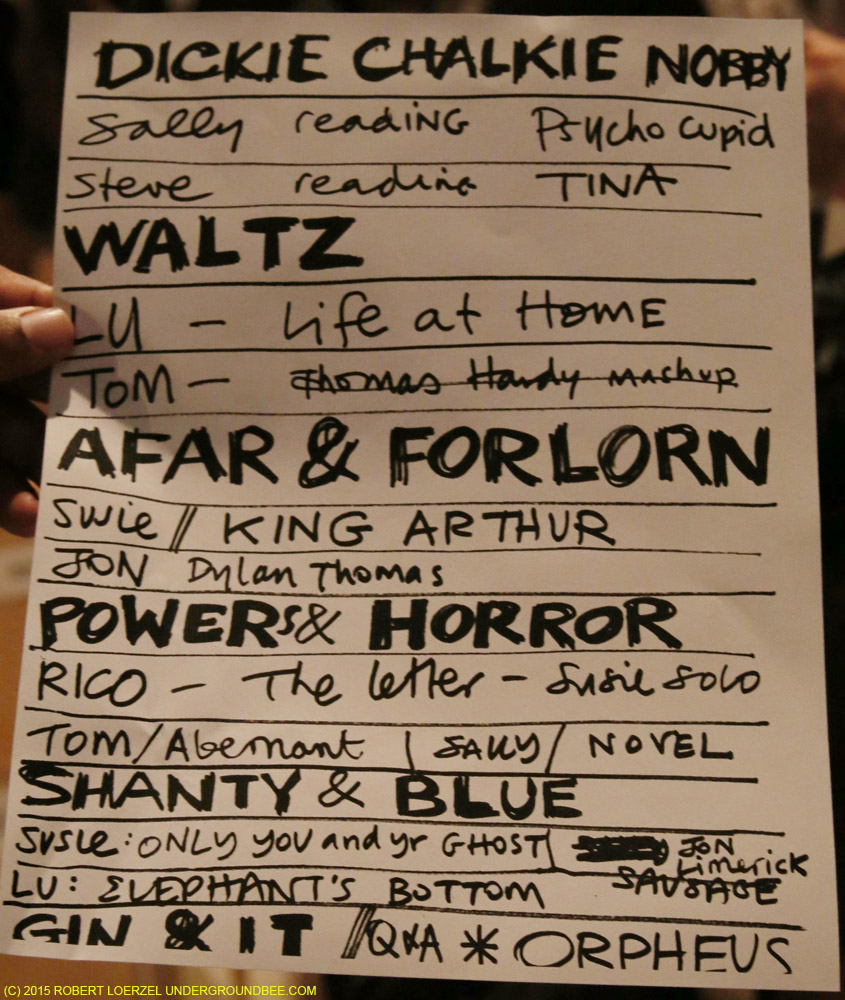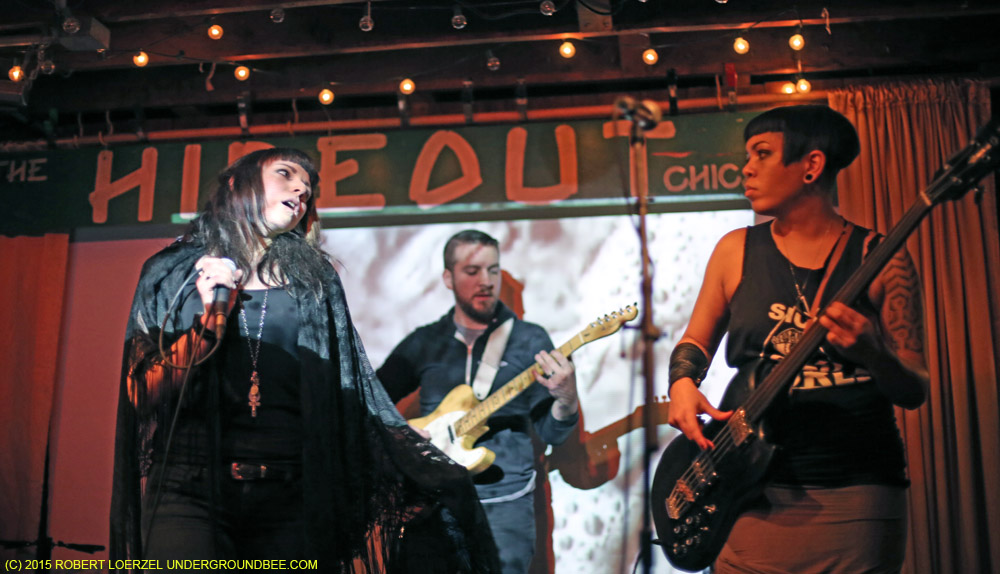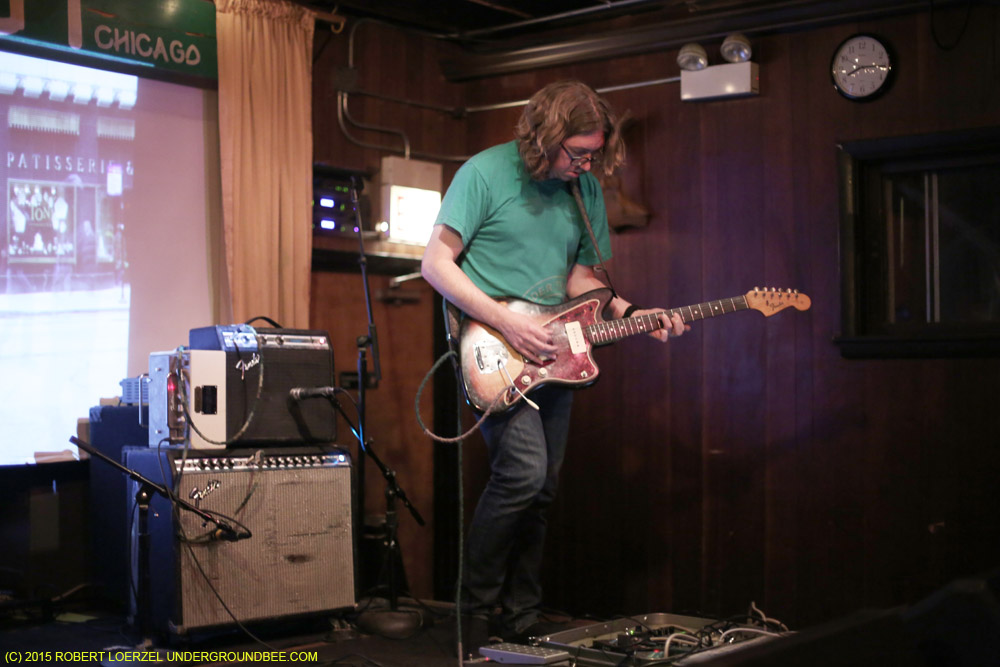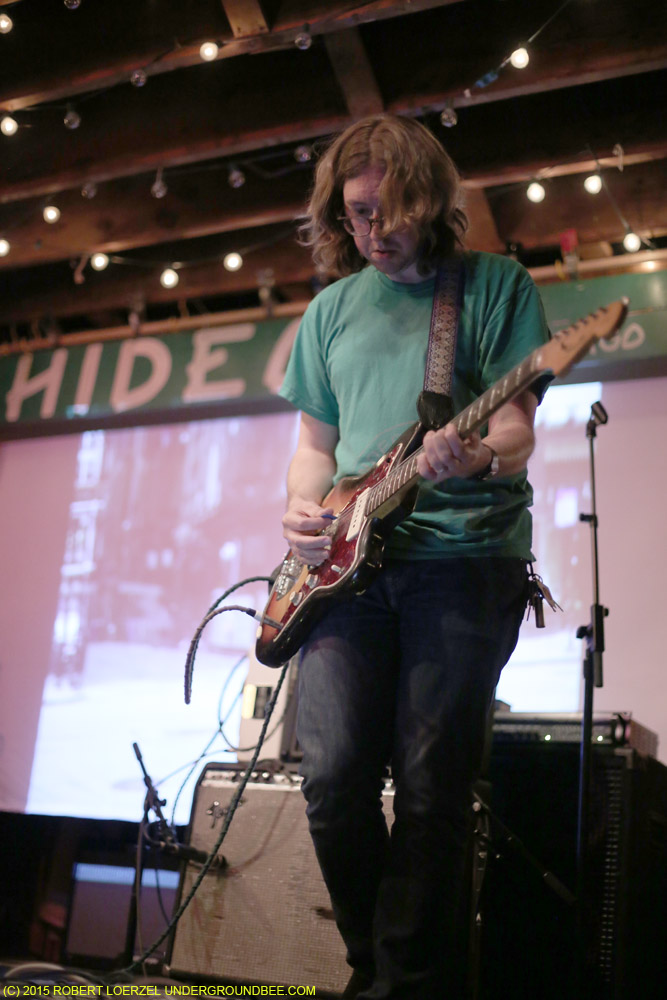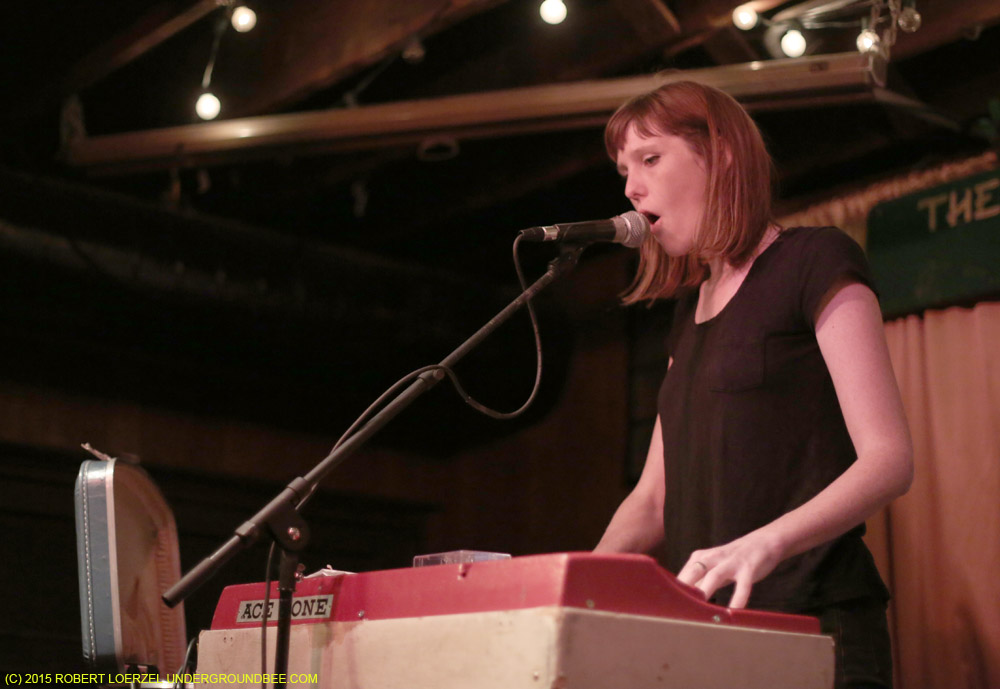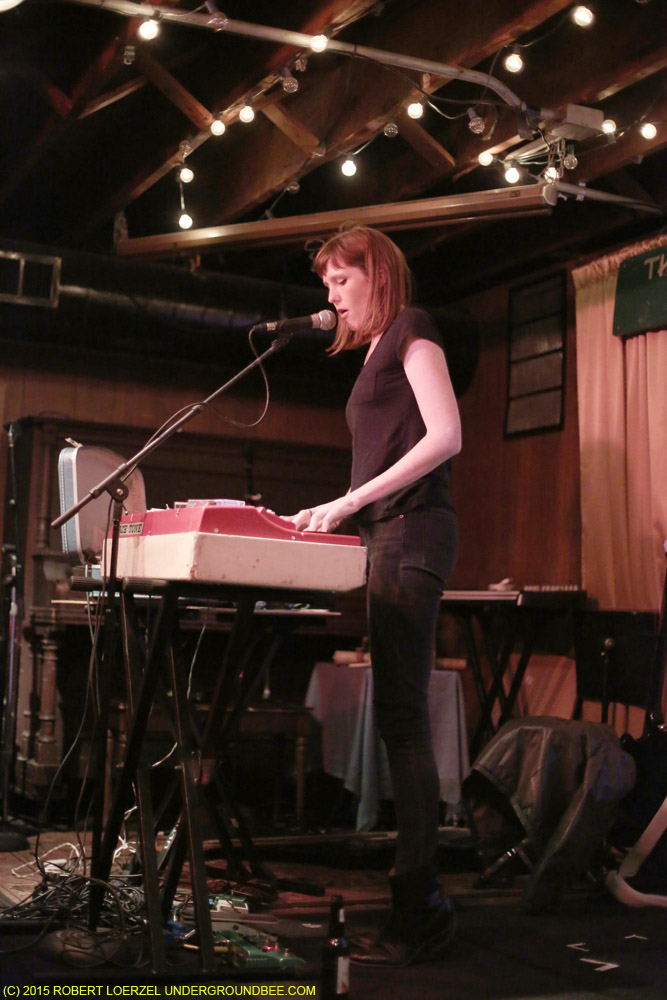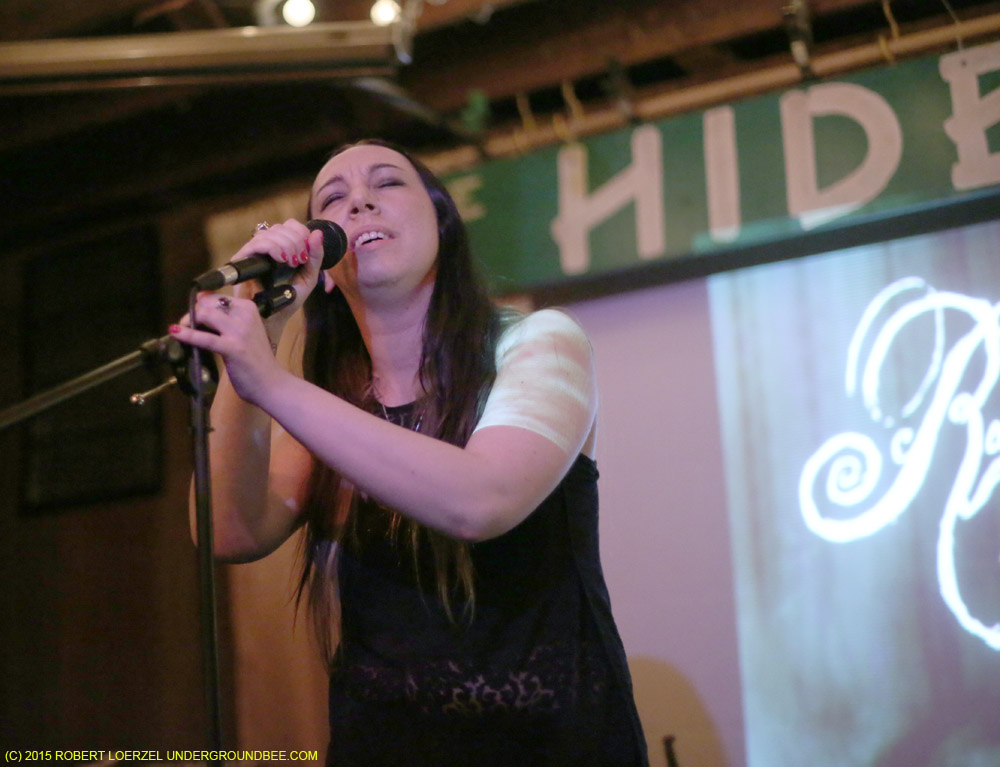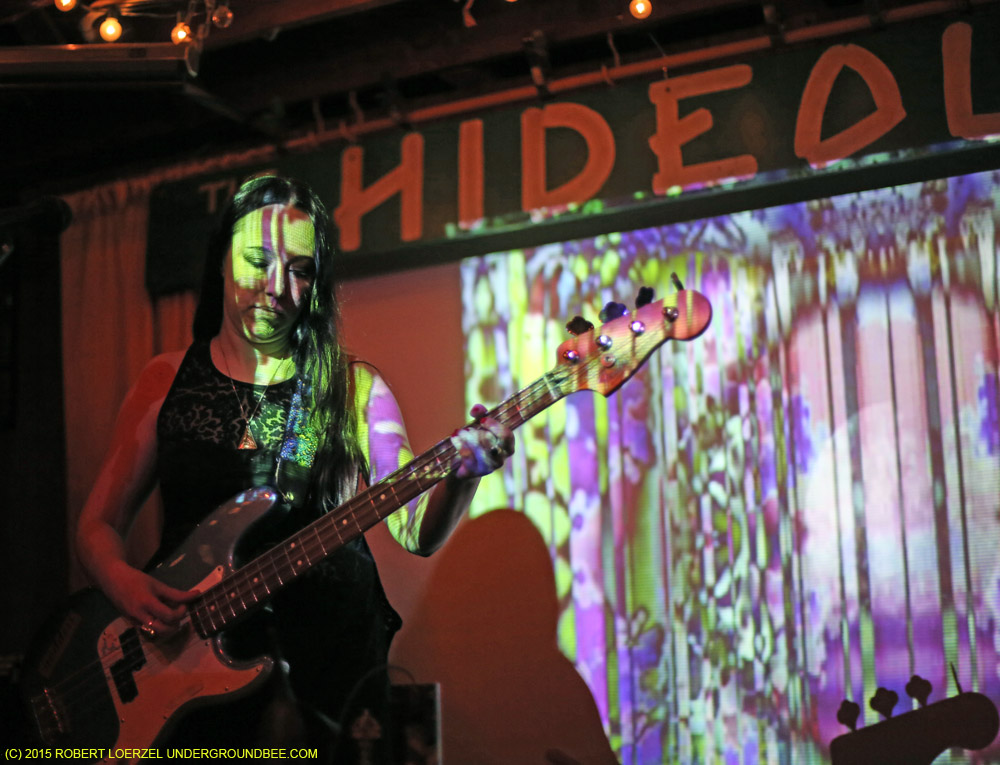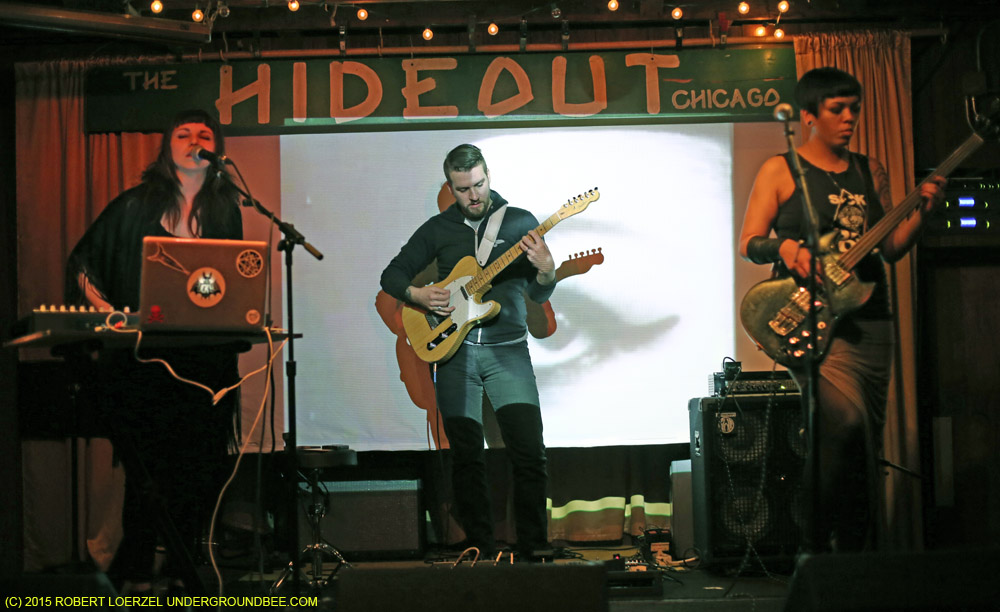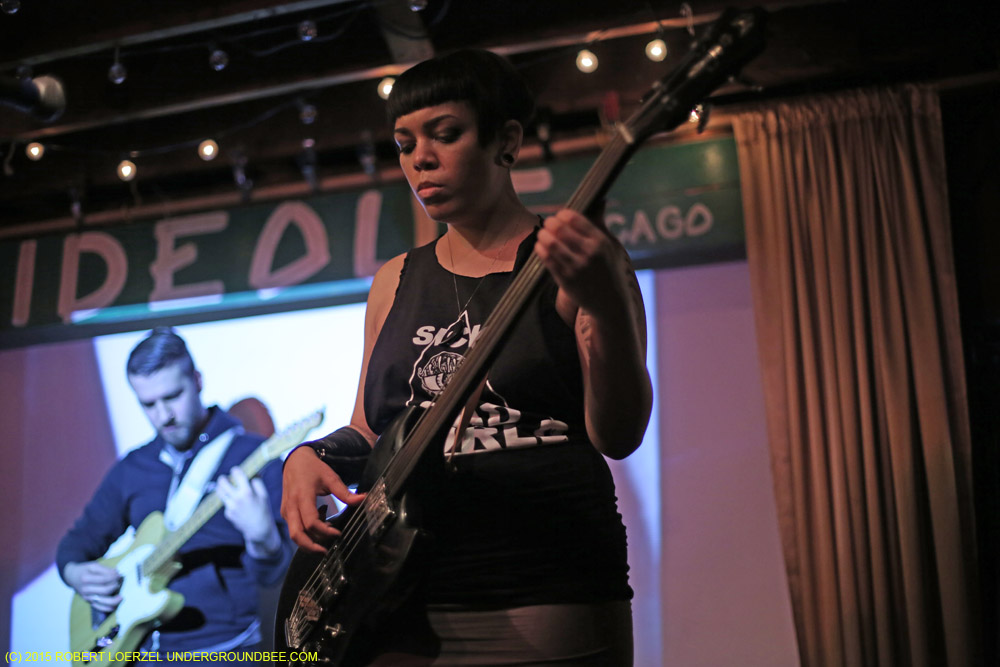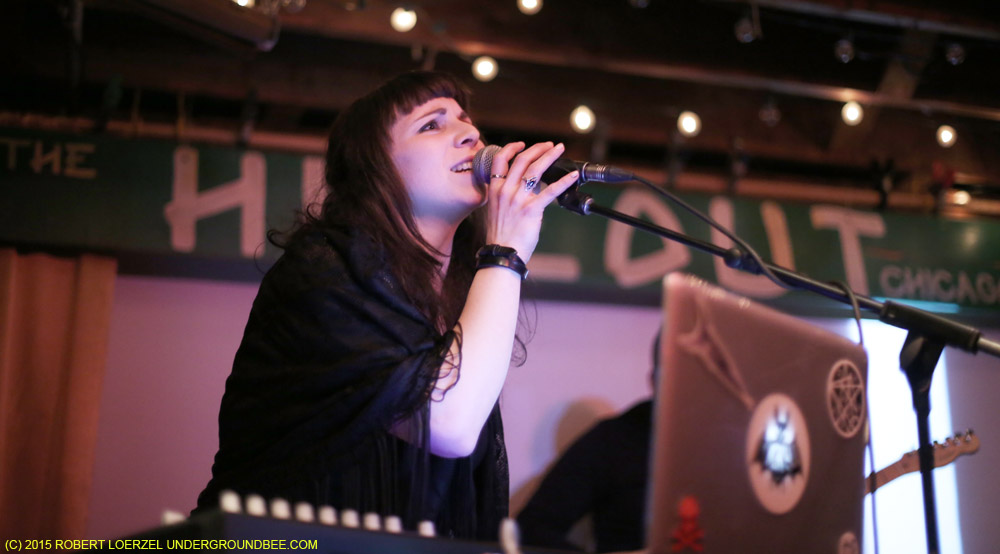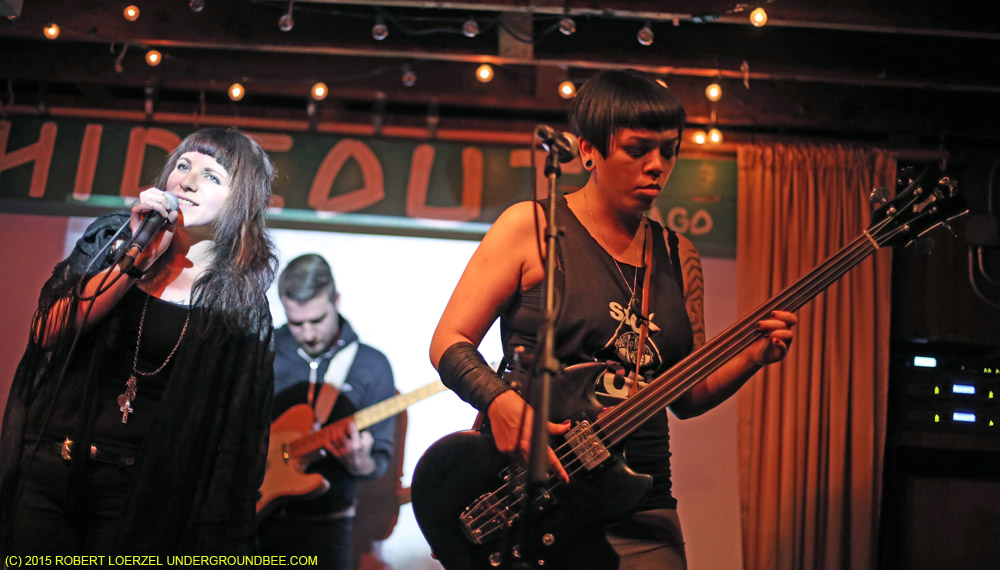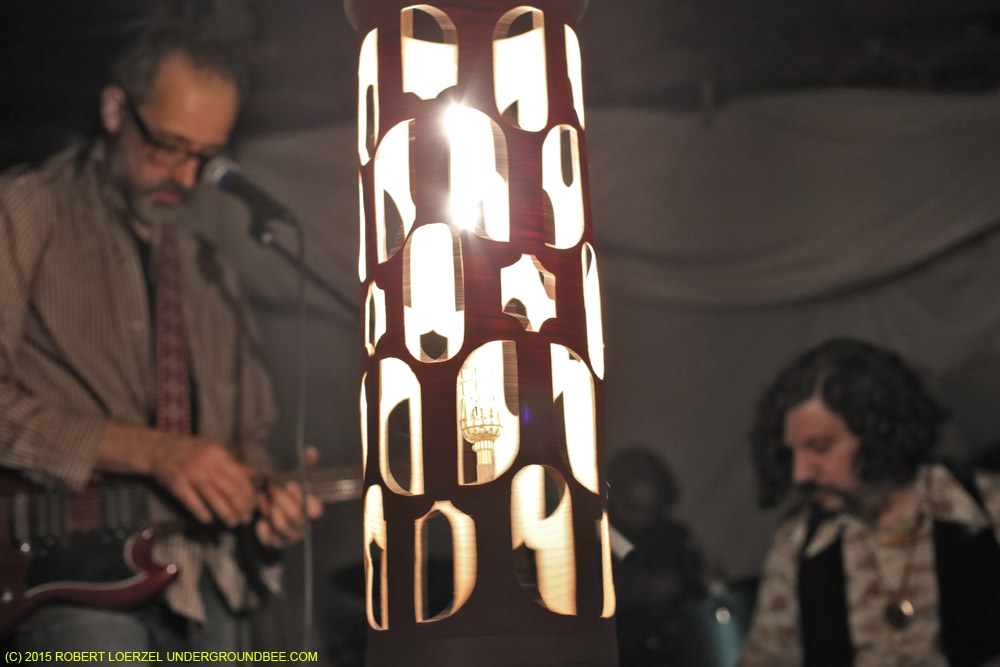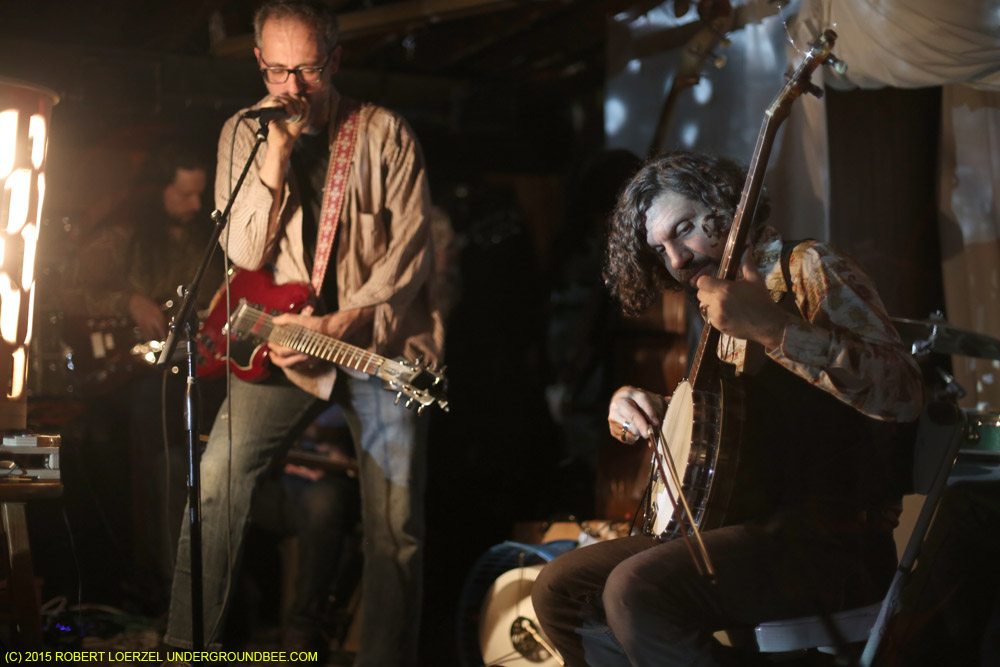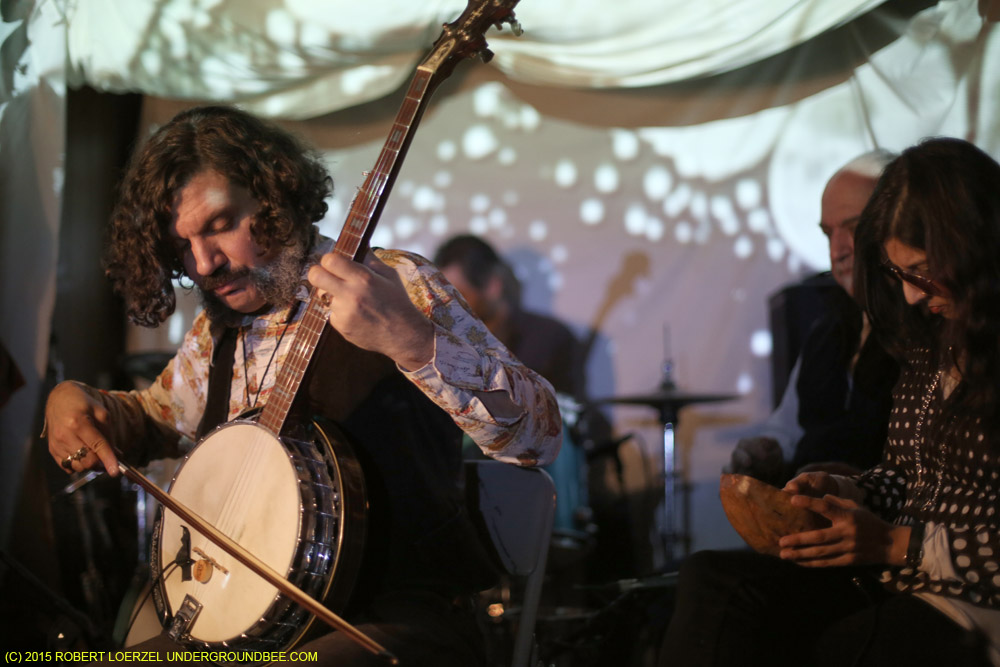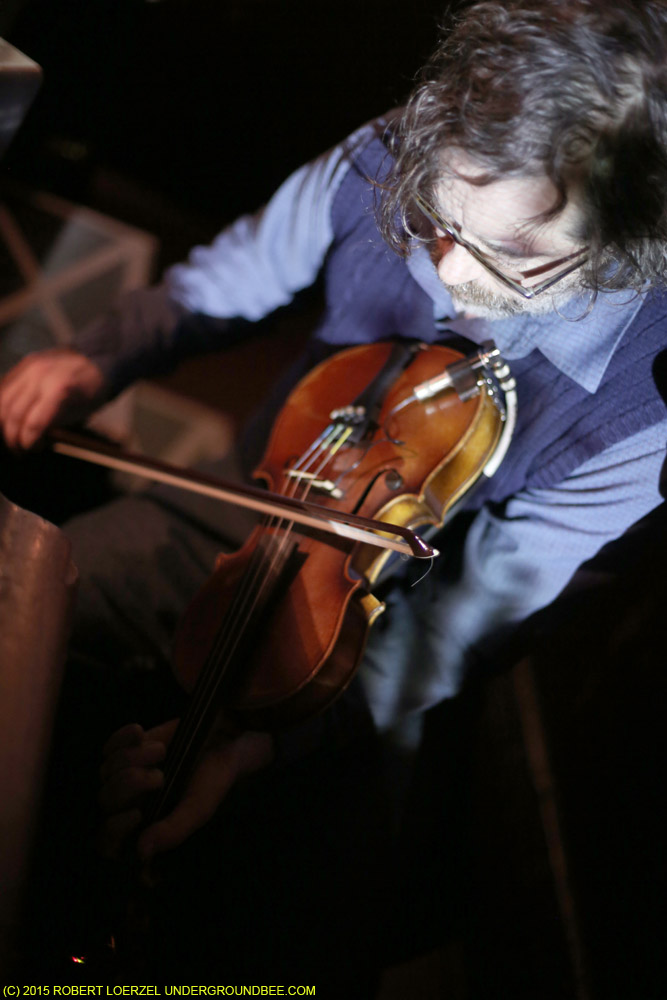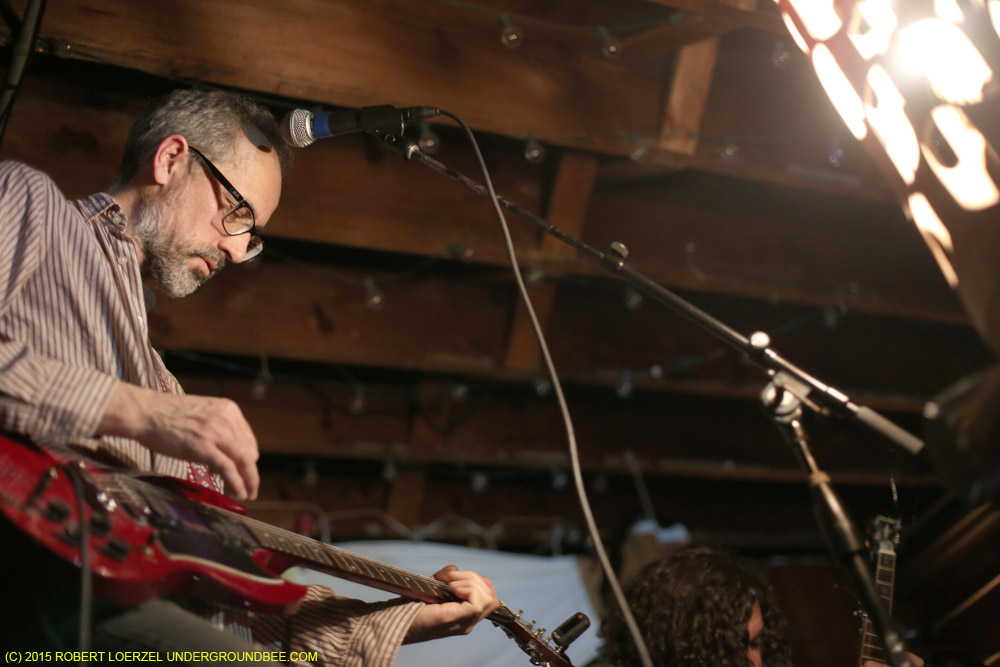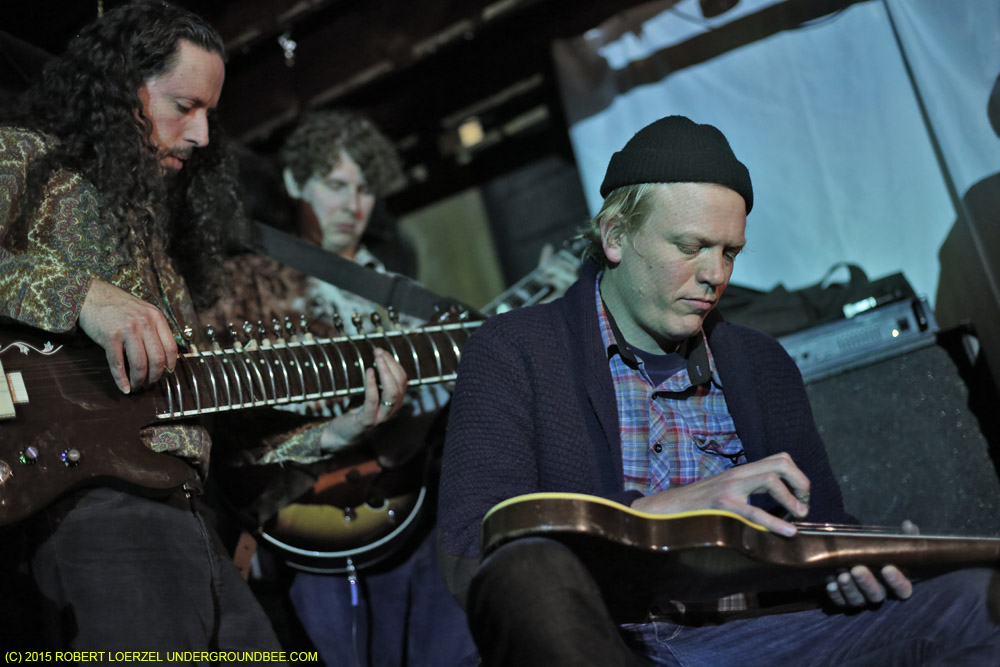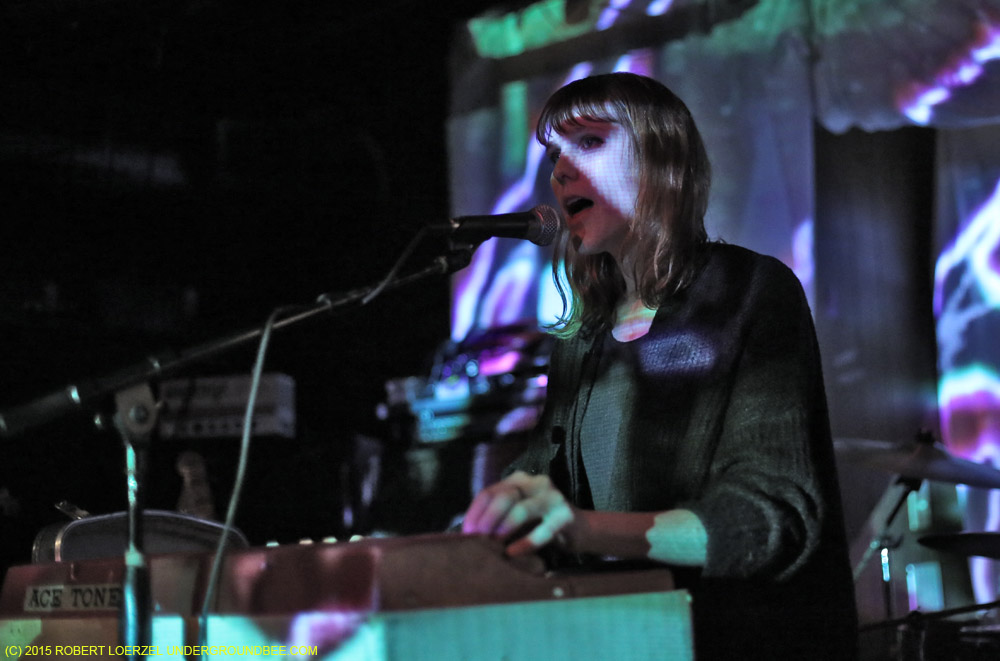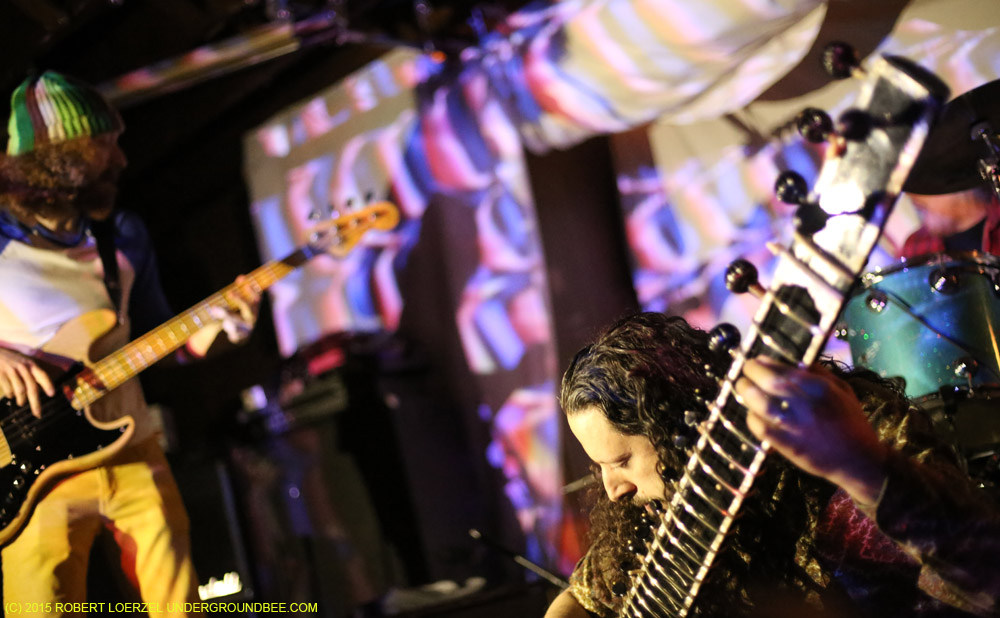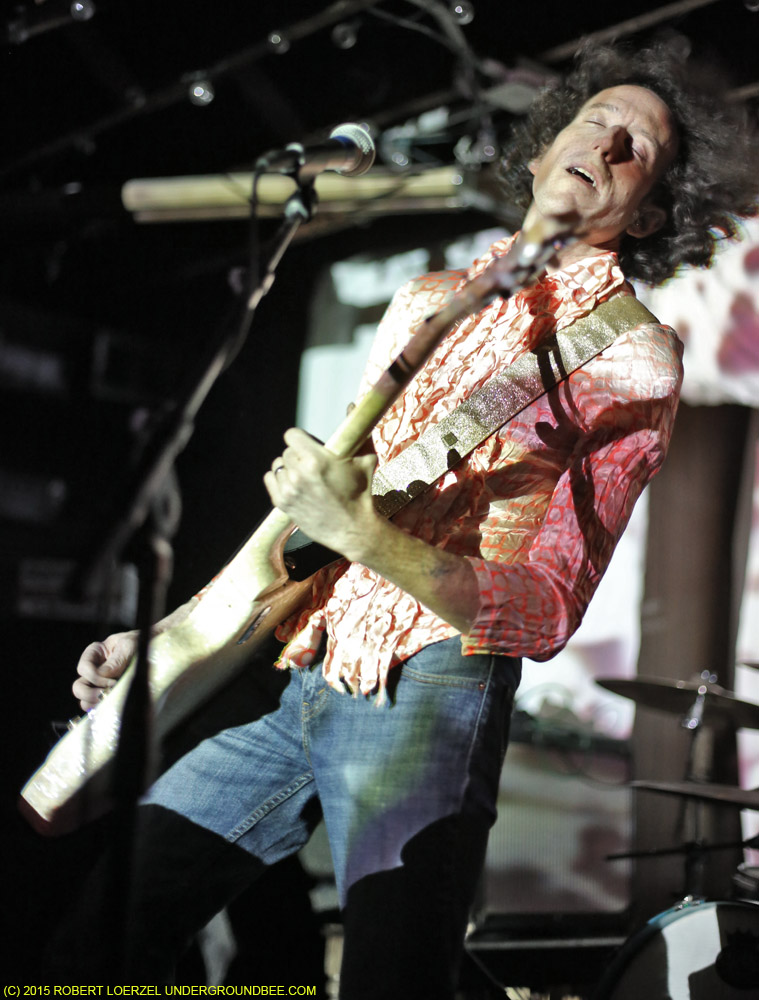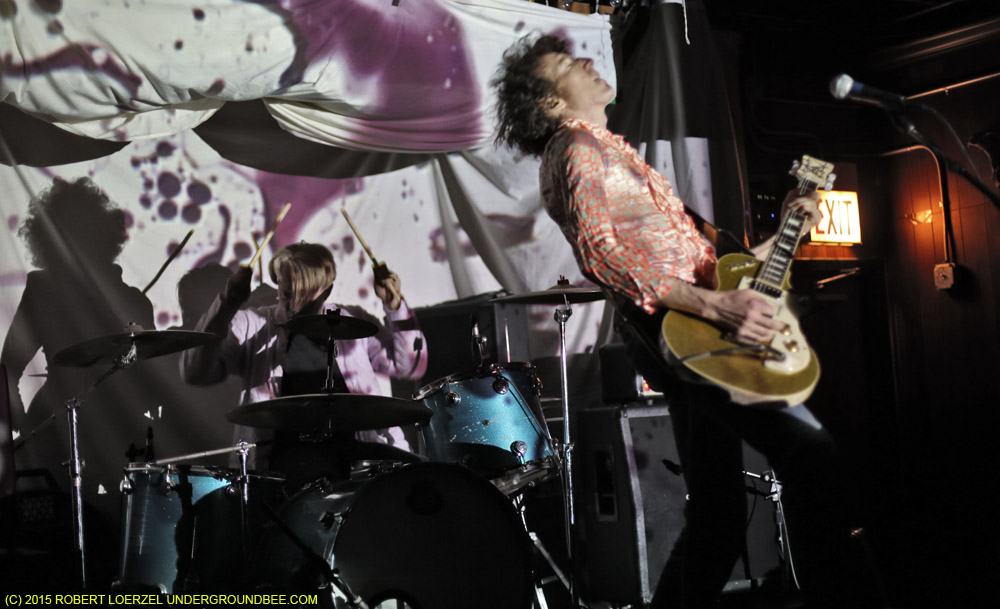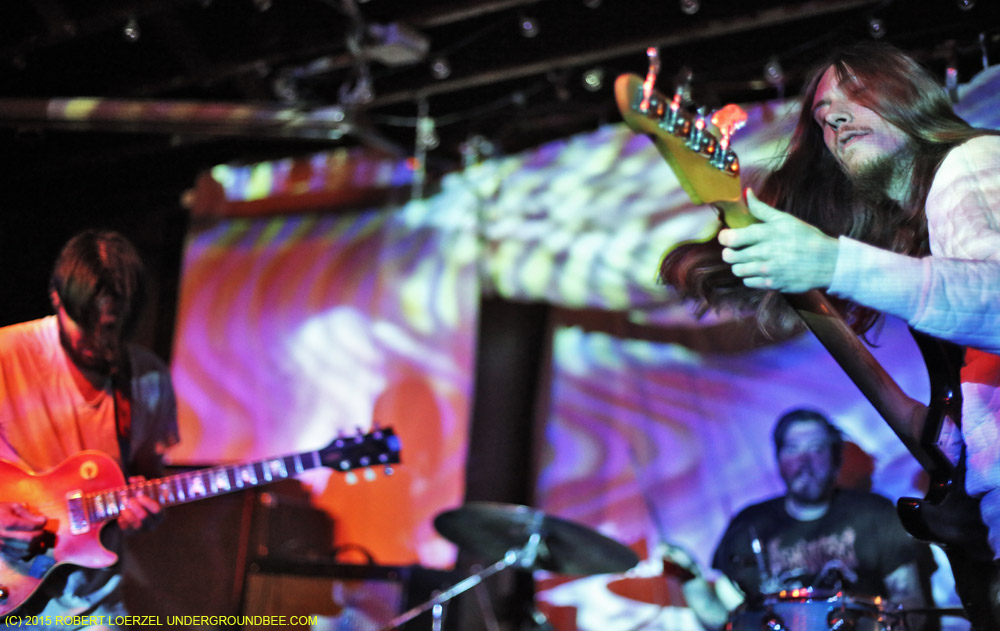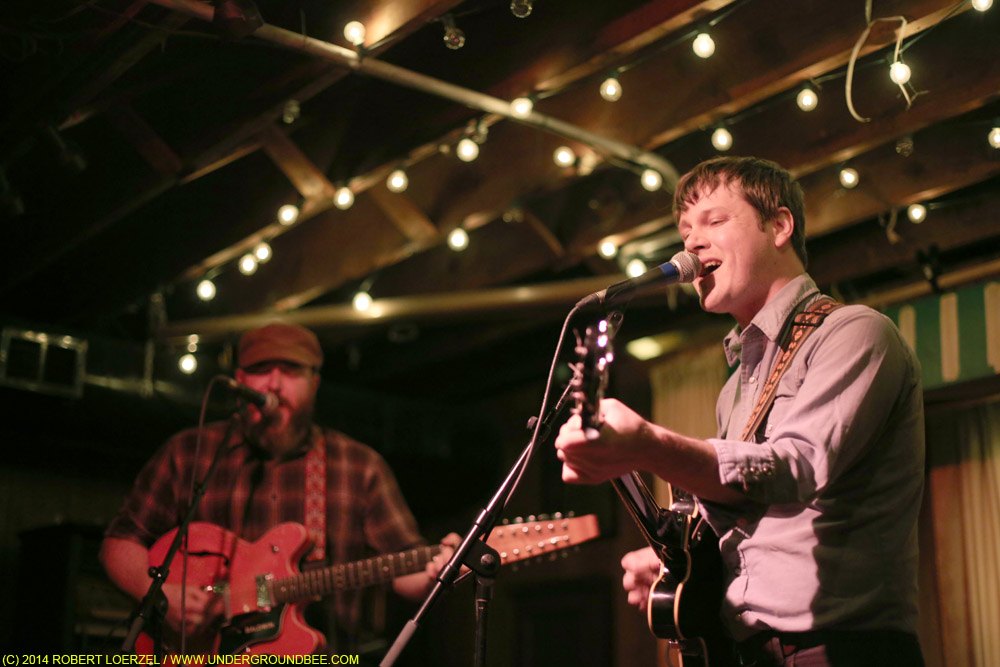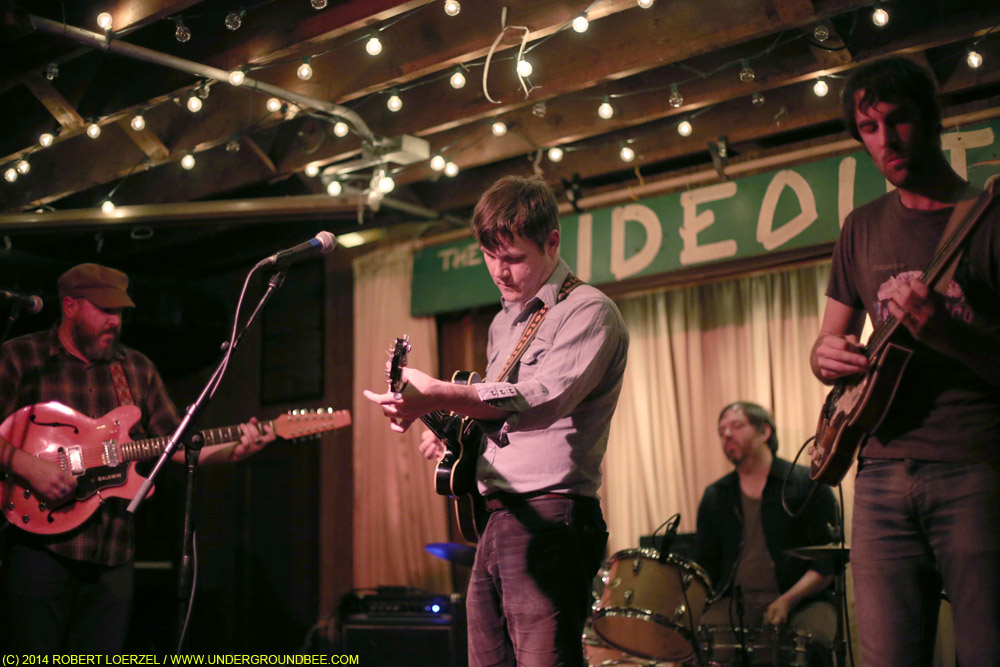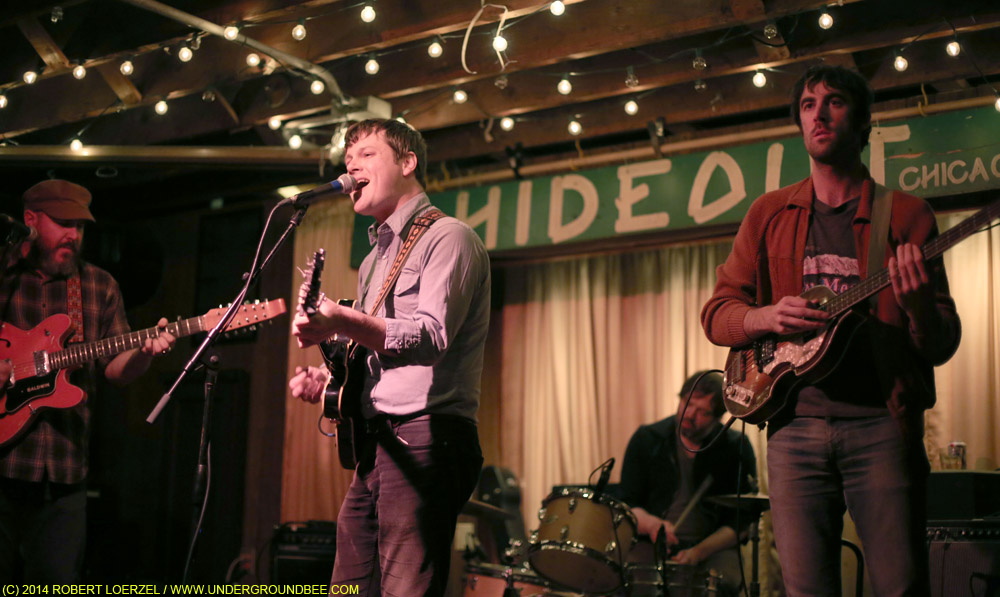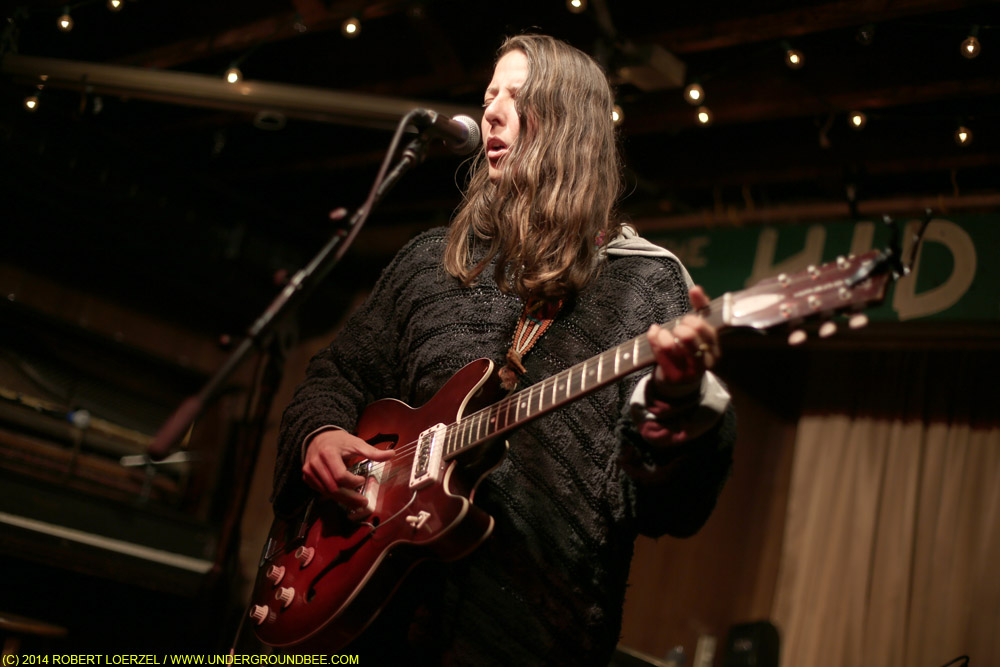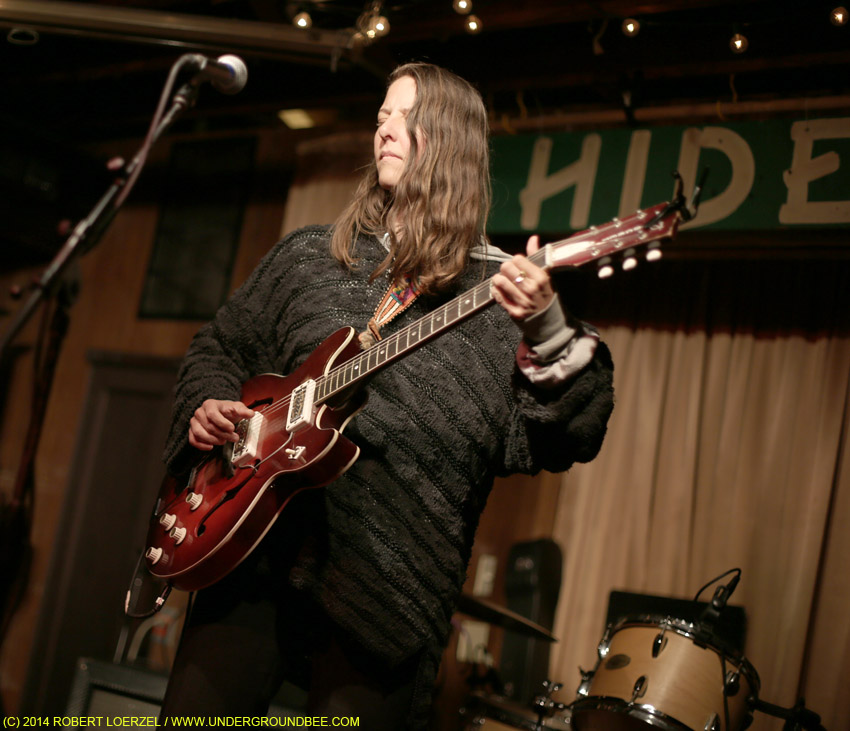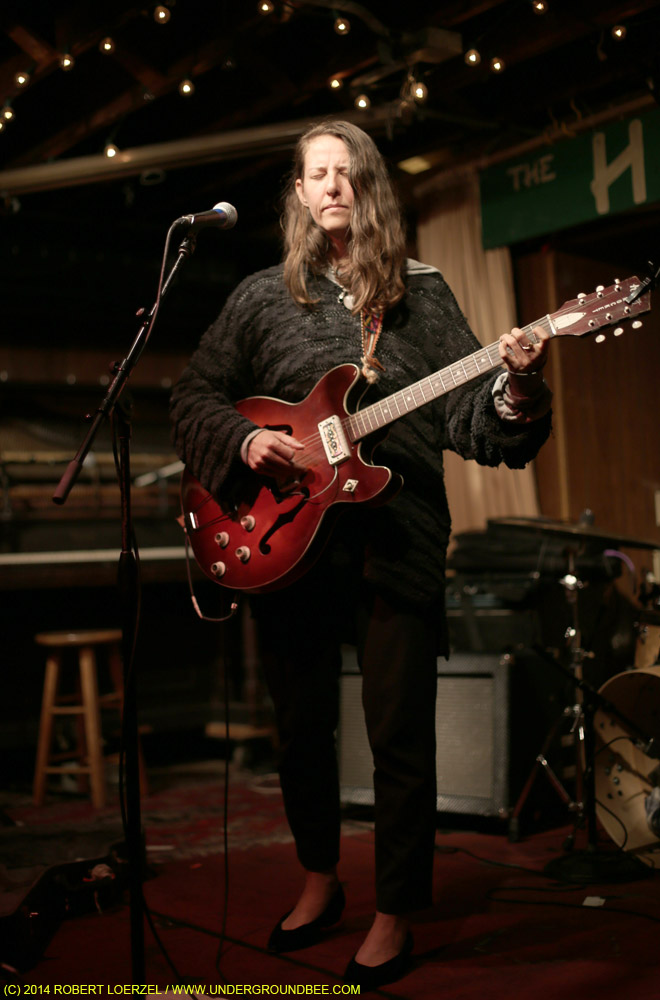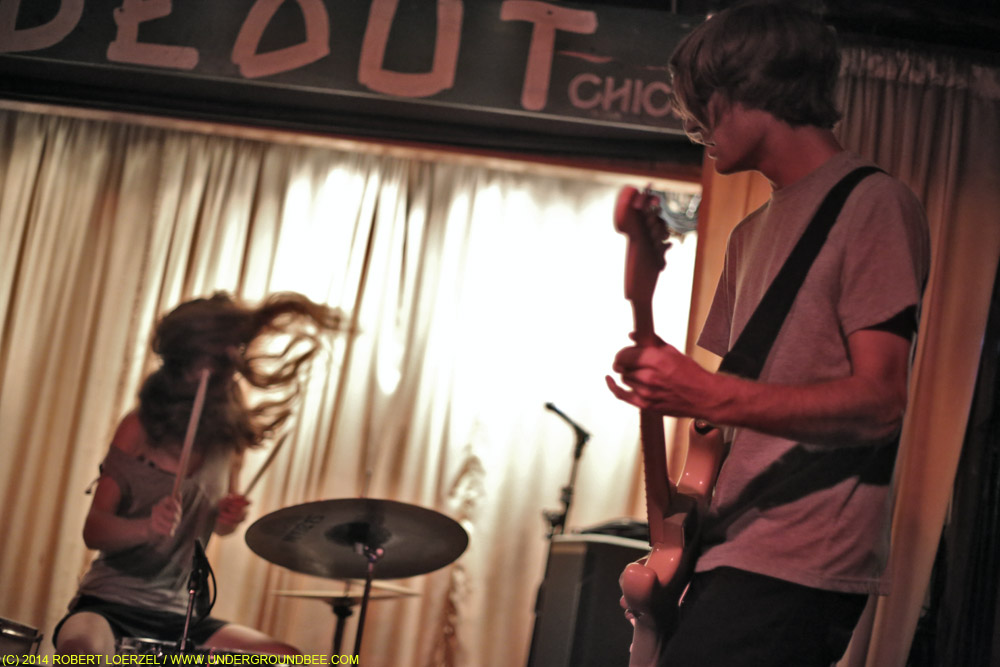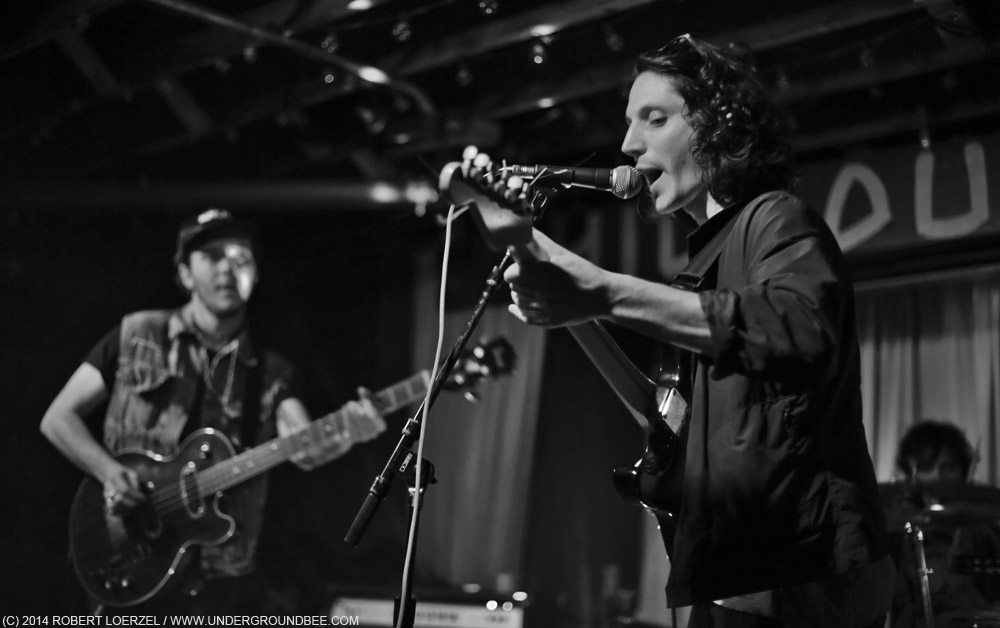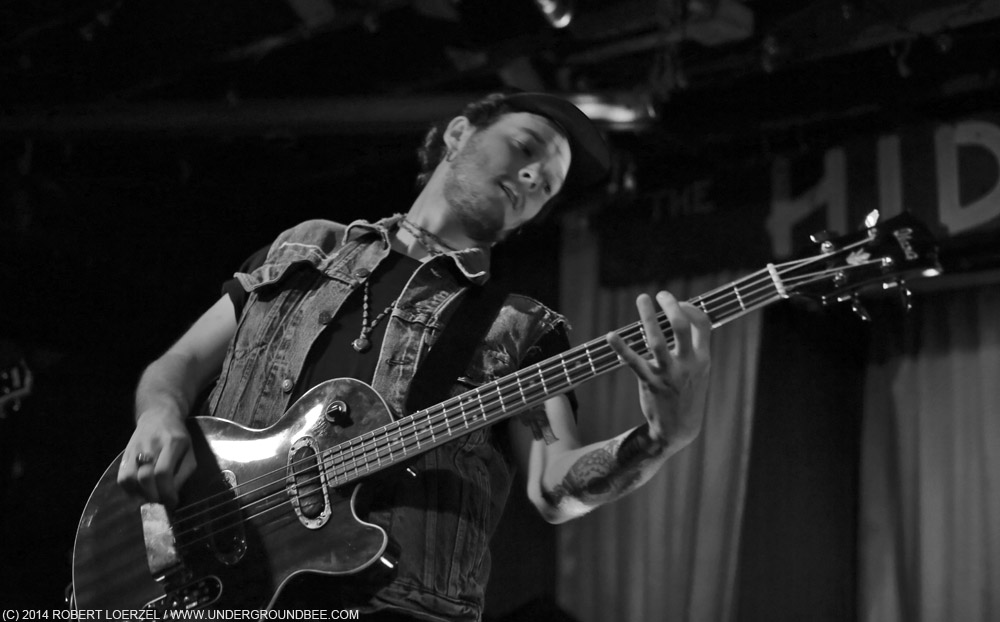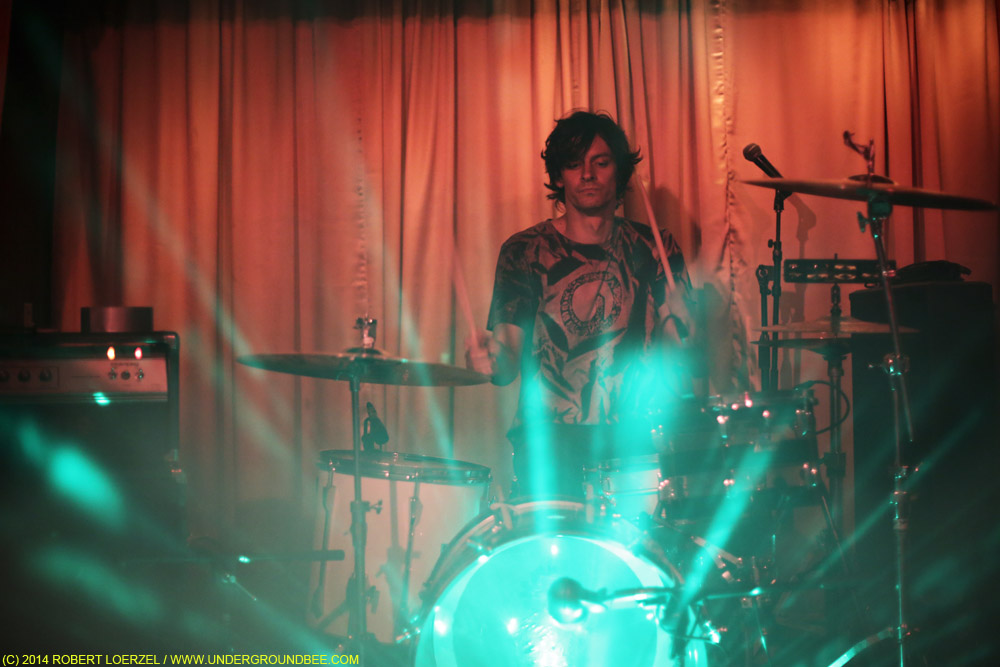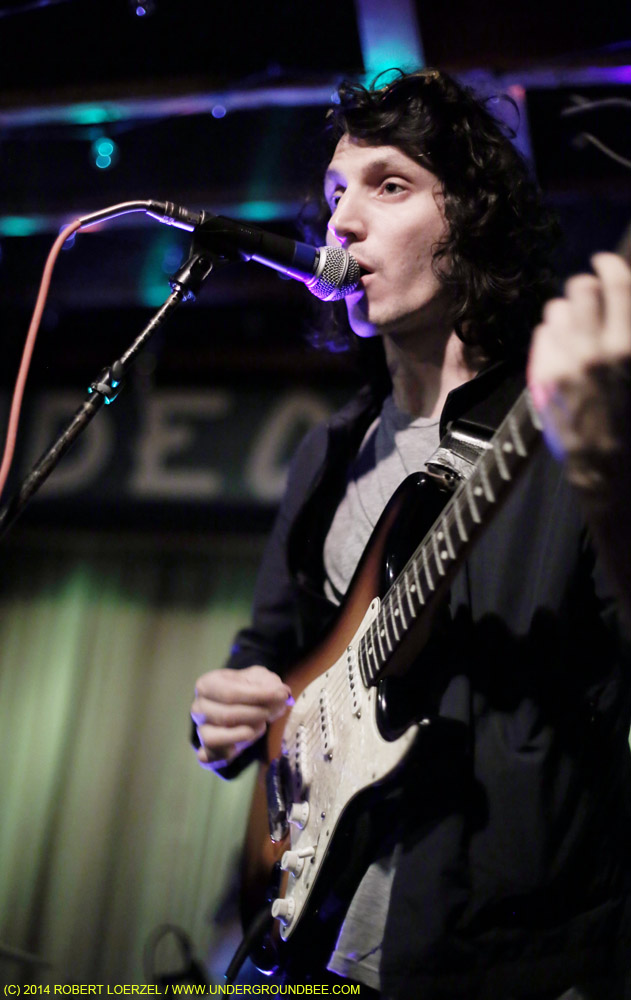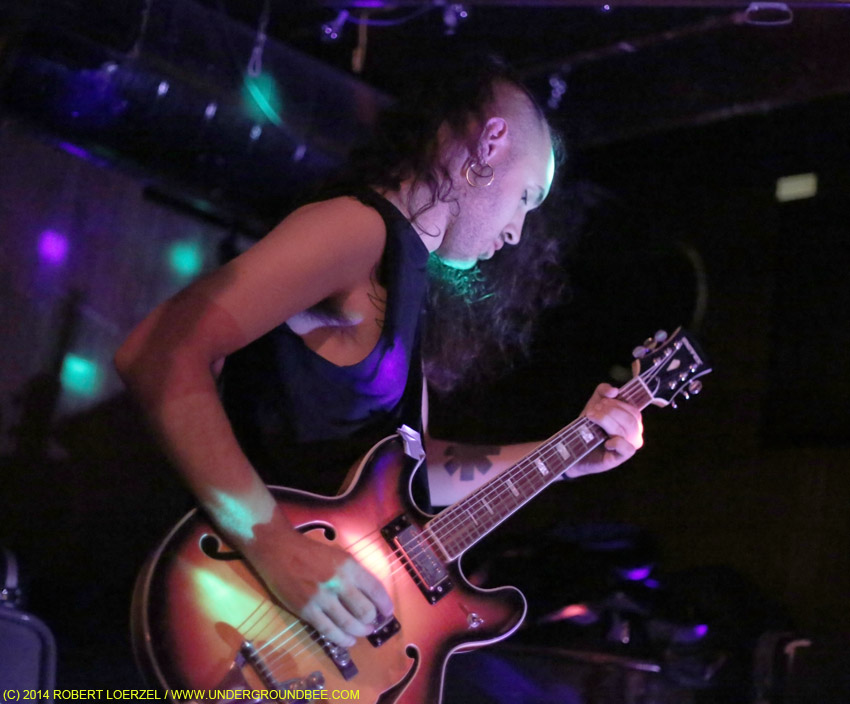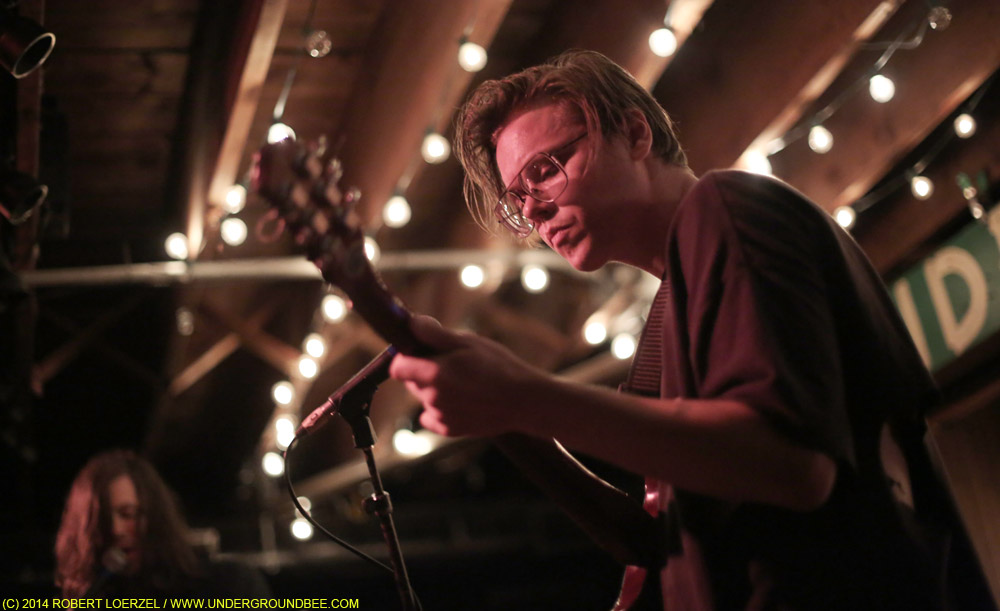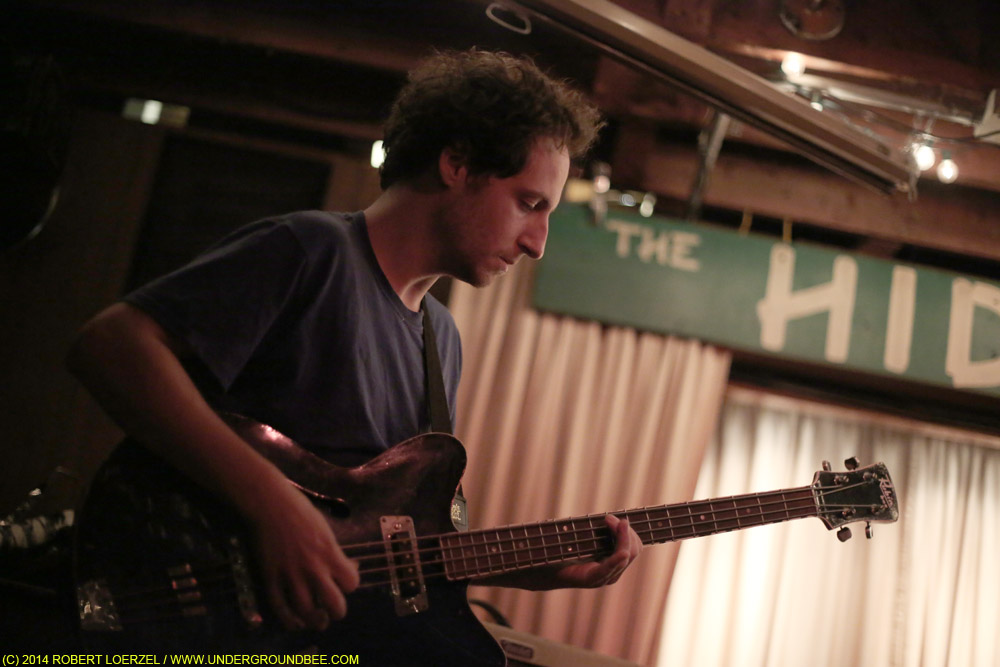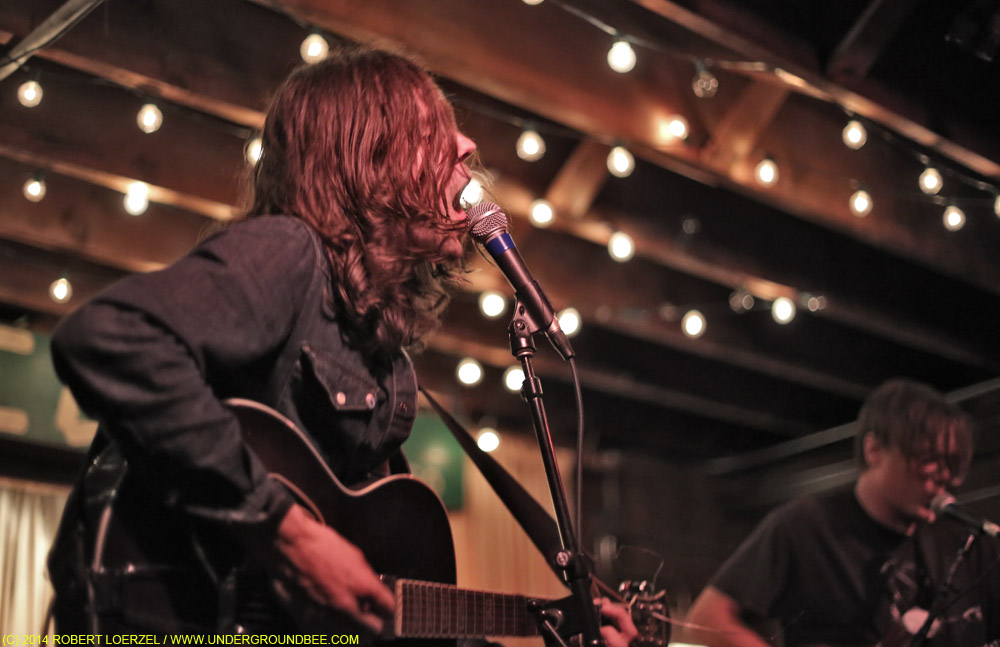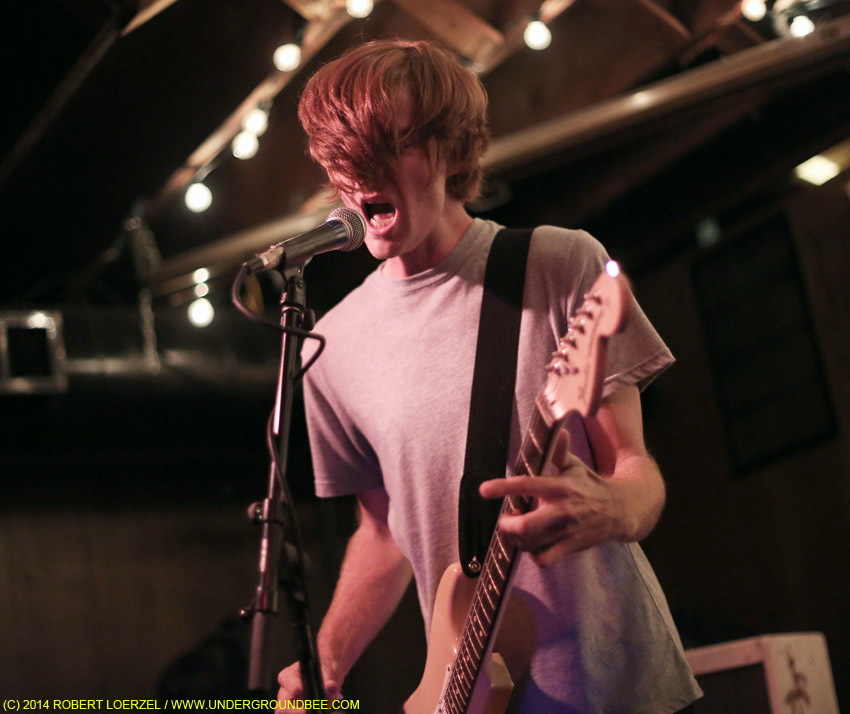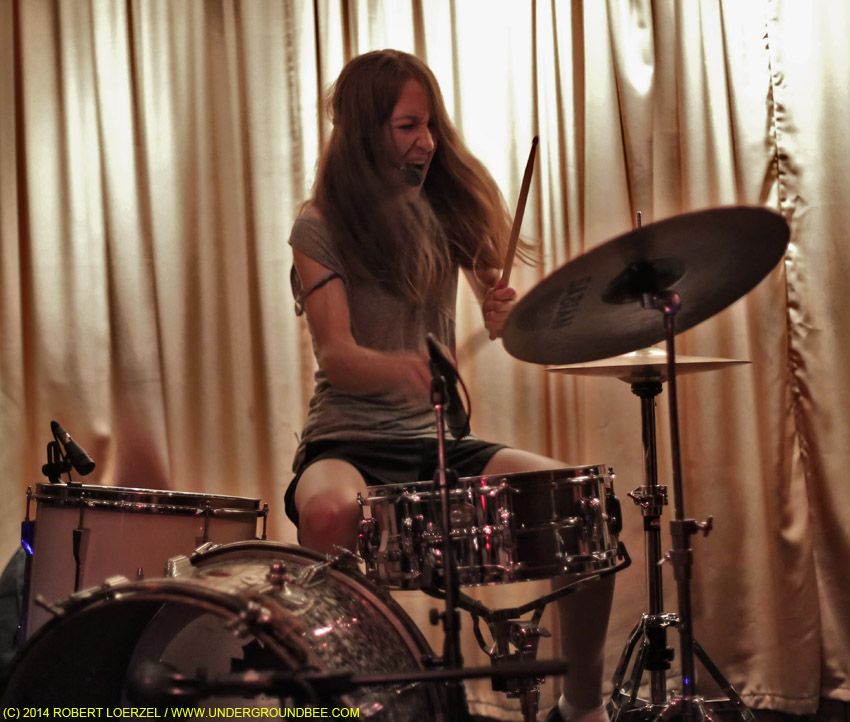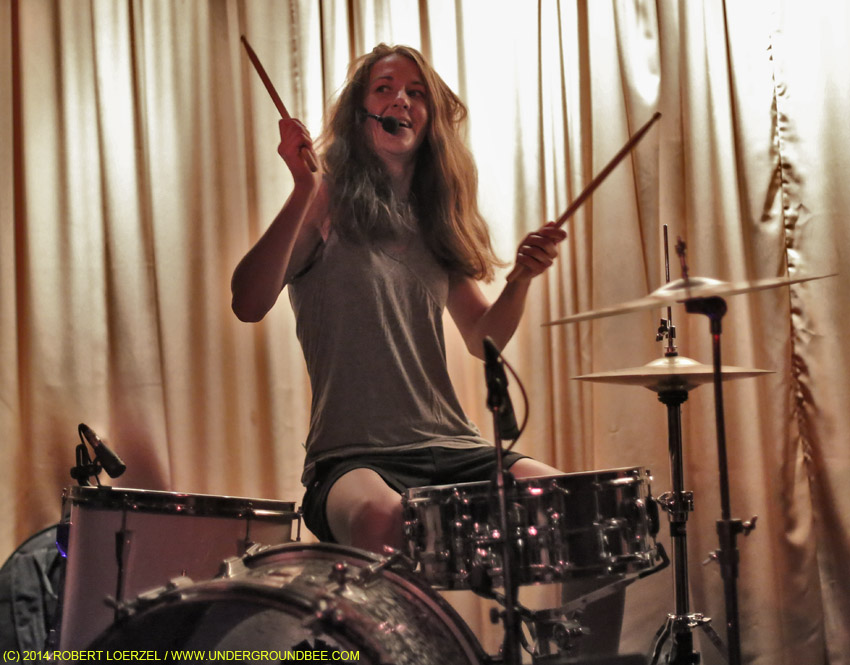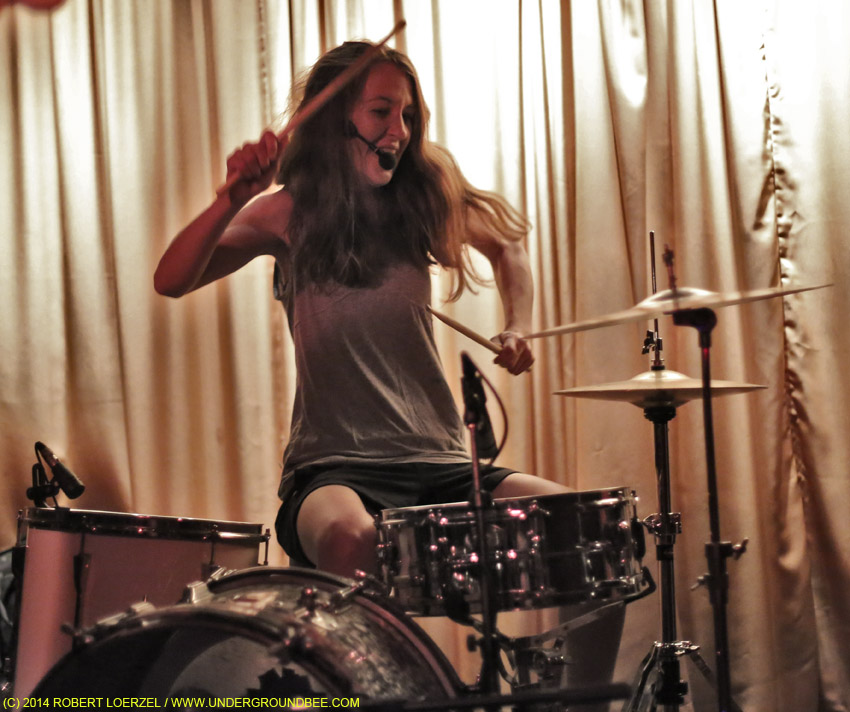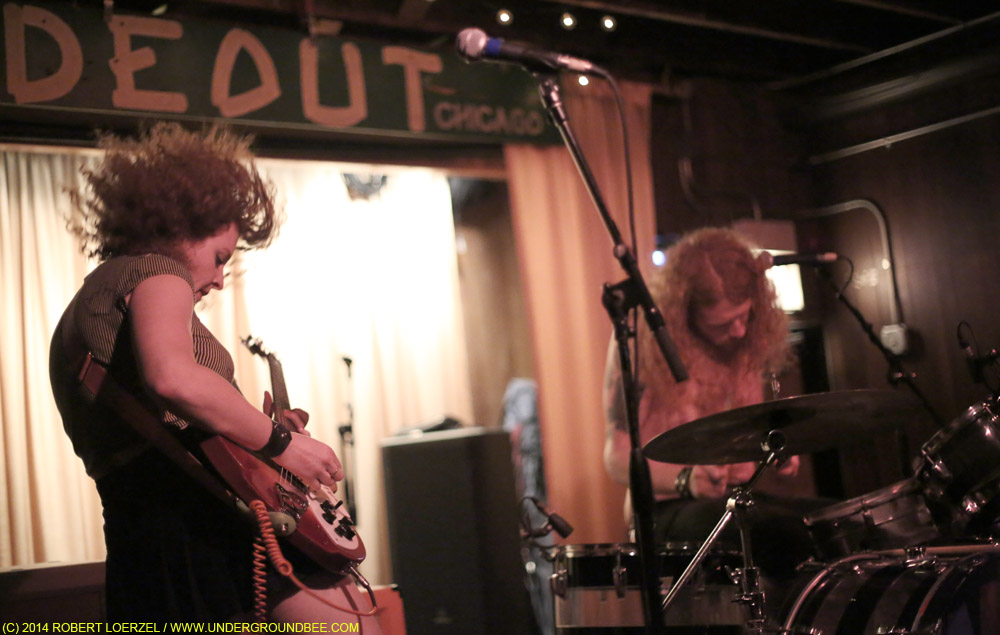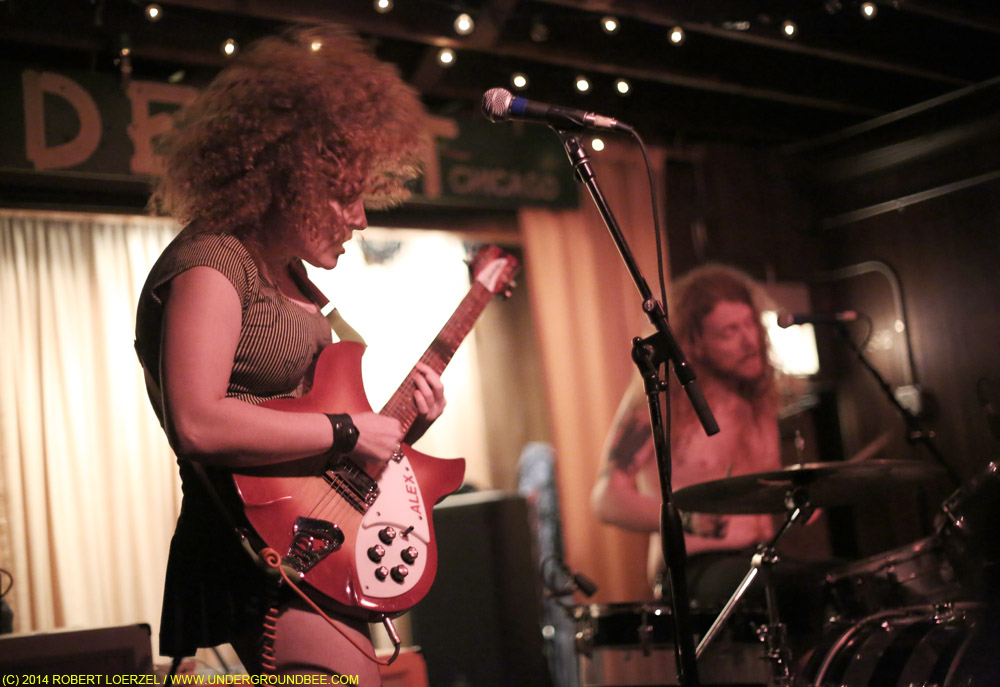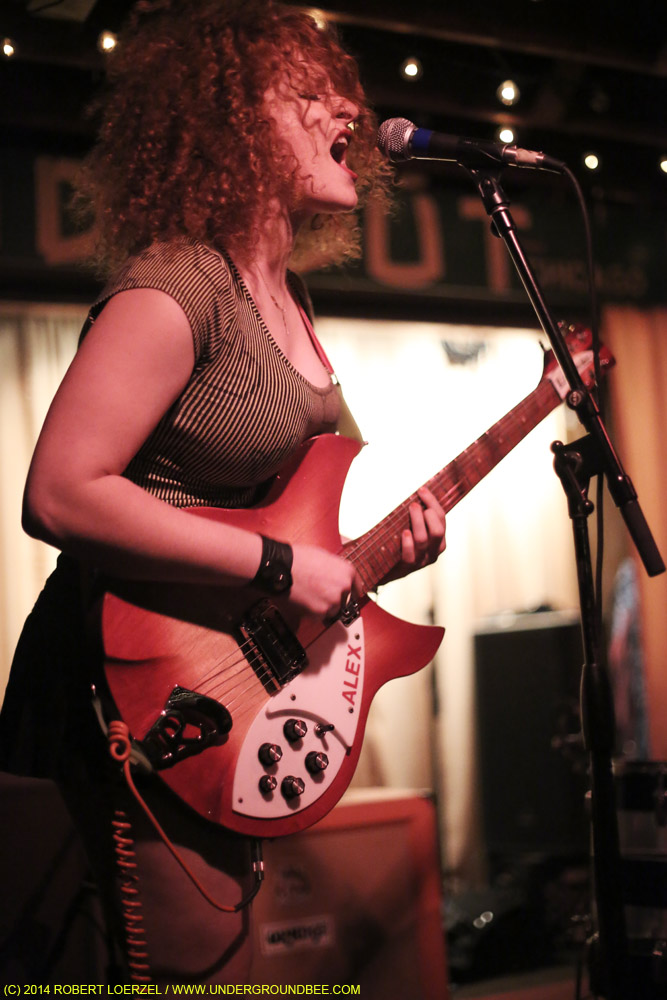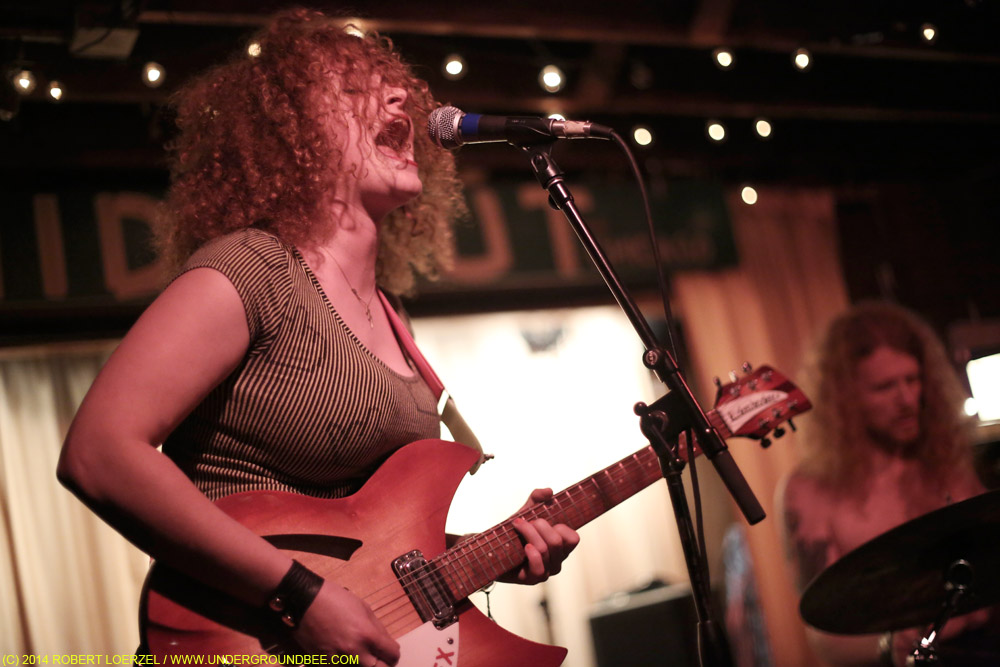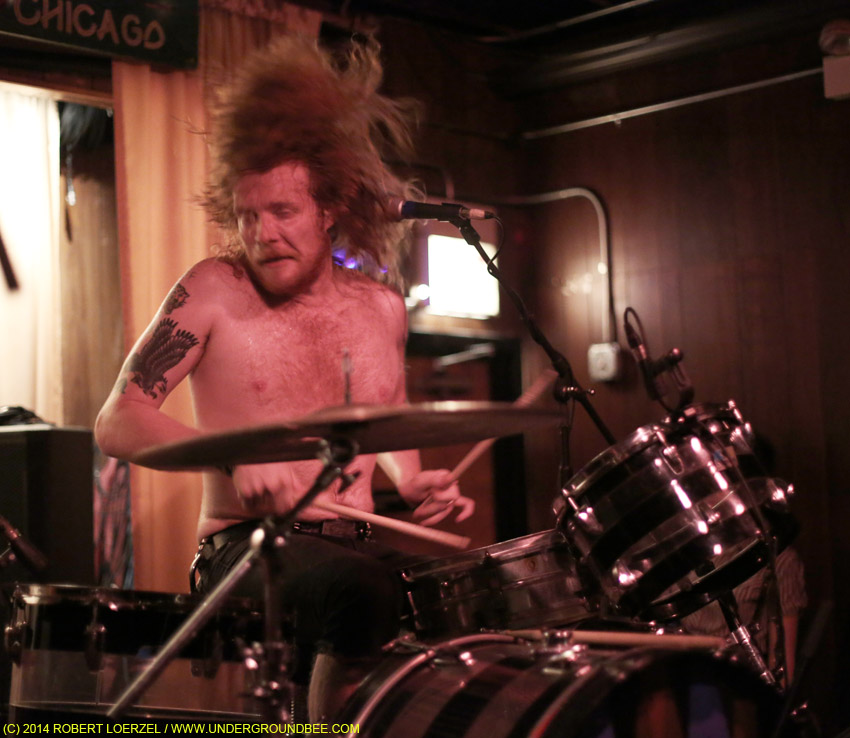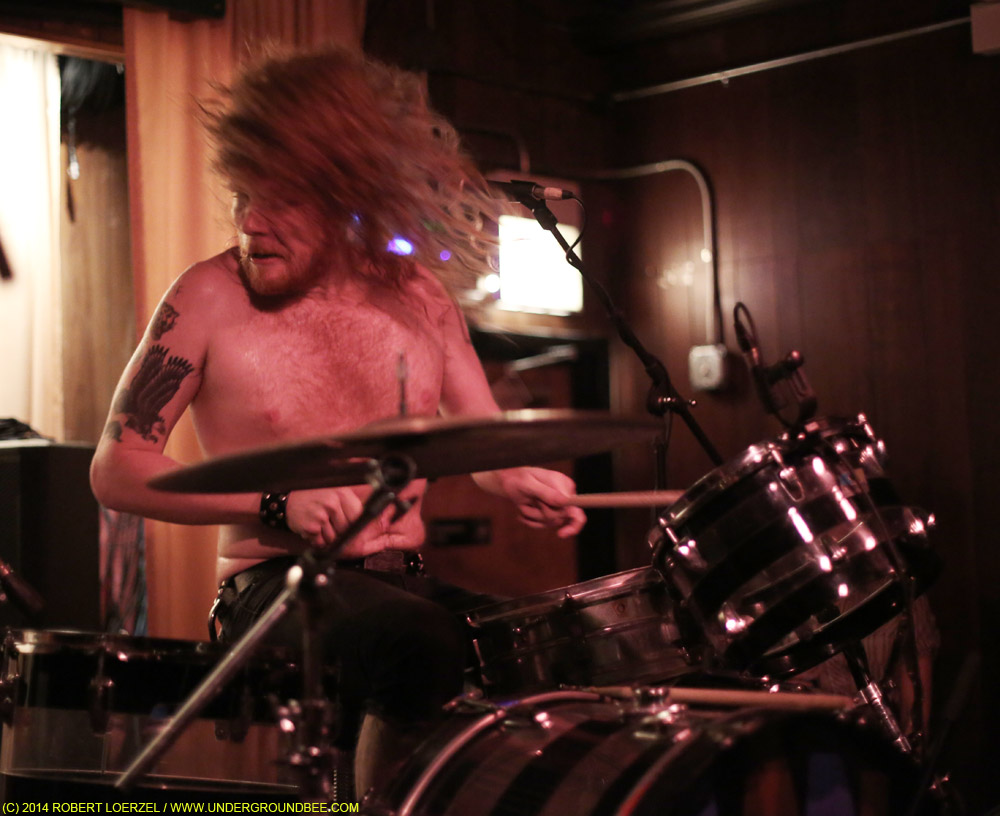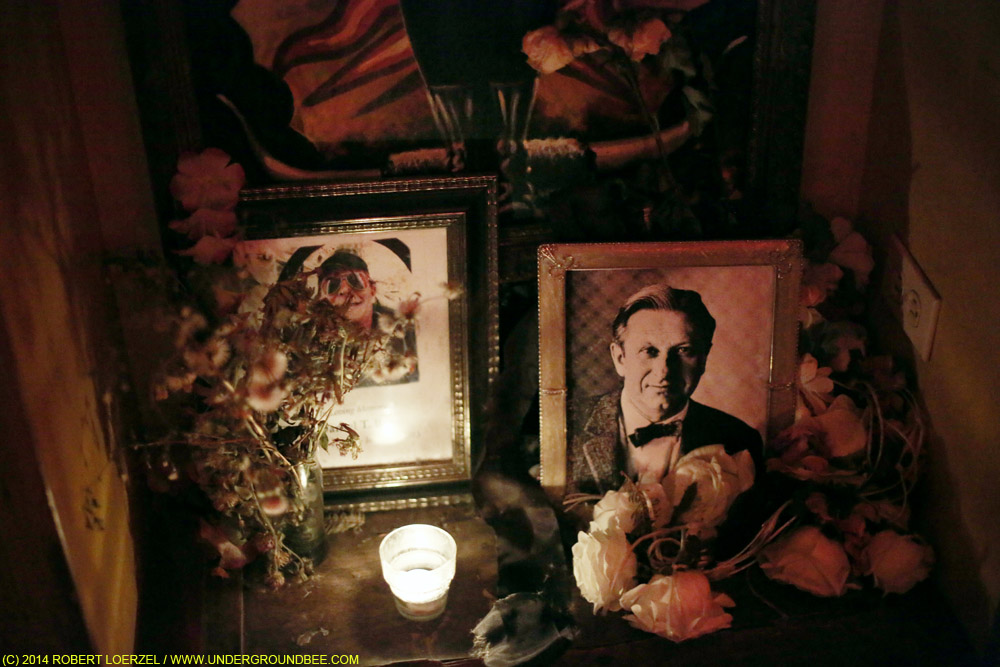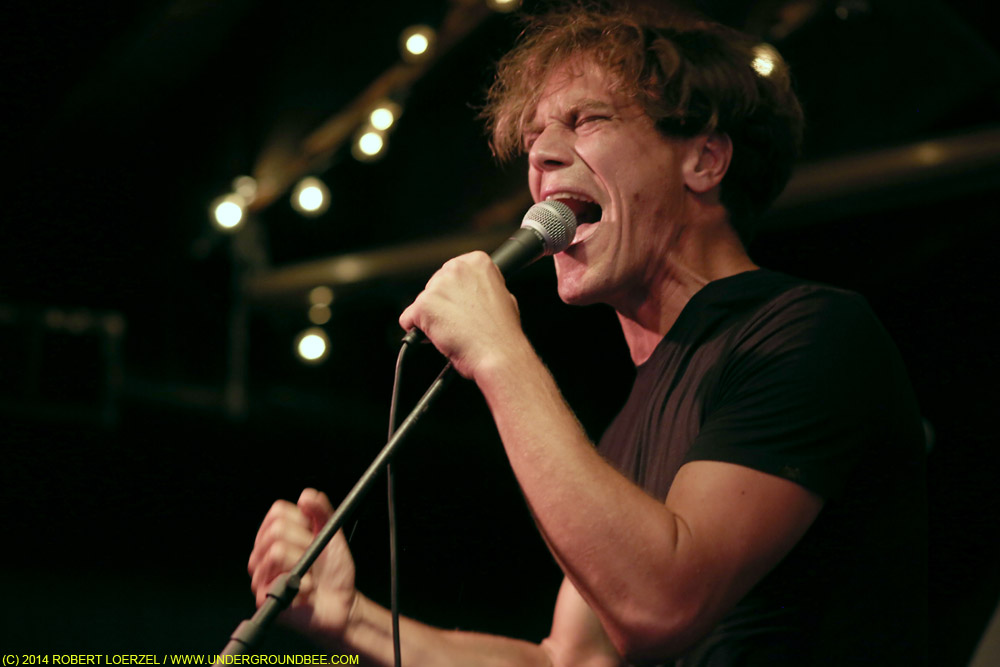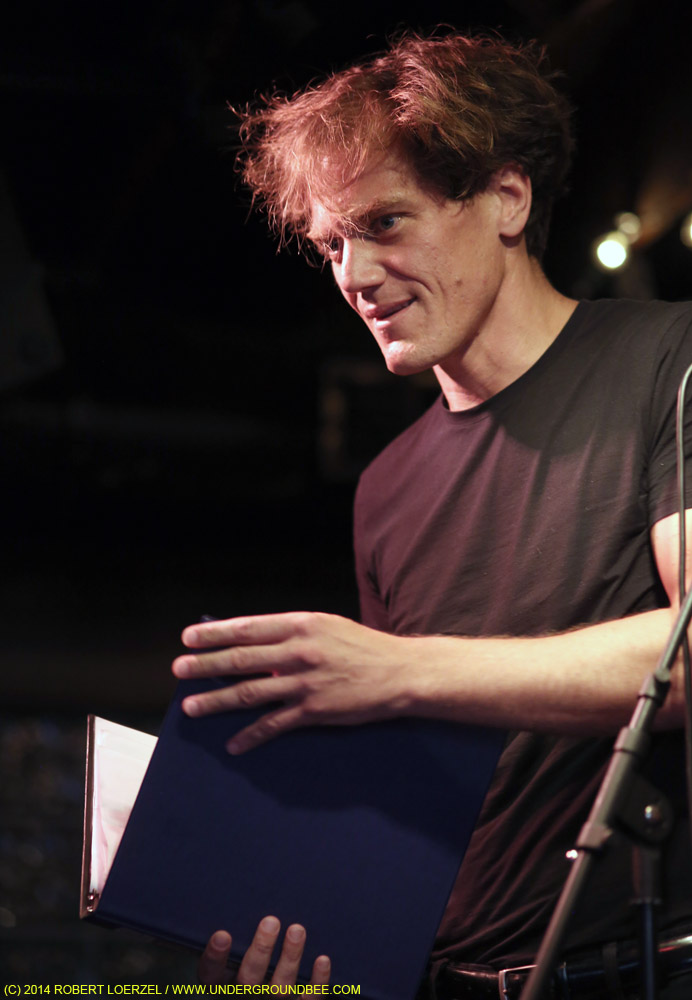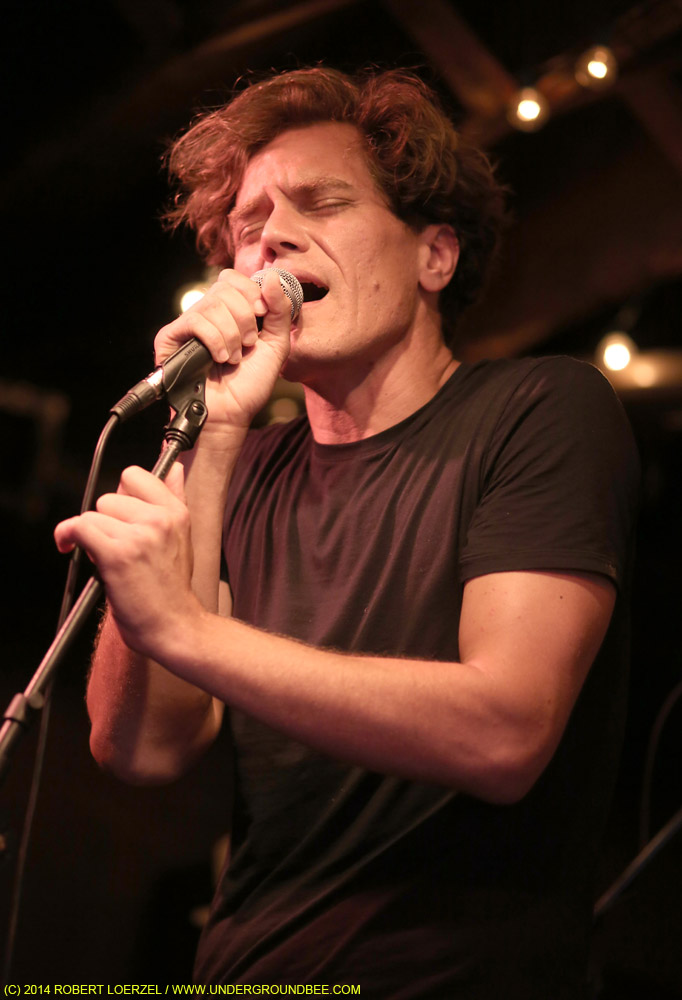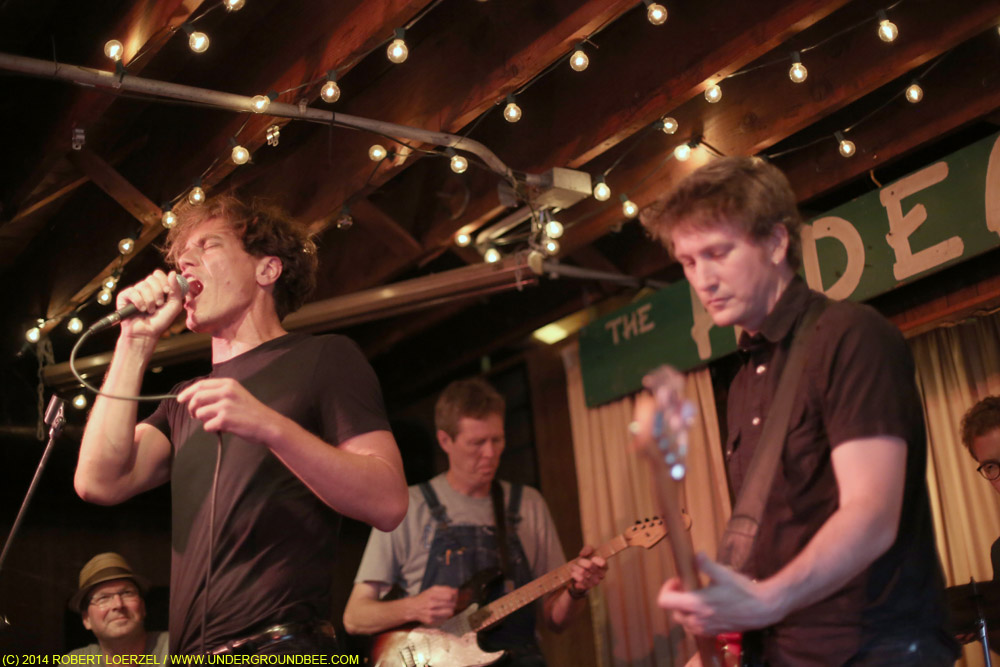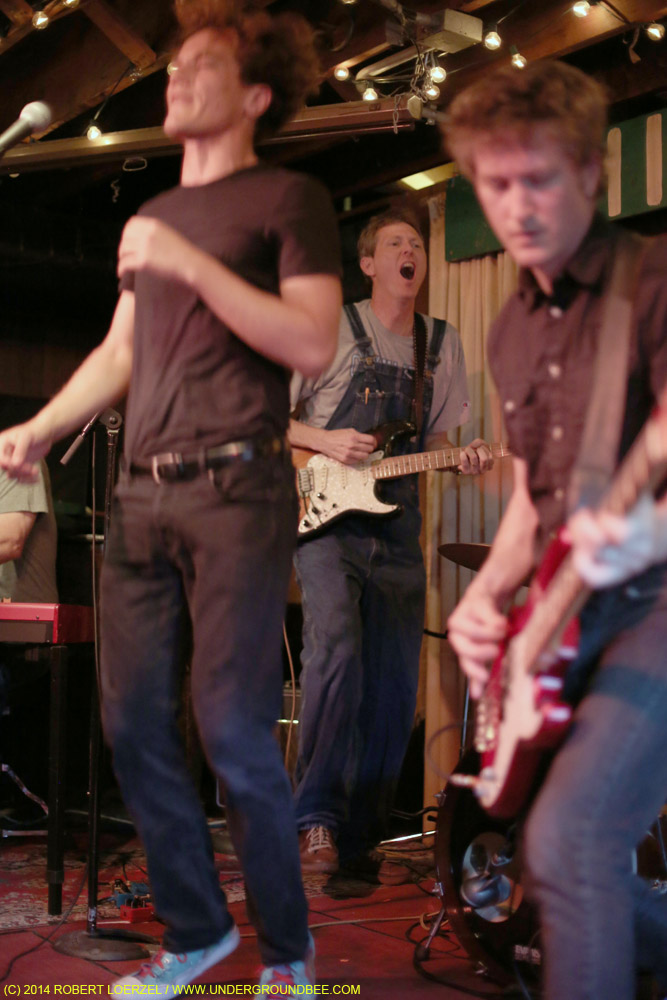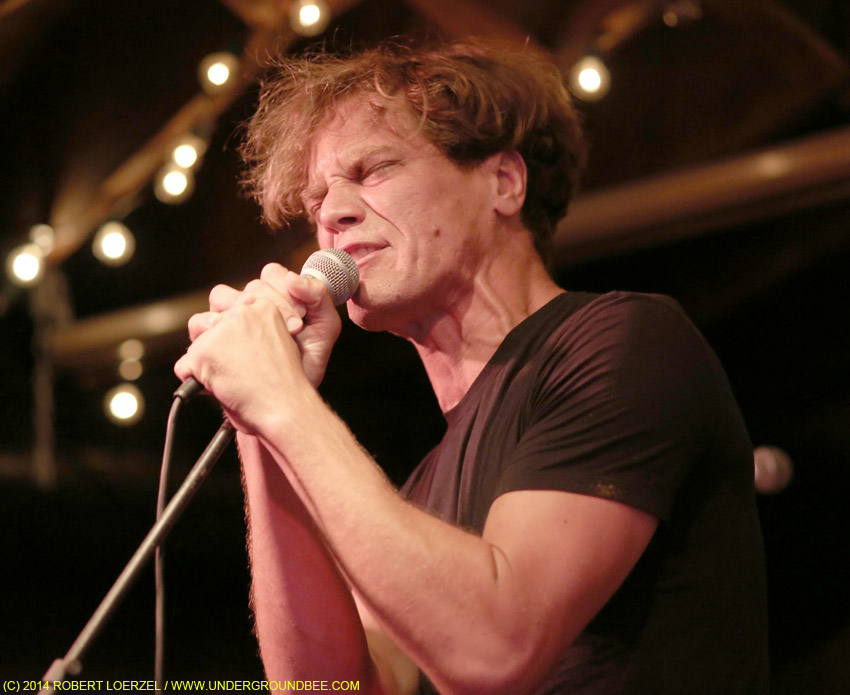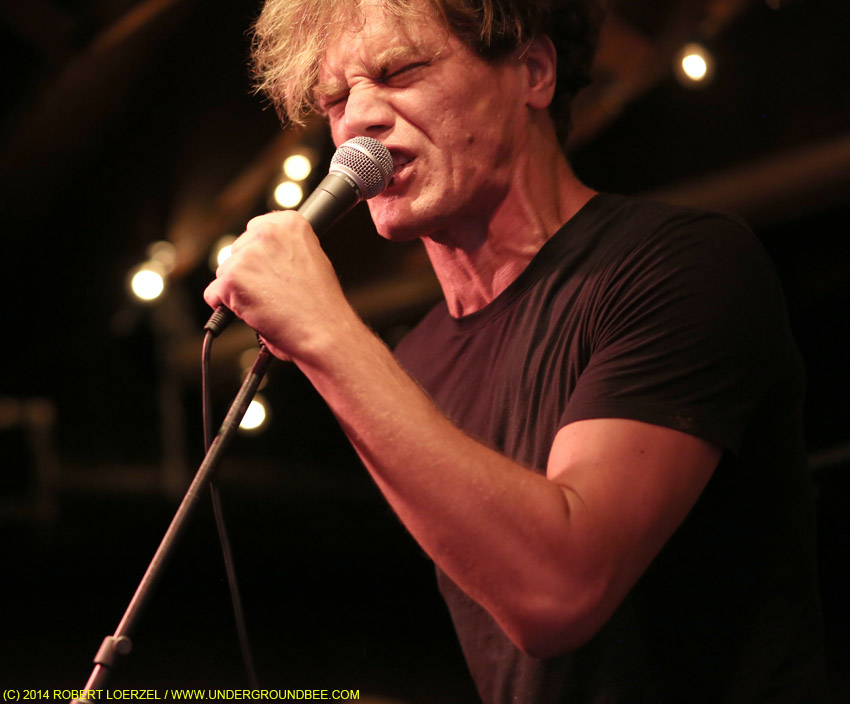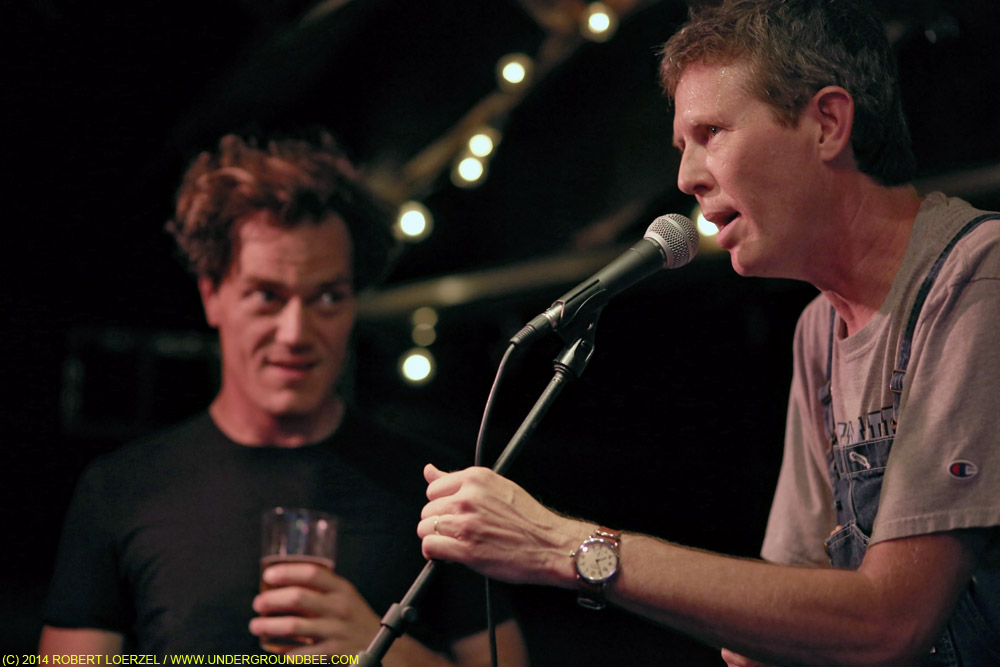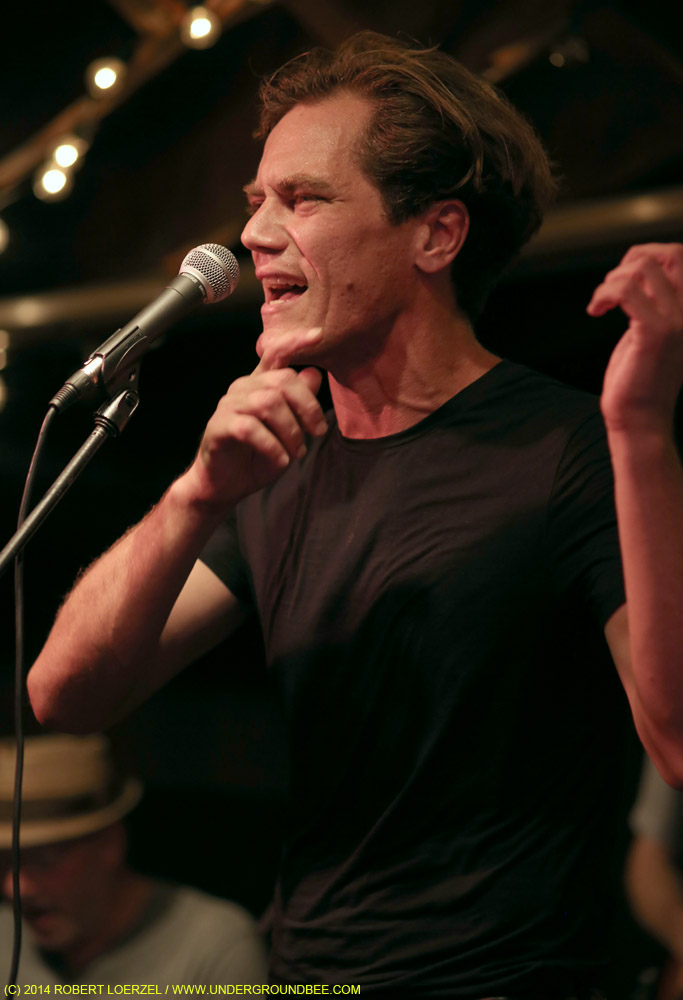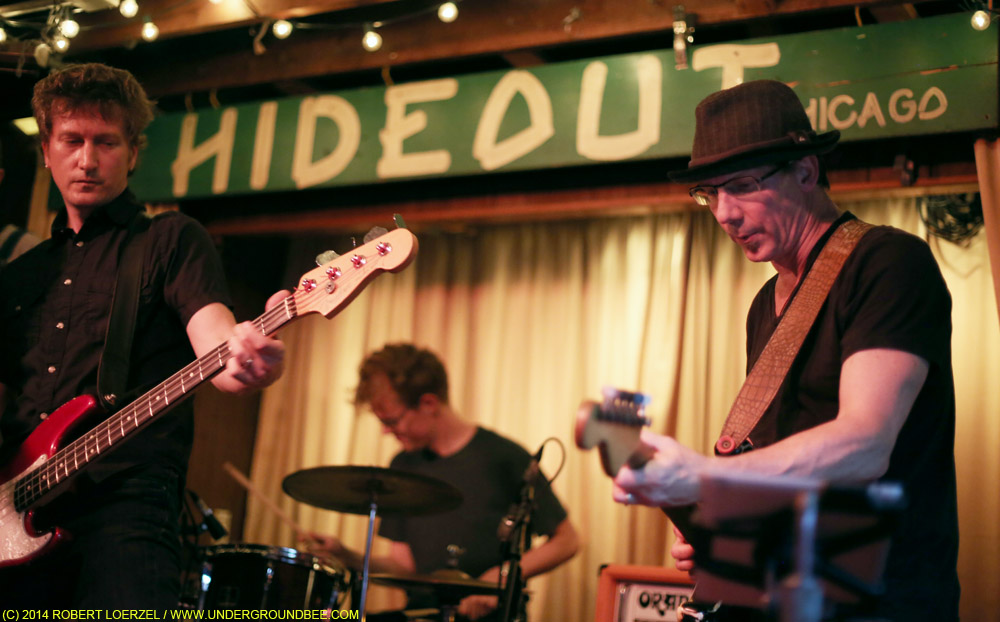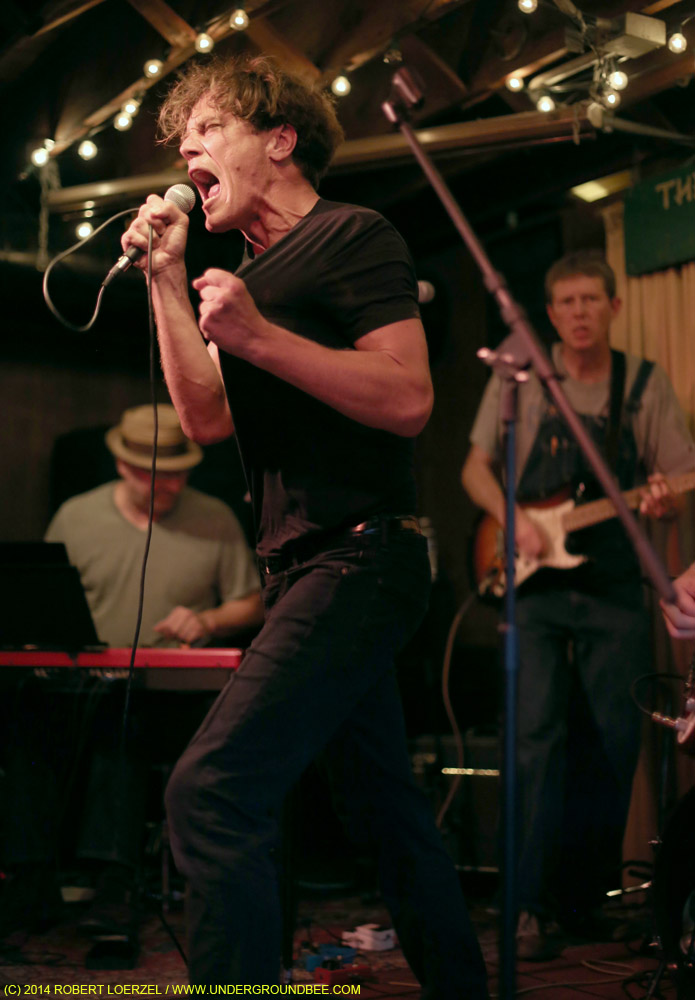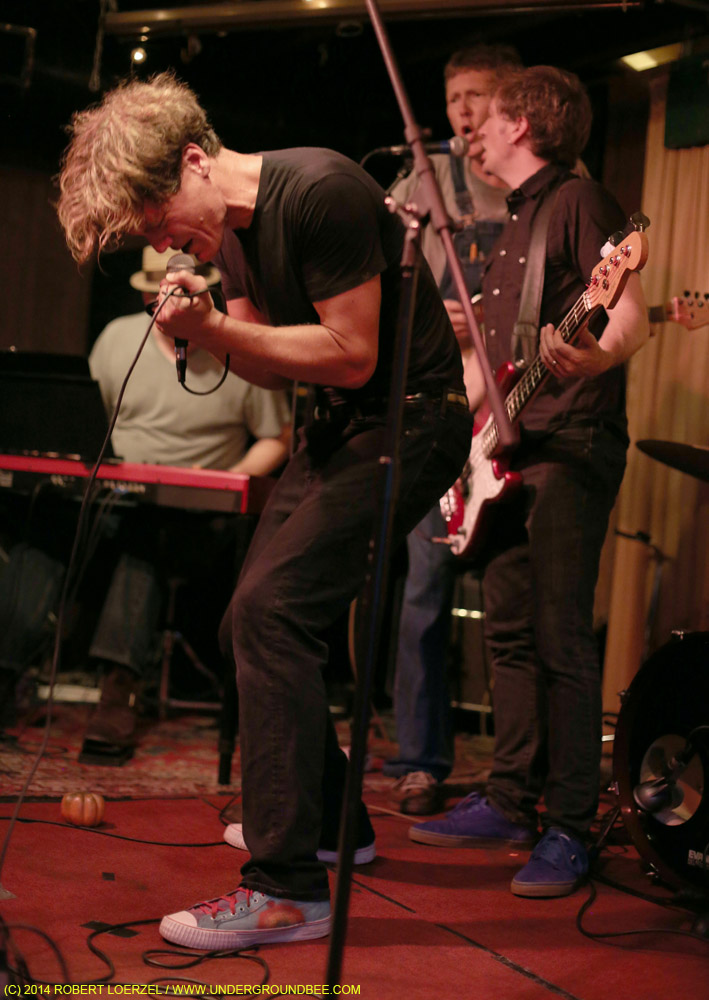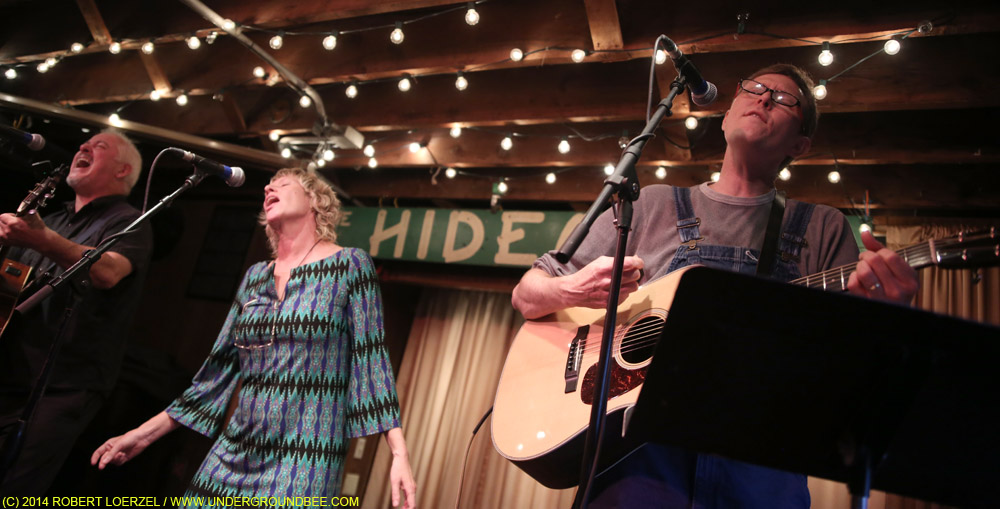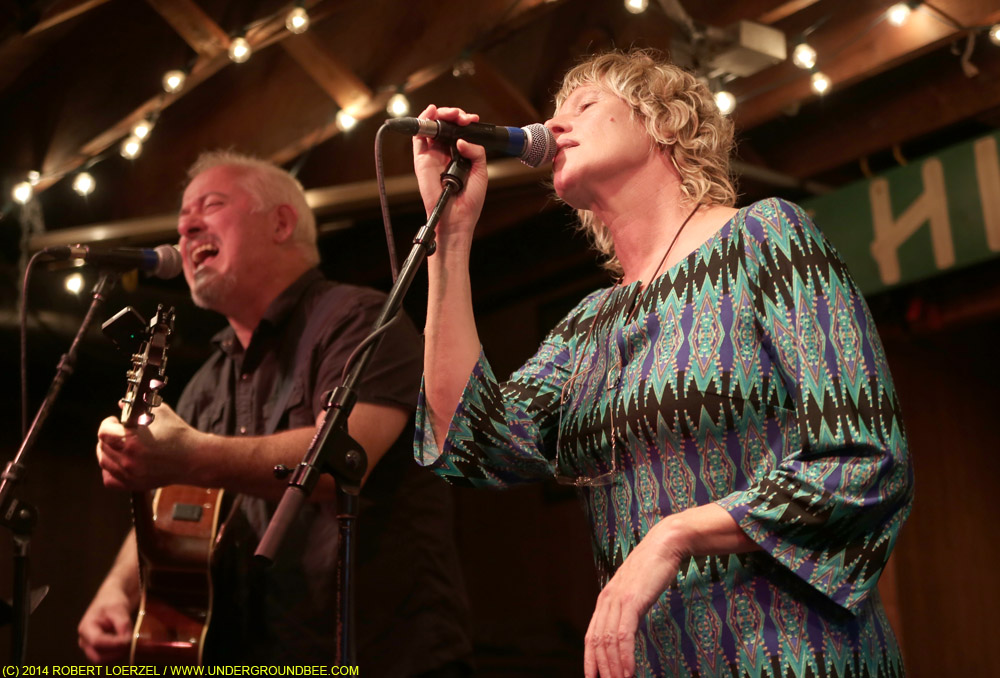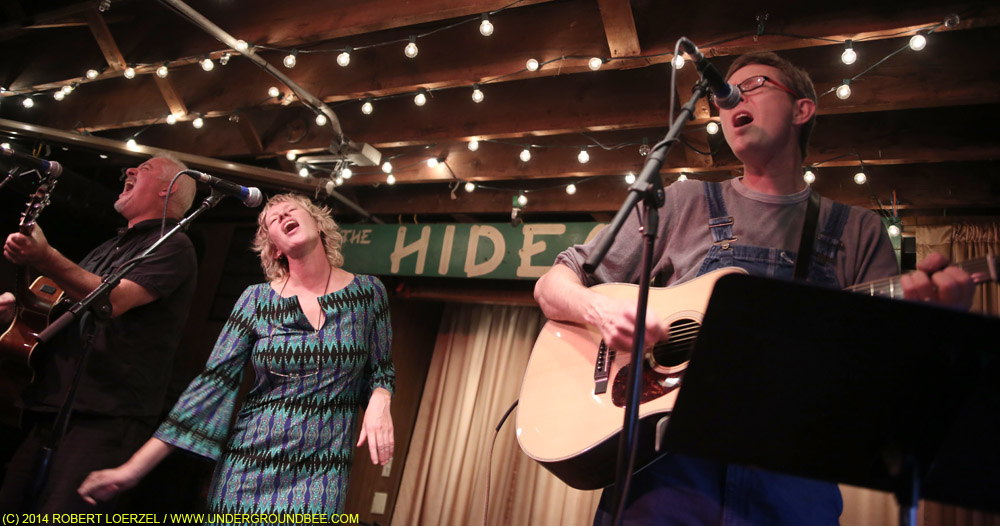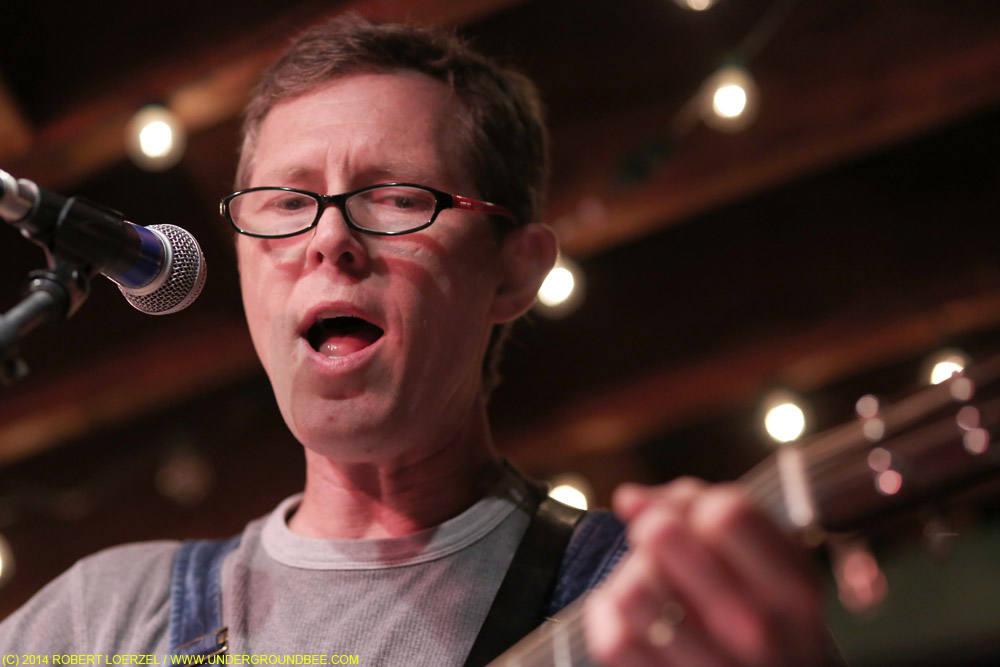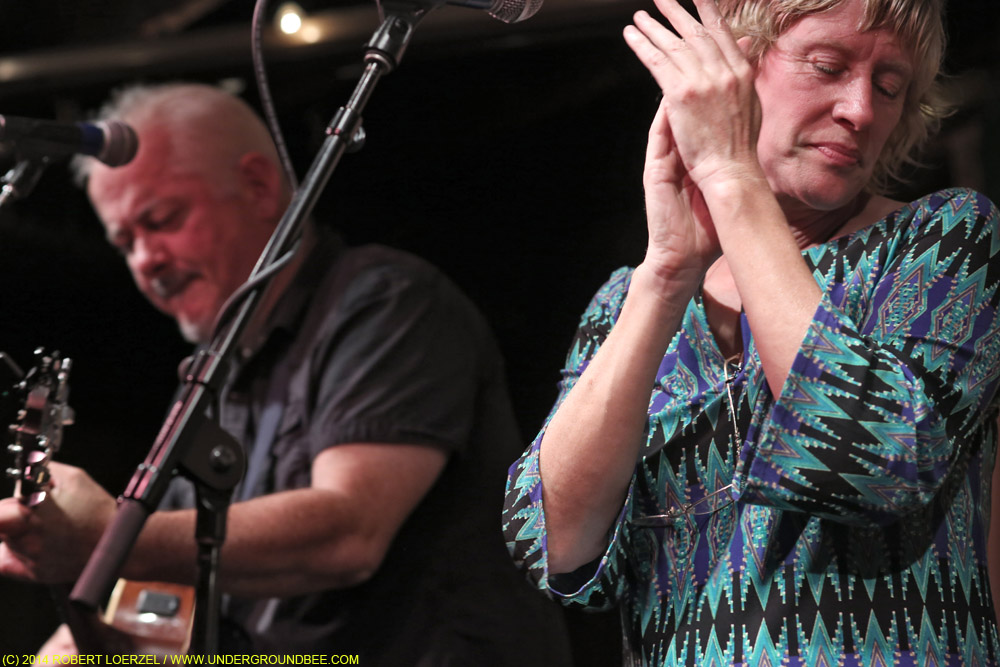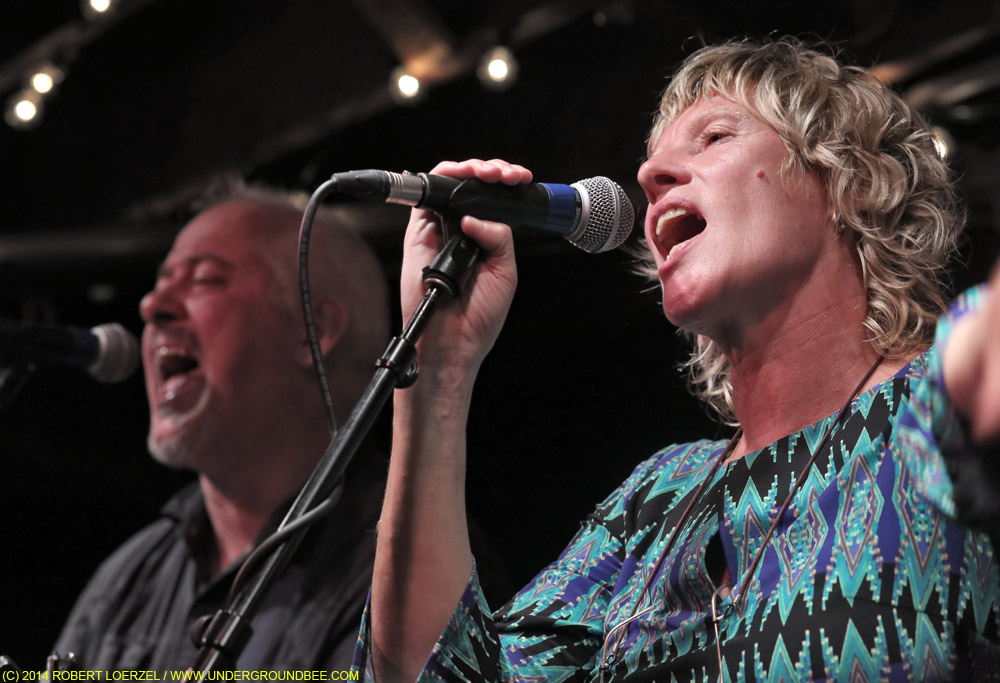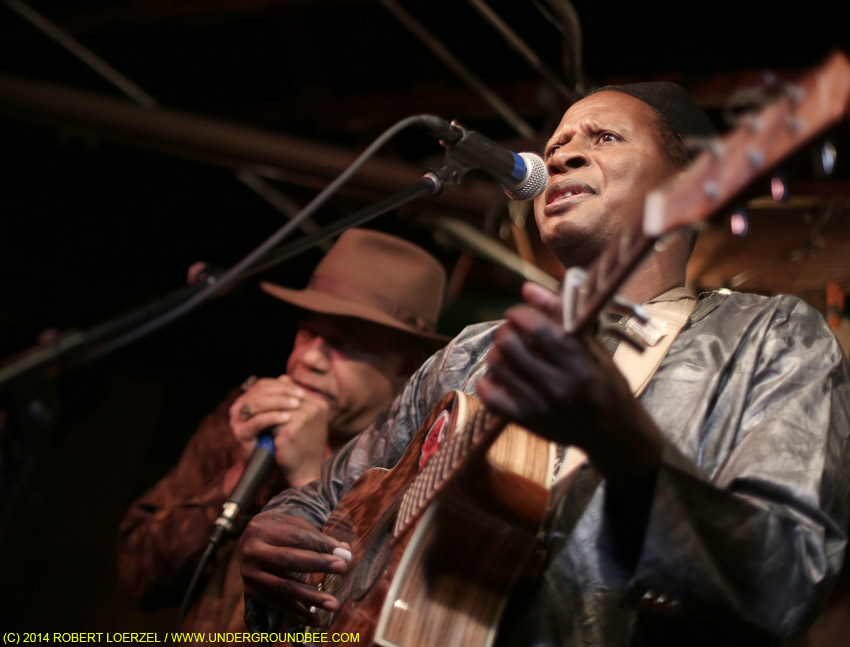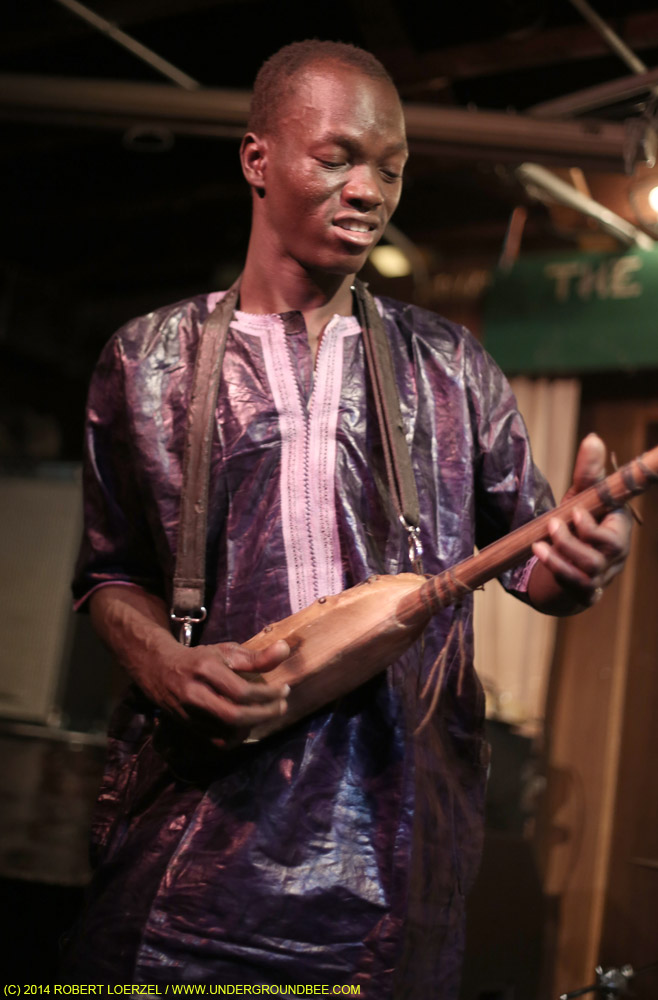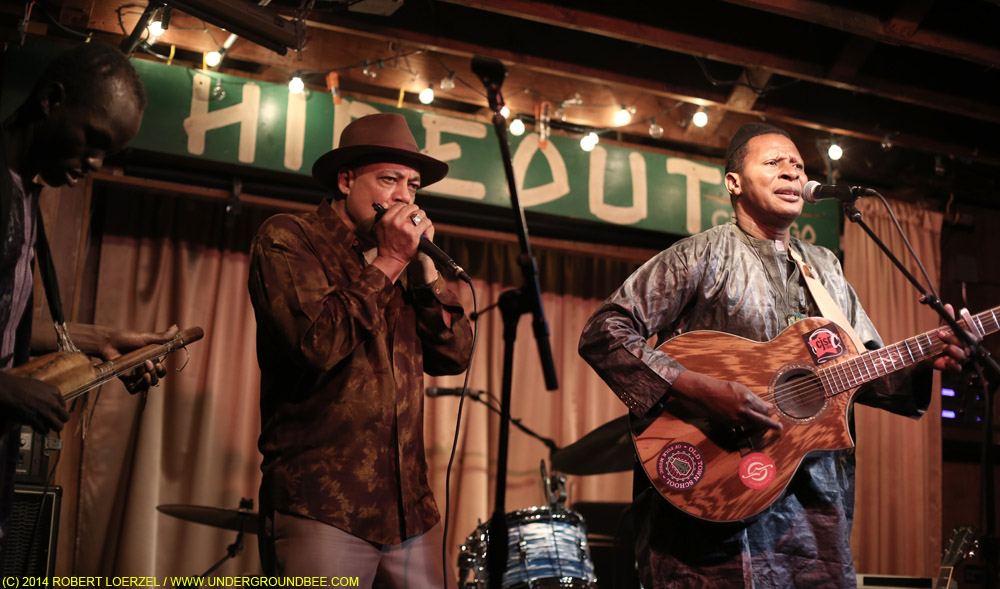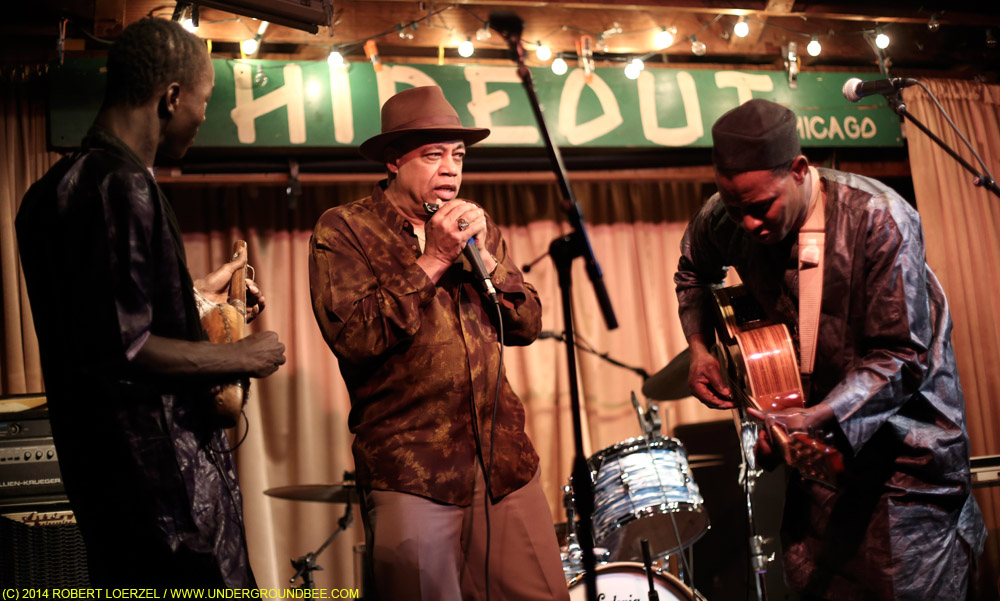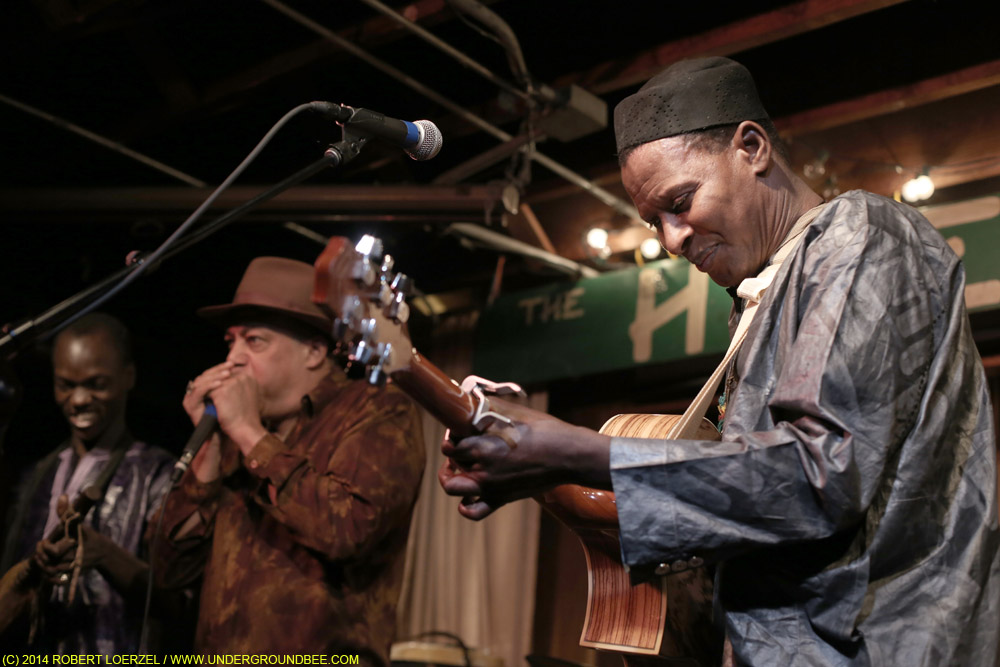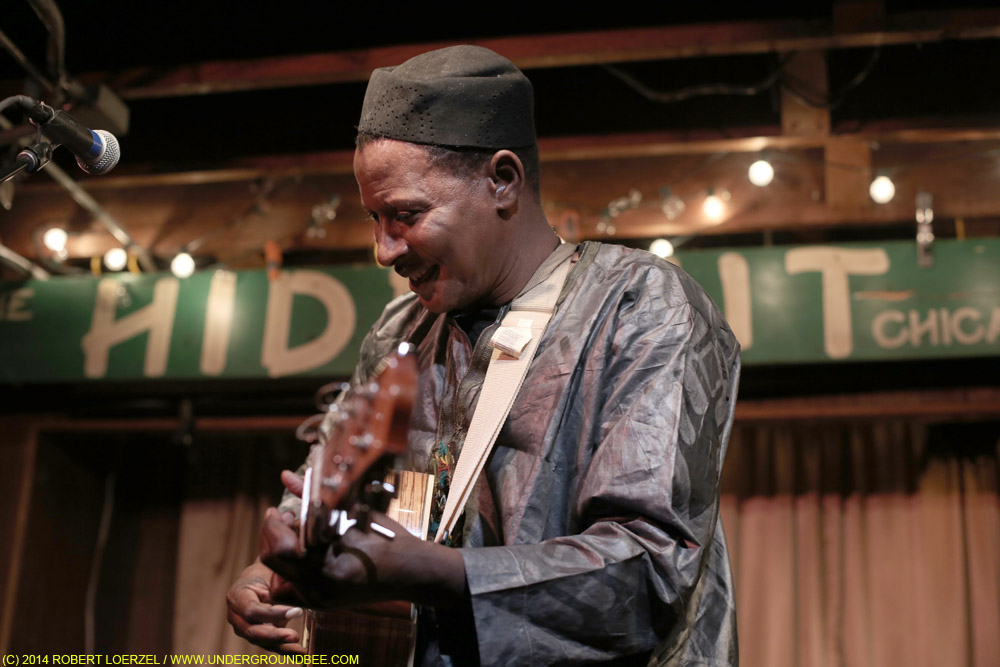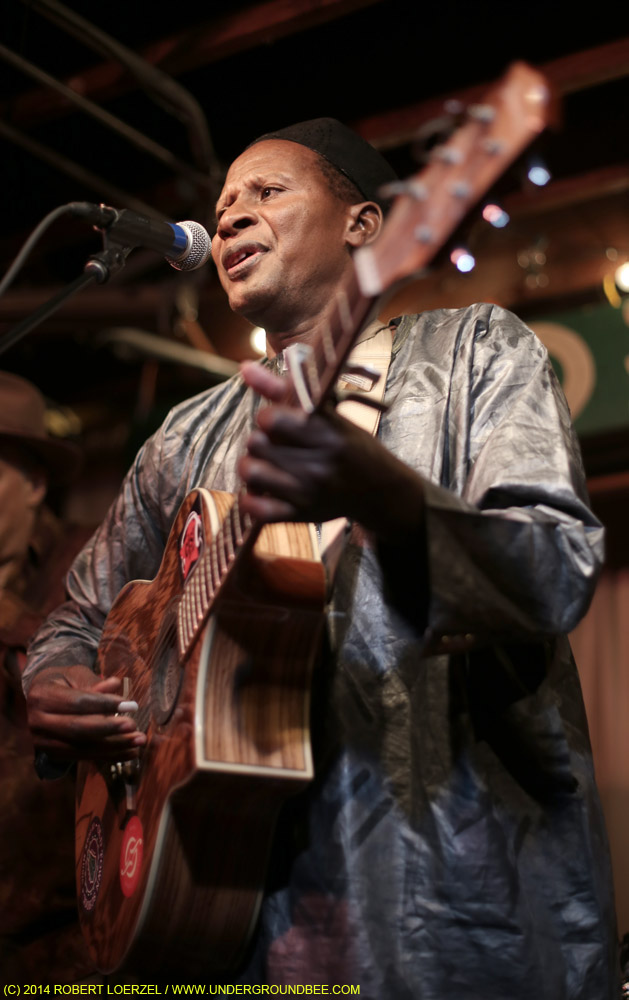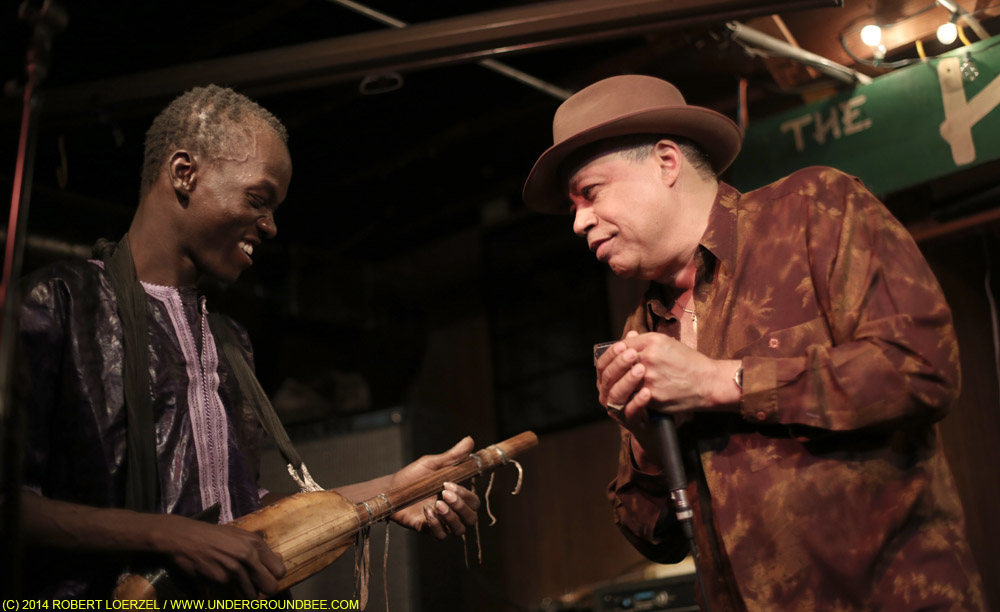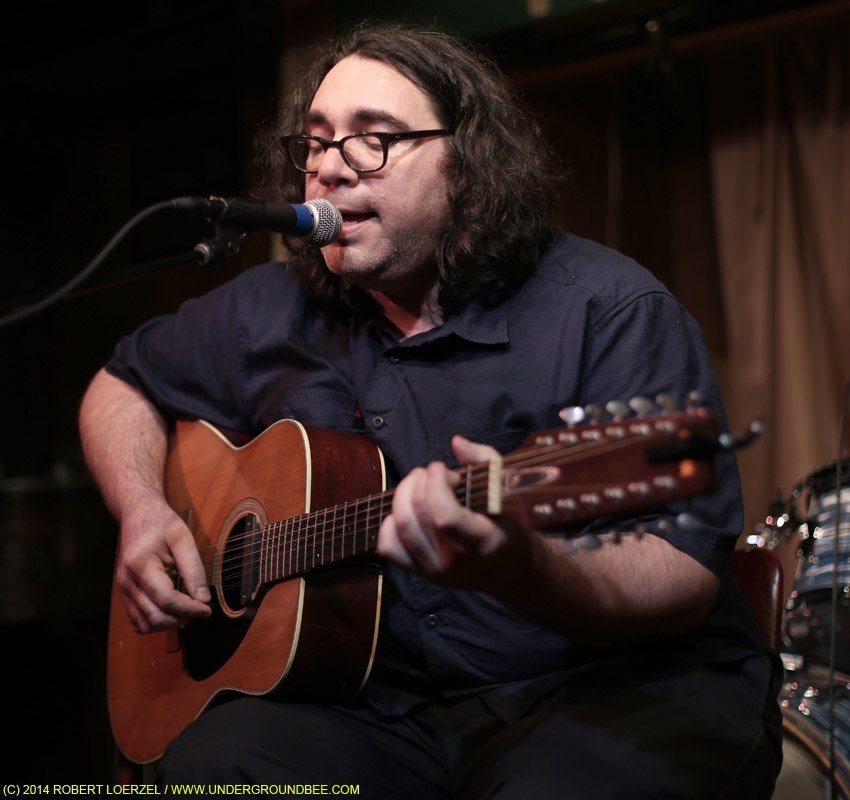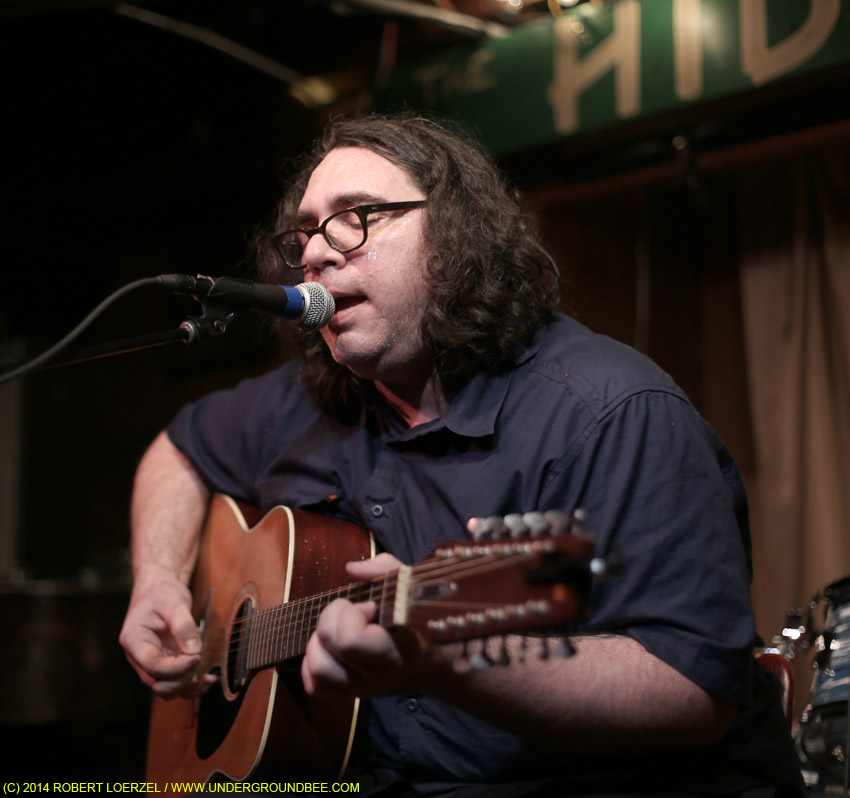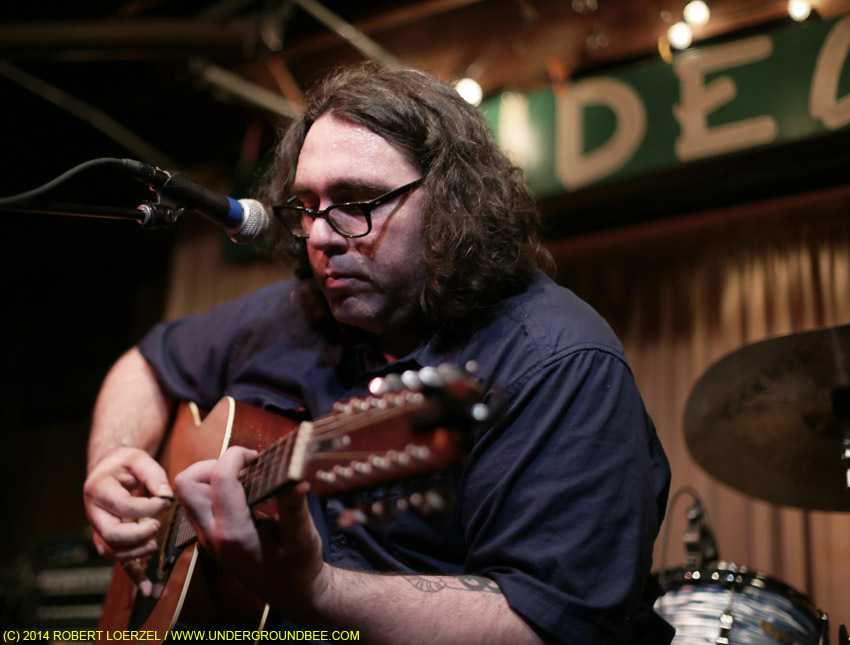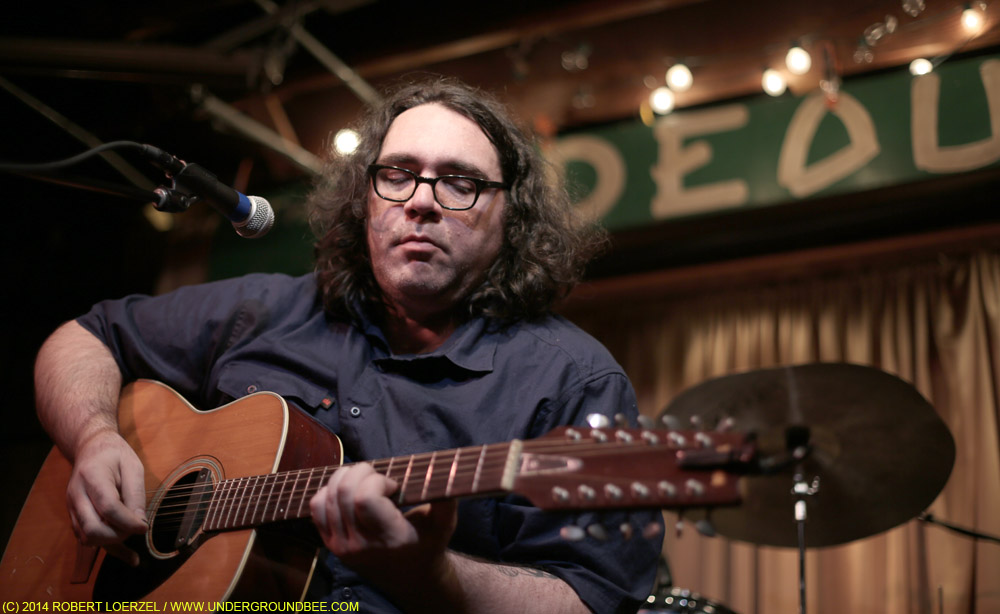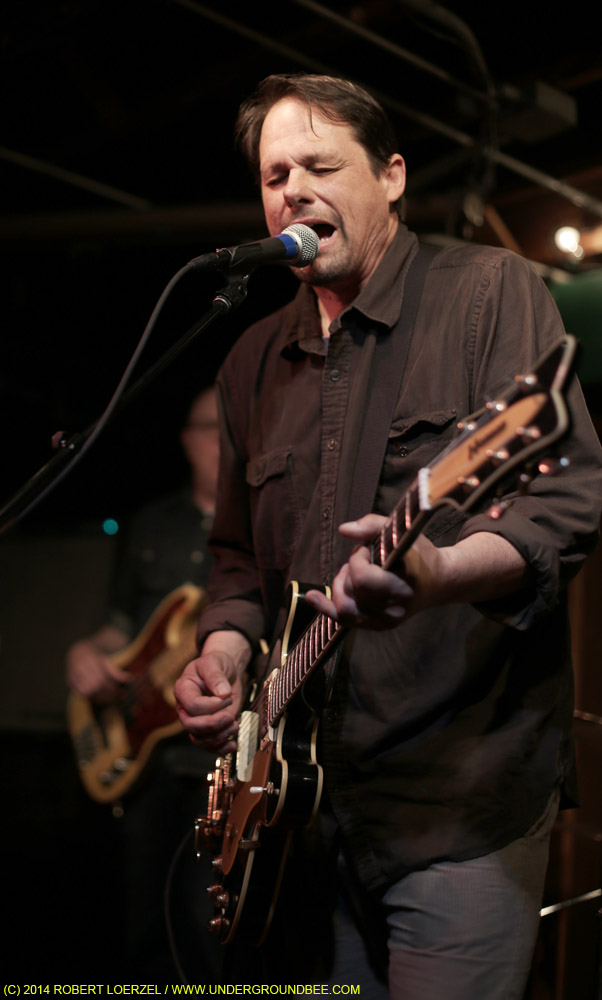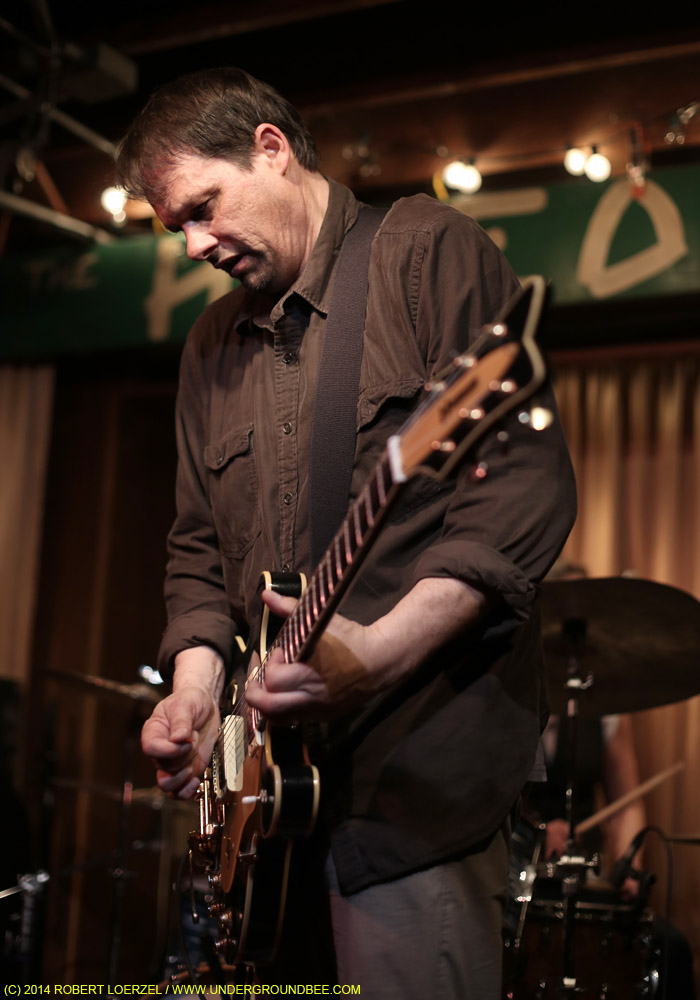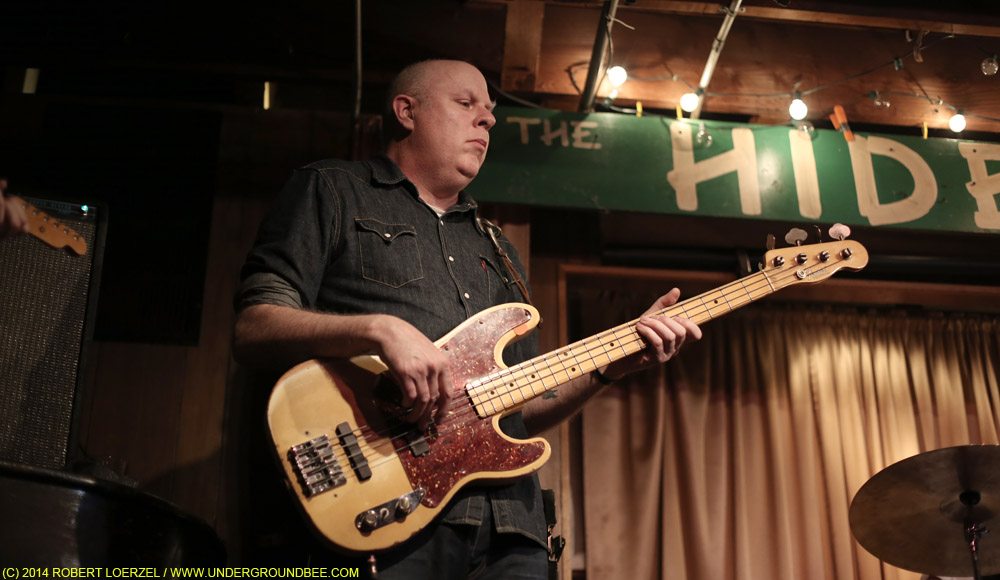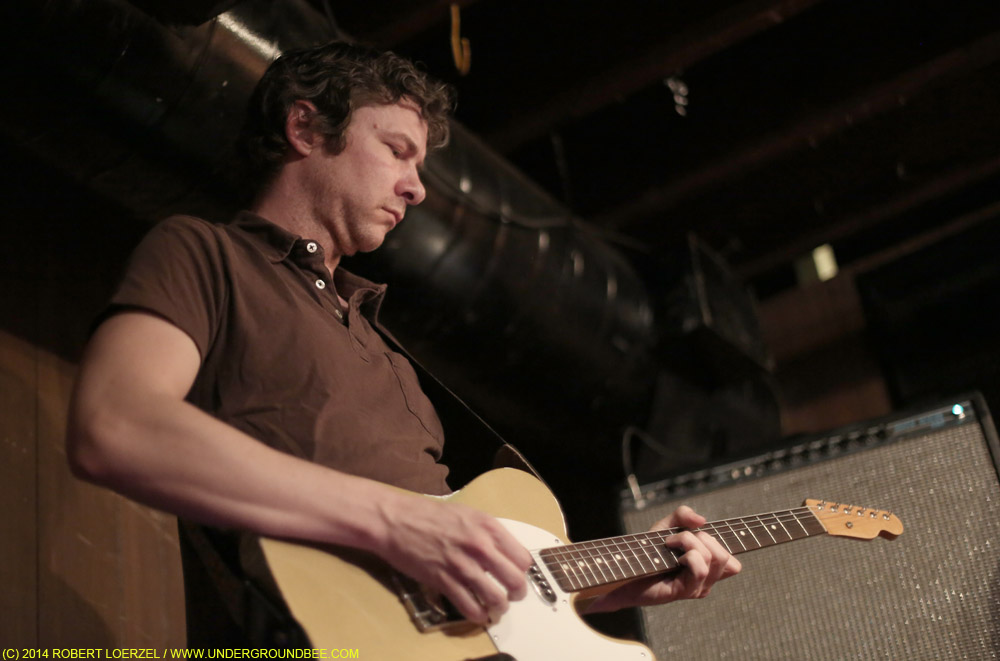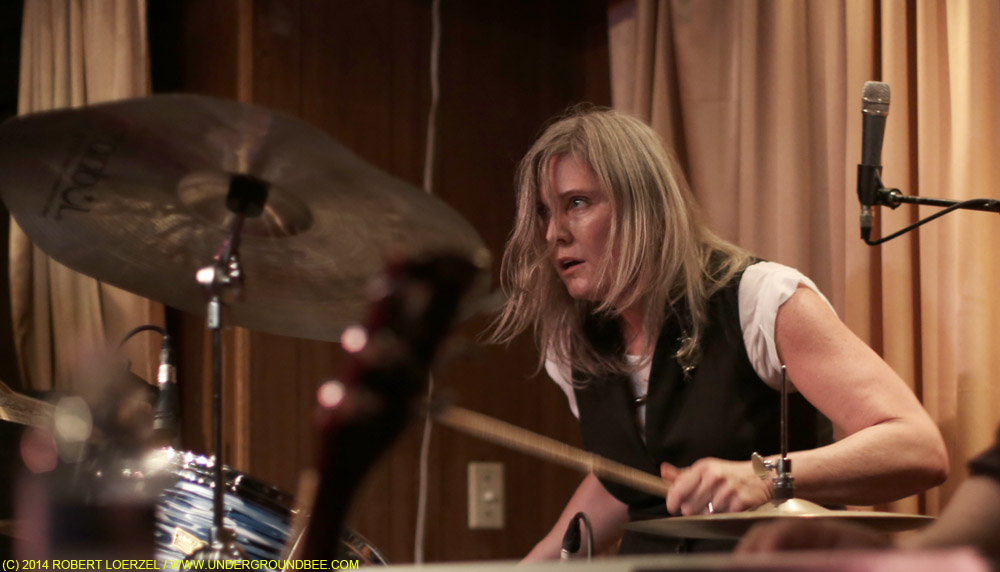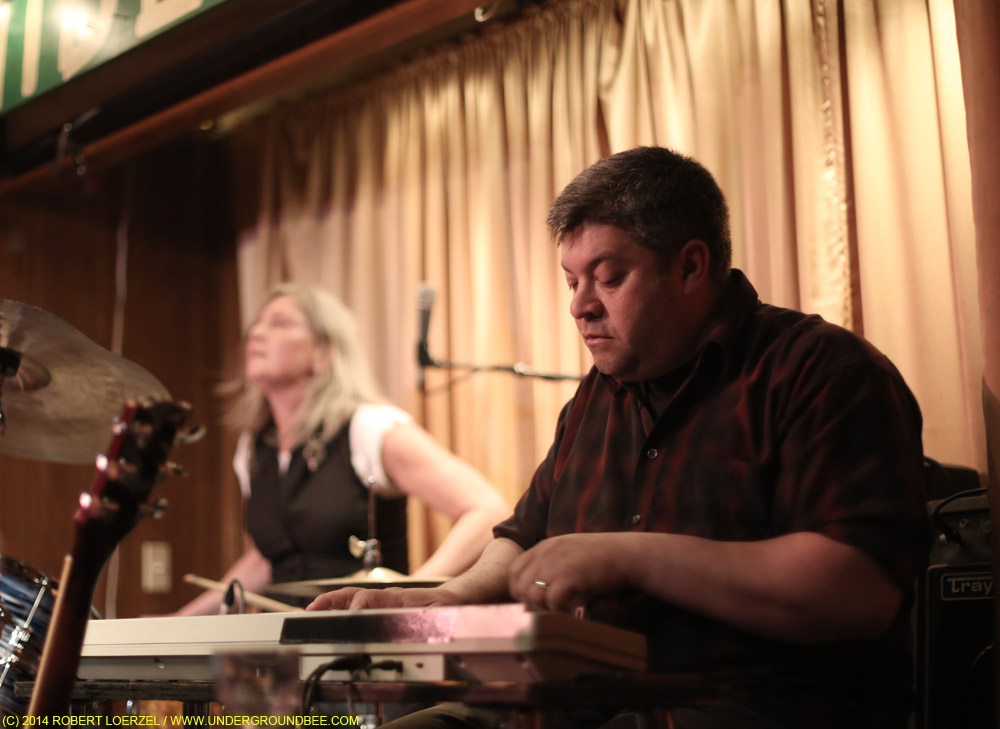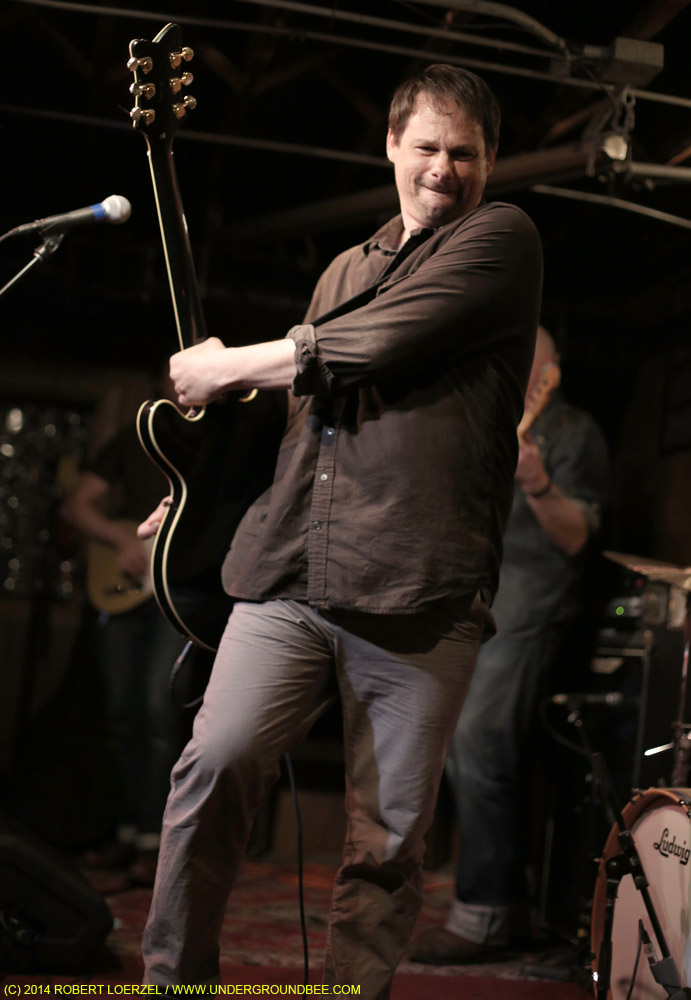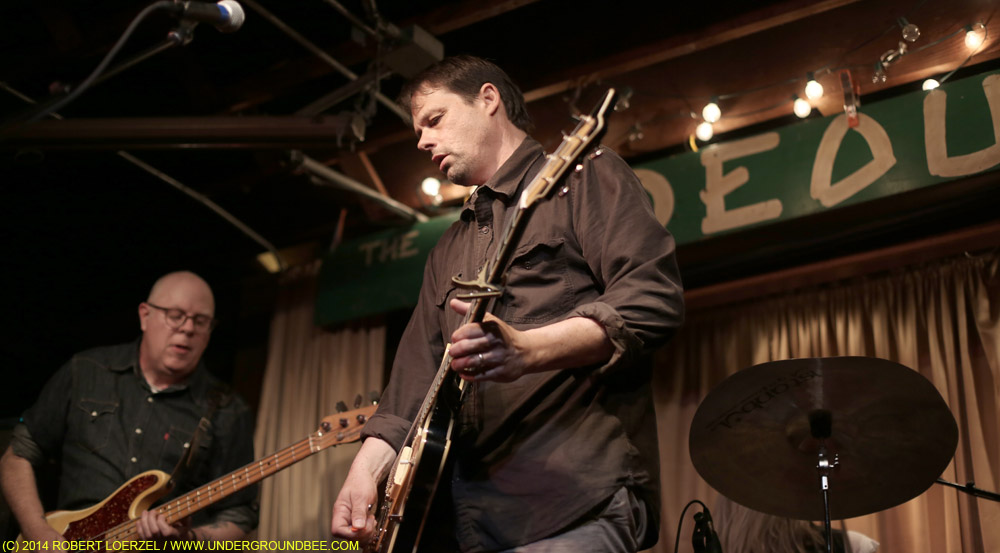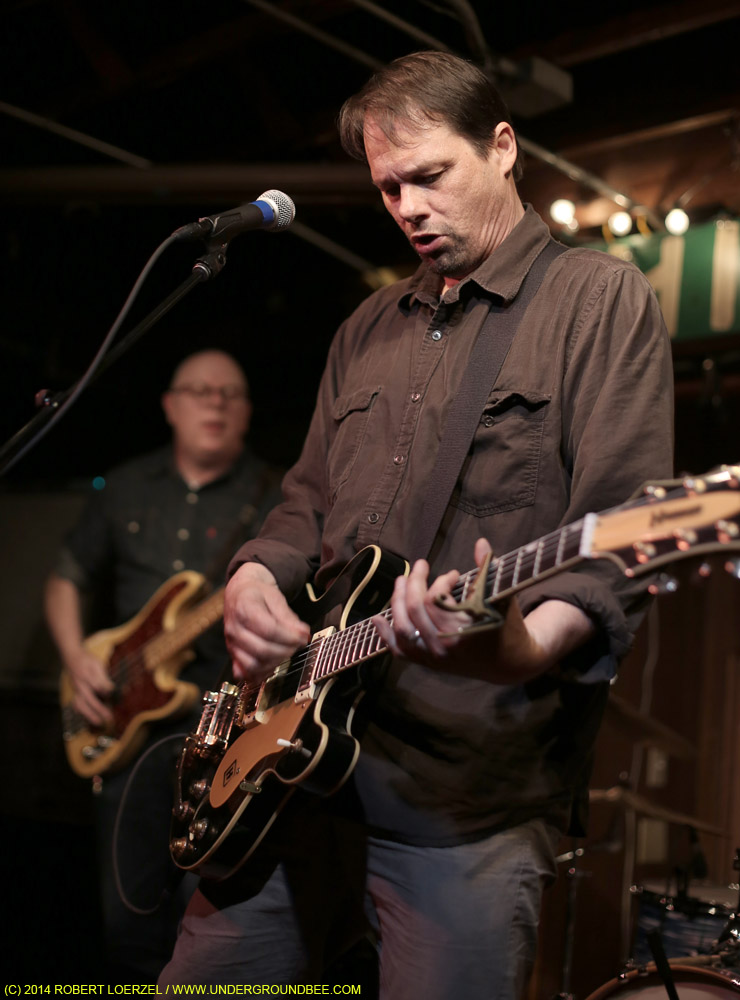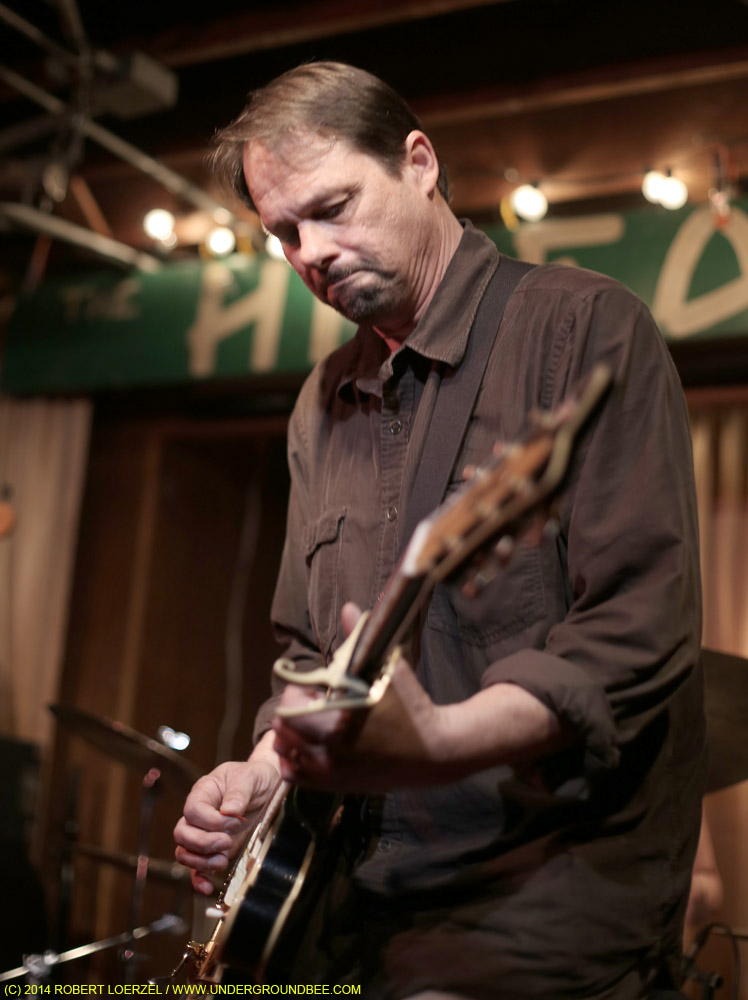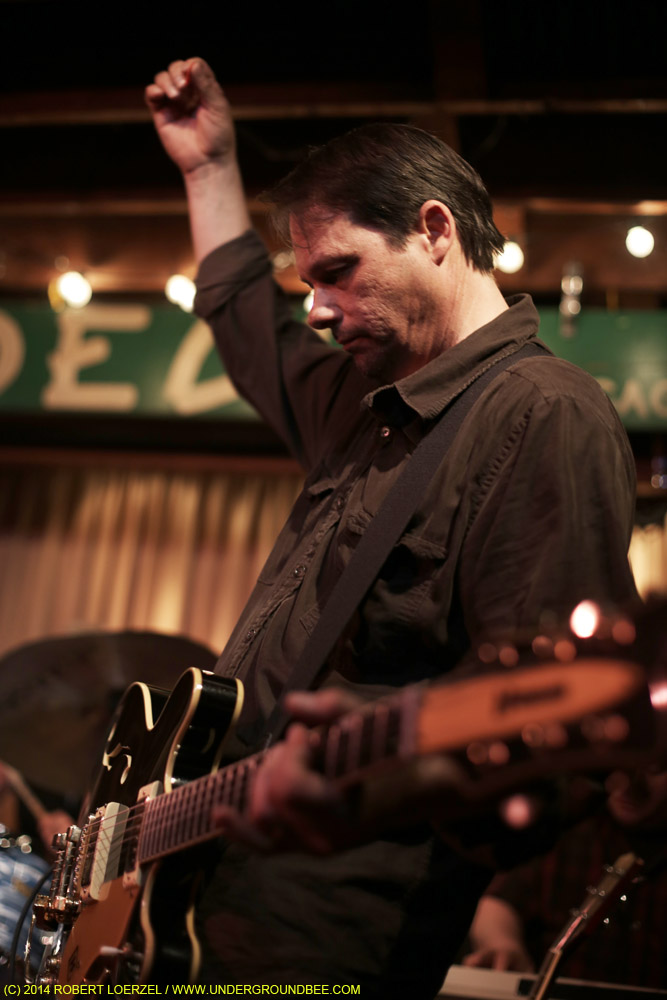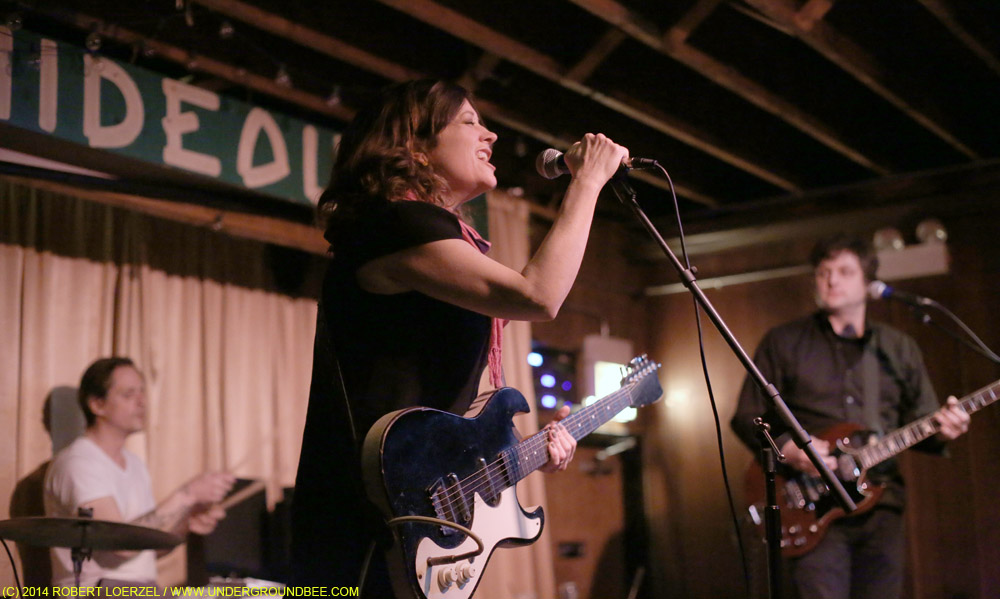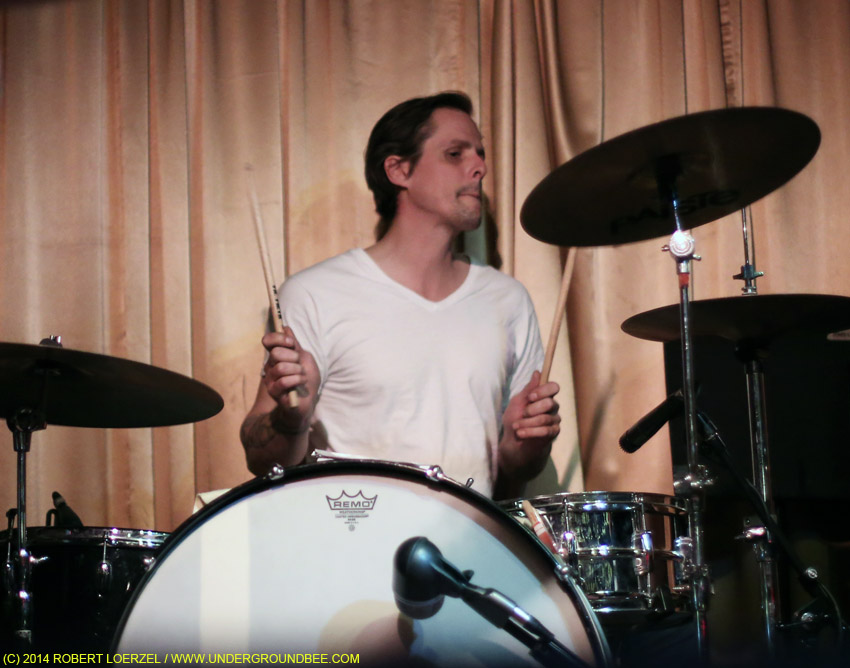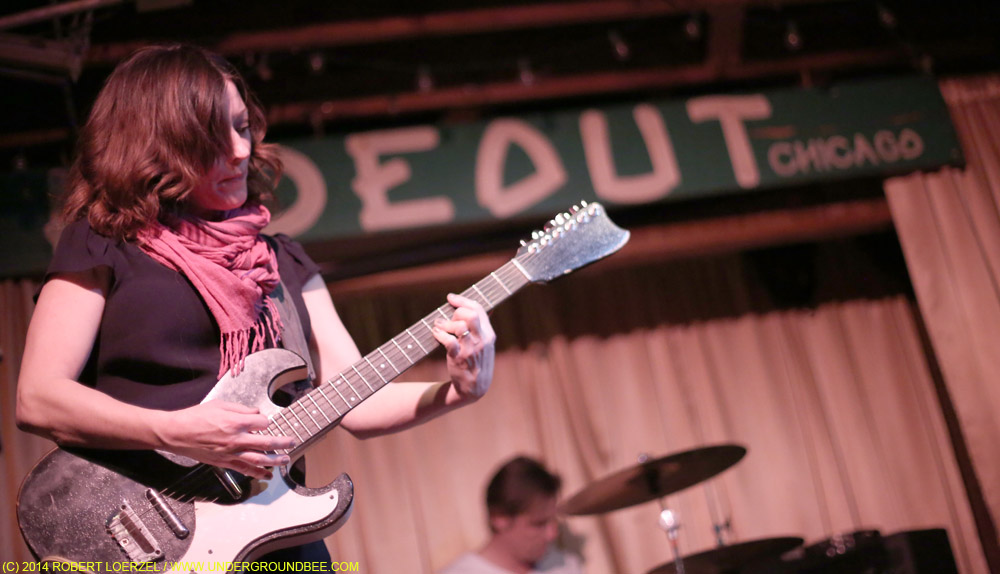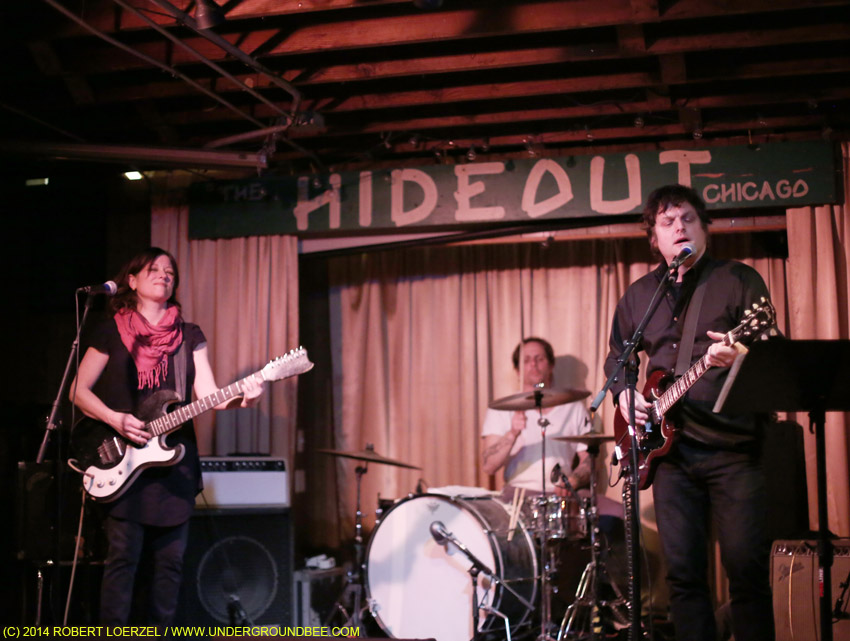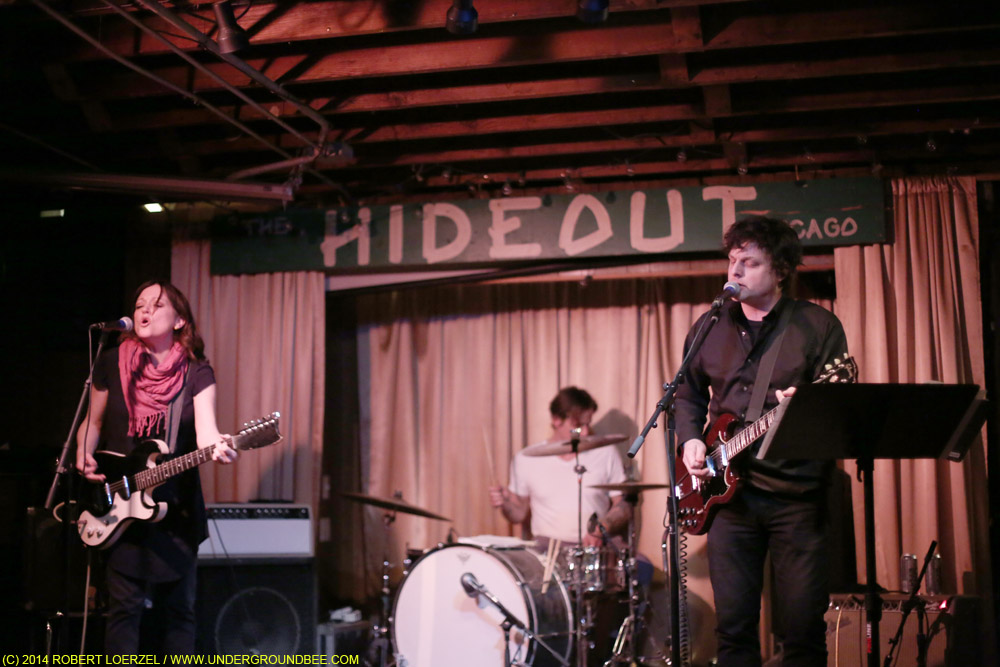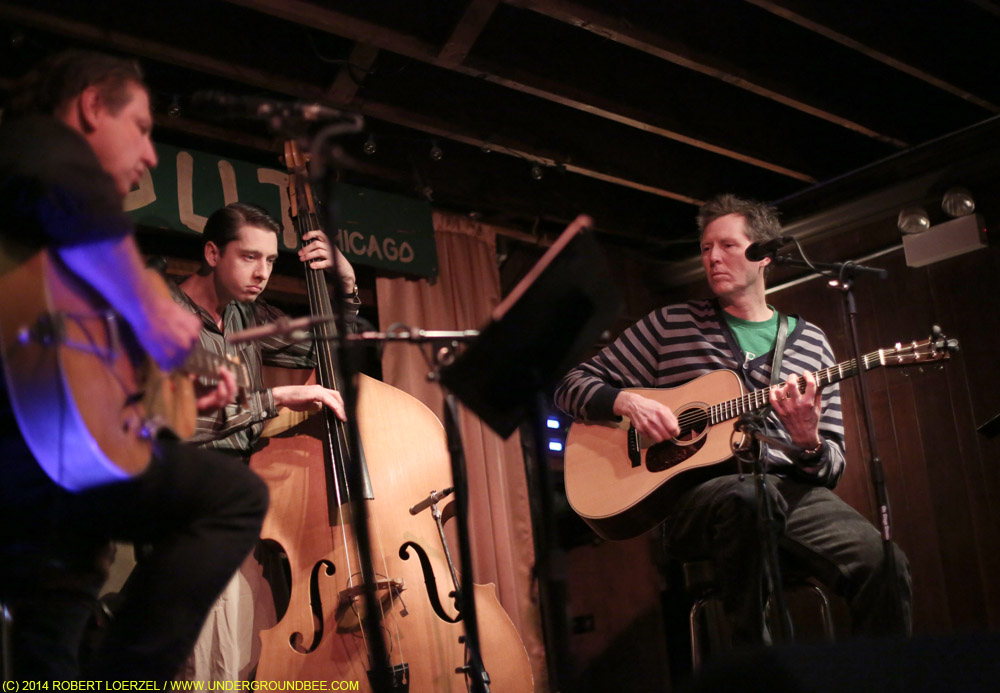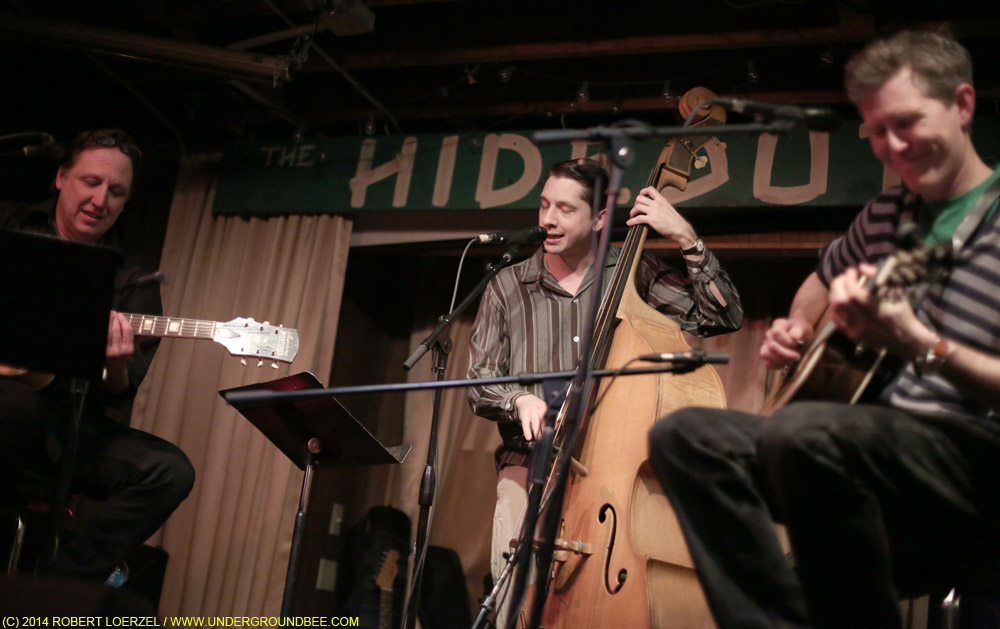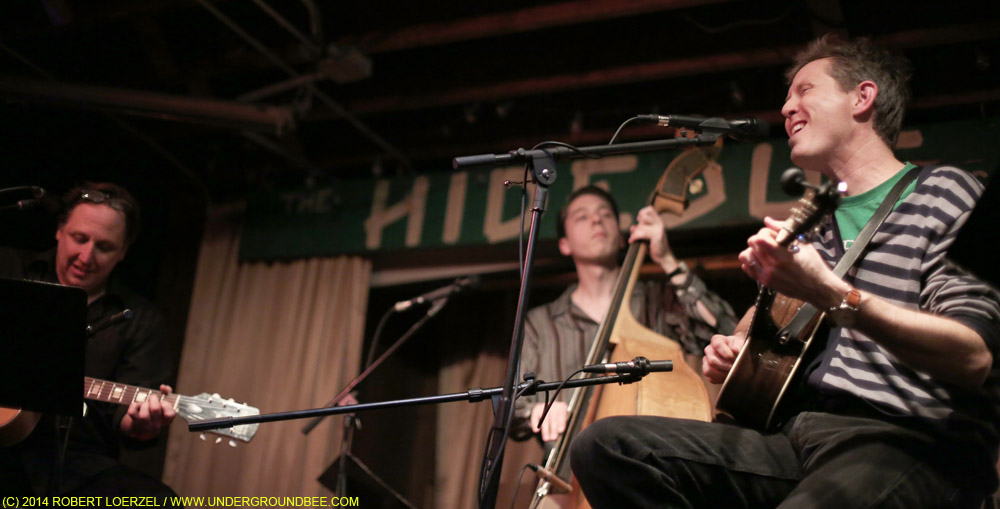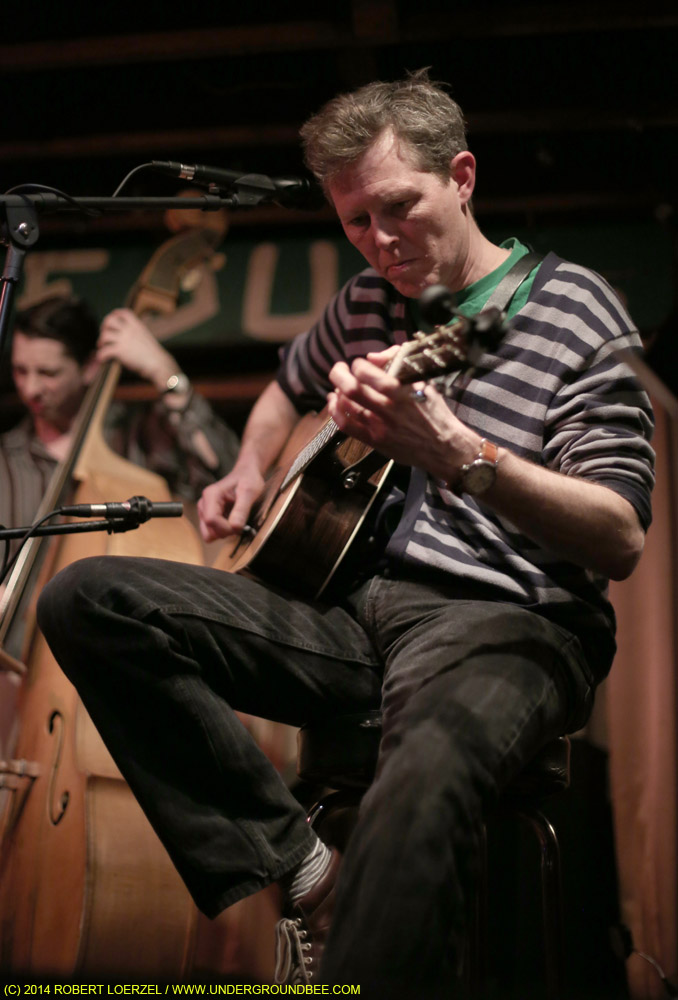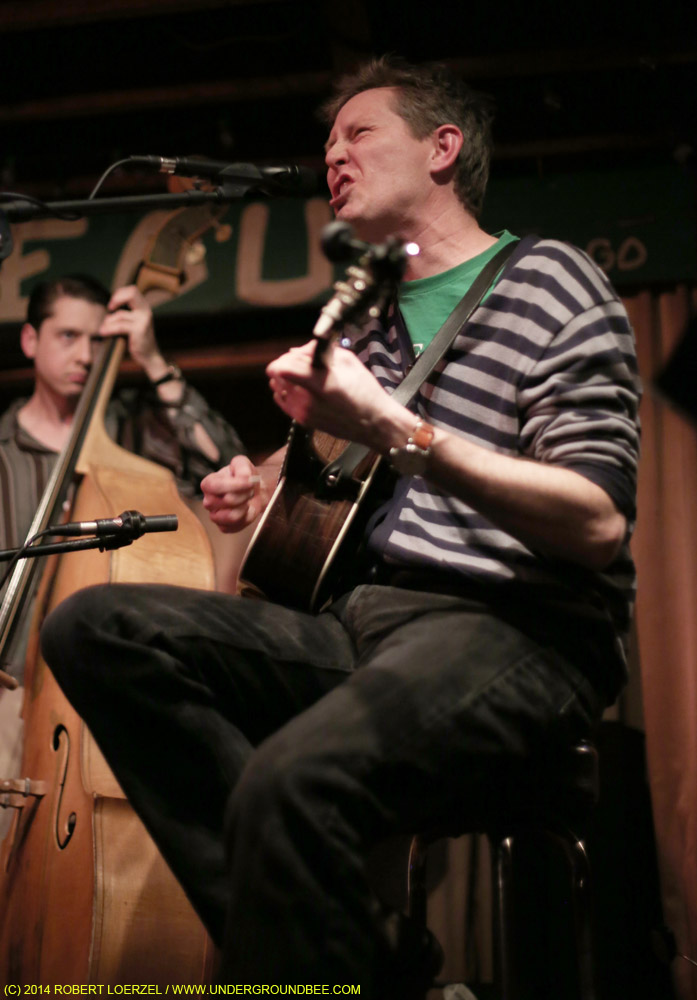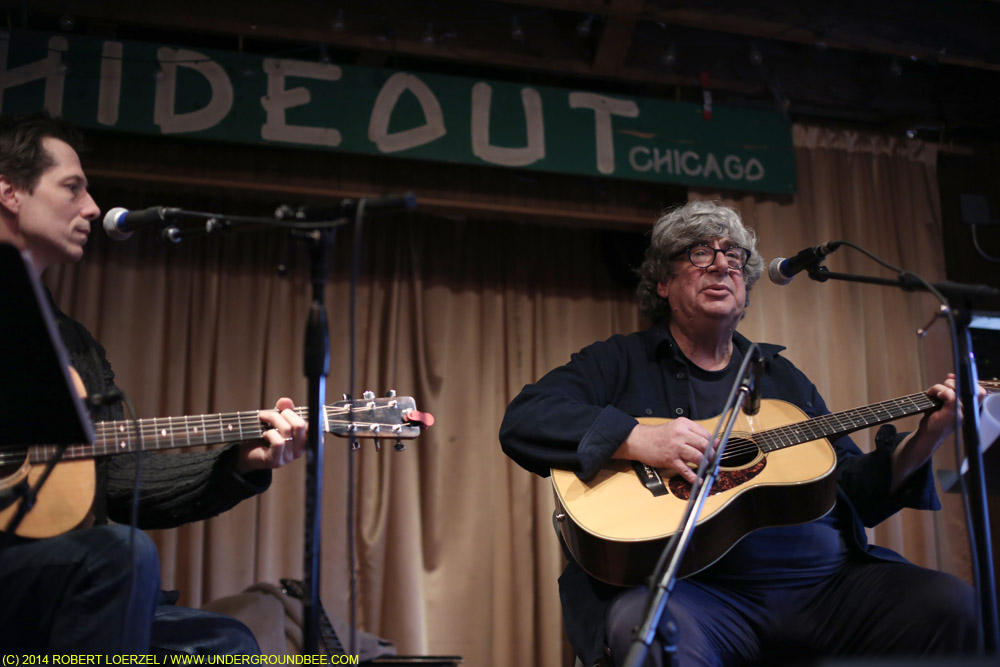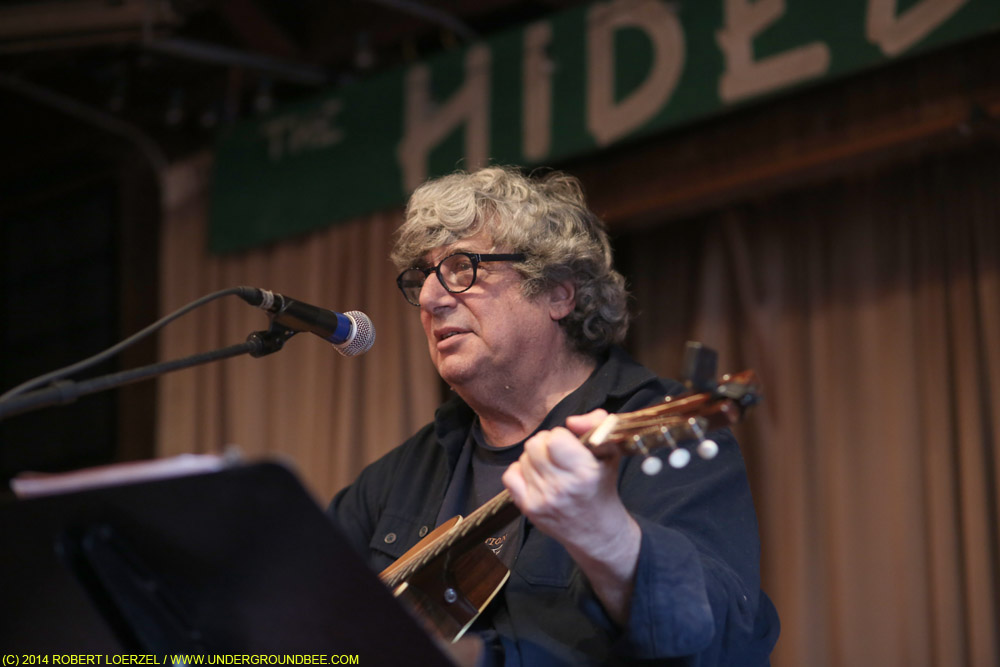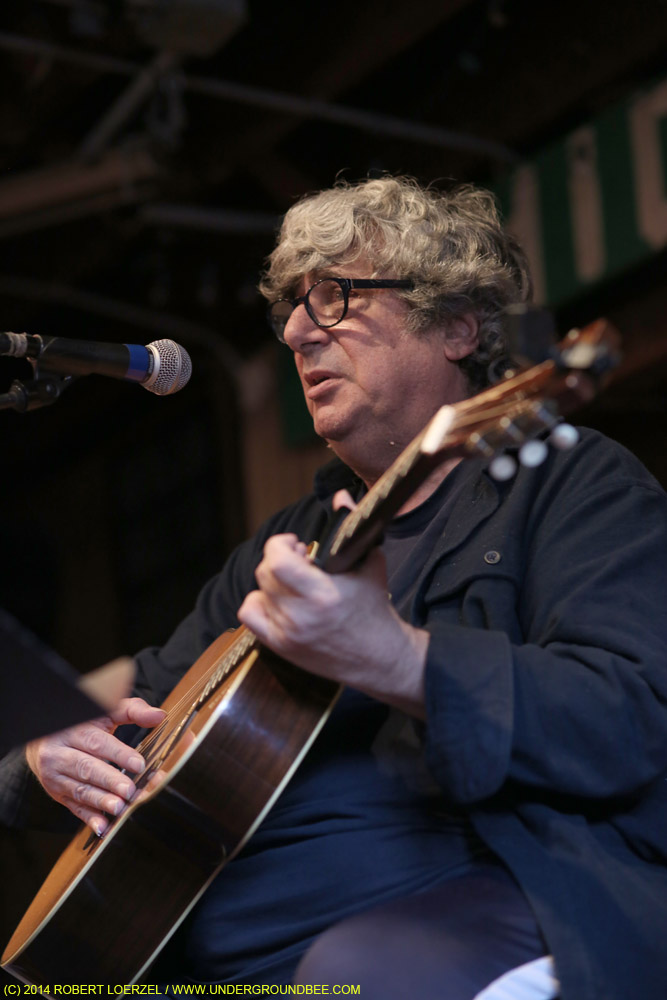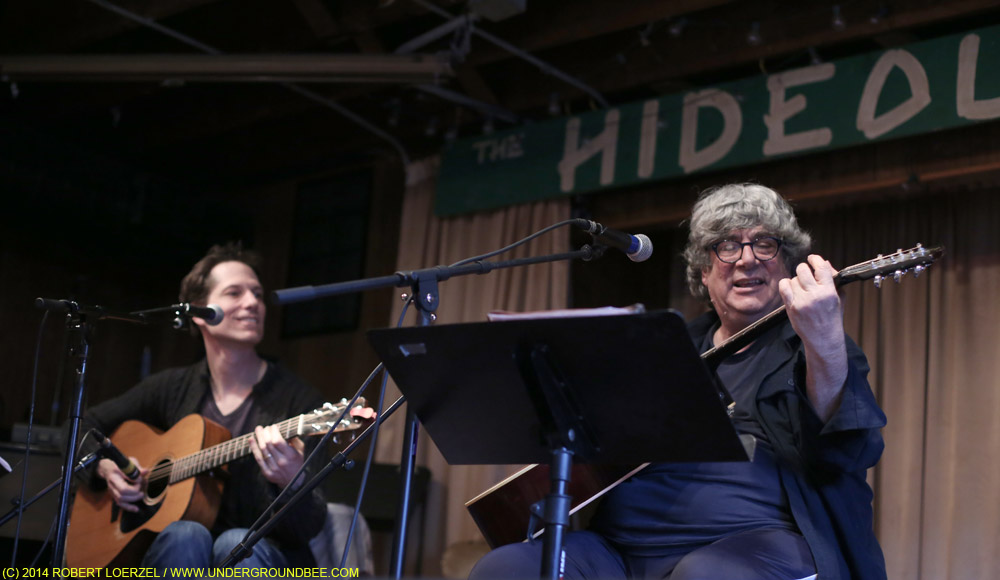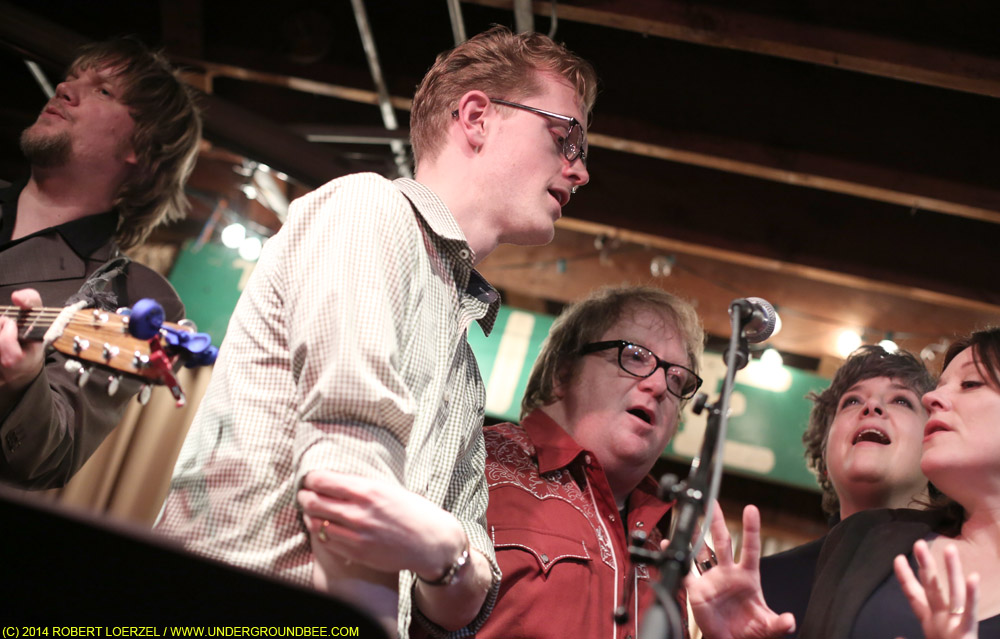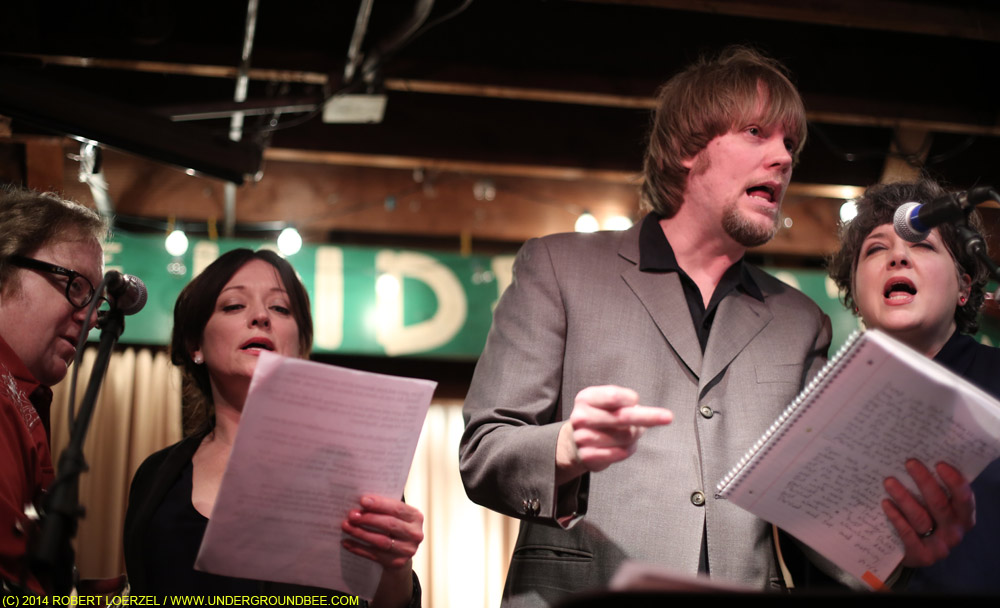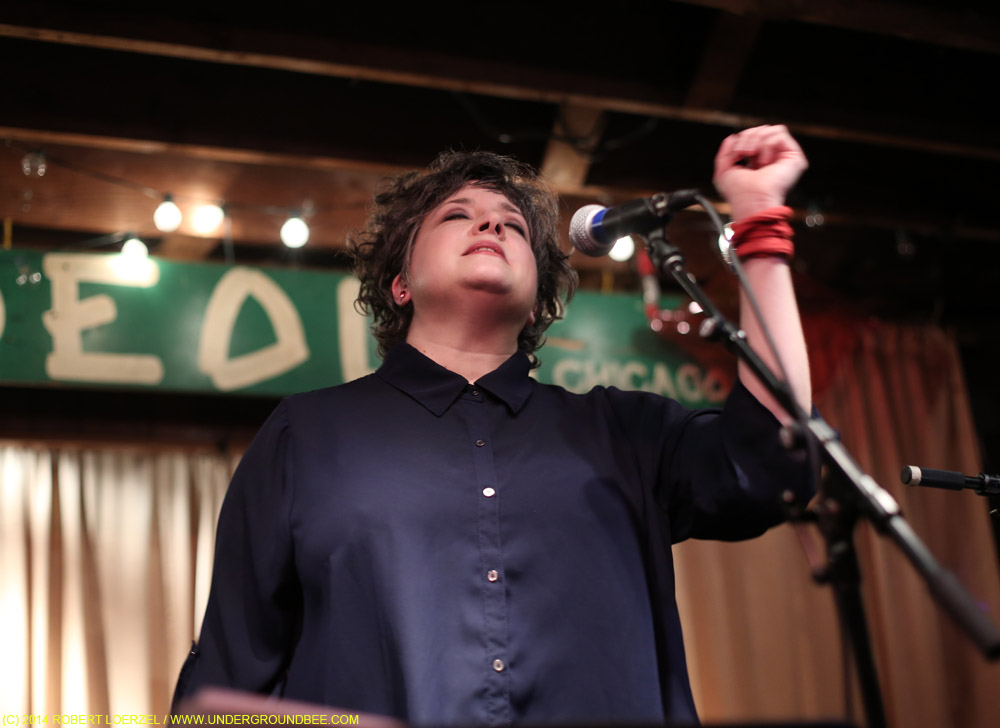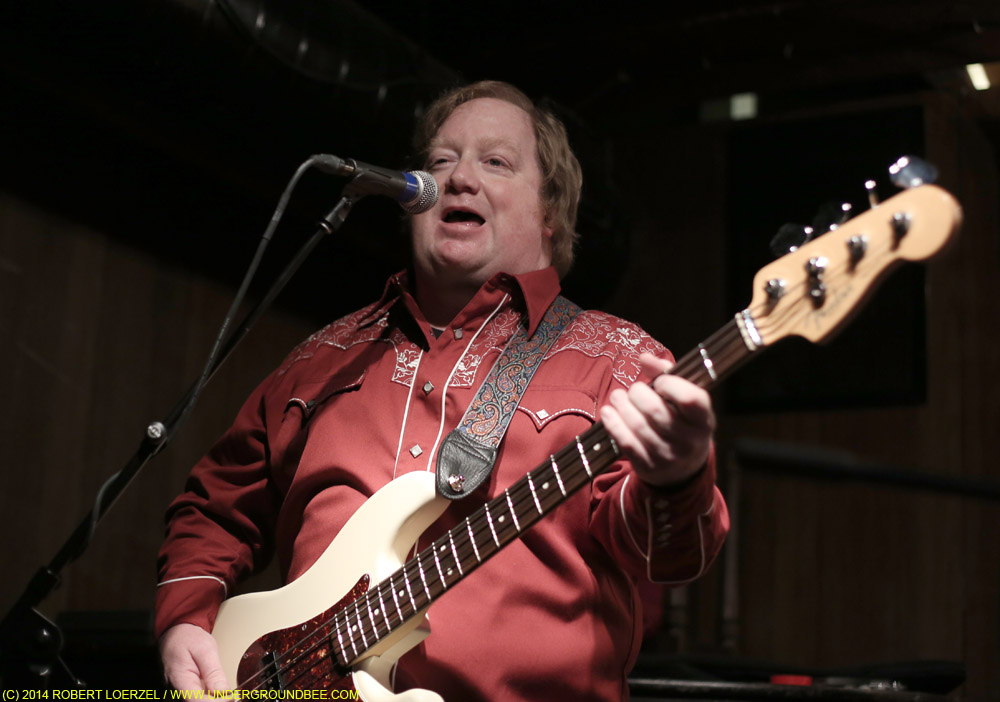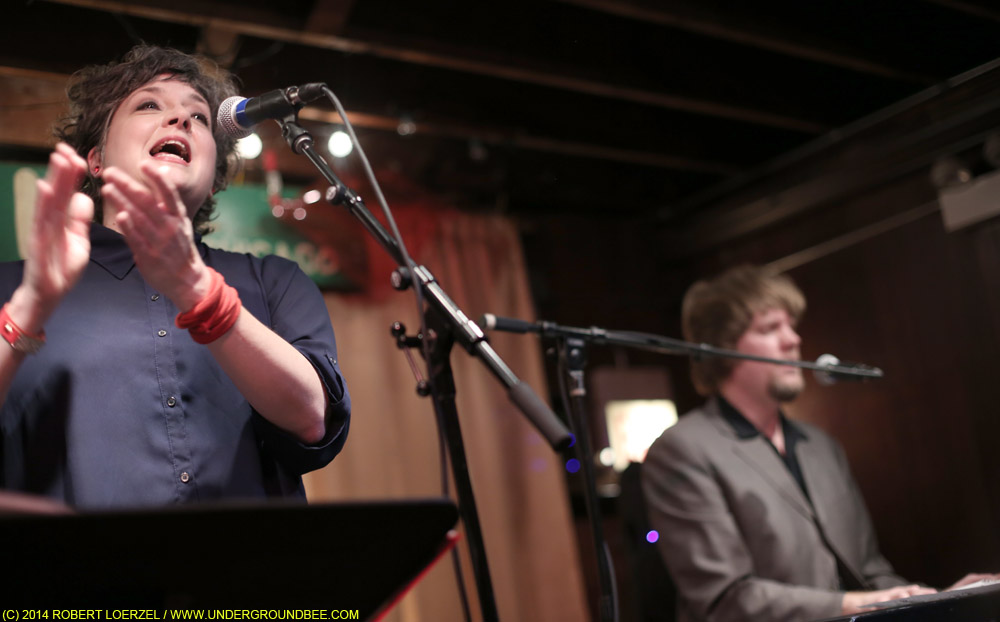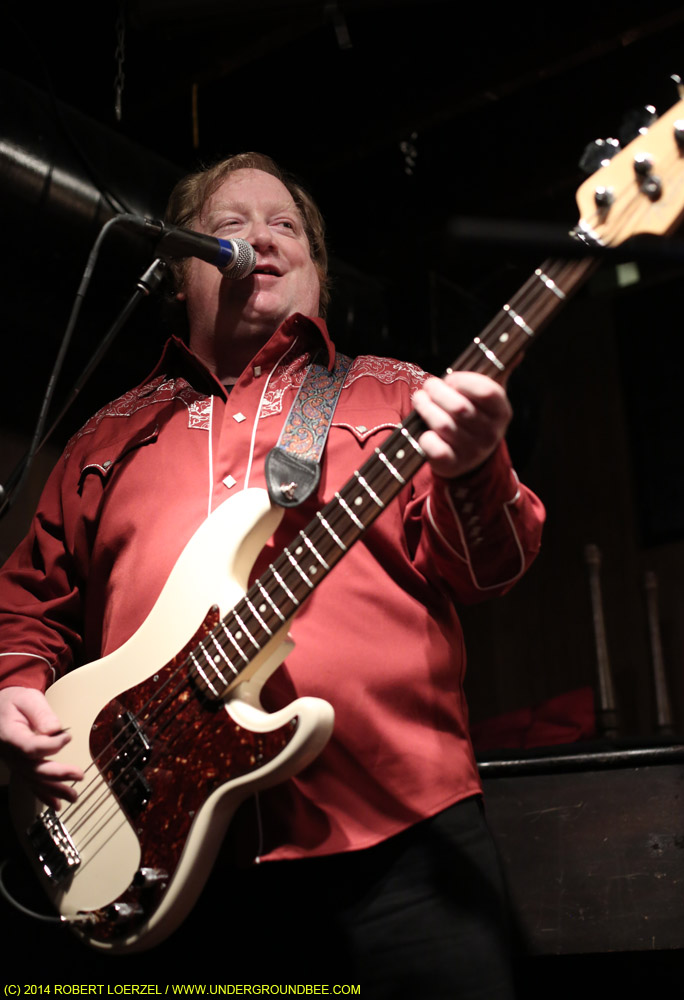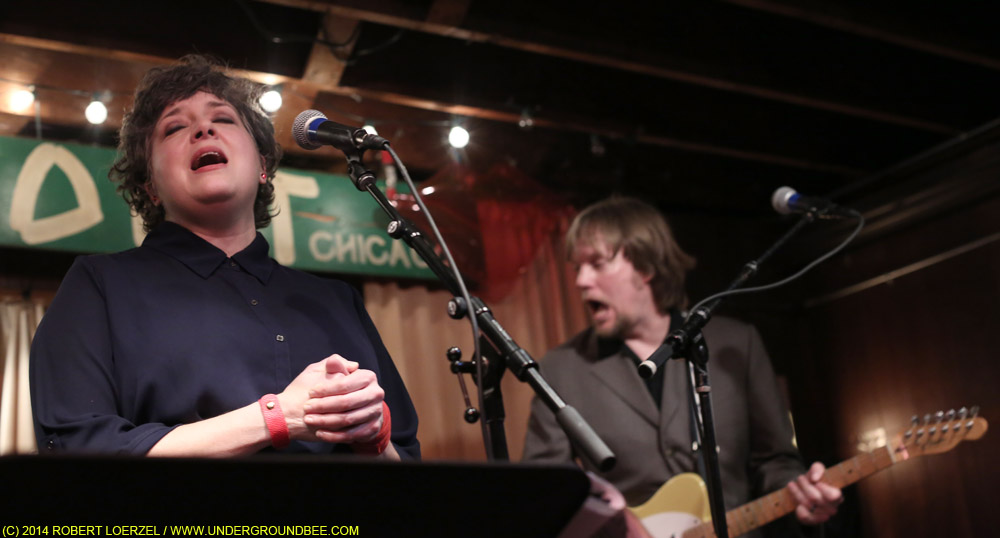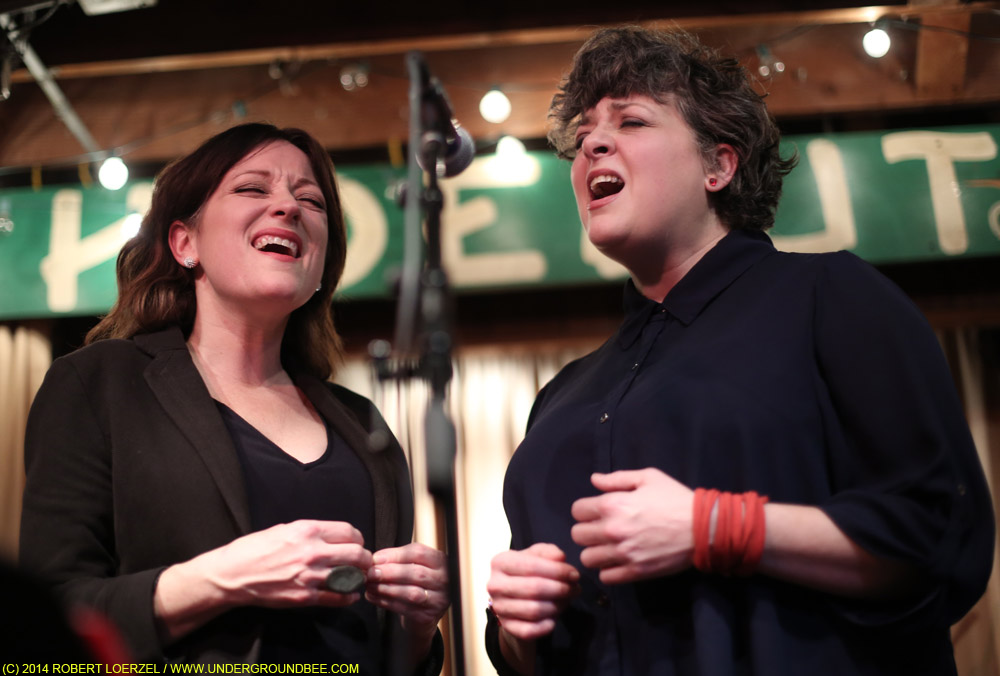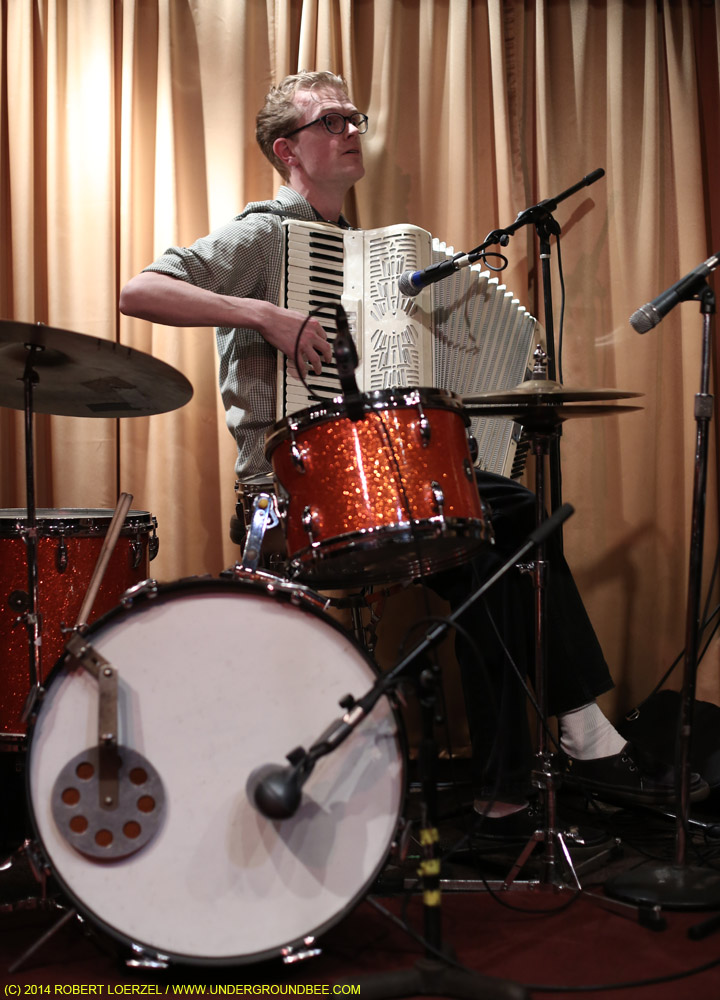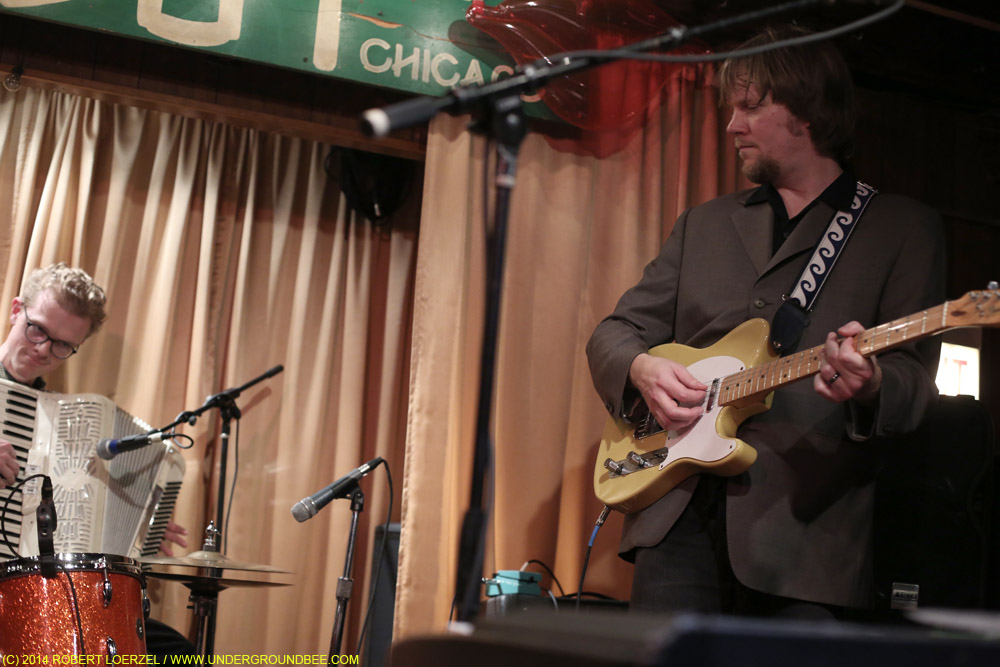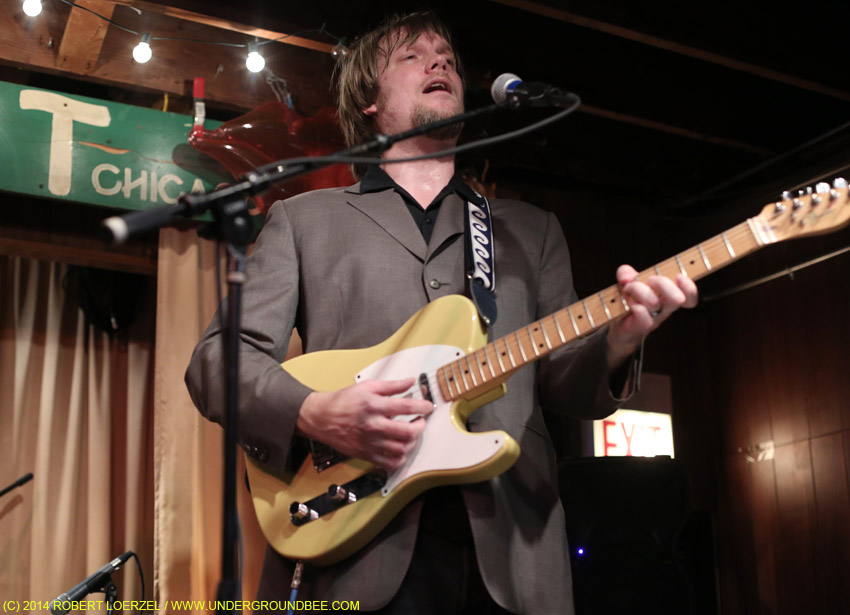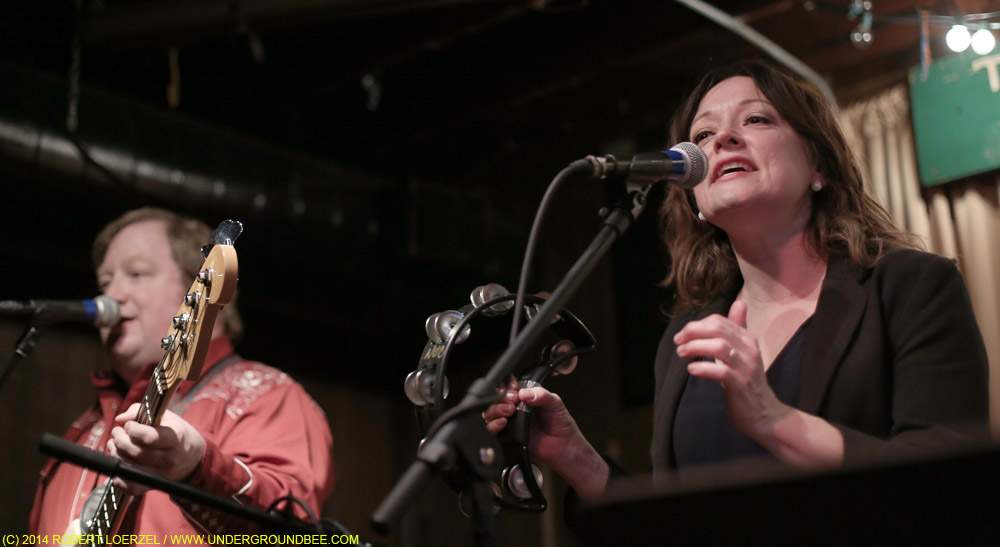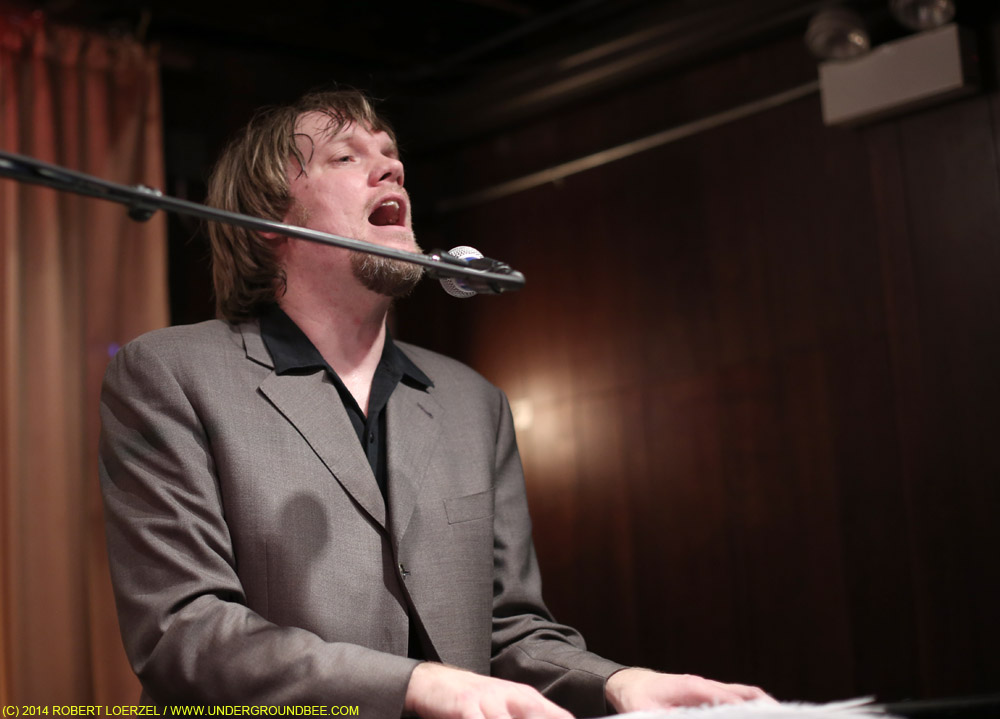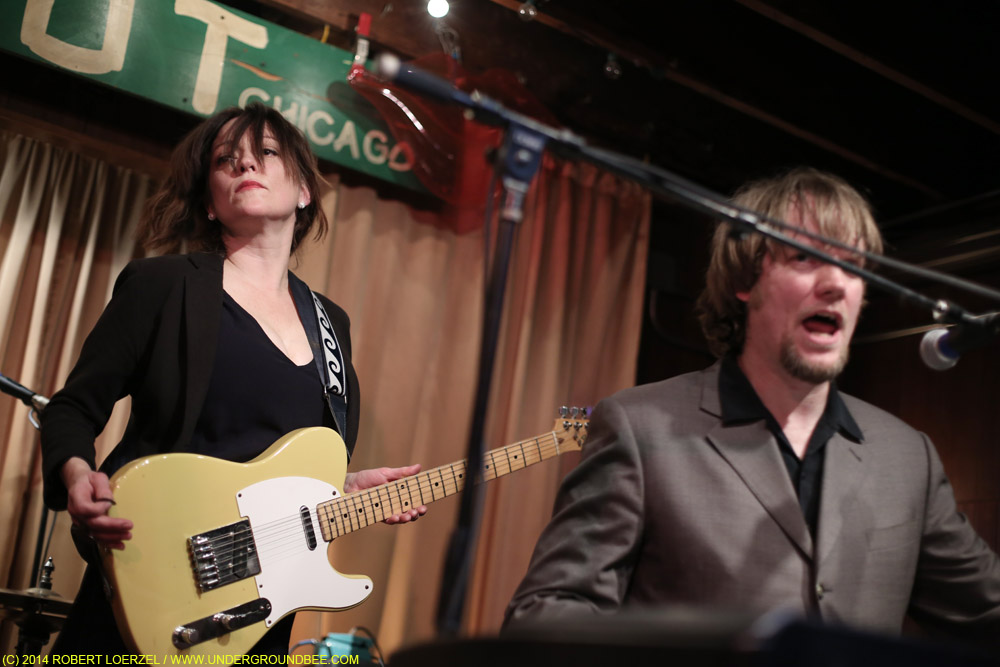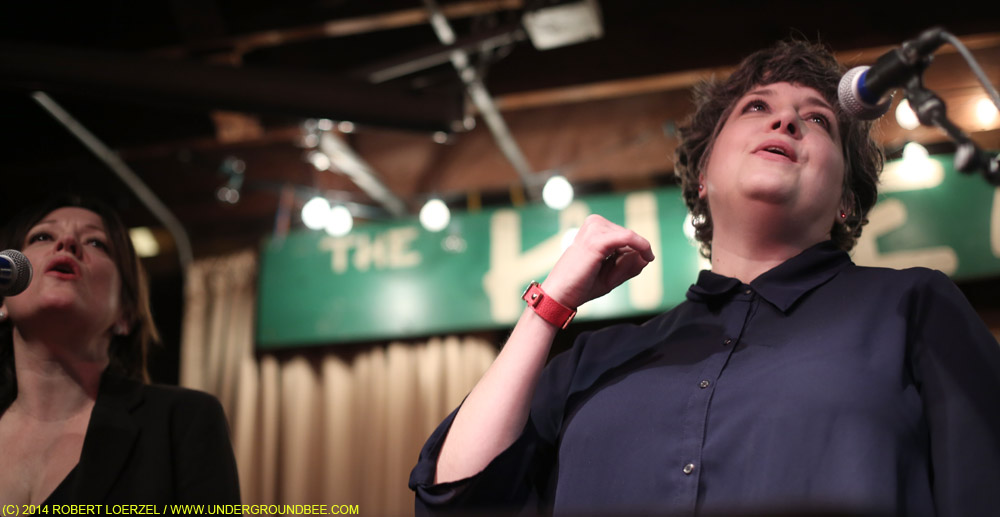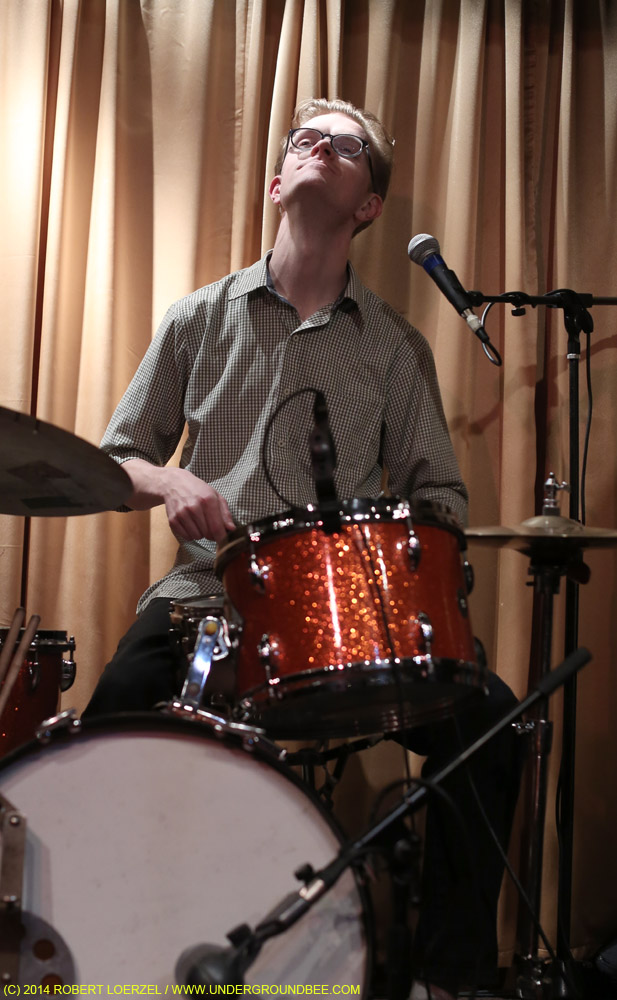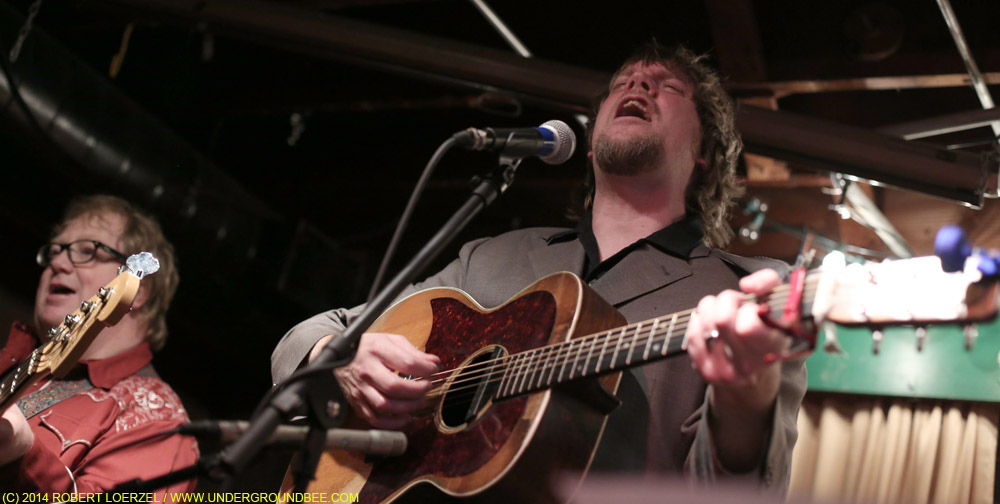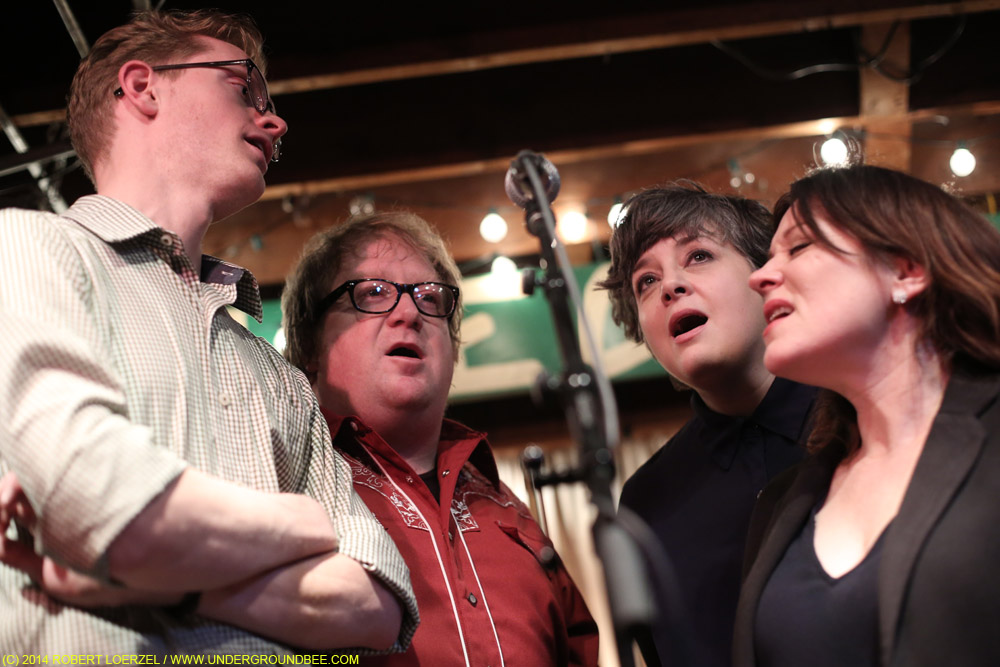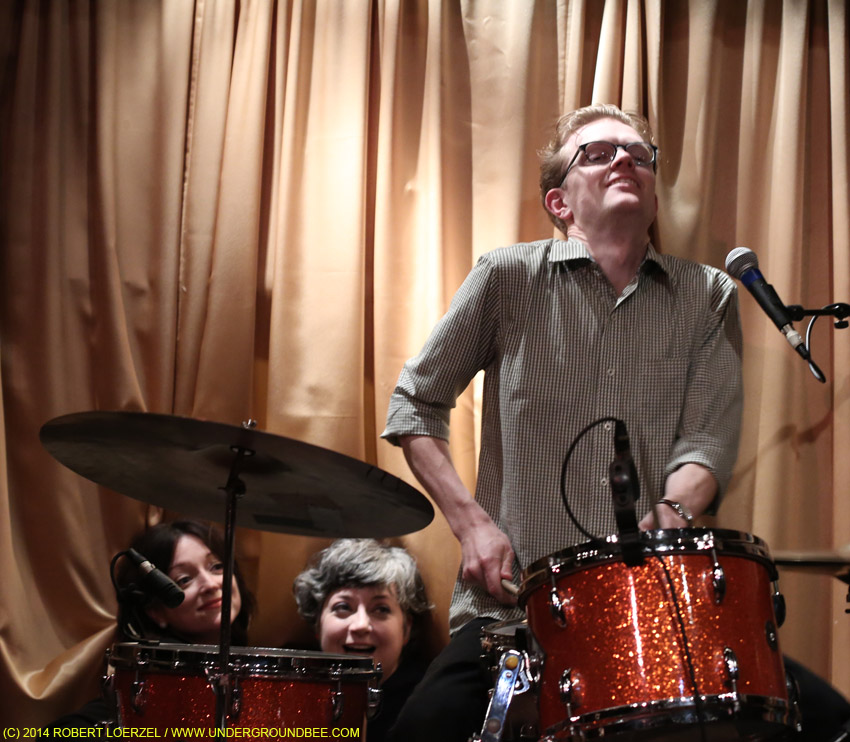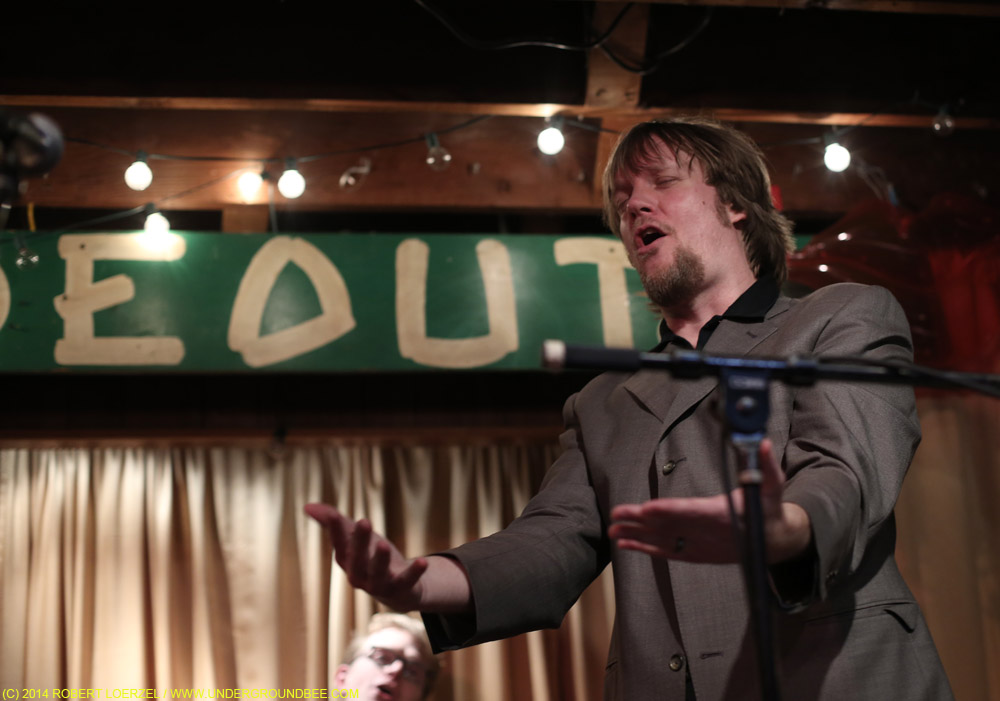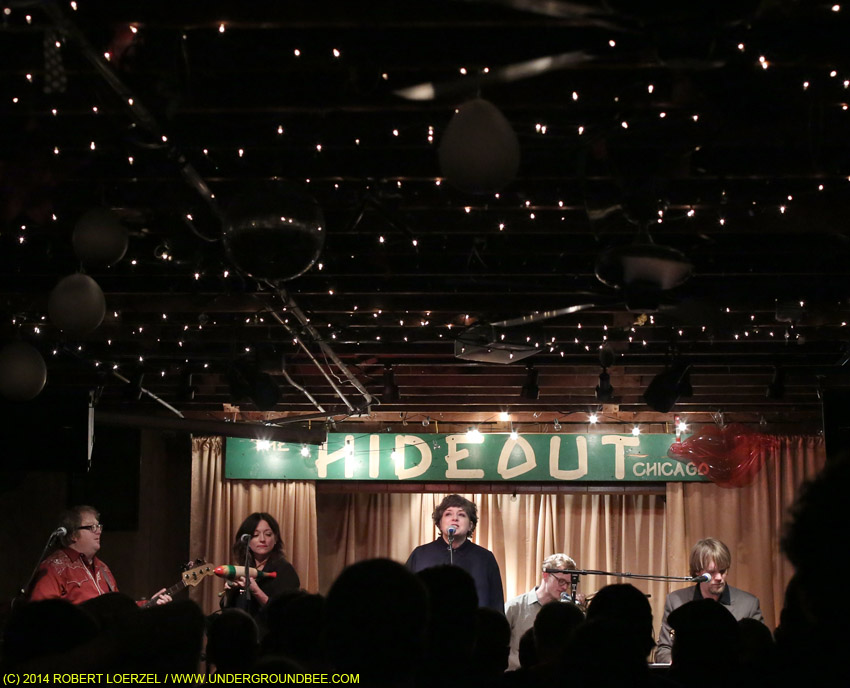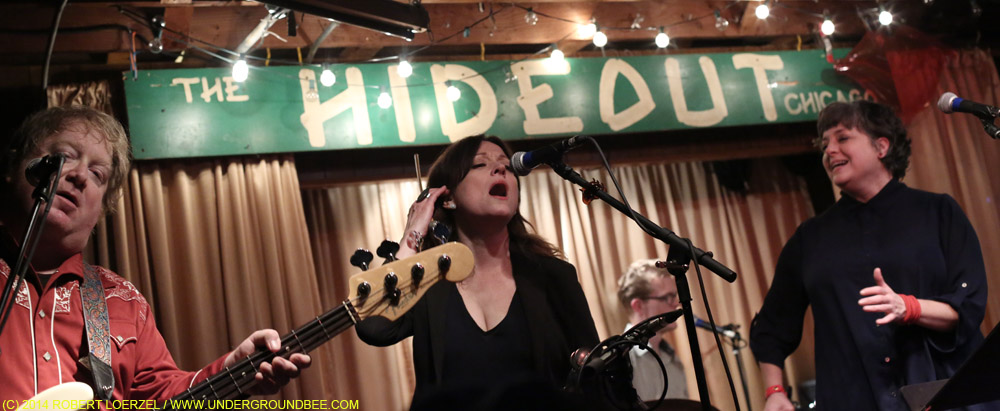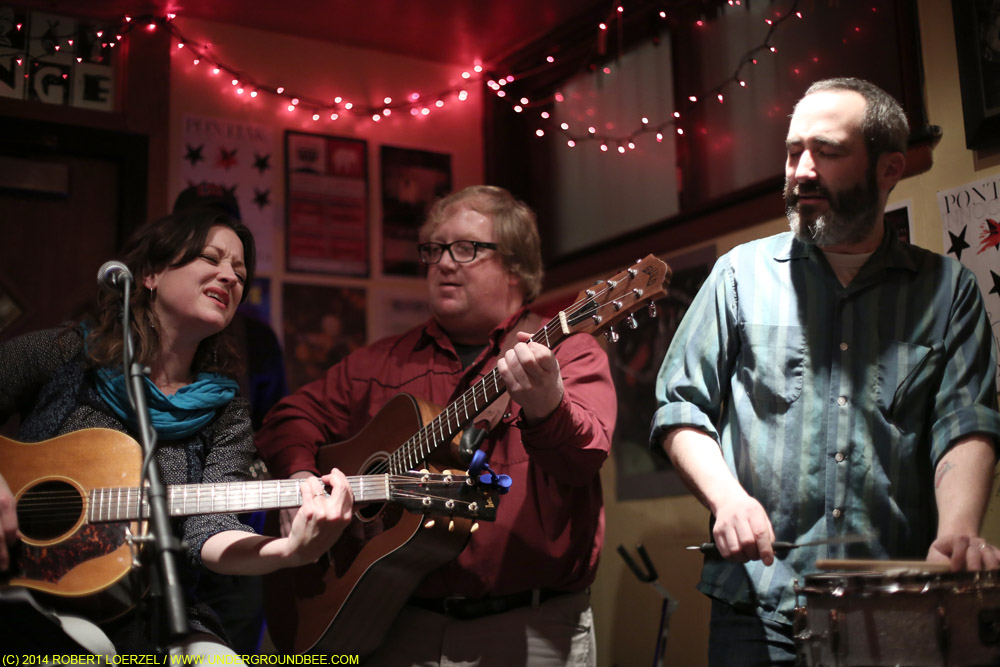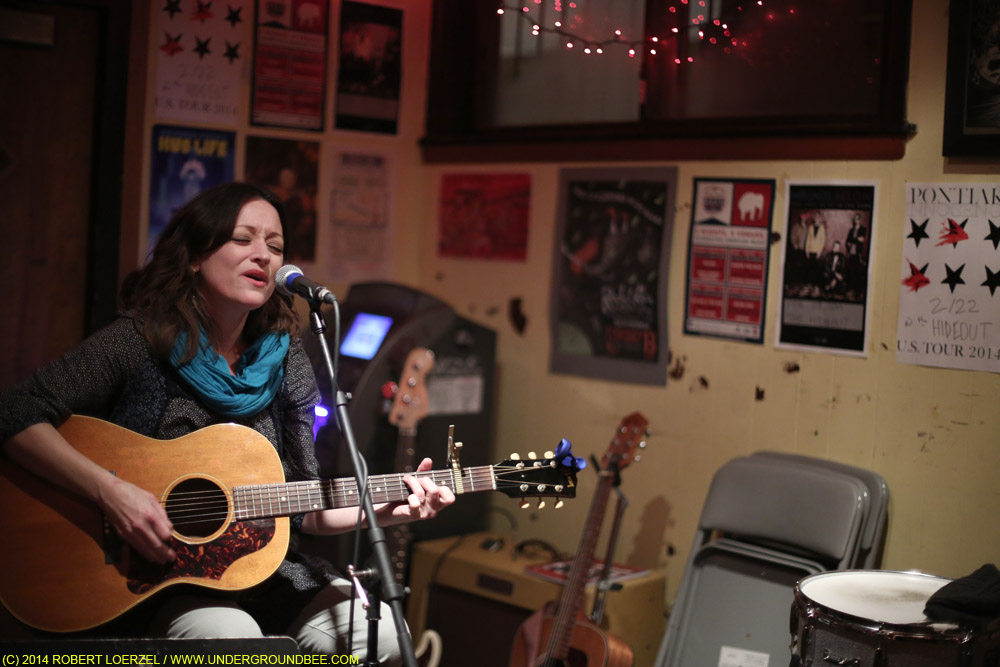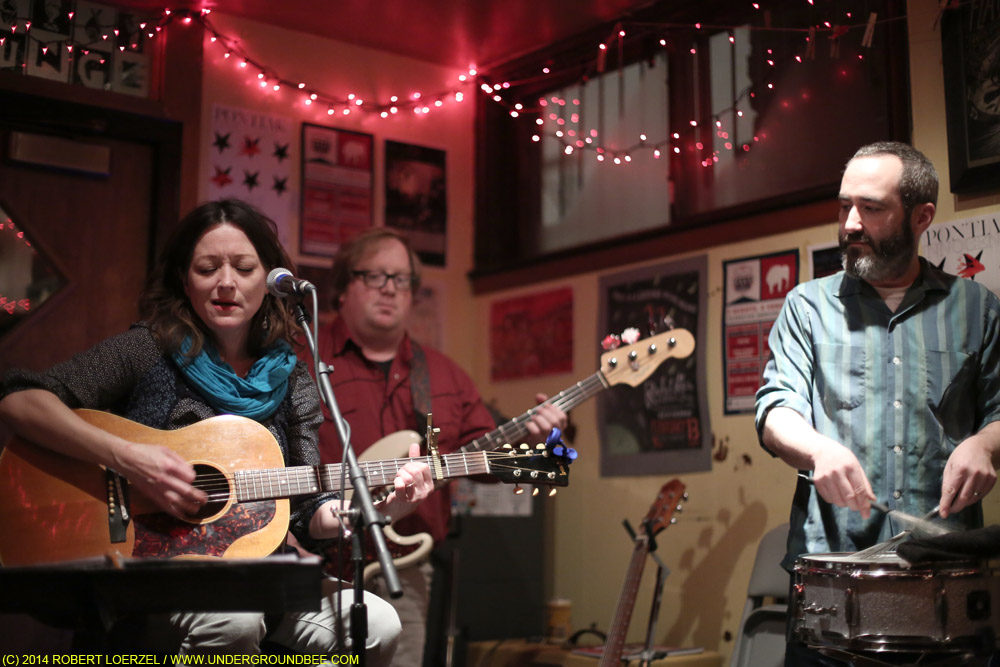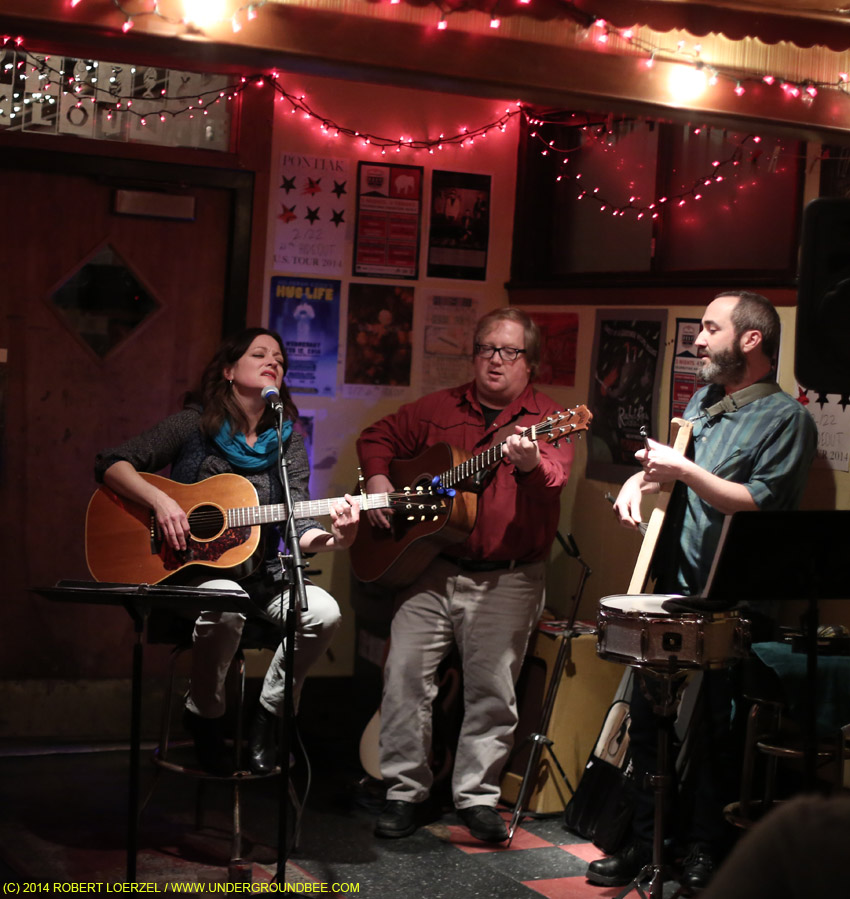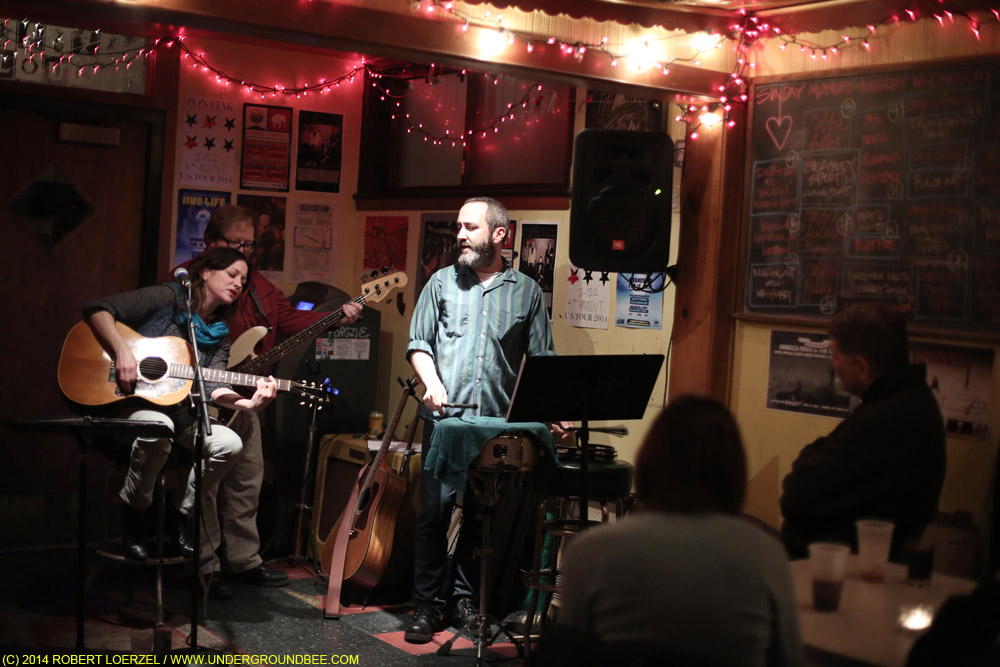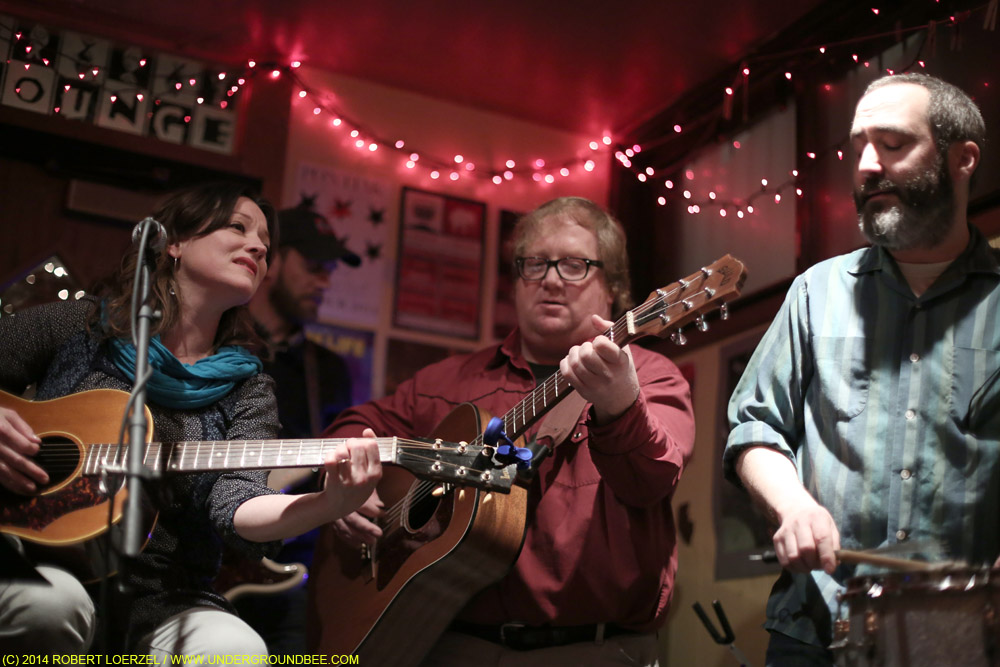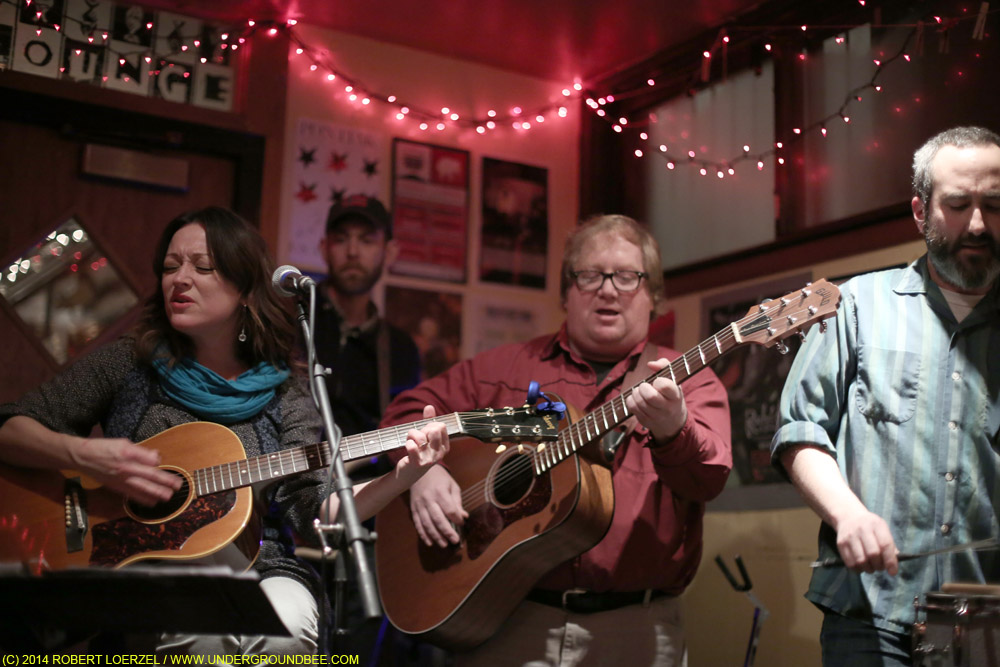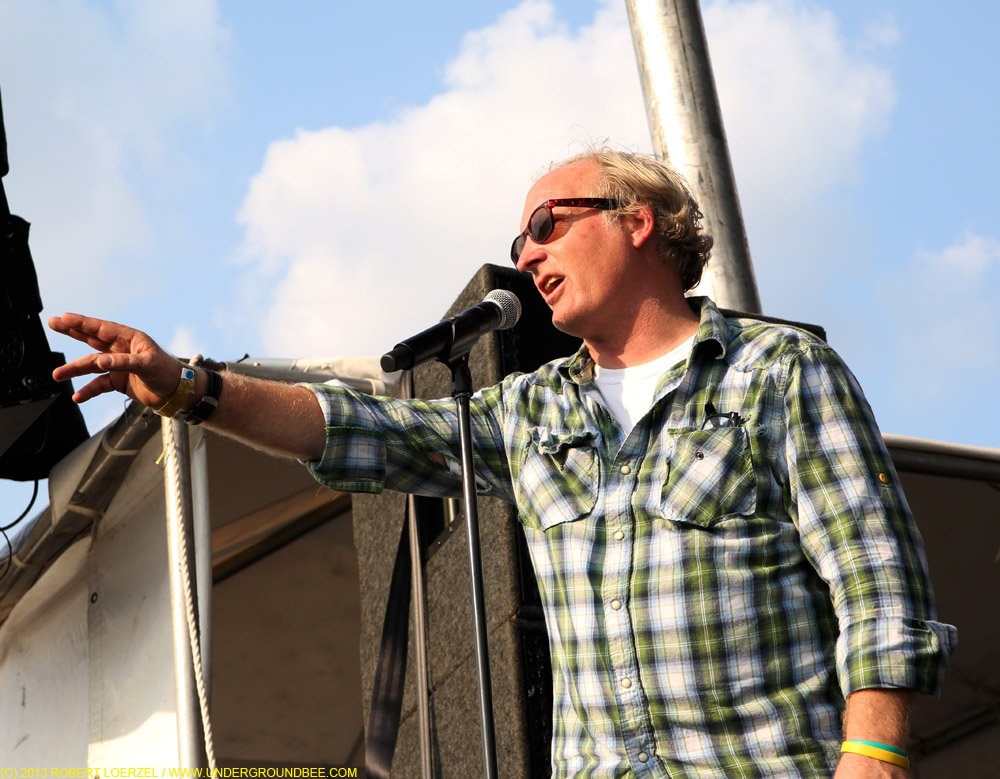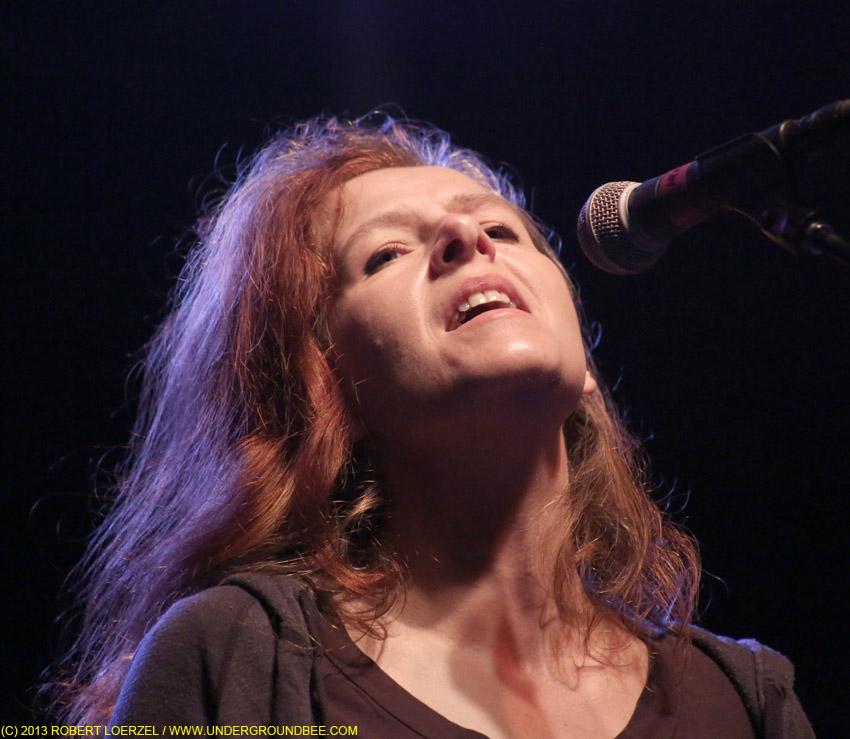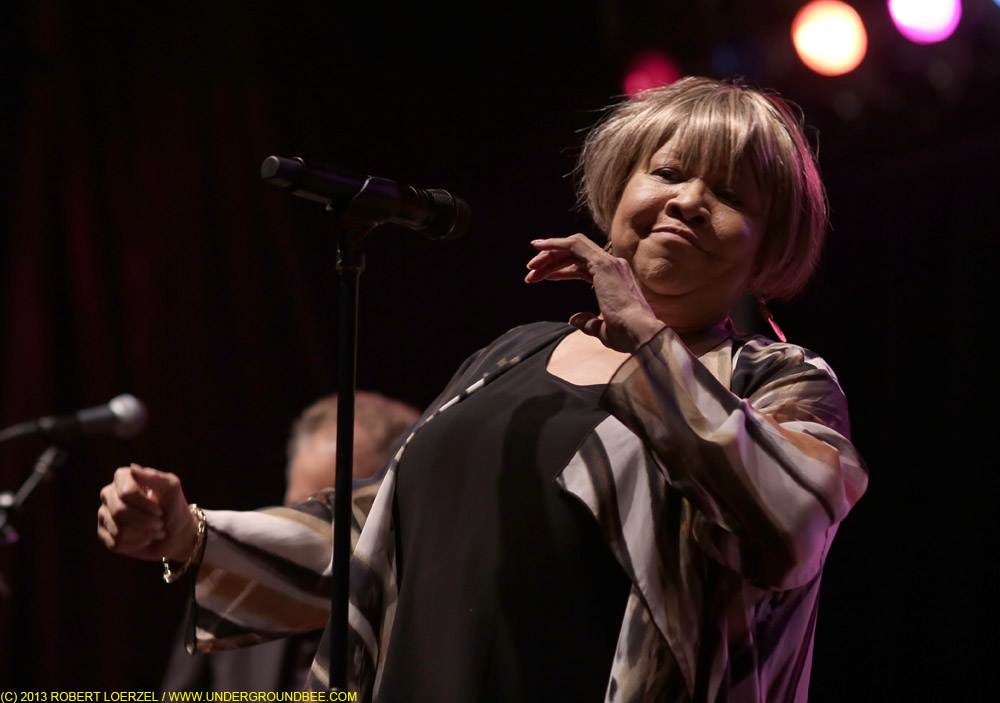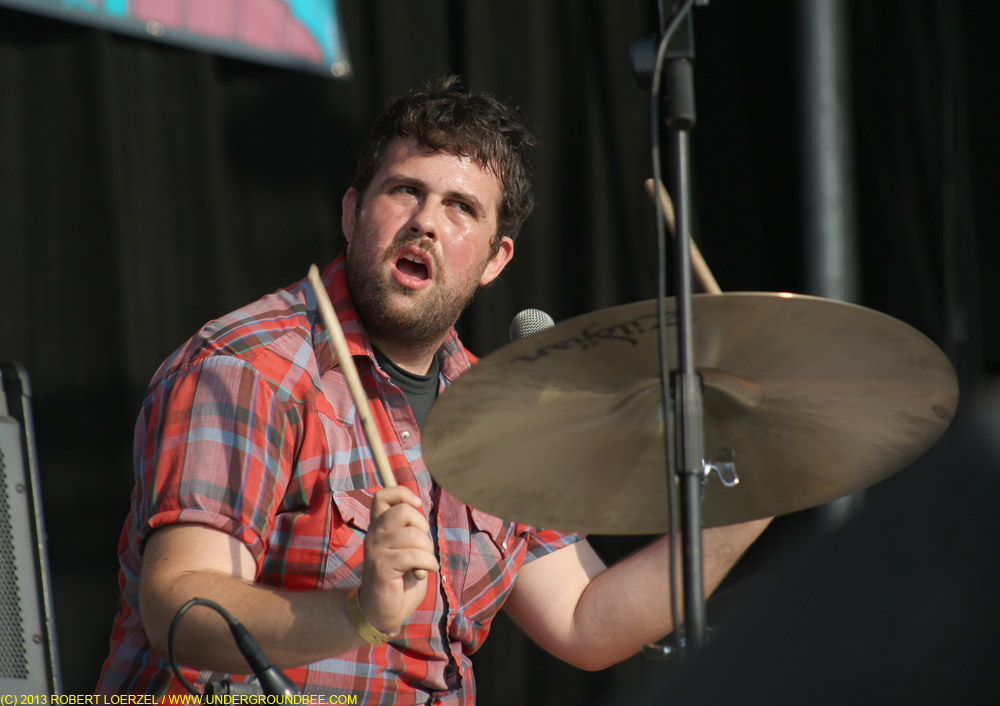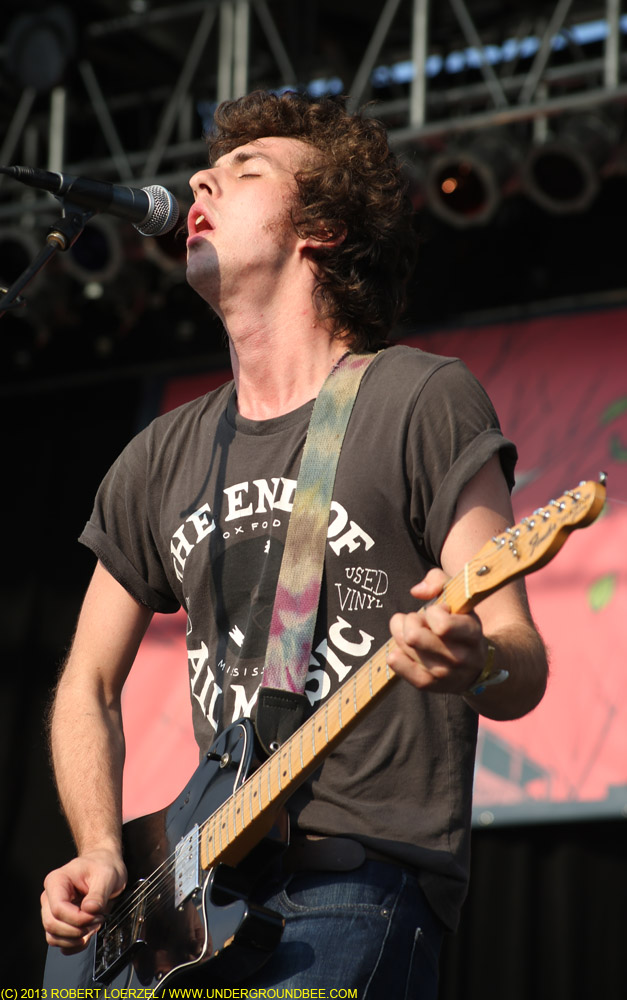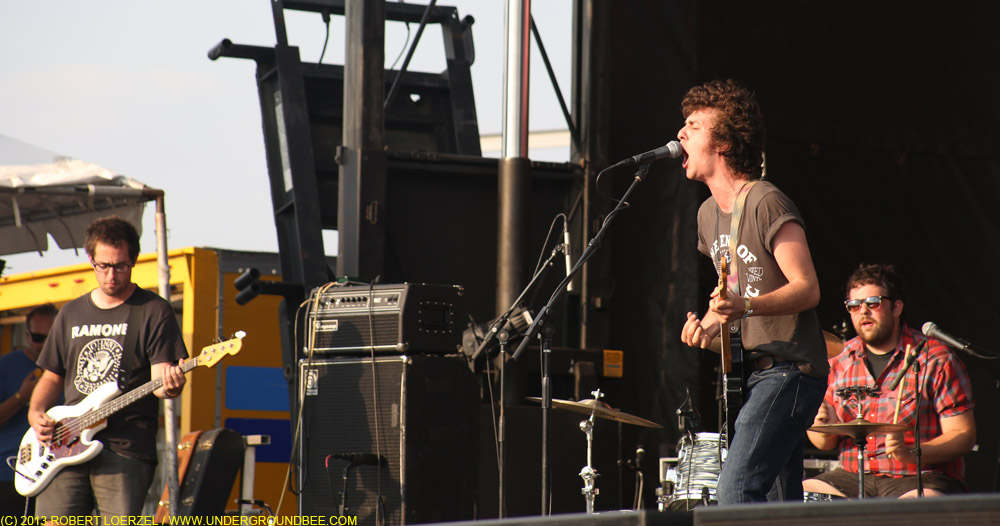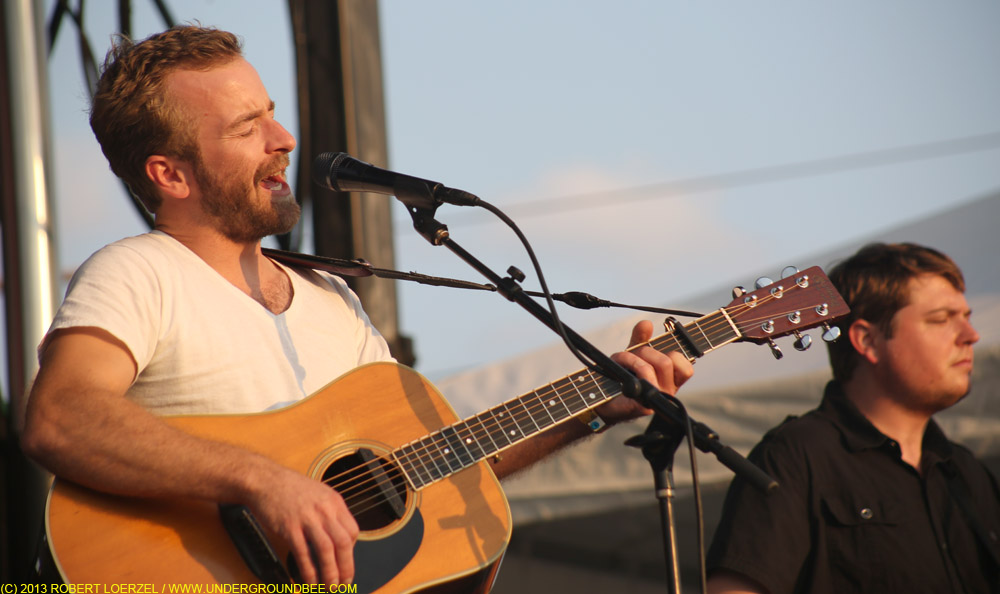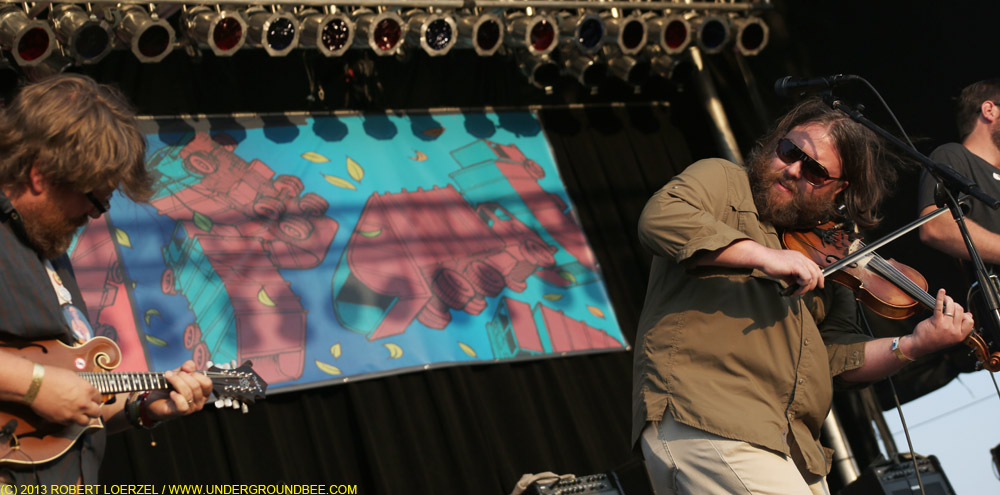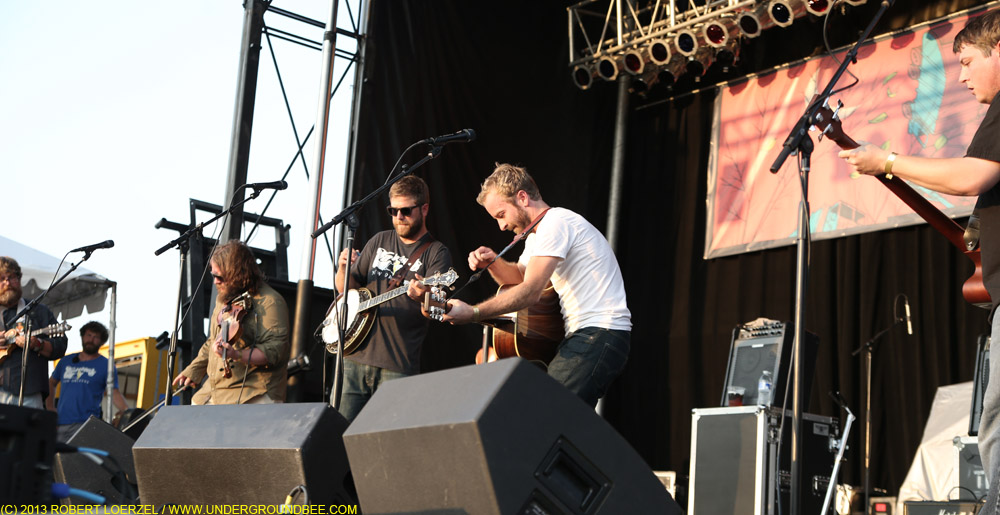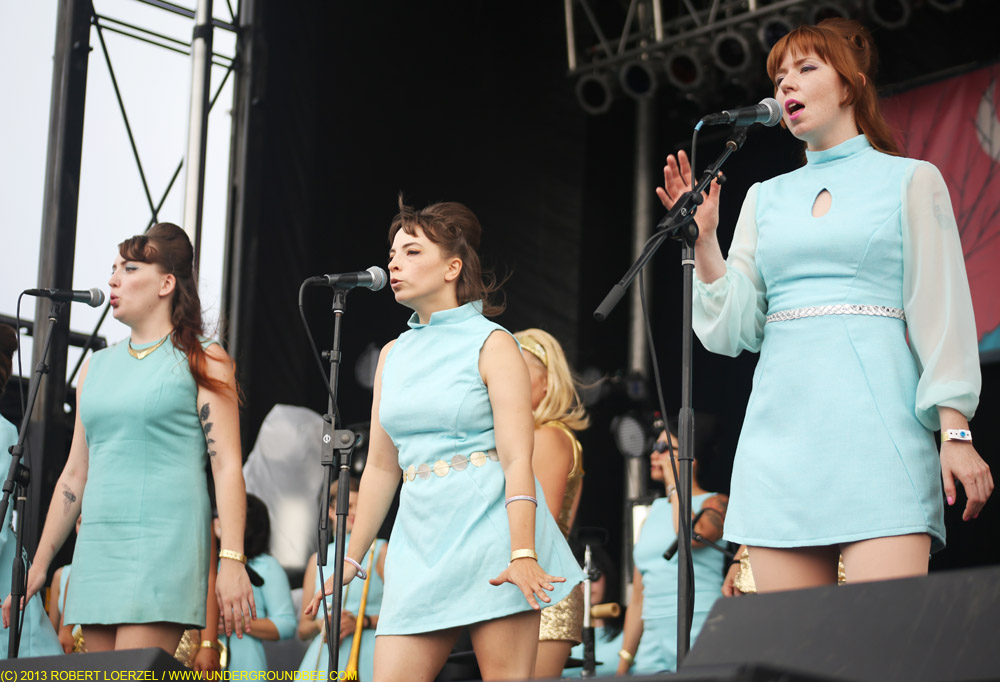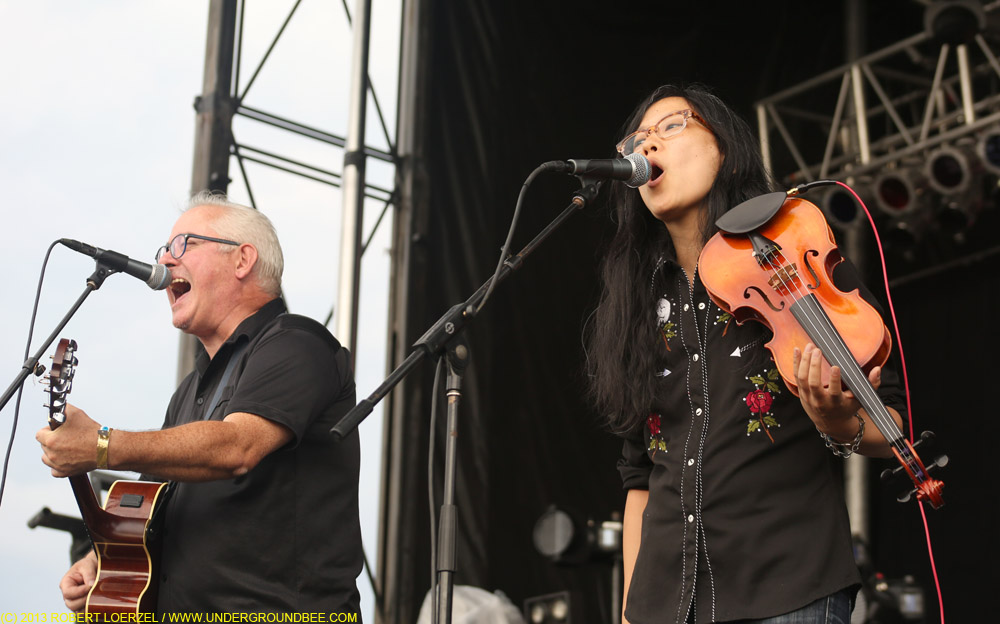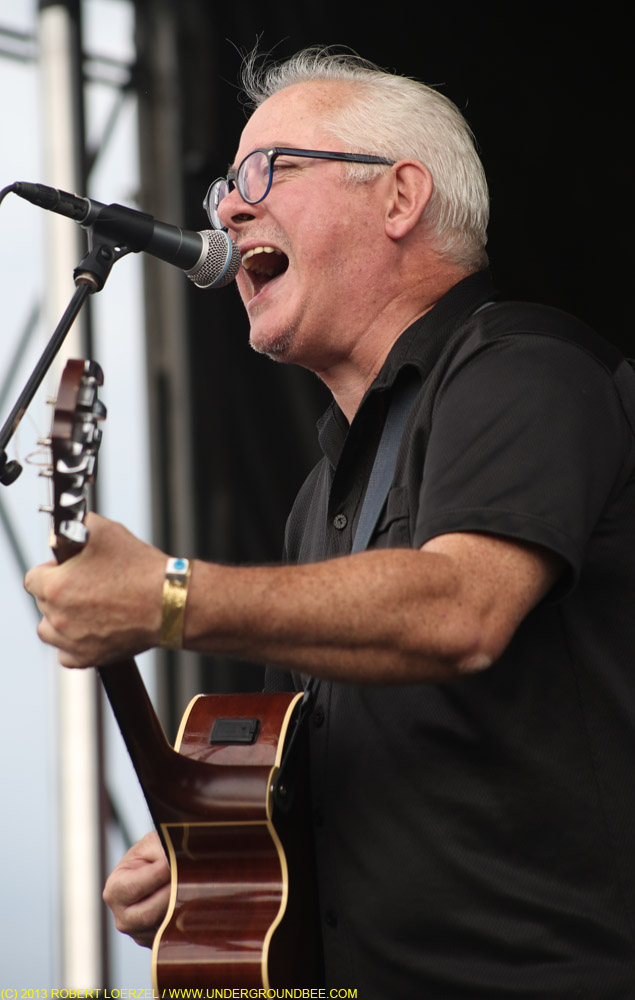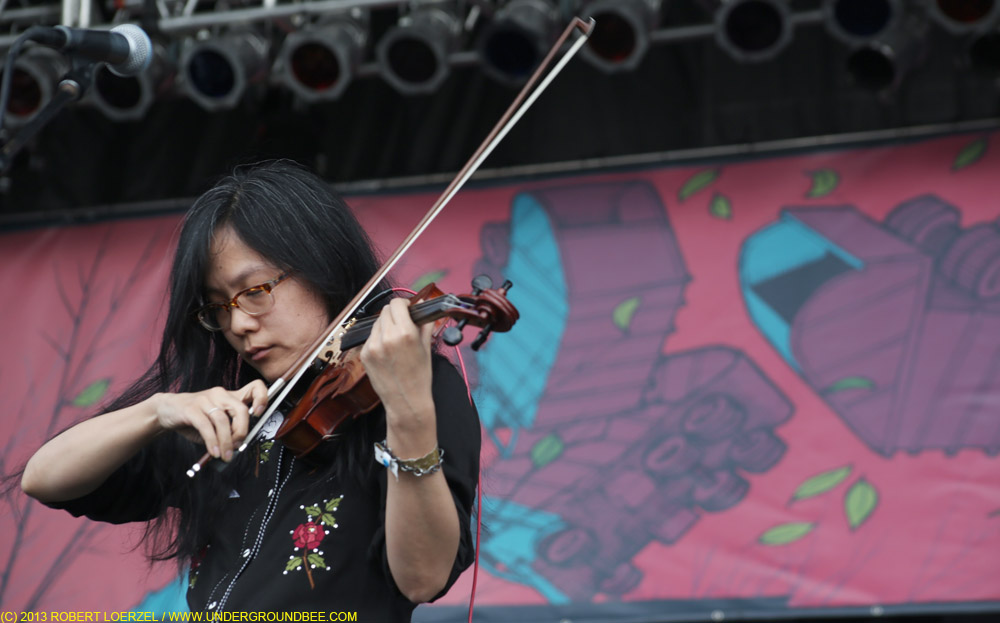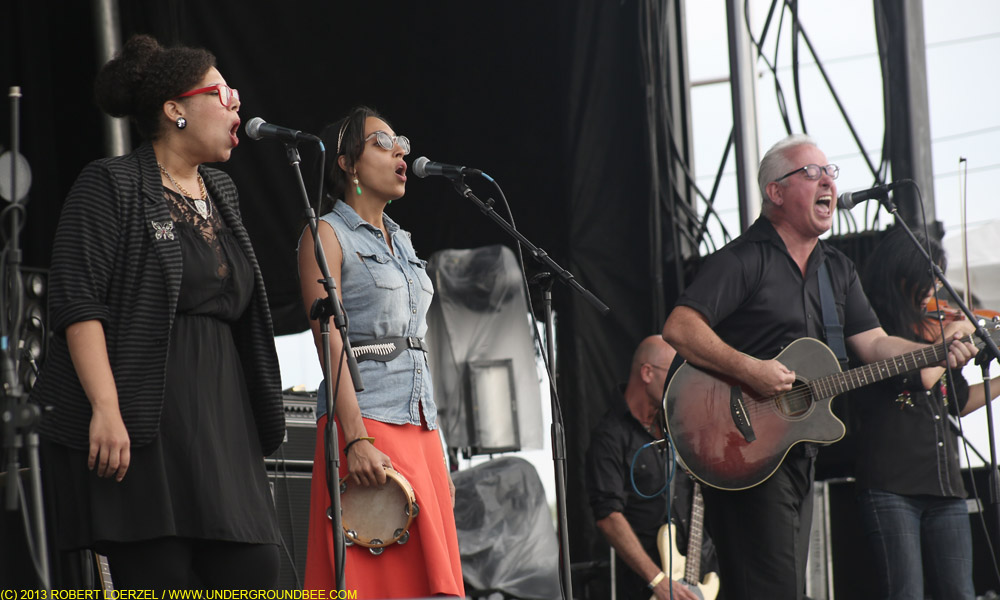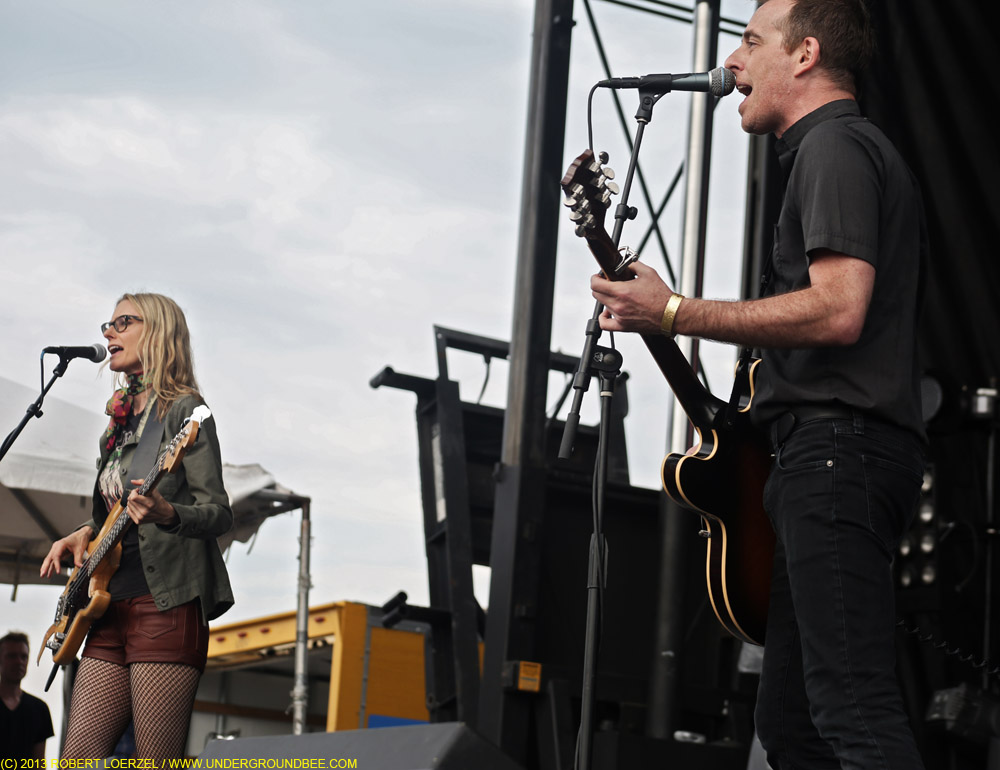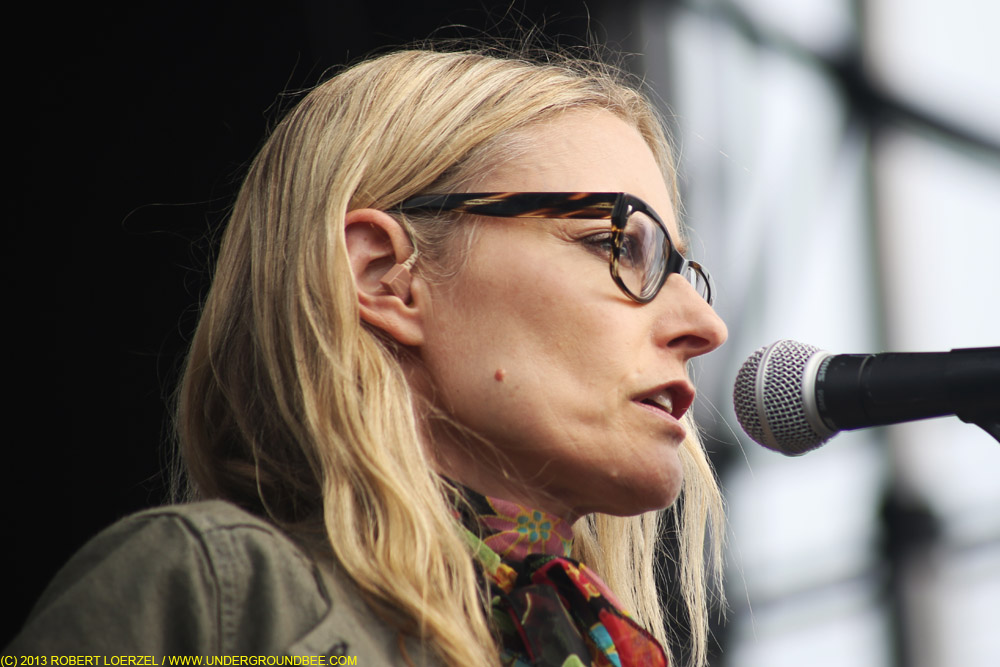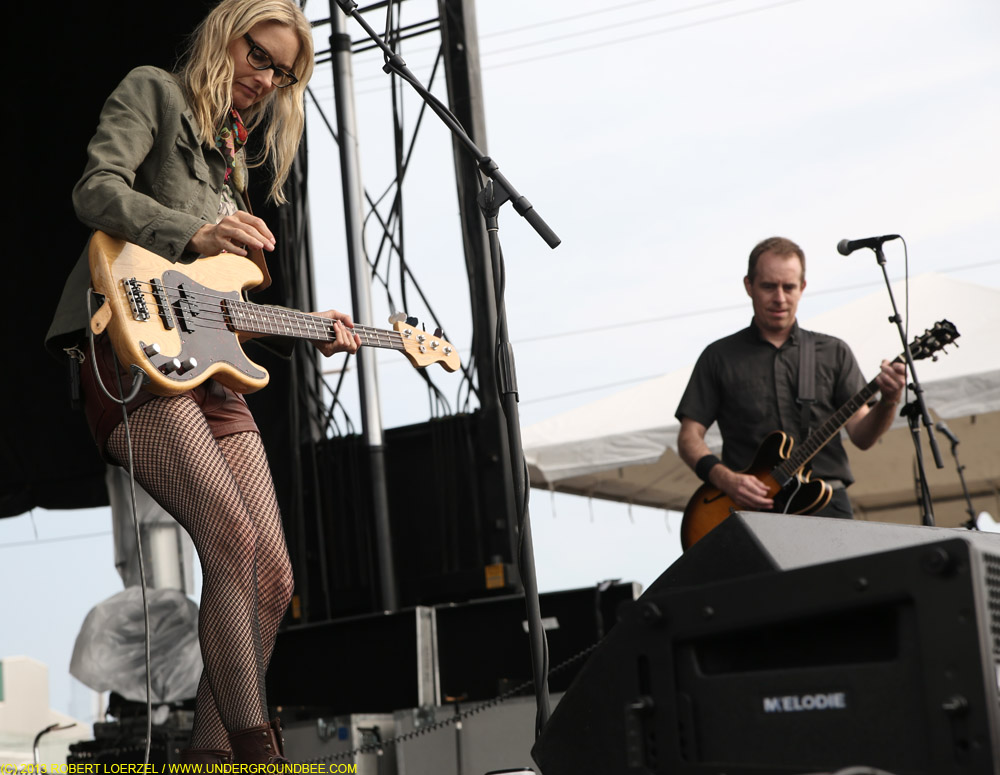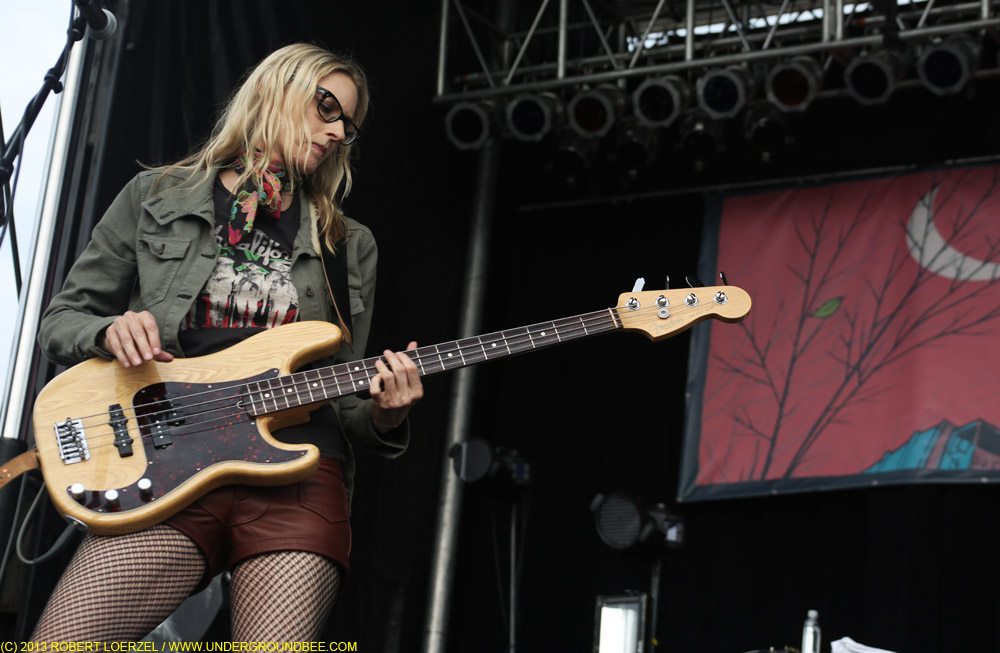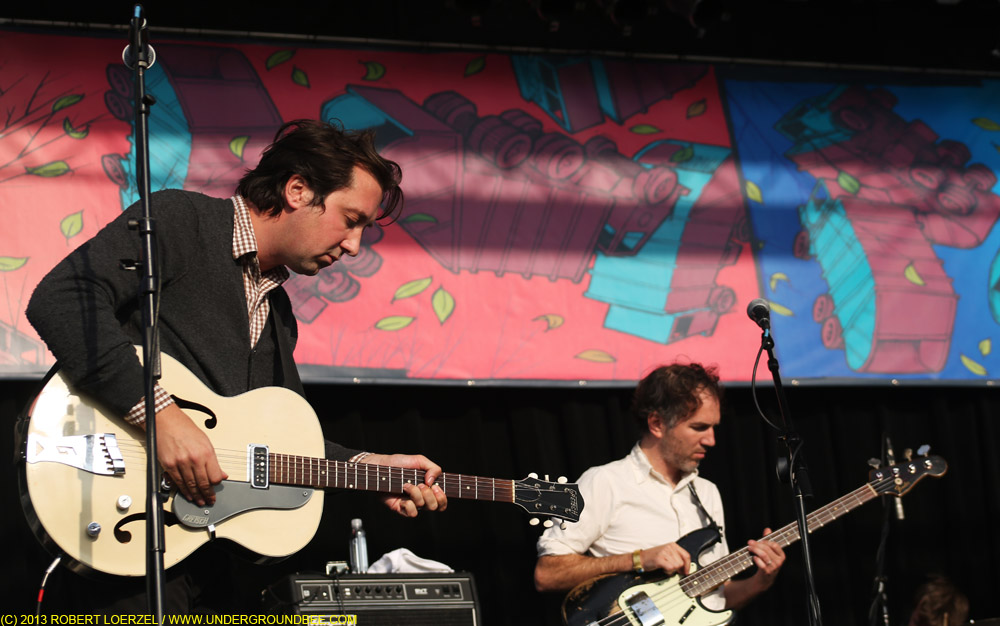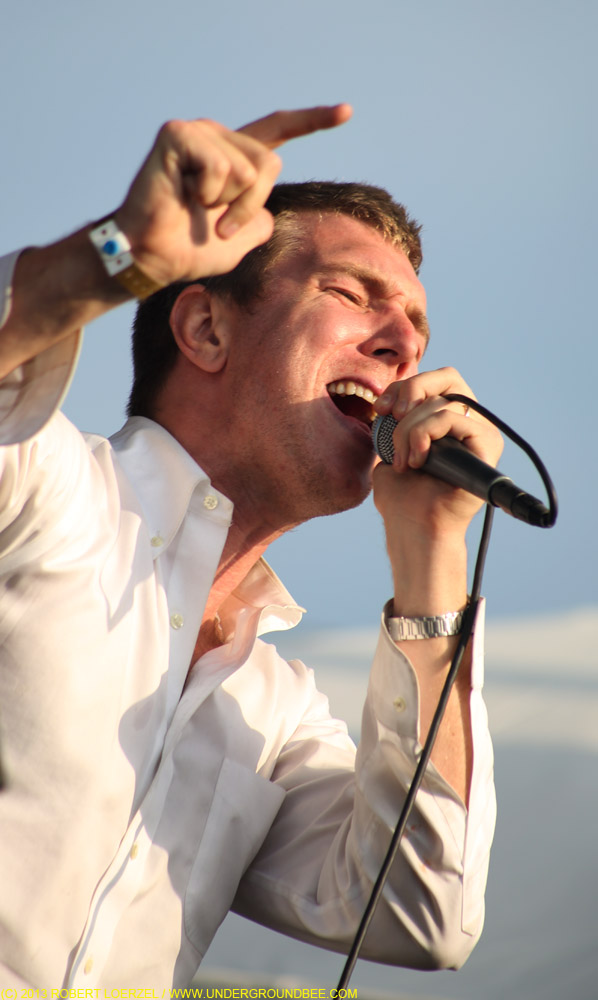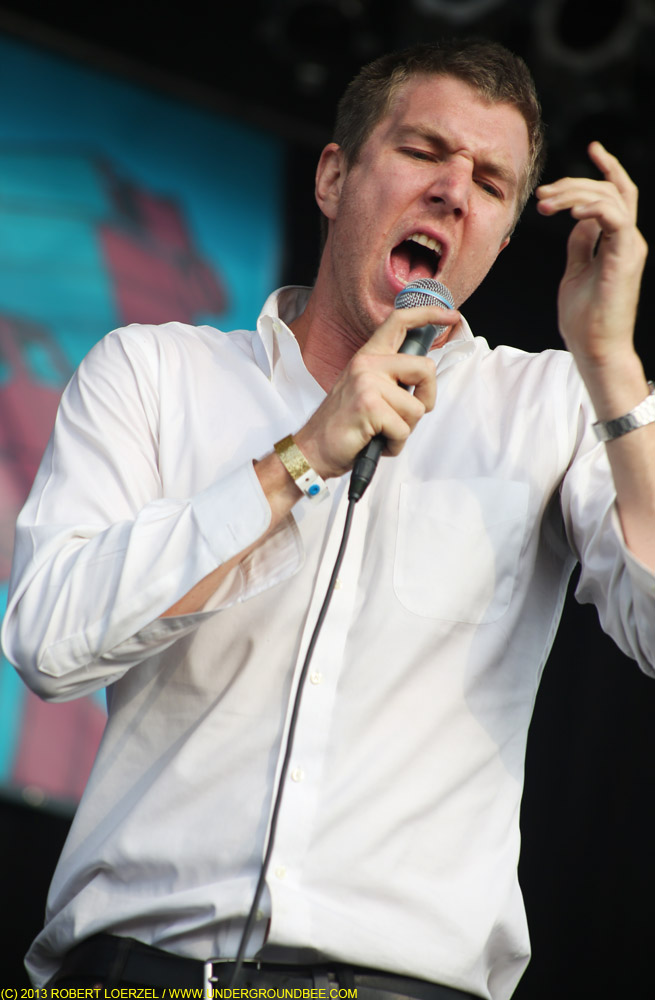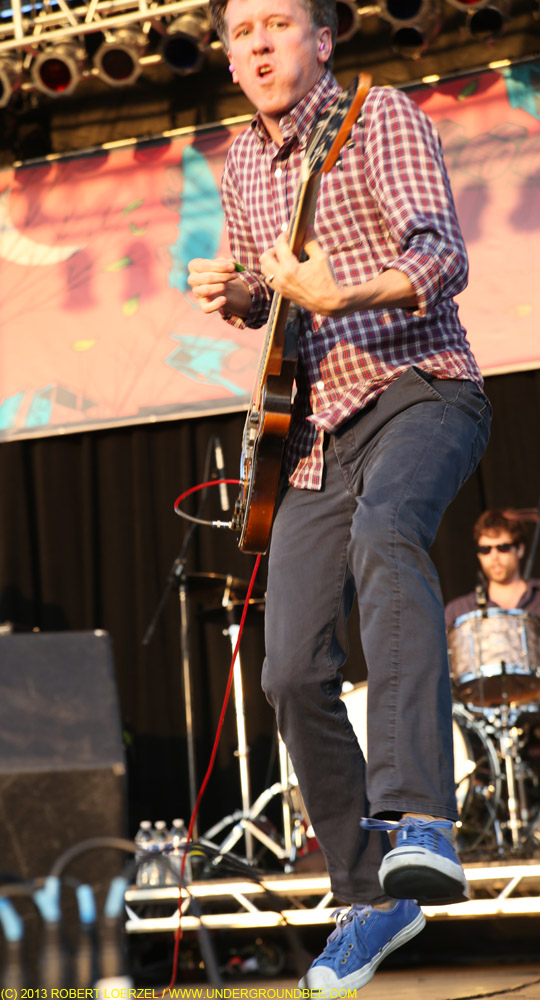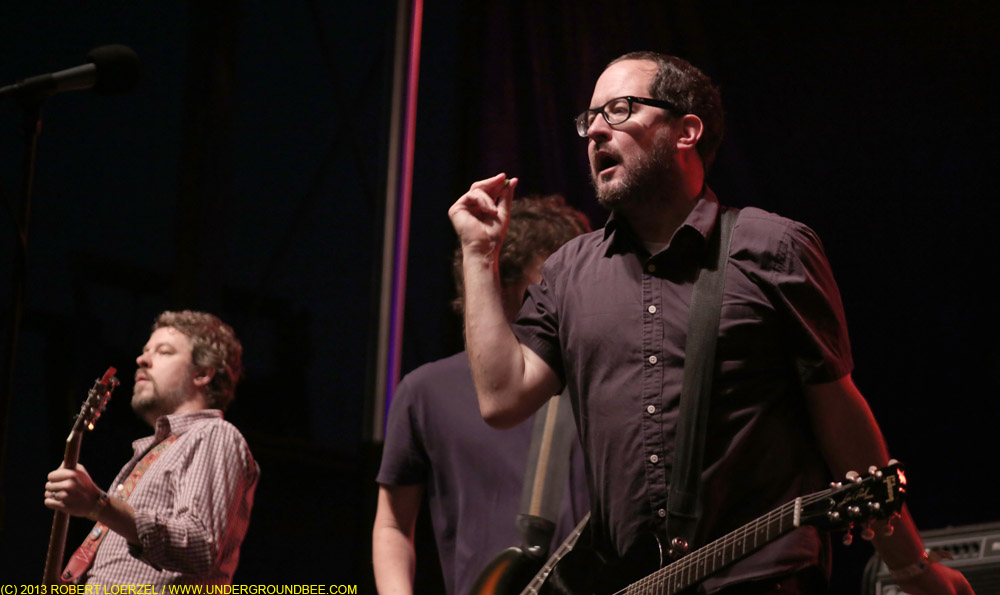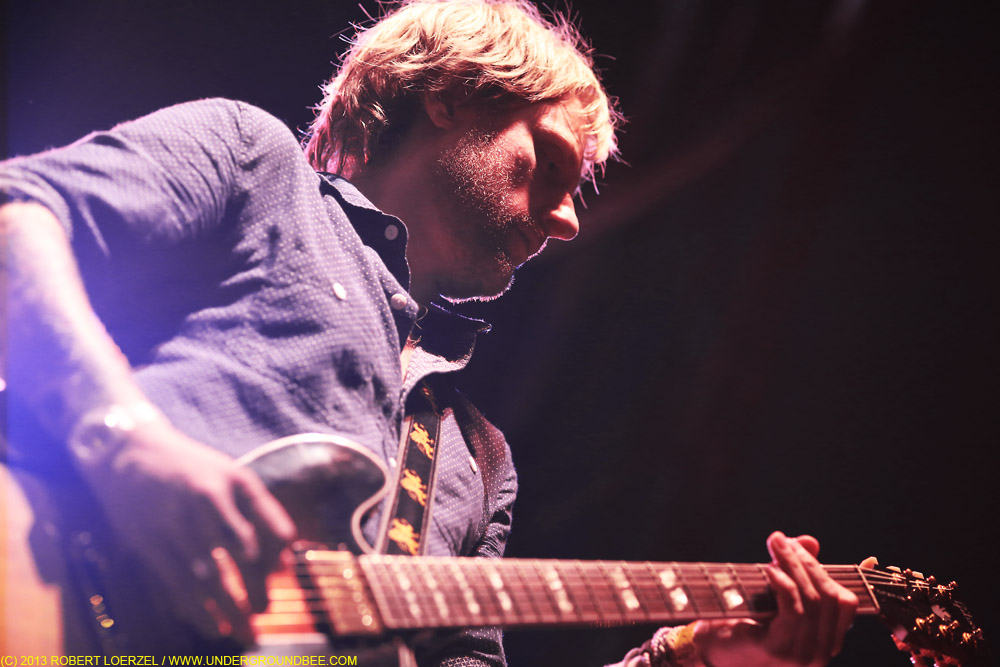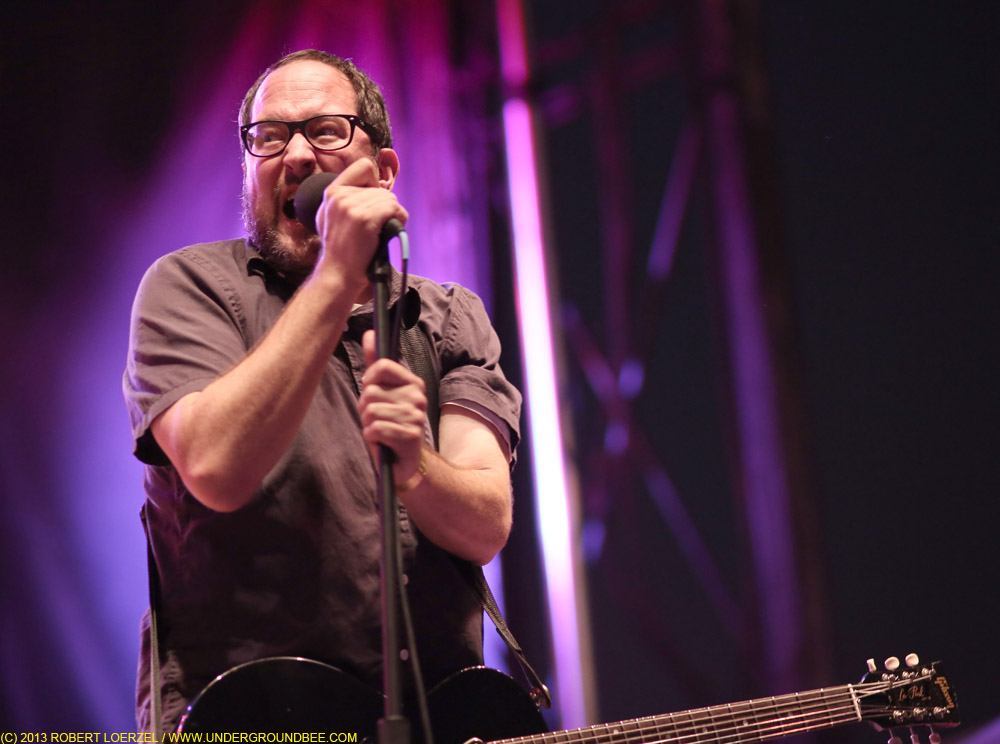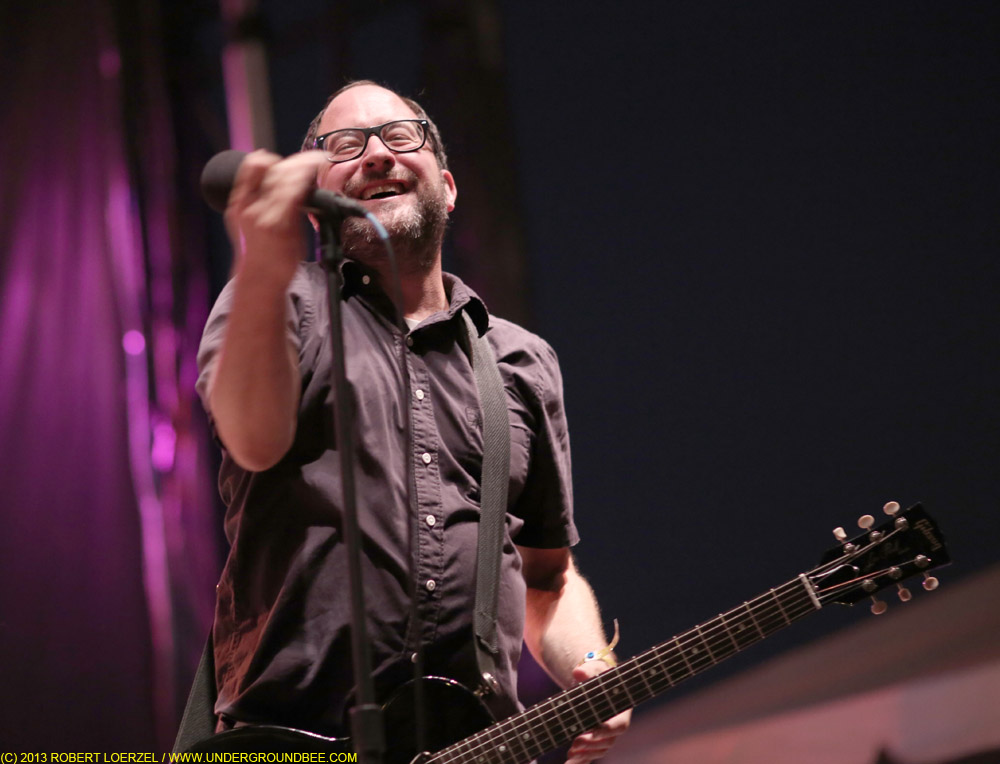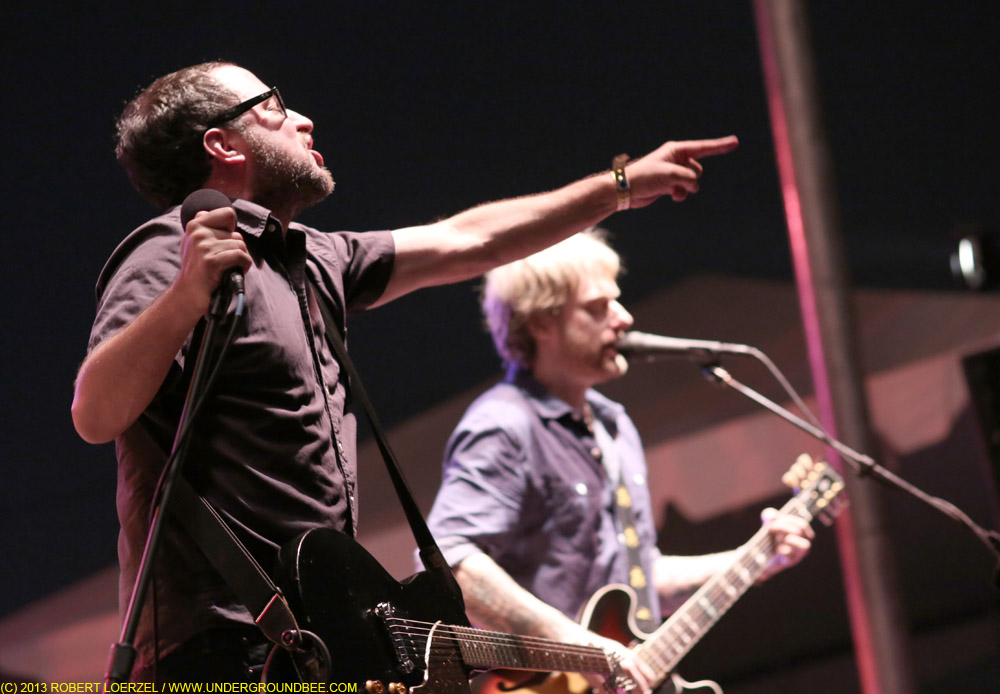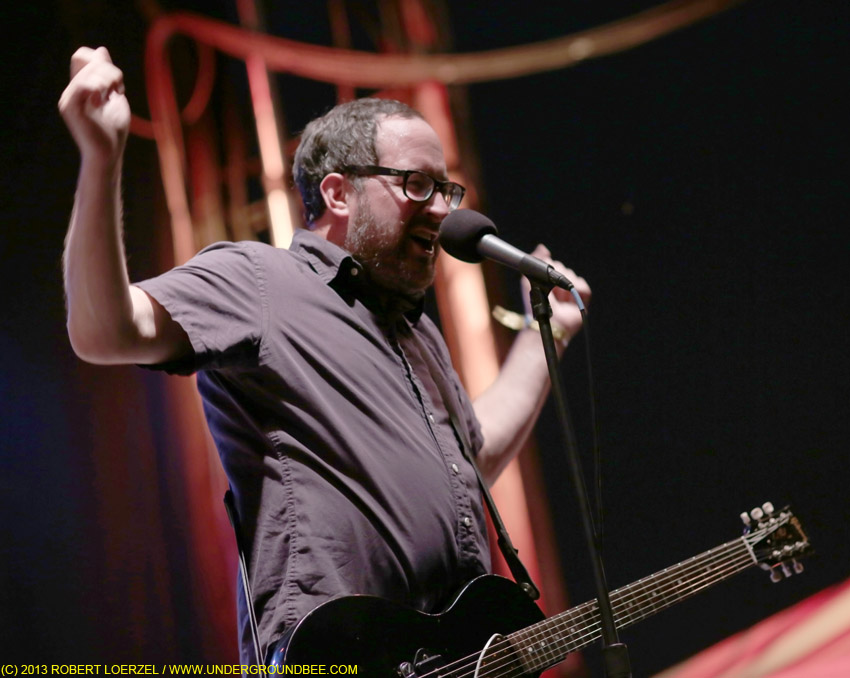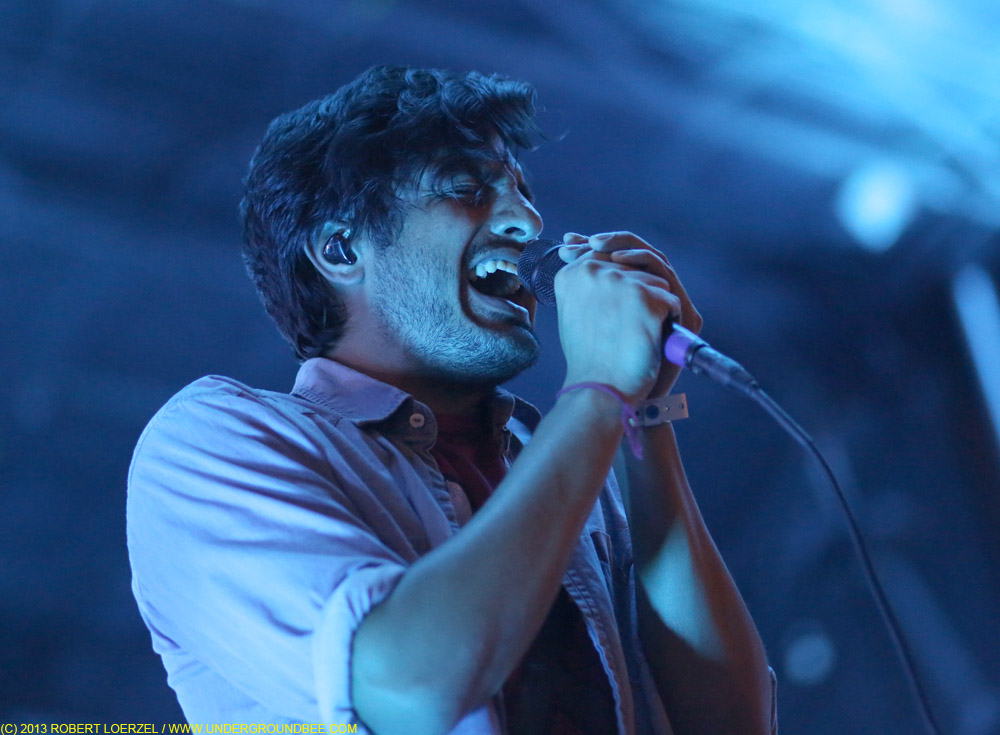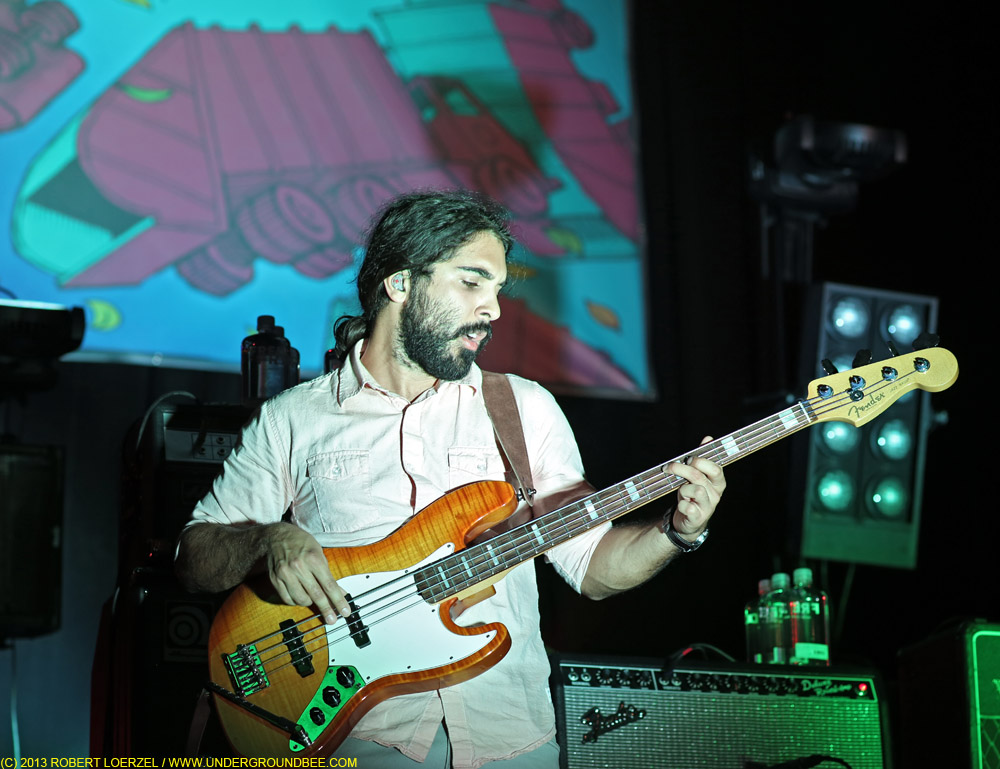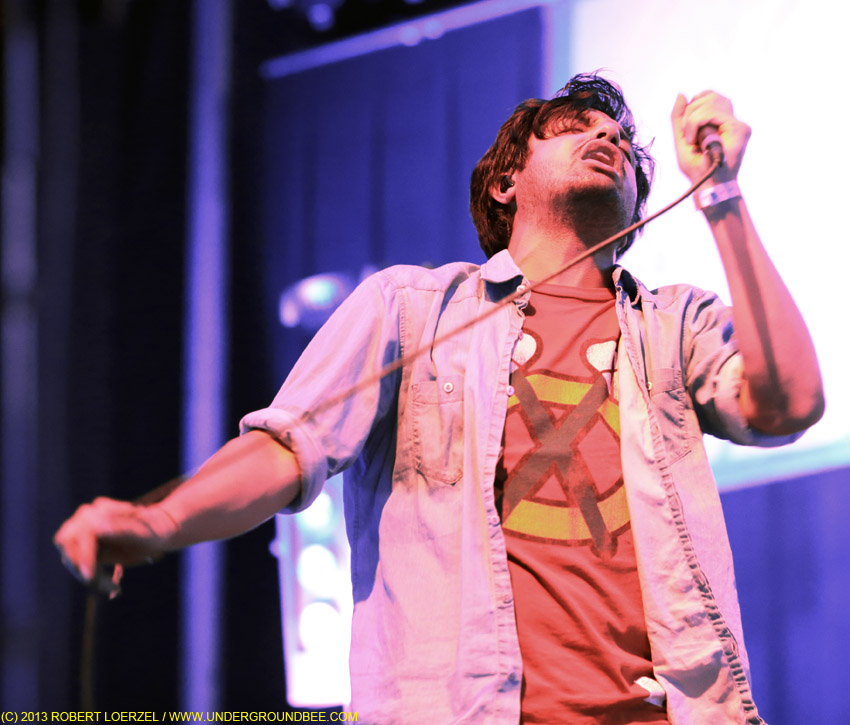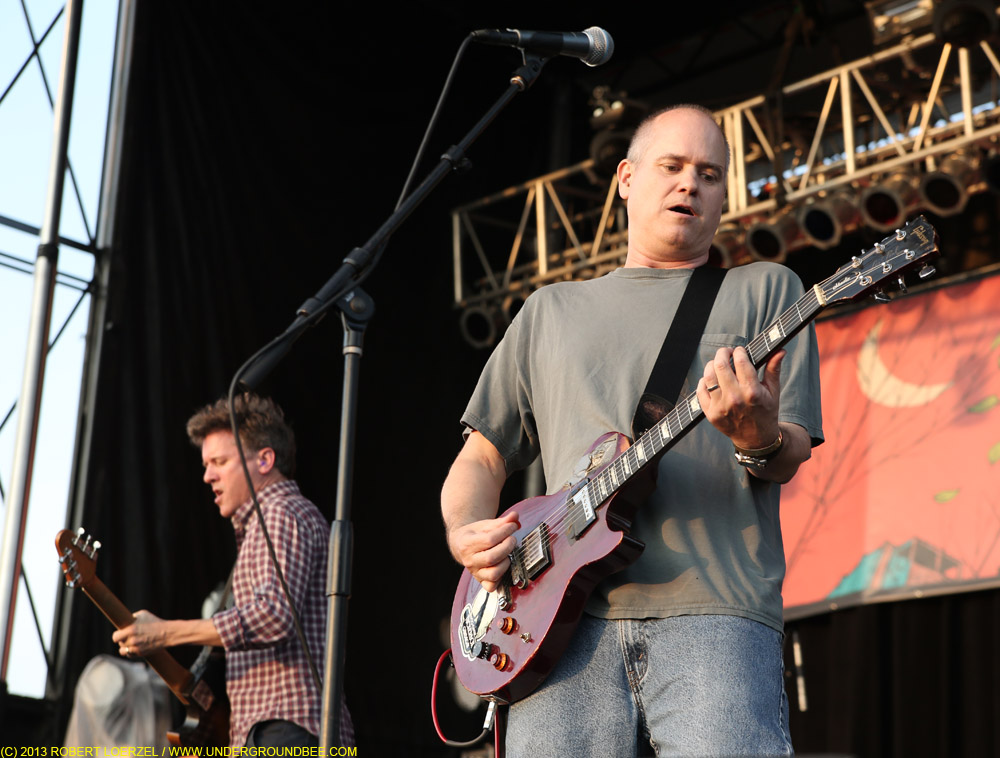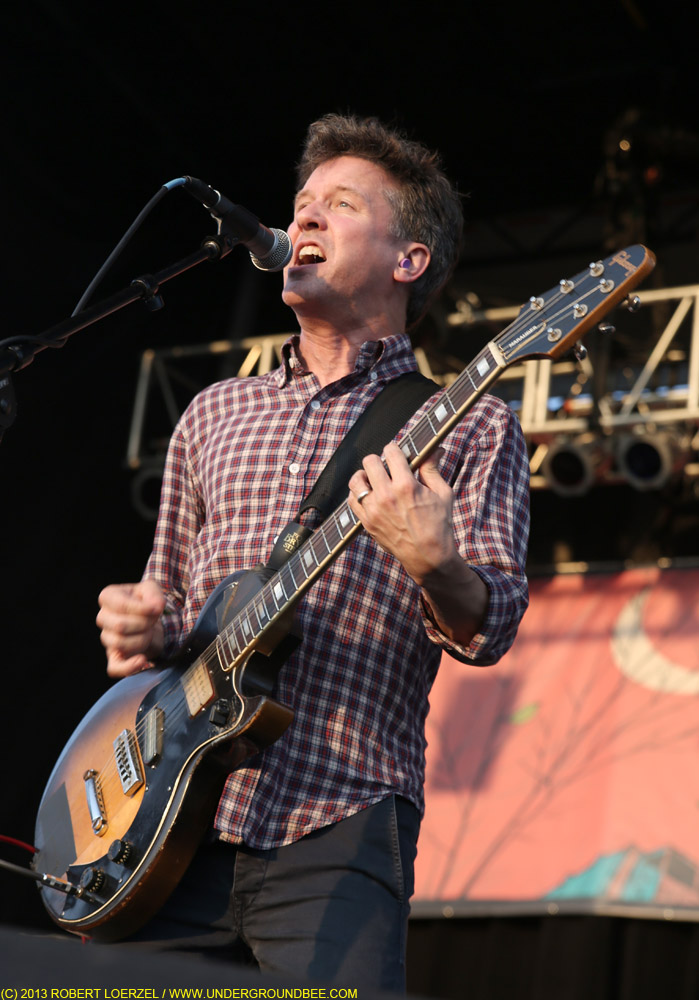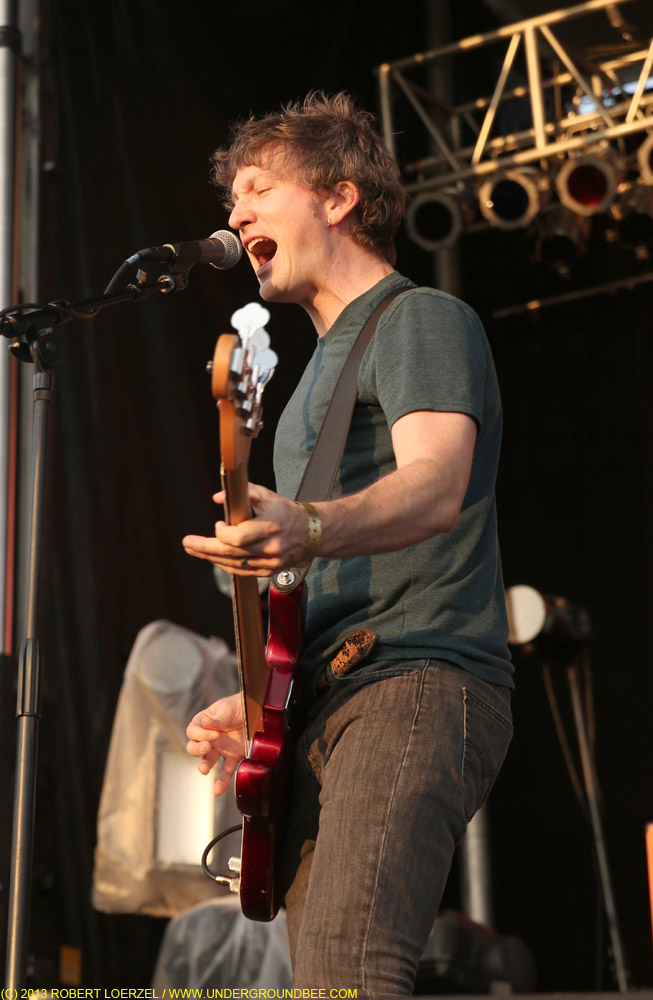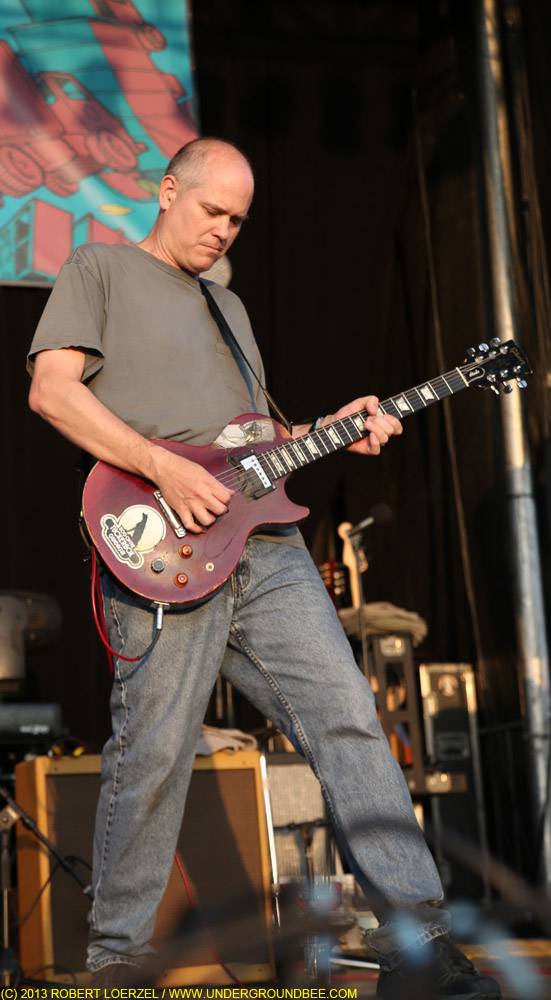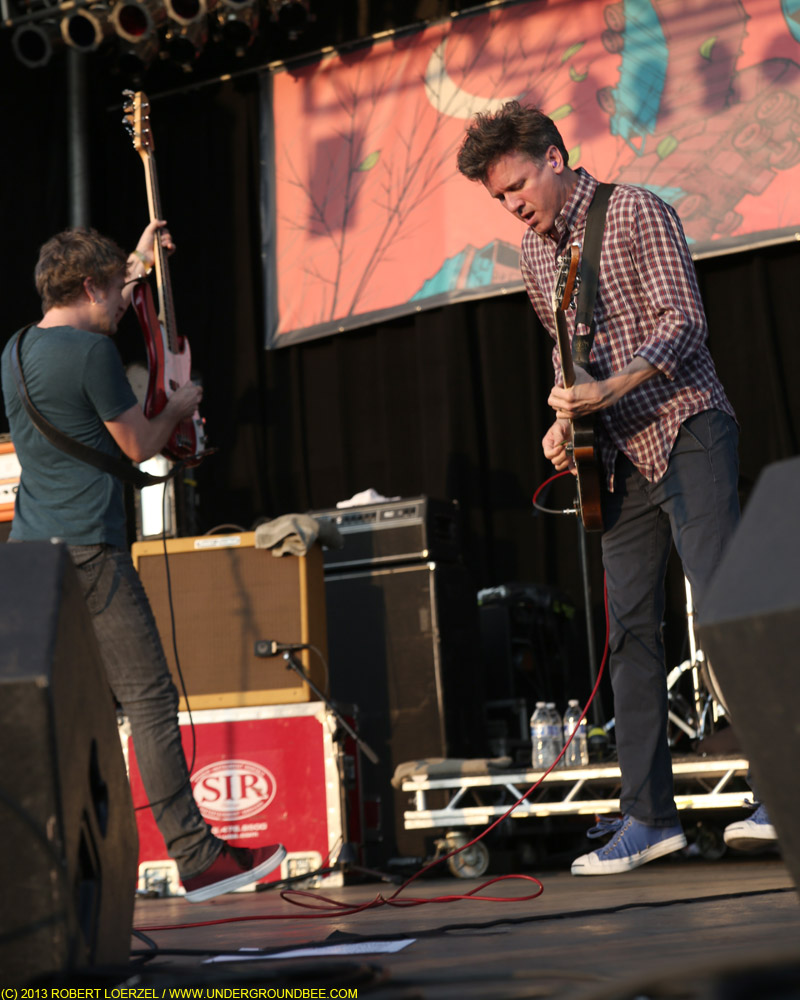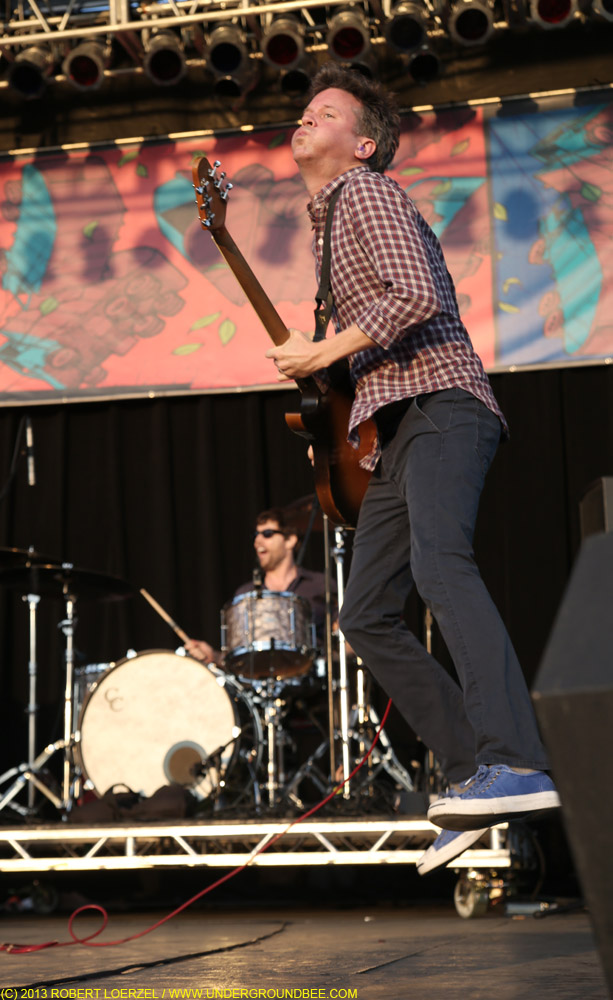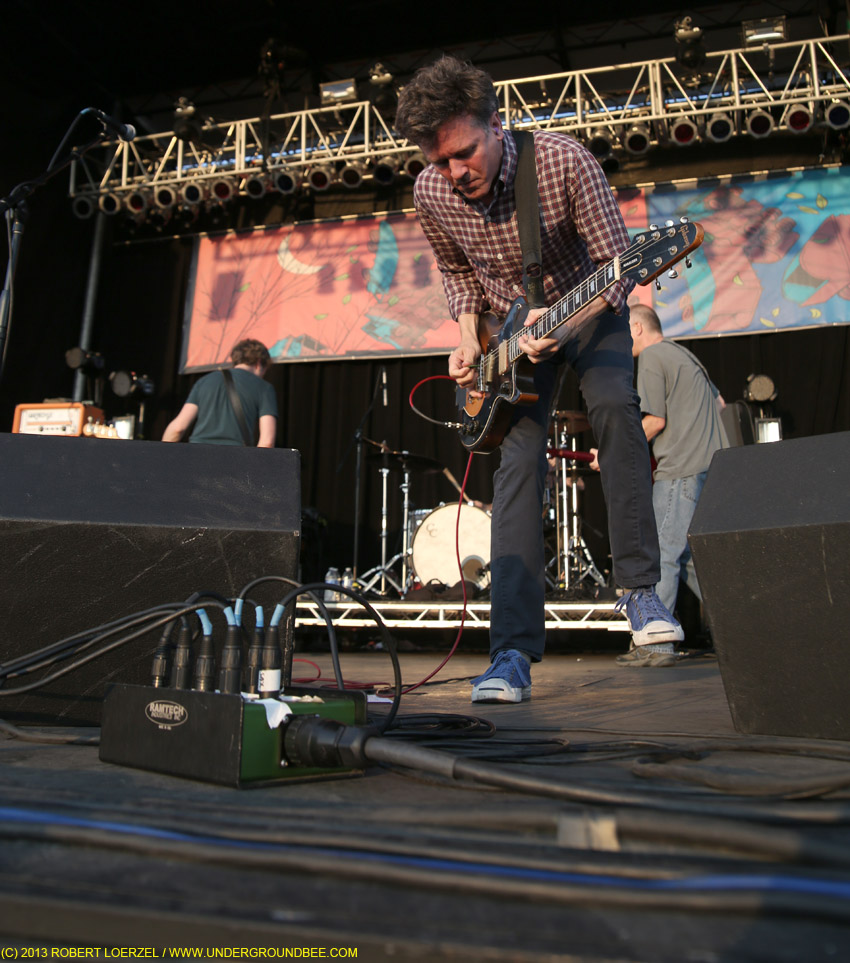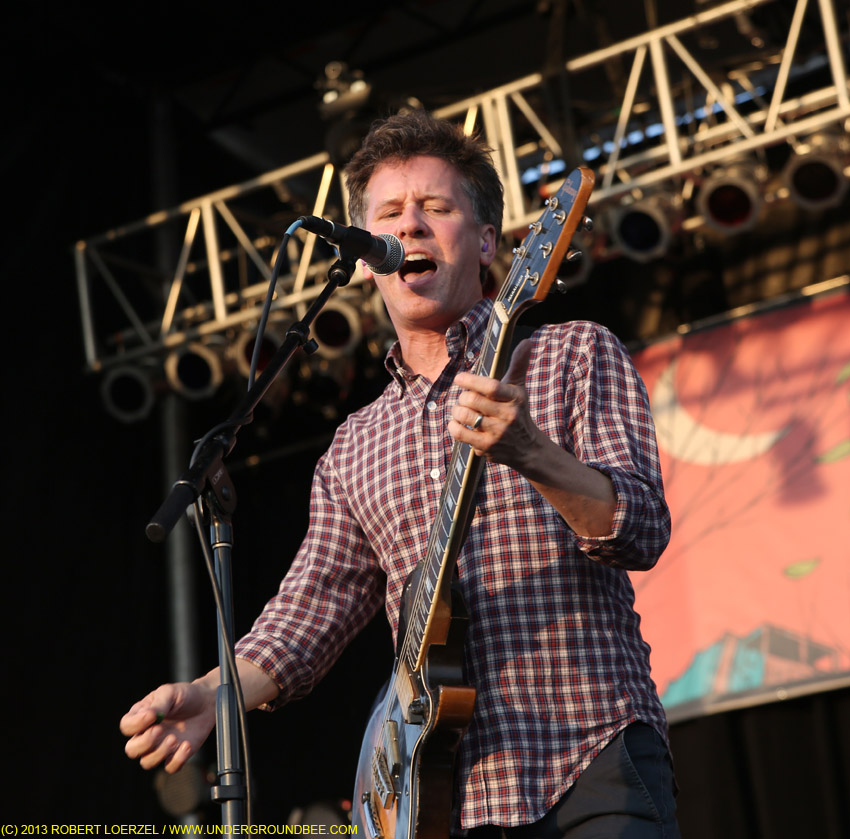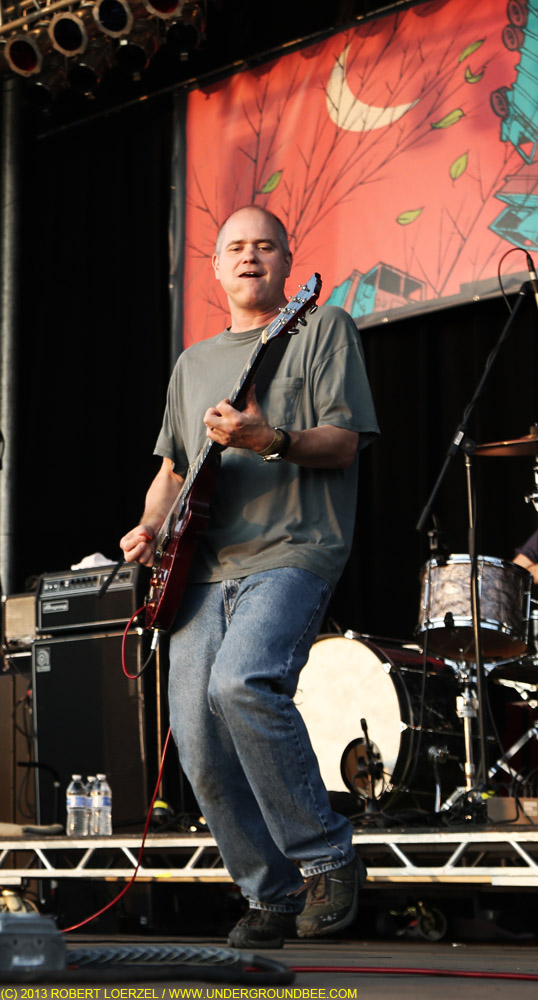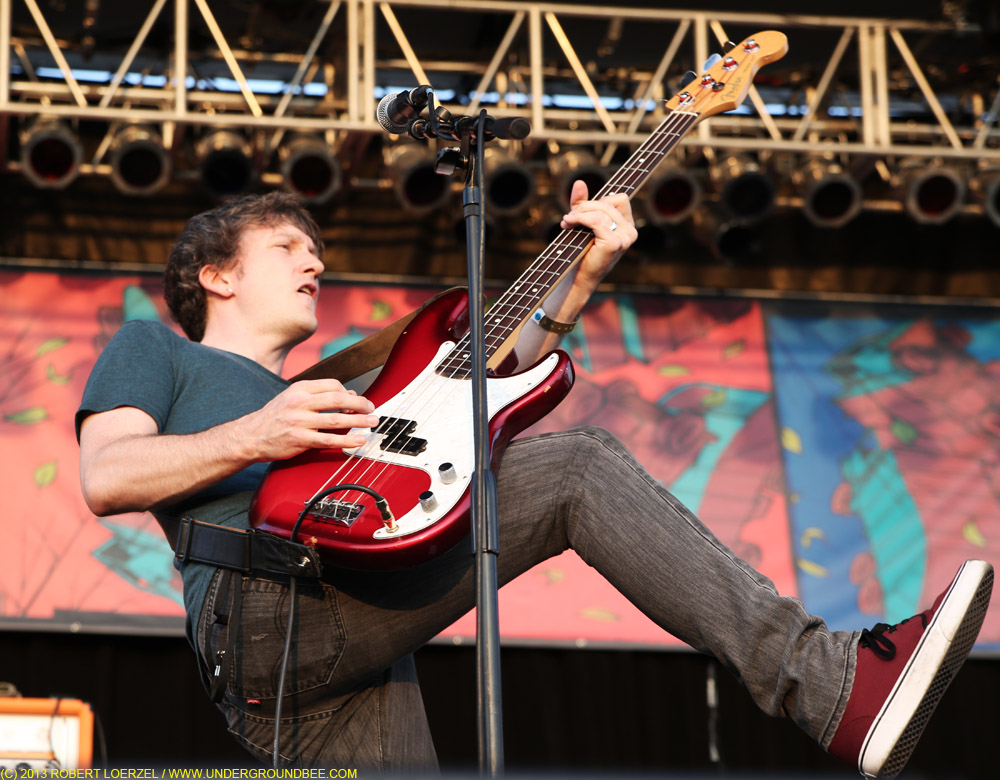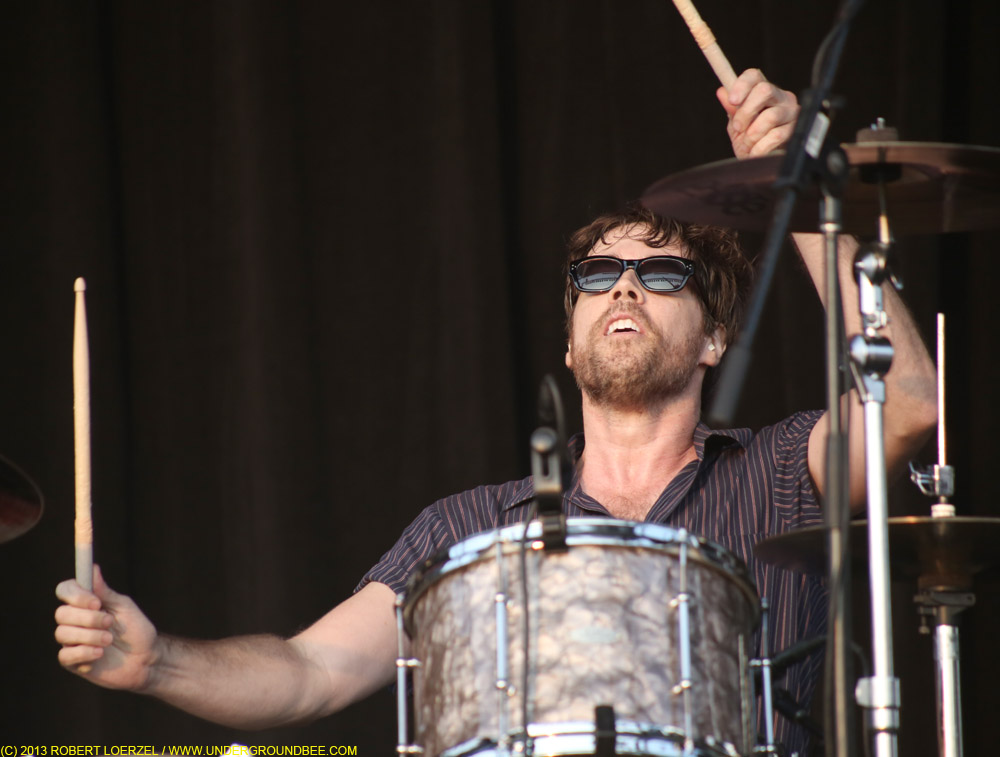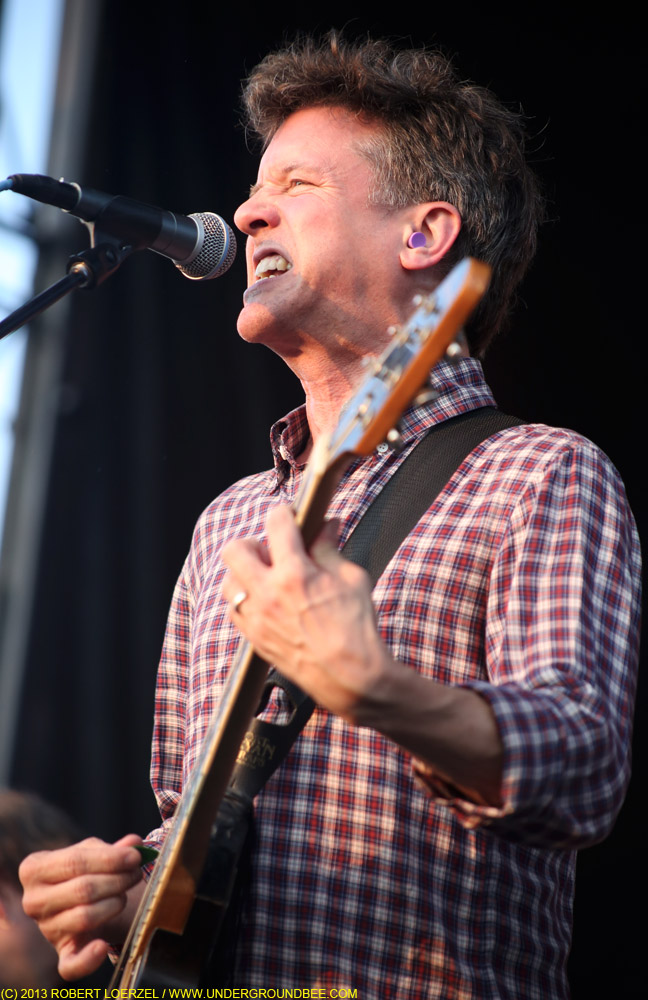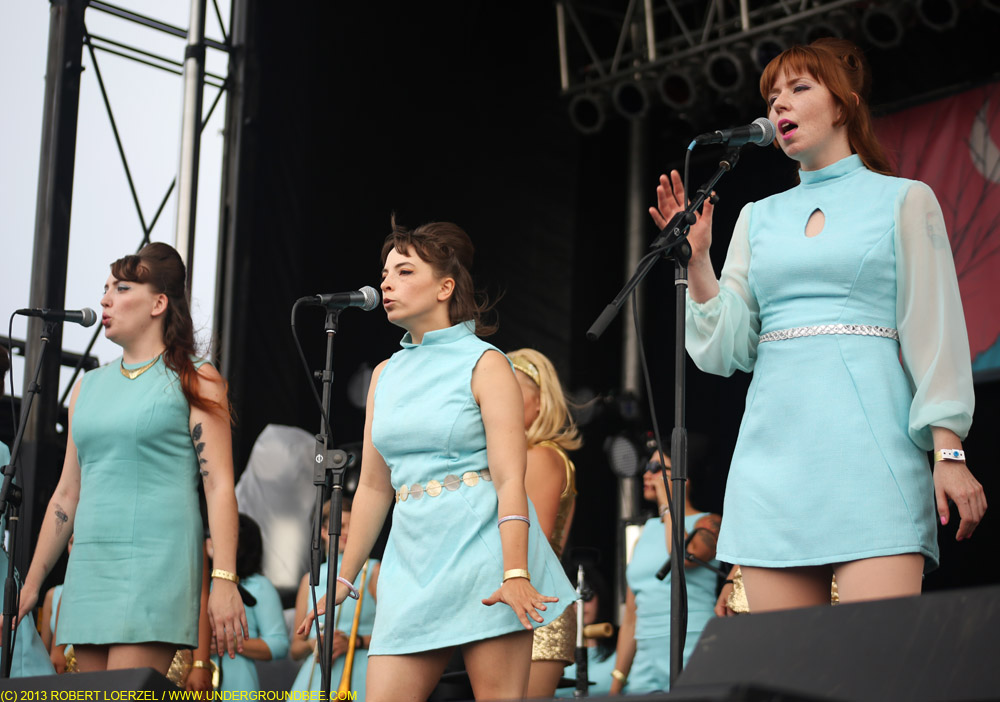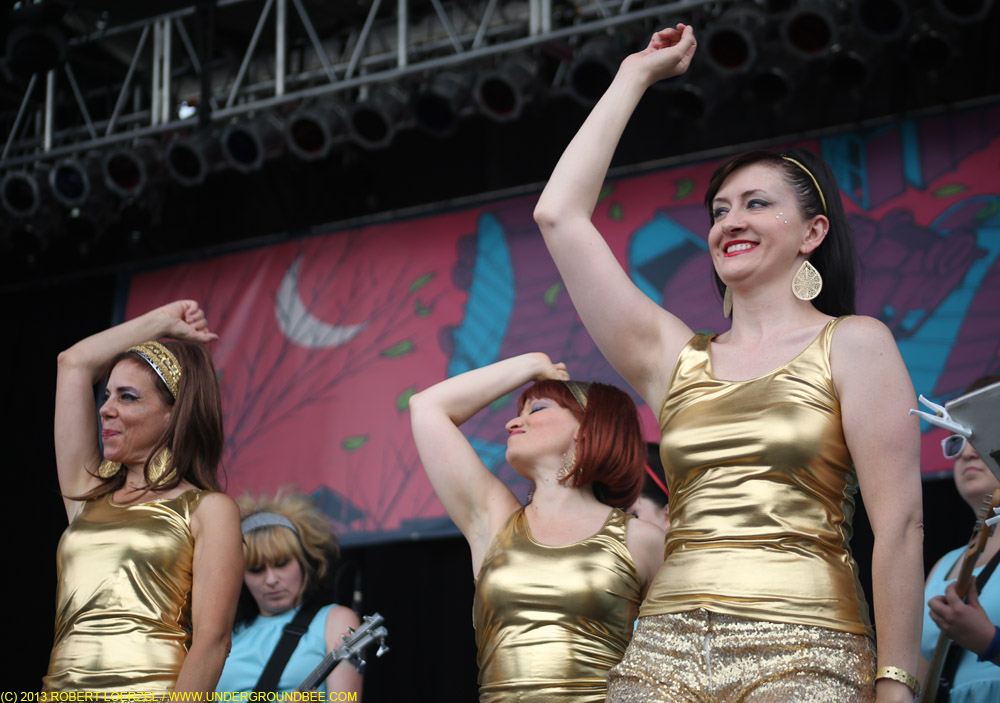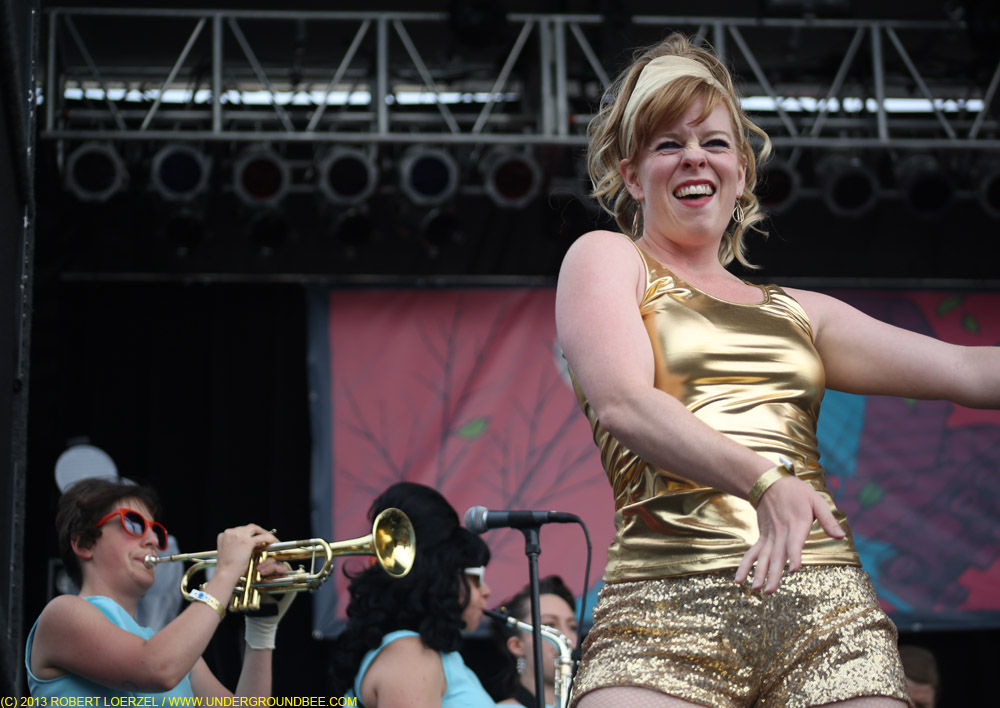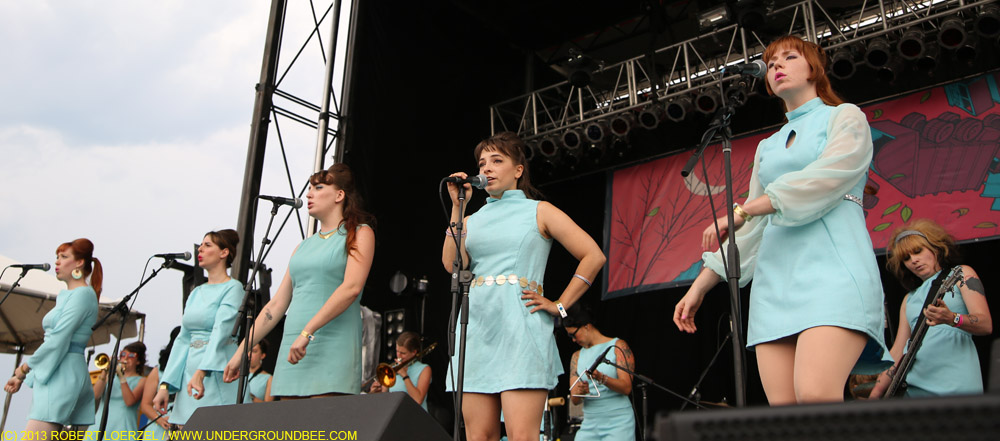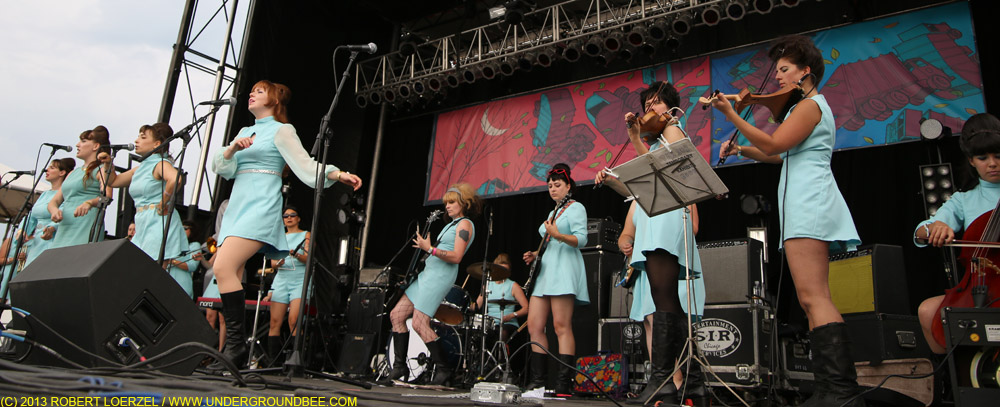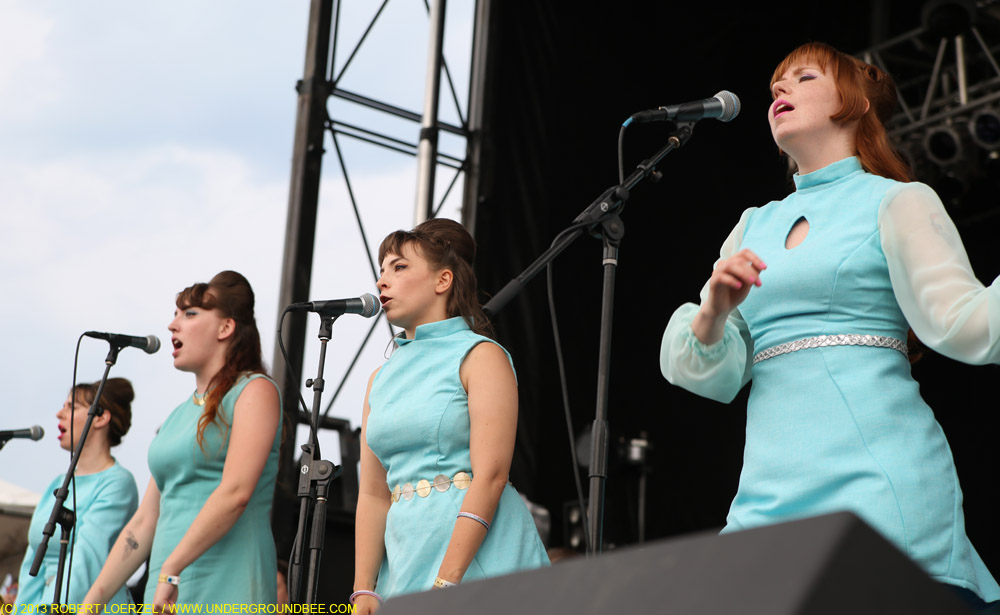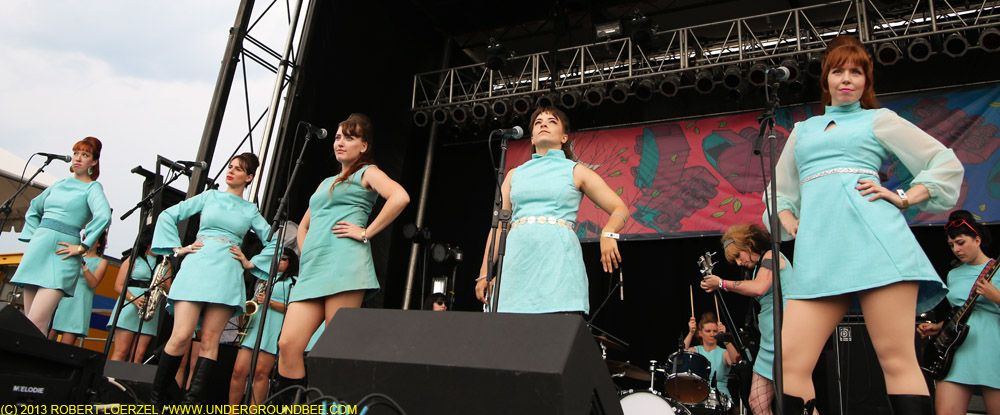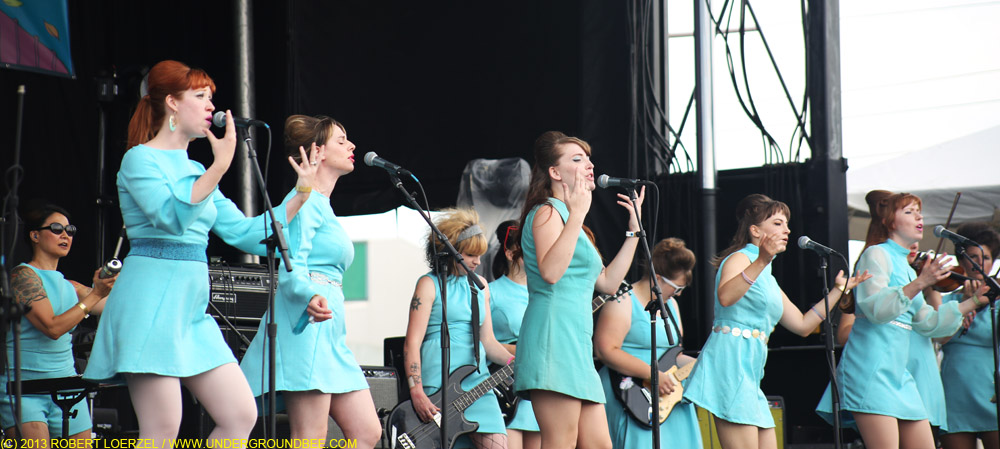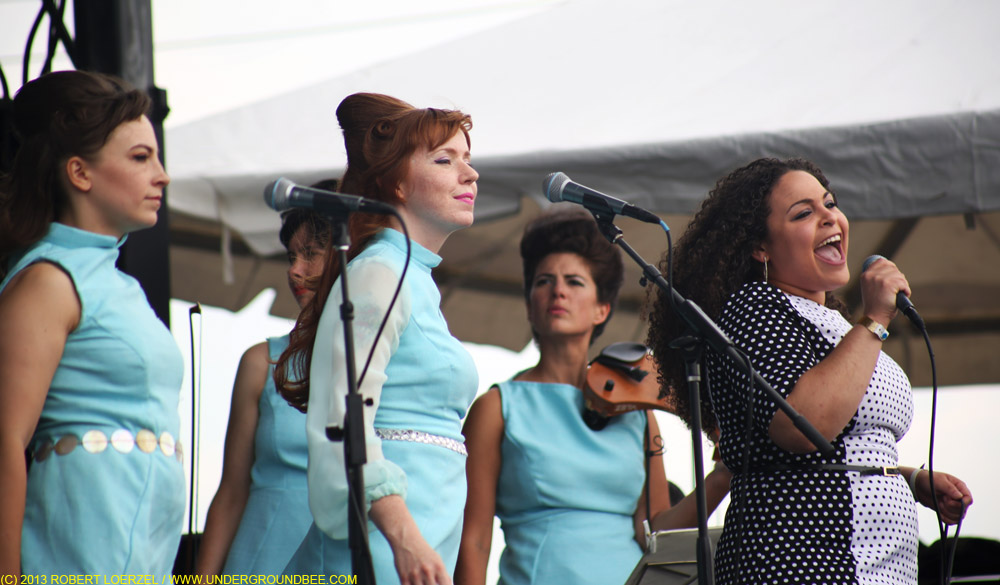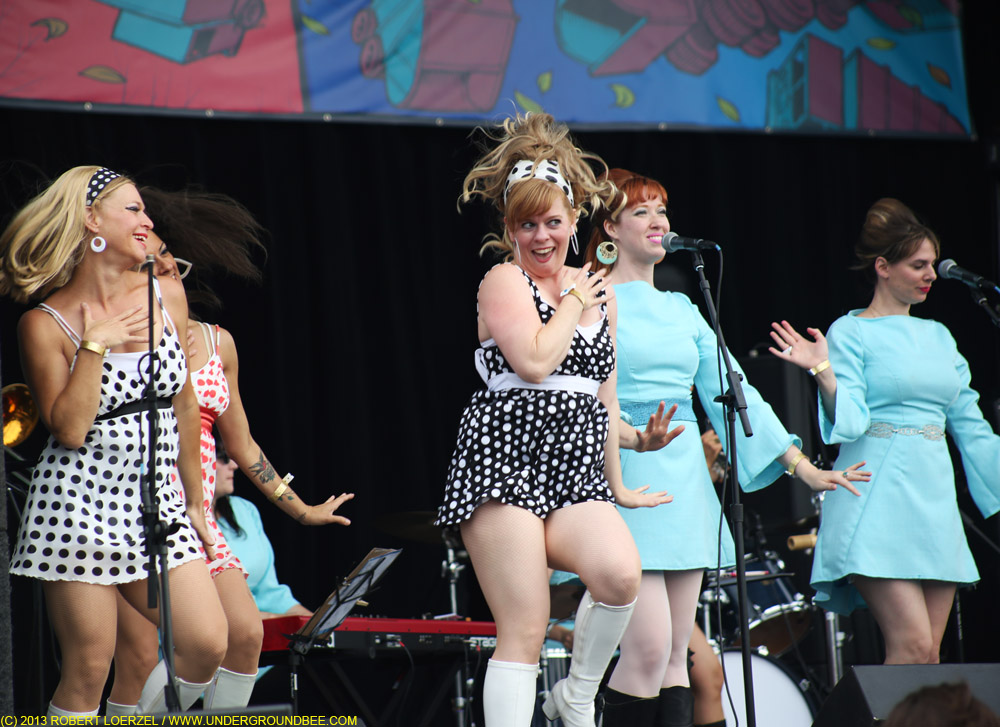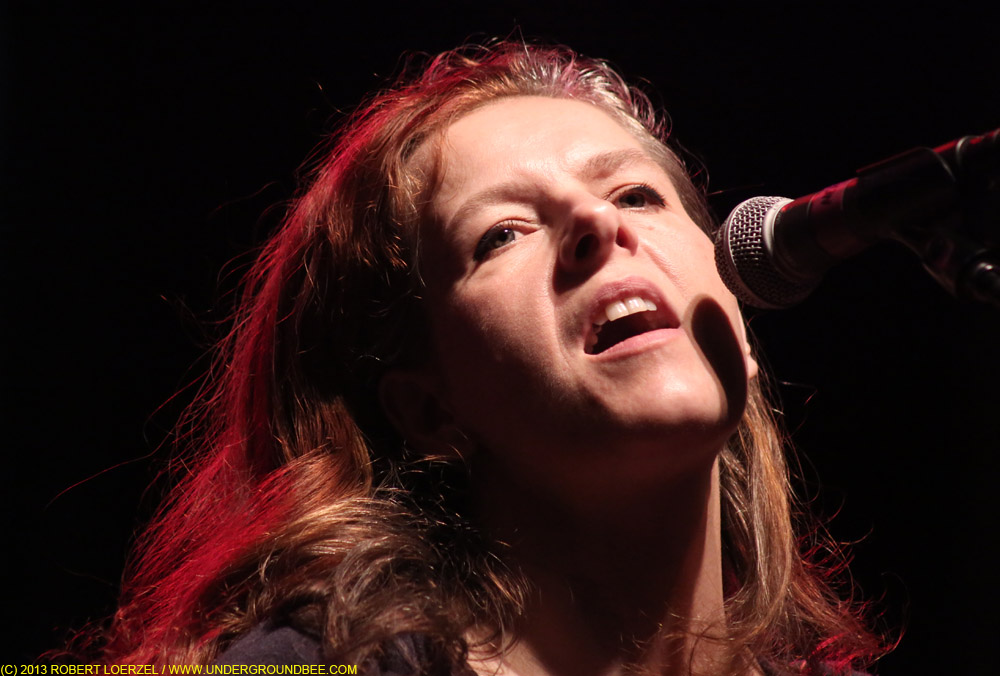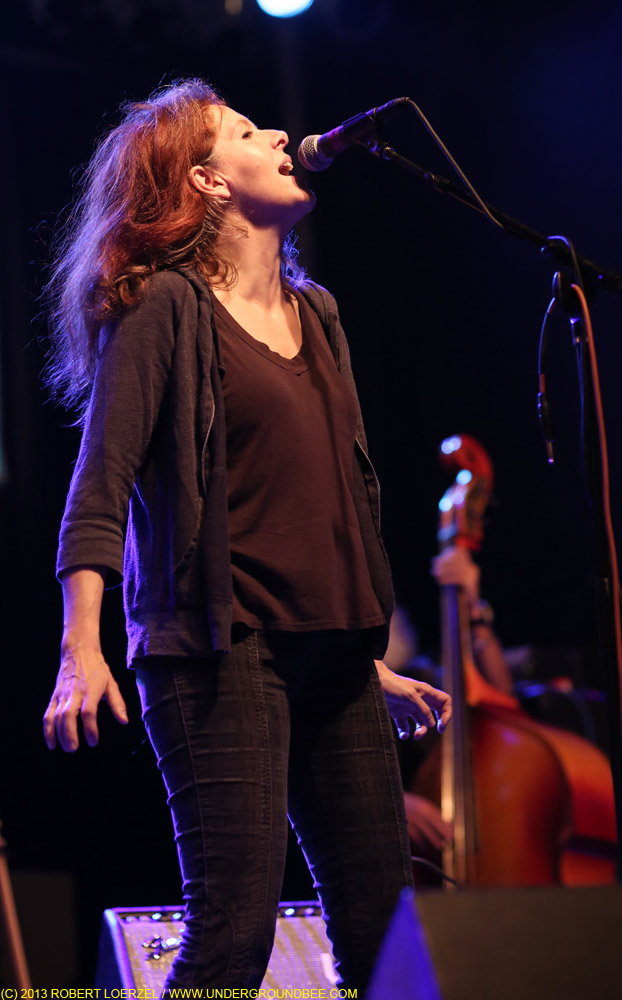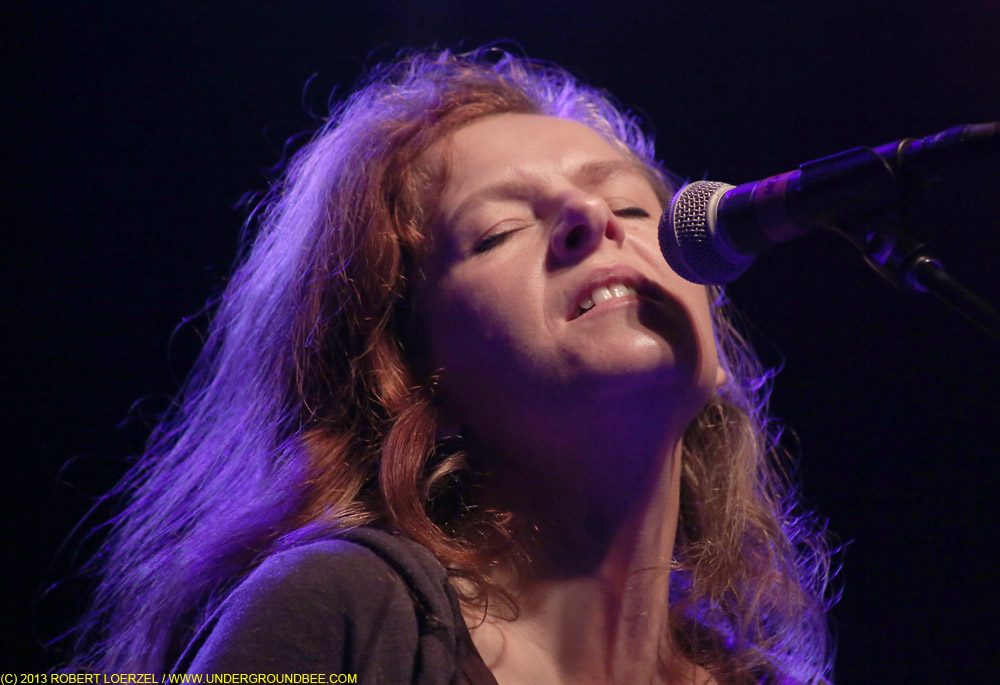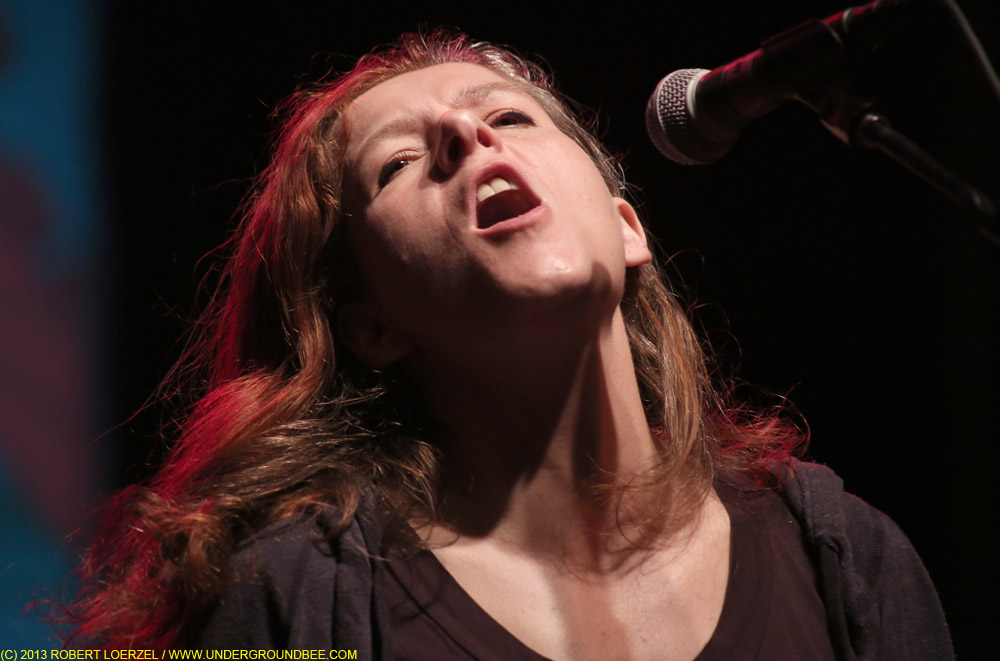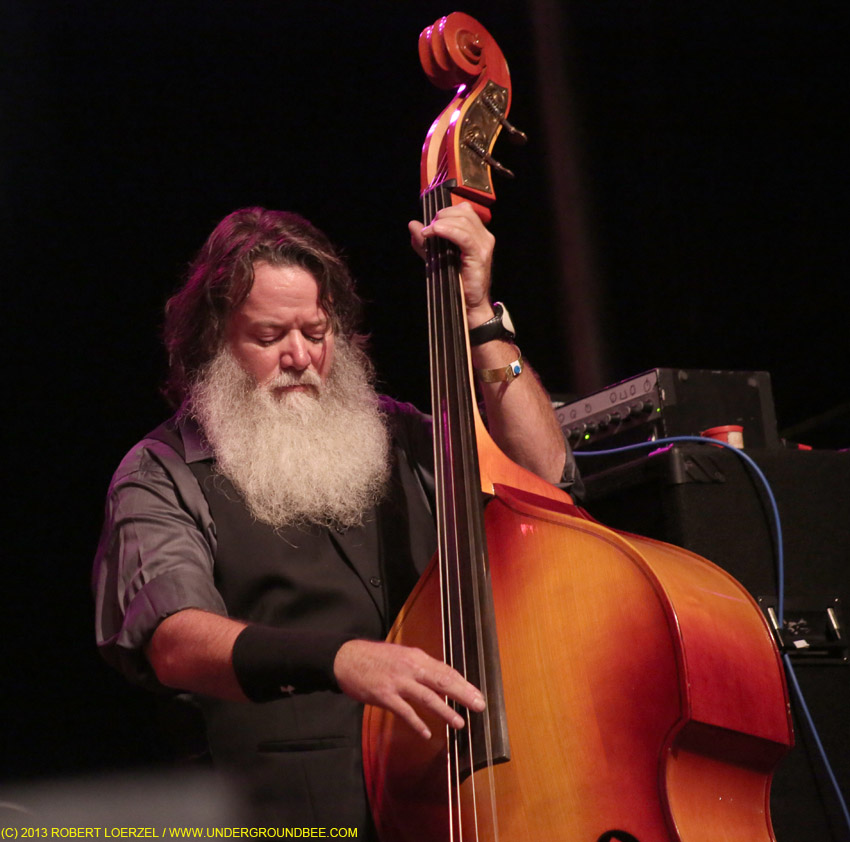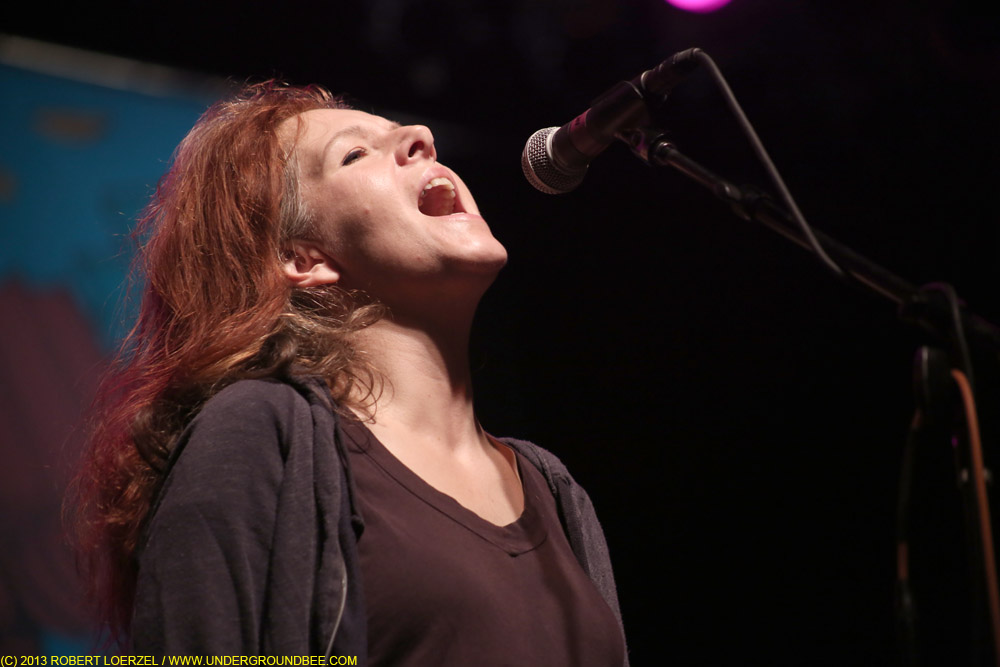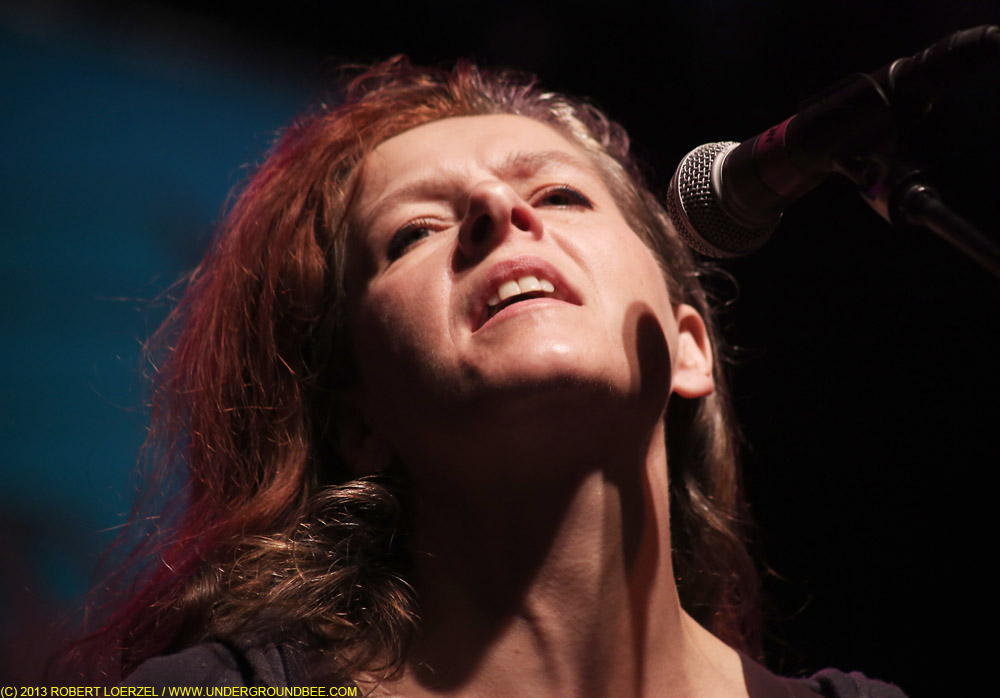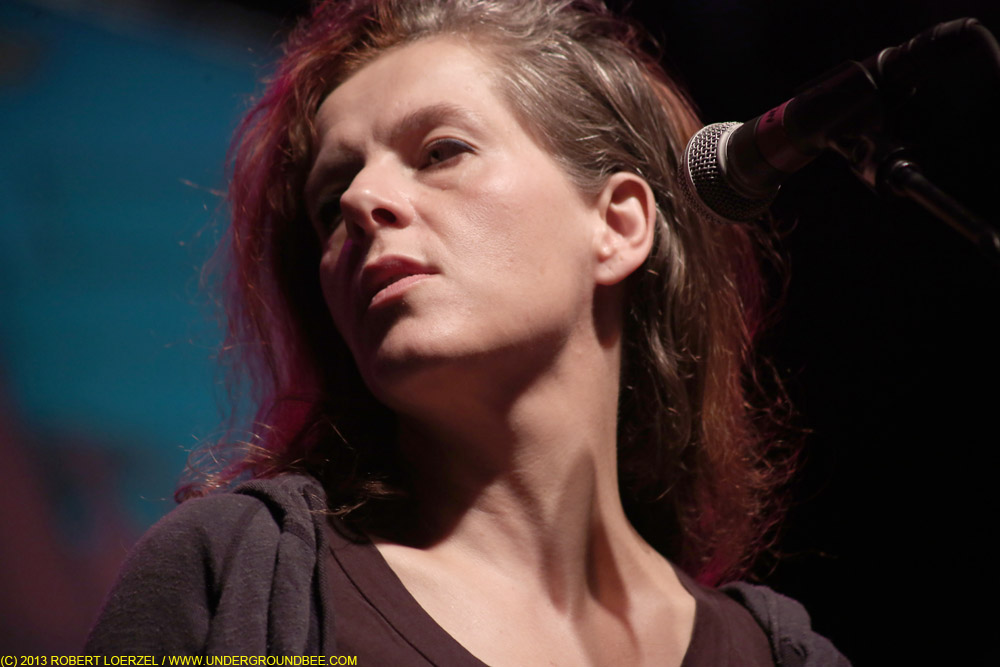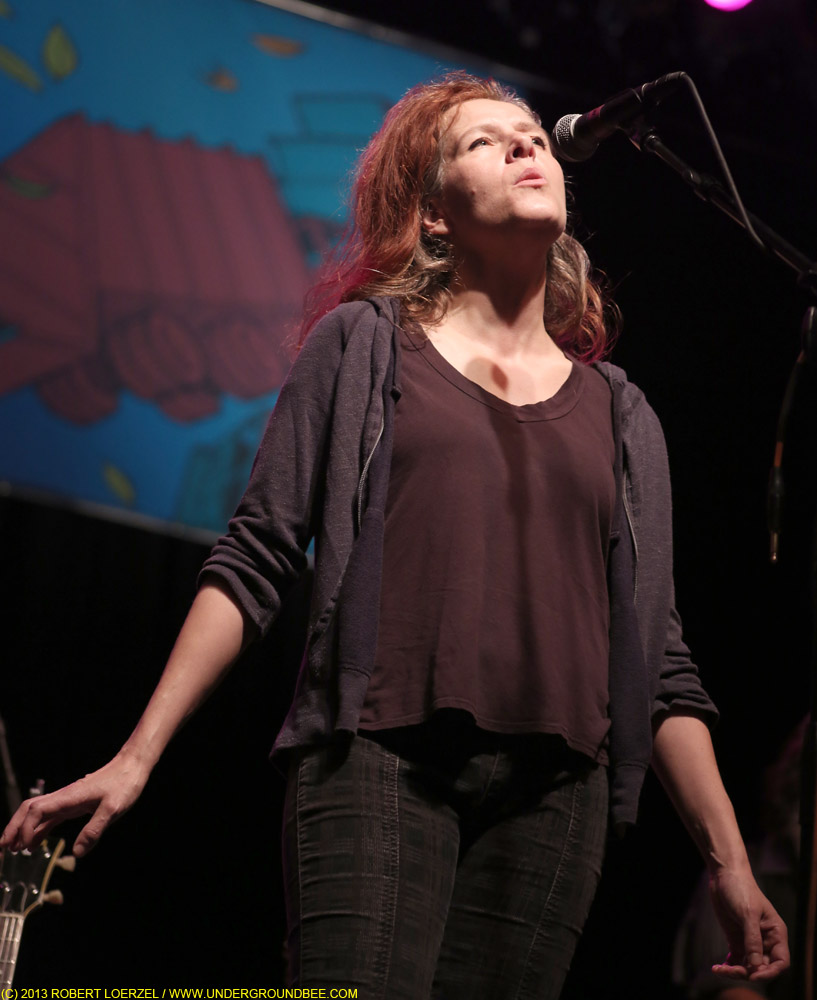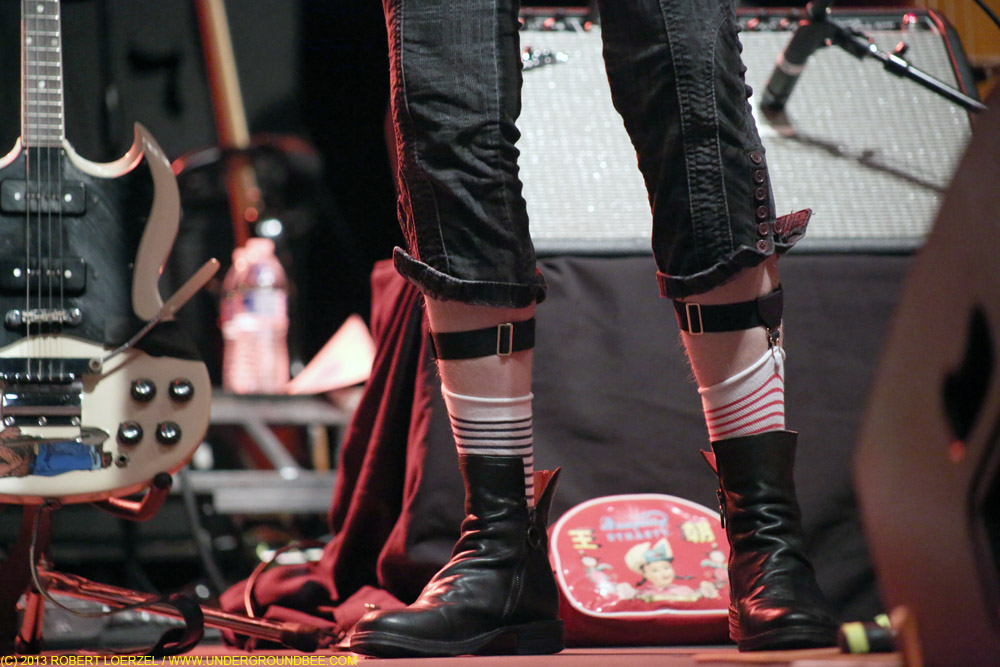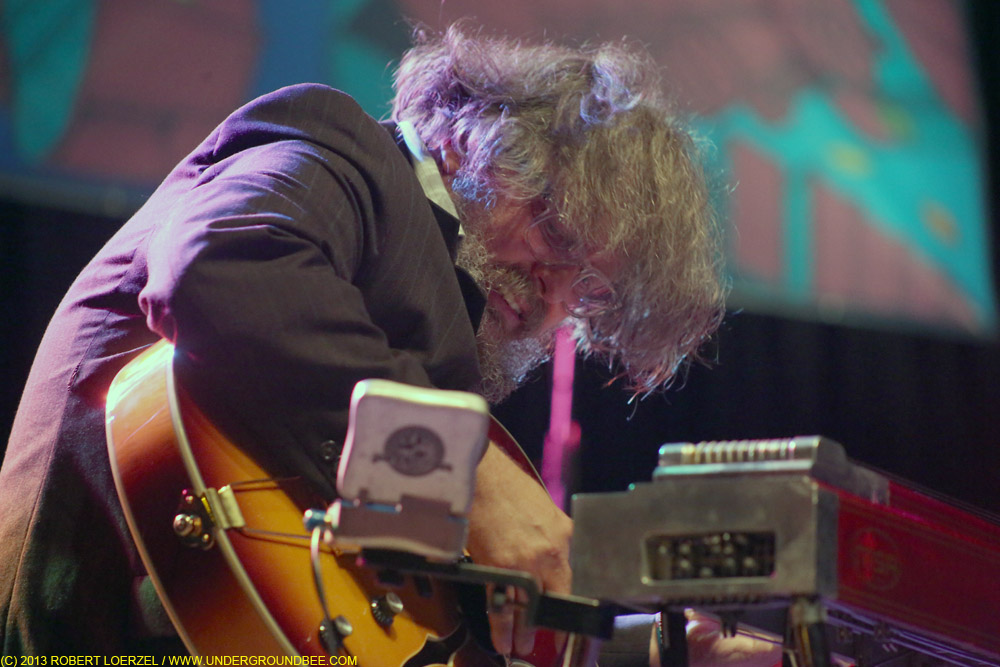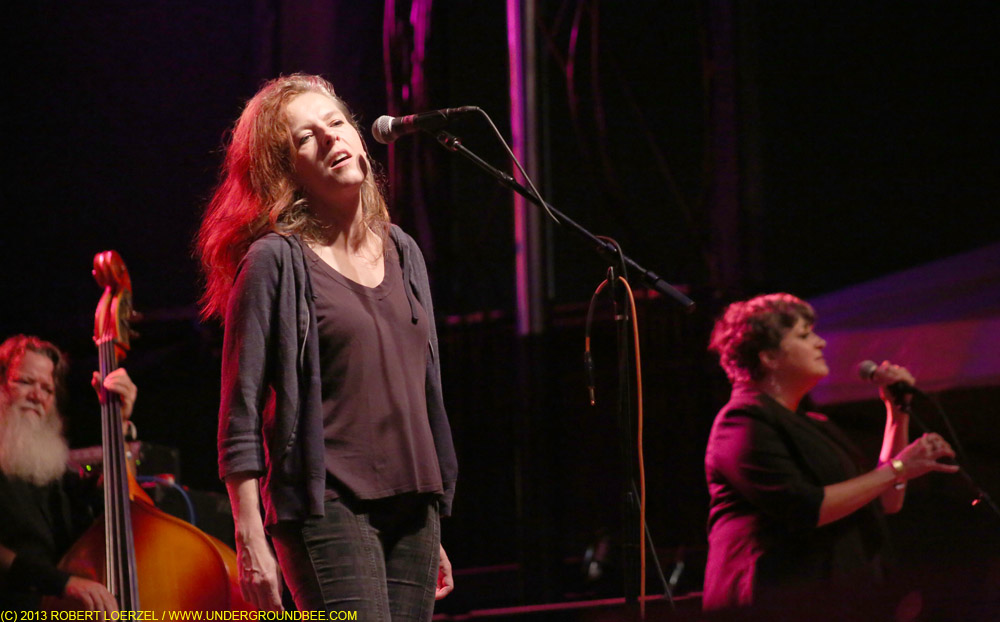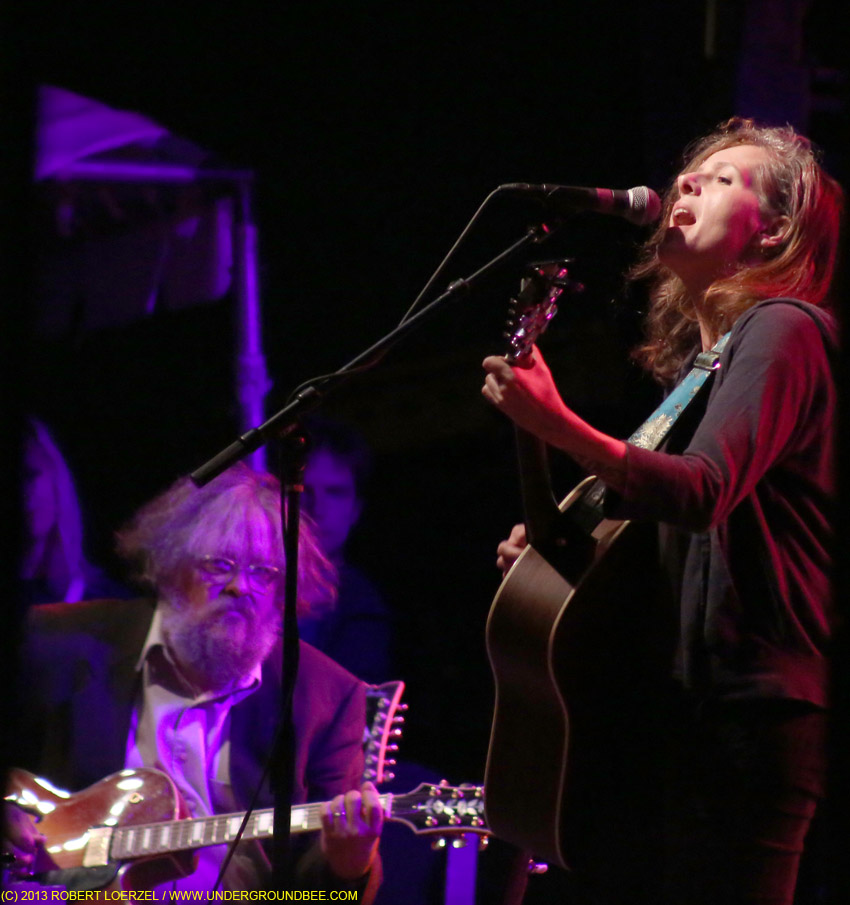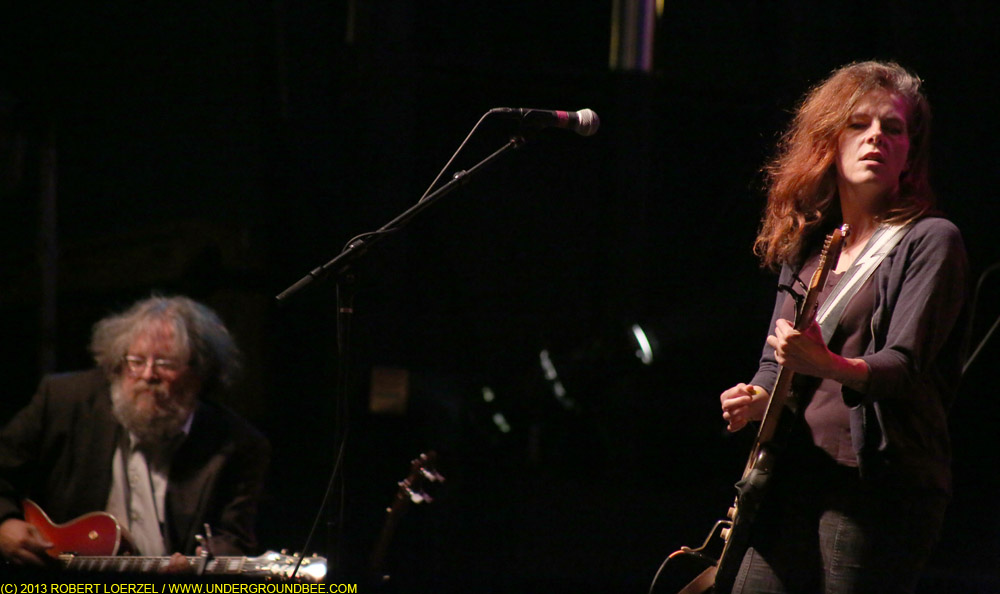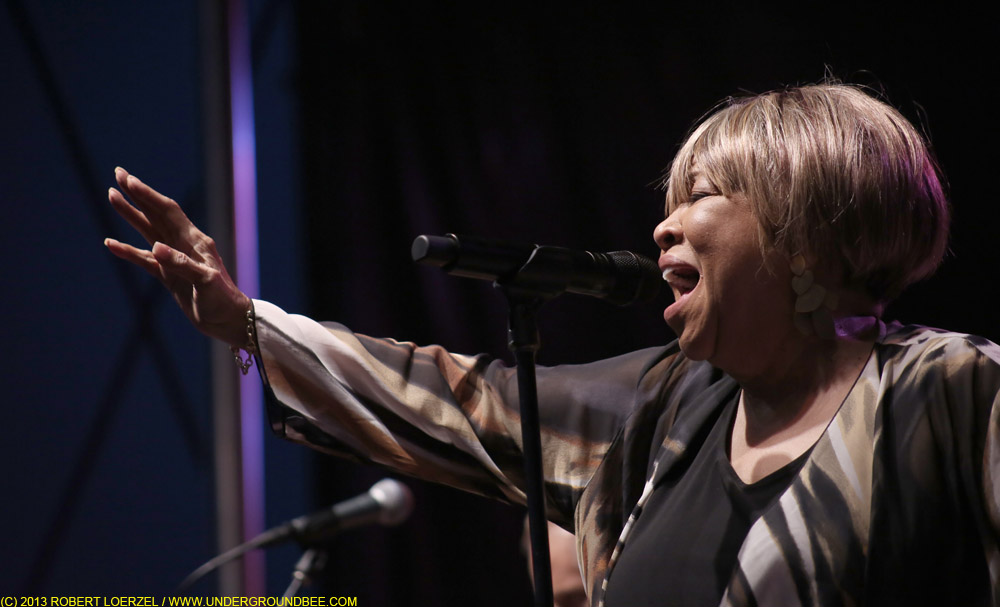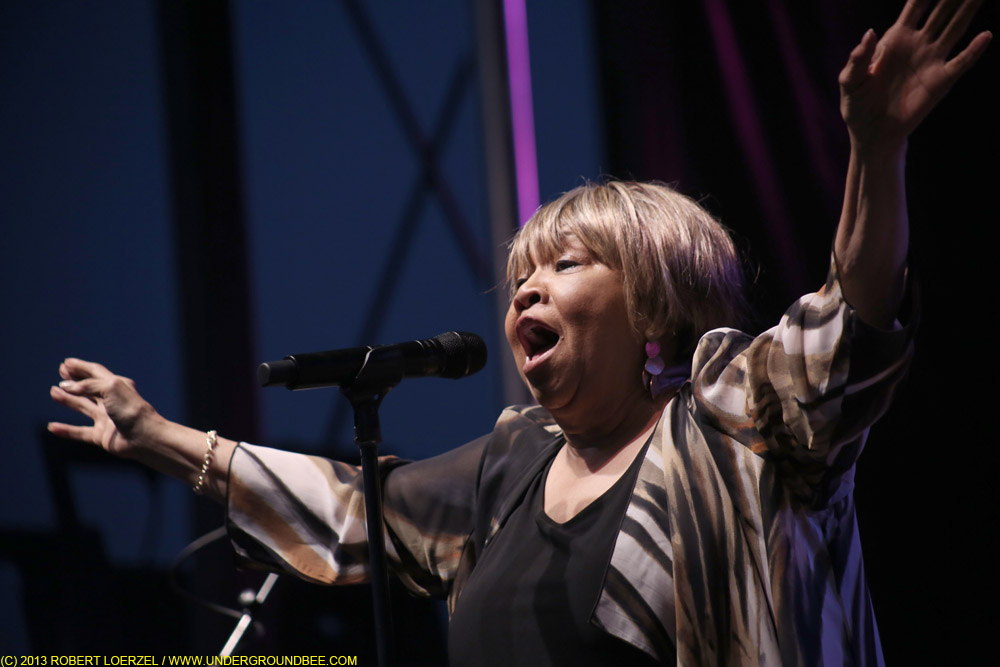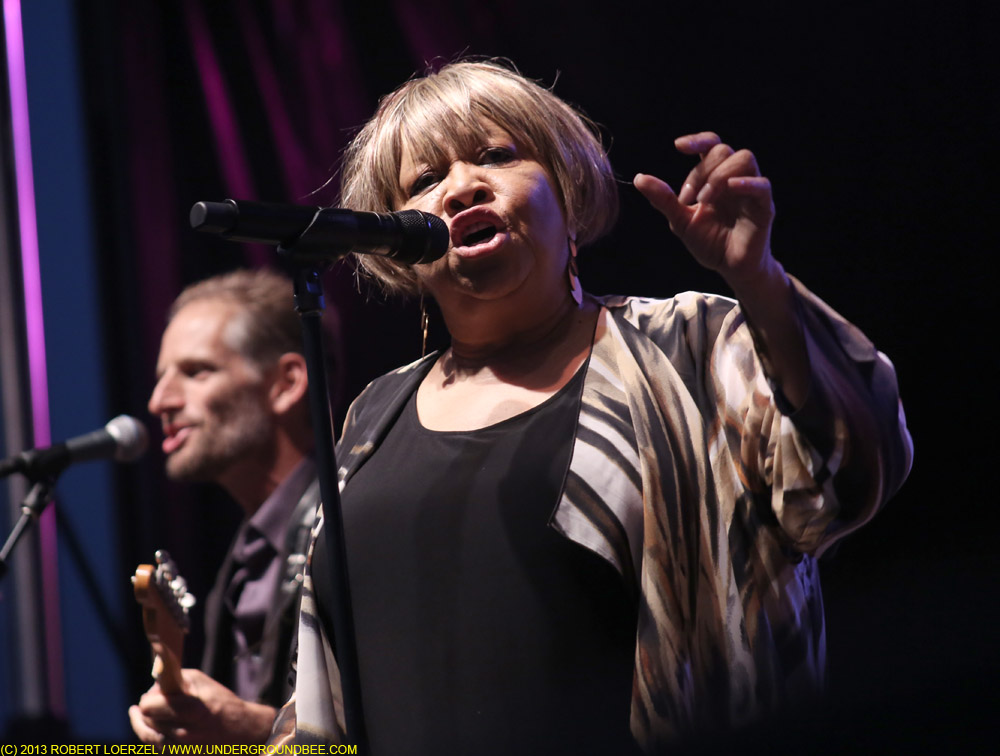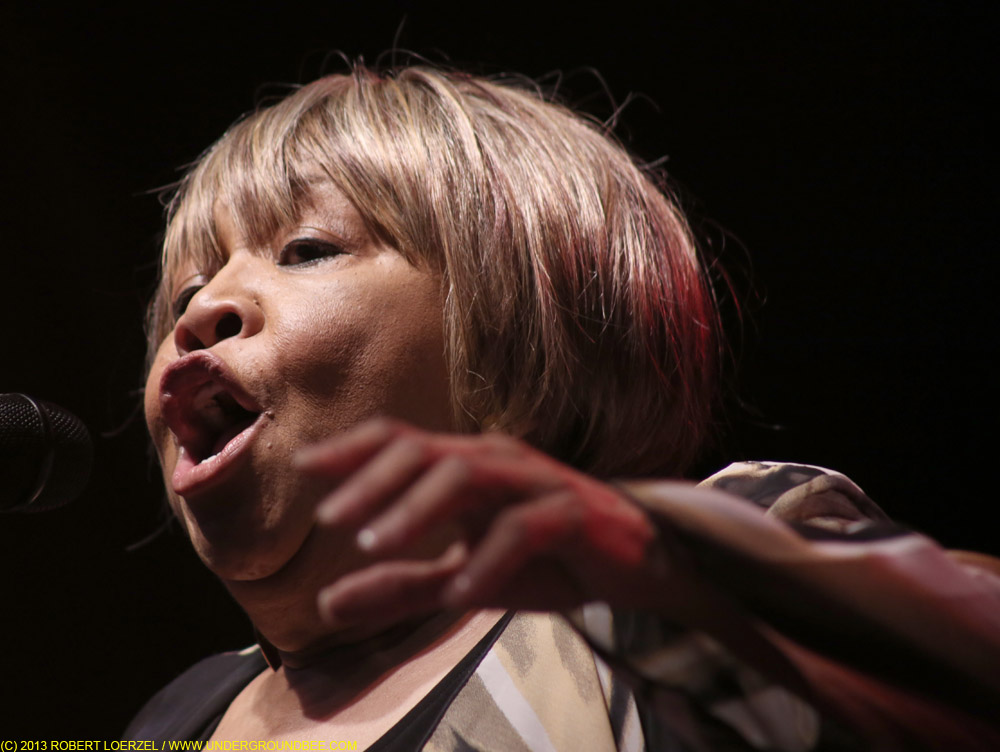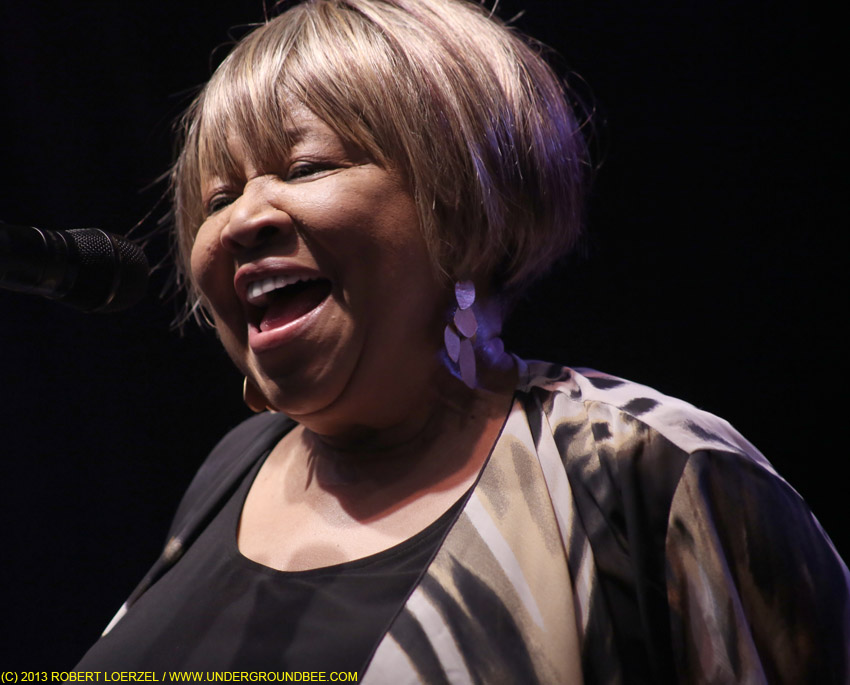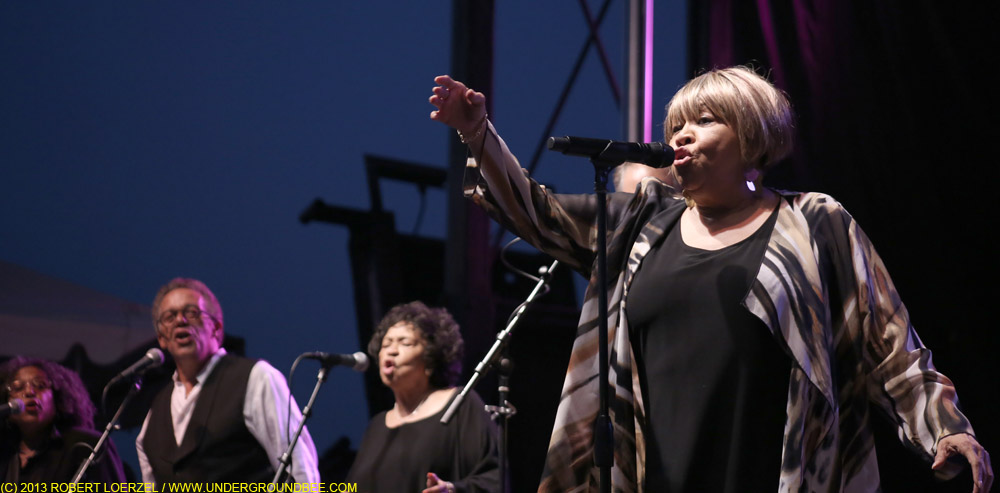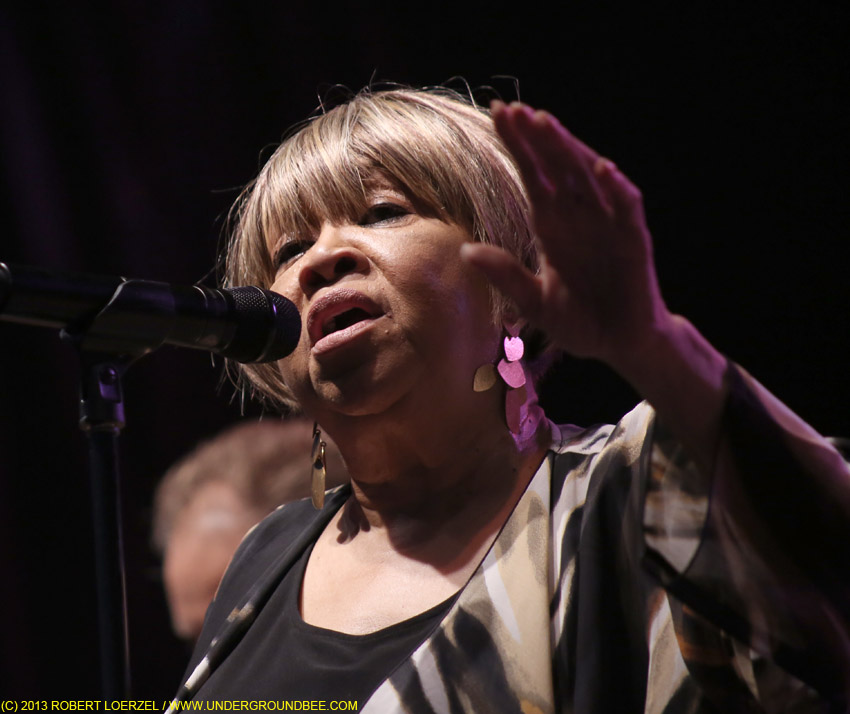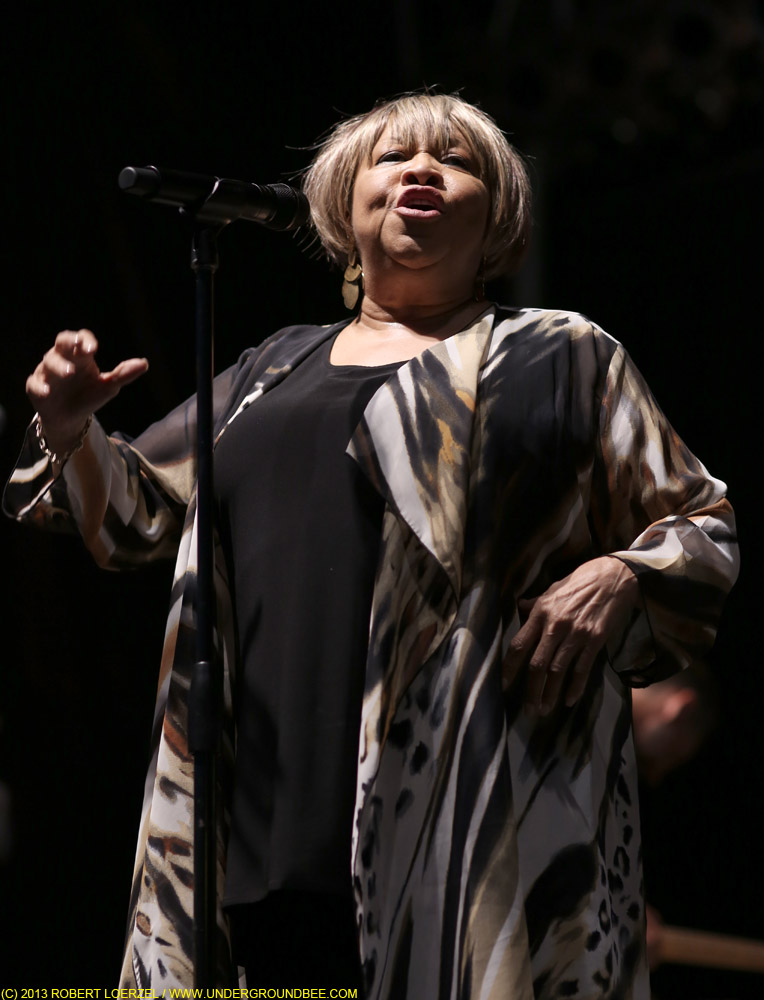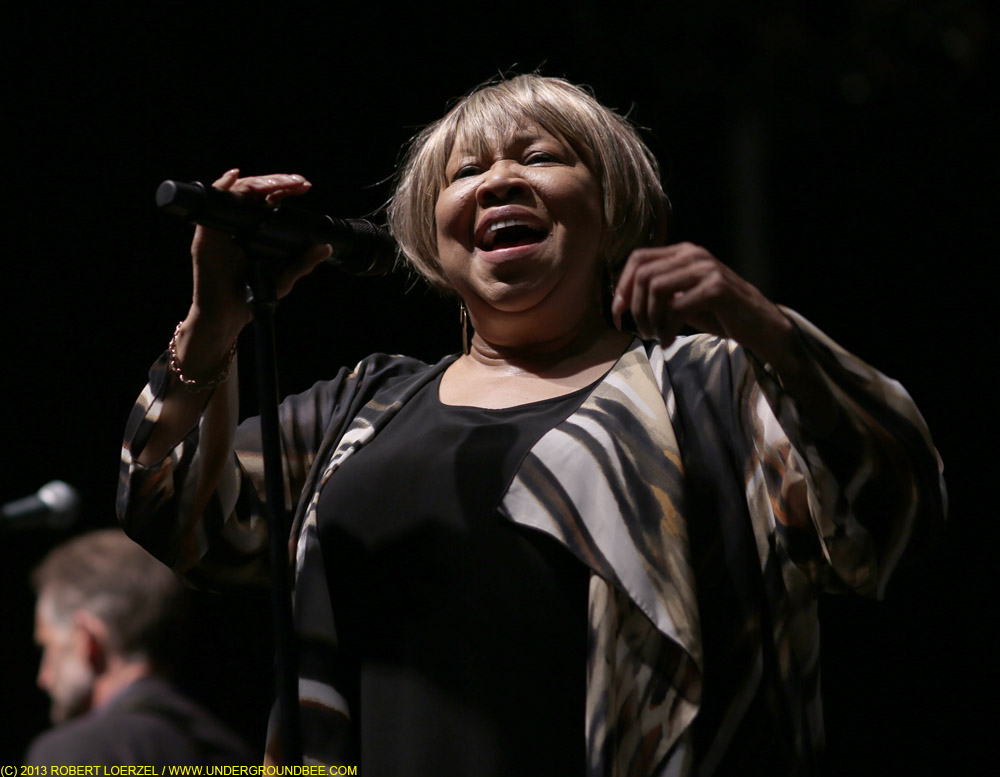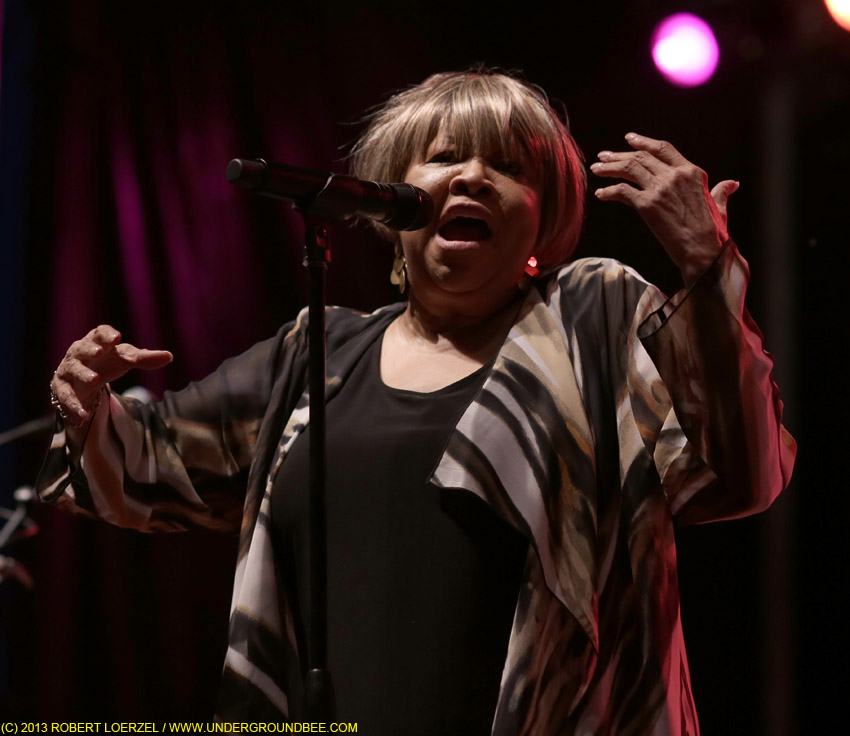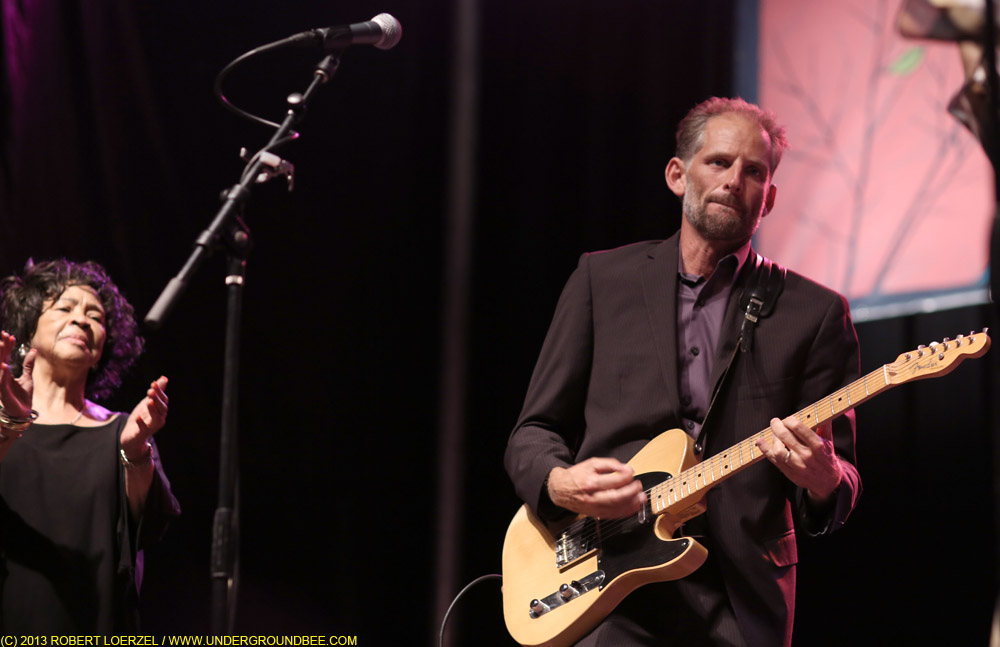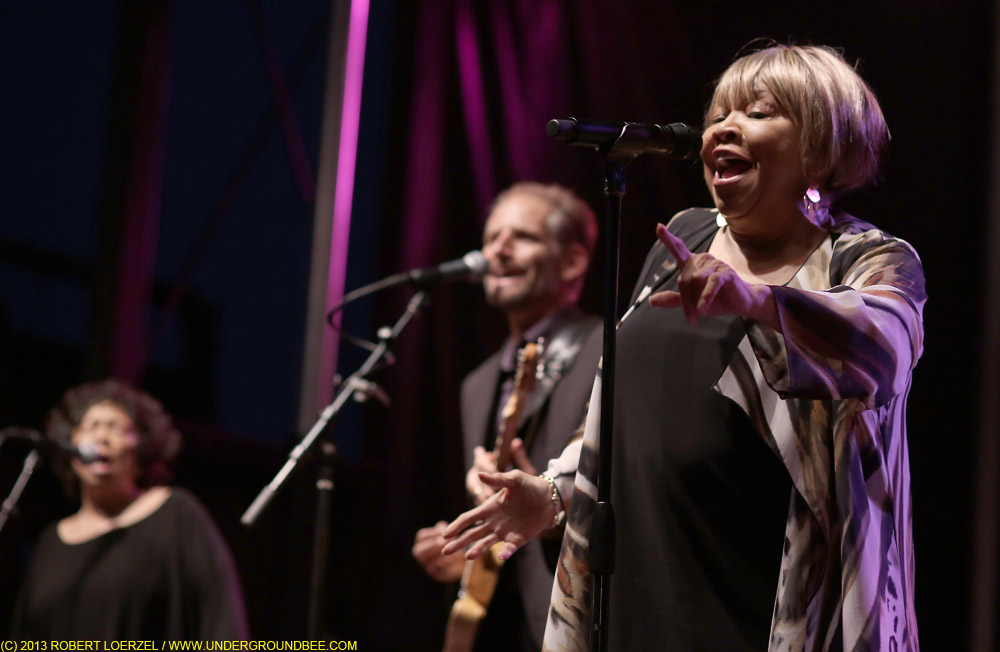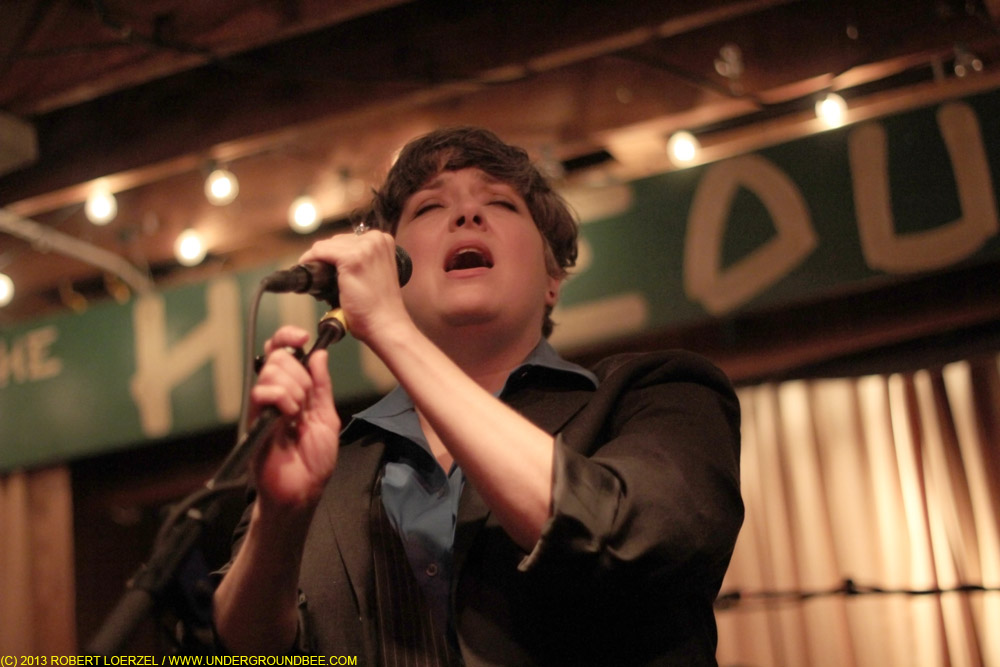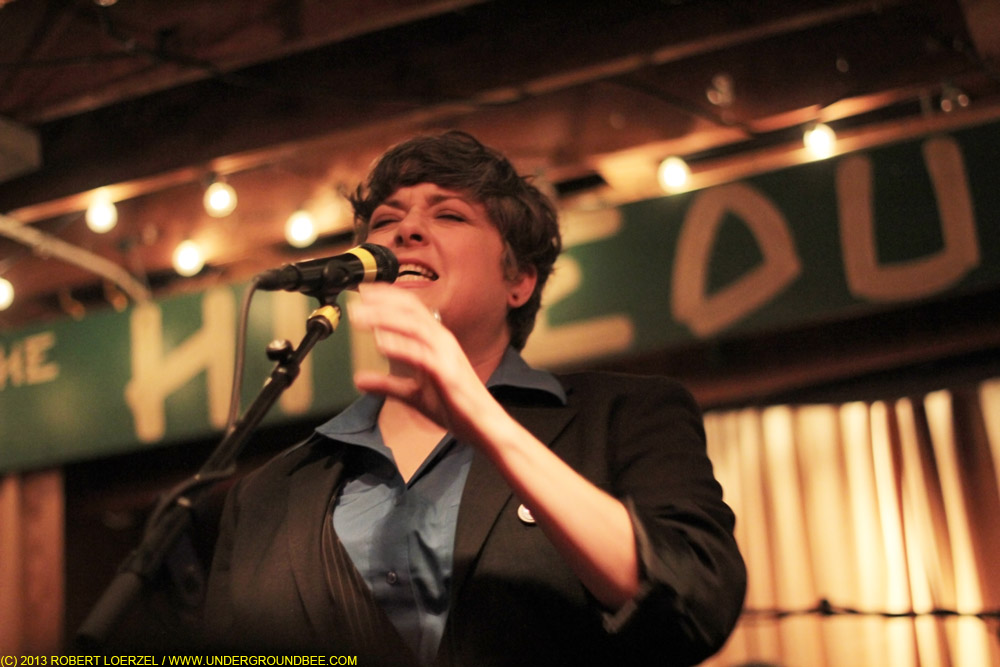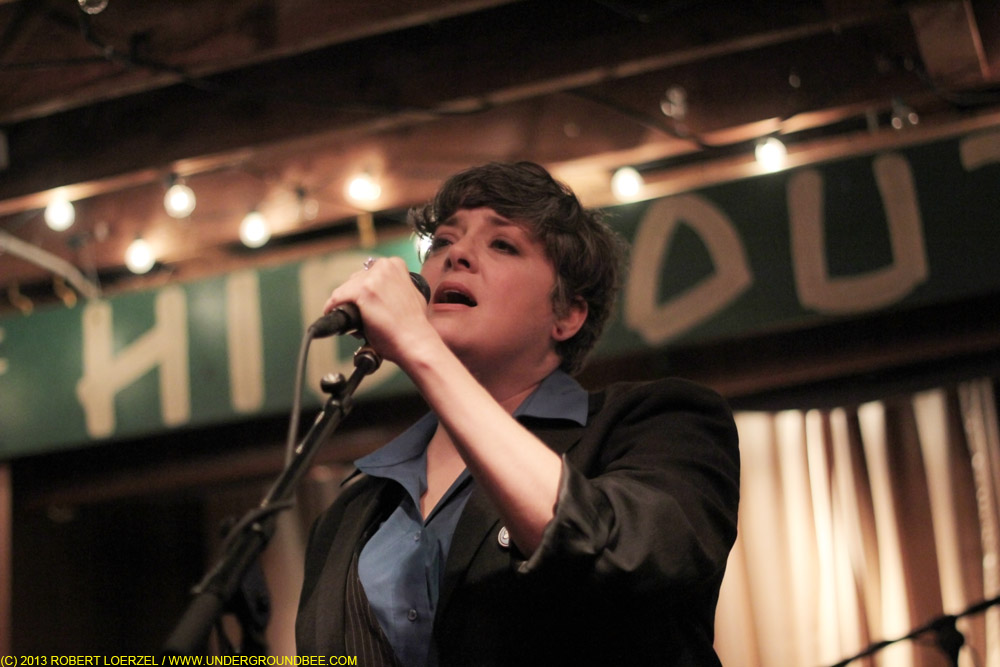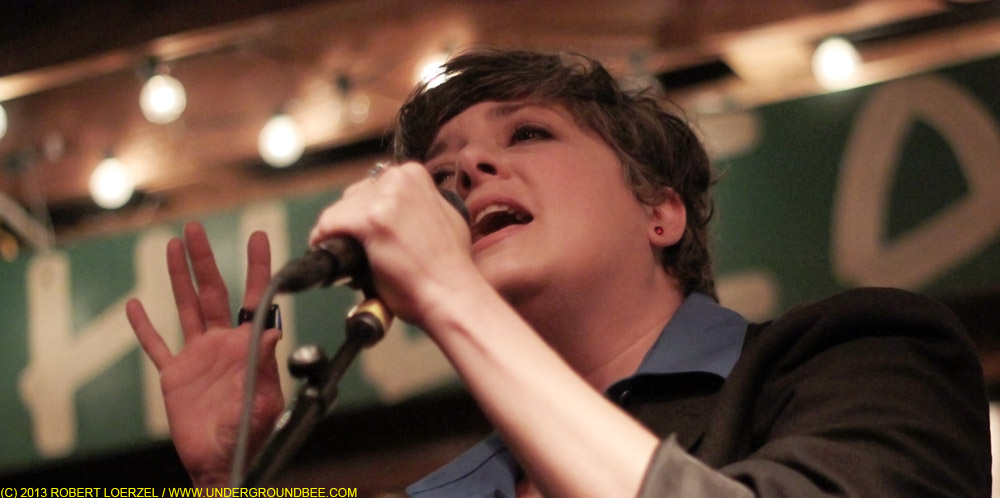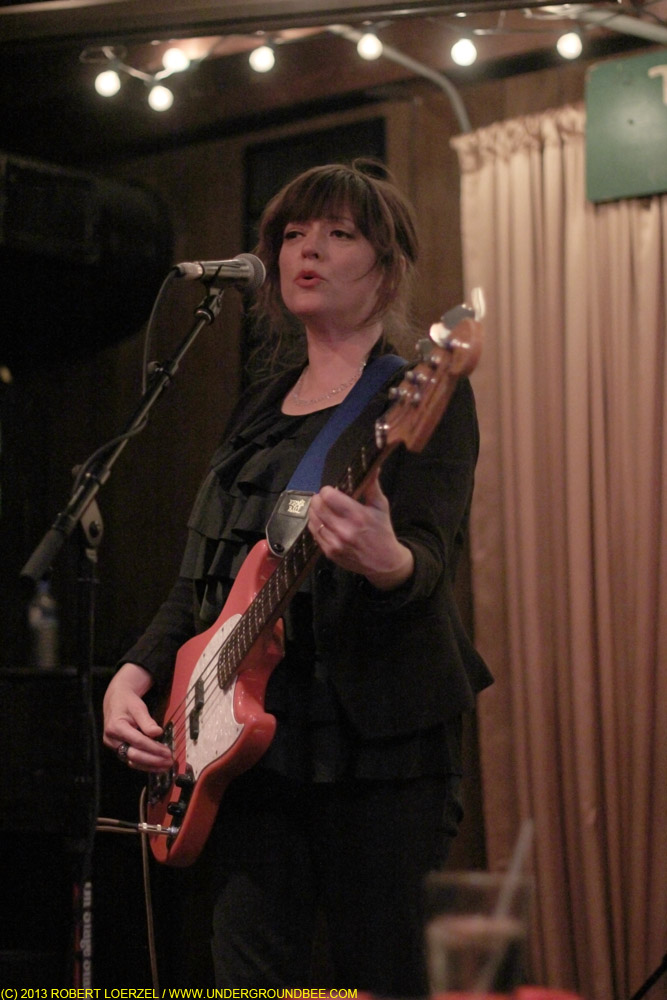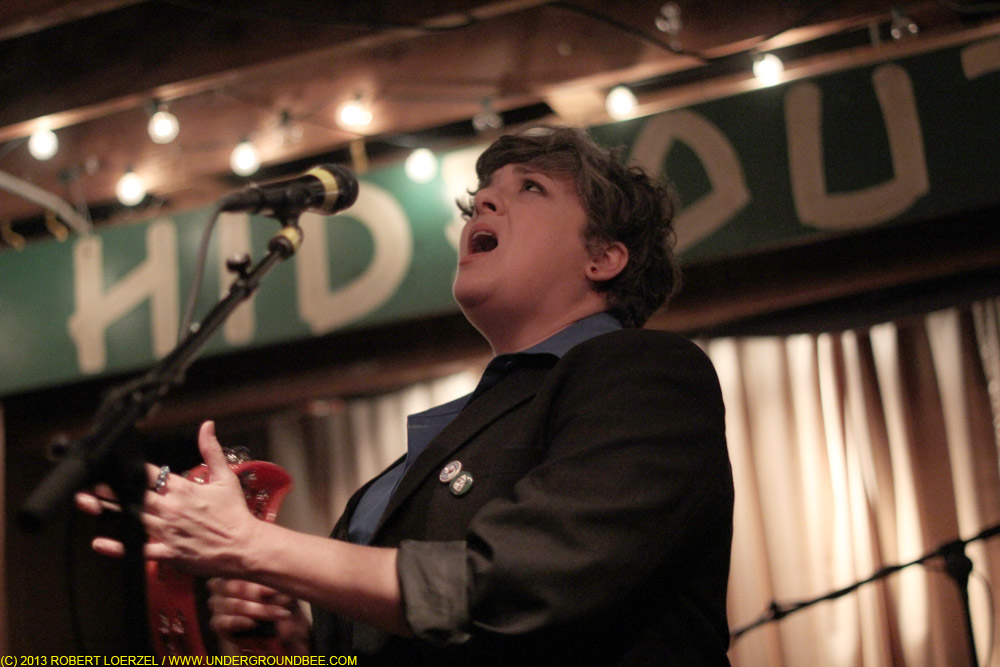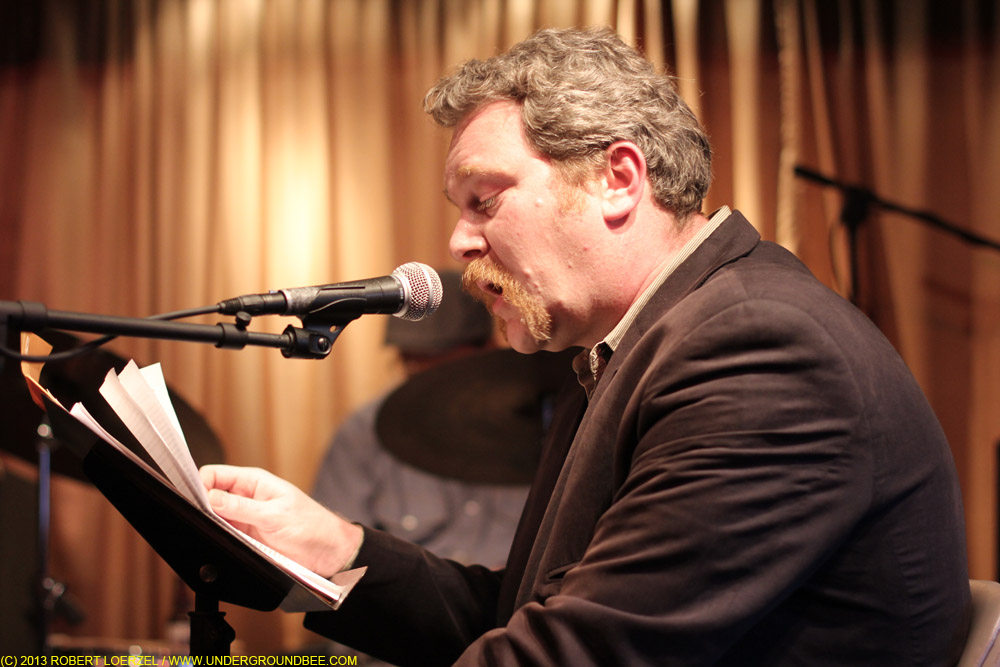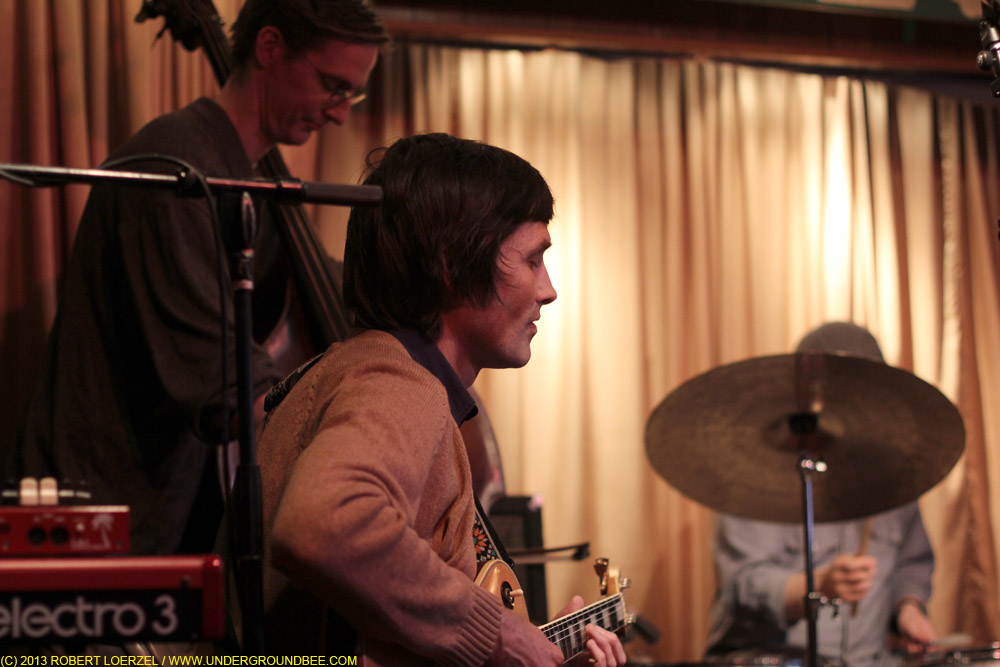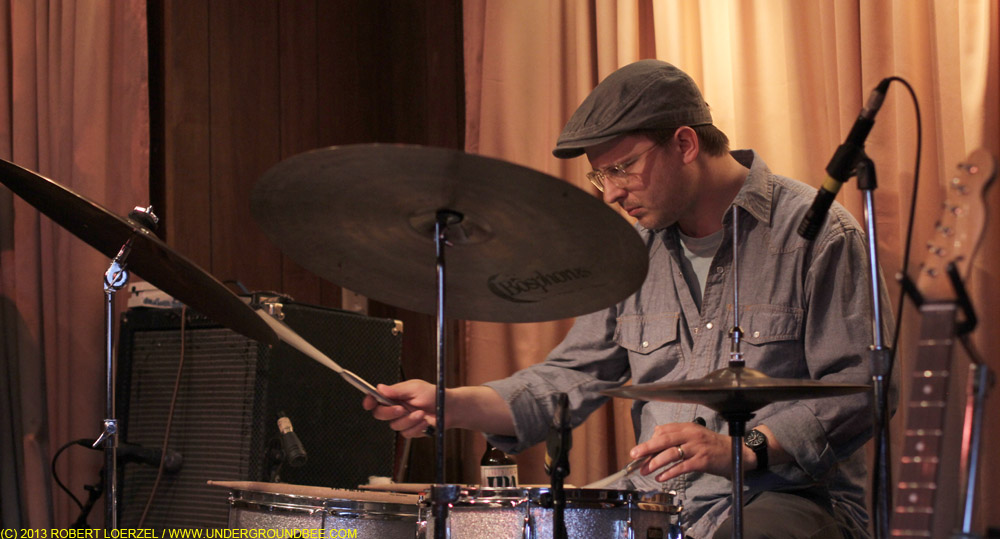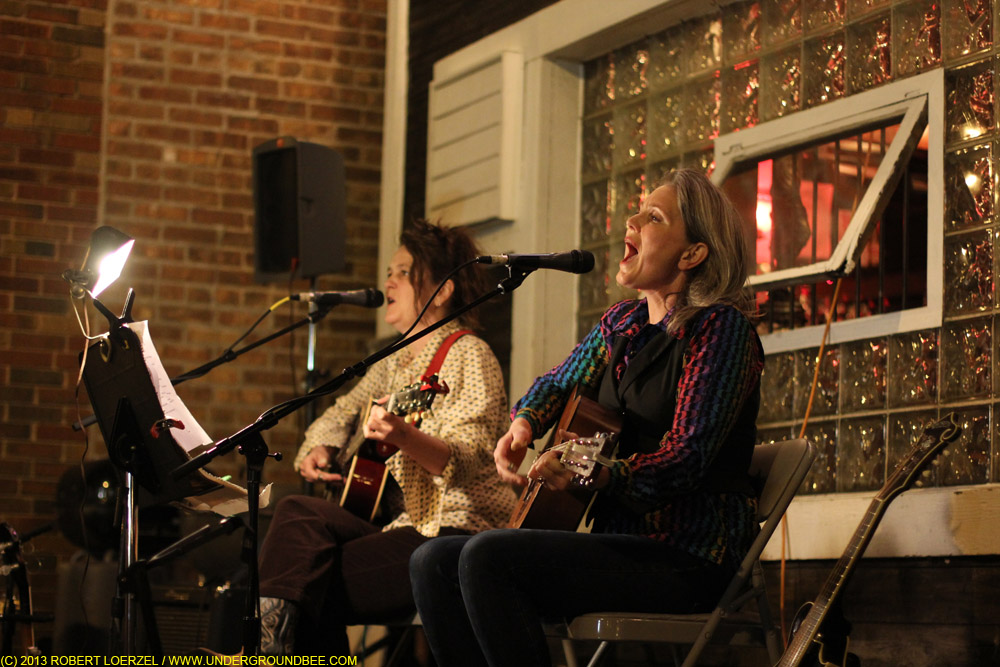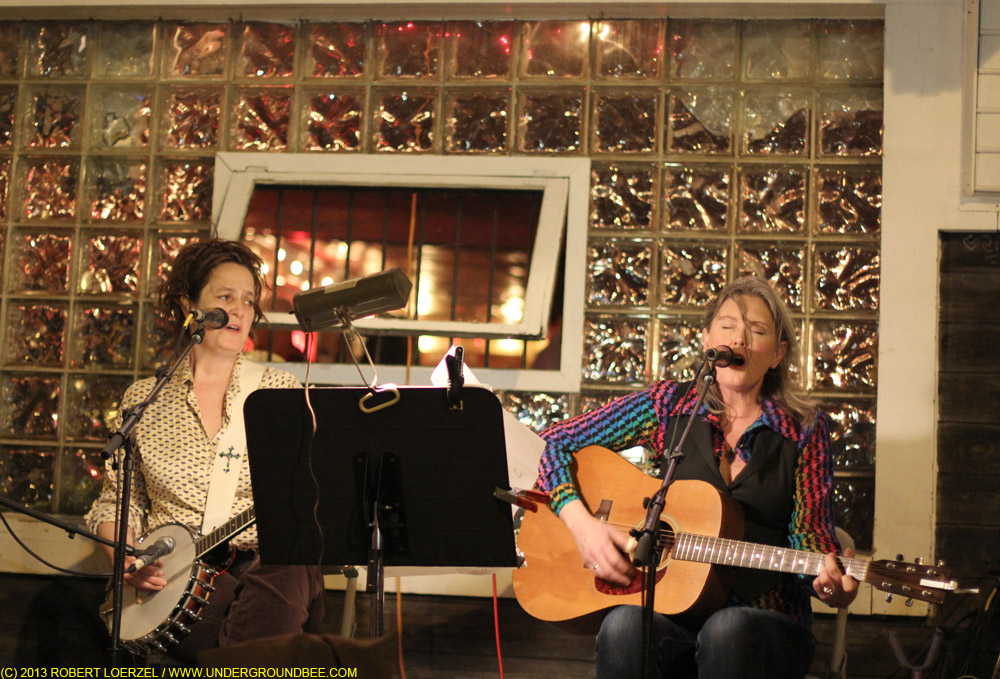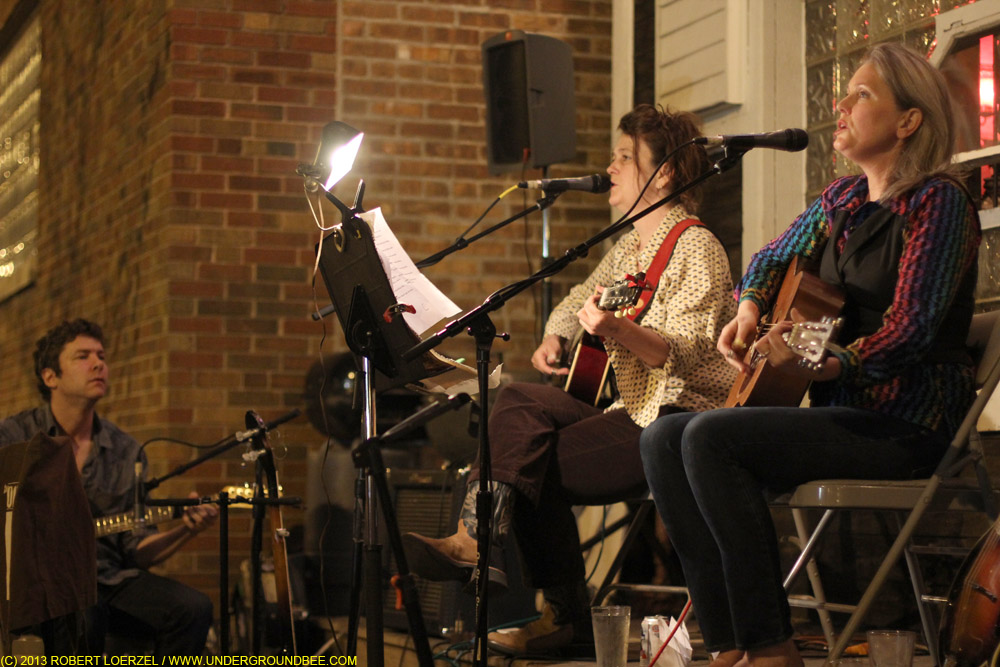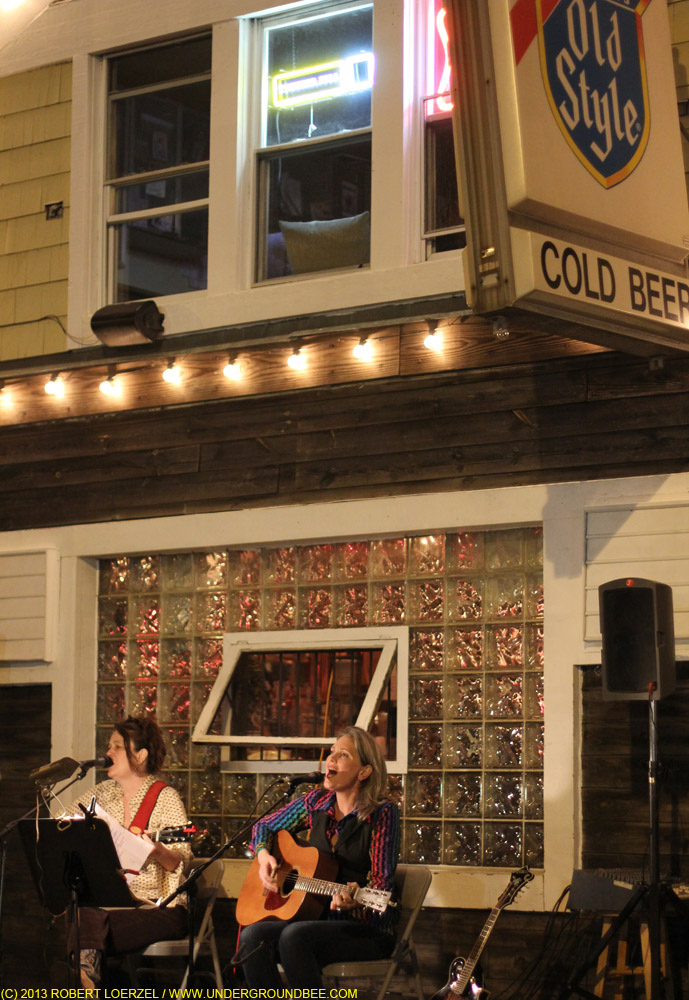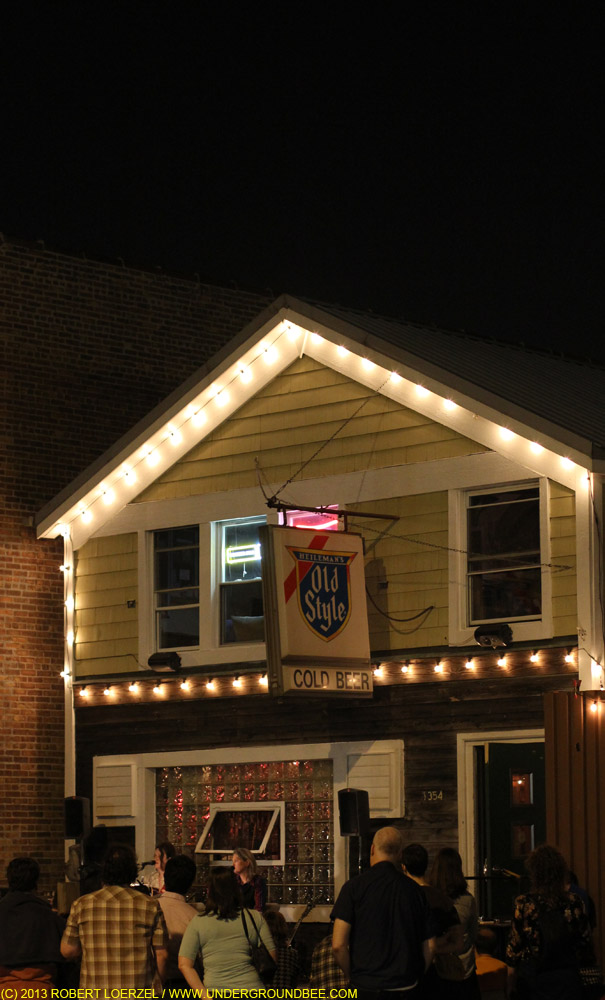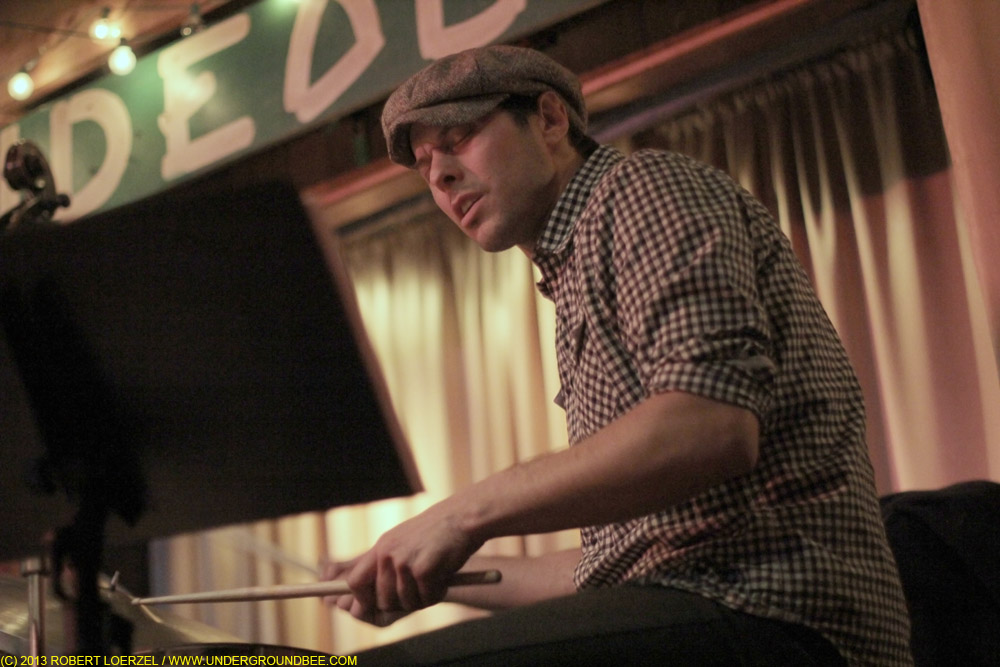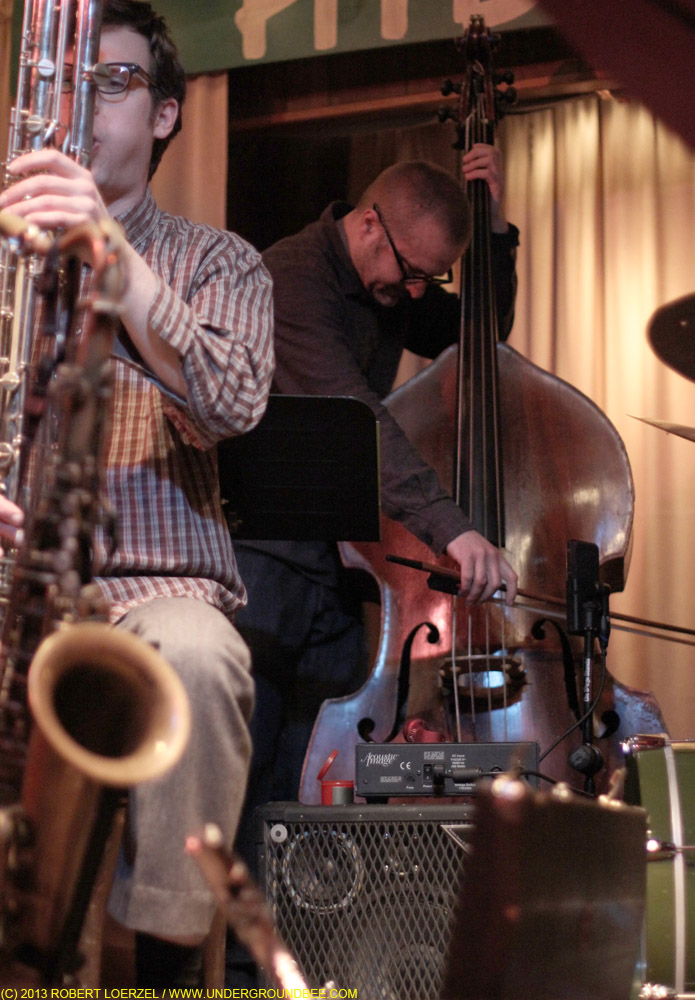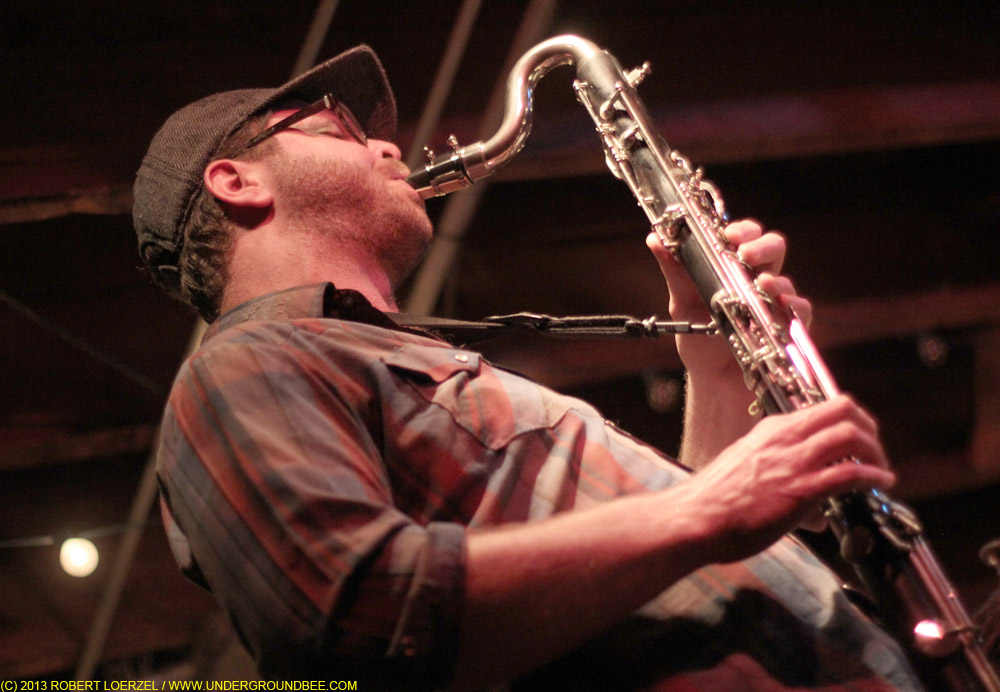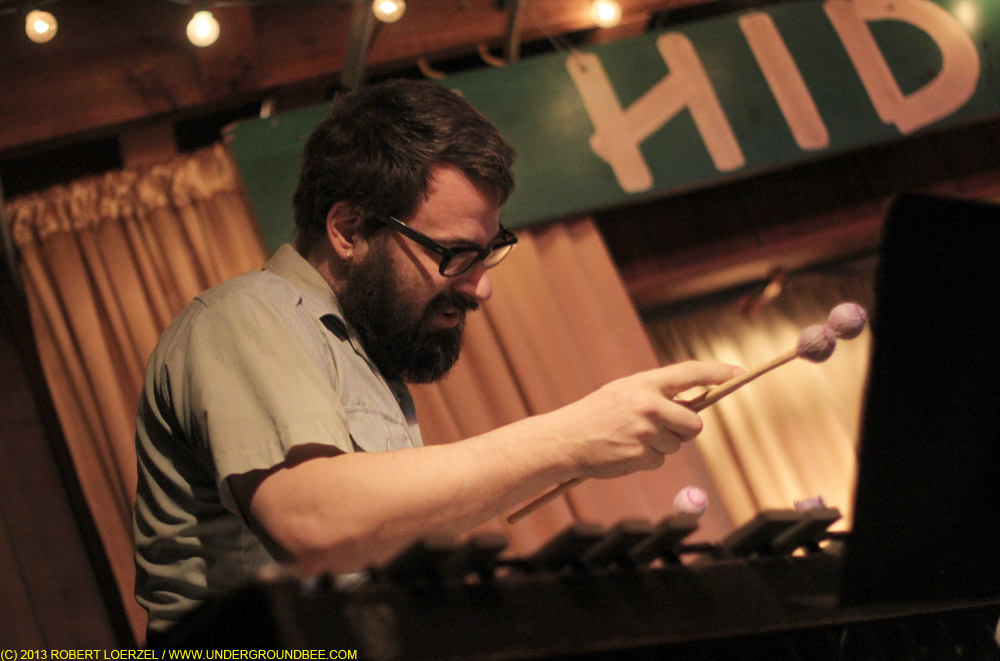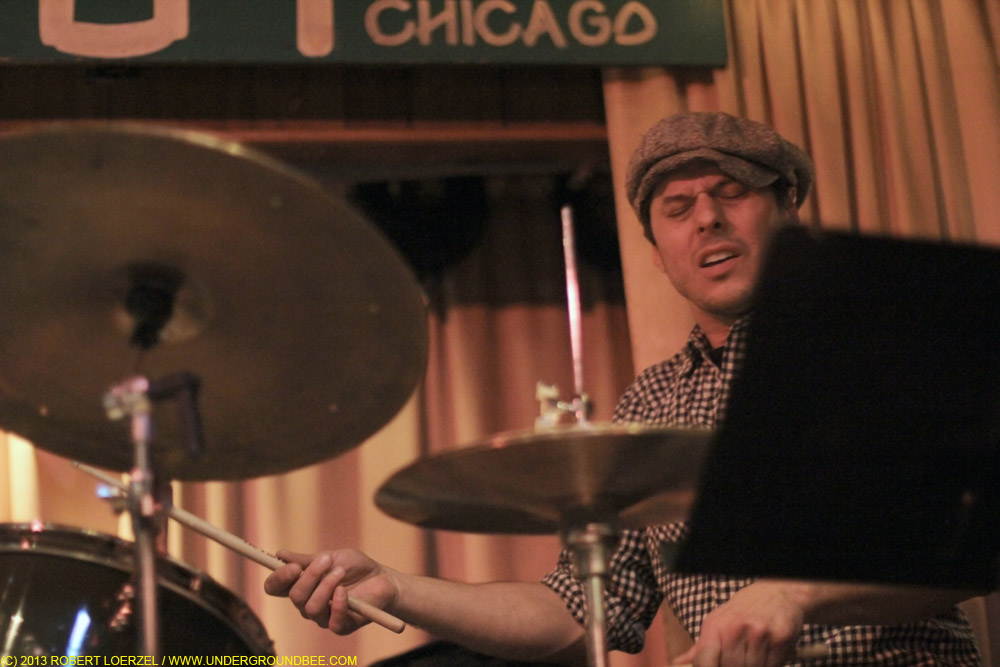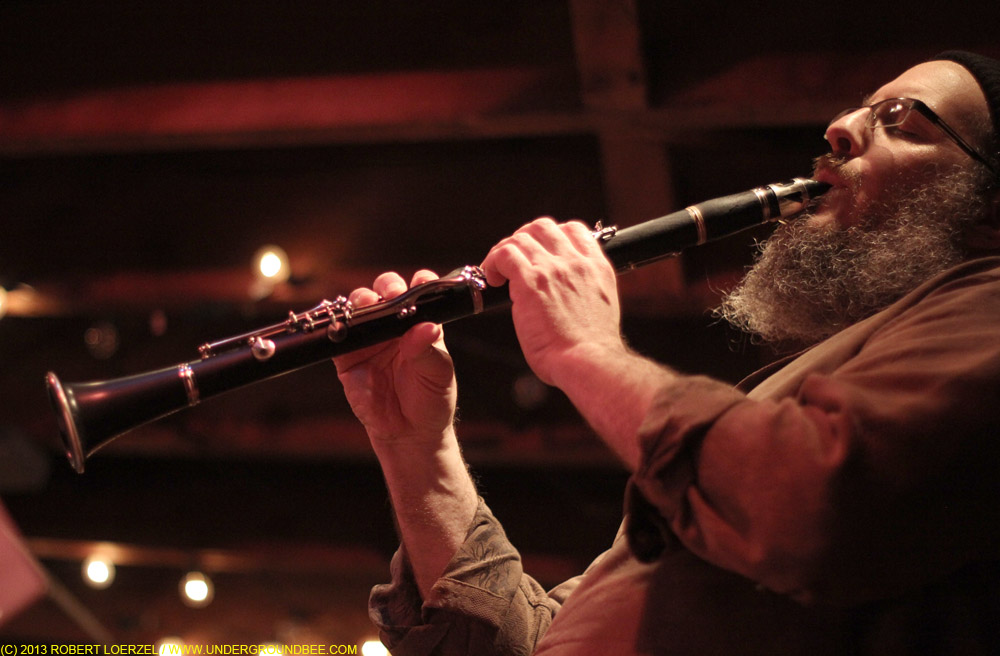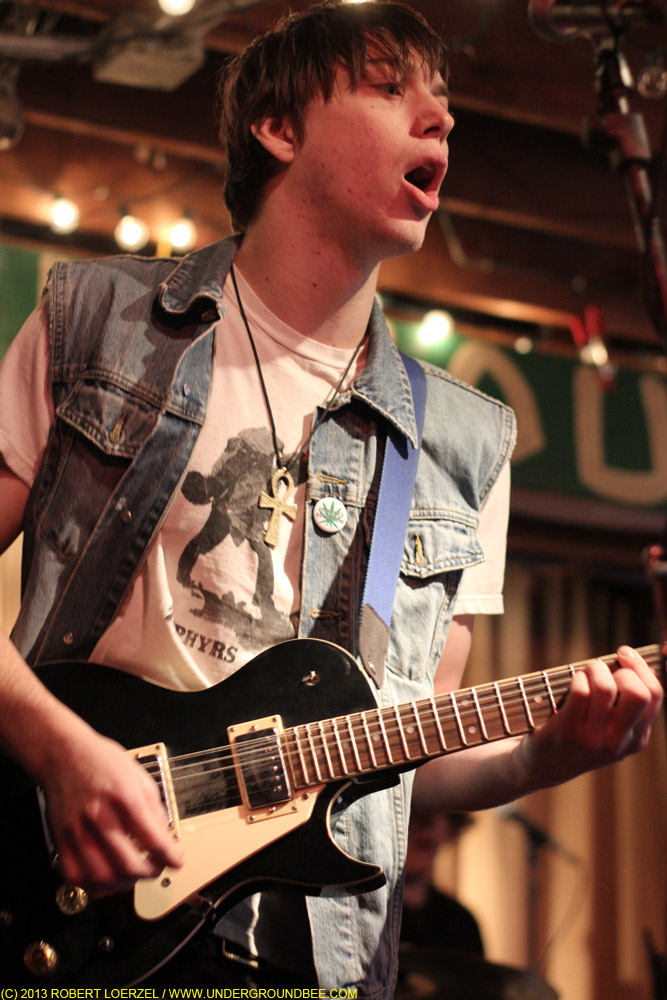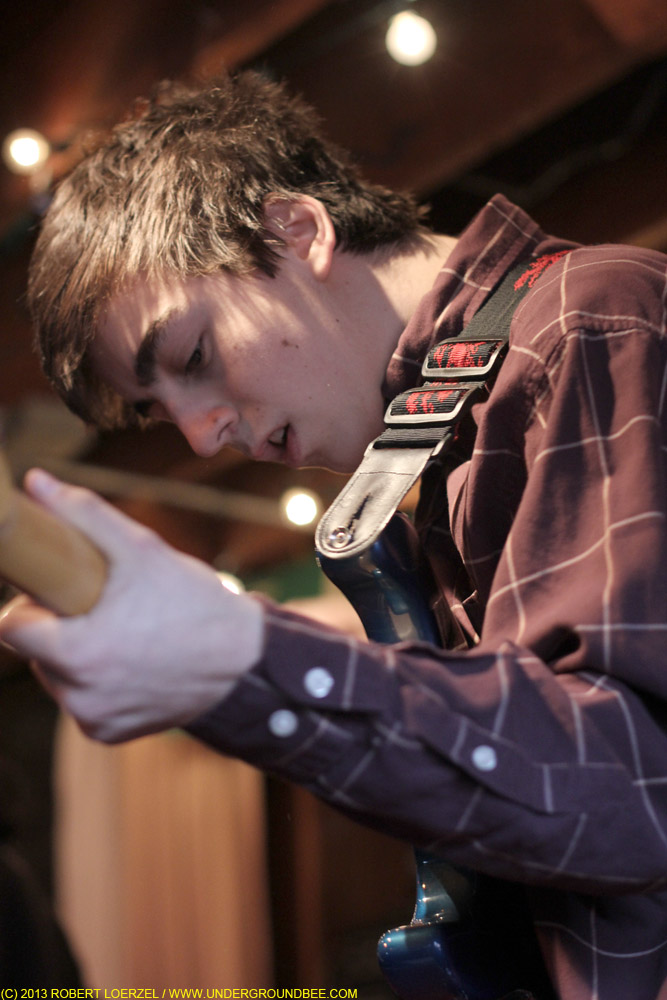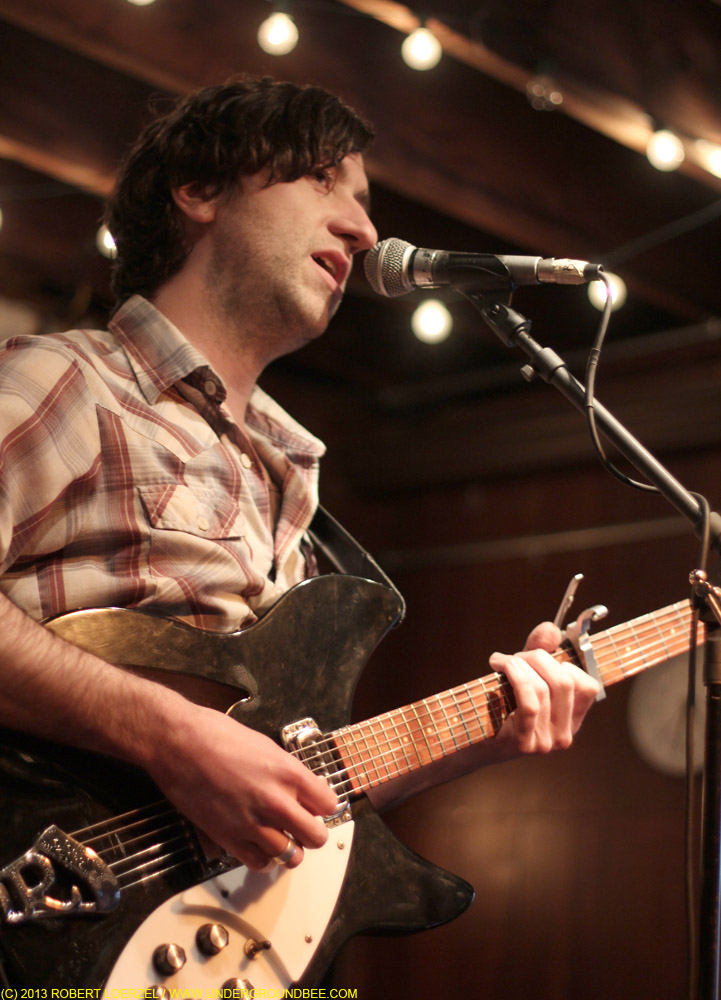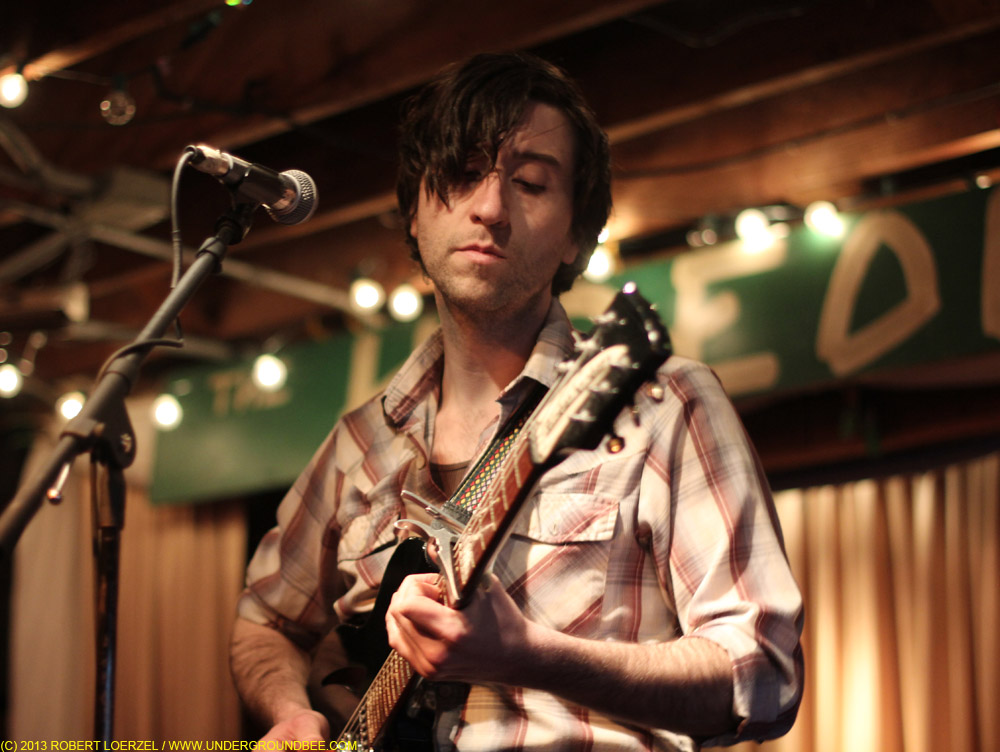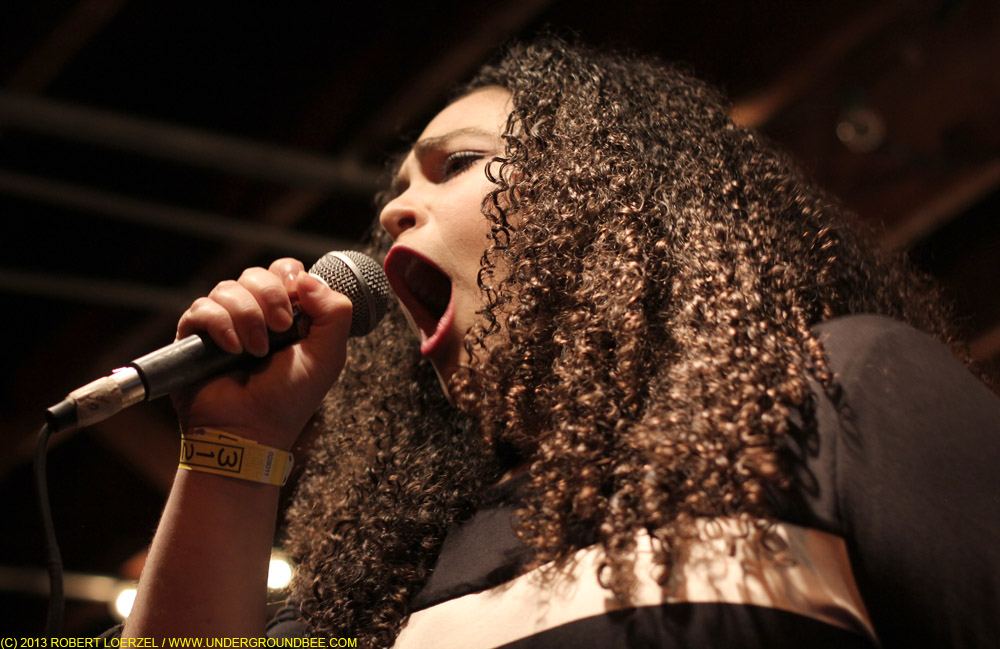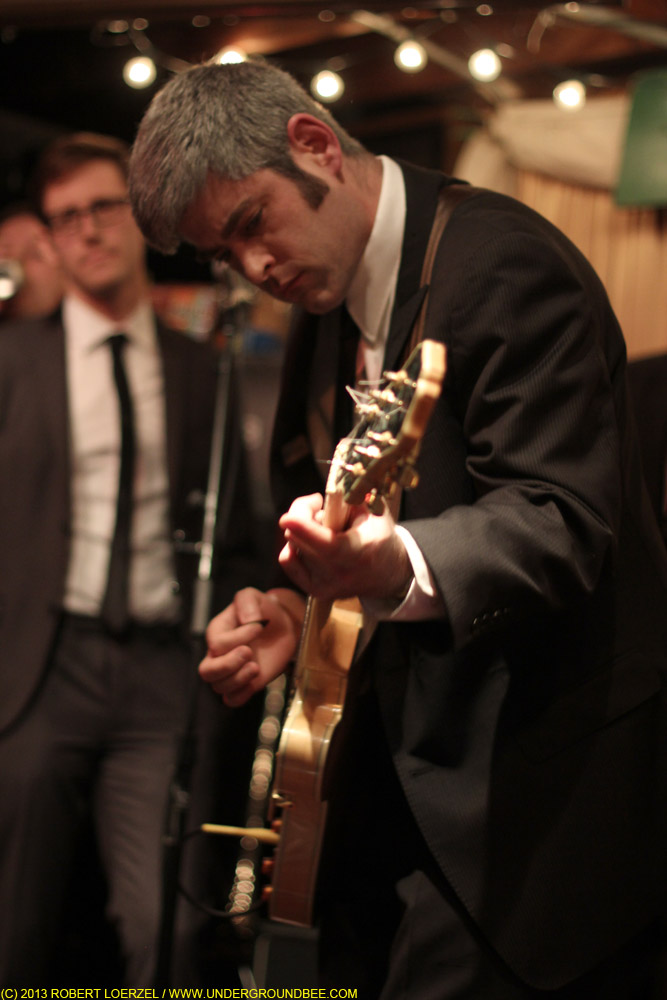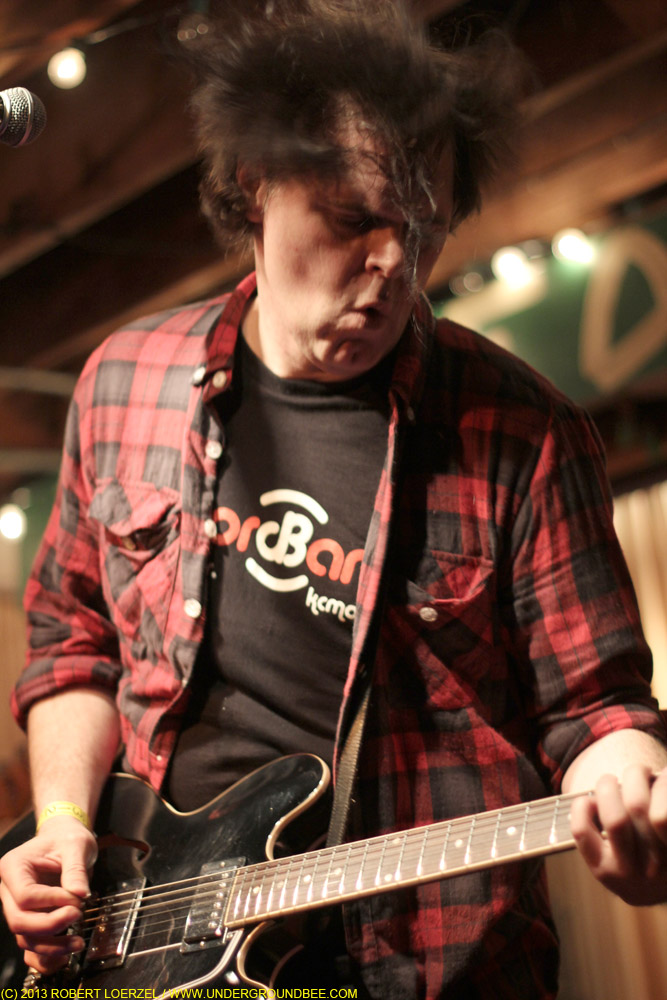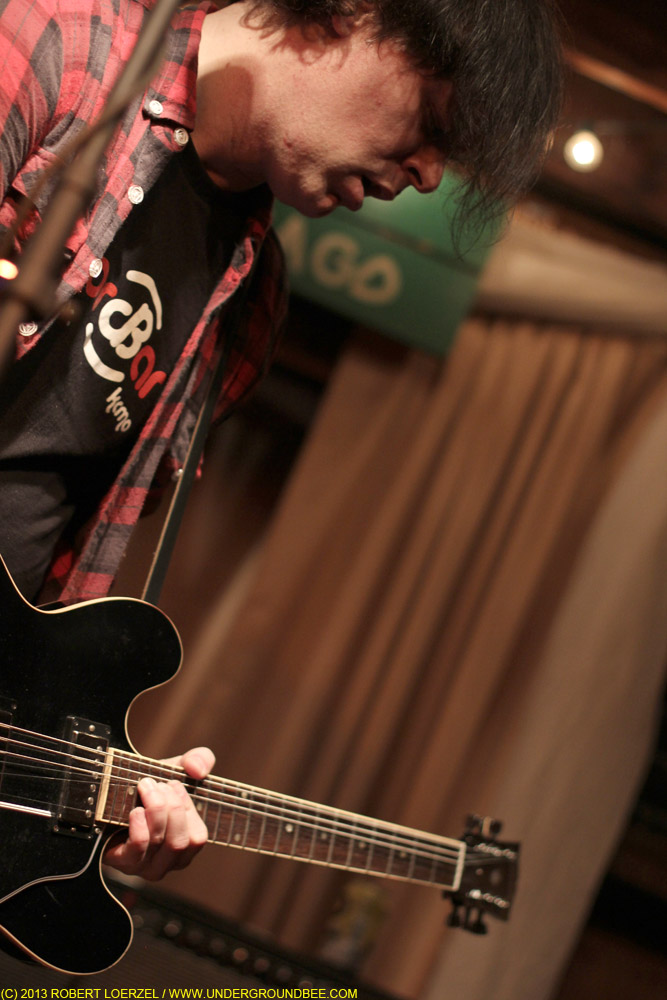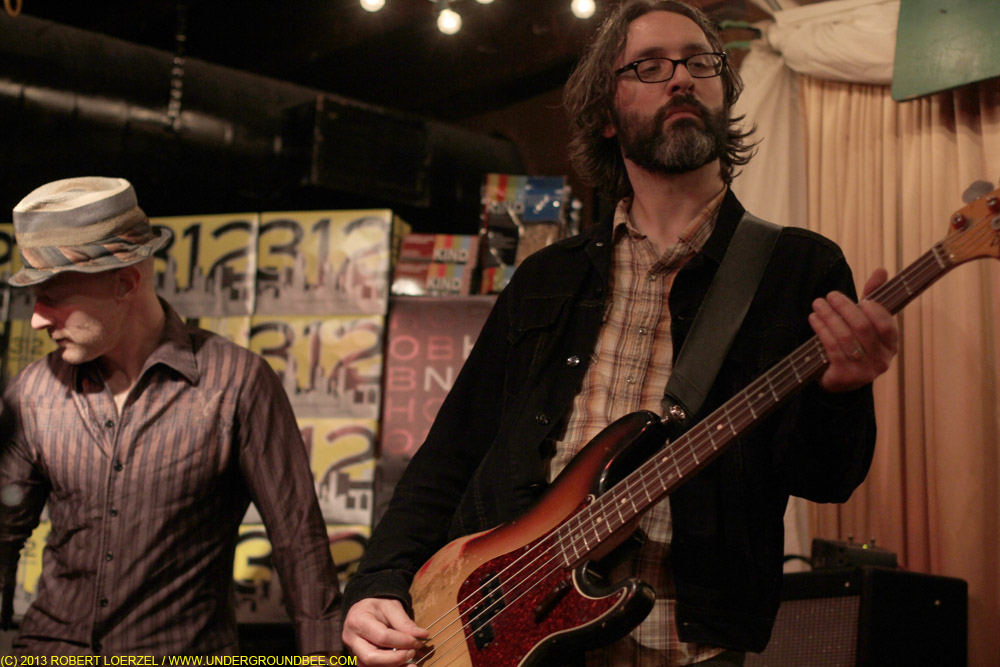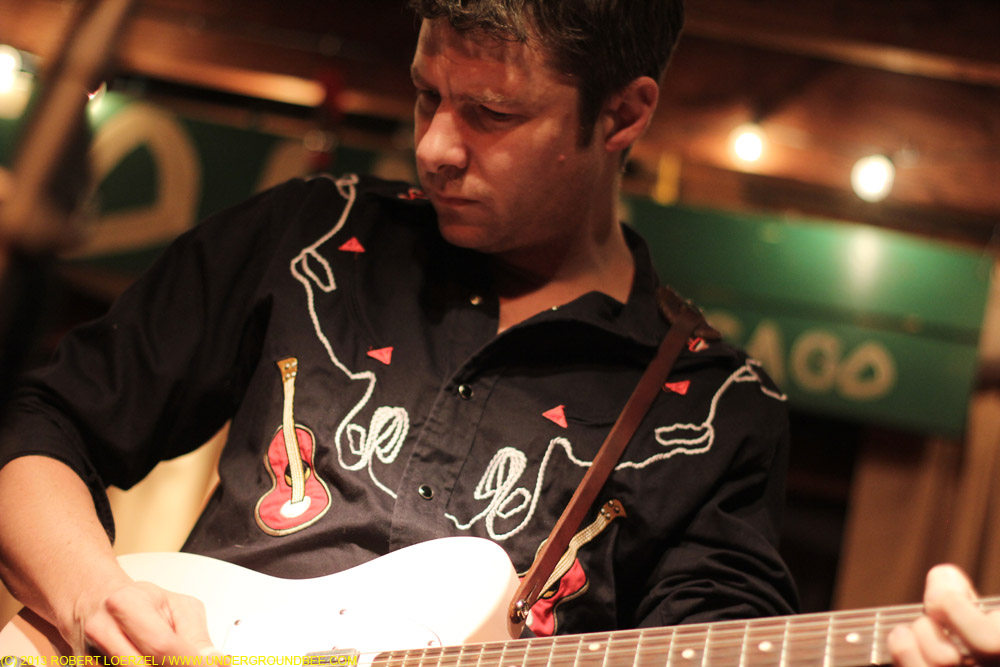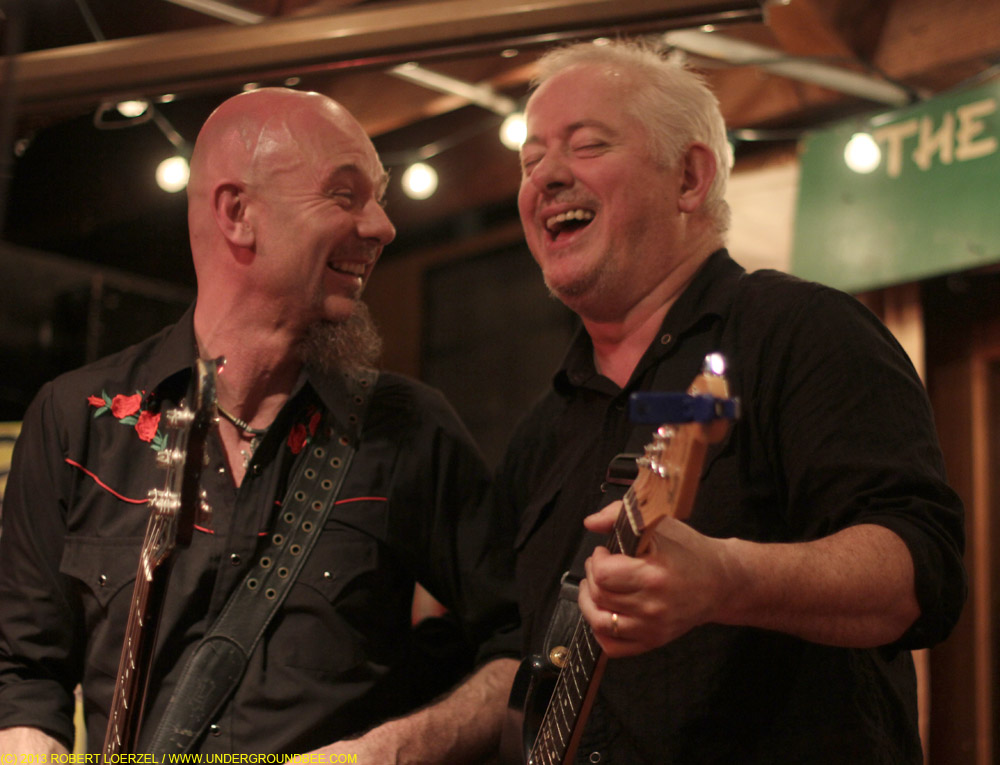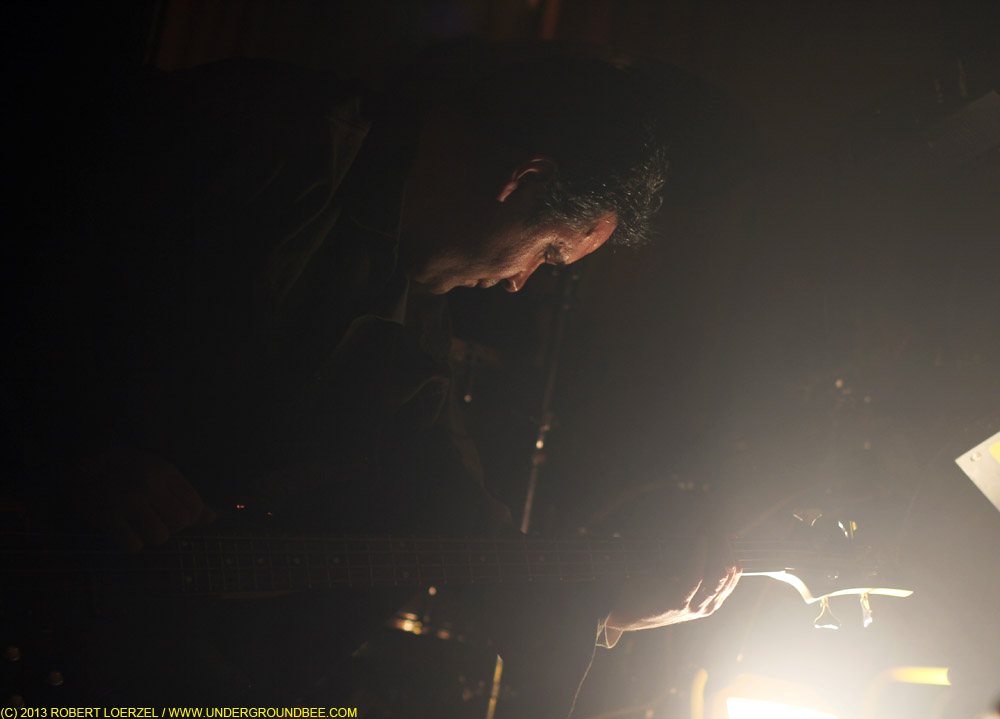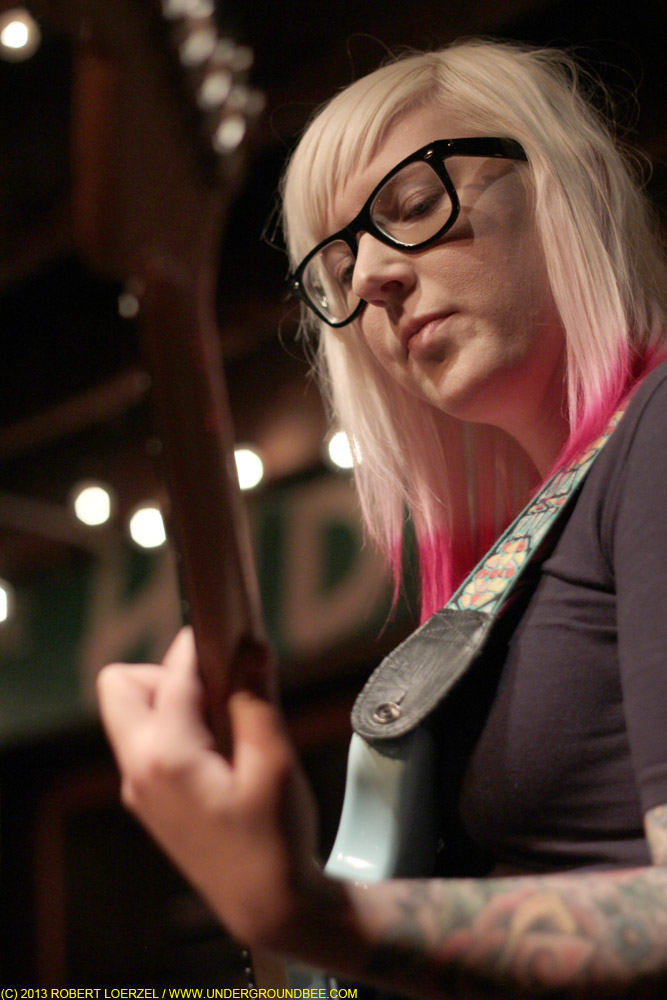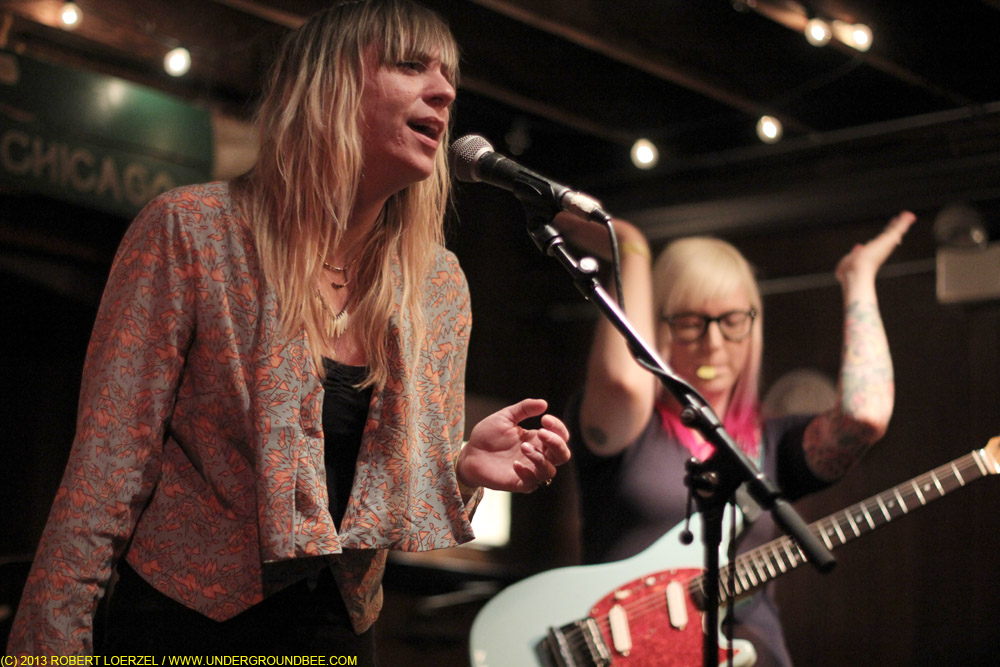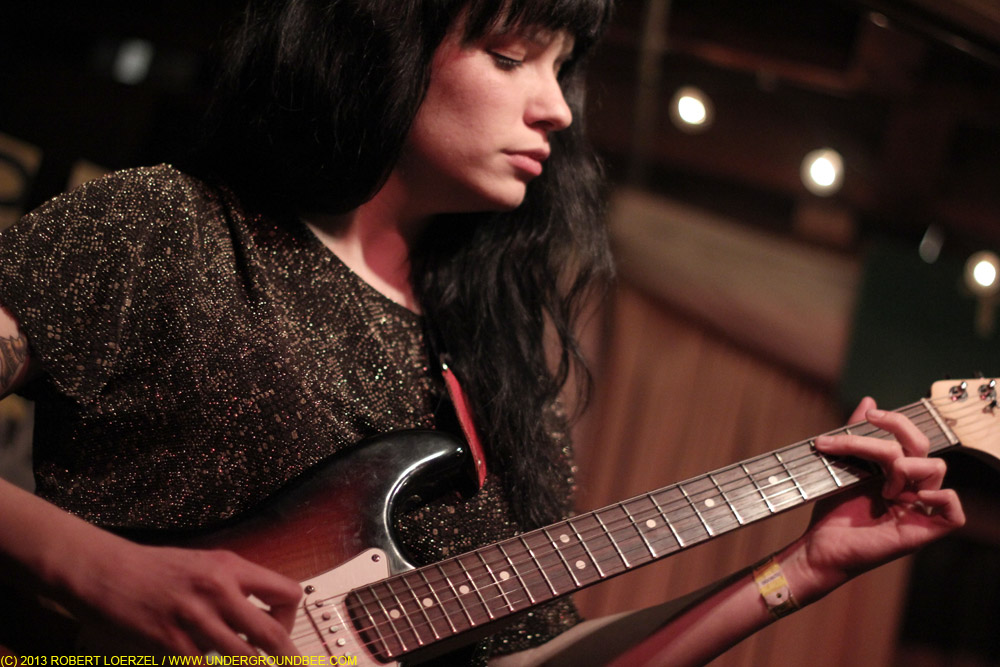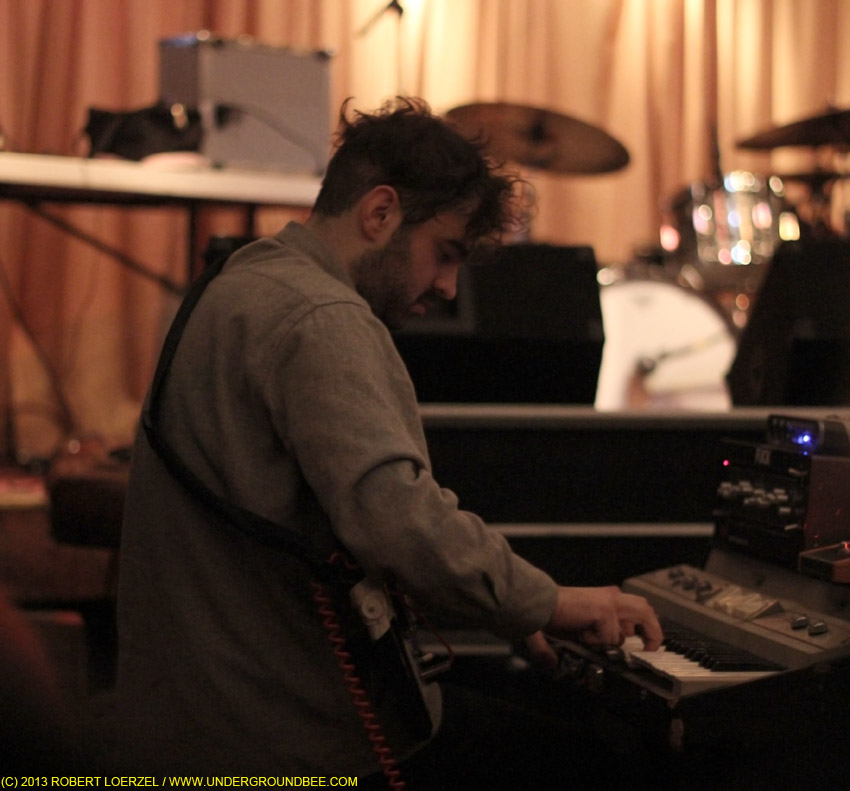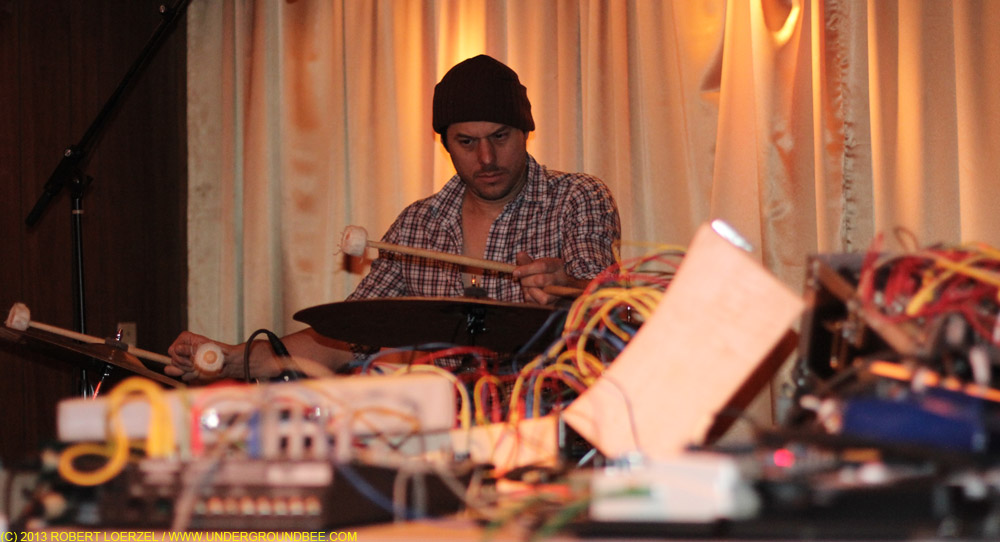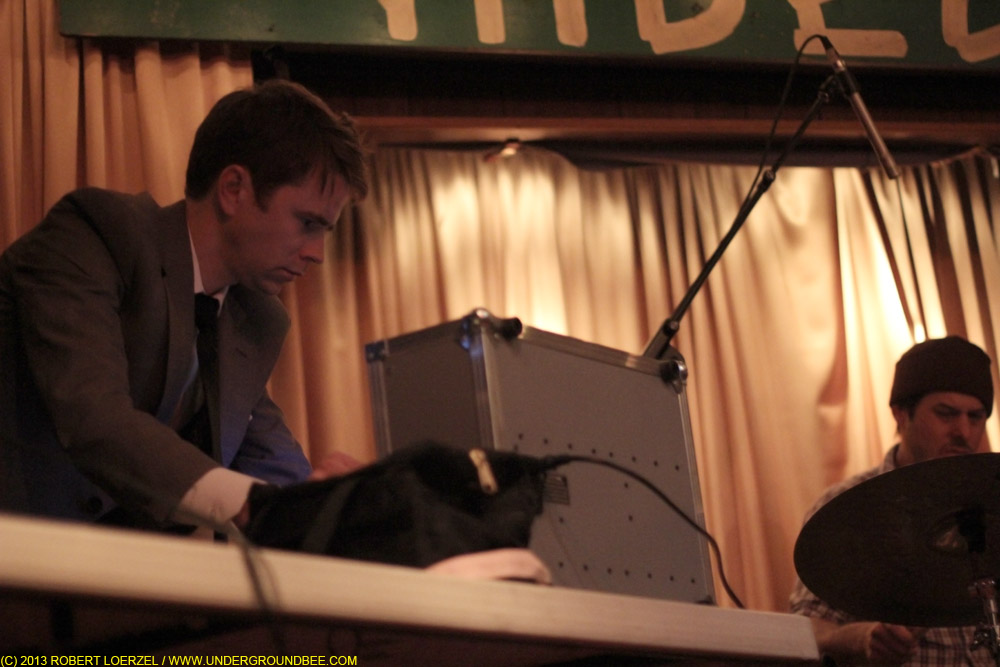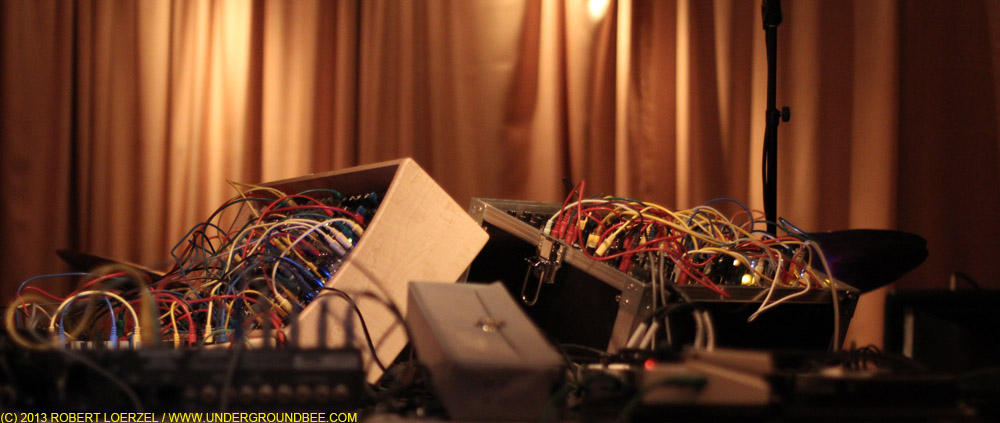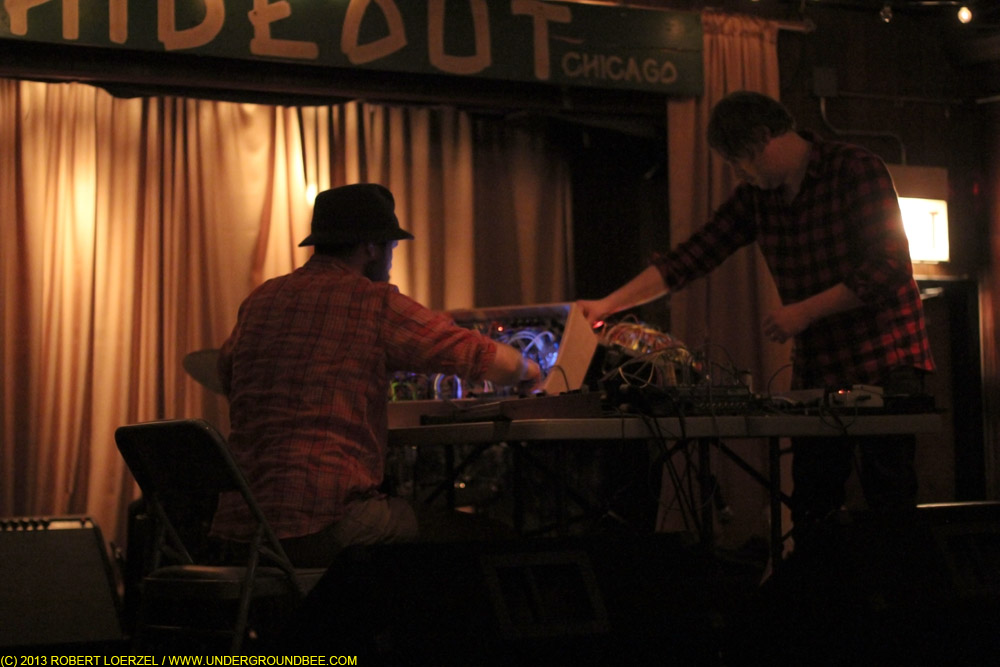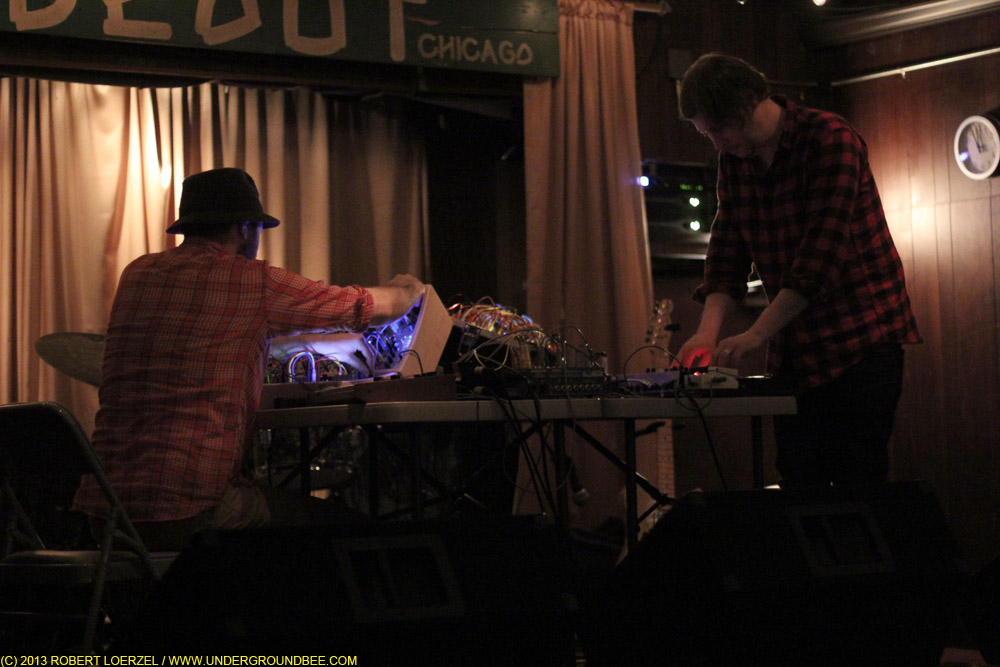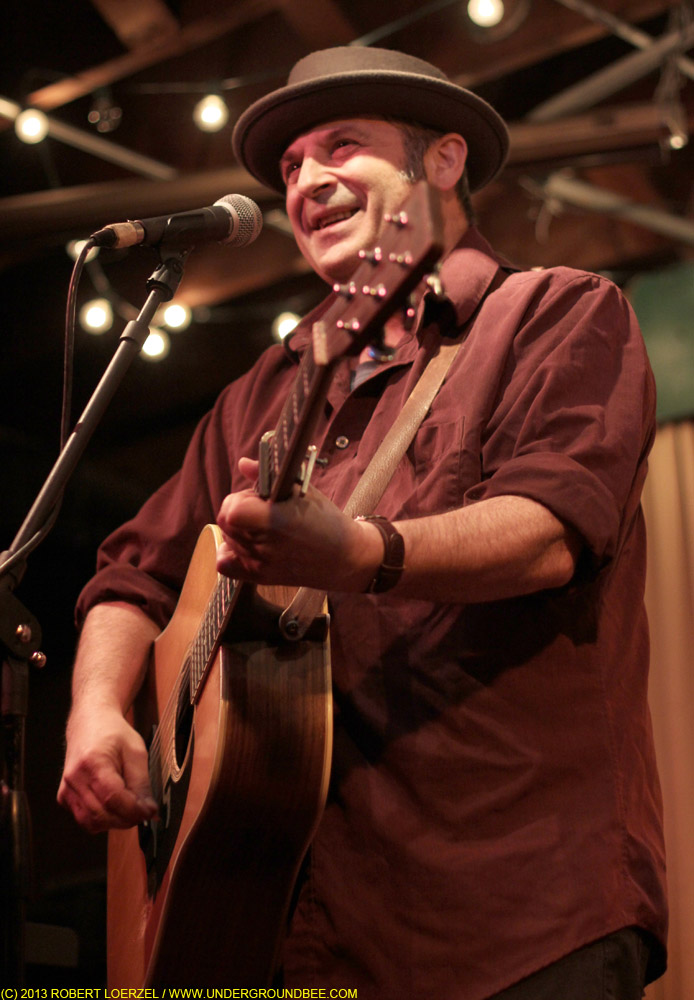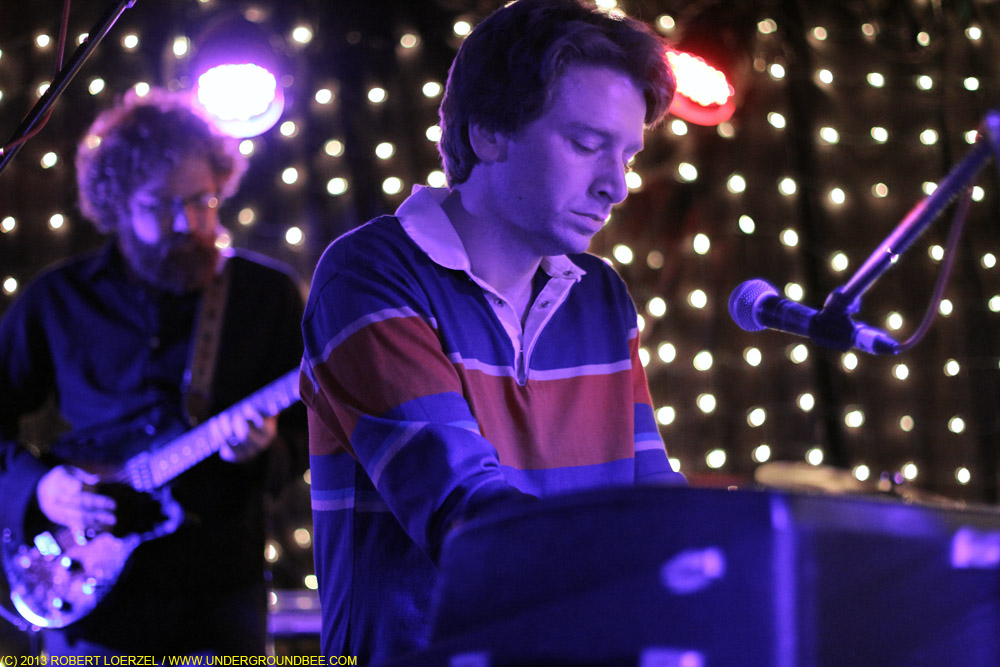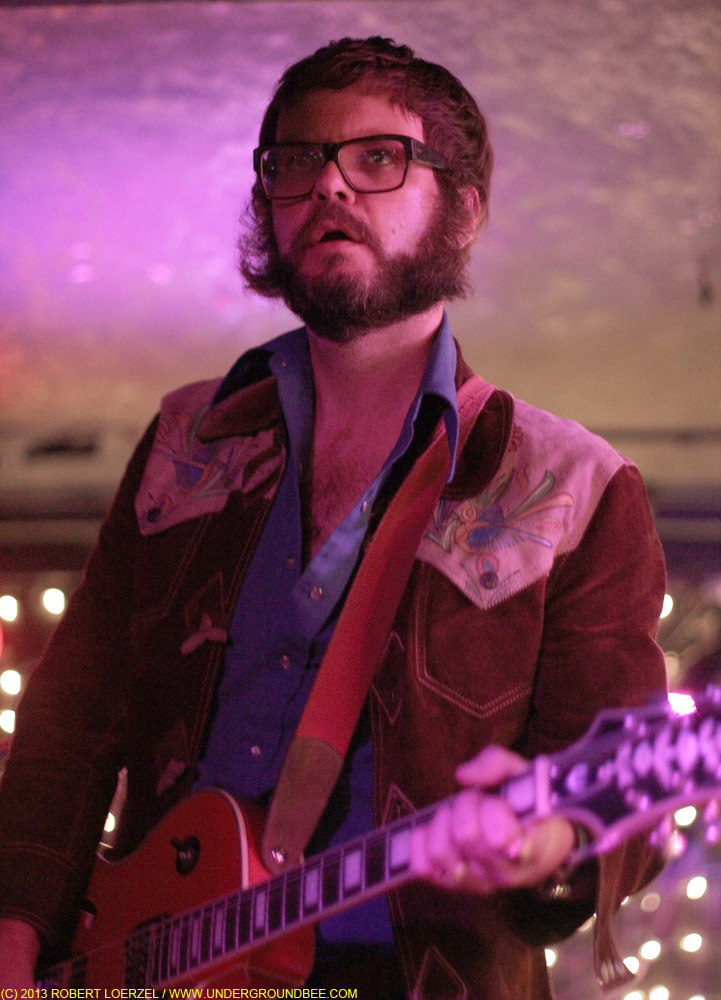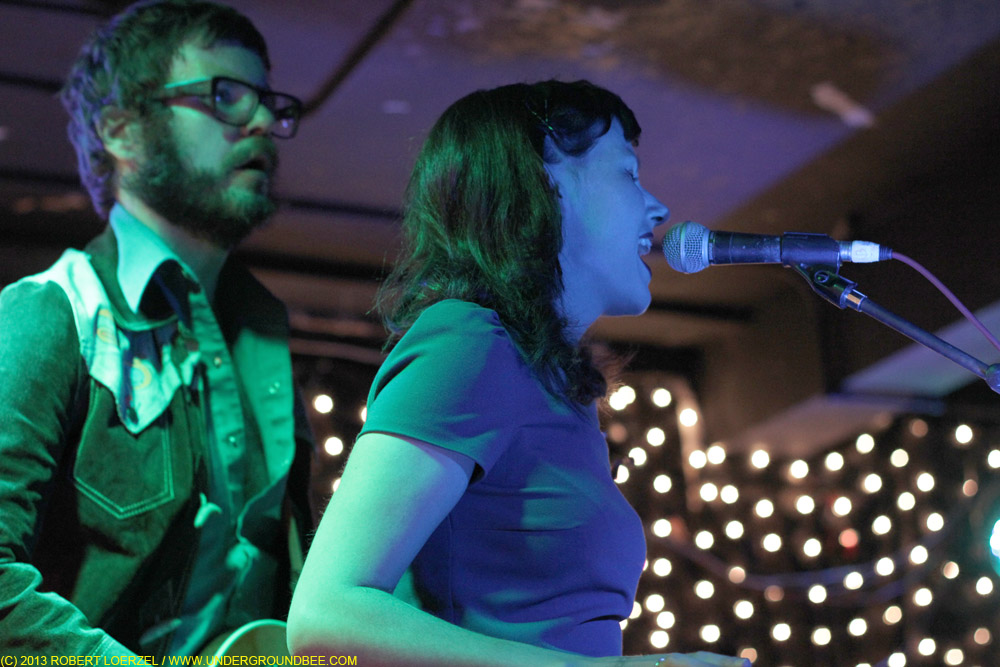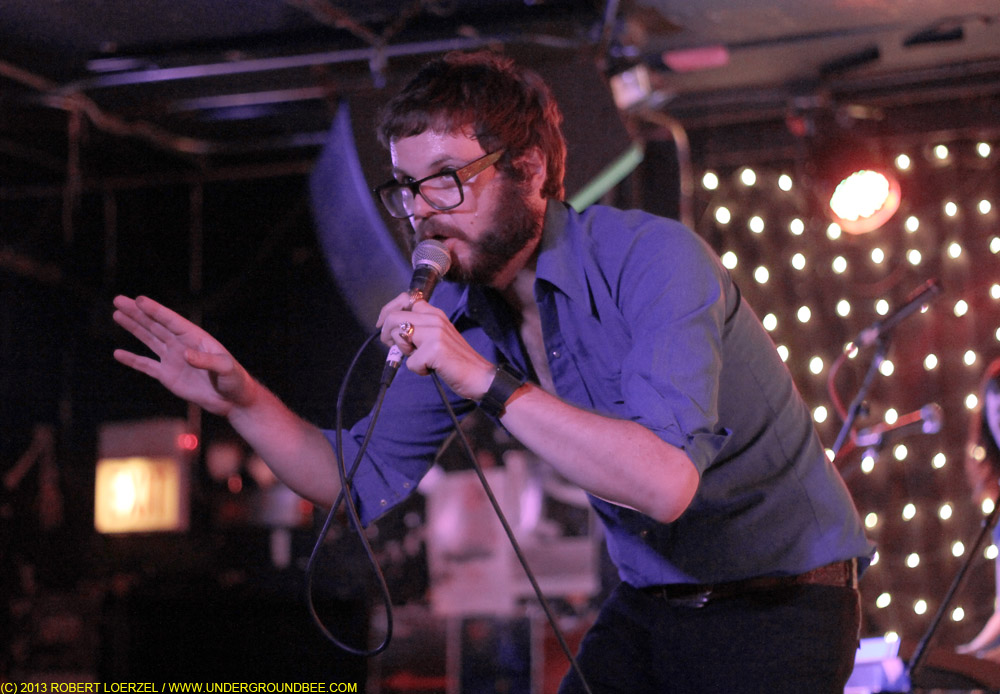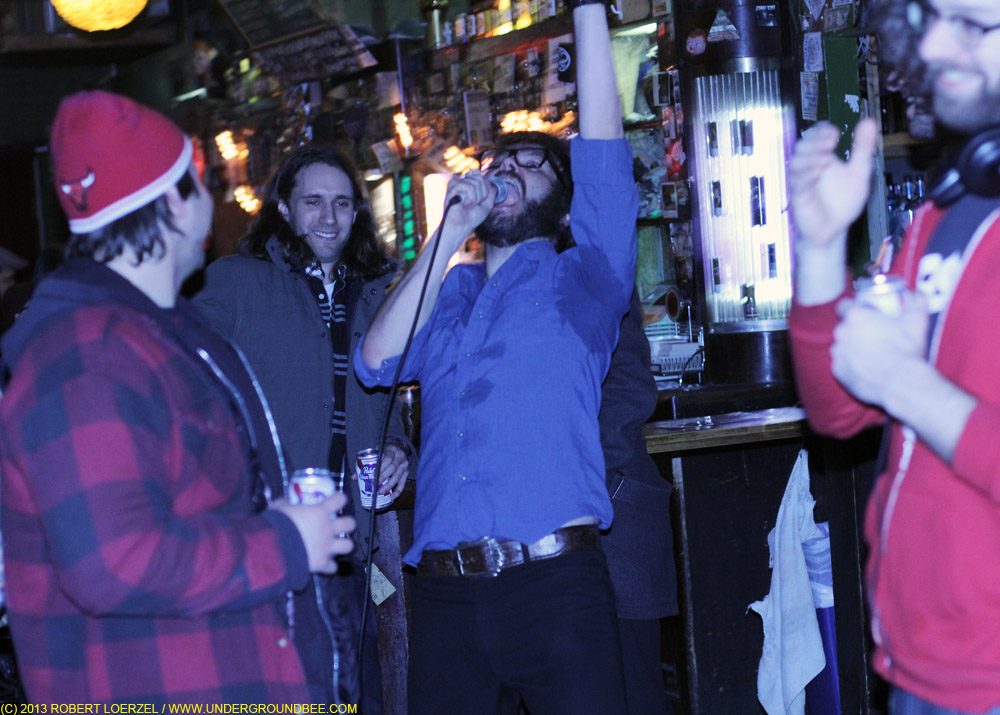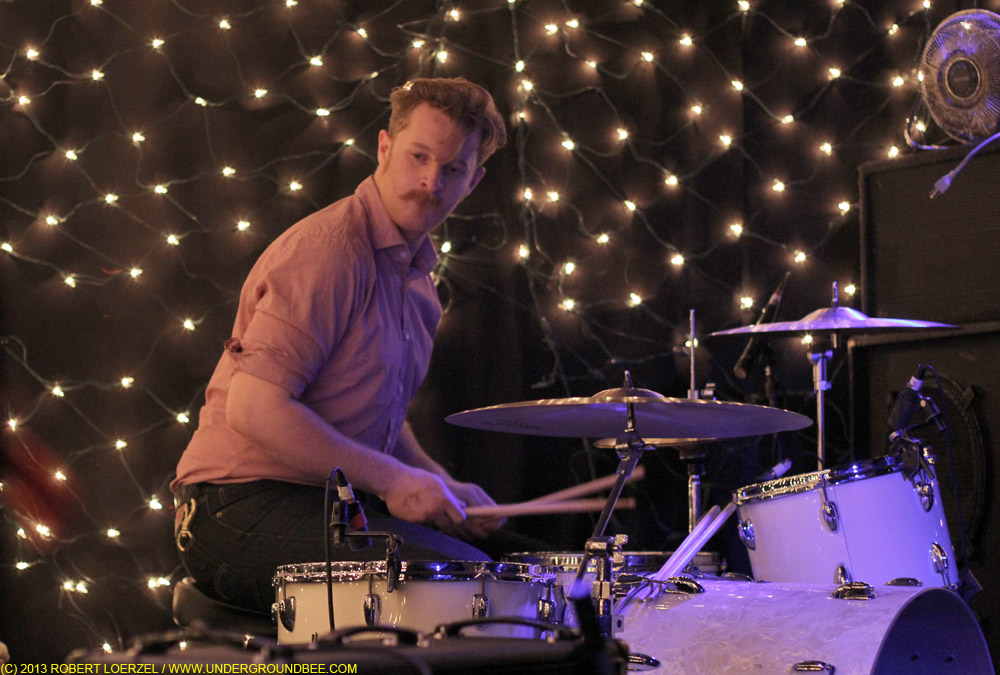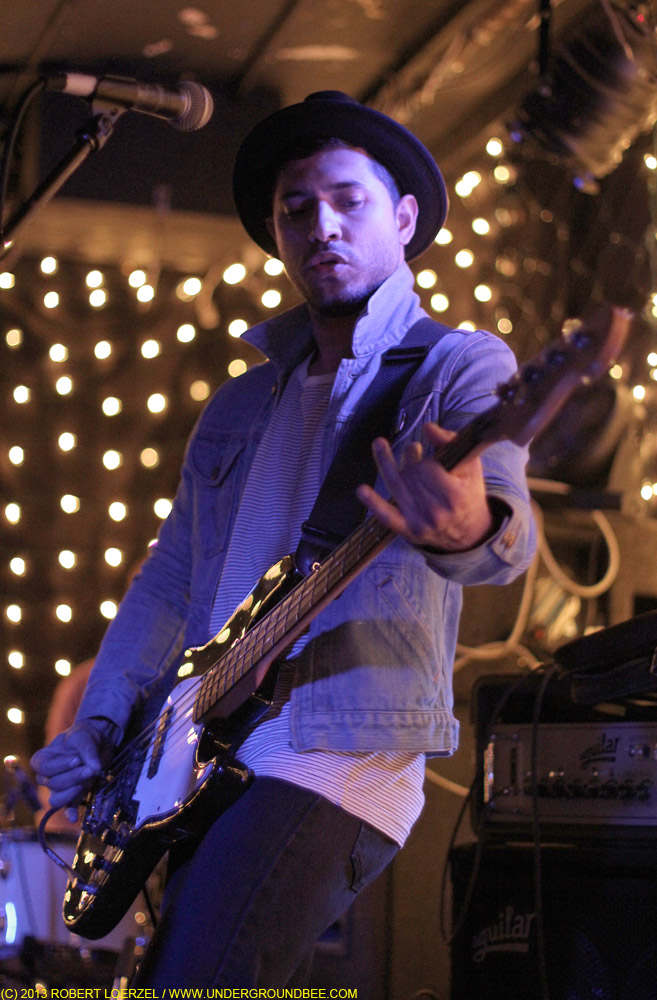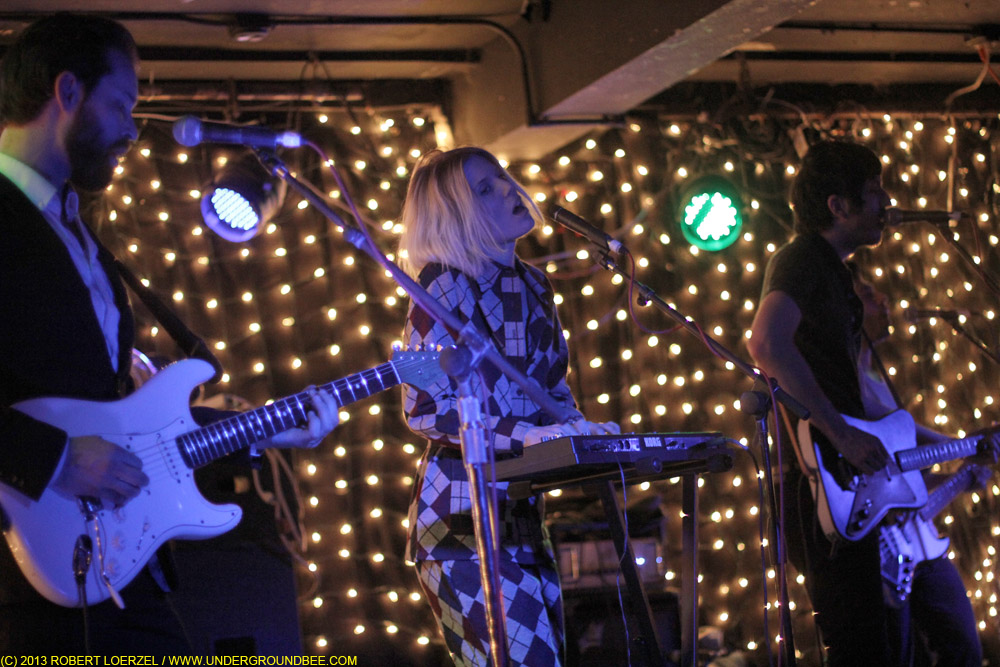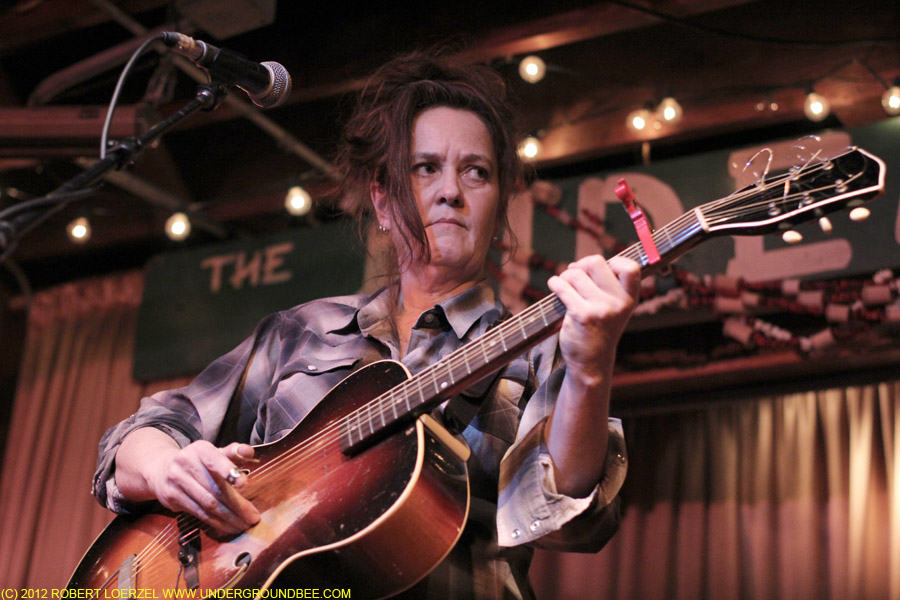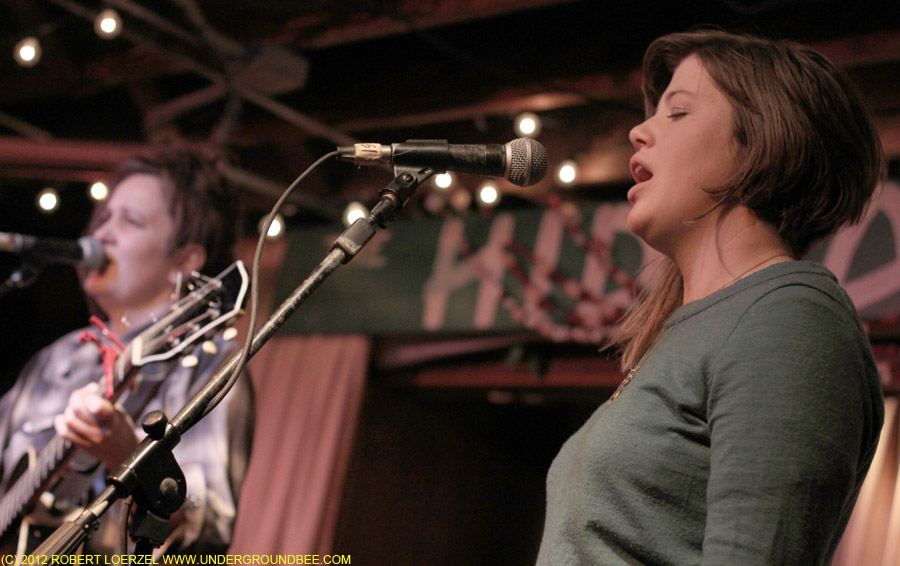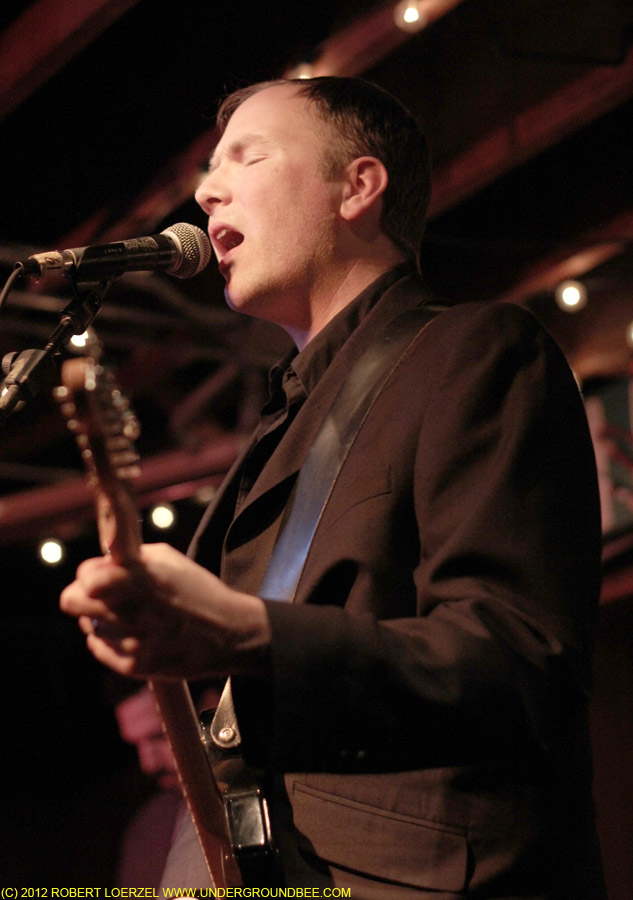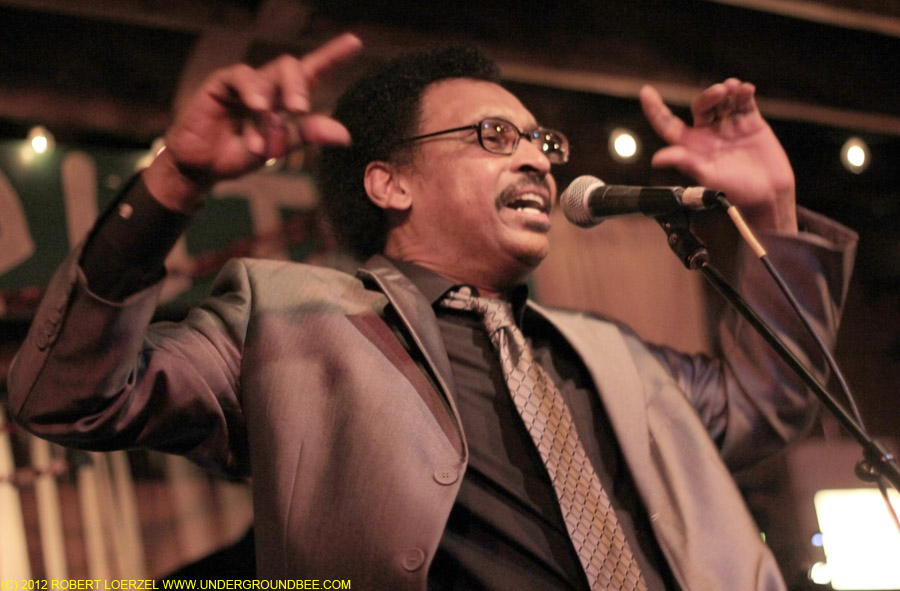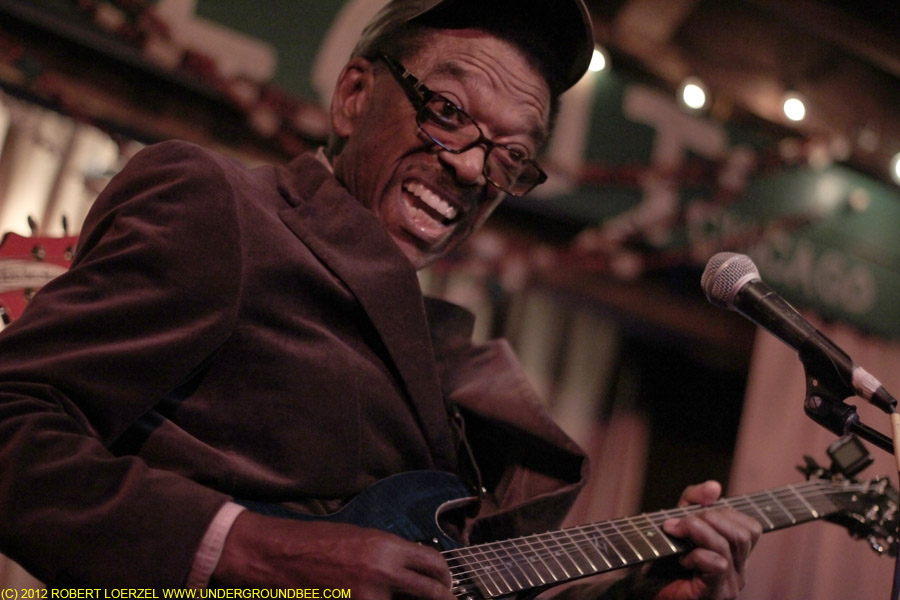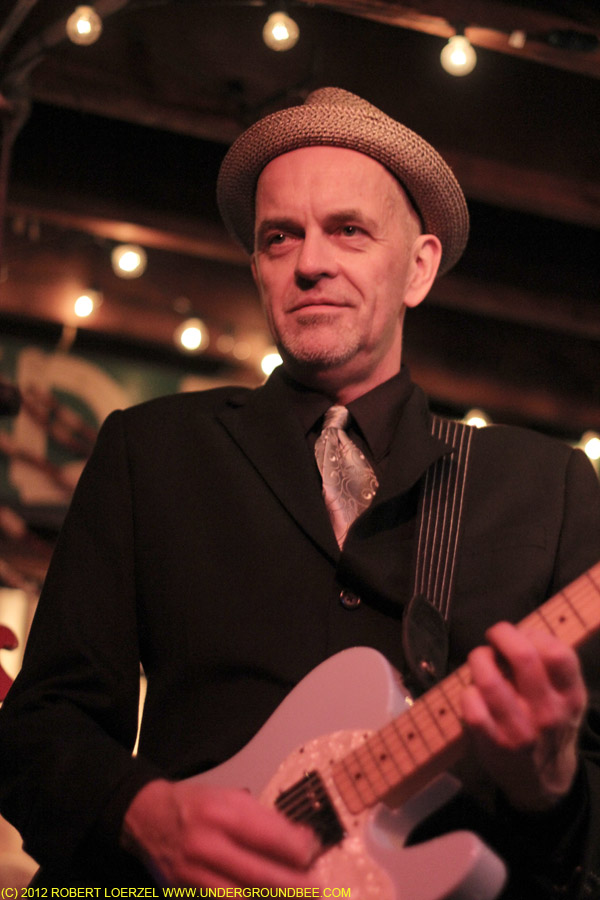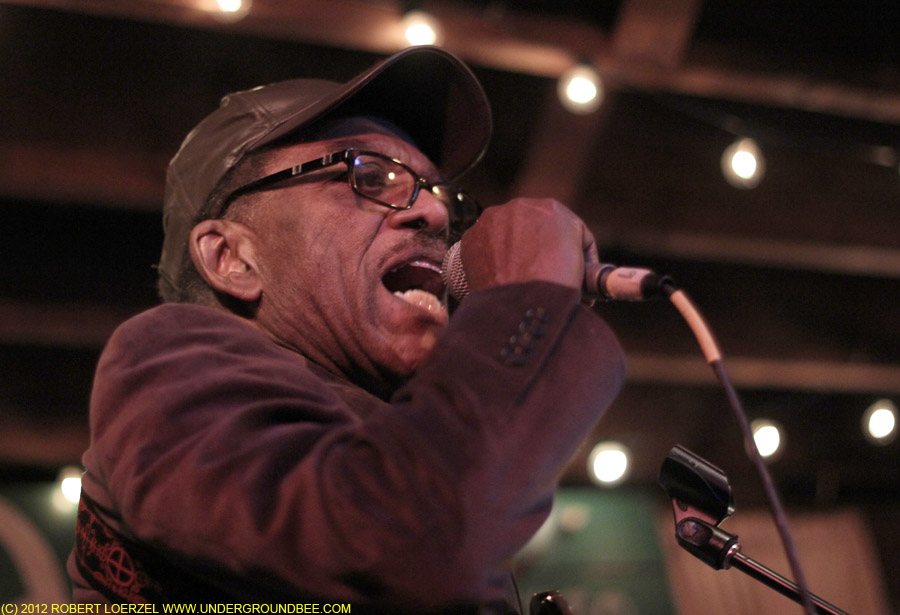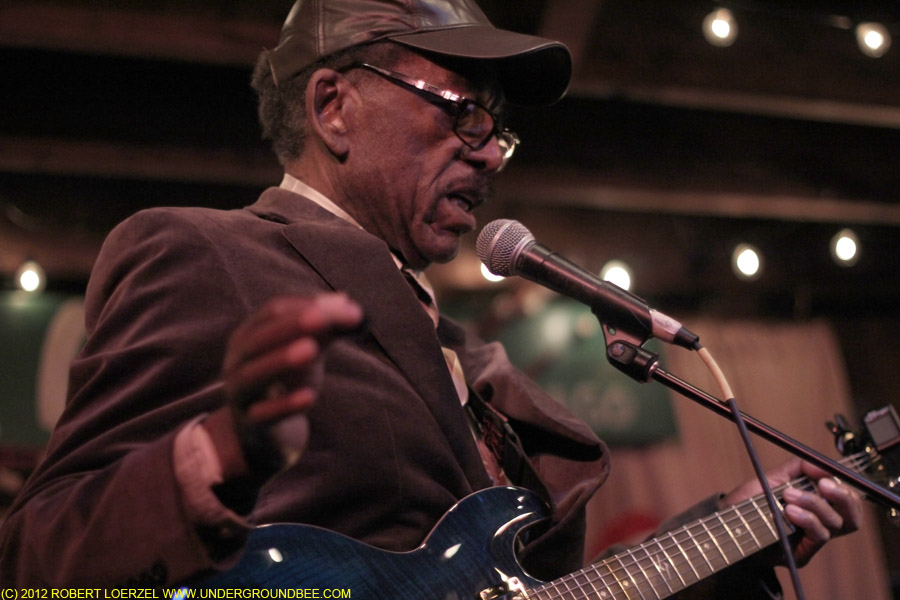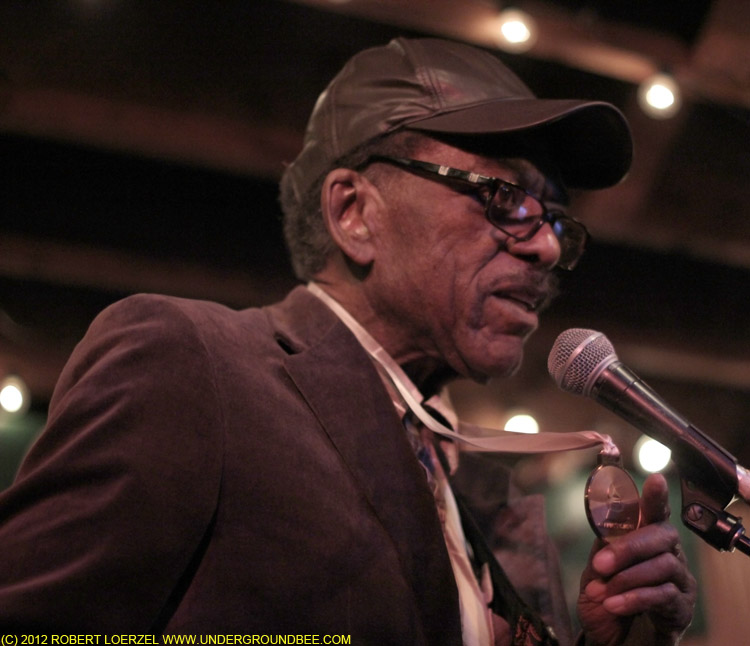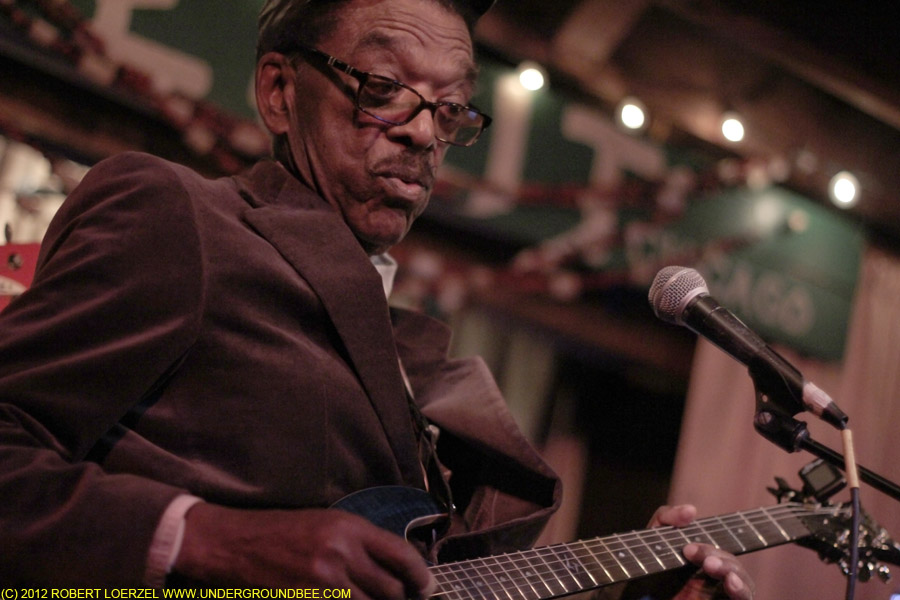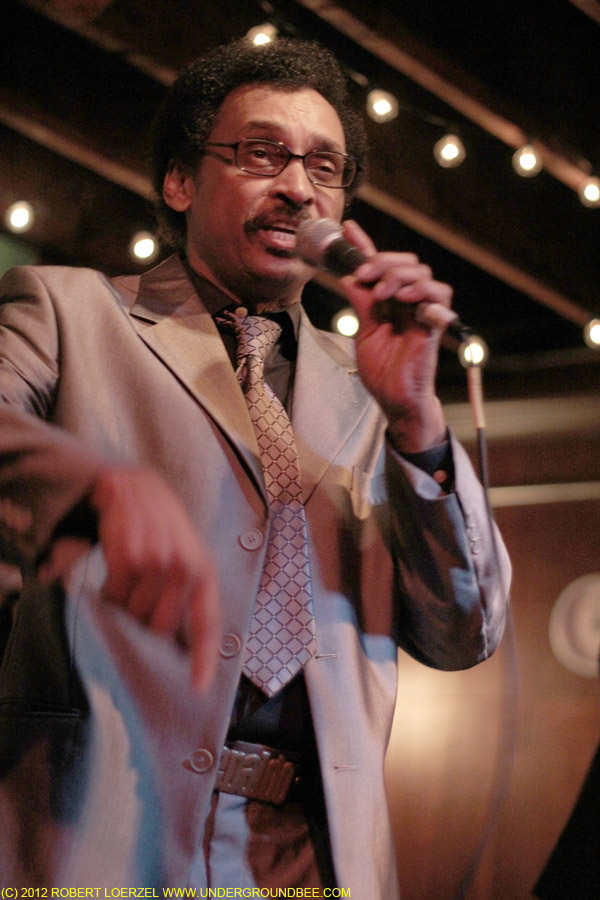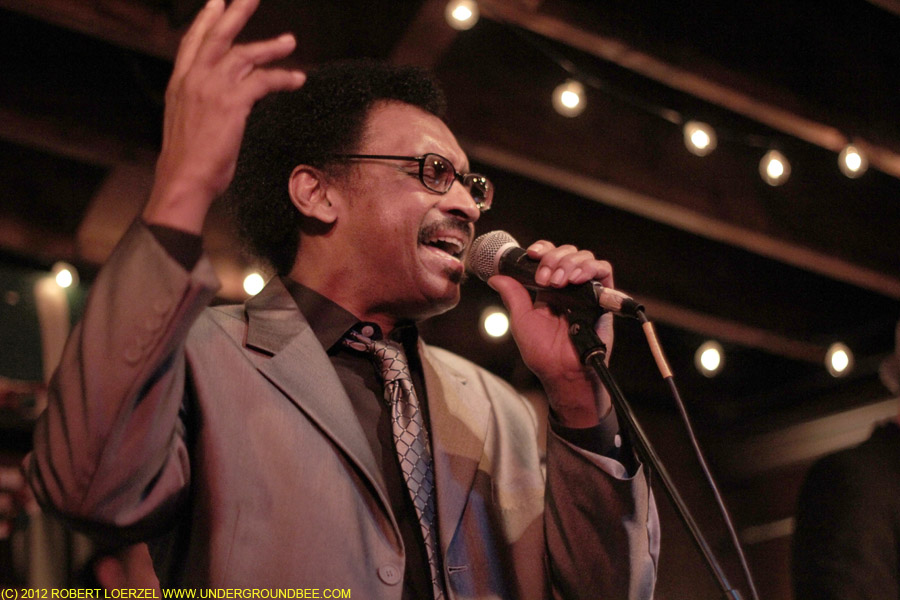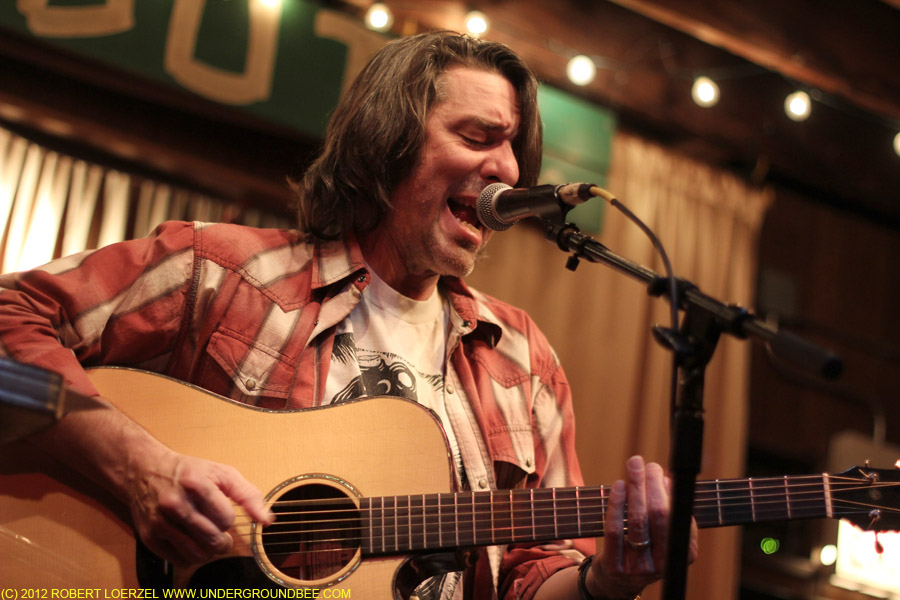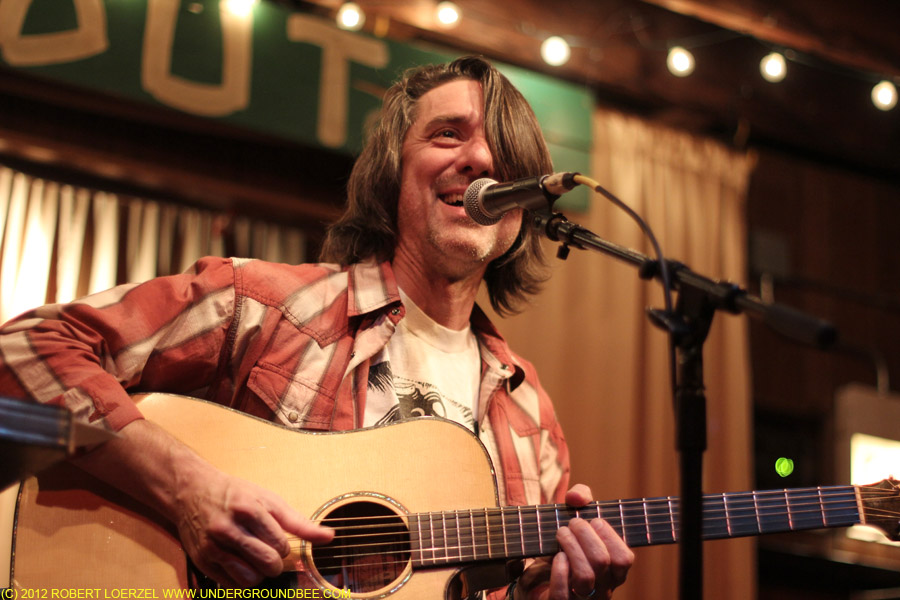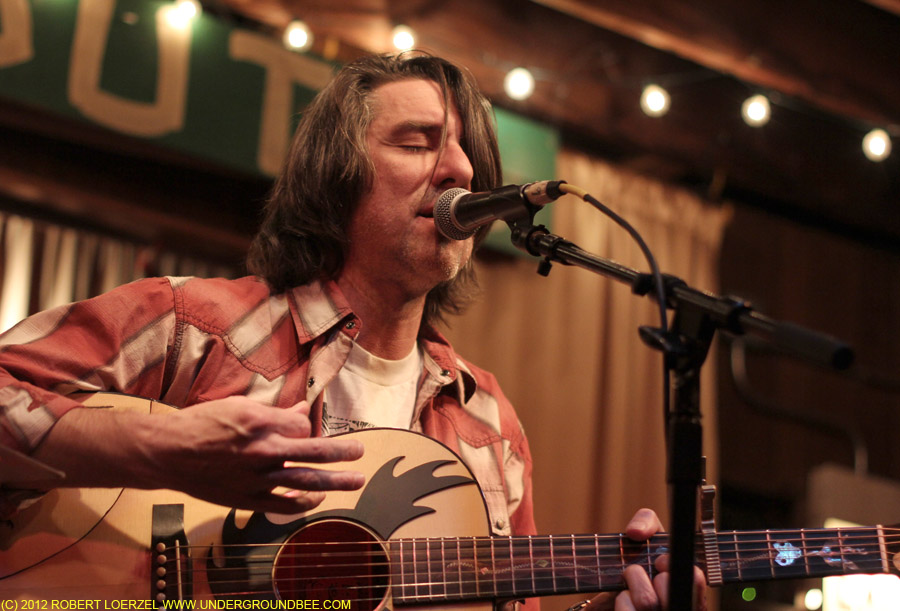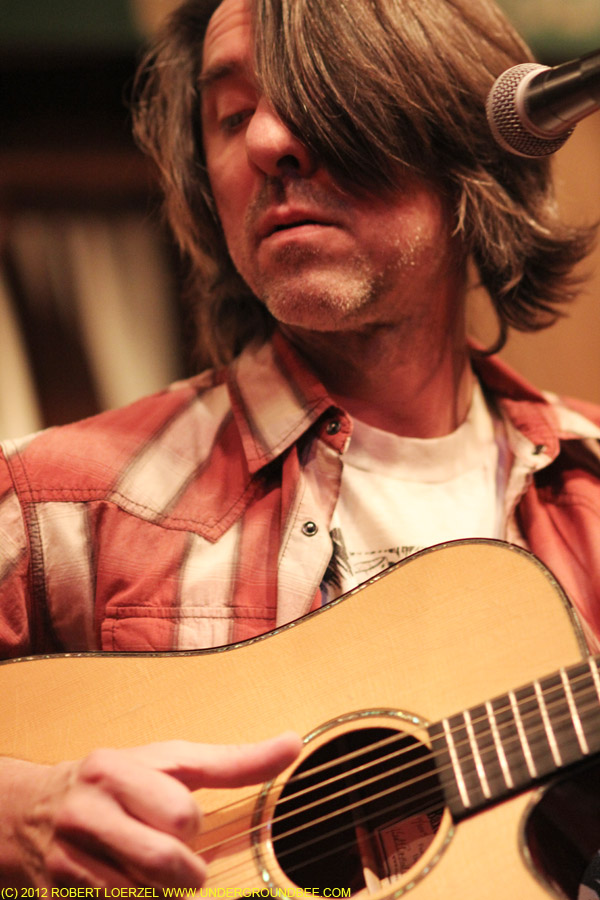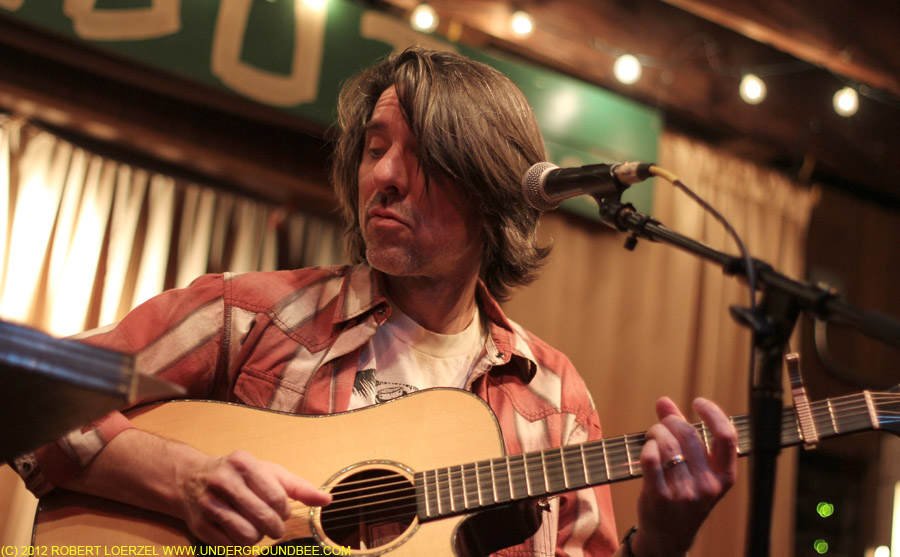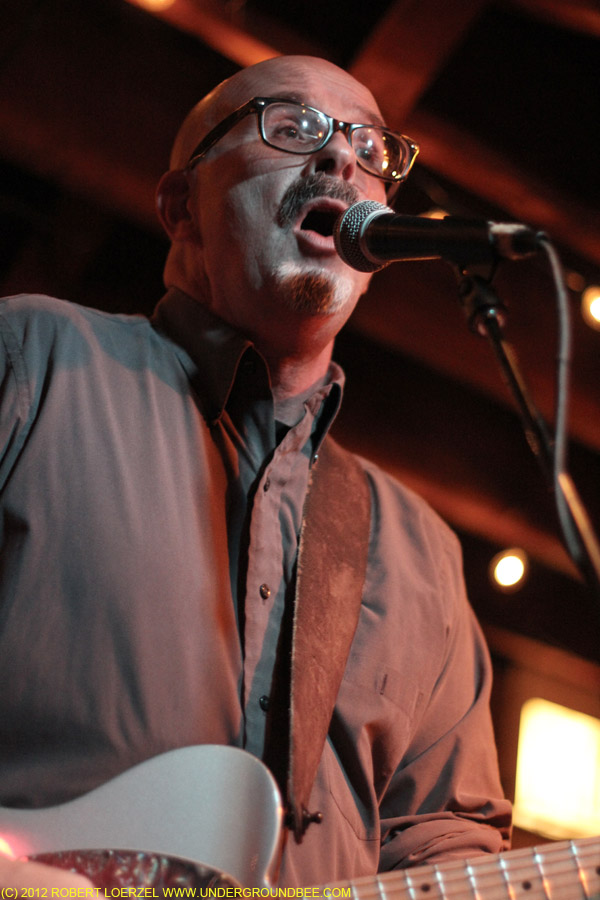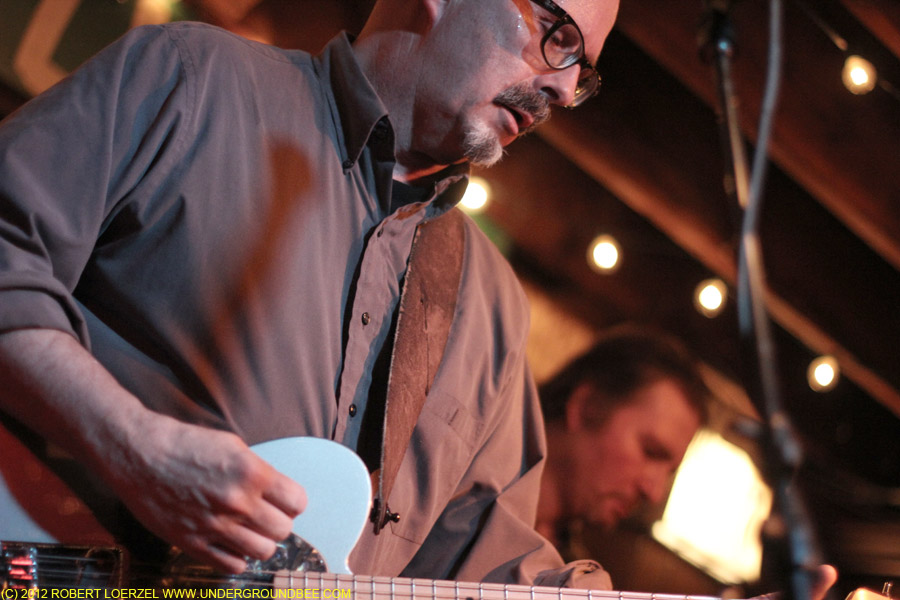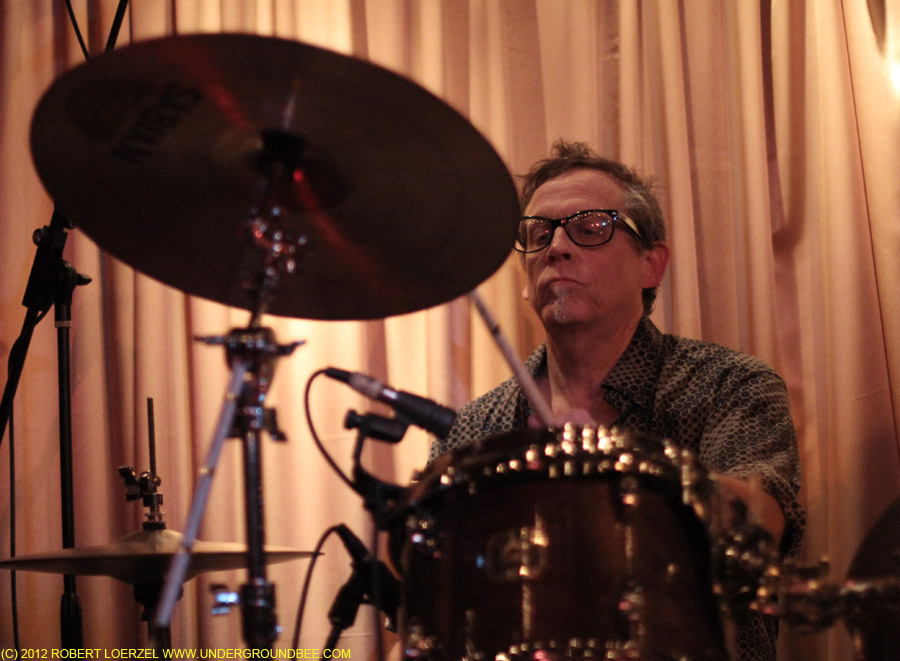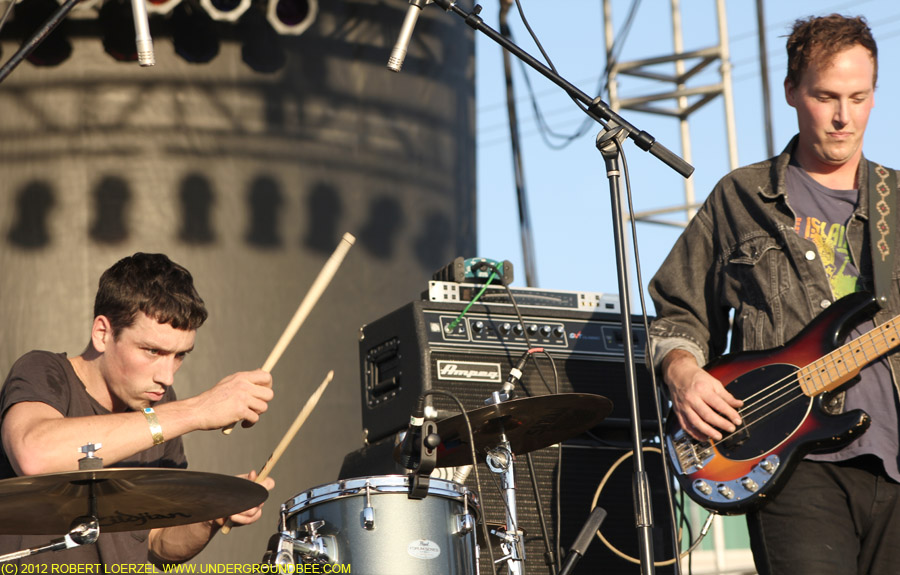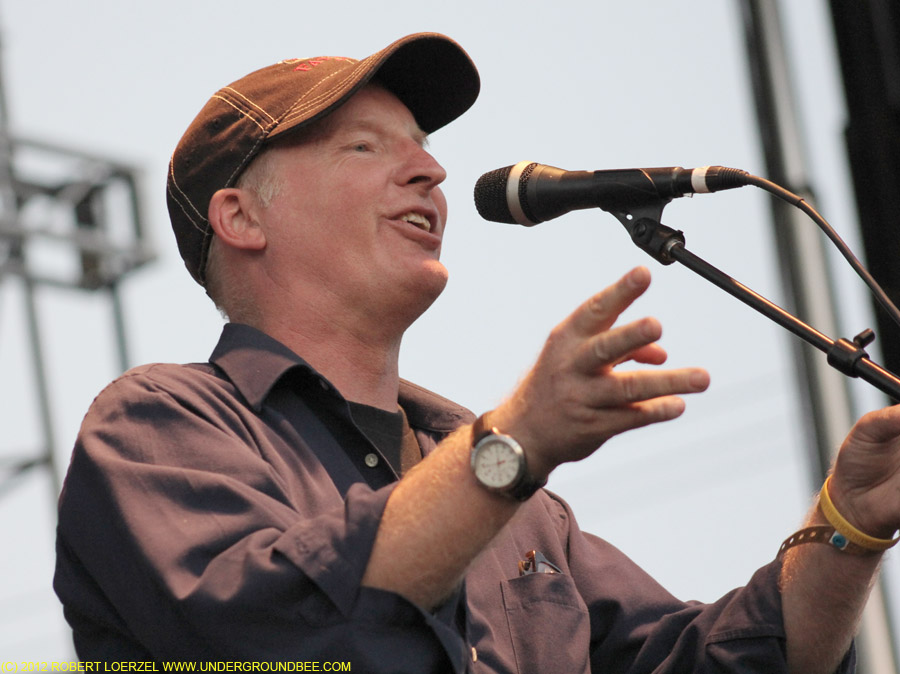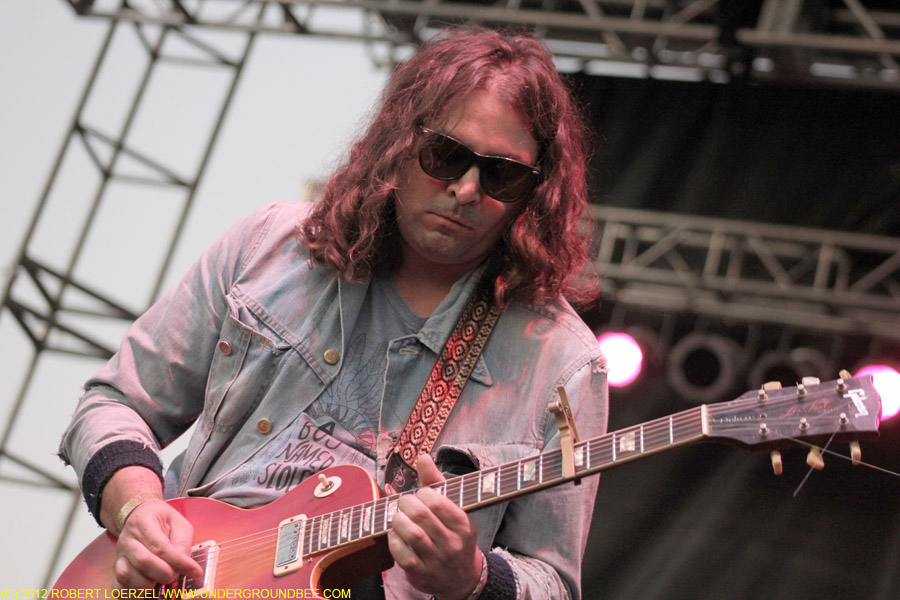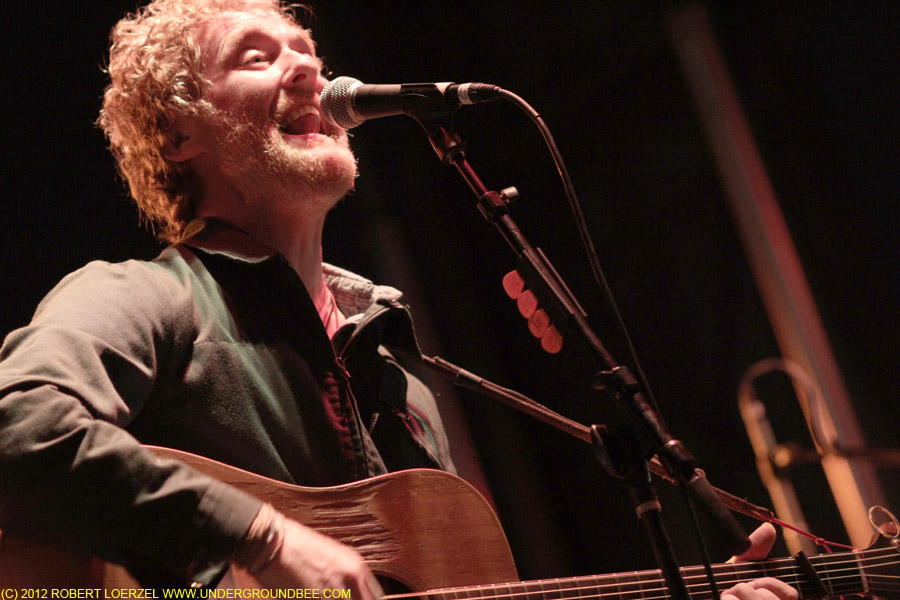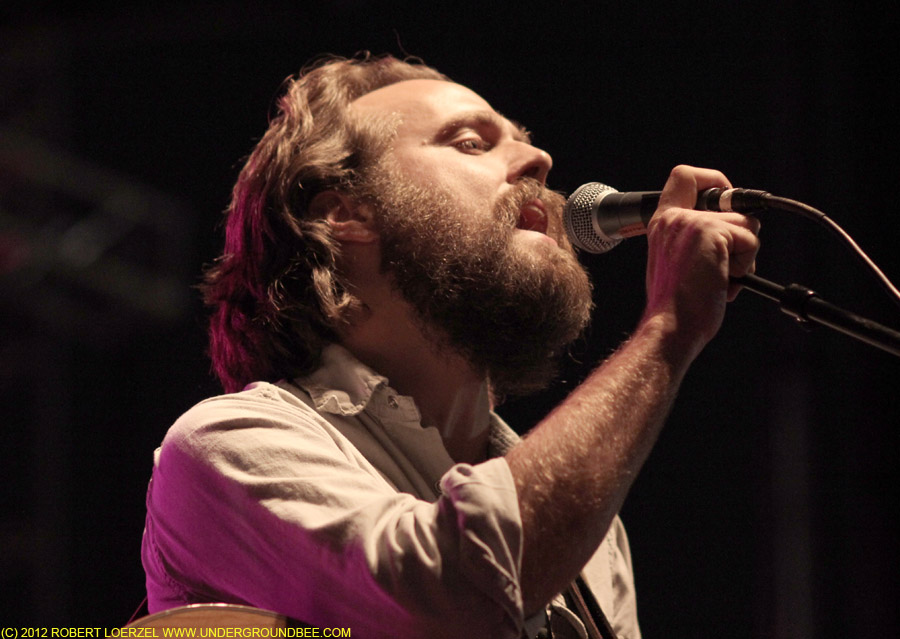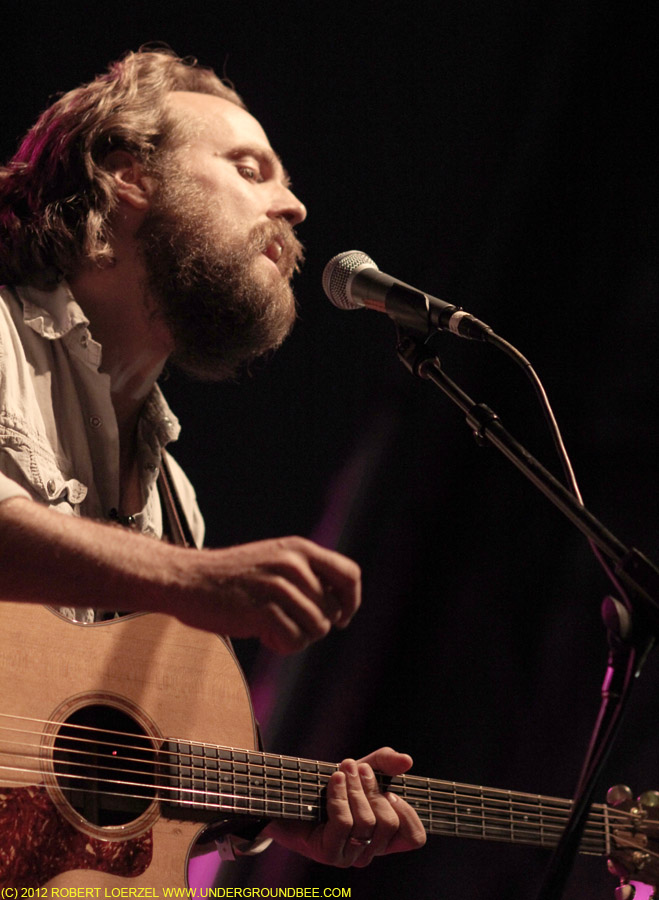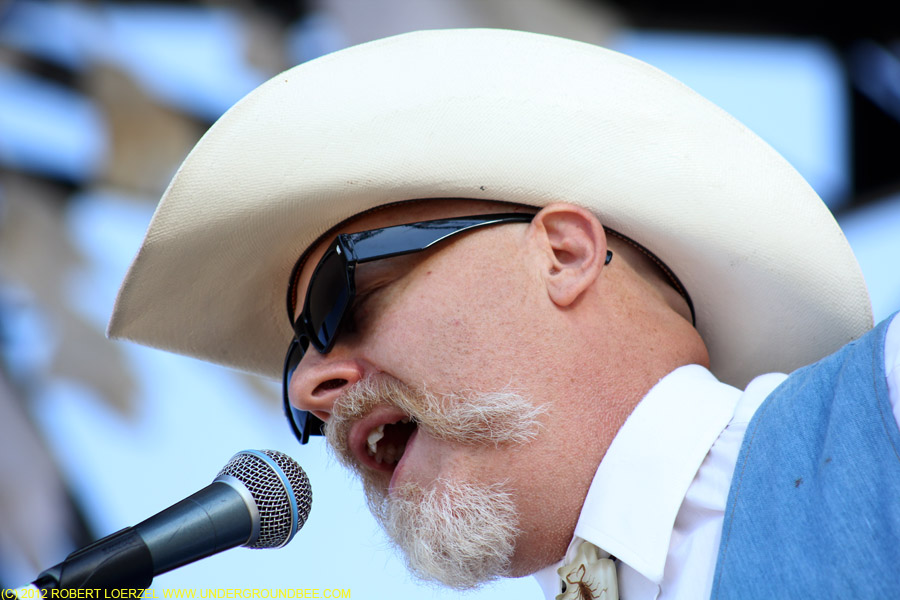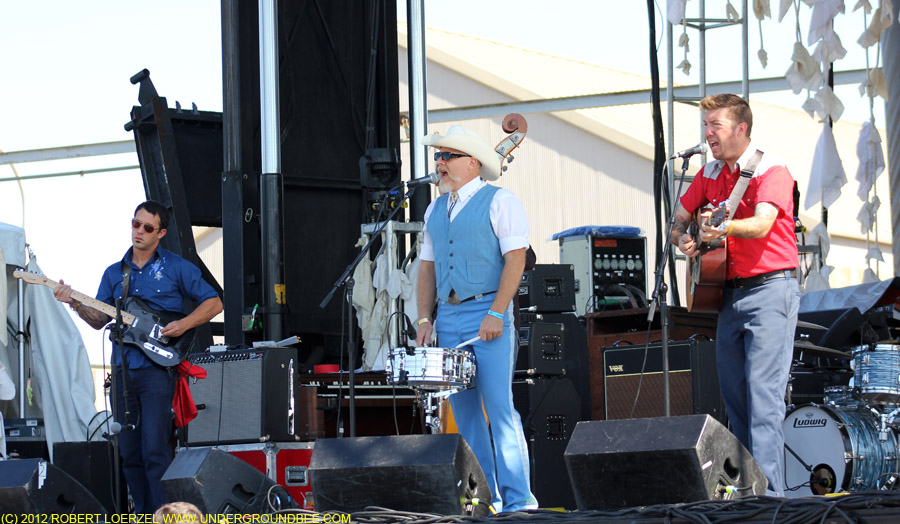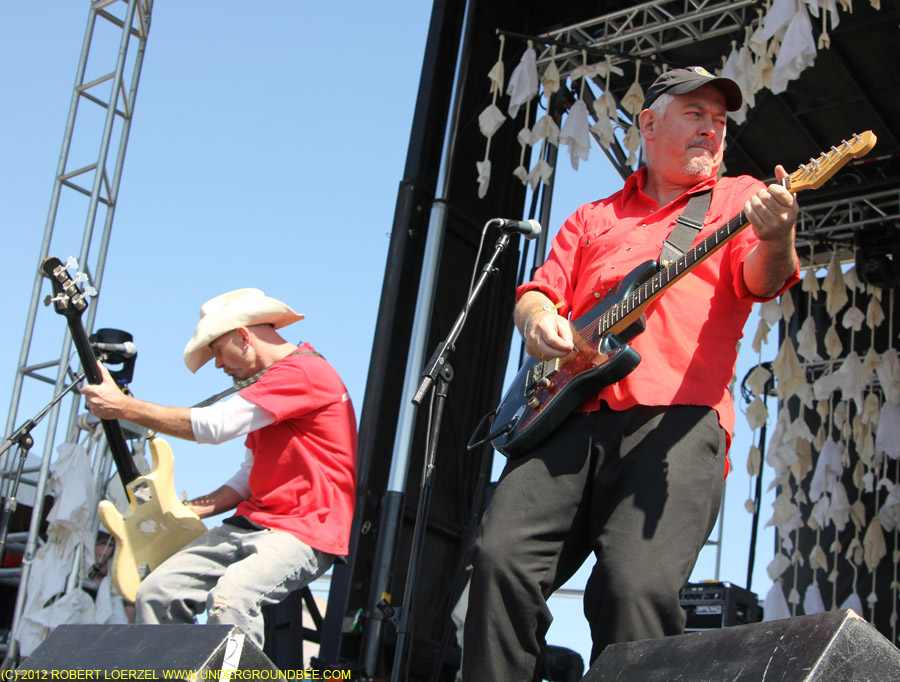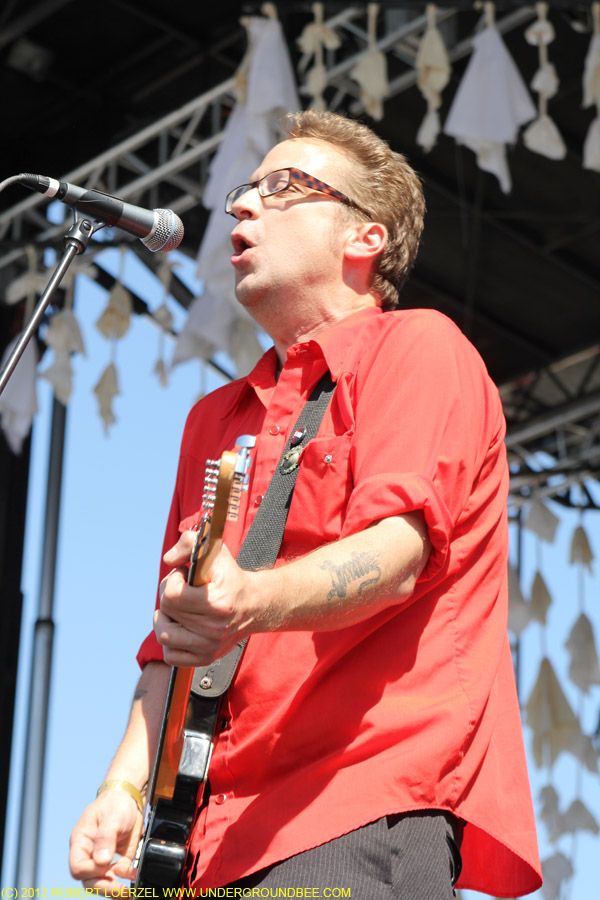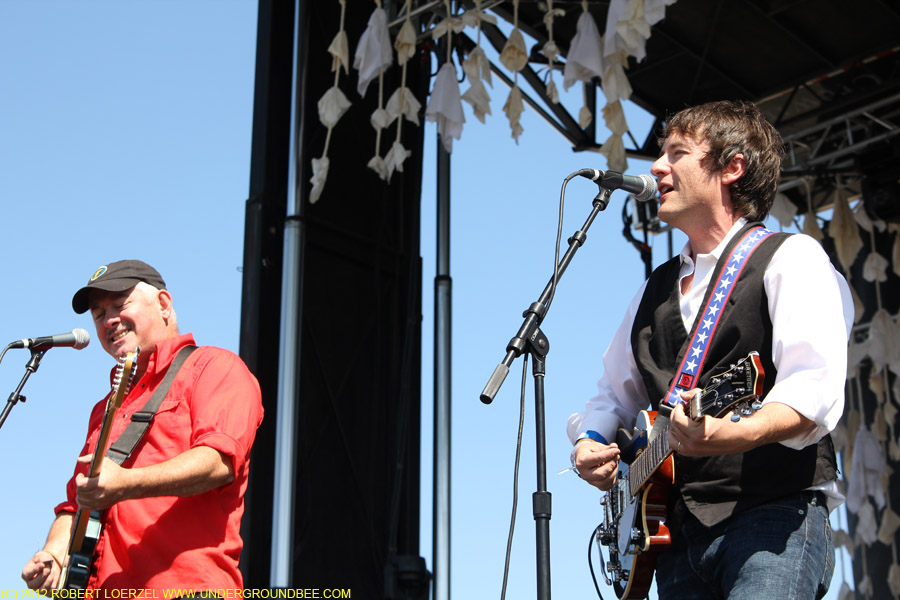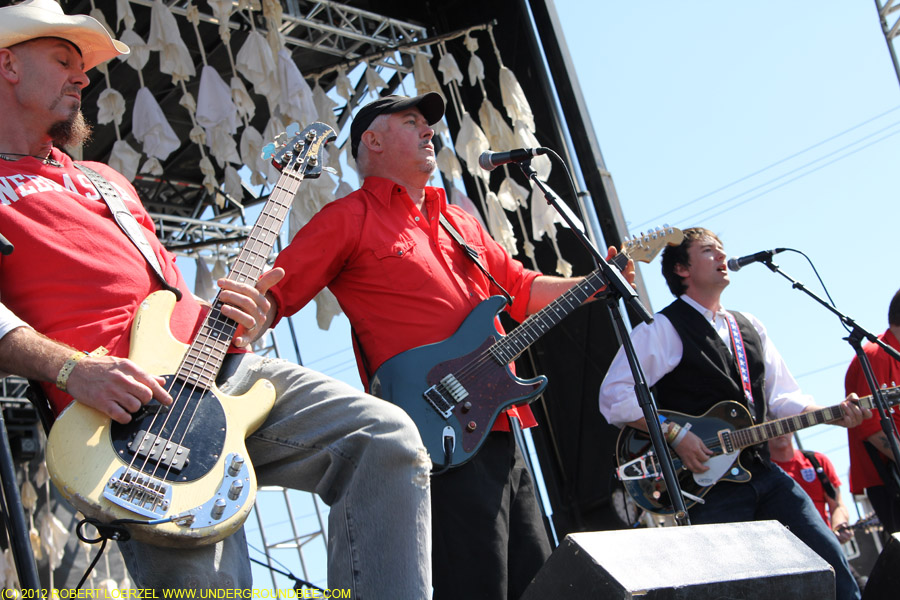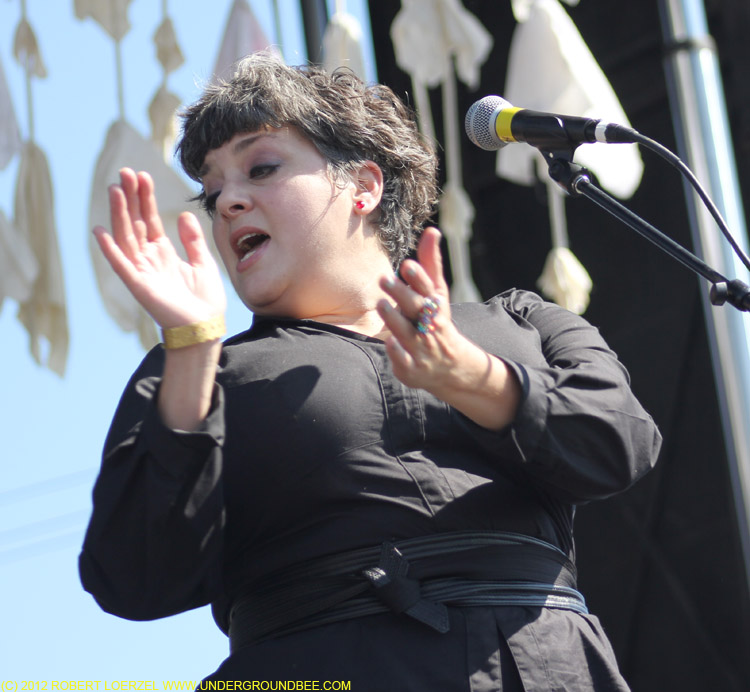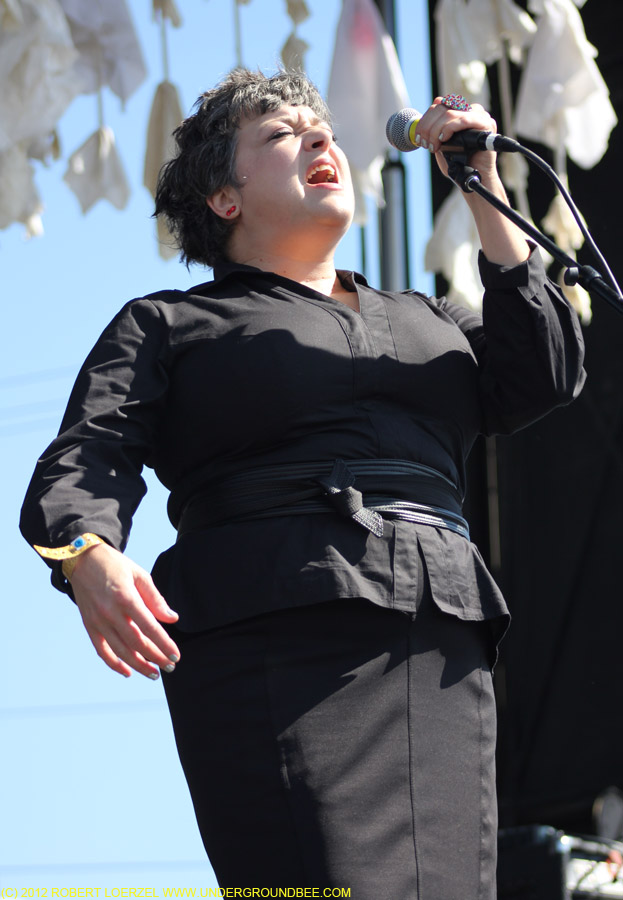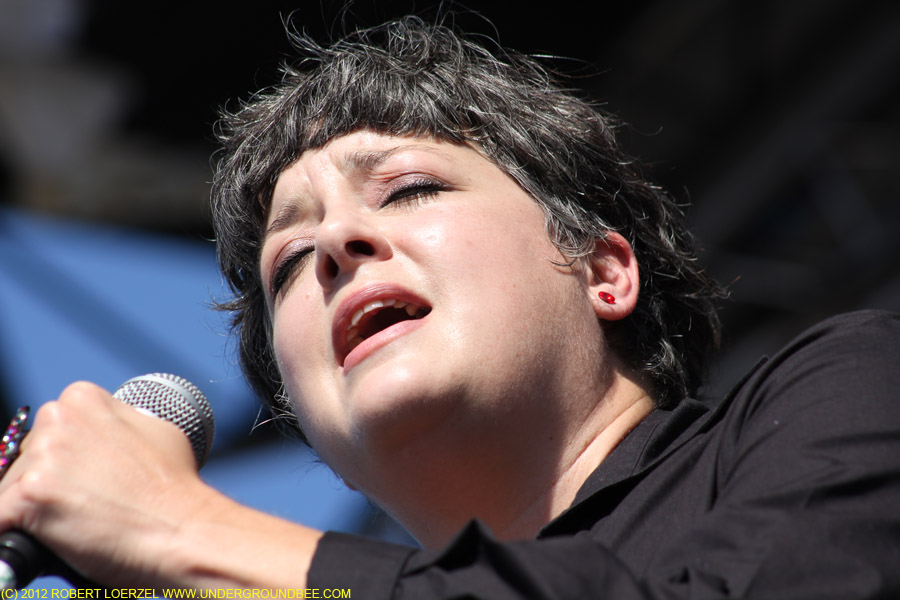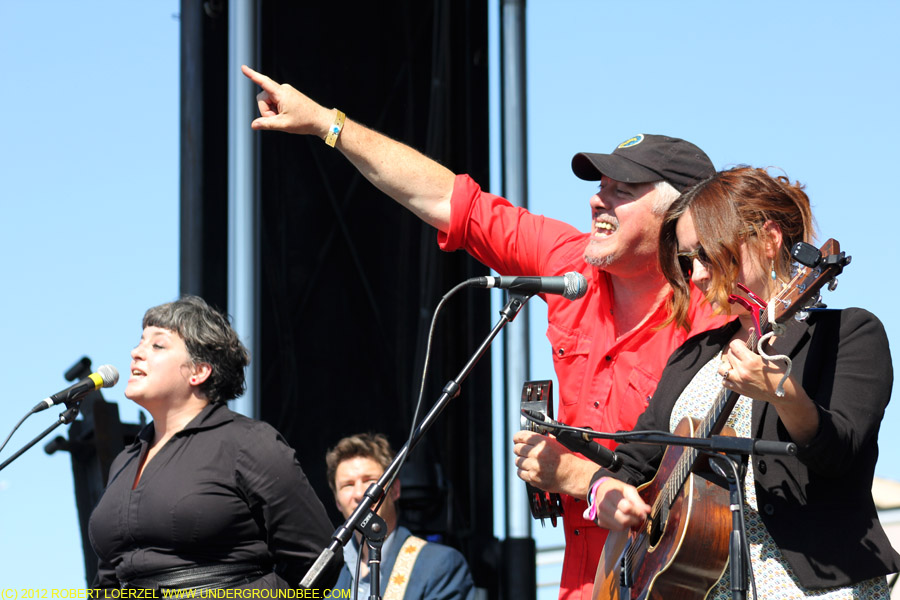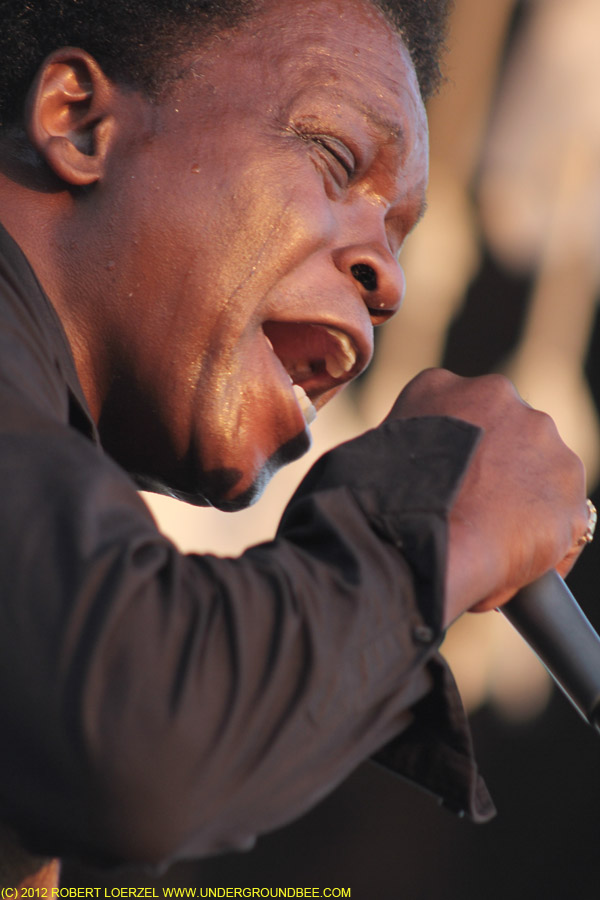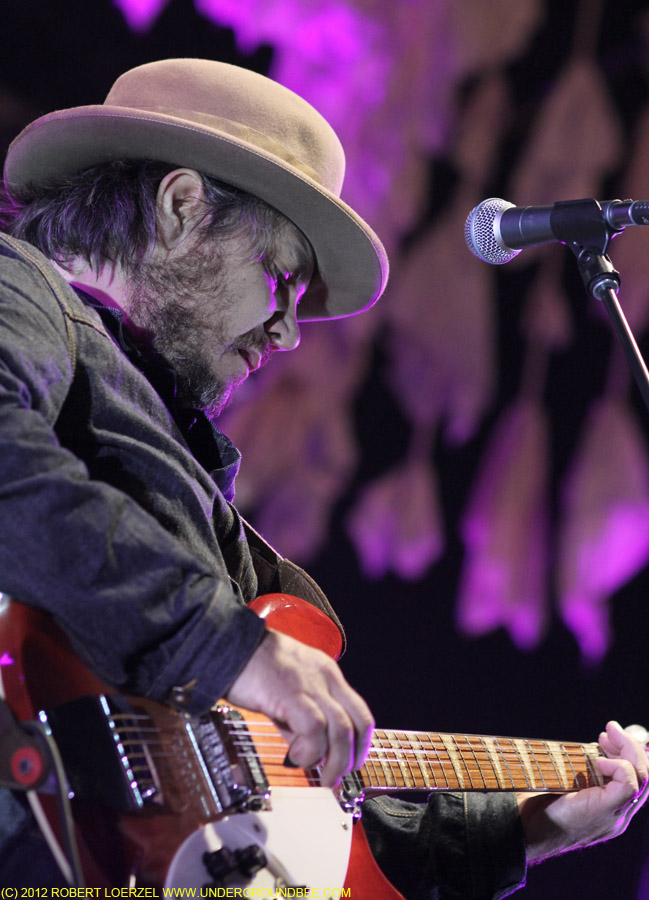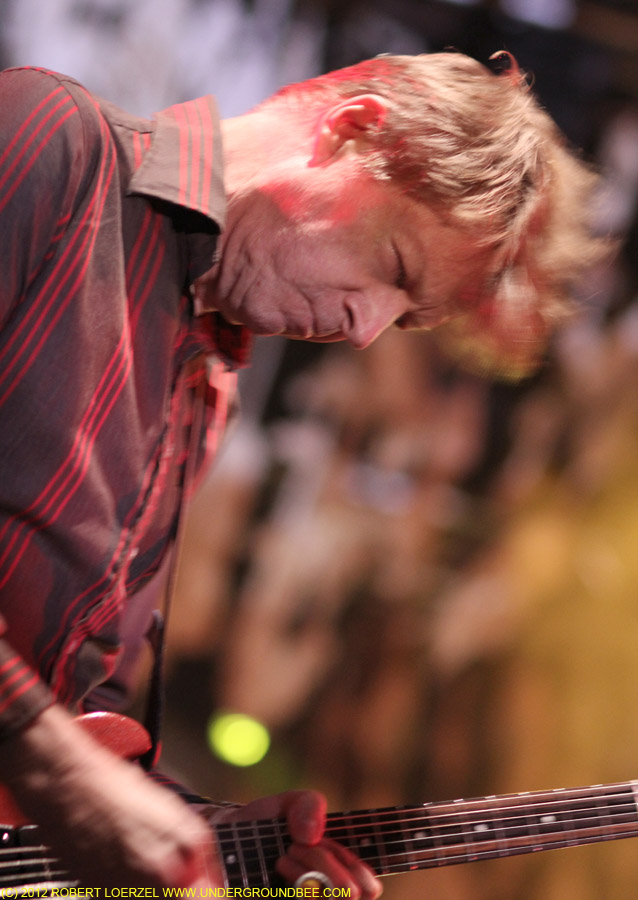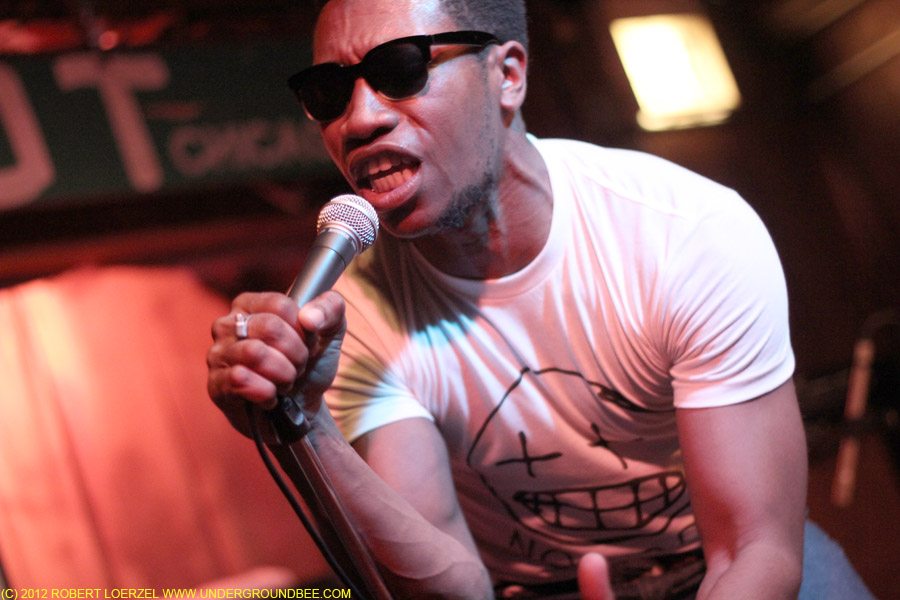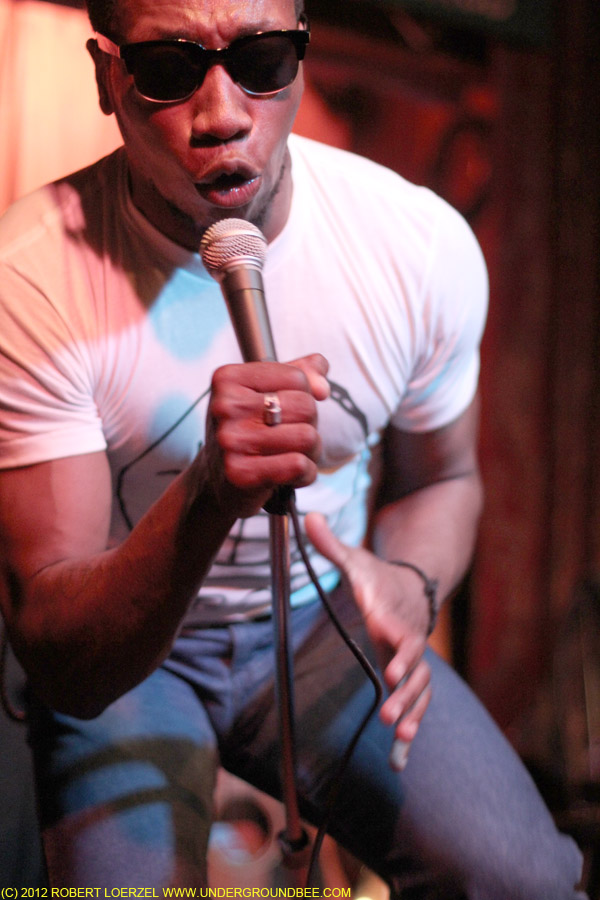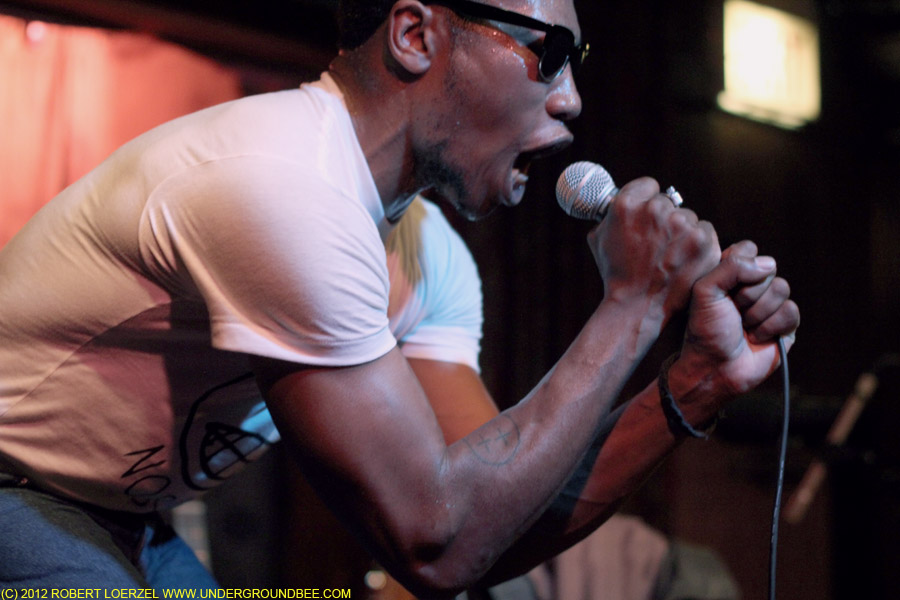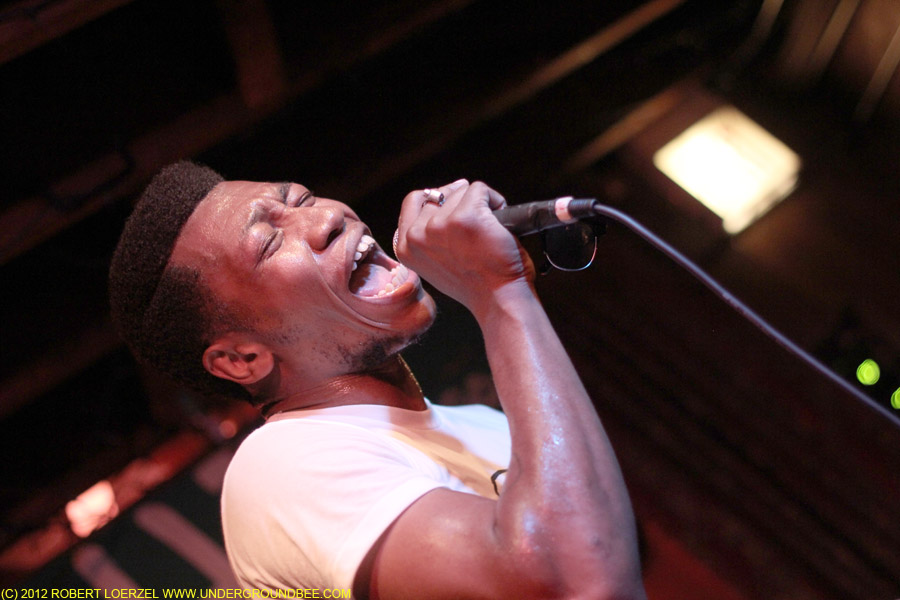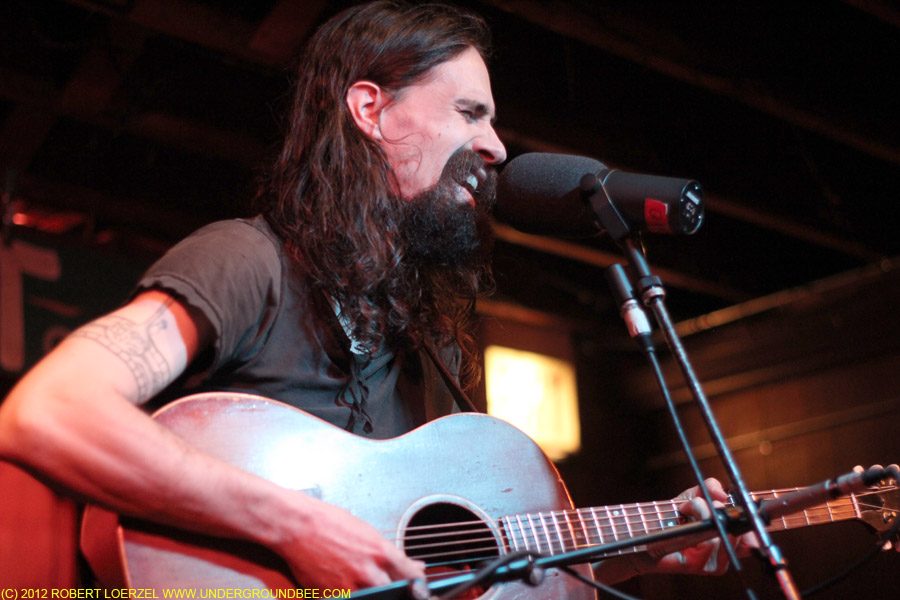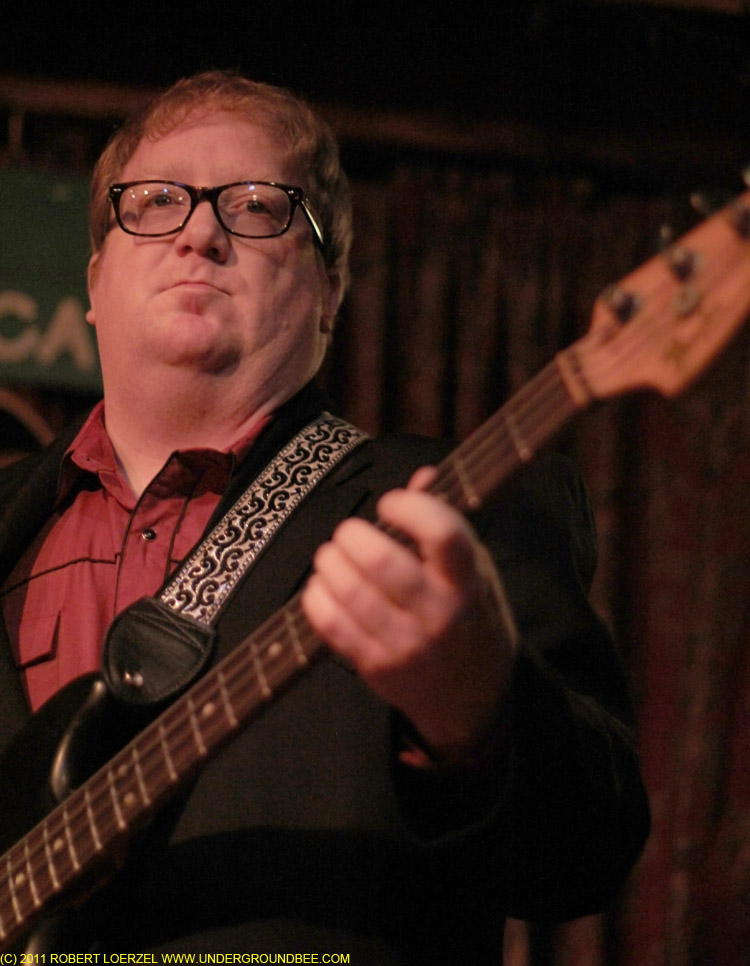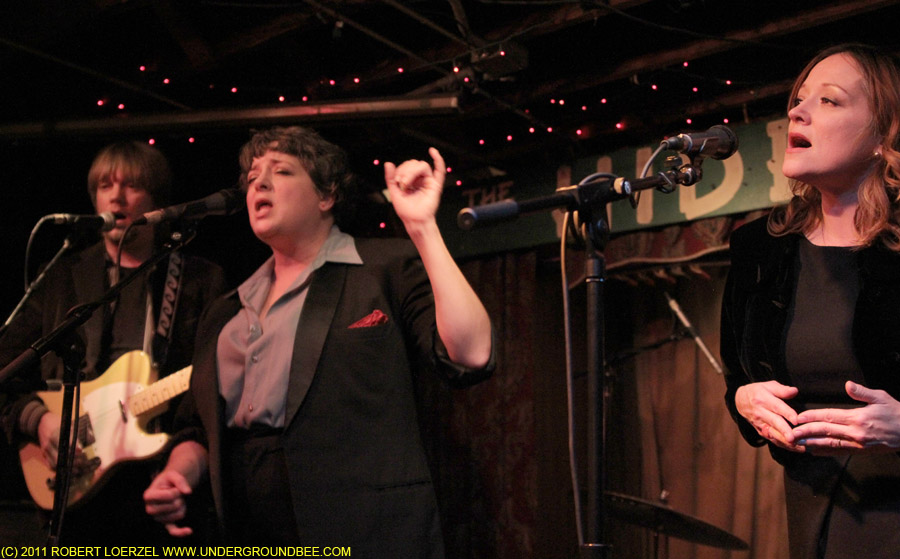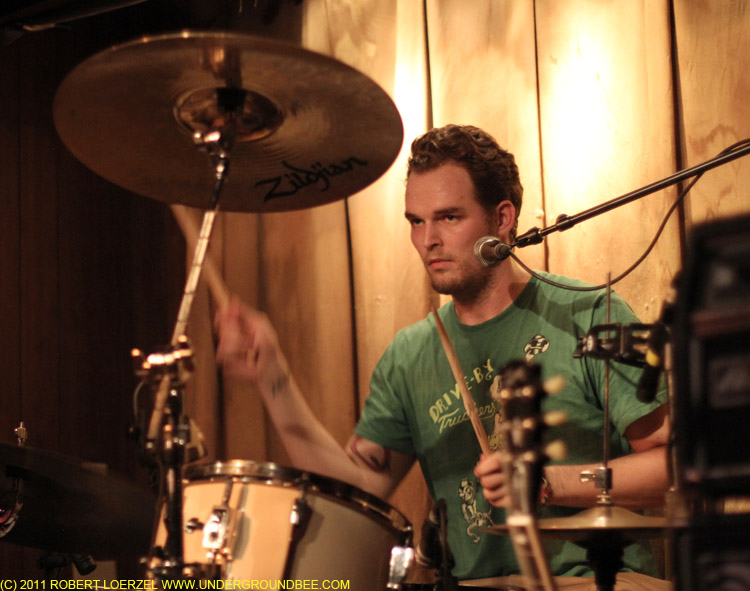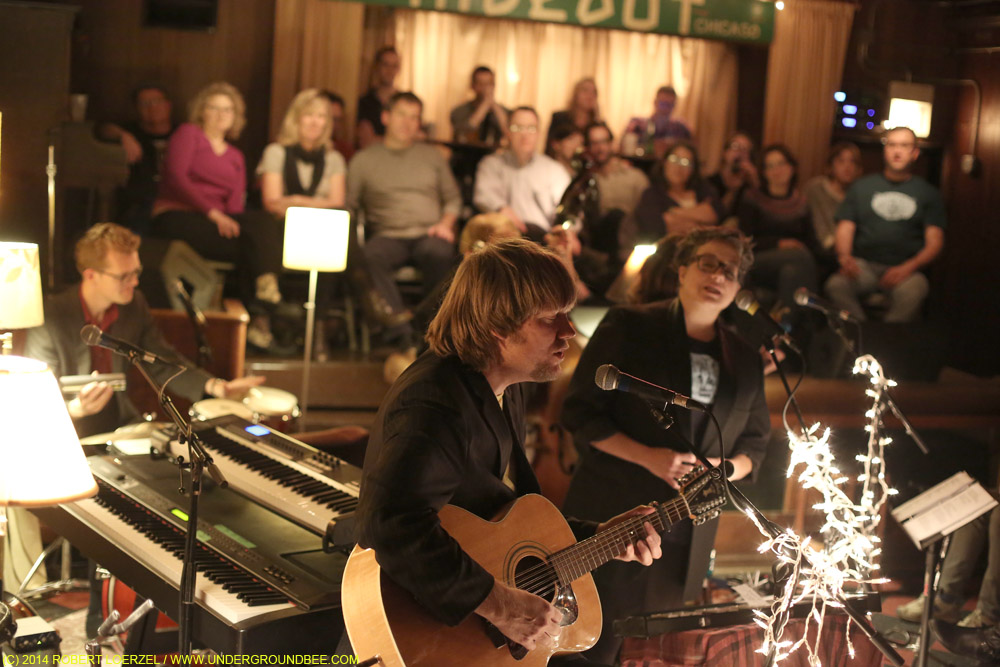
The Flat Five are a supergroup of the Chicago music scene, combining five terrific talents: Kelly Hogan, Nora O’Connor, Scott Ligon, Casey McDonough and Alex Hall. The group plays a delightfully diverse range of cover songs, and it’s working on its first album, a collection of songs written by Ligon’s brother, Chris Ligon (longtime co-host of the Chris & Heather calendar shows at FitzGerald’s with his wife, cartoonist Heather McAdams). The Flat Five is halfway through a series of four Thursday-night shows at the Hideout. You have two more chances to catch them during this residency: Nov. 13 and 20. (I included these Flat Five shows on a list of this season’s recommended pop concerts in the Nov. 3 issue of Crain’s Chicago Business.)
Last week, the group performed on the floor of the Hideout in front of the stage, focusing on quieter songs, while the audience included people sitting on the stage. After a 90-minute set, the Flat Five took a break and then came back with a jar full of songs requested by the crowd, playing some of those for the next hour and a half.
Last month, I interviewed two members of the Flat Five, Scott Ligon and Kelly Hogan. Here’s an edited transcript of those conversations, interspersed with my photos from last week’s show.
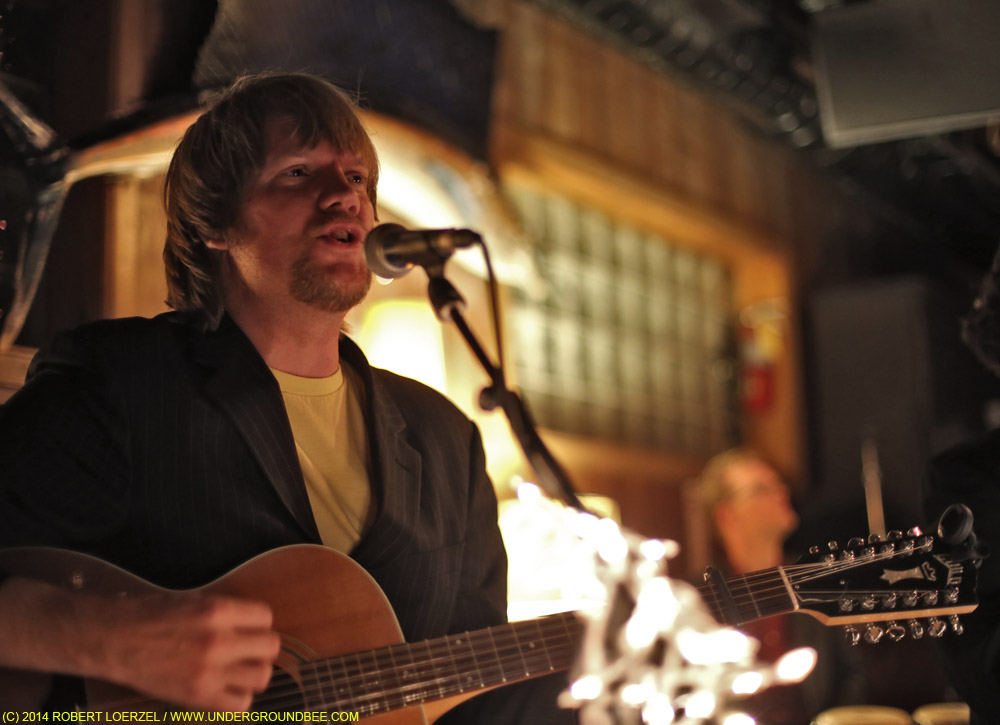
SCOTT LIGON
Q: How would you explain the concept of the Flat Five?
A: We’re a bunch of friends that have played together over the years in different incarnations. And the Flat Five is an opportunity for us to all do things that we would otherwise never do in any other band. It gives us a chance to explore music that we couldn’t really do in any other band. But more than anything, it just gives us a chance to sing together, and that’s what we love to do.
When I first moved to Chicago, I came up here because I’d struck up a relationship with Kelly. The first time we ever sang together, we just had this magical experience. It was almost like we’re separated at birth or something. I actually have a recording of our first gig, which we only had one rehearsal for. It’s a show that my brother Chris and Heather were putting on at FitzGerald’s, and Kelly was supposed to do a short set with her friend Andy Hopkins. And Andy Hopkins wasn’t going to be able to make the show. And so she was thinking she wasn’t going to be able to make the show. And she was actually telling my brother Chris this while I was at his house. I had seen Kelly sing maybe one time, and I volunteered — I said, “Hey, you know what? I’ll do a set with Kelly.”
And we just started discussing some things on the phone, and discovered we had a lot of music in common. We got together the night before the show and sang together. And I swear, there’s no difference between the way we sang that night and the way we sing together now, over 10 years later. I have a recording of that night, and it sounds like we’d been singing together for years. So we did have this sort of magical connection right away.
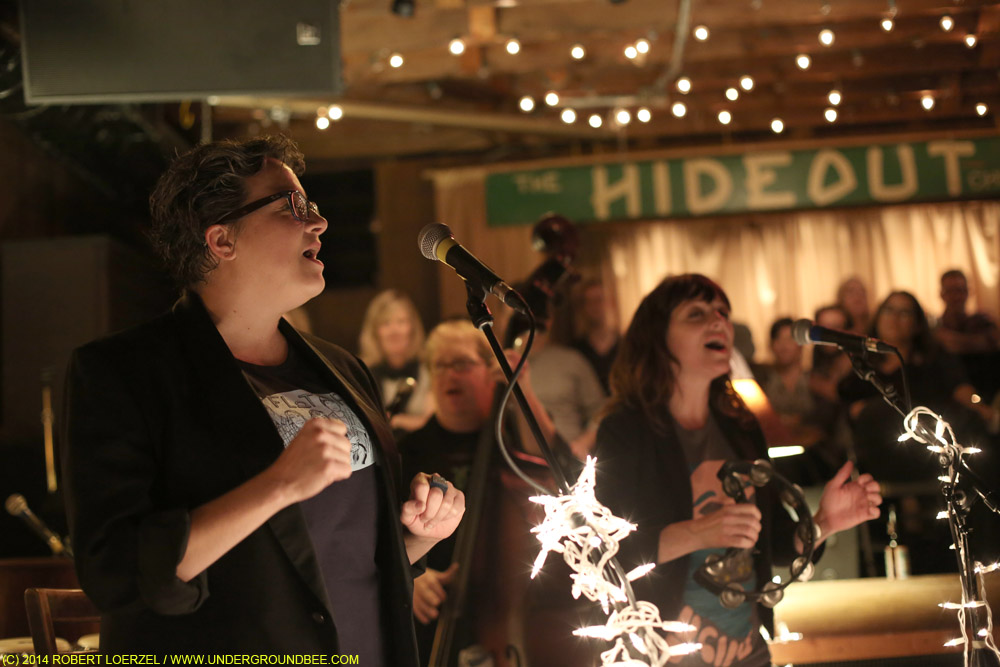
I had been thinking about moving to New York. I was living in Peoria at the time. And my connection with Kelly made up my mind about not moving to New York and sticking with Chicago. I’d been here once before. So, I came up here and immediately started doing Thursday nights with Kelly at the Hideout and working the door on other nights. We were just doing duets at the Hideout.
At some point, she said, “I have this wonderful friend Nora who’s a fantastic singer. We should have her out some night.” And Nora just came out and sat in, and it was the same thing — it was like this magic that happened the very first time that the three of us all sang together. We all knew exactly what to do, you know? We all knew what part to take on any given song, and so then we started doing a trio thing. We had been offered a gig opening for the Blind Boys of Alabama, which seemed like an odd thing for us to do. So we decided to do some — sort of the opposite side of the coin. We decided to do some white gospel and country gospel music. None of us are particularly religious, but we like a lot of music. (Laughs.) So we were doing that for a while under the name the Lamentations. We were doing that for a little while and peppering the set with just little country music and some other oddities.
While this was going on, I had been getting to know this guy, Casey McDonough — who I was discovering I also had this strange connection with, almost separated-at-birth kind of thing. We found out that we had met one another maybe 20 years earlier, when we were kids. We were in our teens and we met at BeatleFest, apparently. So we had this Beatle connection. Casey started working with me in my country and western band, the Western Elstons. And we start developing a duet style together. And I thought, “Man, he would be perfect for this thing with me and Kelly and Nora.” So, he joined that band, and then all of a sudden we had all of this music to draw from. Because Kelly and I had our list of songs that we were performing. And we had a complete selection of tunes we were doing with Nora. And Casey and I had this whole other bag that we were doing. And we just decided to put it all together in one group and not be concerned about style, but to just be concerned about substance. And so was born the Flat Five.
Q: And you had Gerald Dowd on drums originally, and now Alex Hall.
A: Yes, Gerald Dowd was with us for two or three years. We played so infrequently. There were some conflicts when Gerald couldn’t do it, so we started using Alex. Casey and Alex and myself had developed a little trio called the Letter 3. I was playing piano, and we were mostly doing jazz and rhythm and blues and stuff like that. So it seemed to make sense to bring Alex into the band. Once again, we had a whole other group’s worth of material to add to the Flat Five’s set. So, the Flat Five is comprised of maybe five different bands, actually.
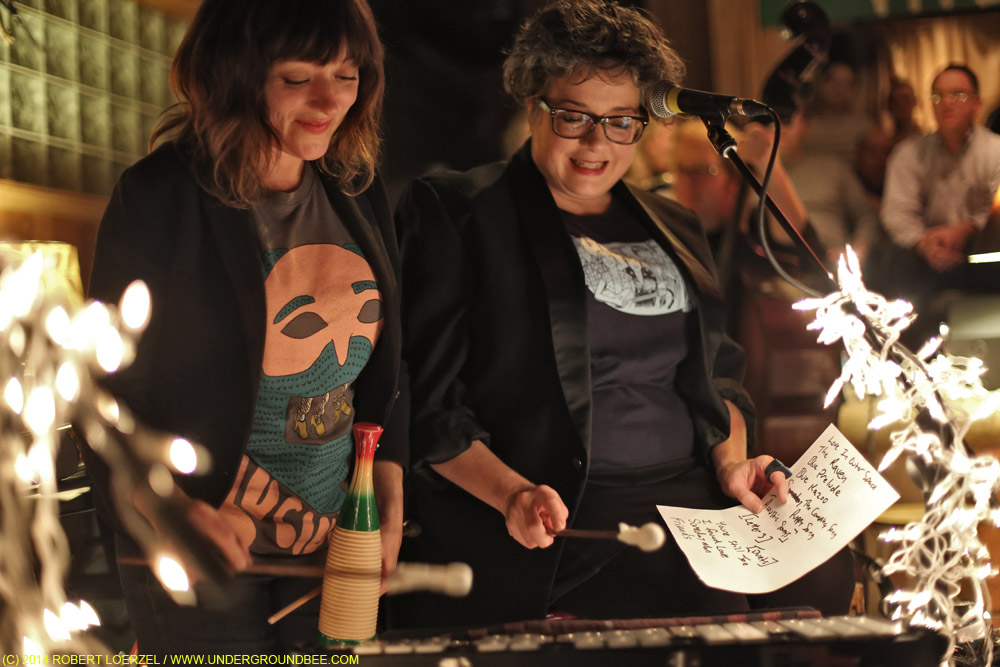
Q: How do you describe the range of music that you guys play? Is there a common thread?
A: I don’t think that musically there’s necessarily a common thread. I think the common thread is just that these songs are fantasy songs for us — songs that maybe in the past we fantasized that we wish we could do someday in a band. It gives us an opportunity. Because of the range of the band — because we’re able to cover so many different styles and we have so many singers — we are able to do things we wouldn’t be able to do in any other band. Recently we’ve been doing this song, it’s a musical version of Edgar Allen Poe’s “The Raven,” which I heard 30 years ago on an old Buddy Morrow record called “Poe for Moderns.” It’s a big band arrangement of “The Raven,” and it’s just this really odd little song that I doubt any of my friends had ever heard, but it’s something that stuck with me for decades.
Q: When I was trying to figure out one of your set lists and I was Googling the various songs, I think that was the one that I couldn’t identify. Where did this come from? And part of the problem was that if you search for “The Raven,” you get all sorts of stuff about Edgar Allan Poe.
A: It’s wonderful to be able to stump the Internet. And we don’t do these things to be — we don’t do anything because people aren’t aware of it.
Q: You’re not being deliberately obscure?
A: No, I’m not. I don’t mean to speak for the others. To me, that’s just being cute, you know? That song really meant something to me.
Q: It’s jazzy, with a Manhattan Transfer or Swingle Singers sort of harmony.
A: The music itself is very challenging, and that’s part of what’s really fun. Because none of us are classically trained or anything like that. So, it gives us an opportunity to really stretch. It’s one thing to appreciate a piece of work that’s done in five-part harmony. It’s another thing to figure out how it’s done. And then figure out how to do it.
Q: So you guys are figuring this out by ear by hearing the records?
A: Exactly. That’s how we do everything. And none of us is a trained arranger. It’s just all for the love of the songs that we choose to perform.
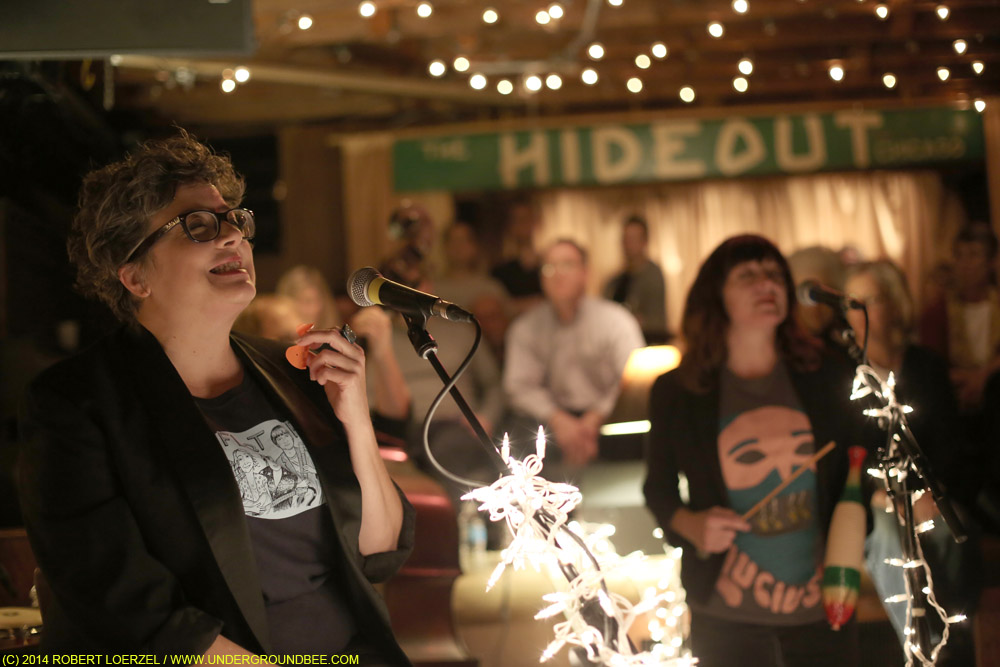
Q: I think it’s interesting how you could step into a Flat Five gig and you guys would be doing vocal harmonies on a Hoagy Carmichael song. And at that moment, I’ll think this is a concert that jazz fans or fans of the Great American Songbook would love. And then a minute later, you’re wailing on a guitar solo and it’s suddenly more of a rock concert. And five minutes after that, now you’re doing country music. I appreciate all of that. But I wonder: Are there people here who like only one of these kinds of music — and what do they think about the rest of the show?
A: You know, that’s the thing. I’m sure you’re aware of the fact that I’m currently a member of NRBQ. That band — and some other rock ’n’ roll bands in the past were unafraid to do any kind of music. The Beatles did whatever kind of music they wanted to. And nobody said, “Oh, they’re doing all these different kinds—” It was just under the umbrella of the Beatles. Now, I’m not comparing us to the Beatles or anything like that. But NRBQ works in the same tradition. Music is music, and if it moves you, it moves you, and that’s what it’s all about. It’s about being connected to the spirit of this music. Classifying, I think, is troublesome. Because I get just as much joy out of listening to an old Hoagy Carmichael record as I do listening to the Ramones. Most of my friends, most of my musical friends, they’re the same way, you know? But people think you have to do something in order to be successful, you know? If you have to present something in a certain way in order to be successful, I don’t really want to be part of it. I just want to play music because I love it. And that’s what we do. We’re unconcerned about categories.
Q: The article in the Chicago Reader several years ago portrayed you as this great musician who wasn’t putting out a lot of recordings. And I’ve often though the same thing about Nora and Kelly — at least Kelly had a record come out on Anti- last year, but it took 10 years where she was doing all kinds of stuff: touring with Neko, playing shows at the Hideout. And the Western Elstons are playing at Simon’s. So you guys are all very busy, but if I look you guys up on allmusic.com and look at your discographies, you look like you’re not doing much. For you, is the focus just doing music in a live setting? Or have the opportunities to make records just not come along as often as they do for some people?
A: I think it’s a combination of things. First of all, I’m not going to work a regular job. I’ve been making a living playing music for 20 years now, and it’s not easy. It’s not easy to keep yourself booked all the time. It’s also not easy to make a living playing music and to continue to do things that you really love to do. Now, it’s taken me some time to get to the point where I’m comfortable with all of the different projects that I’m involved in. Currently, I’m not doing anything that I don’t really enjoy. Which is a great thing. But it takes up a lot of your time. And also, I think you could also say that maybe we’re a little lazy.
Q: But you’re keeping busy playing live shows, which isn’t a sign of laziness.
A: I don’t want to speak for Kelly and the others concerning this particular topic. But you know, I’ve had some kind of strange goals in life. All I ever wanted to do was play music and enjoy it. That’s all I ever cared about. And then you come into this thing where — well, the music business, they sort of define success for you. Well, I’m not going to let anybody define my own success for me. I’m going to do things. I’ve always been very stubborn about the way I want to live my life and the way I want to spend my time. I had sort of been chasing this (NRBQ) thing around for a long time. I saw them for the first time when I was 18, and it just changed my life. I just knew that I was somehow supposed to be connected — I was connected to this group. I was busy trying to make a living in bands, but I always had this NRBQ thing hanging around in my consciousness. Twenty years of thinking about it and feeling as though I was supposed to be involved in it — 20 years later, I ended up being in the band.
Q: That’s kind of remarkable, isn’t it?
A: It is a crazy story. I mean, it really is. It literally is a dream come true. I used to have dreams, actual dreams, that I was — “Oh my God, I’m up onstage playing in this band.” Or: “Oh my God. (NRBQ leader) Terry Adams just walked into the room while I’m playing.” Just things like that. I was pretty geeked out about that band. And it did come true. And the strange thing is, it’s not like I was really actively pursuing it, but I just always had some strange feeling about it. So, like I said, who’s to define success? In my mind, I kind of got what I wanted.
In high school, I remember counselors saying — I think they all thought I wanted to be famous. They didn’t get it. All I ever cared about was just playing good music. Because I started from a really young age, and it just got in me. I just knew from the time that I was in sixth or seventh grade that this is what I’m going to be doing. And I’m very fortunate to be able to do it and to be able to pay my bills.
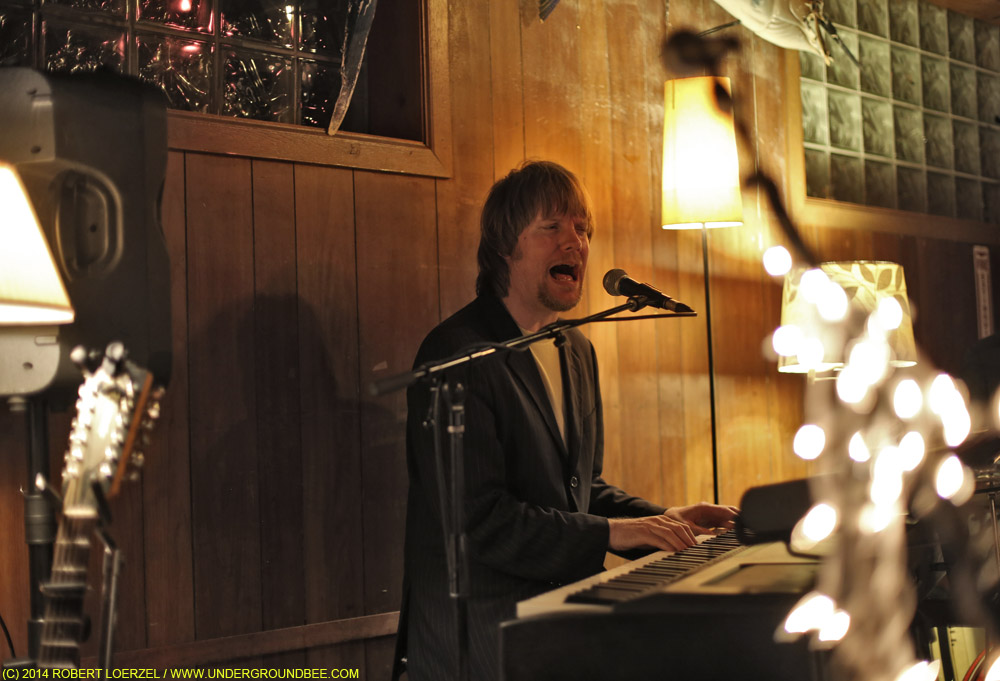
Q: And now Casey has joined NRBQ, too.
A: He’s in every band that I’m in. (Laughs.)
Q: Obviously that takes up a portion of your time. But you have a pretty good balance of doing that and other things like the Flat Five and the Western Elstons?
A: It takes some doing to give each one of those things their space. But yeah, it’s all that I do. You’re constantly juggling all of these different things. And Kelly’s doing the same thing: Working with Neko and doing all of the different projects that she’s involved in. But we’ve always had this soft spot in our hearts for the Flat Five. For a time, we were doing it once year and then maybe twice a year.
Q: Was that mostly because of scheduling issues?
A: Pretty much. People were so busy. I think at the time, the Neko thing was really taking off, and Kelly is very devoted to Neko. And at the same time, the thing with NRBQ was taking off for me. So we needed that space to be able to cultivate these things.
Q: So, as you do this residency at the Hideout, you’re preparing to do an album of all covers of your brother’s songs?
A: Yeah, that’s what we’re proposing. Sort of a tribute to my brother’s music.
Q: Why don’t you describe what your brother is all about, musically?
A: I can’t describe what my brother is all about. I really can’t. To me, that music is completely singular. There’s just nothing like Chris Ligon. There’s nothing like what it is that he does.
Q: How old are you, and how old is he?
A: Well, he’s 12 years older than me. I’m 44. I grew up with his music in the house. It was great, because he always involved me in his music, from the time that he started making these weird recordings in the basement. The very first song that I ever remember him working on that he asked me to be a part of was a song called, “Your Cheeks Are Redder As Hell.” (Laughs.) And I think I might have played vacuum cleaner on that song. And he had some other really bizarre songs early on. One called, “I Guess They Call Me Butter Fingers.”
He’s a fabuloulsy original creative songwriter. He has the ability to make — he can create a song that is based on a form that is familiar. He also has the ability, I think, to create new music, which is really hard to do.
Q: You mean, new in a way that it’s different from anything else?
A: Where it’s literally not based on anything you’ve ever heard before. And that’s almost impossible. And it takes a really special person to be able to do that.
Q: If you go ahead with these plans for an album, when is that likely to happen?
A: Well, we have started. The great thing is, we’re doing this on our own time and our own money.
Q: No label involved at this point?
A: No, not at this point. So, we’re our own boss. And we’ll just do it as time allows. But it’s really exciting, because one of the things that was happening over the last couple of years was this feeling of: God, like, are we crazy? Why are we only doing this once a year? You know? It just became this thing where we’re going to be sorry if we don’t do something about this band, if we don’t document some of what we’re capable of. And you know, we really love each other. It’s a really fun thing to do. We’re hoping to be able to try to do it more often. We’ve begun doing it sort of more quarterly. Maybe four times a year instead of twice.
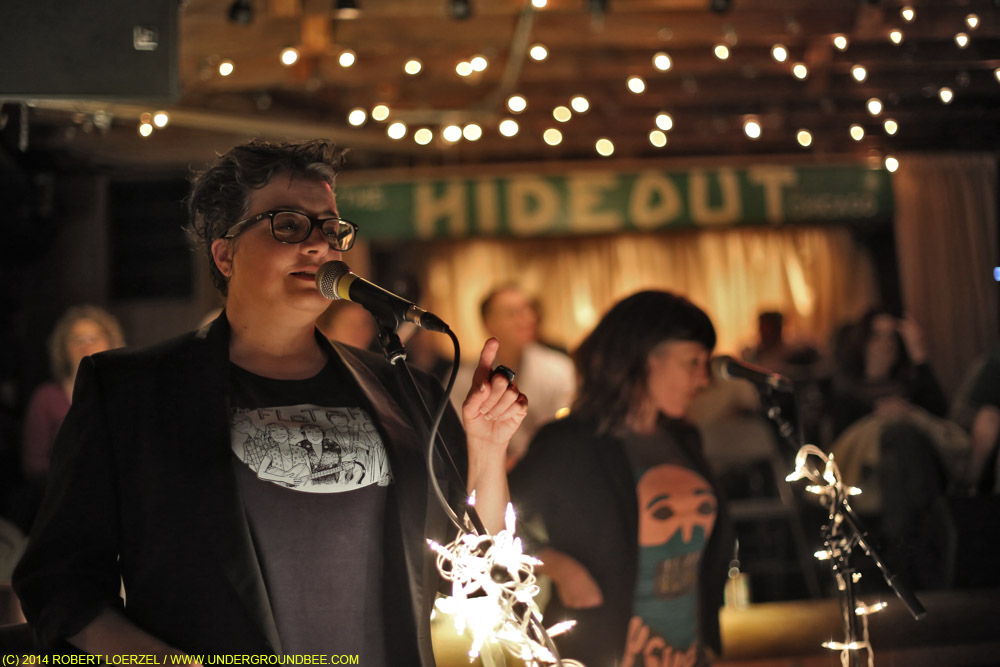
KELLY HOGAN
Q: What’s your summary of what the Flat Five is all about?
A: I was trying to explain it to my mom, because I was playing her some of our stuff we’ve been recording. I don’t know. We’re unapologetically groovy. We like it so much. It’s almost like it doesn’t matter if anybody shows up. We’re junkies, man. We just love that harmony, and, like, the harder the arrangement, the more we like it. It’s joy. All our inner-band emails, the word “joy” comes up all the time. And “groovy.” This morning, we were writing each other. I was like, “Yall, let’s just go ahead and be weird. ’Cause you know we’re already weird. Let’s be as weird as we want to be.”
Q: Is there a common thread in all of the songs that you guys do?
A: Joy? Curiosity and joy. Just trying it on. Trying on all the clothes. All the crayons. We just start throwing songs at each other. Like: “This is one I’ve always wanted to do.” And we’ll always try everybody’s baby, at least once. Some songs jibe and some don’t. Everybody brings their faves to the table.
Q: With some of these songs, are you creating three-, four- or even five-part harmonies that weren’t in the original recordings?
A: Oh, yeah, most definitely. We do that, like when we covered the Dan Wilson song, “All Kinds.” Because everybody — especially Alex, Casey and Scott — they can do everything. They play everything. Alex, our drummer, sings like a dream. So we just want to show him off. He has a nice bass voice. That’s the joy — that vibration. The harmony thing is really what’s our glue. So, why make Alex miss out? We’ll find a part for Alex. We’ve got to give him a piece of the frosting on it, too. We can’t be hoggin’ all the sugar.
Q: Scott traced the whole thing back to the first time he sang with you, as a duo. The way he remembers it, the minute he started singing with you, he could tell it was going to be a great thing having these two voices blend together — that it was very natural. Is that how you remember it?
A: It was amazing. Yeah. I know where I was sitting in my living room when we sort of looked at each other across the coffee table and were like, “Uh-huh. All right. Yeah.” Scott and I talked for, like, 10 minutes on the phone, just about what we were going to do. I got off the phone and turned to my roommate at the time and said, “Oh my God.” I looked at the set list Scott and I had made. I said, “Every band that we’re covering ends in Brothers or Sisters.” The Everly Brothers, the Davis Sisters, the Wilburn Brothers. For someone you’ve never sung with before, this is going to have to click or it’s going to be a disaster. Everything we were about to sing was super-close intuitive, blood-relation harmony. I wasn’t thinking about it when we were talking but then I was like, “Oh boy. It’s going to crash and burn.”
But then Scott came over, and as soon as we started singing together — and then, I think I mentioned Georgie Fame, and we bonded over Georgie Fame and Lou Rawls. It’s just that thing where I could start singing the first line of a song and Scott would just join in. And that’s what happens in Flat Five practices all the time. We have a hard time sometimes getting to the actual song we’re supposed to be practicing, because all of a sudden we’re doing the Guess Who. Somebody just starts humming a song, and all these guys, they just know how to do it. It’s this intuitive thing. We’re eating and sleeping and breathing music. It’s very organic.
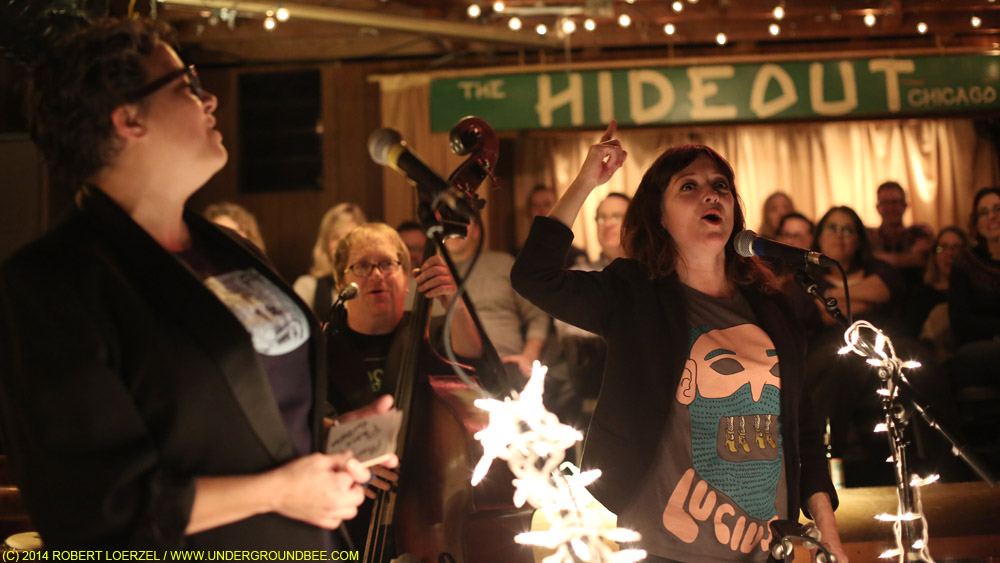
Q: Do you feel like you have a harmony relationship with each of the different people you sing with? When you sing with Neko, there’s one thing happening, but with you sing with Scott, there’s a different thing?
A: Oh, yeah. Definitely, definitely. There’s different ways of singing. As a harmony singer, there’s this way that you — have you ever laid tile? Where you score the putty? It’s almost like you fit into it. Like it’s a different way of scoring and texturizing your voice against somewhere else’s. And that can vary from song to song. There are different colors. What’s fun with Nora and Scott and all these guys, is we can have the whole box of crayons. We can do all different types, from country harmonizing — rough, the bluegrass types of chords and intervals — and then get to the Free Design, and it’s all (sings in bright tones), “Ba Ba Ba.” Then it’s all groovy again. We can’t say no.
Q: You went for a period where you were playing one show per year. Now it’s a little more than that. Has it just come together scheduling-wise, that you’re able to do more?
A: Yeah. Well, we’ve made more of an effort. Once Scott and Casey got with NRBQ, it was even more difficult to do even the once a year. So we’ve really made a concerted effort, because we really like it. When you play once a year and you practice, you don’t want to do the same songs all the time. But everybody’s so busy. So we’ve made a concerted effort to expand our repertoire, which already has like 85 songs in it. Then, we’ve bandied the idea of doing the Chris Ligon catalogue. Scott and I have mentioned to each other for years, and then we were like: “We need to do this. We need to do this.” So we made our plan and everybody’s made their sacrifices, schedule-wise. I mean, I have to drive in from Wisconsin, so I do a lot of couch surfing and stuff. But it’s so worth it.
Q: So for people who don’t know Chris Ligon’s music: Who is he and what’s his music all about?
A: (Laughs.) Oh my God. It’s sophisticated, weird and twisted, dark and light at the same time, you know? With that sort of wry sense of humor. I don’t know. He’s loose and tight. I don’t know. I don’t know what’s happening in there. I just can’t get enough of it. Freestyle. A feral kind of thing. But very sophisticated musicality. And like, Dr. Demento’s going to have the biggest boner. That kind of thing.
Q: What do you have planned for the last two shows of the residency at the Hideout?
A: The last week (of the Hideout residency) on the 20th, Chris and Heather are going to be our co-stars. Chris Ligon is going to do his own set, Heather is going to show films. Nov. 13 is called Flat Five and Friends. Max Crawford is going to come join us and there may or may not be an entire Beach Boys album done in order.
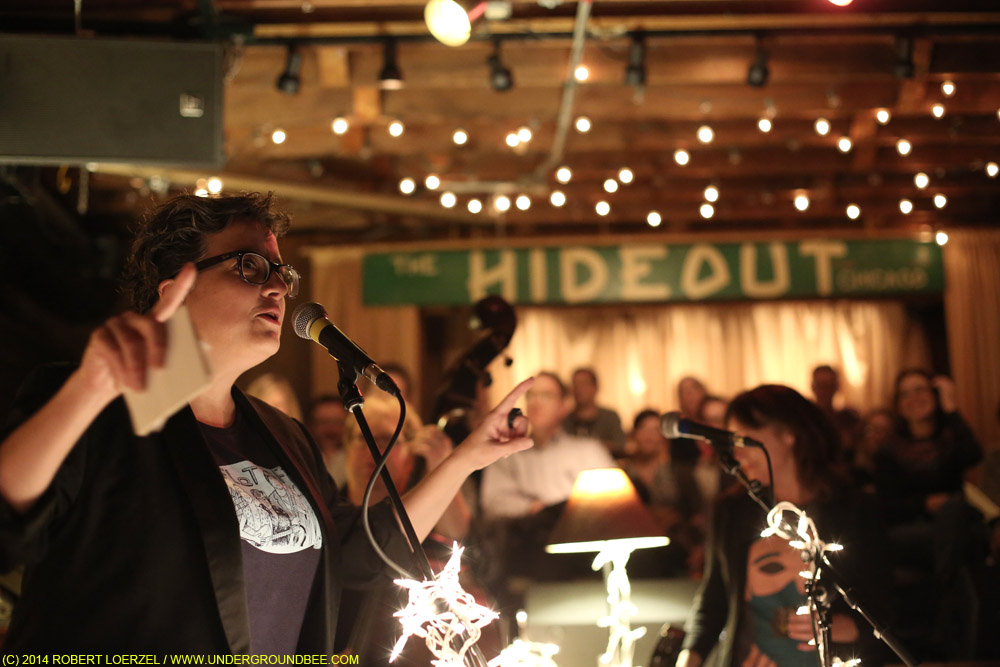
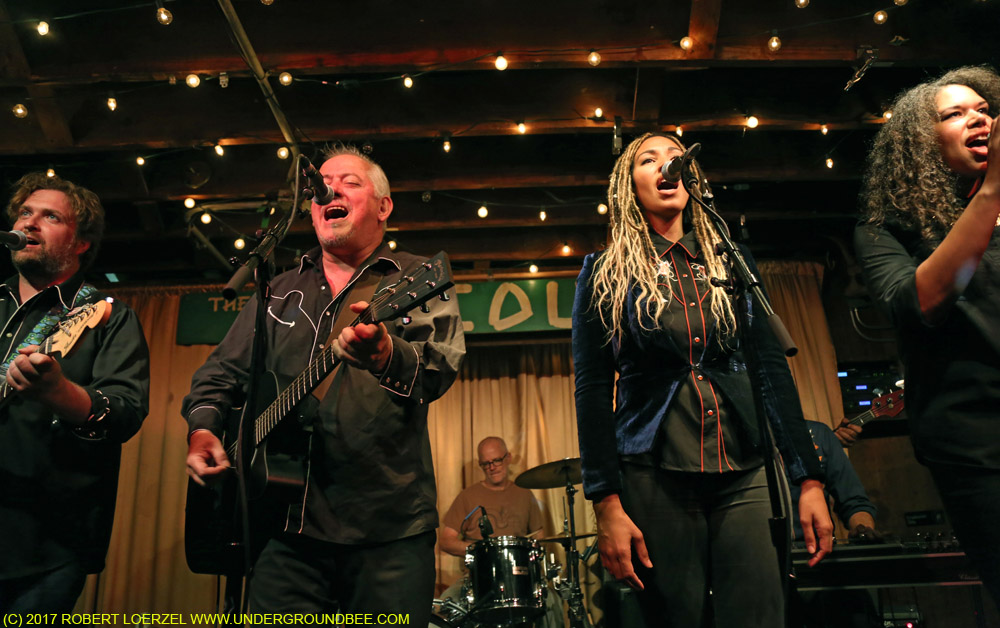
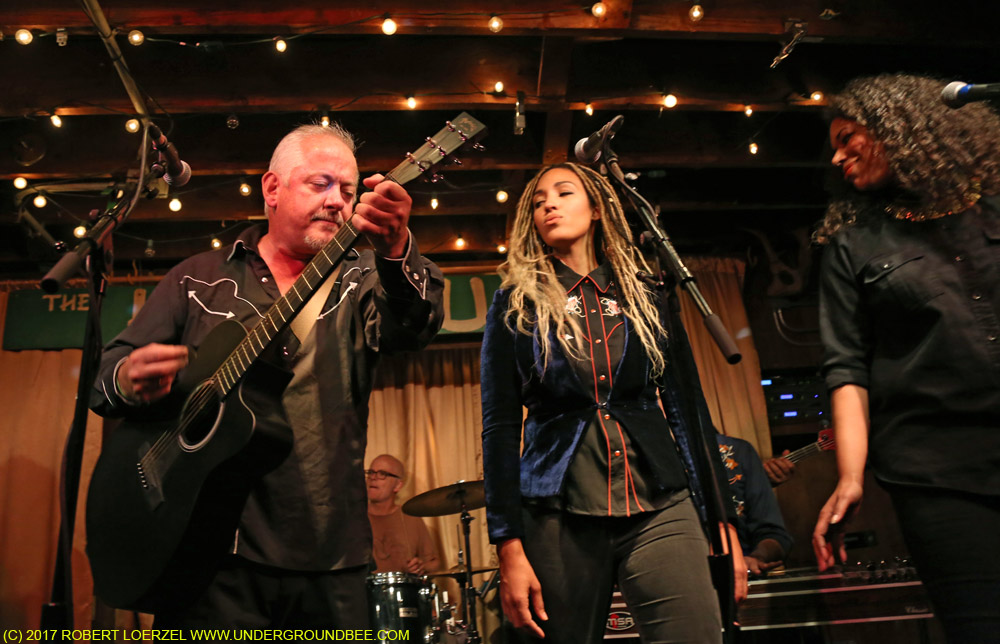
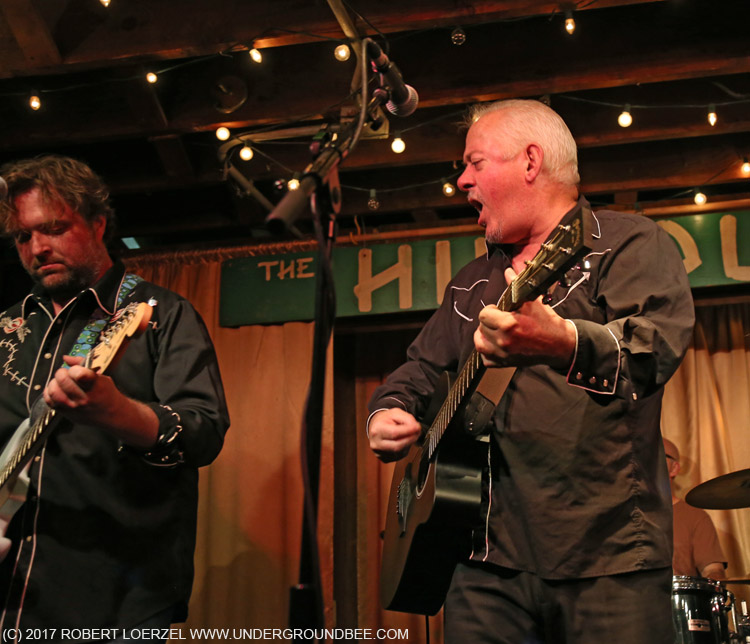
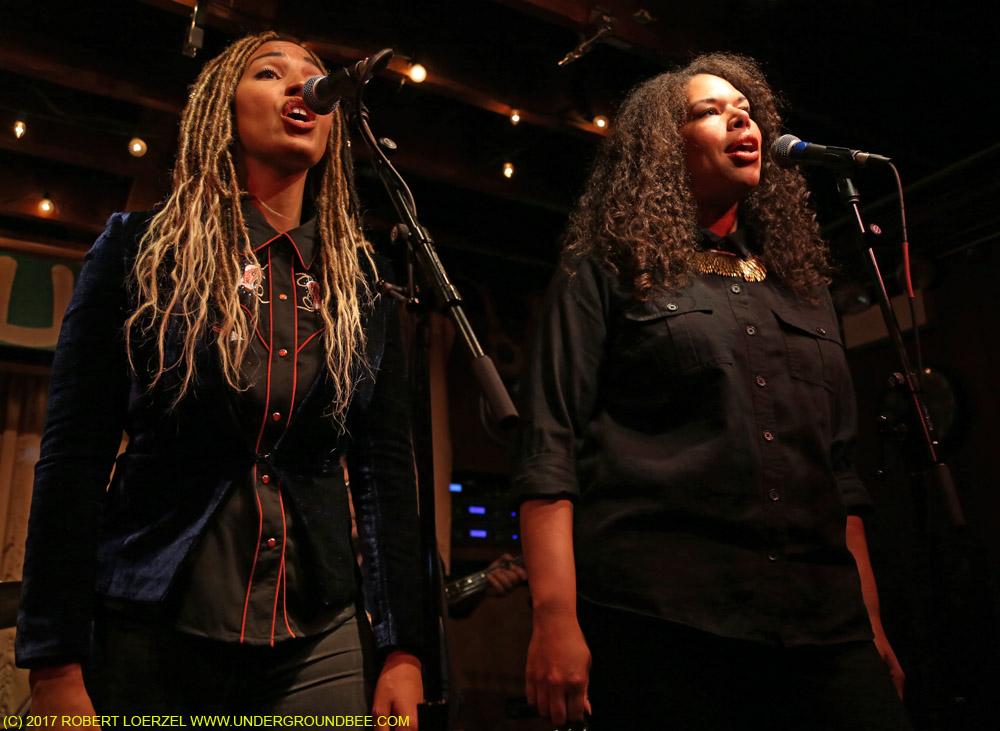
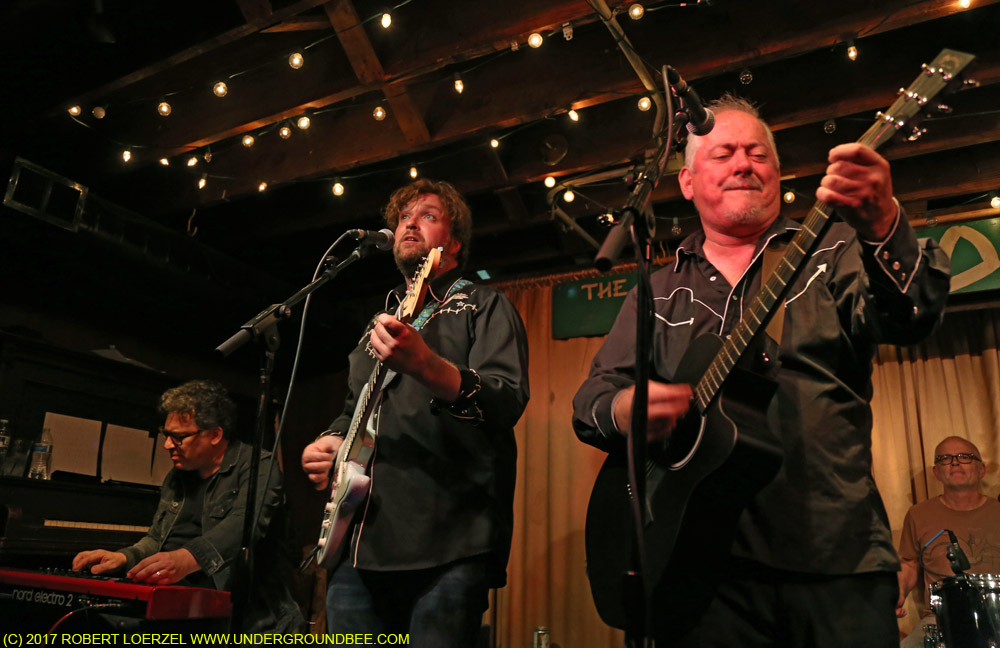
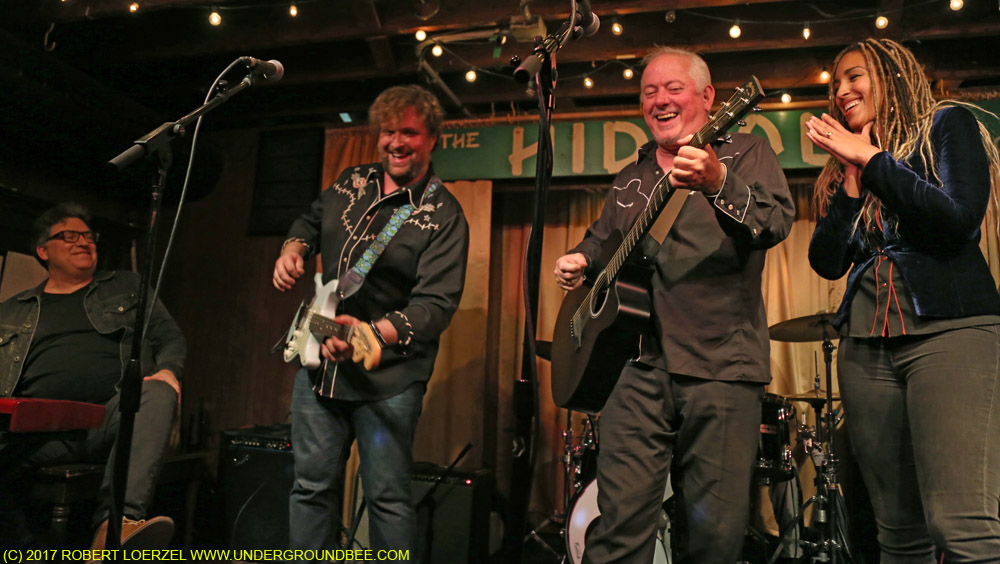
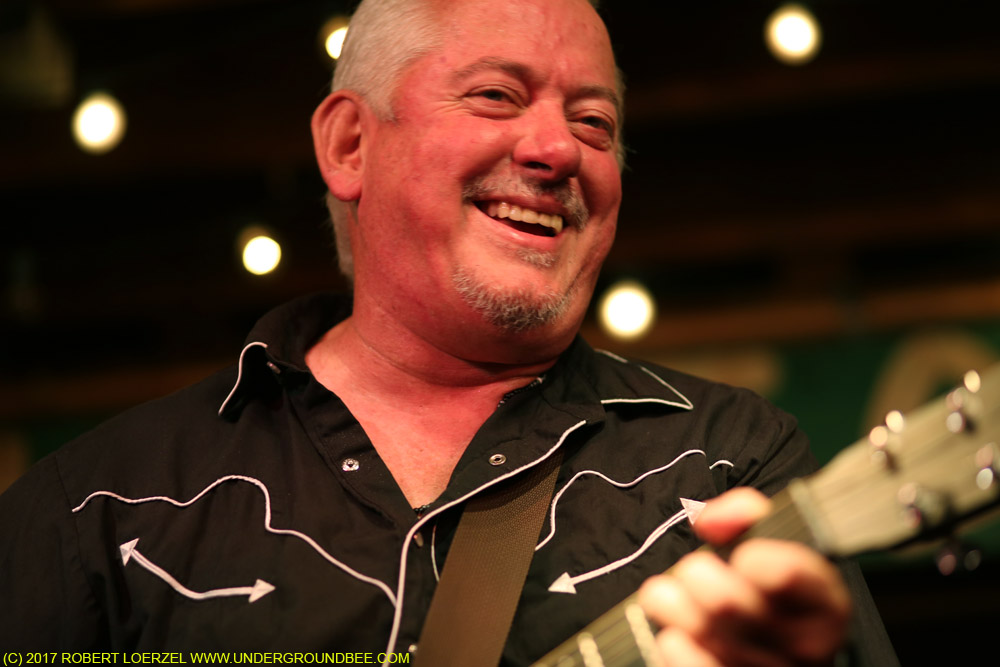
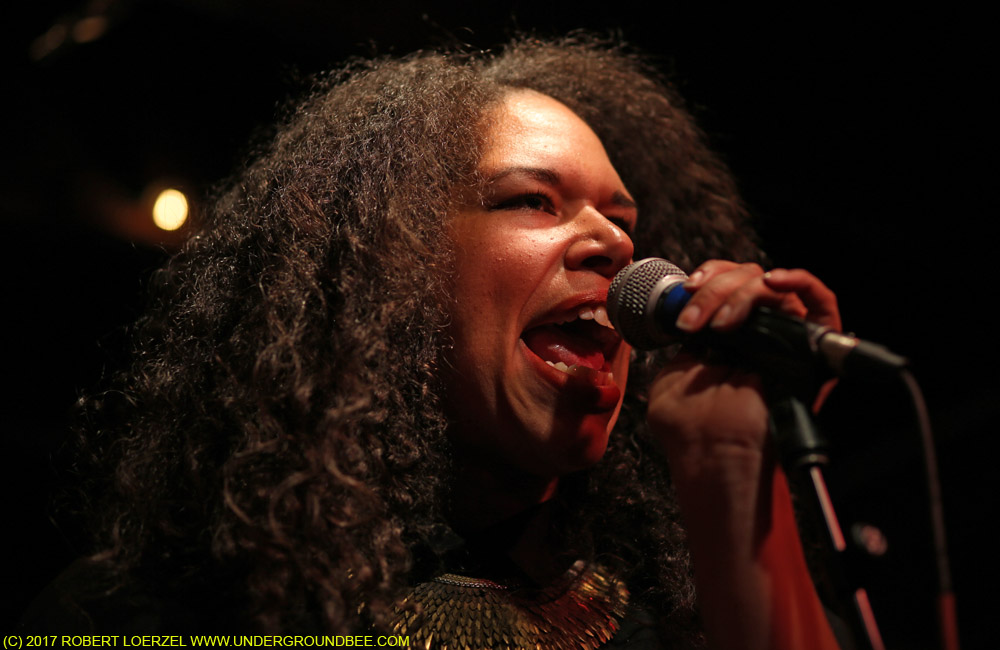
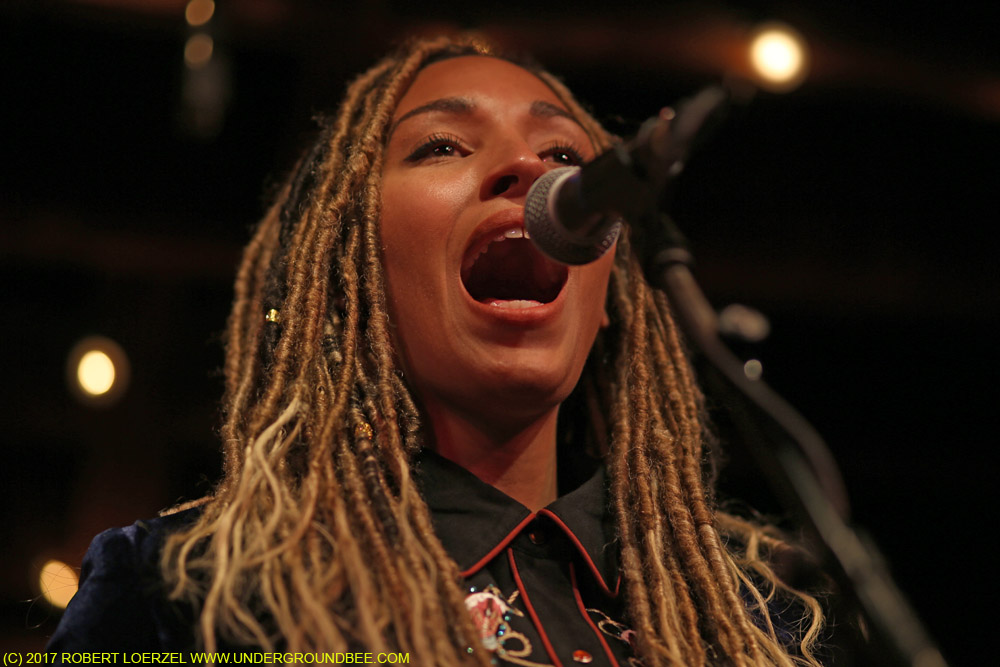
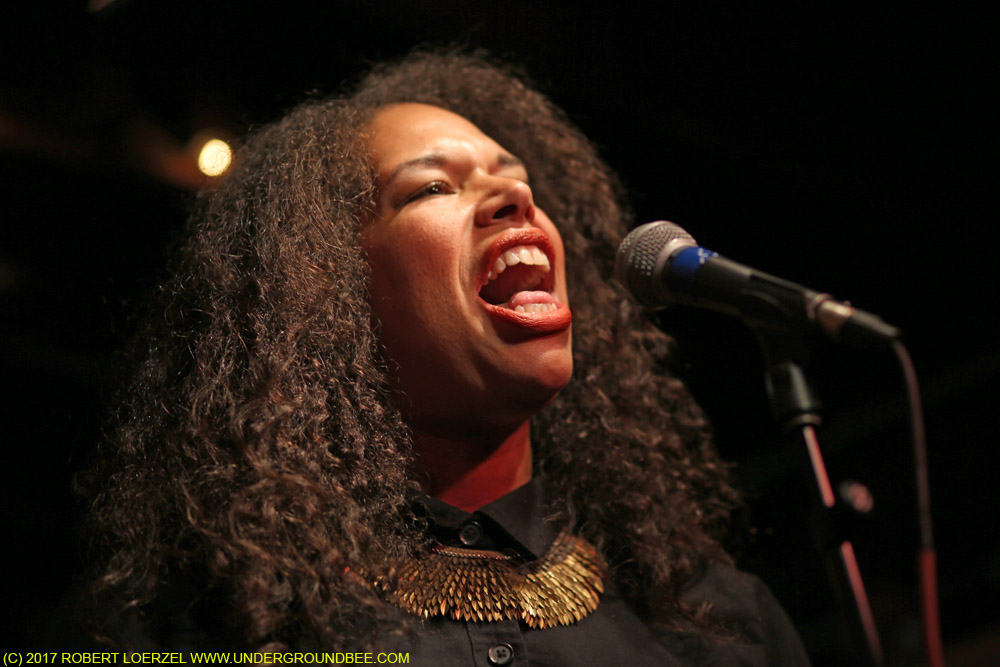
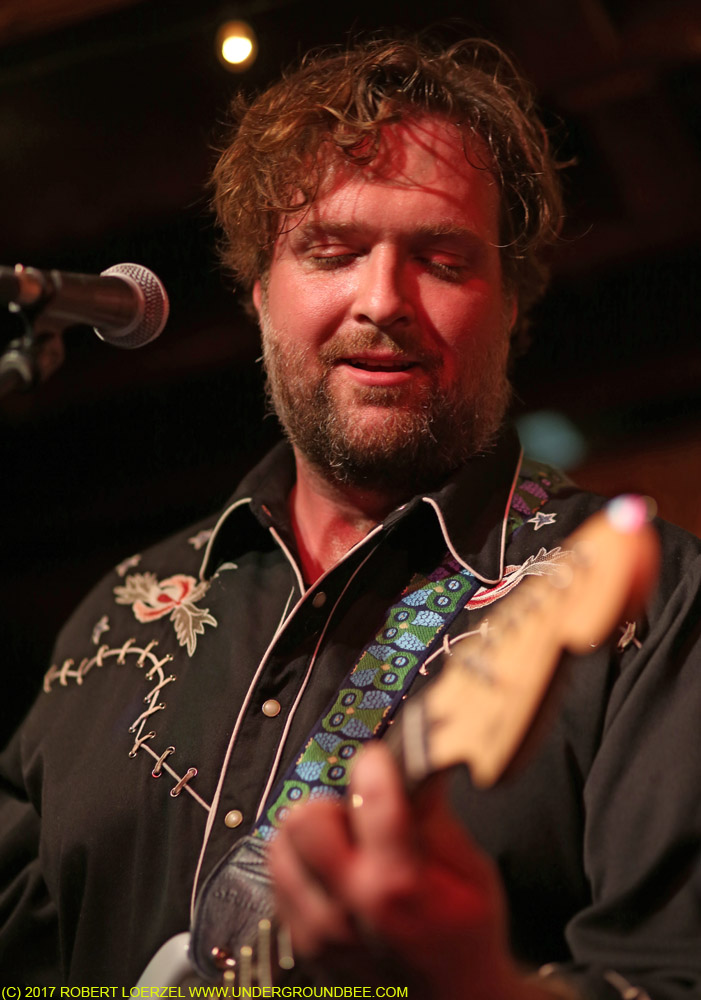
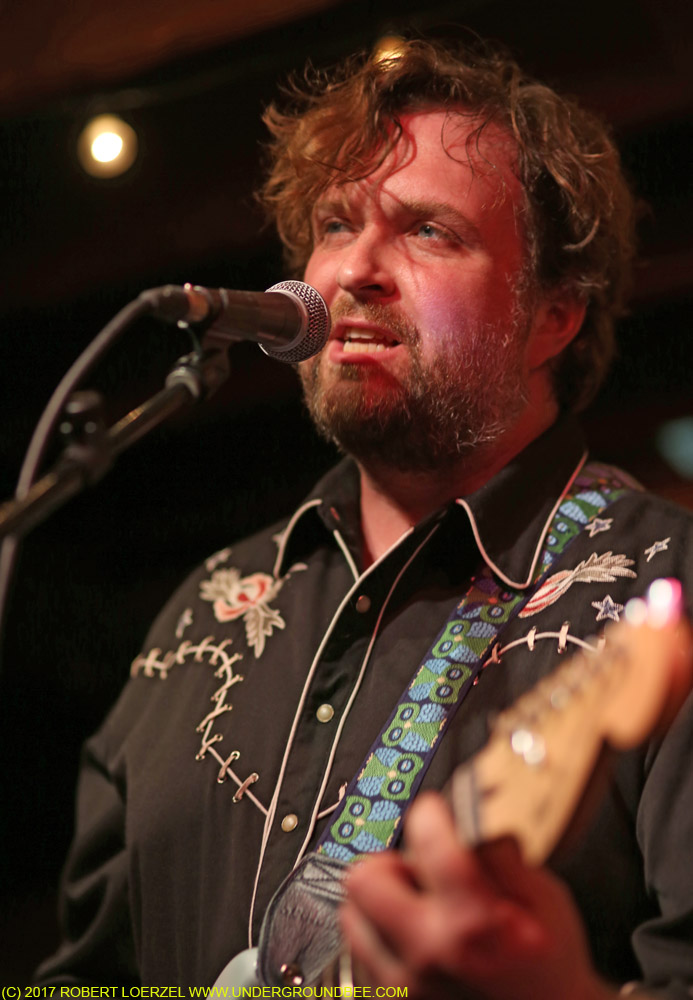
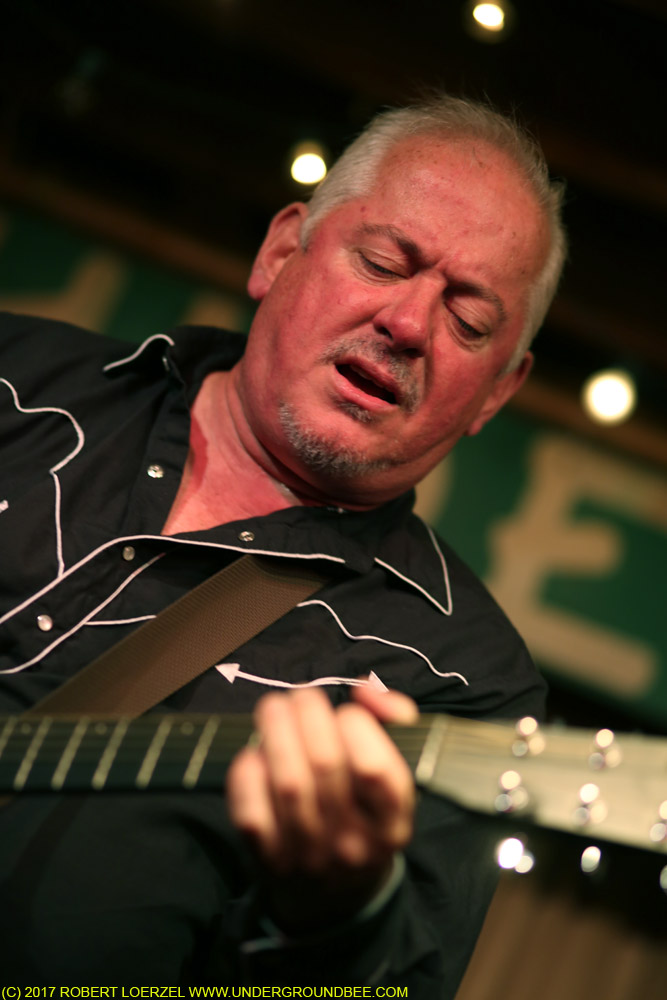
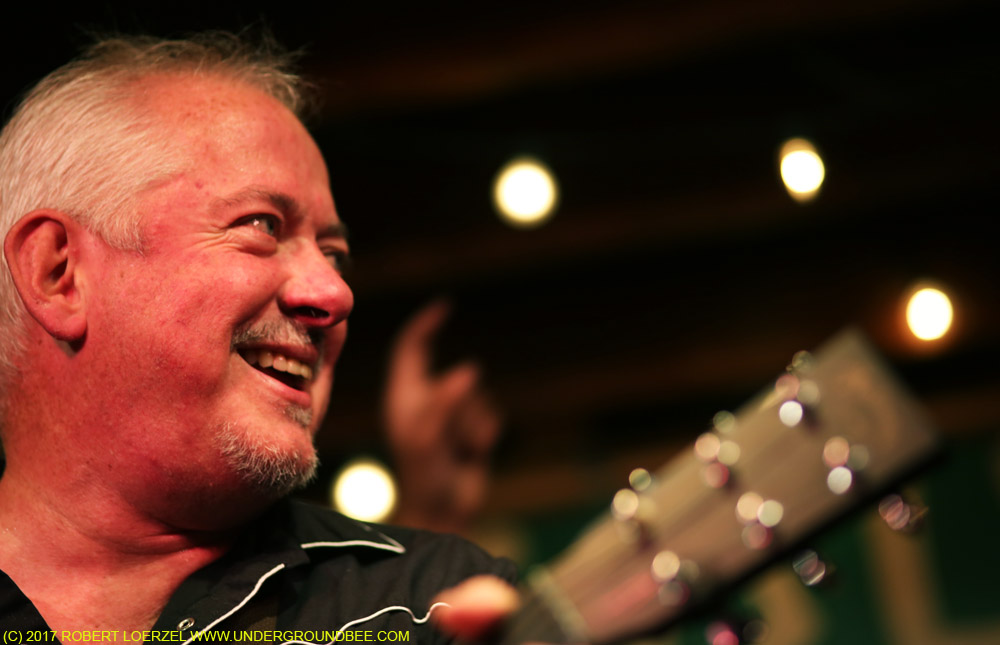
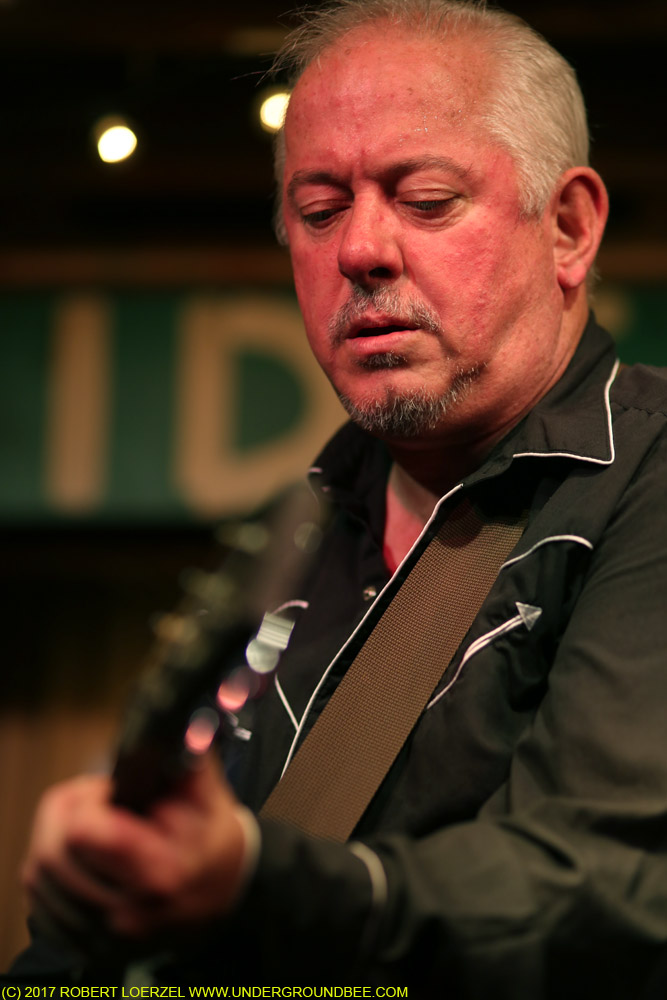
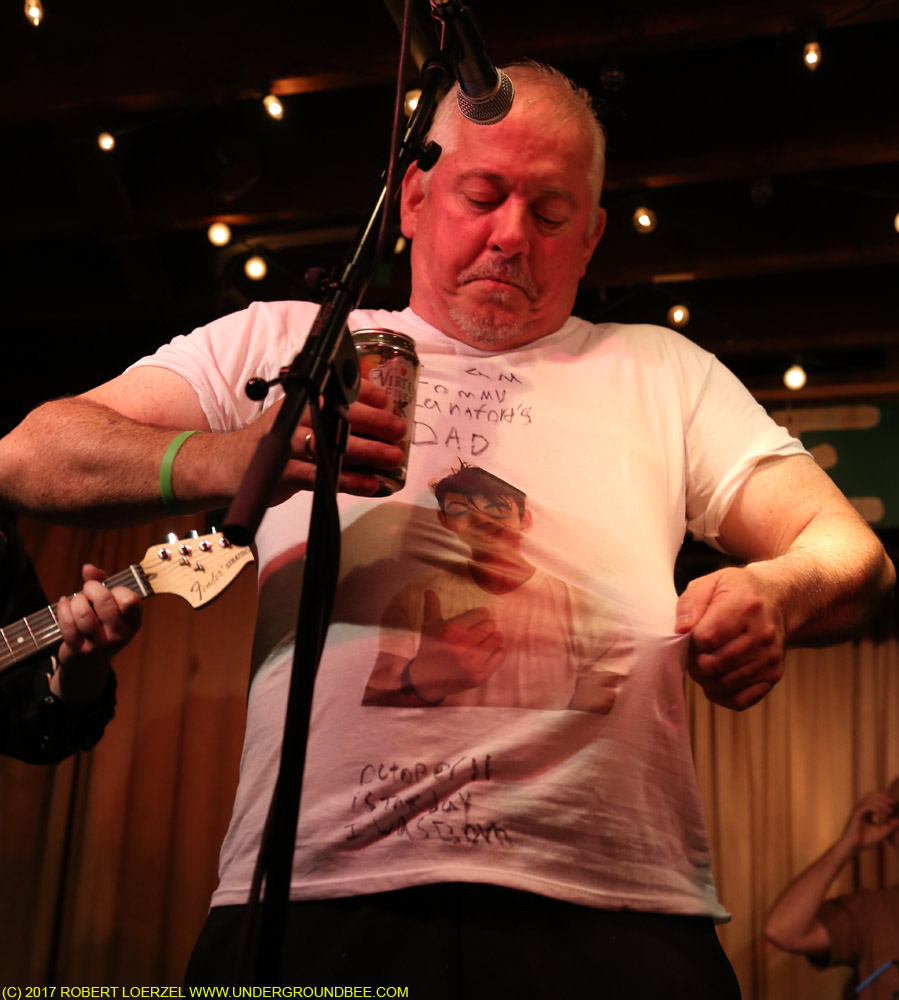
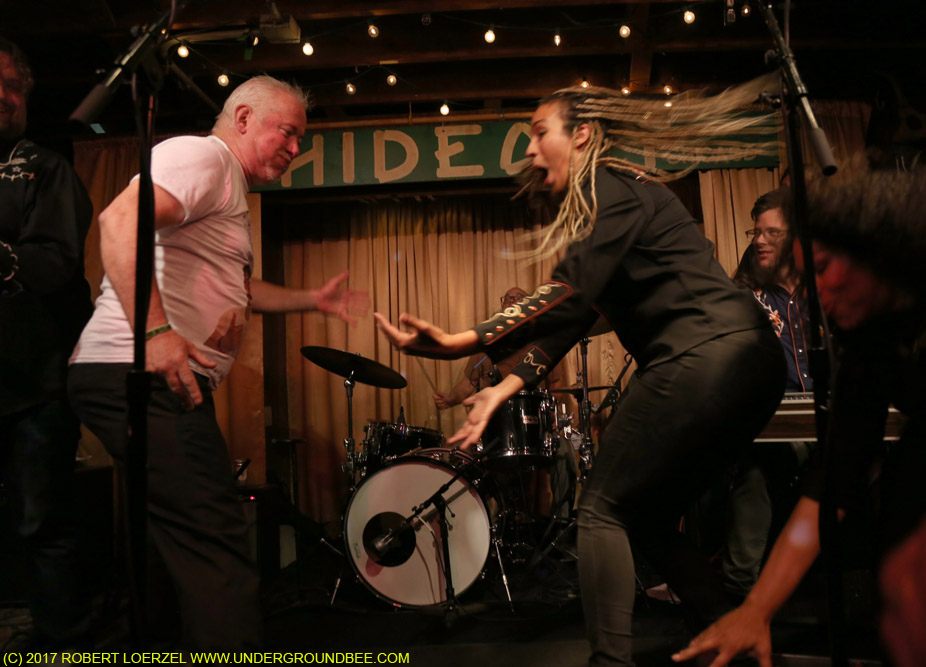
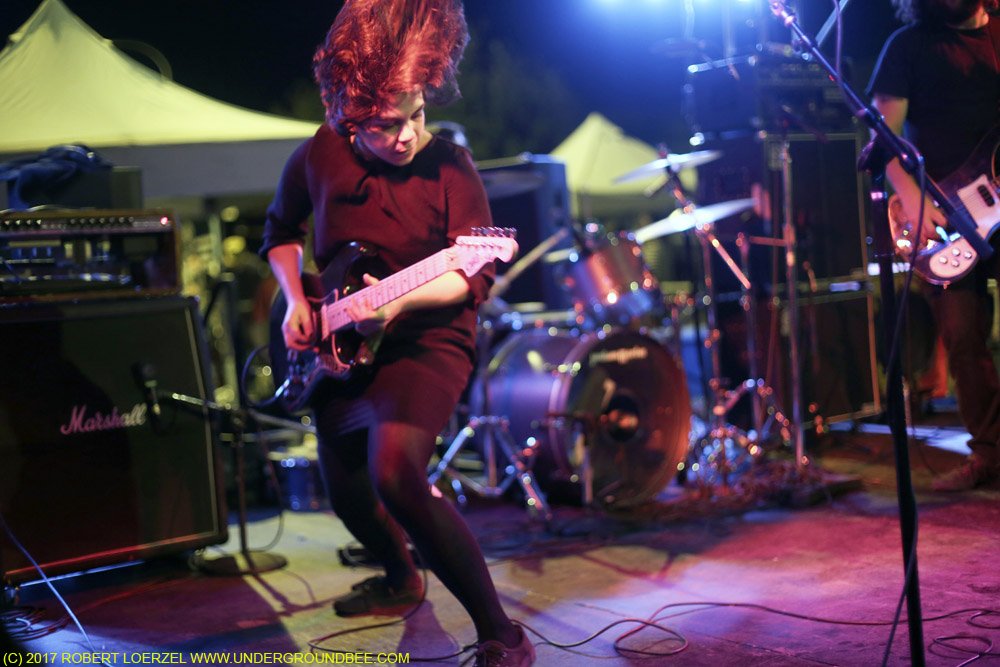
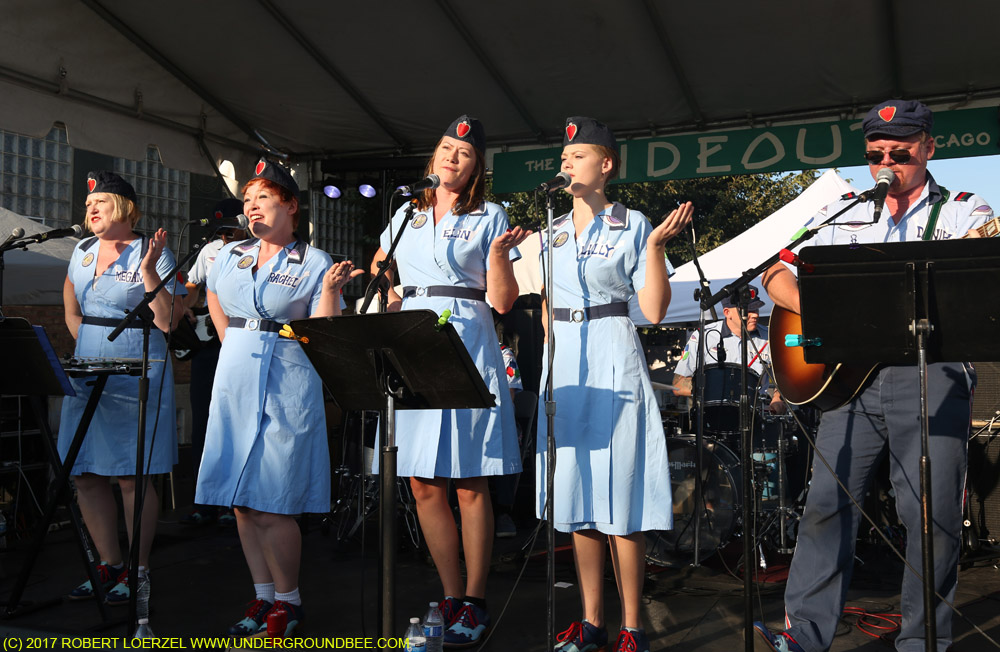
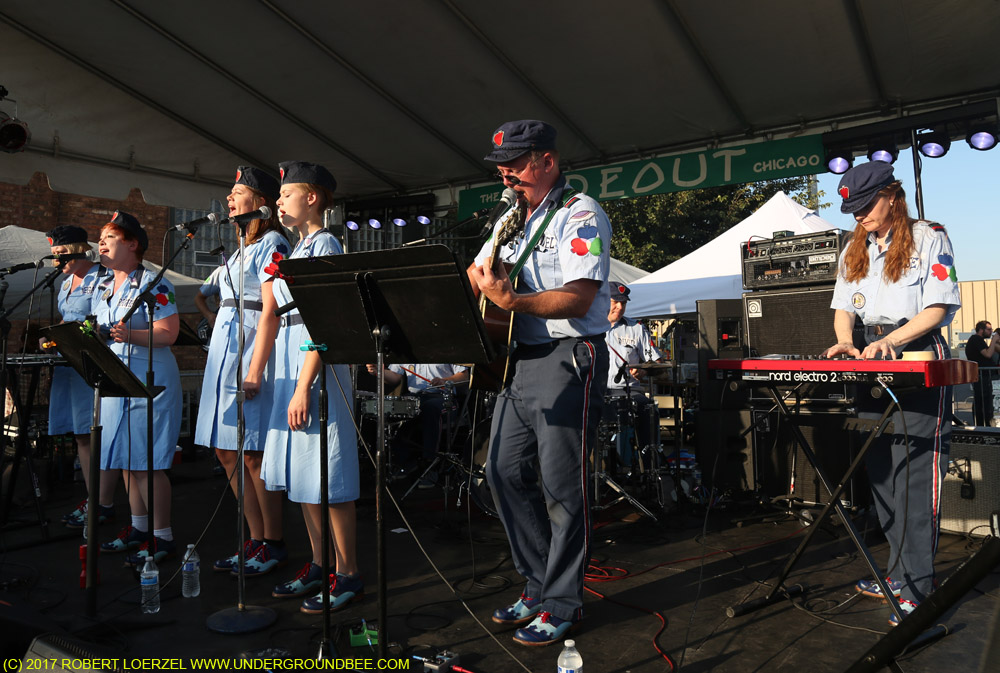
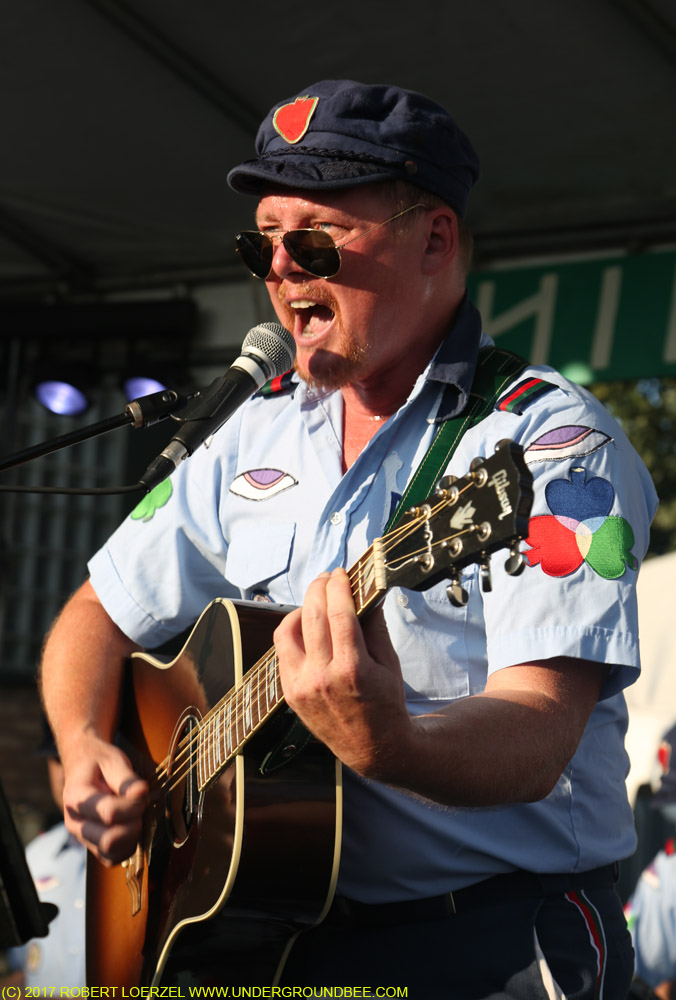
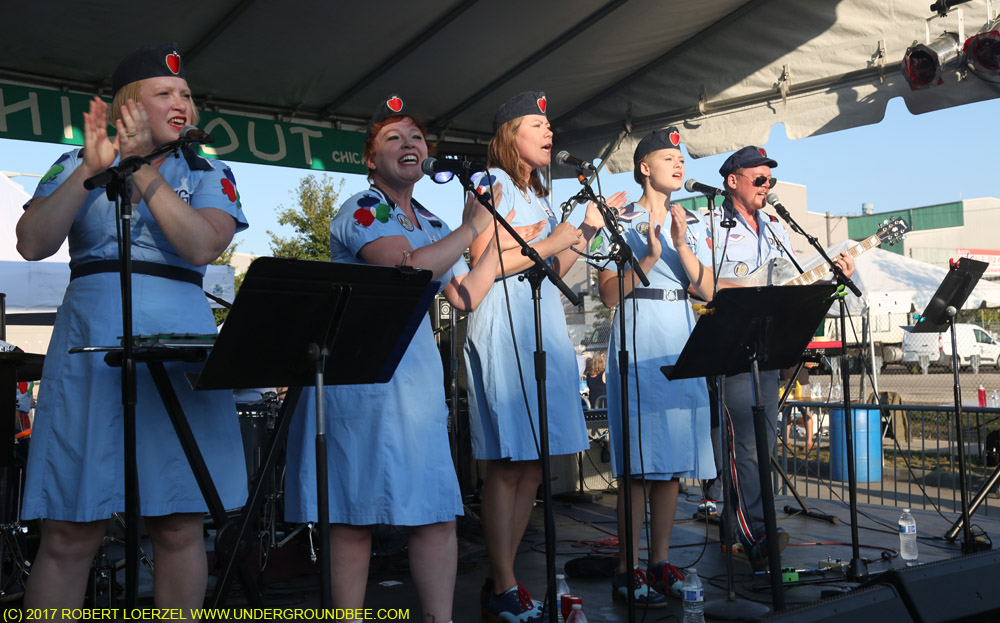
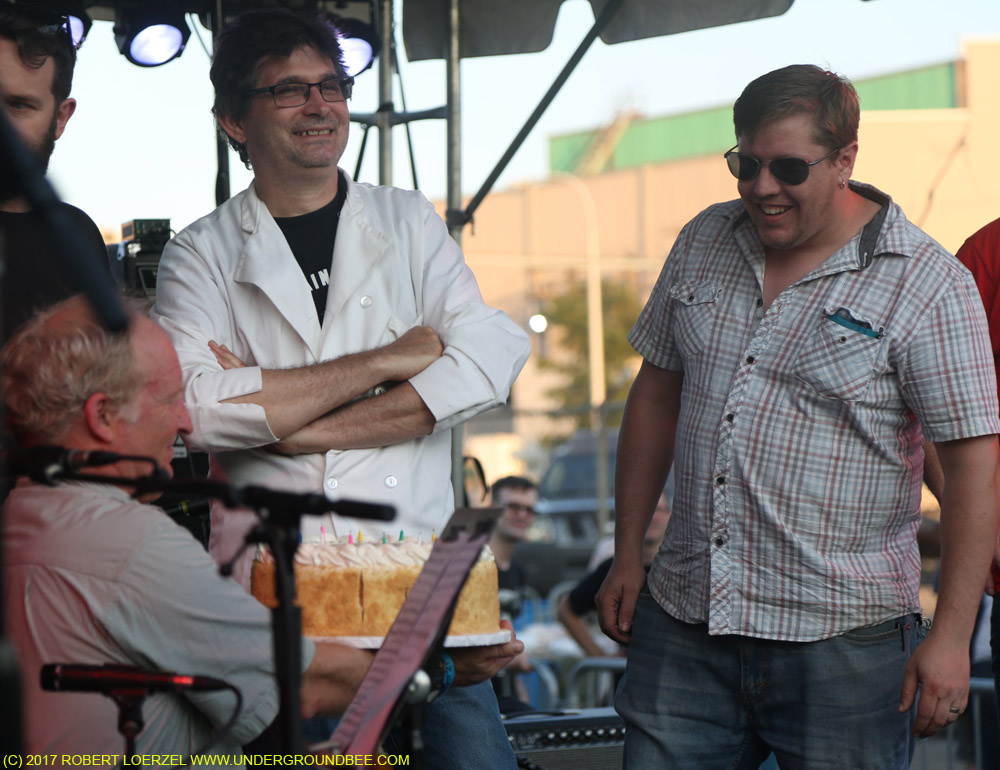 Nina Nastasia
Nina Nastasia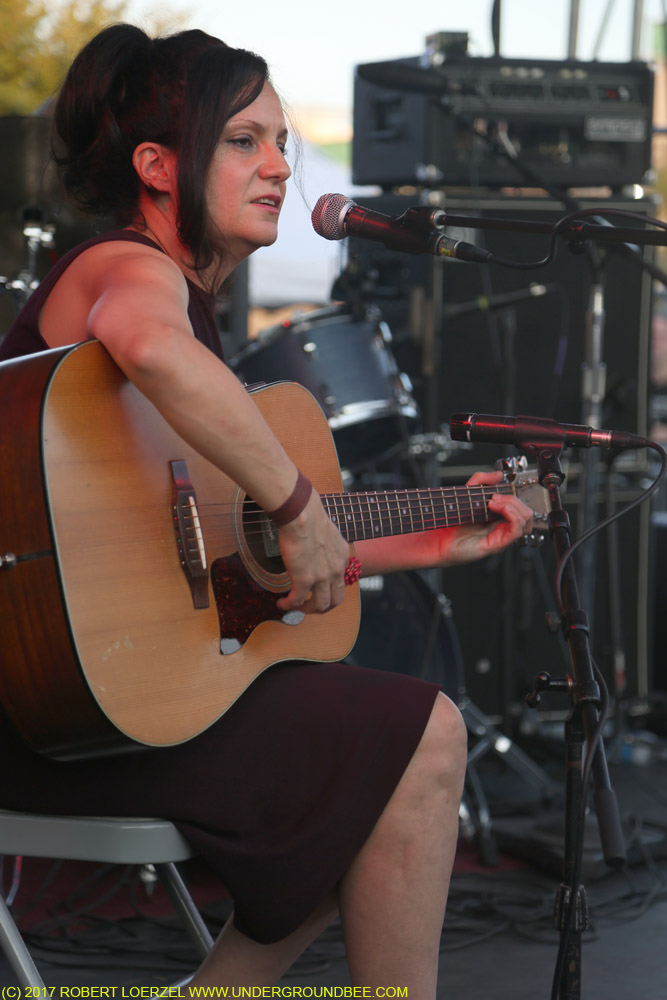
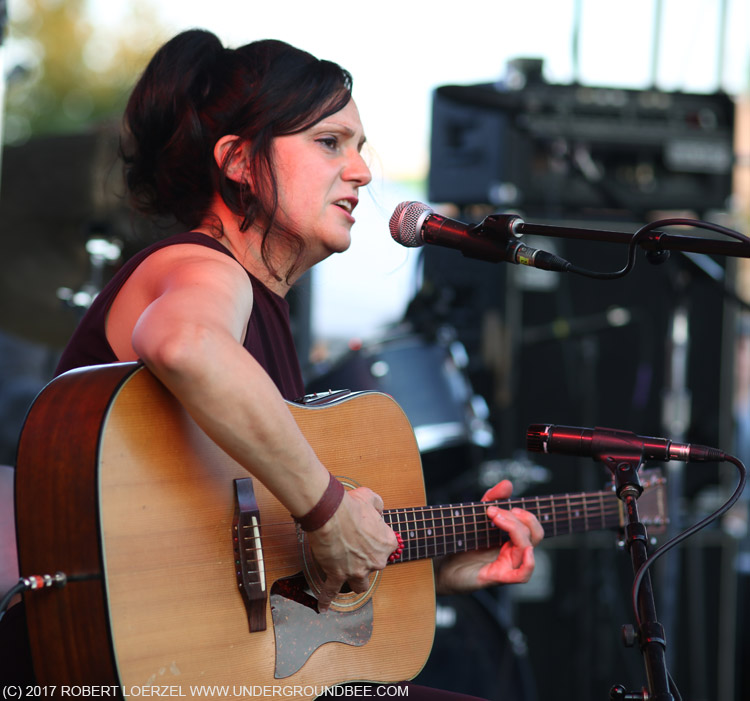
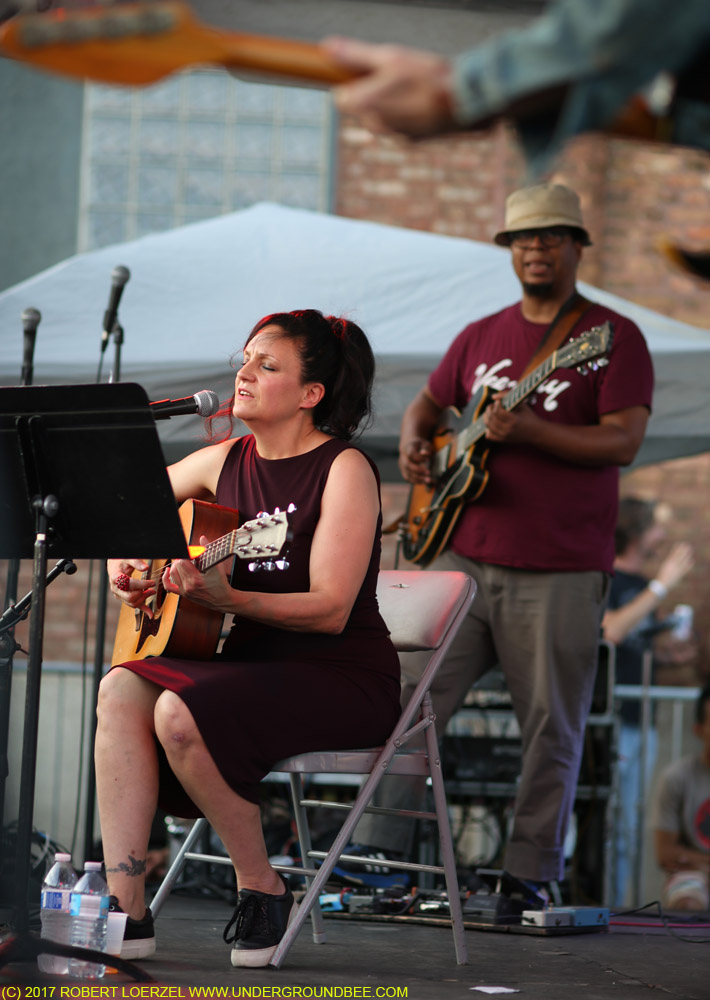
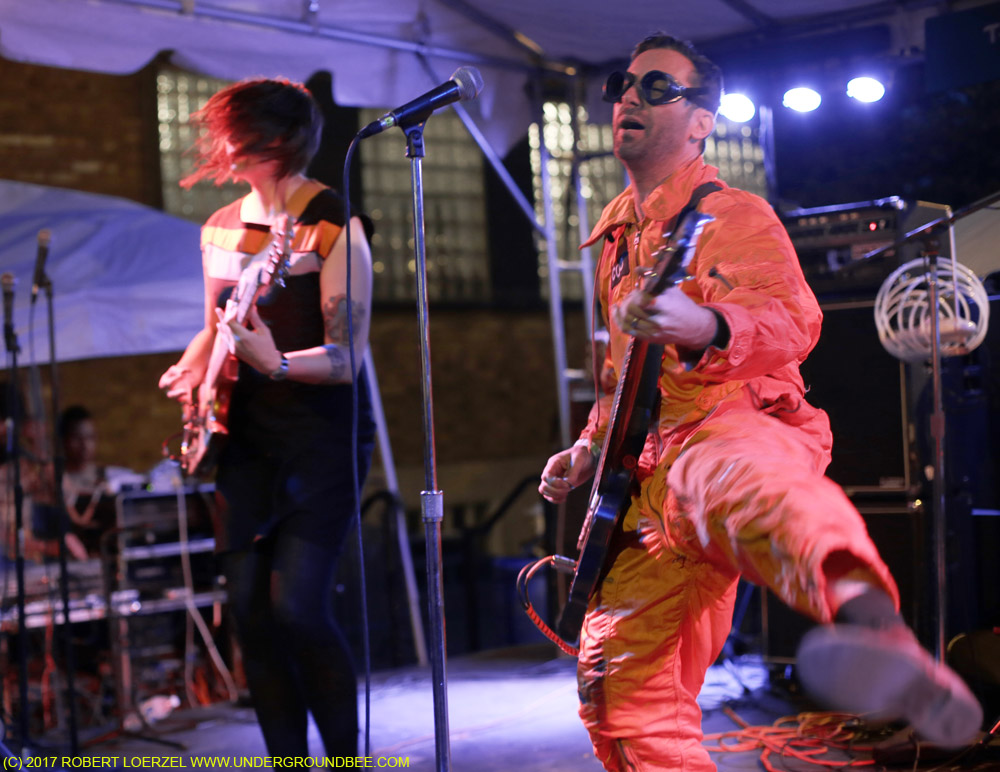
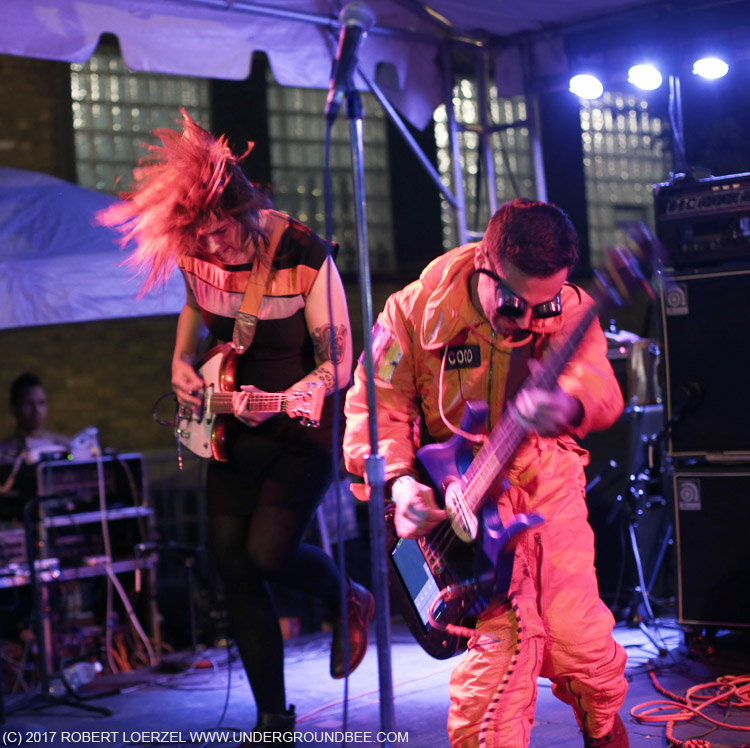
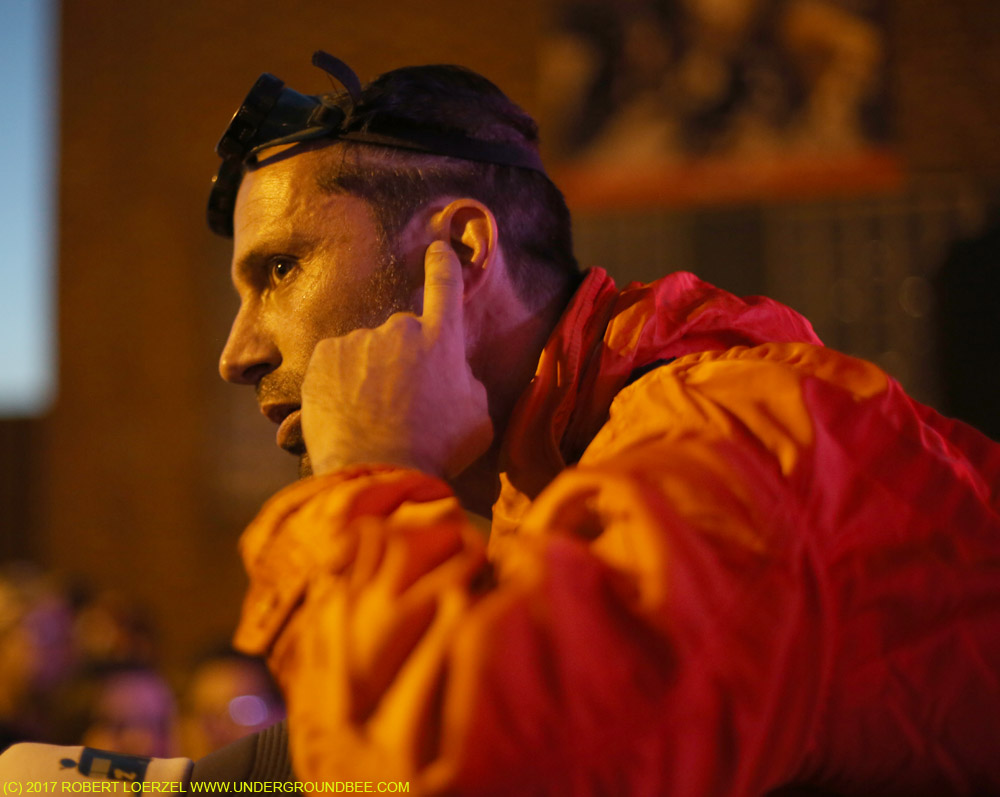
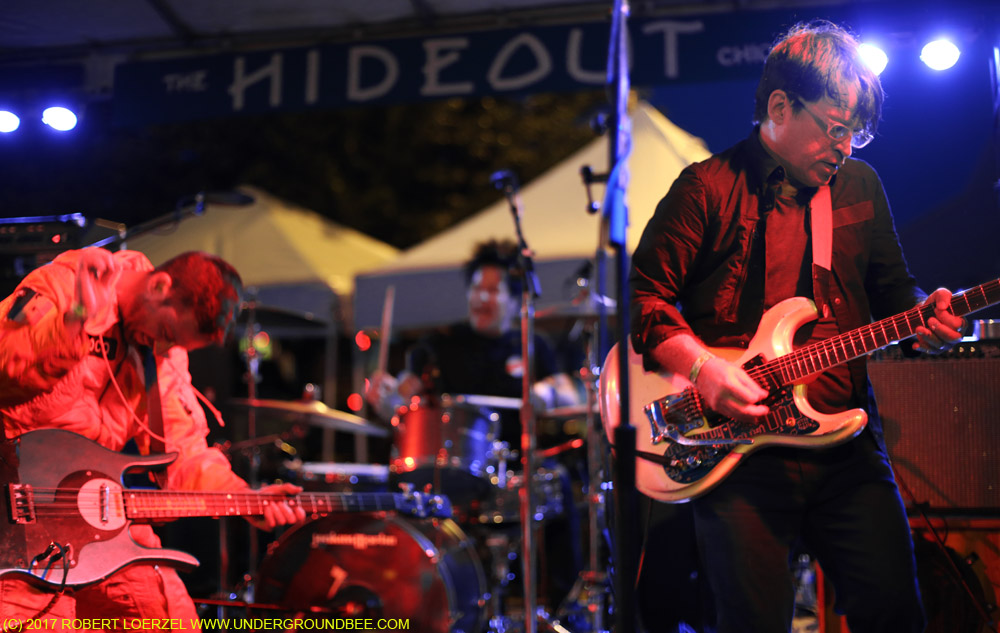
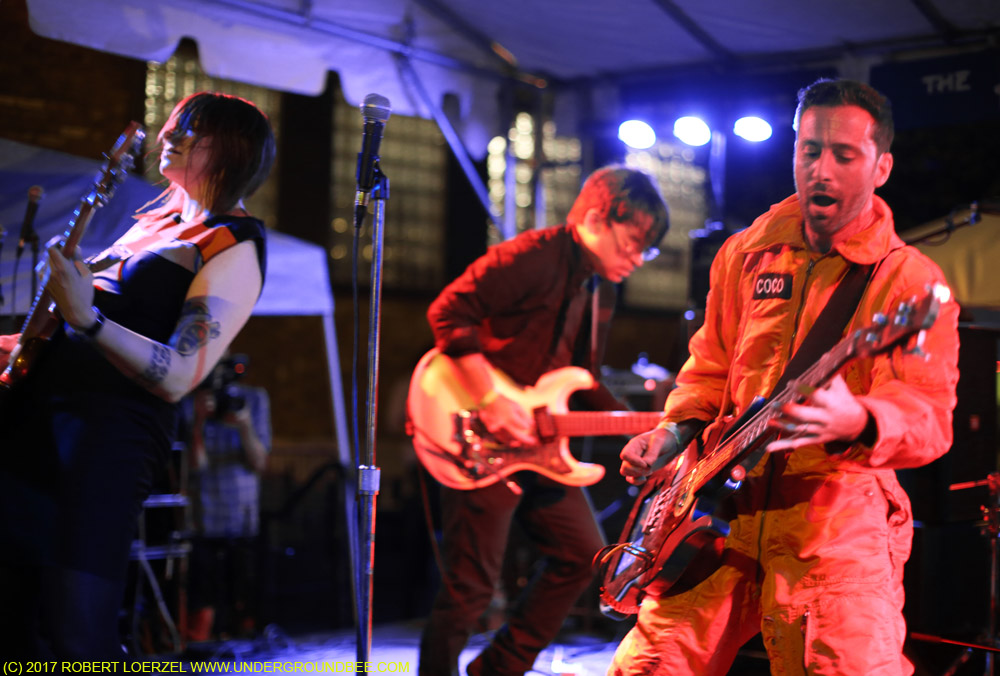
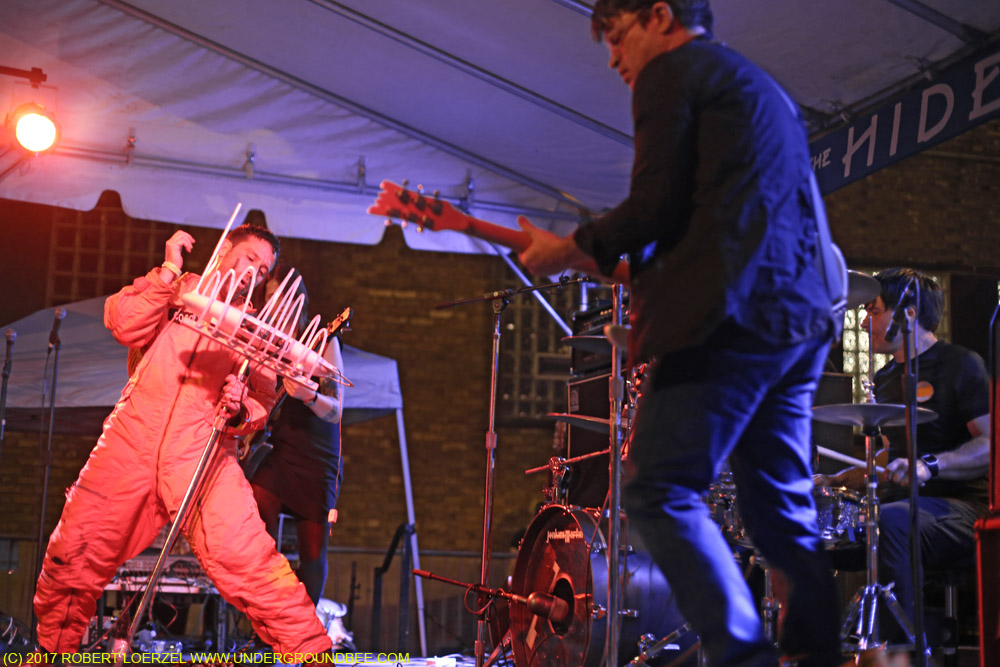
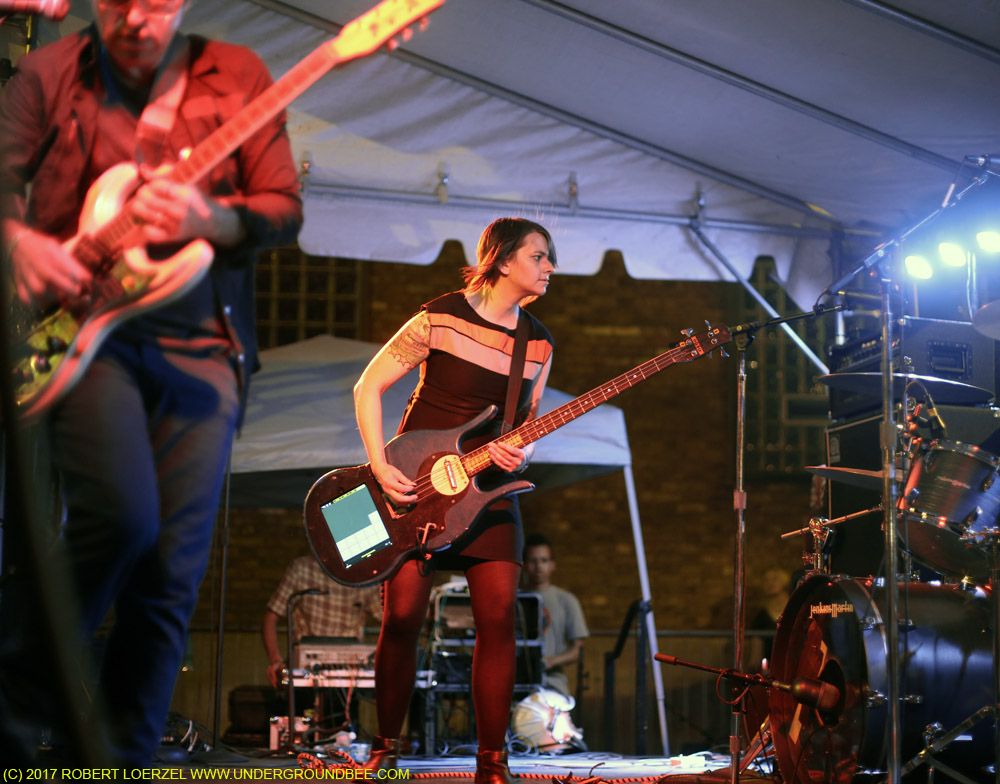 Screaming Females
Screaming Females